Bharat Ranbhoomi Darshan
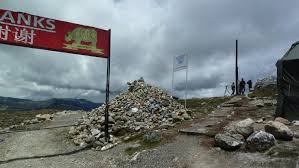
- 17 Jan 2025
In News:
The Bharat Ranbhoomi Darshan initiative, launched by Defence Minister coinciding with the 77th Army Day celebrations, is a collaborative effort between the Ministry of Defence and the Ministry of Tourism.
Key Highlights:
- This initiative is designed to promote battlefield and border tourism by providing citizens with access to historically significant battlefields and military sites.
Objectives
- Promote Battlefield and Border Tourism: Encourage citizens and tourists to explore India's military history.
- Enhance Awareness: Educate visitors about India’s historic battles and military valor.
- Socio-Economic Development: Boost infrastructure, connectivity, and local economies in border regions.
Features of Bharat Ranbhoomi Darshan
- Virtual Tours and Interactive Content: The platform offers historical narratives, virtual tours, and interactive multimedia to provide a detailed account of each battlefield.
- Travel Planning Assistance: Visitors can access information regarding permits, travel routes, and accommodations.
- Integration with the Incredible India Campaign: The initiative is part of the government’s broader tourism strategy, ensuring widespread promotion.
- Collaborative Infrastructure Development: The Indian Army is working with local civil authorities to facilitate safe tourism without compromising operational preparedness.
Key Locations Covered
- Galwan Valley (Ladakh): Site of the 2020 India-China clash.
- Doklam: A tri-junction between India, Bhutan, and China.
- Line of Control (LoC) and Line of Actual Control (LAC) Sites:
- Nathu La Pass (Sikkim): Significant in the 1967 Indo-China clashes.
- Longewala (Rajasthan): Site of a key battle during the 1971 Indo-Pak war.
- Other Sites: Locations of the 1962 war with China and various Indo-Pak conflicts.
Significance
- Historical and Patriotic Engagement: Provides citizens firsthand insights into the challenges faced by soldiers in remote, strategic locations.
- Tourism Development in Border Areas: Previously restricted areas now open for visitors, leading to economic benefits for local communities.
- National Security Awareness: Encourages greater appreciation of India's defense forces and their contributions.
Implementation
The first phase of the Bharat Ranbhoomi Darshan project includes key battlefields and border sites across seven major regions. Future phases will expand coverage to additional historical military locations.
Fast Track Immigration FTI-TTP

- 17 Jan 2025
In News:
The Government of India is launching the Fast Track Immigration Trusted Traveller Program (FTI-TTP) to streamline immigration at seven major airports.
Key Highlights:
- The initiative, inaugurated by Union Home Minister Amit Shah, aims to enhance the travel experience for Indian nationals and Overseas Citizen of India (OCI) cardholders.
- This comes seven months after the programme was first introduced at Indira Gandhi International (IGI) Airport, New Delhi. The airports included in this initial phase are: Mumbai, Chennai, Kolkata, Bengaluru, Hyderabad, Cochin and Ahmedabad
Objectives of FTI-TTP
- Provide seamless and secure immigration services.
- Reduce human intervention using automated e-gates.
- Align with the Viksit Bharat@2047 vision for modern infrastructure.
How the Programme Works
The FTI-TTP simplifies immigration with automated e-gates. Travellers must complete a one-time online registration to enroll. The process involves:
- Online Registration: Submit personal details and upload necessary documents via the official portal (https://ftittp.mha.gov.in).
- Biometric Submission: Fingerprints and facial images must be submitted at an airport or Foreigners Regional Registration Office (FRRO).
- Immigration Clearance via E-Gates:
- Passengers scan their boarding passes and passports at e-gates.
- Biometrics are automatically verified.
- Upon authentication, the e-gate opens, granting clearance.
Validity: Registration is valid for five years or until the registered passport expires, whichever comes first.
Who is Eligible?
The first phase of the FTI-TTP is open to:
- Indian nationals.
- OCI cardholders aged between 12 and 70 years.
- Children aged 12-18 can register using their parents’ email/phone number.
- ECR (Emigration Check Required) passport holders are not eligible.
Documents Required for Registration
- Passport-sized photograph (as per Indian passport specifications).
- Scanned copy of passport (front and back pages).
- Proof of current address.
- OCI card details (if applicable).
Key Points to Note
- Registration may take up to a month due to verification by field agencies.
- Applications with incorrect or outdated information may be rejected.
- In case of passport loss or expiry, travellers must reapply and submit fresh biometrics.
- Passports must have at least six months’ validity at the time of applying.
- For support, travellers can reach out via email at india.ftittp-boi@mha.gov.in.
Implementation Phases
The FTI-TTP will be implemented in two phases:
- Phase 1: Covers Indian citizens and OCI cardholders.
- Phase 2: Will extend to foreign travellers.
- The programme will be expanded to 21 major airports across the country.
Comparison with Similar Global Programmes
Several countries have implemented similar fast-track immigration systems:
United States: Global Entry
- Introduced in 2008.
- Offers self-service kiosks for pre-approved travellers.
- Requires background checks and in-person interviews.
United Kingdom: Registered Traveller Service
- Launched in 2015.
- Allows frequent visitors from select countries, including India, to use e-gates.
- Requires visa eligibility or multiple prior visits.
European Union: Smart Borders Initiative
- Implemented in 2016, with full deployment expected by 2024.
- Pre-registers biometric data for faster processing at Schengen Area borders.
Australia: SmartGate
- Started in 2007 for Australian and New Zealand passport holders.
- Uses automated kiosks for identity verification via passport scans and photos.
Saudi Arabia: Smart Travel System
- Launched in 2019.
- Uses automated e-gates for faster immigration clearance.
- Expanding as part of Vision 2030 to improve travel experience, particularly for Hajj pilgrims.
QS World Future Skills Index 2025
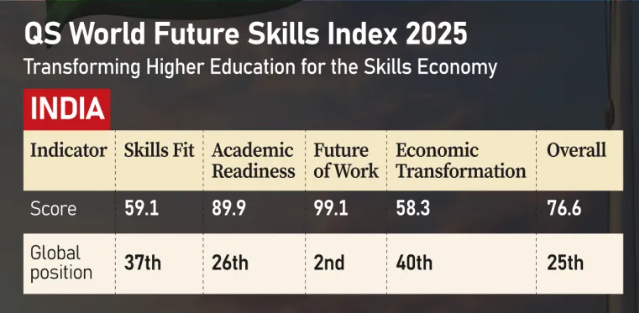
- 17 Jan 2025
In News:
The QS World Future Skills Index 2025, released by Quacquarelli Symonds (QS), evaluates countries' readiness to meet the evolving demands of the global job market. It assesses nations based on skill development, education, and economic transformation, highlighting their preparedness for emerging technologies, artificial intelligence (AI), and sustainability.
India’s Performance in the Index:
- Overall Ranking: India is ranked 25th globally, categorizing it as a “Future Skills Contender.”
- Future of Work Category: India ranked 2nd, only behind the United States, reflecting its preparedness for AI, digital, and green jobs.
- Economic Transformation: India scored 58.3, the lowest among the top 30 countries, reflecting challenges in innovation and sustainability.
- Skills Fit: India received a score of 59.1, the weakest among the top 30 nations, indicating a gap between workforce skills and industry requirements.
- Academic Readiness: India’s education system is struggling to keep pace with employer demands, necessitating curriculum reforms and stronger academia-industry collaboration.
Key Findings from the Report:
Strengths:
- Digital Readiness: India has demonstrated strong capabilities in integrating digital talent into the workforce.
- Youth Advantage: A large, young population provides a demographic dividend for sustained economic growth.
- Startup Ecosystem: India’s startup culture and government initiatives support technological advancement and innovation.
Weaknesses:
- Higher Education-Industry Gap: Mismatch between education and employer requirements, particularly in AI, green skills, and entrepreneurship.
- Limited R&D Investment: India’s research and development spending is 0.6% of GDP, far below the global average of 2.7%.
- Low Innovation in Sustainability: India scored 15.6 out of 100, ranking poorly in future-oriented innovation for sustainability.
Challenges and Concerns:
- Skilled Workforce Shortage: The National Skill Development Corporation (NSDC) estimates a 29 million skilled workforce gap in critical sectors such as healthcare, semiconductor manufacturing, and AI.
- Low Employability Rates: Only 25% of management professionals, 20% of engineers, and 10% of graduates meet global employability standards.
- Higher Education Accessibility: Many students face difficulties in accessing quality tertiary education, particularly in skill-intensive fields.
Opportunities for Growth:
- Leverage Demographic Dividend: India can capitalize on its young workforce to dominate skill-based industries while other nations struggle with aging populations.
- Policy Support:
- National Education Policy (NEP) 2020: Focuses on modular education and reskilling initiatives.
- ULLAS Program: Aims to expand lifelong learning and skill development.
- Technological Integration: Advancements in AI and digital learning can help modernize academic curricula and improve job readiness.
Recommendations for Improvement:
- Enhancing Academia-Industry Collaboration: Universities should prioritize problem-solving, entrepreneurship, and creativity to align education with employer needs.
- Increasing R&D Investment: Raising spending on research and development to promote innovation and sustainability.
- Expanding Access to Education: Bridging regional disparities in tertiary education through flexible and modular learning.
- Strengthening Policy Implementation: Ensuring effective execution of skilling programs to reduce the workforce-employability gap.
Eighth Pay Commission
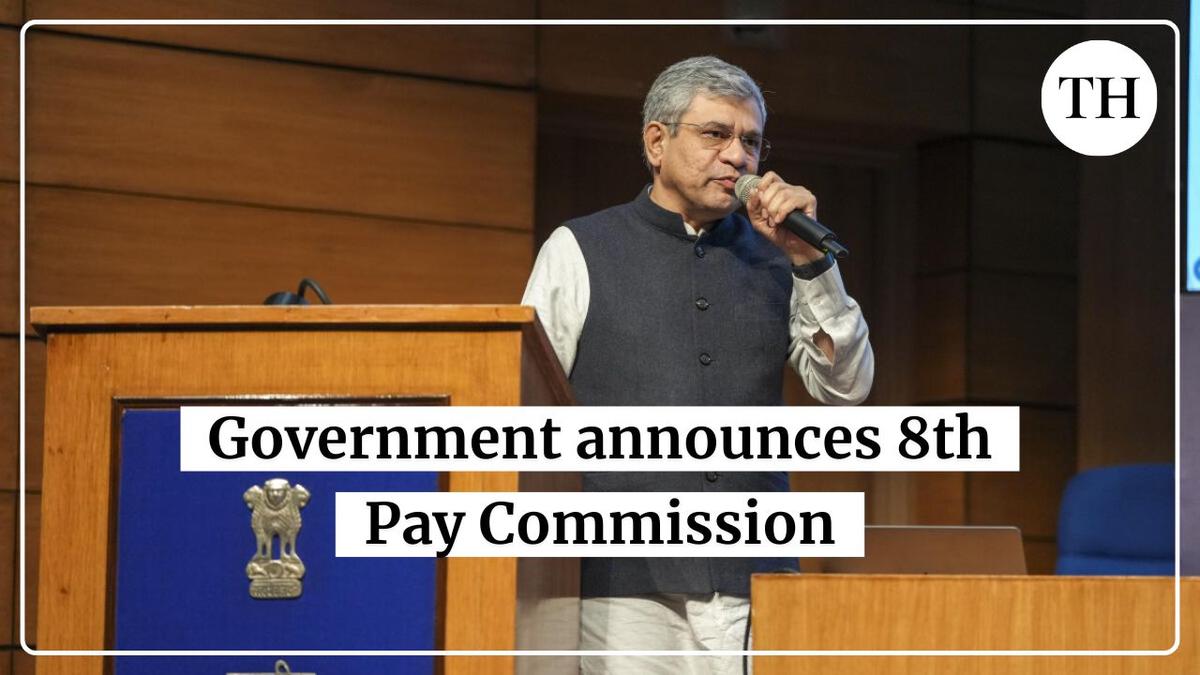
- 17 Jan 2025
In News:
The Union government has approved the constitution of the Eighth Pay Commission, benefiting 50 lakh central government employees and 65 lakh pensioners, including serving and retired defence personnel. The decision, taken ahead of the Delhi Assembly elections, aims to address long-standing demands from trade unions and employee organizations.
Key Features of the 8th Pay Commission
- Early Constitution: Although the Seventh Pay Commission's term ends in 2026, the early establishment of the Eighth Pay Commission ensures timely recommendations and implementation.
- Composition: The commission will have a Chairperson and two members, typically led by a retired Supreme Court judge.
- Terms of Reference (ToR):
- Revision of Pay: Recommend updates to salary structures and allowances.
- Addressing Pay Disparities: Resolve wage differences across various cadres.
- Market Parity: Align pay structures with industry standards.
- Pension and Retirement Benefits: Improve pension schemes and adjust them for inflation.
- Economic Impact Analysis: Assess how salary hikes contribute to economic growth.
- Stakeholder Consultations: Engage with governments and other stakeholders before finalizing recommendations.
Economic Implications of the 8th Pay Commission
- Employee Well-being: Higher wages will enhance the quality of life for government employees.
- Boost to Consumption: Increased salaries are expected to stimulate demand and support economic expansion.
- Ripple Effect on PSUs & States: Many public sector undertakings and state governments follow the central pay commission’s recommendations, potentially leading to wider economic benefits.
- Fiscal Considerations: The implementation of the Seventh Pay Commission in 2016-17 led to an expenditure increase of ?1 lakh crore. A similar rise in 2026-27 could impact fiscal space for capital expenditures.
Challenges and Concerns
- Implementation Delays: Past commissions have taken two years to submit recommendations, which could push implementation beyond 2027.
- Living Wage & Pension Issues: Existing formulas for minimum wage and pension calculations may need revision to reflect rising healthcare, education, and digital access costs.
- Financial Burden on the Exchequer: A significant increase in revenue expenditure could limit the government’s ability to invest in infrastructure and development projects.
Global Economic Prospects (GEP) Report 2025
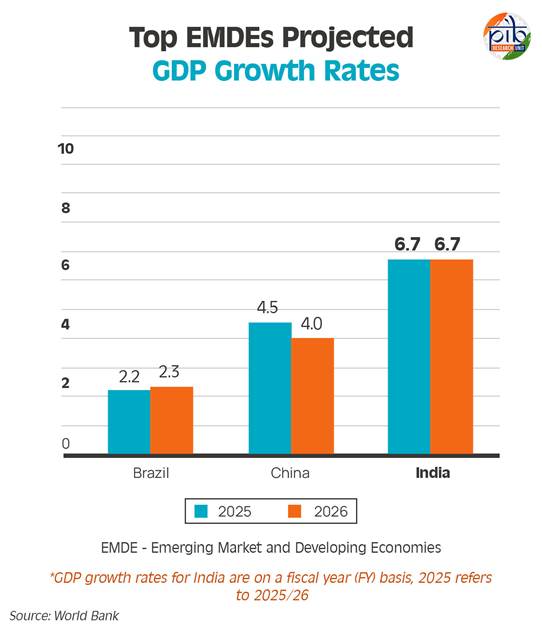
- 17 Jan 2025
In News:
The World Bank has released its Global Economic Prospects (GEP) report for 2025, a flagship biannual publication analyzing trends and projections in the global economy, with a focus on emerging markets and developing economies (EMDEs). The report highlights economic growth forecasts, trade dynamics, and the challenges and opportunities shaping the global economic landscape.
Global Economic Outlook
- The world economy is projected to expand at a steady yet subdued rate of 2.7% in both 2025 and 2026, maintaining the pace of 2024.
- Inflation, which peaked above 8% in recent years, is expected to stabilize at an average rate of 2.7% in 2025 and 2026, aligning with central bank targets.
- Despite growth, the global economy remains 0.4 percentage points below the 2010-2019 average, raising concerns about its ability to tackle poverty effectively.
Challenges and Risks
- Trade Restrictions: New trade restrictions imposed in 2024 were five times higher than the 2010-19 average, contributing to a slowdown in global trade and economic growth.
- Rising Protectionism: Increased fragmentation in global trade policies is limiting exports and hampering economic integration.
- Policy Uncertainty: Adverse policy shifts, sluggish progress in reducing inflation, and weaker performance in major economies pose downside risks to global recovery.
- Debt and Investment Concerns: Developing economies are experiencing sluggish investment growth and high debt levels, exacerbated by climate change-related costs.
Emerging Markets and Developing Economies (EMDEs)
- EMDEs have significantly evolved since 2000, now contributing about 45% of global GDP, compared to 25% at the start of the century.
- The three largest EMDEs—India, China, and Brazil—have accounted for approximately 60% of annual global growth over the past two decades.
- Growth in low- and middle-income developing countries is expected at 4.1% in 2025 and 4% in 2026, with a notable slowdown compared to the early 2000s.
- Low-income countries are projected to rebound to 5.7% in 2025 and 5.9% in 2026, aided by easing conflicts in some regions.
- The world's poorest nations, with annual per capita incomes below USD 1,145, recorded growth of 3.6% in 2024, impacted by conflicts in regions like Gaza and Sudan, alongside lingering effects of COVID-19 and geopolitical tensions.
India-Specific Highlights
- Fastest-Growing Major Economy: India is expected to maintain its position as the world’s fastest-growing major economy, with a projected growth rate of 6.7% in both 2025 and 2026.
- Sectoral Growth: The services sector will remain robust, while manufacturing activity is expected to strengthen.
- Investment Growth: Supported by rising private investment, improved corporate balance sheets, and favorable financing conditions, investment growth in India is expected to remain steady.
- Key Growth Drivers:
- Infrastructure development under the PM GatiShakti National Master Plan.
- Innovation-driven initiatives like Startup India and the Production Linked Incentive (PLI) Scheme.
- Expansion of the digital economy and financial inclusion efforts.
- Rural Demand and Consumption: Growth in rural demand and a recovery in farm production have bolstered consumer spending, although urban consumption remains affected by inflation and slow credit growth.
Human Papillomavirus (HPV)
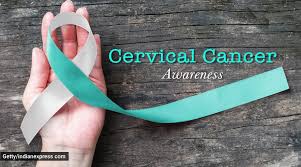
- 16 Jan 2025
In News:
January is Cervical Cancer Awareness Month, and the focus on this month underscores the critical importance of preventing cervical cancer, a disease responsible for significant mortality among women in India. At the heart of this prevention is the Human Papillomavirus (HPV) vaccine, which is recognized as the most effective measure to prevent cervical cancer and other HPV-related cancers. Despite its potential, the HPV vaccine remains out of reach for many due to its high cost and the need for greater awareness.
HPV and its Impact in India
HPV is responsible for 99.7% of cervical cancers worldwide, making it one of the primary causes of cancer in women. In India, cervical cancer is the third most common cancer among women, accounting for about 6-29% of all cancers in women. As of GLOBOCAN 2020, India alone has 20% of the global burden of cervical cancer, with over 123,000 cases and a 9.1% mortality rate.
Additionally, HPV can lead to several other cancers, including anal, vulvar, vaginal, penile, and throat cancers, making its vaccination vital for overall cancer prevention.
The HPV Vaccine: A Game-Changer
The HPV vaccine is the most effective tool to prevent infections caused by the virus and reduce the incidence of associated cancers. The vaccine works by stimulating the immune system to produce antibodies that neutralize the virus before it can cause damage. There are different types of vaccines authorized in India, including:
- Gardasil (protects against HPV types 6, 11, 16, and 18)
- Cervarix (a bivalent vaccine targeting HPV 16 and 18)
- Cervavac (India's first HPV vaccine, developed by the Serum Institute of India)
The vaccine is recommended for both males and females between 9 and 26 years, with a special focus on children aged 12 to 13 years, as the vaccine is most effective when administered before exposure to the virus. It’s also suitable for people who are immunocompromised or HIV-infected.
Challenges to HPV Vaccination in India
Despite the obvious benefits, the uptake of the HPV vaccine in India faces several barriers:
- High Costs: The price of the vaccine remains prohibitively high. For example:
- Gardasil 9 costs ?10,850 per dose.
- Gardasil 4 is priced between ?2,000 to ?4,000 per dose.
- Cervavac, the Indian-made vaccine, costs around ?2,000 per dose, which is more affordable but still out of reach for many.
- Awareness and Cultural Perceptions: There is a lack of awareness about HPV and its link to cervical cancer. Cultural factors, particularly around reproductive health, can also create reluctance to vaccinate, especially in rural or conservative areas.
- Limited Access: Currently, the vaccine is available through private practitioners and is not part of the National Immunisation Programme (NIP), limiting access to the broader population.
The Way Forward: National Immunisation and Awareness Campaigns
The National Technical Advisory Group on Immunisation (NTAGI) has recommended that the HPV vaccine be included in India’s National Immunisation Programme (NIP). This would enable broader access and affordability, especially for girls aged 9–14 years and ensure that a routine vaccination schedule is implemented at the age of 9 years. Some states like Punjab and Sikkim have already taken steps to introduce the vaccine in their state-level immunization programs.
Additionally, a nationwide HPV vaccination campaign could raise awareness about the vaccine and its benefits, helping to overcome the challenges of cost, safety concerns, and cultural perceptions. Regular cervical cancer screenings (such as Pap smears and HPV tests) should also be encouraged to identify precancerous changes early.
Cabinet Approves Establishment of ‘Third Launch Pad’ at ISRO's Sriharikota Facility
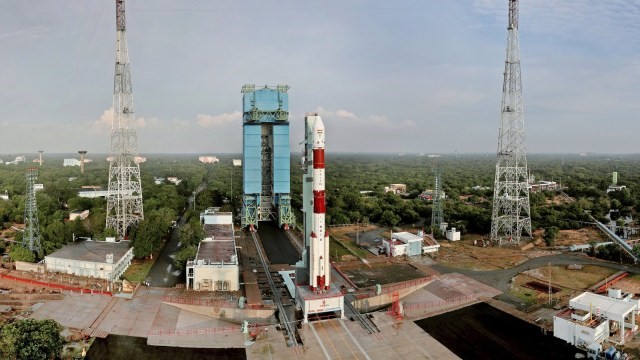
- 16 Jan 2025
In News:
The Union Cabinet, has approved the establishment of a Third Launch Pad (TLP) at the Satish Dhawan Space Centre (SDSC), located at Sriharikota, Andhra Pradesh. This project marks a significant step in enhancing India’s space capabilities and will support the Next Generation Launch Vehicles (NGLV) for ISRO’s evolving space exploration programs.
Key Features of the Third Launch Pad
The TLP will be built with an adaptable design, capable of supporting NGLV and LVM3 vehicles with semi-cryogenic propulsion. The launch pad will also serve as a standby for the Second Launch Pad (SLP) at Sriharikota. This addition will help ISRO meet its growing launch capacity needs, particularly for future human spaceflight missions and space exploration projects. It will facilitate higher launch frequencies, thus boosting the Indian space ecosystem.
Implementation Strategy and Timeline
The Third Launch Pad is planned to be developed within 48 months (4 years), with the total cost pegged at ?3984.86 Crore. The development will involve maximized industry participation and will utilize existing infrastructure at the launch complex. The project will also leverage ISRO’s experience gained from establishing the earlier launch pads.
The Importance of the Third Launch Pad
The TLP is designed to support the Next Generation Launch Vehicles (NGLV), a key part of ISRO’s vision for space exploration. The facility will not only accommodate heavier vehicles but will also ensure standby capacity for the Second Launch Pad (SLP). Its strategic location at Sriharikota ensures several advantages:
- Proximity to the Equator: This offers a substantial increase in payload capacity due to the additional push provided by the Earth's rotation.
- Safety and Accessibility: The site is free from major international maritime or airline routes, ensuring a safe flight path.
- Geographical Advantage: The launch pad is situated on the eastern coast, enabling launches in an easterly direction, maximizing the benefits of Earth’s rotational speed.
Future Plans for Indian Space Exploration
The establishment of the Third Launch Pad is crucial for the expanded vision of India’s space program, particularly in line with the Amrit Kaal period. ISRO aims to achieve ambitious milestones, such as the Bharatiya Antariksh Station (BAS) by 2035 and an Indian Crewed Lunar Landing by 2040. The NGLV will play a pivotal role in these plans, with features like:
- A three-stage vehicle and reusable first stage.
- Semi-cryogenic propulsion, using refined kerosene and liquid oxygen, which will increase payload capacity by three times at 1.5 times the cost of current vehicles.
The Role of Sriharikota in India’s Space Program
Sriharikota, the hub of ISRO’s launch operations, has been integral to India’s space exploration. Currently, the Indian Space Transportation Systems rely on two operational launch pads:
- First Launch Pad (FLP): Established over 30 years ago for PSLV and SSLV missions, FLP continues to support Polar Satellite Launch Vehicle (PSLV) and Small Satellite Launch Vehicle (SSLV) launches.
- Second Launch Pad (SLP): Built primarily for GSLV and LVM3 vehicles, SLP also serves as a standby for PSLV. Over its 20 years of operation, SLP has supported several national missions, including Chandrayaan-3, and is preparing for the Gaganyaan missions.
Does ‘Blood Money’ Have a Legal Standing?

- 16 Jan 2025
In News:
The concept of ‘blood money’ has come under scrutiny recently, especially in the context of the death sentence awarded to Indian nurse Nimisha Priya from Kerala in Yemen. This case, where the focus is on monetary compensation paid to the victim’s family, has sparked renewed discussions on the practice of blood money.
What is ‘Blood Money’?
‘Blood money’ or diya is a term used in Islamic Sharia law and refers to a sum of money that the perpetrator of a crime must pay to the victim or the victim’s family, typically in cases of unintentional murder or homicide. The custom is designed to offer compensation to the family for the loss of income and alleviate their suffering, rather than placing a price on human life. This practice allows the victim’s family to forgive the accused and avoid retribution, called qisas, under the Sharia.
However, even when blood money is paid, the community or state retains the authority to impose a penalty or punishment, which could include imprisonment or other penalties, based on the seriousness of the crime.
How Does Blood Money Figure in Islamic Sharia Law?
In Islamic law, the amount of blood money varies based on several factors such as the victim’s gender, religion, and nationality. The following examples demonstrate the application of blood money in different Islamic countries:
- Saudi Arabia: In Saudi Arabia, blood money is part of traffic regulations, where the perpetrator must pay compensation to the heirs of victims who die in road accidents. While a Sharia court determines the amount of compensation, the police handle the determination of the guilty party. In workplace accidents, a special committee sets the amount. Saudi Arabia has considered reforming its laws to ensure equal compensation for men and women, Muslims and non-Muslims. However, efforts to amend the laws have not yet been fully implemented.
- Iran: In Iran, blood money differs based on the gender and religion of the victim. A woman’s compensation is typically set at half of that of a man’s. While the Supreme Court of Iran upheld a law to equalize compensation for all individuals in 2019, full implementation of the law has yet to be realized.
- Pakistan: Pakistan has incorporated provisions for diya and qisas in its legal system through the Criminal Laws (Amendment) Ordinance, 1991, aligning its practices with those of Islamic law.
- Yemen: In Yemen, parties involved can negotiate compensation, with judicial oversight ensuring fairness.
India’s Stand on ‘Diya’ and Blood Money
India does not include the provision for blood money in its formal legal framework. However, a similar concept exists in the form of plea bargaining, which allows the accused to negotiate with the prosecution in exchange for a reduced sentence or charge. Plea bargaining involves the defendant pleading guilty to a lesser offense in return for a concession, either in terms of the charges or the sentence.
Plea Bargaining in India:
Introduced under the Criminal Law (Amendment) Act, 2005, plea bargaining was added to the Code of Criminal Procedure, 1973. While it bears some resemblance to blood money in that it allows for compensation to the victim, it has significant limitations:
- It can only be applied to crimes punishable by imprisonment of less than seven years.
- It is not applicable to heinous crimes such as murder or rape, or offenses involving women or children under 14.
- The accused must voluntarily agree to plead guilty, with no coercion involved.
While plea bargaining may include compensation under Section 265E of the Code, discussions continue to refine this provision to make it more inclusive, similar to the reforms seen in Islamic countries regarding blood money.
Historical Practices Similar to Blood Money
Throughout history, various cultures have had practices similar to blood money. These include:
- Brehon Law (Ireland): In the 7th century, Brehon law established the concept of Éraic (body price) and Log nEnech (honor price). These were compensation systems that allowed for the amicable resolution of crimes, avoiding capital punishment.
- Galanas (Wales): Galanas in Welsh law determined compensation based on the victim's social status, where a blood fine was required in cases of murder, unless the killing was justified.
- Wergeld (Germany): The Wergeld system in early medieval Germany required compensation for homicide or grave offenses, often in monetary terms.
- Other Medieval States: Several medieval states established a standard payment for the victims’ families in the event of homicide or serious crimes, much like blood money.
Cases of Indians Pardoned with Blood Money
India has witnessed instances where blood money has been invoked for Indian nationals facing death sentences abroad:
- Arjunan Athimuthu (Kuwait, 2019): Arjunan’s death sentence was commuted to life imprisonment after his family paid ?30 lakh in blood money.
- Abdul Rahim (Saudi Arabia): Abdul Rahim, convicted for the murder of a Saudi boy in 2006, was pardoned after ?34 crore in blood money was paid. However, he has not been released from prison yet.
- UAE Cases:
- In 2017, 10 Indians were pardoned after paying 200,000 dirhams as blood money.
In 2009, 17 Indians on death row for the murder of a Pakistani national were pardoned after a blood money amount of nearly ?4 crore was paid.
US AI Hardware Export Restrictions and Impact on India
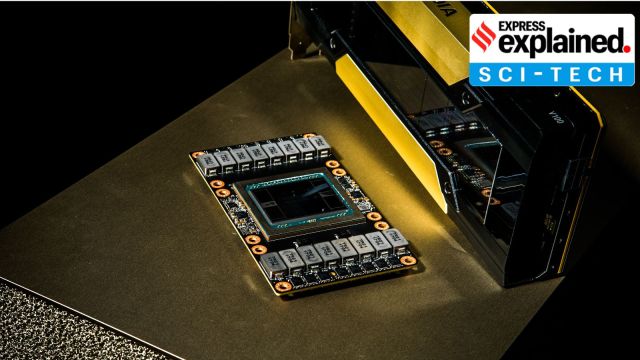
- 16 Jan 2025
In News:
Days before demitting office, the Joe Biden administration has released an expansive regulatory framework on the export of artificial intelligence (AI) hardware such as graphics processing units (GPUs), which could have far-reaching consequences for India’s AI ambitions.
Three-Tier Framework for AI Hardware Export Restrictions
- Tier 1: Closest US Allies
- Countries: Australia, Belgium, Canada, South Korea, UK, etc.
- No restrictions on computing power deployment.
- Minimal security requirements.
- Impact: Free access to AI technology for these nations.
- Tier 2: Majority of Countries (Including India)
- Countries: India, Brazil, South Africa, etc.
- Restrictions: Limited to importing approximately 50,000 advanced AI chips (around $1 billion) through 2027.
- Potential to Double Cap: If countries sign agreements to uphold strict security standards.
- Impact on India:
- Short-Term: Likely to fulfill current demand for 10,000 GPUs for the IndiaAI Mission.
- Long-Term: Challenges in scaling AI infrastructure, with possible delays in large AI data centers and difficulty acquiring large-scale GPUs.
- Tier 3: Countries of Concern (Restricted Nations)
- Countries: Russia, China, North Korea, Iran, etc.
- No Access to US AI Technology: Nearly total prohibition of AI tech exports.
Special Provisions for India and China
- General Validated End User (GVEU) status for India and China:
- India: Authorisation for civilian and military use, excluding nuclear applications.
- China: Only civilian use permitted under similar conditions.
Why the US Imposed These Restrictions?
- National Security: Prevent adversaries (China, Iran, Russia) from acquiring advanced AI technologies.
- US Technological Leadership: To protect US AI leadership and prevent loss of competitive edge.
- Trusted Ecosystem: Build secure and trusted AI environments for allied nations.
Impact on India
- Short-Term:
- IndiaAI Mission: Current procurement of 10,000 GPUs unlikely to be affected.
- Subsidized GPUs: Available for startups, academia, and researchers.
- Long-Term Concerns:
- Licensing Uncertainties: Possible delays in large-scale AI deployments and AI data centers.
- Impact on Large Firms: Companies like Reliance and Yotta may face challenges scaling up AI compute infrastructure.
- National AI Mission Challenges: Difficulty in acquiring enough GPUs for large-scale AI projects beyond 2027.
- Strategic Leverage: US could use AI export restrictions to negotiate trade deals or tariff adjustments.
Nvidia’s Criticism of the AI Diffusion Rules
- Overreach and Bureaucratic: Nvidia criticized the 200+ page regulatory framework as excessive, secretive, and bureaucratic.
- Harming US Competitiveness: Claims that the rules would hinder US innovation and global leadership, weakening the competitiveness of the US semiconductor and software industries.
- Contrast with Trump’s Approach: Praises the earlier Trump administration for fostering AI growth through industry competition without compromising national security.
Enforcement of the Rules
- Regulatory Control: Managed by the US Bureau of Industry and Security (BIS) under the Department of Commerce.
- Technology Access: Ensures AI chips and models do not reach adversaries or nations posing security risks.
Potential Impact on India’s AI Strategy
- AI Hardware Infrastructure: Challenges in large-scale AI hardware deployment.
- Competitive Disadvantage: Potential delays or downsizing of AI data centers could affect India’s competitiveness in AI technology.
- Strategic Partnerships: India may need to secure General National Validated End User authorizations to ensure uninterrupted access to advanced chips.
- AI Market Growth: India’s AI market projected to grow to $17 billion by 2027, with an annual growth rate of 25%-35%.
Nine Years of Startup India
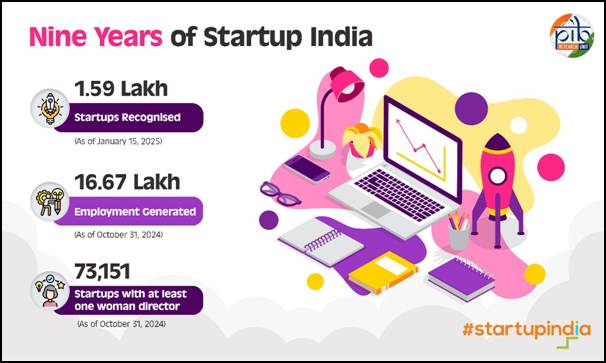
- 16 Jan 2025
In News:
On January 16, 2025, India marks nine years of Startup India, a transformative journey that began in 2016. Designated as National Startup Day, this occasion celebrates the nation’s strides in fostering a robust and inclusive entrepreneurial ecosystem.
Current Status (as of Jan 2025)
Over 1.59 lakh startups recognized by DPIIT, making India the 3rd largest startup ecosystem globally.
- More than 100 unicorns (startups valued over $1 billion).
- Key hubs: Bengaluru, Hyderabad, Mumbai, Delhi-NCR; growing contribution from smaller cities.
Key Sectors
- Major sectors: Fintech, Edtech, Health-tech, E-commerce.
- Notable companies: Zomato, Nykaa, Ola exemplify India's shift from job seekers to job creators.
Key Milestones (2016–2025)
- Startups grew from around 500 in 2016 to 1.59 lakh in 2025.
- 73,151 startups with at least one-woman director as of 2024, showcasing rise in women entrepreneurship.
- Over 16.6 lakh jobs created by DPIIT-recognized startups by 2024.
Core Features of Startup India
- Ease of Doing Business: Simplified compliance, self-certification, and single-window clearances.
- Tax Benefits: Three-year tax exemptions for eligible startups.
- Funding Support: ?10,000 crore Fund of Funds for Startups (FFS) supports early-stage funding.
- Sector-Specific Policies: Policies focusing on sectors like biotechnology, agriculture, and renewable energy.
Industry-wise Jobs Created
- IT Services: 2.04 lakh jobs.
- Healthcare & Lifesciences: 1.47 lakh jobs.
- Professional & Commercial Services: 94,000 jobs.
- Total direct jobs created: 16.6 lakh (as of Oct 2024).
Flagship Schemes
- Startup India Seed Fund Scheme (SISFS).
- Credit Guarantee Scheme for Startups (CGSS).
- Fund of Funds for Startups (FFS) Scheme.
Other Key Initiatives
- Capacity Building & Handholding: Workshops for regional ecosystems, especially in non-metro cities.
- Outreach & Awareness: Initiatives to facilitate funding, incubation, and mentorship opportunities.
- Ecosystem Development: National-level events like Startup Mahakumbh to bring together key stakeholders.
- International Linkages: India’s G20 Presidency institutionalized Startup20 to enhance global collaborations.
BHASKAR Platform (Launched in Sept 2024)
- Objective: Centralize and streamline interactions within the entrepreneurial ecosystem.
- Key Features:
- Networking: Connects startups, investors, mentors, and government bodies.
- Resources: Provides quick access to essential tools and knowledge for scaling startups.
- Global Outreach: Promotes India as a global innovation hub.
Startup Mahakumbh
- 2024 Edition: Hosted 1,300 exhibitors, 48,000 visitors, and 392 speakers, including unicorn founders and policymakers.
- 2025 Edition (3-5 April, New Delhi): Theme - “Startup India @ 2047 – Unfolding the Bharat Story.”
Ayushman Bharat Pradhan Mantri Jan Arogya Yojana (AB PM-JAY)
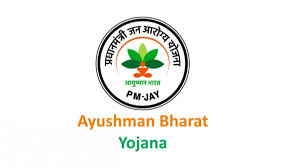
- 15 Jan 2025
In News:
Odisha has become the 34th state to implement the Ayushman Bharat Pradhan Mantri Jan Arogya Yojana (AB PM-JAY). The National Health Authority (NHA) of the Union Ministry of Health signed a Memorandum of Understanding (MoU) with the Department of Health and Family Welfare, Government of Odisha to onboard the state under the scheme.
Key Highlights:
- The scheme will be implemented alongside the existing Gopabandhu Jan Arogya Yojana in Odisha.
- It provides health coverage of Rs. 5 lakh per family per annum, with an additional Rs. 5 lakh for women members.
- Approximately 1.03 crore families will be covered under the scheme.
- Shri JP Nadda, Union Health Minister, emphasized that the scheme is the world’s largest and fastest-growing health coverage initiative.
- Shri Mohan Charan Majhi, Chief Minister of Odisha, highlighted that people will now have access to cashless treatment in over 29,000 empaneled hospitals.
About Ayushman Bharat PM-JAY:
- Launched in 2018 under the Ministry of Health & Family Welfare (MoH&FW).
- Targets 12 crore families (~55 crore beneficiaries).
- Provides cashless hospital coverage for secondary and tertiary care.
- Fully funded by the government, with cost-sharing between the Centre and states.
- Covers nearly 2,000 medical procedures, including major surgeries.
Since its inception, over 8.19 crore hospital admissions have been recorded, with ?1.13 lakh crore spent on healthcare for marginalized sections.
Cyclone Dikeledi

- 15 Jan 2025
Cyclone Dikeledi struck Mayotte, a French overseas territory in the Indian Ocean, located in the Mozambique Channel. The cyclone caused severe flooding and damage, following closely after Cyclone Chido, which had hit the region in December 2024.
About Mayotte:
- Comprises two islands from the Comoros archipelago: Mayotte (Grande Terre) and Pamandzi (Petite Terre).
- It is the poorest region in both France and the European Union.
- Colonized by France in 1843 and annexed along with the Comoros in 1904.
- In a 1974 referendum, while 95% of Comoros opted for independence, 63% of Mayotte voted to remain French.
- While Comoros declared independence in 1975, Mayotte continues to be governed by France.
Cyclone Chido, which struck in December 2024, was recorded as the most severe storm to hit Mayotte in 90 years.
Commissioning of Three Indian Naval Combatants
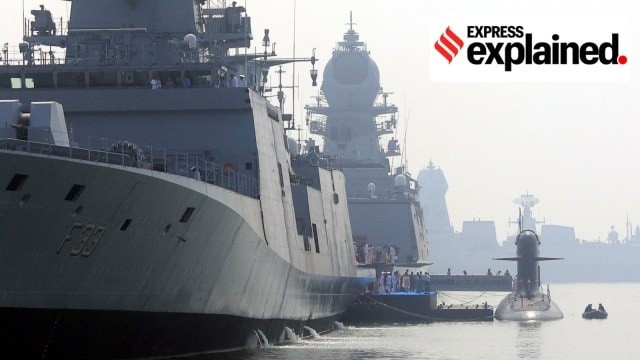
- 15 Jan 2025
In News:
In a major boost to India’s maritime defense capabilities, three frontline warships—INS Nilgiri, INS Surat, and INS Vaghsheer—were commissioned into the Indian Navy at the Naval Dockyard in Mumbai. This marks a significant step in India's self-reliance in defense manufacturing and strengthens its presence in the Indian Ocean Region (IOR).
INS Nilgiri: Project 17A Stealth Frigate
INS Nilgiri is the lead ship of the Project 17A class, an advanced version of the Shivalik-class frigates, designed for multi-mission capabilities in blue-water operations.
Key Features:
- Advanced stealth technology reducing radar and infrared signatures.
- Equipped with supersonic surface-to-surface missiles, Medium Range Surface-to-Air Missiles (MRSAM), upgraded 76 mm guns, and rapid-fire close-in weapon systems.
- Versatile roles in anti-surface, anti-air, and anti-submarine warfare.
- Constructed using integrated modular design for faster assembly.
- Other ships in this class—Himgiri, Taragiri, Udaygiri, Dunagiri, and Vindhyagiri—are under construction at Mazagon Dock Shipbuilders Limited (MDL) and Garden Reach Shipbuilders and Engineers (GRSE).
INS Surat: Project 15B Stealth Destroyer
INS Surat is the fourth and final guided missile destroyer under Project 15B, following INS Visakhapatnam, INS Mormugao, and INS Imphal. It represents an upgraded version of the Kolkata-class destroyers.
Key Features:
- AI-Enabled Operations: First Indian warship integrated with artificial intelligence solutions for enhanced combat efficiency.
- High-Speed Capability: Can exceed speeds of 30 knots (56 km/h).
- Advanced Armament: Equipped with modern surface-to-air and anti-ship missiles, torpedoes, and sophisticated network-centric warfare sensors.
- Strategic Role: Acts as a high-speed, maneuverable warship with increased strike capability and endurance.
Project 15B was initiated in 2011, with ships named after major Indian cities to symbolize national unity. These destroyers serve as critical assets in naval operations, ensuring dominance in maritime warfare.
INS Vaghsheer: Project 75 Scorpene-Class Submarine
INS Vaghsheer is the sixth and final Kalvari-class submarine built under Project 75, designed for stealth and versatile naval operations.
Key Features:
- Scorpene-Class Design: Developed in collaboration with the French Naval Group.
- Diesel-Electric Propulsion: Silent and highly maneuverable, making it one of the world’s most advanced attack submarines.
- Mission Capabilities: Specializes in anti-surface warfare, anti-submarine warfare, intelligence gathering, and special operations.
- Weapons Systems: Armed with wire-guided torpedoes, anti-ship missiles, and state-of-the-art sonar systems.
The Kalvari-class submarines continue India's legacy of submarine warfare, named after decommissioned Soviet-origin Foxtrot-class submarines post-Independence.
Iran's Capital Relocation
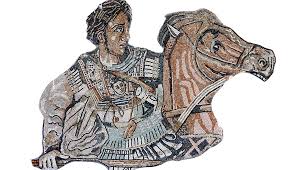
- 15 Jan 2025
In News:
Iran has announced plans to relocate its capital from Tehran to the Makran coastal region due to economic and environmental concerns.
Reasons Behind Relocation
- Overcrowding and Resource Constraints: Tehran, the capital for over 200 years since the Qajar dynasty (1794-1925), faces overpopulation, air pollution, water scarcity, and energy shortages.
- Strategic Importance of Makran: Located in Sistan and Baluchestan Province, Makran’s proximity to the Gulf of Oman enhances its potential for economic development.
- Economic and Maritime Significance: Home to key ports like Chabahar, Makran is vital for Iran’s petroleum reserves and coastal trade.
- Geopolitical Considerations: The development of Makran as an international trade hub could strengthen Iran’s economic ties with Central Asia and the Indian Ocean region.
About Makran
- Geographical Overview: A semi-desert coastal plateau shared by Pakistan and Iran, bordered by the Arabian Sea and the Gulf of Oman.
- Key Ports and Trade Routes: Gwadar (Pakistan) and Chabahar (Iran) serve as critical gateways to the Strait of Hormuz, a global oil supply route.
Alexander’s Invasion and Makran’s Historical Significance
Background of Alexander’s Invasion (327–325 BCE)
- Entry into India: Alexander, King of Macedonia (336-323 BCE), entered India via the Khyber Pass after conquering Kabul.
- Key Battles:
- Battle of Hydaspes (Jhelum): Faced and defeated King Porus, later reinstating him as an ally.
- Retreat at Hyphasis (Beas River): His army, exhausted and wary of the Nanda Empire’s strength, refused to march further east.
The Gedrosian Desert March
- Extreme Hardships: While retreating through the Makran Desert, Alexander lost a third of his army to dehydration, starvation, and exhaustion.
- Comparison with Cyrus the Great: Unlike Cyrus II, who failed to cross the desert, Alexander’s army endured the harsh terrain, albeit with heavy casualties.
Impact of Alexander’s Invasion on India
- Cultural and Trade Exchanges: Facilitated early Indo-Greek interactions and opened key trade routes linking South Asia and Europe.
- Greek Settlements: Established cities like Alexandria (Kabul) and Boukephala (Jhelum), influencing local governance and trade.
- Mauryan Expansion: Weakened regional rulers enabled Chandragupta Maurya to establish the Mauryan Empire.
- Influence on Art and Culture: Indo-Greek fusion led to the Gandhara School of Art, integrating Greek and Indian artistic traditions.
Makaravilakku festival
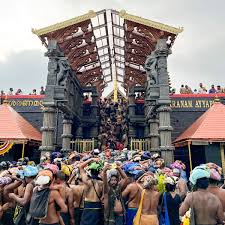
- 15 Jan 2025
In News:
Kerala police deploy 5,000 personnel at Sabarimala ahead of Makaravilakku festival.
Key Highlights:
- Makaravilakku is a prominent annual Hindu festival held at the Sabarimala Temple in Kerala, dedicated to Lord Ayyappa.
- It marks the celestial event of the Sun entering Capricorn (Makaram Rashi) on Makara Sankranti.
- The festival is a culmination of the 41-day pilgrimage to Sabarimala, celebrated with devotion, discipline, and spiritual purification.
- Sabarimala is one of the largest pilgrimage sites globally, drawing 10-15 million devotees annually.
Location:
- The Sabarimala Temple is located on the Sabarimala hill in Pathanamthitta, Kerala, within the Periyar Tiger Reserve.
- It is surrounded by 18 hills and is located along the banks of the Pamba River.
Key Rituals:
- 41-Day Pilgrimage (Vratham): Devotees observe strict practices like celibacy, fasting, and wearing black or saffron attire to purify the body and soul.
- Makaravilakku (Makara Jyothi): A celestial light appears on Makara Sankranti, believed to be a divine manifestation of Lord Ayyappa.
- Thiruvabharanam Procession: On Makaravilakku day, sacred royal ornaments (Thiruvabharanam) are carried in a procession from the Pandalam Palace to the temple.
- Aarti at Ponnambalamedu: The Makaravilakku light is believed to emanate from camphor lit during the Aarti ritual at Ponnambalamedu, viewed three times from Sabarimala.
Festival Duration:
- The Makaravilakku festival lasts for seven days, starting on Makara Sankranti and concluding with the Guruthi offering, which propitiates the gods of the wilderness.
Significance of Makaravilakku:
- The festival symbolizes the merging of celestial and spiritual energies, highlighting devotion, purity, and self-discipline.
- Devotees chant the mantra "Swamiye Saranam Ayyappa," seeking blessings and protection from Lord Ayyappa.
- The event promotes equality, as all devotees wear simple black or blue attire and carry the sacred bundle, “Irumudi Kettu.”
Cultural and Religious Aspects:
- The festival is an important cultural and religious observance for millions of Hindus.
- Though previously believed to be a supernatural event, Makaravilakku now involves a ritual performed by the Malayaraya tribe, overseen by the Travancore Devaswom Board.
Prohibition on Women:
- The temple traditionally restricts women aged 10-50 from entering. This was challenged in 2018 when the Supreme Court ruled to lift the prohibition, although it remains a contentious issue.
Purulia Observatory
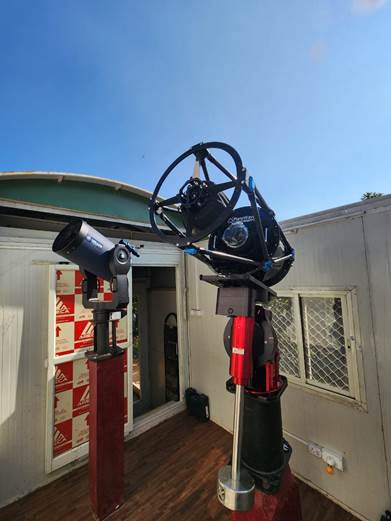
- 14 Jan 2025
In News:
New observatory at remote Purulia district West Bengal is expected to contribute significantly to Astrophysics.
Key Highlights:
Location and Significance:
- Established by: S.N. Bose Centre for Basic Sciences (SNBCBS), an autonomous institute under the Department of Science and Technology (DST), India.
- Location: The observatory is situated at Panchet Hill, in the Garpanchakot area of Purulia district, West Bengal, at an elevation of 600 meters above ground level.
- Longitude Gap: Positioned at a longitude of approximately 86° E, this observatory fills a critical longitudinal gap in global astronomical observation networks. There are very few observatories along this longitude, making it strategically important for observing transient astronomical phenomena that last from minutes to hours.
- Global Impact: This location will allow for unique contributions to global astrophysical research, especially in observing transient events, which require observatories spread across all global longitudes.
Technological and Educational Role:
- The observatory is equipped with a 14-inch telescope for scientific observations.
- It will serve as a training ground for students and researchers, helping them to handle telescopes, record astronomical data, and engage in research.
- The observatory aims to foster national and international collaborations in astronomical research, furthering India’s contributions to the field.
Collaborations and Ecosystem Development:
- MOU with Sidhu Kanu Birsa University: The observatory will be run jointly with Sidhu Kanu Birsa University, sharing resources and responsibilities. The collaboration promises to bring scientific and educational advancements to Purulia, a district traditionally considered backward.
- The establishment of the observatory is expected to boost the local ecosystem, creating a space for scientific engagement and inspiring students in the region.
Research and Contributions:
- The research team, from the Department of Astrophysics at SNBCBS, contributed to the conceptualization, site characterization, and installation of the telescope.
- Their efforts ensure the observatory will be capable of high-quality scientific observations, especially with regard to weather parameters and astronomical seeing conditions.
Future Prospects:
- Scientists emphasized that the observatory will significantly contribute to the global body of knowledge in observational astronomy.
- Also highlighted the potential of the observatory to create a scientific ecosystem in the region.
- The observatory will also serve as a source of inspiration for students in Purulia and provide a much-needed boost to local education in the fields of science and astrophysics.
Konkan Region’s Sada and Biodiversity
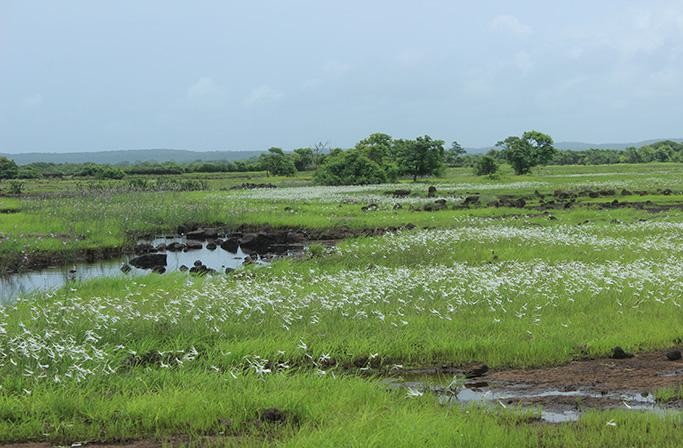
- 14 Jan 2025
In News:
A Konkan secret, the flat-top sada is a freshwater paradise.
Key Highlights:
Geography of Sada:
- The Konkan region lies between the Arabian Sea and the Western Ghats.
- Sada refers to flat-topped hills, formed by centuries of erosion, and is a prominent feature in the Ratnagiri district.
- These areas are typically barren except during the monsoon season when they come alive with flora and fauna.
Biodiversity and Ecosystem Services:
- A biodiversity survey between 2022-2024 recorded 459 plant species, with 105 being endemic to the Konkan region.
- The survey also identified 31 species of reptiles, 13 species of amphibians, 169 species of birds, and 41 species of mammals.
- These ecosystems play a vital role in water conservation. The lateritic soil layer atop the Sada acts as a catchment for rainwater, recharging the groundwater and providing freshwater to local communities year-round.
Traditional Land Use and Agriculture:
- Local Farming: During monsoons, the Sada is used by locals for growing traditional crops like rice and millets (e.g., nanchani), using sustainable farming practices without pesticides or chemical fertilizers.
- Water Management: The locals rely on open wells, springs, and perennial streams for freshwater, which are carefully maintained through cultural rituals and community hygiene practices.
Conservation and Cultural Importance:
- The region is home to geoglyphs, ancient artworks estimated to be 10,000 years old, adding to its cultural and historical significance.
- Waterbodies on the Sada serve as habitats for species like the Indian flapshell turtle (Lissemys punctata) and provide water for other wildlife, including leopards, jackals, hyenas, barking deer, and migratory birds.
Environmental Threats:
- Land-use Change: Increasing conversion of open land and croplands into orchards and residential areas, along with various developmental projects, threatens the region's biodiversity.
- Mining: Extraction of laterite stones for construction purposes is another environmental risk.
- Wasteland Classification: The region is often classified as a ‘wasteland’ in the Wasteland Atlas, further complicating conservation efforts.
Israel-Hamas Ceasefire and Hostage Release Deal
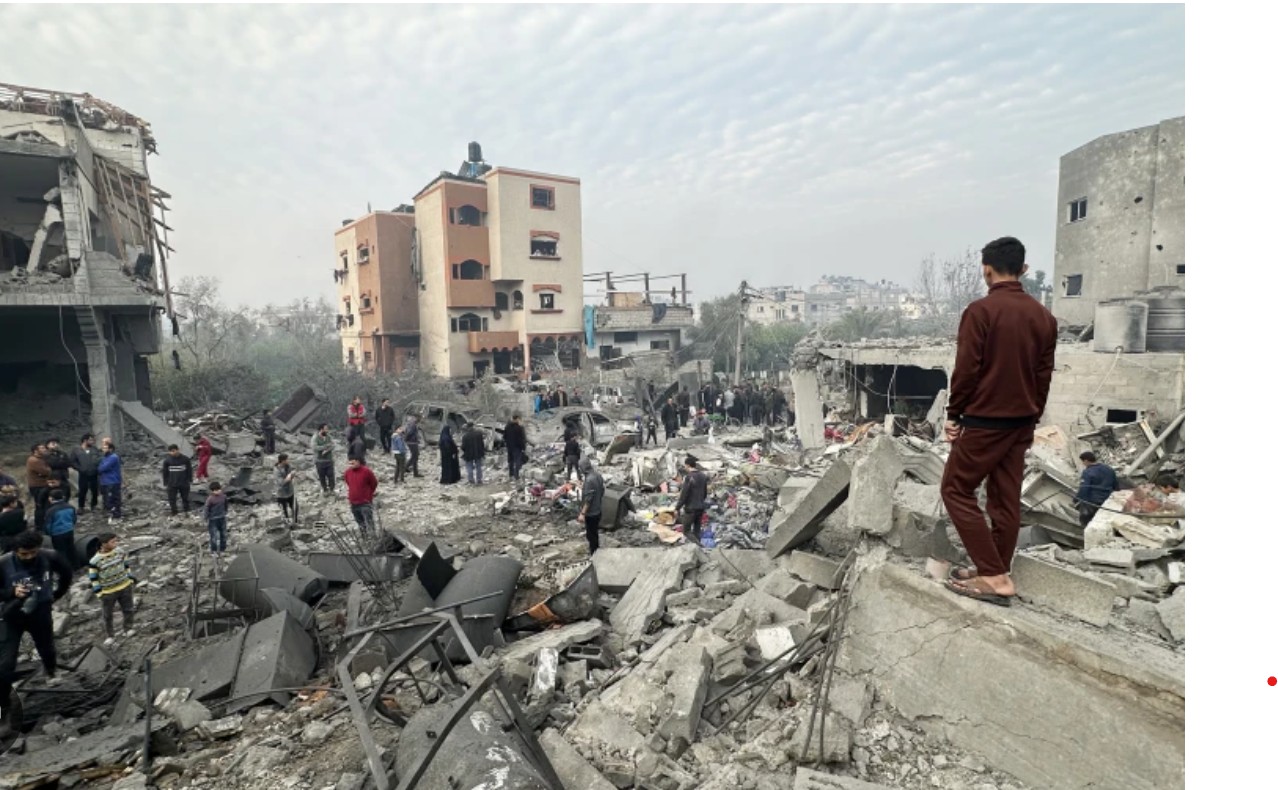
- 14 Jan 2025
In News:
Israel and Hamas have agreed on a Gaza ceasefire and hostage release deal after 15 months of war.
Key Highlights:
Ceasefire Agreement Details:
- Location: The deal was brokered in Doha, Qatar.
- Approval Process: The deal must be approved by Israel’s Cabinet to take effect.
- Mediators: The agreement was negotiated by Qatar, Egypt, and the United States, with their involvement ensuring the implementation of the deal.
Phases of the Deal:
- First Phase (42 Days):
- Release of 33 hostages by Hamas, including women, children, and elderly people.
- Hostage Exchange: Hostages will be exchanged for Palestinian prisoners in Israeli jails.
- Gaza Ceasefire and Withdrawal: Israeli forces will gradually withdraw from Central Gaza and move to the borders.
- Return of Displaced Palestinians: Displaced Palestinians will be allowed to return to Northern Gaza.
- Humanitarian Aid: 600 humanitarian aid trucks will be allowed into Gaza daily.
- Second Phase:
- Hostage Release: Negotiations will begin for the release of remaining hostages.
- Full Israeli Troop Withdrawal: Israel will fully withdraw its forces.
- Third Phase:
- Reconstruction of Gaza: Overseen by Egypt, Qatar, and the United Nations.
- Reopening of Border Crossings: For movement in and out of Gaza.
- Return of Hostage Bodies: Return of any bodies of hostages who died.
Background of the Israel-Hamas Conflict:
- Start: On October 7, 2023, Hamas launched an attack on Israel, called Operation Al-Aqsa Flood, causing significant casualties.
- Israeli Response: Israel launched Operation Iron Sword in retaliation.
- Casualties: The conflict resulted in 46,707 Palestinian deaths, mostly civilians, and 1,210 Israeli deaths.
About Gaza Strip:
- Location: A Palestinian enclave on the Mediterranean Sea, bordered by Israel and Egypt.
- Administration: The Gaza Strip is governed by Hamas since 2006.
- Movement Restrictions: Israel controls air space and shoreline, imposing restrictions. Egypt controls one border and also restricts movement.
Gaza Truce Deal:
- Nature: A proposed ceasefire to end the ongoing conflict.
- Primary Parties: Israel and Hamas.
- Supporting Nations: United States, Qatar, and Egypt.
- Significance:
- Aims to stop fighting and address the humanitarian crisis in Gaza.
- Potential to influence regional stability and Israeli politics.
- Marks an important moment in U.S. diplomacy under the Biden administration.
Nag Mark-2
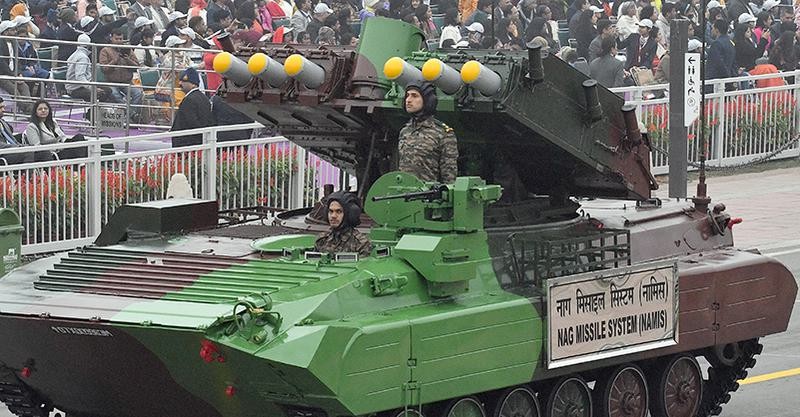
- 14 Jan 2025
In News:
The Defence Research and Development Organisation (DRDO) successfully conducted field evaluation trials of India's indigenous Anti-Tank Missile - Nag Mark 2 at the Pokhran Field Range in Rajasthan.
Overview of Nag Mk-2:
- Type: Third-generation, fire-and-forget anti-tank guided missile (ATGM).
- Development: Indigenous development by Defence Research and Development Organisation (DRDO) under the Integrated Guided Missile Development Programme (IGMDP).
- Functionality: Designed to neutralize modern armored threats, including those with Explosive Reactive Armour (ERA), using advanced fire-and-forget technology.
Technological Features:
- Fire-and-Forget Technology: Operators lock onto targets before launch, allowing the missile to autonomously track and engage targets, ensuring precision strikes.
- Lock-on After Launch: The missile can lock onto the target post-launch, providing flexibility in complex battlefield environments.
- Advanced Guidance System: Equipped with Imaging Infrared (IIR) seekers for enhanced accuracy, both during the day and at night.
Performance and Range:
- Effective Range: The missile has a range of 7 to 10 kilometers, a significant improvement over its predecessor, Nag Mk-1, which had a range of only 4 kilometers.
- Test Trials: Successfully destroyed all targets at both maximum and minimum ranges during the field evaluation trials at Pokhran Field Range, Rajasthan.
- Attack Mode: Includes a top-attack capability to target the vulnerable upper surfaces of armored vehicles, enhancing its effectiveness.
Platform and Integration:
- Launch Platform: The missile is launched from the NAMICA (Nag Missile Carrier) Version 2, a tank destroyer vehicle used by the Indian Army to launch anti-tank missiles.
- Versatility: Designed for integration with multiple platforms, enhancing operational flexibility in different combat scenarios.
Strategic and Operational Significance:
- Indigenous Defence Capability: Reduces India's dependence on foreign weapons systems, strengthening self-reliance in defense technology.
- Enhanced Battlefield Readiness: Provides the Indian Army with a cutting-edge weapon to counter modern armored vehicles, improving tactical advantages.
- Operational Effectiveness: The missile’s precision and ability to neutralize targets with minimal collateral damage make it an essential tool in modern warfare.
- Strategic Deterrence: Demonstrates India’s technological advancements in missile systems, signaling strength and deterrence to adversaries.
Bharat Cleantech Manufacturing Platform

- 14 Jan 2025
In News:
Union Minister of Commerce & Industry Shri Piyush Goyal launches Bharat Cleantech Manufacturing Platform.
Bharat Cleantech Manufacturing Platform:
- Objective: Strengthen India's cleantech value chains, especially in solar, wind, hydrogen, and battery storage sectors.
- Platform Features:
- Aims to promote collaboration, co-innovation, and knowledge-sharing among Indian firms.
- Focus on scaling up manufacturing, sharing ideas, technologies, and resources.
- Acts as a financing platform for the cleantech sector.
- Designed to position India as a global leader in sustainability and cleantech innovation.
India's Clean Energy Commitment:
- Target: 500 GW of clean energy capacity by 2030.
- India has been a front-runner in fulfilling its Nationally Determined Contributions (NDCs) under the Paris Agreement and UNFCCC.
- Early Achievement: India achieved its 2022 renewable energy target of 200 GW, 8 years ahead of schedule.
- Largest Interconnected Grid: India boasts the world’s largest interconnected power grid, enhancing its renewable energy distribution capacity.
- Gujarat is a pioneer in solar power adoption in India.
Union Minister Shri Piyush Goyal's Views:
- On Product-Linked Incentives (PLIs):
- PLIs and subsidies are seen as short-term aids; long-term growth of the clean energy sector depends on it becoming self-sustaining.
- Urged Indian firms to innovate and scale up manufacturing within the country.
- On Clean Energy and Sustainability:
- Stressed the importance of innovation and collaboration to achieve sustainability goals.
- India aims to attract international investors by creating a compelling business case for cleantech investments.
- 3S Approach (Speed, Scale, and Skill): Key to implementing India's renewable energy program, emphasizing rapid deployment, large-scale adoption, and skill development in the sector.
Bharat Climate Forum 2025:
- Event Objective: A platform for policymakers, industry leaders, and stakeholders to discuss climate action, clean energy, and India’s role in global climate goals.
- Key Focus Areas:
- Aligning India’s clean energy initiatives with global climate goals (UNFCCC, Paris Agreement).
- Emphasizing India’s early achievements in clean energy adoption.
- Promoting sustainable development and clean energy solutions.
India's Performance in Renewable Energy:
- India’s progress has been commendable in meeting its climate targets and setting up clean energy capacity ahead of schedule.
- The government’s initiatives, led by Prime Minister Narendra Modi, have made solar power affordable and scalable through transparency in auctions, competitive bidding, and speed in project implementation.
World’s First Cryo-Born Baby Corals
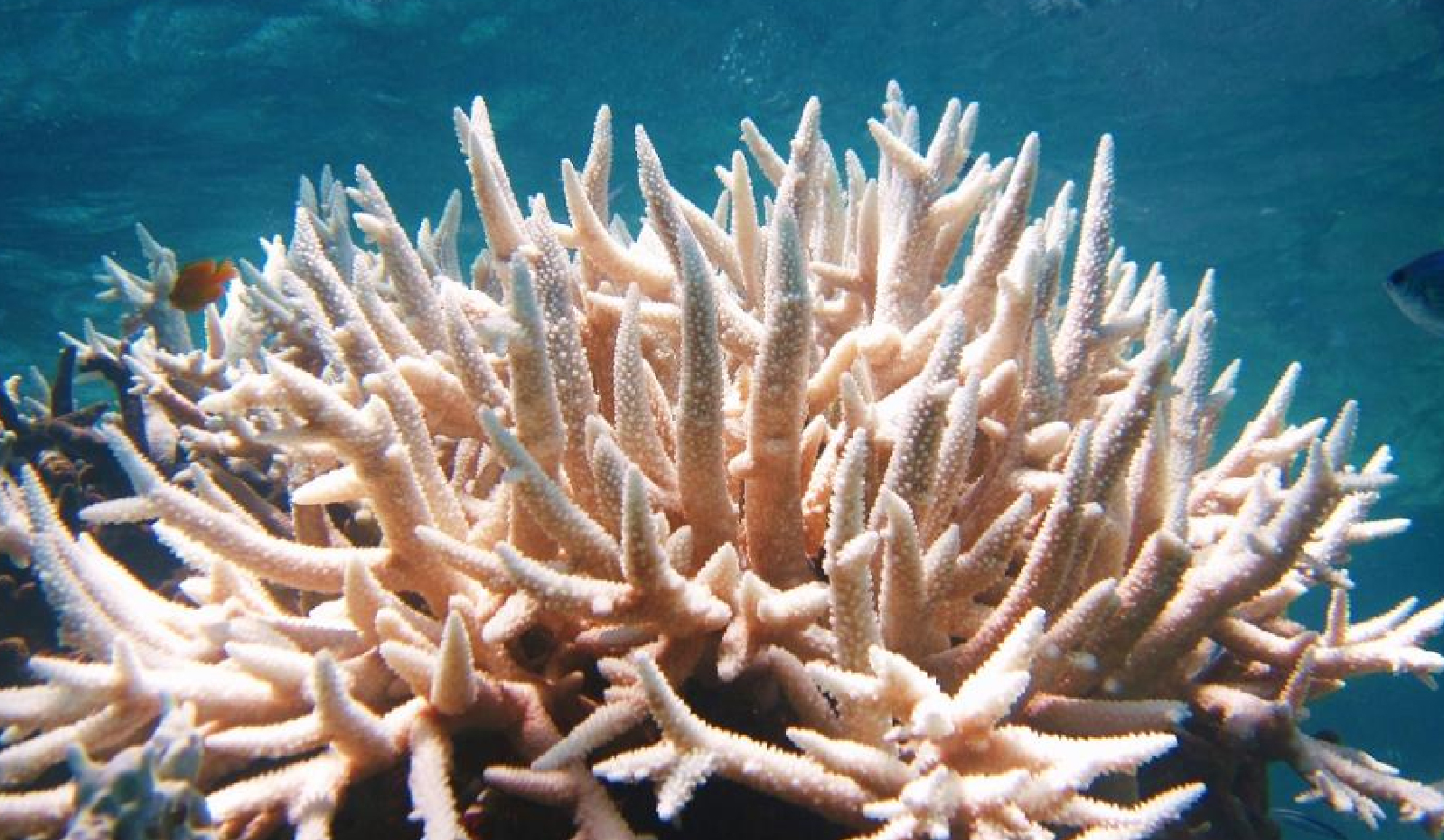
- 13 Jan 2025
In News:
World’s First Cryo-Born Baby Corals Successfully Settled on the Great Barrier Reef.
Introduction to Cryo-Born Corals
- Cryo-born corals are created using cryopreservation techniques, which involve freezing coral cells and tissues at very low temperatures.
- The process preserves coral cells by preventing the formation of ice crystals that would otherwise damage them.
- Cryopreservation involves adding cryoprotectants to remove water from cells, enabling their survival during freezing and thawing.
Significance of the Breakthrough
- Climate Change Resilience: The initiative aims to create heat-tolerant corals, which are crucial in combating the impact of rising ocean temperatures due to climate change.
- Selective Breeding Advantage: Cryopreservation allows for controlled breeding and bypasses the limitations of natural coral spawning, which occurs only once a year. This enables multiple reproduction cycles without disturbing wild populations.
The Process of Cryo-Born Coral Production
- Sperm Collection: During coral spawning events, sperm from various coral species is collected and frozen at -196°C using liquid nitrogen, halting metabolic processes.
- Coral Egg Fertilization: Cryopreserved sperm is used to fertilize fresh coral eggs, which are grown in a specialized research facility called the National Sea Simulator.
- Coral Cradles: After growth, the cryo-born corals are carefully transported and settled into specially designed "coral cradles" placed in the Great Barrier Reef, where their growth is monitored during their critical first year.
Importance of Cryo-Born Corals in Reef Restoration
- The primary aim is to introduce millions of heat-tolerant corals annually to restore reefs affected by climate change.
- The Taronga CryoDiversity Bank houses the world’s largest frozen coral sperm collection from 32 coral species, collected annually since 2011, providing a resource for future restoration efforts.
Coral Reefs: An Overview
- Corals are marine invertebrates from the class Anthozoa, phylum Cnidaria.
- Reefs are built by colonies of coral polyps that secrete limestone skeletons and rely on symbiotic algae (zooxanthellae) for nutrition.
- Coral reefs are typically found in shallow, sunlit waters with a temperature range of 16-32°C and depths less than 50 meters.
Global and Indian Coral Conservation Efforts
- India:
- The National Committee on Wetlands, Mangroves, and Coral Reefs (1986) advises on conservation measures.
- The Environment (Protection) Act (1986) prohibits the use of coral and sand in construction.
- Zoological Survey of India (ZSI) uses Biorock technology for coral restoration.
- Global Efforts:
- CITES lists coral species in Appendix II, regulating coral trade.
- The World Heritage Convention designates coral reefs as protected sites.
Global Impact and Future Directions
- The innovative work by Australian scientists opens the door for large-scale restoration efforts by allowing more controlled breeding and genetic diversity, making corals more resilient to climate change.
- This breakthrough could revolutionize coral restoration, scaling up efforts to introduce millions of resilient corals to reefs worldwide, building long-term resilience against climate change.
Sovereign Artificial Intelligence

- 13 Jan 2025
In News:
- The growth of Artificial Intelligence (AI) has been remarkable in recent years. In 2018, a 340-million-parameter AI model was considered large, whereas models like ChatGPT now have 1.8 trillion parameters.
- As part of its ambition to make the digital economy worth USD 1 trillion by 2028, India is focusing on AI sovereignty and investing in semiconductors and AI technologies to achieve this goal.
What is Sovereign AI?
Definition
- Sovereign AI refers to a nation’s ability to develop, control, and deploy AI using its own resources, including infrastructure, data, workforce, and business networks.
- This involves not just developing AI models but also creating infrastructure and nurturing homegrown talent to lead AI advancements within the country.
Key Aspects of Sovereign AI
- National Control: Ensures AI technologies align with a country's laws, regulations, and ethical standards.
- Data Sovereignty: Emphasizes control of data within the country’s borders, protecting privacy, security, and national interests.
- AI in Governance: Generative AI is transforming industries, markets, and governance, with AI-powered tools assisting professionals and governments.
- Ethical Considerations: Countries define security protocols and ethical frameworks to govern the use of AI technologies.
- Strategic Autonomy: Reduces reliance on foreign technologies, encouraging domestic development in AI to achieve strategic independence.
- Economic Competitiveness: AI is crucial for industrial innovation. Without it, nations risk falling behind in the global economy.
Growth and Importance of AI
Evolution of AI Models
- In 2018, a 340-million-parameter model was considered a significant achievement.
- Today, ChatGPT uses 1.8 trillion parameters, and Google’s Gemini uses 1.5 trillion parameters. In comparison, China’s DeepSeek has a model with 240 billion parameters.
- Parameters are the internal variables of AI models, adjusted during training to improve their performance and accuracy.
Strategic Applications
- Sovereign AI plays a pivotal role in critical sectors such as:
- Defense
- Healthcare
- Transportation
- Governance
- It helps redefine industries, boost innovation, and streamline operations across various sectors.
India’s Position in Sovereign AI
AI Infrastructure Development
- Tata Group and Reliance are building AI infrastructure in India, including the development of Large Language Models (LLMs).
- India has allocated USD 1.2 billion for a sovereign AI project under the IndiaAI Mission, which includes creating an AI supercomputer with thousands of chips.
Government Initiatives
- The IndiaAI Mission is designed to boost India’s AI capabilities by building infrastructure, fostering talent, and supporting innovation within the country.
Global AI Compact
- A Global AI Compact has been proposed to ensure equitable access to AI technologies across nations.
- The compact advocates for sharing AI resources globally while promoting cooperation and addressing challenges associated with AI governance.
Pink Fire Retardant
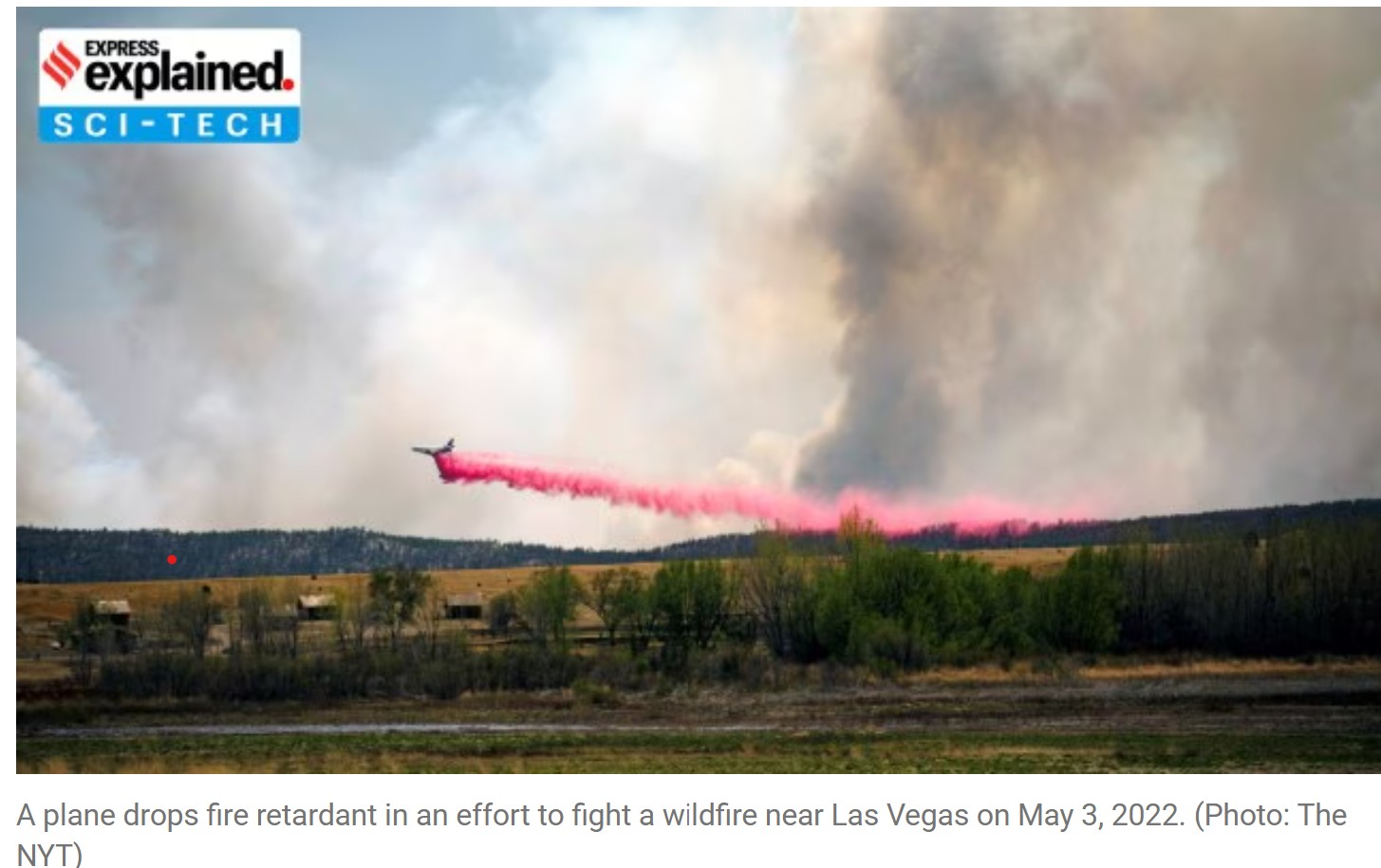
- 13 Jan 2025
In News:
As wildfires continue to rage across Southern California, authorities are deploying pink fire retardant from aircraft to help combat the blazes. Despite its widespread use, concerns over its effectiveness and environmental risks have surfaced in recent years.
What is Pink Fire Retardant?
- Fire retardant is a chemical mixture designed to slow down or extinguish wildfires. The most commonly used product in the U.S. is Phos-Chek, a brand of retardant.
- Phos-Chek primarily contains ammonium phosphate-based slurry (salts like ammonium polyphosphate), which helps the retardant stay longer and resist evaporation, unlike water.
Purpose and Visibility
- Fire retardants are sprayed ahead of fires to coat vegetation, reducing oxygen and preventing flames from spreading.
- Color is added to the fire retardant, often bright pink, to improve visibility. This ensures firefighters can track its spread and create effective fire lines, helping protect lives and property.
Manufacturer
- Perimeter Solutions manufactures Phos-Chek, which is used for aerial fire suppression efforts.
Effectiveness of Pink Fire Retardant
Limited Effectiveness
- The use of fire retardants like Phos-Chek is not always effective across different wildfire conditions.
- Aerial retardants depend on environmental conditions like terrain, slope, and weather for optimal effectiveness.
- Researchers, including Forest Service scientists, suggest that retardant effectiveness is more limited under changing climate conditions.
- Climate change is narrowing the window of opportunity for using aerial retardants, reducing their impact.
Uncertainty in Impact
- The effectiveness of fire retardants is hard to quantify. Multiple firefighting methods are used simultaneously, making it difficult to attribute wildfire suppression success solely to the retardant.
Environmental Concerns of Pink Fire Retardant
Toxicity and Pollution
- Phos-Chek contains toxic metals such as chromium and cadmium, both of which are harmful to humans and the environment.
- Chromium and cadmium are linked to serious health issues, including cancer and liver/kidney diseases.
- Aquatic life is particularly vulnerable to these toxins, as the chemicals can enter waterways, causing extensive damage to ecosystems.
Impact on Rivers and Streams
- The use of pink fire retardant has raised concerns regarding the contamination of rivers and streams.
- A study by the University of Southern California (USC) in 2024 estimated that 850,000 pounds of toxic chemicals have been released into the environment since 2009 due to fire retardant use.
Growing Use and Pollution
- From 2009 to 2021, over 440 million gallons of retardant were applied across U.S. lands.
- During this period, an estimated 400 tons of heavy metals were introduced into the environment, further exacerbating the pollution levels.
Financial and Practical Concerns
High Cost and Inefficiency
- The cost of deploying fire retardant is significant. Aerial firefighting operations require substantial resources, including planes, helicopters, and large quantities of retardant.
- Environmental experts argue that using fire retardant from planes is ineffective and expensive, especially in light of the growing environmental concerns.
UJALA Scheme
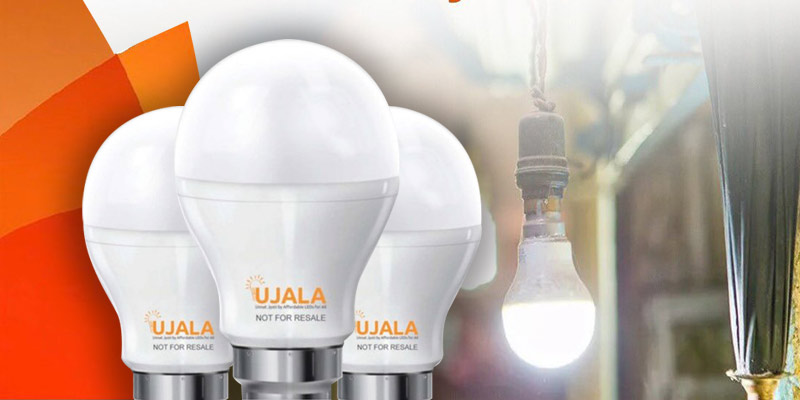
- 10 Jan 2025
In News:
UJALA scheme completes 10 years, saves ?19,153 crore annually
UJALA Scheme (Unnat Jyoti by Affordable LEDs for All)
- Launch Date: 5th January 2015 by PM Narendra Modi
- Objective:
- To promote energy-efficient LED lighting across India
- To reduce energy consumption, lower electricity bills, and decrease carbon emissions
- Implementing Body: Energy Efficiency Services Limited (EESL), Ministry of Power
- Scheme Relevance: Aims to provide affordable LED bulbs, tube lights, and fans to every household
- Global Recognition: World’s largest zero-subsidy domestic lighting scheme
Key Features:
- Affordability: Subsidized LED bulbs (?70-80), reducing the cost of electricity for households
- Energy Efficiency: LEDs consume 90% less energy than incandescent bulbs, 50% less than CFLs
- Environmental Impact: Significant reduction in CO? emissions by avoiding millions of tonnes annually
- Market Transformation: Over 36.87 crore LED bulbs distributed, saving approximately ?19,153 crore on electricity bills each year
- Consumer Benefit:
- On-Bill Financing: LED bulbs available for purchase through deferred payment via electricity bills
- Targeted low-income communities through Self-Help Groups (SHGs)
Achievements:
- Energy Savings: 47.9 billion kWh annually
- Cost Savings: ?19,153 crore saved on electricity bills
- Carbon Emission Reduction: 38.7 million tonnes of CO? avoided per year
- Peak Demand Reduction: 9,586 MW reduction in peak electricity demand
- Street Lighting: Over 1.34 crore LED streetlights installed, saving 9,001 million units annually
Key Initiatives:
- GRAM UJALA Scheme (March 2021): Aimed at rural households, providing LED bulbs at ?10 each
- Street Lighting National Programme (SLNP): Aimed at reducing public lighting costs with energy-efficient streetlights
- Encouraging Domestic Manufacturing: Stimulated local LED production, aligning with the "Make in India" mission
- E-Procurement Transparency: Real-time procurement ensuring price reductions and maintaining quality
Impact on Environment:
- Energy Savings & Carbon Footprint: The scheme significantly reduced the carbon footprint by promoting energy-efficient appliances
- Reduction in Household Consumption: Consumers benefit from reduced energy consumption and lower utility bills
New Method to Improve Nitrogen Use Efficiency (NUE)
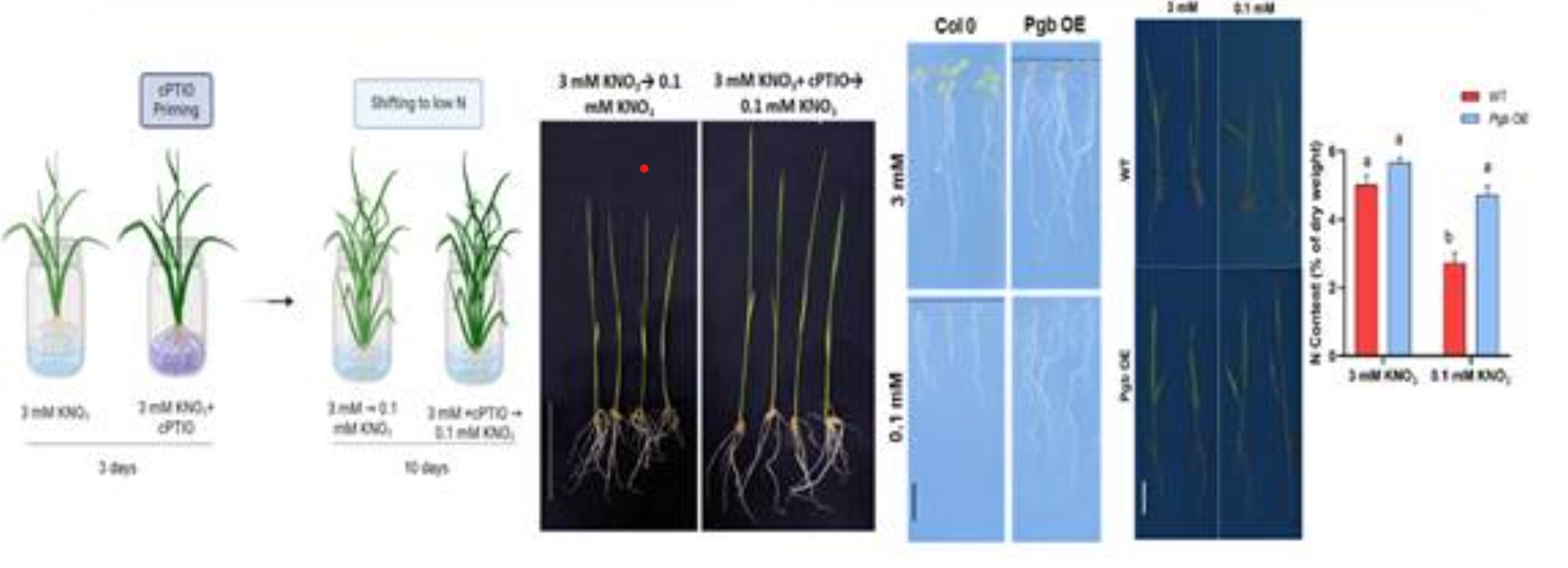
- 10 Jan 2025
In News:
A recent breakthrough in agricultural research offers a promising solution to improve Nitrogen Use Efficiency (NUE) in crops, particularly in rice and Arabidopsis, by reducing nitric oxide (NO) levels in plants. This innovative approach provides an environmentally sustainable way to enhance crop yields while minimizing the need for synthetic nitrogen fertilizers, which have significant ecological and economic drawbacks.
Key Findings and Research Overview:
- Reducing NO Levels: The study, conducted by researchers at the National Institute of Plant Genome Research (NIPGR), demonstrated that by reducing nitric oxide (NO) levels in plants, nitrogen uptake could be significantly improved. This leads to a better NUE, a crucial factor for enhancing crop yield sustainably.
- NUE and Its Importance: NUE refers to the efficiency with which plants use nitrogen for biomass production. Improving NUE allows for higher crop yields with less fertilizer input, reducing costs and minimizing nitrogen-related environmental pollution.
- Traditional Approaches and Their Limitations: Current techniques to improve NUE primarily rely on the use of inorganic nitrogen fertilizers. These methods, though effective, have several downsides:
- They involve high operational costs for farmers.
- Excessive fertilizer use contributes to the emission of nitrogen oxides (NOx) and other pollutants.
- The production of these fertilizers also contributes to greenhouse gas emissions.
In contrast, the new study proposes a genetic and pharmacological manipulation of NO levels, offering a sustainable alternative to these traditional, resource-heavy methods.
Study Methodology:
The research team employed both genetic and pharmacological approaches to regulate NO levels in plants:
- Phytoglobin Overexpression: By overexpressing phytoglobin (a natural NO scavenger), the researchers increased the expression of high-affinity nitrate transporters (HATs) like NRT2.1 and NRT2.4. These transporters are essential for efficient nitrogen uptake.
- NO Donor and Scavenger Treatments: Plants were treated with NO donor (SNAP) and NO scavenger (cPTIO) to monitor the effects on NUE.
- Results: The treatment led to more efficient nitrogen uptake, especially under low NO conditions, by enhancing the expression of HATs. This method could increase plant growth and nitrogen utilization without relying on excessive fertilizer use.
Significance and Impact:
This research provides a pathway to enhance crop yield sustainably by addressing one of the most critical challenges in modern agriculture—reducing the reliance on nitrogen fertilizers. By modulating NO levels to regulate nitrogen uptake, this approach offers:
- Reduced need for synthetic fertilizers, lowering farmers' operational costs.
- Minimized environmental impact, including lower nitrogen oxide emissions and less nitrogen runoff.
- Improved nitrogen uptake efficiency, ensuring better crop yields, especially under conditions with limited nitrogen availability.
Broader Implications:
- Global Nitrogen Challenges:
- The overuse of nitrogen fertilizers has been a major driver of nitrogen pollution, leading to issues like eutrophication, biodiversity loss, and climate change.
- According to the Food and Agriculture Organization (FAO), excessive nitrogen use has worsened environmental conditions globally, while many regions, particularly in low-income countries, suffer from nitrogen depletion, which reduces crop productivity.
- Health and Environmental Risks:
- Nitrogen pollution contributes to health issues like methemoglobinemia (blue baby syndrome) and various long-term diseases.
- Nitrogen compounds also play a role in greenhouse gas emissions, further exacerbating climate change.
- Future Directions for Sustainable Agriculture:
- This study highlights the need for innovative nitrogen management strategies, integrating both biological and genetic approaches to optimize nitrogen use.
- Research is underway to develop NO scavenging formulations and identify bacteria that could be used in soil to enhance NUE in plants.
- Policy Recommendations:
- Governments should focus on reducing the environmental and health impacts of nitrogen fertilizer production and usage by promoting sustainable farming practices.
- Encouraging biological nitrogen fixation through crops like soybeans and alfalfa, and investing in low-emission fertilizers, can help mitigate nitrogen pollution.
Dr. V. Narayanan Takes Over as ISRO Chairman
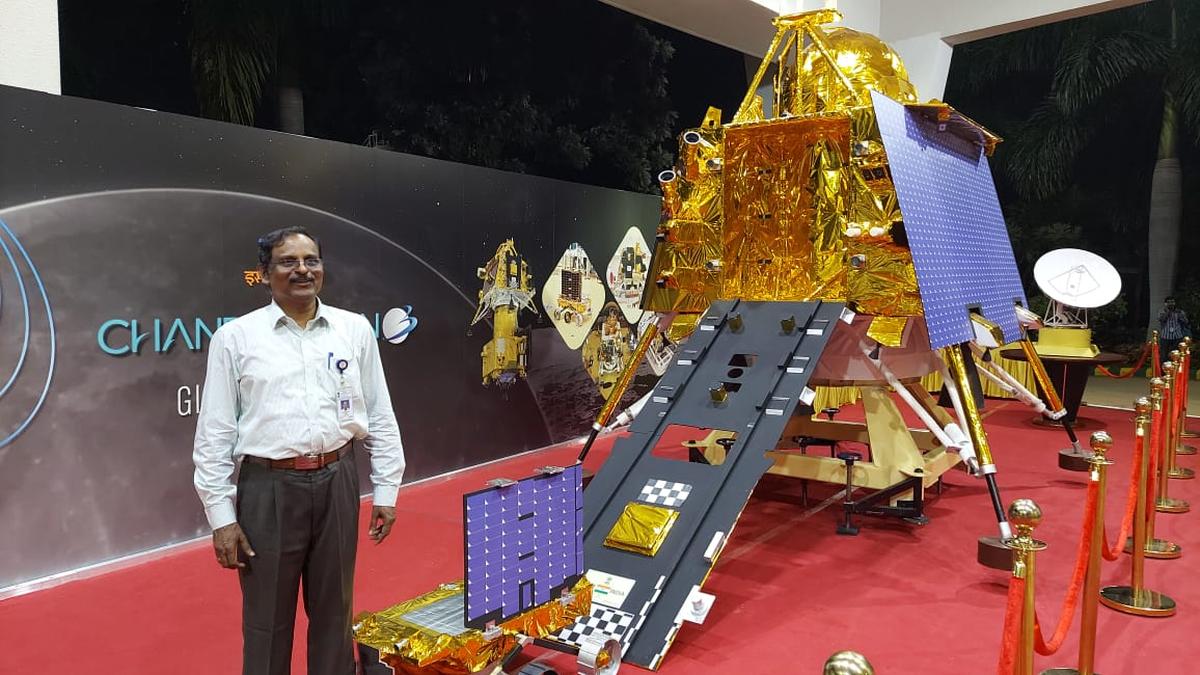
- 10 Jan 2025
In News:
Dr. V. Narayanan has been appointed as the new Chairman of ISRO and Secretary of the Department of Space (DoS), effective from January 14, 2025, succeeding Dr. S. Somanath.
Background and Career of Dr. V. Narayanan:
Dr. Narayanan, currently the Director of Liquid Propulsion Systems Centre (LPSC) in Thiruvananthapuram, has been a key figure in ISRO since joining in 1984. With a focus on cryogenic propulsion, he has played an instrumental role in developing critical technologies for ISRO's launch vehicles. Notably, his work has contributed to India becoming the sixth country globally capable of building and operationalizing cryogenic engines.
Dr. Narayanan’s career highlights include:
- Cryogenic Technology: Leading the development of cryogenic engines for LVM3 (India's heaviest launch vehicle) and PSLV, which are central to missions like Chandrayaan and Gaganyaan.
- Chandrayaan-2 & Chandrayaan-3: As part of ISRO’s missions to the moon, his contributions were pivotal in rectifying the propulsion system issues post-Chandrayaan-2's hard landing, leading to the successful soft landing of Chandrayaan-3 in August 2023.
- Gaganyaan Mission: Overseeing the development of the propulsion systems for crew and service modules, critical for India’s ambitious human spaceflight program.
Dr. S. Somanath's Legacy:
Dr. S. Somanath, who served as ISRO Chairman and DoS Secretary spearheaded multiple landmark missions, including:
- Chandrayaan-3, Aditya-L1, and INSAT missions.
- The Small Satellite Launch Vehicle (SSLV), Re-usable Launch Vehicle (RLV-LEX), and Gaganyaan abort missions.
- National Space Policy 2023 and fostering partnerships between ISRO and private ventures.
Dr. Somanath’s tenure significantly elevated India’s space capabilities, with Chandrayaan-3 marking a historic milestone in India’s lunar exploration.
Dr. Narayanan’s Role in Upcoming ISRO Missions:
As ISRO Chairman, Dr. Narayanan will oversee several ambitious space missions, including:
- NVS-02: The launch of India's navigation satellite as part of the IRNSS constellation.
- Unmanned Gaganyaan Mission: Leading the uncrewed G-1 flight, a precursor to India's first human spaceflight.
- Indo-US NISAR Satellite: A significant collaborative launch with NASA for earth observation.
Additionally, high-profile projects such as Chandrayaan-4, India’s own space station, and future missions to Mars and Venus are in the pipeline, although not all may occur during his tenure.
Vision for ISRO Under Dr. Narayanan:
Dr. Narayanan aims to expand India’s presence in space, targeting increased global market share, particularly in the space economy, which currently holds 2% of the global space sector. His leadership will focus on:
- Increasing Satellite Capacity: Expanding India’s satellite fleet, which currently stands at 53, to meet growing demands for communication, navigation, and earth observation.
- Private Sector Involvement: Leveraging space sector reforms and collaborating with private players to drive innovation and meet burgeoning satellite needs.
- Global Collaboration: Strengthening ties with other space agencies, as ISRO continues to build respect on the global stage.
Upcoming Space Missions and ISRO's Agenda for 2025:
Under Dr. Narayanan's leadership, ISRO has a packed agenda for 2025:
- GSLV Mk-II/IRNSS-1K Mission
- Gaganyaan G-1 Mission (uncrewed flight)
- Chandrayaan-4, Bharatiya Antariksha Station, and Venus Orbiter Mission (VOM) preparations.
Dr. Narayanan’s vision aligns with India's broader goals of becoming a dominant player in the global space economy, aspiring to increase its space market share from 2% to 10%.
Flamingo Festival 2025
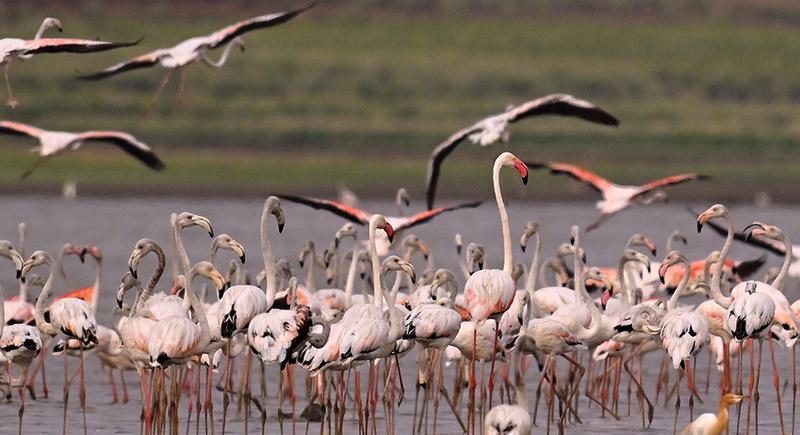
- 10 Jan 2025
In News:
The Flamingo Festival 2025 took place at Sullurpeta, in Tirupati district, Andhra Pradesh. It celebrates the arrival of migratory birds, with a focus on flamingos, to the region's key bird habitats, including Pulicat Lake and Nelapattu Bird Sanctuary.
Key Highlights:
- Birdwatching: Over 200 bird species, including flamingos, are expected to flock to the region during this festival.
- Locations: The event spans across five locations:
- Nelapattu Bird Sanctuary
- B.V. Palem (Pulicat Lake)
- Atakanithippa
- Sri City
- Sullurpeta (site for cultural programs and stalls)
- Collaborations: In association with organizations like the Bombay Natural History Society.
- Focus on Local Community: Local residents of the eco-sensitive zone will be prioritized and supported.
Key Facts on Local Wildlife and Significance:
- Pulicat Lake:
- Location: On the Andhra Pradesh-Tamil Nadu border, with 96% of the lake in Andhra Pradesh.
- Significance: The second-largest brackish water lake in India (after Chilika Lake in Odisha).
- Biodiversity: Critical habitat for migratory birds, including flamingos, and home to diverse flora and fauna.
- Economic Importance: Supports local fisheries and provides livelihood to nearby communities.
- Nelapattu Bird Sanctuary:
- Location: 20 km north of Pulicat Lake.
- Ecological Role: Largest breeding site in Southeast Asia for spot-billed pelicans.
- Biodiversity: 189 bird species, including painted storks and glossy ibises.
- Flora and Fauna: Features Barringtonia swamp forests and southern dry evergreen scrub, critical for biodiversity conservation.
- Symbiotic Relationship with Locals: Guano (bird droppings) from pelicans serves as a natural fertilizer for local agriculture, benefiting the farmers.
Flamingo Facts:
- Species: India hosts two flamingo species:
- Greater Flamingo (larger size, pale pink)
- Lesser Flamingo (smaller size, bright pink)
- Behavior: Nomadic and social birds, found in large flocks.
- Coloration: Flamingos' pink color comes from carotenoids in their diet, which are broken down and absorbed into their bodies.
Environmental & Economic Impact: The festival, apart from being a celebration of migratory birds, plays a vital role in:
- Eco-tourism development
- Biodiversity conservation
Local community engagement by highlighting sustainable tourism practices and supporting local livelihoods through eco-friendly initiatives like the Mahatma Gandhi National Rural Employment Guarantee Scheme (MGNREGS).
Bharatpol
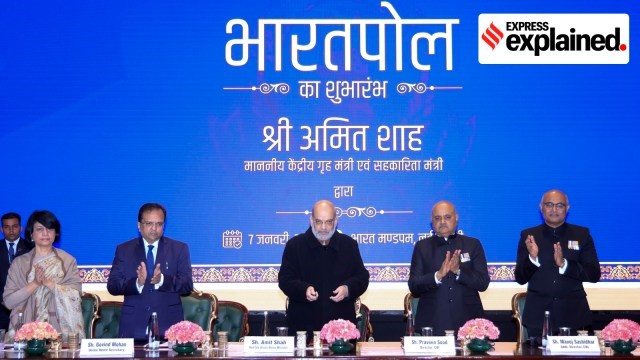
- 11 Jan 2025
In News:
Union Home Minister Amit Shah inaugurated the ‘Bharatpol’ portal, which aims to streamline international cooperation for law investigating agencies.
Key Highlights:
Bharatpol is a newly launched portal developed by the Central Bureau of Investigation (CBI) in India to facilitate faster and more efficient international cooperation between Indian law enforcement agencies and Interpol. It was inaugurated by Union Home Minister Amit Shah, to streamline the process of sharing criminal intelligence and coordinating efforts in transnational crimes like cybercrime, human trafficking, drug trafficking, financial fraud, and organized crime.
The portal aims to address the current challenges in international collaboration, which previously relied on slower communication methods such as letters, emails, and faxes, often leading to delays in investigations.
Key Features and Functions of Bharatpol:
- Unified Platform: Bharatpol integrates CBI as the National Central Bureau (NCB-New Delhi) with all Indian law enforcement agencies, from state police forces to higher authorities. This allows better coordination and quicker access to international resources.
- Simplified Request Mechanism: The portal provides a standardized method for frontline police officers to request international assistance from Interpol member countries, using templates for efficiency.
- Rapid Information Dissemination: Bharatpol enables the CBI to quickly share criminal intelligence and other pertinent information with law enforcement agencies across India, helping to tackle international criminal activities in real-time.
- Increase in Utilization of Interpol Notices: The portal makes it easier for Indian law enforcement agencies to issue and manage Red Corner Notices and other Interpol notices, which are essential tools in tracking criminals globally.
- Capacity Building and Training: Bharatpol includes resources for training law enforcement personnel, improving their ability to conduct investigations abroad and seek foreign assistance via Interpol.
How Bharatpol Works:
- Key Modules of Bharatpol:
- Connect: Facilitates the integration of Indian agencies with the Interpol NCB-New Delhi, creating a seamless communication channel.
- INTERPOL Notices: Supports the rapid issuance and processing of Interpol Notices like Red Corner Notices to locate criminals globally.
- References: Enables Indian agencies to seek and offer international assistance for investigations.
- Broadcast: Ensures quick availability of assistance requests from Interpol member countries, facilitating faster responses.
- Resources: Manages document exchanges and training materials to support the capacity-building efforts of law enforcement agencies.
Potential Benefits of Bharatpol:
- Enhanced Coordination: Bharatpol facilitates better collaboration between central, state, and Union Territory agencies, allowing for a more structured and efficient approach to international crime investigations.
- Faster Investigation: Real-time sharing of information and the use of Interpol notices will help in tracking criminals and criminal activities both in India and abroad.
- Simplified Extradition Process: By streamlining international communication, Bharatpol will assist in expediting the extradition of criminals to India for prosecution.
- Support for Transnational Crime Prevention: It will help address growing threats such as cybercrime, human trafficking, and organized crime by improving the ability of Indian law enforcement to collaborate globally.
National Mission on Edible Oils - Oil Palm (NMEO-OP)

- 11 Jan 2025
In News:
- Union Minister Shri Shivraj Singh Chouhan urges states to accelerate efforts under the National Mission on Edible Oils - Oil Palm (NMEO-OP) to enhance domestic production of edible oils and reduce reliance on imports.
Key Facts Regarding the NMEO-OP Scheme:
About the Scheme:
- Objective: Enhance domestic production of crude palm oil (CPO) and reduce India's dependence on edible oil imports.
- Centrally Sponsored Scheme: Focuses on expanding oil palm cultivation in India.
Key Targets:
- Area Expansion: Aim to cover an additional 6.5 lakh hectares by 2025-26, reaching a total of 10 lakh hectares.
- Production Increase: CPO production is targeted to rise from 0.27 lakh tonnes (2019-20) to 11.20 lakh tonnes by 2025-26, and further to 28 lakh tonnes by 2029-30.
- Per-Capita Consumption: Maintain a consumption level of 19 kg/person/annum until 2025-26.
Focus Regions:
- Special Focus: North-Eastern States and Andaman & Nicobar Islands for oil palm cultivation and CPO production.
Key Features:
- Viability Price (VP) Mechanism: Aims to protect farmers from market volatility by providing price assurance. Payments are made through Direct Benefit Transfer (DBT).
- Increased Assistance:
- Assistance for planting material increased from Rs 12,000/ha to Rs 29,000/ha.
- Special assistance of Rs 250 per plant for rejuvenating old gardens.
- Regional Support:
- For North-East and Andaman, an additional 2% of the CPO price is borne by the government to ensure fair payments to farmers.
- Special provisions for half-moon terrace cultivation, bio-fencing, and land clearance for integrated farming.
Oil Palm Cultivation:
- Origin: Native to the tropical rainforests of West Africa, oil palm is a new crop in India with high oil-yielding potential.
- Oil Yield: Oil palm produces five times the yield of traditional oilseeds per hectare.
- Types of Oil Produced:
- Palm Oil: Extracted from the mesocarp (fruit's fleshy part), containing 45-55% oil.
- Palm Kernel Oil: Derived from the kernel, used in lauric oils.
- Major States for Cultivation: Andhra Pradesh, Telangana, Kerala (98% of total production).
- Other Key States: Karnataka, Tamil Nadu, Odisha, Gujarat, Mizoram, Arunachal Pradesh, Assam, Manipur, Nagaland.
India's Oil Palm Potential:
- Cultivated Area: India currently has 3.70 lakh hectares under oil palm cultivation.
- Total Potential Area: Around 28 lakh hectares.
- Imports: India is the world's largest palm oil importer, with imports of 9.2 million tonnes in 2023-24, accounting for 60% of total edible oil imports. The country primarily imports from Indonesia, Malaysia, and Thailand.
Emergency Declared in Trinidad and Tobago
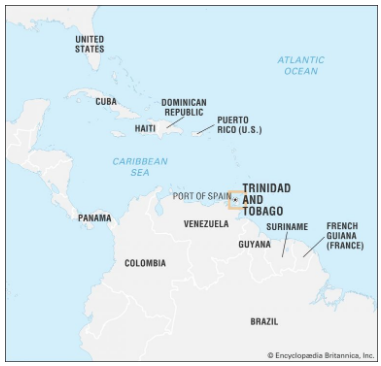
- 11 Jan 2025
In News:
- Trinidad and Tobago declared a state of emergency, in response to a surge in gang violence, which raised the annual death toll to the highest since 2013.
Trinidad and Tobago:
- Location: An island nation in the southern Caribbean, near Venezuela and Guyana.
- Capital: Port of Spain.
- Population: Approximately 1.5 million.
- Ethnic Composition: African (36.3%), Indian (35.4%), Mixed (22.8%), and others.
- Religions: Christianity (64%), Hinduism (18%), Islam (5%), and others.
- Independence: Gained from the UK on August 31, 1962, and became a republic in 1976.
- Member of: Caribbean Community (CARICOM), Commonwealth of Nations, and the United Nations.
- Major Rivers: Ortoire and Caroni.
- Geography:
- Total Land Area: 5,128 sq. km (Trinidad: 4,768 sq. km, Tobago: 300 sq. km).
- Climate: Tropical, with dry and rainy seasons.
- Highest Point: Mount Aripo.
- Natural Resource: Pitch Lake, the world’s largest asphalt reservoir.
- Mountain Range: Northern Range, part of the Andes extension.
Economic and Cultural Significance
- Exports: Major exporter of liquefied natural gas (LNG), methanol, ammonia, and petrochemicals.
- Culture: Known for Carnival, Calypso music, Soca, and the Steelpan (the only musical instrument invented in the 20th century).
- Infrastructure:
- Ports: Port of Spain, Point Lisas, Scarborough.
- Airports: Piarco International Airport (Trinidad) and A.N.R. Robinson International Airport (Tobago).
Engagement with India
- Trinidad and Tobago became the first Caribbean country to adopt India’s UPI platform.
- Both countries granted each other Most Favored Nation (MFN) status in 1997.
- Bilateral trade reached USD 368.96 million in FY 2023-24.
- The Indian diaspora constitutes about 42% of the population.
Past Emergency Declarations:
- 2014: State of emergency declared in response to gang violence.
- 2021: Emergency declared for Covid-19 restrictions.
- 2011: Limited state of emergency for drug-related crimes.
Toda Tribe
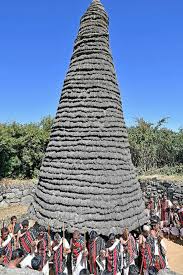
- 11 Jan 2025
In News:
- The Toda tribe, one of the oldest Dravidian ethnic groups in the Nilgiris Hills of Tamil Nadu, celebrated their traditional Modhweth festival marking the New Year.
What is the Modhweth Festival?
- About:
- Celebrated annually on the last Sunday of December or the first Sunday of January.
- Held at the Moonpo temple in Muthanadu Mund village, Nilgiri district.
- The Moonpo temple features a unique vertical spire with a thatched roof and a flat stone on top, making it one of the last Toda temples of its kind in the Nilgiris.
- Rituals and Celebrations:
- Prayers are offered to the deity, Thenkish Amman, for good health, rains, and bountiful harvest.
- Participants perform a traditional dance outside the temple.
- Unique Customs:
- Toda youth showcase their strength and masculinity by lifting a greased boulder weighing around 80 kg.
- Women are not part of the celebrations as per traditional customs.
What is the Toda Tribe?
- About:
- A pastoral tribe native to the Nilgiri Hills of Tamil Nadu.
- Classified as a Particularly Vulnerable Tribal Group (PVTG) in Tamil Nadu.
- The Toda language is Dravidian but stands out for its uniqueness among Dravidian languages.
- Significance:
- Toda lands are part of the Nilgiri Biosphere Reserve, a UNESCO International Biosphere Reserve.
- Their territory is also recognized as a UNESCO World Heritage Site.
- Religion and Beliefs:
- Their religious practices are based on a pantheon of gods, with Tökisy (goddess) and Ön (god of the underworld) as central deities.
Nilgiri Biosphere Reserve (NBR)
- About:
- Established in 1986 as India’s first Biosphere Reserve.
- Located across Tamil Nadu, Karnataka, and Kerala.
- India’s first biosphere reserve under UNESCO’s Man and the Biosphere Programme.
- Tribal Groups in NBR:
- Home to several groups such as Adiyan, Aranadan, Kader, Kurichian, Kuruman, and Kurumbas.
- Ecological Significance:
- Represents the confluence of Afro-tropical and Indo-Malayan biotic zones.
- Fauna:
- Home to species like Nilgiri tahr, Nilgiri langur, gaur, Indian elephant, Nilgiri danio (freshwater fish), and Nilgiri barbare.
- Protected Areas in NBR:
- Mudumalai Wildlife Sanctuary, Wayanad Wildlife Sanctuary, Bandipur National Park, Nagarhole National Park, Mukurthi National Park, and Silent Valley.
Z-Morh Tunnel
- 11 Jan 2025
In News:
Recently, Prime Minister Narendra Modi inaugurated the Z-Morh Tunnel at Sonamarg, which has now been renamed the Sonamarg Tunnel.
Key Takeaways:
- A 6.4-km bi-directional tunnel with an approach road of 5.6 km, Z-Morh connects the Sonamarg health resort with Kangan town in the Ganderbal district of central Kashmir.
- The tunnel has acquired its name for the Z-shaped road stretch that was previously at the place where the tunnel is being constructed.
- The Z-Morh project was initiated by the Border Roads Organisation in 2012. Although the BRO awarded the construction contract to Tunnelway Ltd, the project was subsequently taken over by National Highways and Infrastructure Development Corporation Limited (NHIDCL).
Significance
Strategic Importance
- Connectivity: Provides all-weather connectivity from Srinagar to Ladakh, ensuring year-round access.
- Military Significance:
- Critical for rapid deployment of Indian Armed Forces to Ladakh’s border areas, particularly in the context of tensions with Pakistan and China.
- Reduces dependence on air transport, lowering costs and increasing the longevity of the Indian Air Force’s aircraft.
- Adjacent Projects:
- Zojila Tunnel: An even more crucial project connecting Sonamarg to Drass in Ladakh, with an expected completion by December 2026 (extended to 2030). This will bypass the avalanche-prone Zojila Pass.
- Srinagar-Leh Highway: The Z-Morh Tunnel supports the key Srinagar-Leh route, which is important for defence logistics and trade.
Economic Significance
- Tourism:
- Sonamarg, known as the "Meadow of Gold," will benefit from year-round accessibility, boosting tourism.
- Local businesses that rely on seasonal tourist traffic will have consistent revenue flow.
- Trade and Agriculture:
- Reduced travel time and improved road safety will benefit farmers and traders, especially for those transporting goods between Kashmir and Ladakh.
- Facilitates increased investment and economic growth in the region.
Broader Infrastructure Projects in Jammu & Kashmir
Several key infrastructure projects are contributing to regional development:
- Zojila Tunnel
- Cost: ?6,800 crore
- Length: 13 km tunnel, bypassing Zojila Pass.
- Completion: Expected by 2030.
- Strategic Importance: Provides all-weather connectivity to Ladakh.
- Srinagar Semi-Ring Road
- Cost: ?2,919 crore
- Objective: Relieve traffic congestion in five districts, including Srinagar.
- Delay: New completion date is June 2025.
- Hydroelectric Power Projects:
- Ratle HE Project: 850 MW, on Chenab River, Kishtwar district.
- Kwar HE Project: 540 MW, in Kishtwar.
- Pakal Dul HE Project: 1,000 MW, on the Marusudar River, Kishtwar.
- Kiru HE Project: 624 MW, on Chenab River, Kishtwar.
- Strategic Relevance: These projects will enhance energy security and contribute to the region’s power grid.
India’s Recalculated Coastline
- 09 Jan 2025
In News:
India’s coastline has grown significantly over the past five decades, now extending 11,098 km in 2023-24, compared to 7,516 km in 1970. This marks an increase of 47.6% in just over five decades, attributed to a more precise methodology for measuring coastlines.
Key Factors Behind the Growth:
New Methodology for Measuring Coastlines:
- The old methodology used straight-line distances to measure the coastline, a method that didn't capture the complexity of India’s coastlines.
- The updated approach incorporates bays, estuaries, inlets, and other geomorphological features, offering a more accurate and detailed representation of the coastline.
- Advanced technologies like geospatial mapping have been used to ensure greater precision.
State-wise Recalculated Coastline Changes:
- Gujarat:
- Old coastline (1970): 1,214 km
- New coastline (2023-24): 2,340 km
- Growth: The largest absolute increase in coastline, nearly doubling its size.
- West Bengal:
- Old coastline: 157 km
- New coastline: 721 km
- Growth: A dramatic 357% increase, marking the highest percentage rise.
- Tamil Nadu:
- Old coastline: 906 km
- New coastline: 1,068 km
- Growth: Revised length now exceeds Andhra Pradesh’s coastline, which was 1,053 km.
- Puducherry:
- Old coastline: No major shift, but the updated data shows a contraction of 4.9 km (-10.4%), due to erosion and recalculations.
- Kerala:
- Old coastline: Relatively small increase of 30 km (5%), the smallest among the states.
Notable Observations:
- Andhra Pradesh is developing new ports like Ramayapatnam, Krishnapatnam, and Kakinada Gateway, aiming to boost economic growth and employment by leveraging its expanding coastline.
- The recalculated coastline helps in better maritime planning, focusing on port development, tourism, biodiversity conservation, and coastal erosion.
Impact of Coastline Expansion:
- Economic Growth:
- Coastal states, particularly Gujarat and West Bengal, benefit from an expanded coastline that improves maritime trade, port infrastructure, and tourism.
- The expansion supports industrialization, with growing logistics and transportation activities along the coast.
- Environmental Considerations:
- The new data aids biodiversity conservation, helping to track coastal erosion and accretion (land buildup), especially in areas like the West Coast.
- Understanding these changes is essential for disaster preparedness and sustainable coastal management.
- Coastlines of Emergence and Submergence:
- Emerging Coastlines: Land rising due to uplift or falling sea levels, such as along the Tamil Nadu Coast.
- Submerged Coastlines: Land that has sunk or been submerged due to rising sea levels, particularly noticeable along parts of Kerala’s coast.
Geographical Significance of the Expanded Coastline:
- India’s coast touches three major bodies of water: the Bay of Bengal (east), the Indian Ocean (south), and the Arabian Sea (west).
- The expansion reflects more than just geography—accurate coastline data is crucial for policy planning, maritime security, and resource management.
AnemiaPhone

- 09 Jan 2025
In News:
AnemiaPhone, a technology developed by Cornell University researchers to accurately, quickly, and cheaply, assess iron deficiency, has been transferred to the Indian Council of Medical Research (ICMR) for integration into its programmes for anaemia, women’s health, and maternal and child health throughout the country.
Key Highlights:
- Technology Features:
- Portable, Rapid, and Affordable: AnemiaPhone is designed to detect iron deficiency efficiently at low cost.
- Requires a fingerstick (small blood sample).
- Results are available within minutes.
- Wireless: Data uploaded to a clinical database via mobile, tablet, or computer.
- Can be used by healthcare workers to assess iron deficiency on the spot and take action (guidance, triage, referral).
- Working Mechanism:
- A drop of blood is placed on a test strip.
- The reader processes the sample.
- Data is uploaded for immediate diagnosis and action.
- Test results assist in on-the-spot intervention by healthcare workers.
Anaemia and Iron Deficiency:
- Prevalence in India:
- Iron deficiency is a leading cause of anaemia.
- 50%-70% of pregnant women in India suffer from anaemia.
- 59% of women and 47% of children (6-59 months) in India suffer from anaemia (NFHS data).
- Consequences of Anaemia:
- Fatigue, dizziness, organ failure, complications in childbirth, and in severe cases, death.
- Contributes to higher maternal and child mortality rates in India.
- Impact on Health in India:
- India has one of the highest rates of anaemia in the world.
- Iron deficiency is a significant contributor to maternal deaths.
ICMR's Role and Integration into National Programs:
- ICMR and AnemiaPhone:
- The Indian Council of Medical Research (ICMR) has integrated AnemiaPhone into its Anaemia Mukt Bharat (Anaemia-Free India) program.
- The program focuses on eliminating anaemia by 2025 through screening, diagnosis, and treatment in women and children, especially in remote areas.
- Transfer of Technology:
- In November 2024, Cornell University transferred the technology to ICMR for free.
- This collaboration aims to improve health outcomes by sharing innovative health technologies.
Advantages of AnemiaPhone:
- Cost-Effective and Portable:
- Low-cost compared to traditional lab tests.
- Portable and can be used in remote and underserved areas.
- Quick Diagnosis: Results are processed in minutes, allowing healthcare workers to act without delay.
- No Need for Expensive Labs:
- Can be used at primary health centers or in door-to-door health surveys.
- Facilitates healthcare in rural or difficult-to-reach areas.
- Wireless and Easy to Use: The device is user-friendly and does not require extensive training.
Impact on Healthcare System:
- Improvement in Accessibility:
- Helps reduce the need for people to travel long distances for diagnosis, especially in rural areas.
- Ensures early diagnosis and treatment of iron deficiency and anaemia.
- Enhancing Maternal and Child Health: AnemiaPhone will contribute to reducing maternal and child mortality rates linked to anaemia.
Technology Testing and Development:
- Testing in India:
- AnemiaPhone has been tested in India and has shown accurate results in diagnosing iron deficiency.
- Single-use test strips help ensure accuracy and prevent contamination.
Global Health Context:
- Global Prevalence of Anaemia: More than 2 billion people worldwide suffer from anaemia, particularly pregnant women and young children.
- WHO’s Role: The World Health Organization (WHO) identifies anaemia as a major global health issue.
India-Malaysia Cooperation in Critical Minerals and Rare Earth Elements

- 08 Jan 2025
In News:
- On January 7, 2025, during the inaugural India-Malaysia Security Dialogue in New Delhi, both countries agreed to enhance cooperation in critical minerals and rare earth elements (REEs).
- The meeting was co-chaired by India's National Security Adviser, Ajit Doval, and Malaysia’s Director General of the National Security Council, Raja Dato Nushirwan Bin Zainal Abidin.
- The agreement follows the upgrade of bilateral relations to a Comprehensive Strategic Partnership during Malaysian Prime Minister Anwar Ibrahim’s visit to India in August 2024.
- The dialogue also focused on other security aspects such as counter-terrorism, cyber security, and maritime security.
Importance of Critical Minerals and REEs:
-
- Critical Minerals: These are essential for a variety of industries like IT, energy, and defense. They are integral to manufacturing electric vehicle batteries, solar cells, and advanced electronics.
-
- Rare Earth Elements (REEs): Used in high-tech applications such as wind turbines, electric vehicle engines, and high-powered magnets. While their extraction is not rare, it is technically difficult due to their complex nature.
Strategic Relevance:
-
- Global Demand: The global demand for critical minerals is rising, and both countries see it as a strategic necessity to ensure a stable supply of these materials.
- Malaysia's Resources: Malaysia possesses significant deposits of non-rare radioactive earth ores, including essential REEs like Neodymium (Nd), Dysprosium (Dy), and Praseodymium (Pr). These elements are crucial in today’s technological innovations.
- India’s Dependence on Imports: India, which currently imports a substantial portion of its critical minerals, aims to diversify its supply chain by collaborating with Malaysia.
Sustainability and Ecological Accountability:
-
- Both countries recognize the environmental challenges of mining these critical resources. Malaysia aims to adopt responsible mining practices that minimize ecological harm.
- India seeks to ensure a supply chain that aligns with sustainable development goals, balancing economic needs with environmental responsibilities.
Enhancing Supply Chain Resilience:
-
- Diversification of Supply Chain: This partnership aims to reduce India’s dependency on a limited number of countries for critical minerals, enhancing resilience against global supply chain disruptions.
- Collaboration in Extraction and Processing: Both nations are exploring joint ventures in the exploration, extraction, and processing of critical minerals to boost their technological and economic standing globally.
Future Prospects:
-
- The institutionalization of this dialogue through annual meetings is expected to strengthen bilateral cooperation in the critical minerals sector.
- Increased cooperation is likely to enhance economic growth for both countries, aligning them strategically in the global minerals market as demand for these resources continues to soar.
Broader Security Cooperation:
-
- Beyond critical minerals, the India-Malaysia Security Dialogue explored enhanced collaboration in areas like counter-terrorism, cyber security, maritime security, and defense industries.
- This broadening of security cooperation complements the strategic minerals partnership, further solidifying the bilateral ties between the two nations.
Anji Khad Bridge

- 08 Jan 2025
In News:
The Indian Railways has unveiled a monumental engineering achievement with the completion of the Anji Khad Bridge, India’s first cable-stayed rail bridge.
Overview:
- The Anji Khad Bridge is India's first cable-stayed rail bridge, located in Jammu and Kashmir’s Reasi district.
- It is a key part of the Udhampur-Srinagar-Baramulla Rail Link (USBRL) project aimed at enhancing connectivity between Jammu and Kashmir and the rest of India.
- The bridge crosses the Anji River, a tributary of the Chenab River, and is expected to transform regional transport, boost tourism, and promote economic growth.
Key Features:
- Dimensions:
- Total length: 725.5 meters.
- Main Pylon Height: 193 meters from the foundation, standing 331 meters above the riverbed.
- The bridge is designed for train speeds of up to 100 km/h and can withstand wind speeds of up to 213 km/h.
- Structure and Design:
- Asymmetrical cable-stayed design supported by 96 cables with varying lengths (82 to 295 meters).
- The structure includes:
- A 120-meter approach viaduct on the Reasi side.
- A 38-meter approach bridge on the Katra side.
- A 473.25-meter cable-stayed portion crossing the valley.
- A 94.25-meter central embankment linking the main bridge to the approach viaduct.
- Construction Techniques:
- Used advanced construction techniques such as DOKA Jump Form Shuttering, Pump Concreting, and Tower Crane Technique to enhance safety and reduce construction time by 30%.
- A 40-ton tower crane imported from Spain was employed for operations at great heights.
- The project utilized site-specific investigations by IIT Roorkee and IIT Delhi due to the region’s complex geological and seismic conditions.
- Engineering Challenges:
- The bridge had to be constructed in the difficult Himalayan terrain, with fragile geological features such as faults and thrusts.
- Seismic activity in the region required additional precautions in the design and construction process.
- Safety and Monitoring:
- Equipped with an integrated monitoring system that includes multiple sensors to ensure the structural health of the bridge during operation.
Importance and Impact:
- Connectivity: The bridge will significantly improve connectivity between Katra and Reasi, ensuring faster rail travel and linking the Kashmir Valley with the rest of India.
- Tourism and Economic Growth: Expected to boost tourism and economic development by improving access to the region, attracting visitors, and facilitating smoother transportation of goods and services.
- Sustainability: The bridge's design ensures it remains safe under extreme weather conditions, offering long-term reliability for the Indian Railways network.
Collaboration and International Expertise:
- The design and supervision were handled by ITALFERR (Italy), with proof-checking conducted by COWI (UK).
- The project combines Indian engineering codes with Eurocodes, adhering to international standards for structural integrity.
Section 479 of the BNSS 2023
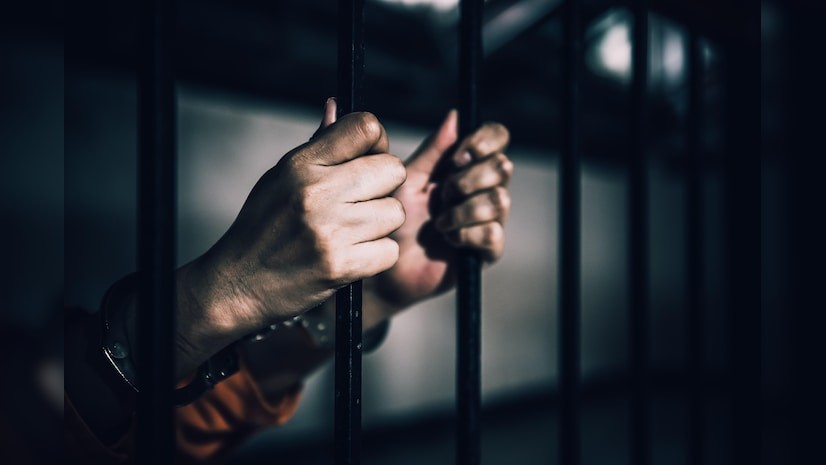
- 08 Jan 2025
In News:
Centre urges states, UTs to ensure undertrial prisoner relief in jails.
Key Highlights:
- Objective: The MHA has urged states and Union Territories (UTs) to implement provisions of Section 479 of the Bharatiya Nagarik Suraksha Sanhita (BNSS) 2023 to provide relief to undertrial prisoners (UTPs) in jails. This initiative aims to address issues such as long detention and overcrowding in prisons.
Key Provisions of Section 479 of BNSS, 2023
- Purpose: To offer relief to undertrial prisoners by mandating their release on bail or bond under specific conditions.
- Key Provisions:
- Subsection (1):
- Release on Bail: UTPs who have served half the maximum sentence for their offense (except offenses punishable by death or life imprisonment) are eligible for release on bail.
- Release on Bond for First-Time Offenders: First-time offenders, who have served one-third of the maximum sentence, are eligible for release on bond by the court.
- Subsection (3):
- Mandatory Application: It is the responsibility of the prison superintendent to apply to the concerned court for the release of eligible prisoners on bail or bond.
- Subsection (1):
- Superintendent’s Role:
- Prison superintendents are mandated to ensure timely applications for bail or bond are filed for eligible UTPs.
Implementation and Reporting
- MHA’s Advisory:
- On January 1, the MHA issued a letter to the Chief Secretaries, Director Generals, and Inspectors General of prisons in all states and UTs to ensure compliance with the provisions of Section 479 of BNSS.
- States and UTs were instructed to report the status of implementation in a prescribed format starting from January 1, 2025.
- Data to be Reported:
- First-Time UTPs: Number of first-time UTPs who have served one-third of their maximum sentence.
- Court Applications: Number of applications for bail filed by jail superintendents.
- Release on Bail: Number of UTPs released on bond or bail after meeting the eligibility criteria.
- Other UTPs: Number of UTPs who have completed half of their sentence, and the number of applications filed for their release.
- MHA’s Campaign:
- Launched on Constitution Day (November 26), this campaign encouraged states and UTs to identify eligible prisoners and file their bail applications, thus helping to reduce overcrowding in prisons and mitigate long-term detention.
Background and Context
- Why Section 479?
- Section 479 aims to reduce the prolonged detention of undertrials, some of whom may have already served significant portions of their maximum sentences. This will not only alleviate overcrowding in prisons but also expedite justice for prisoners who have spent extended periods in jail awaiting trial.
- Earlier MHA Initiatives:
- Prior to this directive, the MHA had issued an advisory on October 16, 2024, encouraging states and UTs to implement Section 479. A special push was also made during Constitution Day to move applications for the release of eligible prisoners.
- Expected Outcome:
- The measures are expected to significantly ease the challenges of overcrowded jails and provide timely relief to undertrials, especially first-time offenders. By enforcing these provisions, the government seeks to improve the judicial process for UTPs and contribute to a more effective and humane criminal justice system.
Sonobuoys
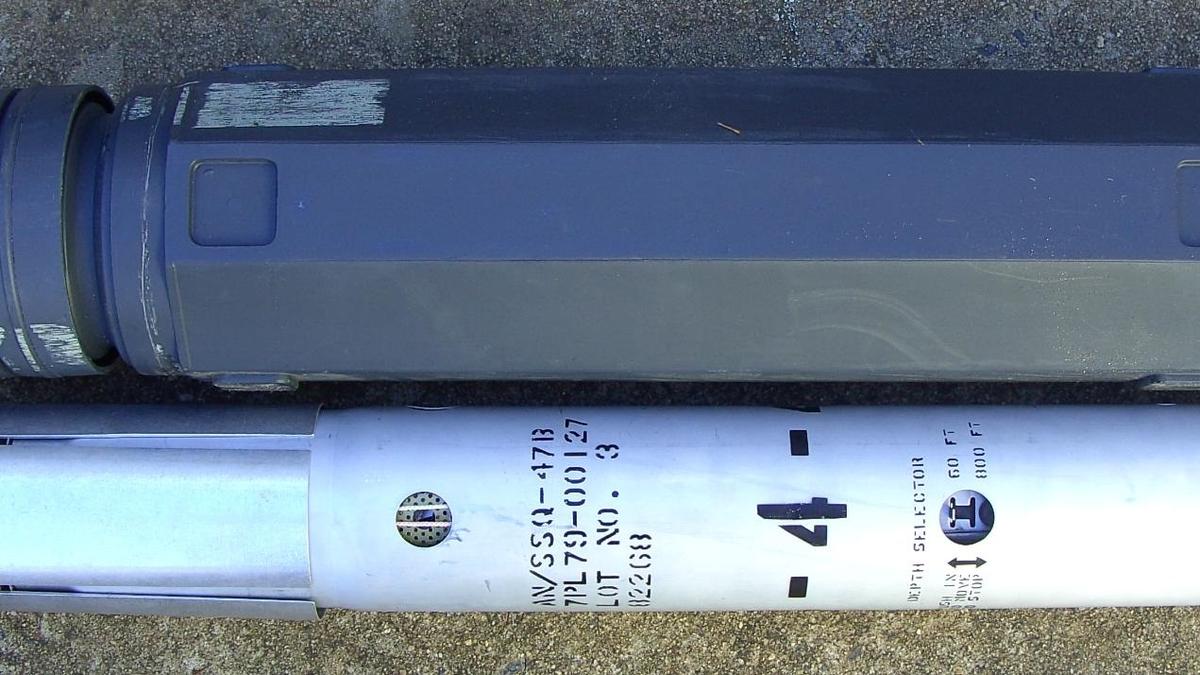
- 08 Jan 2025
In News:
India and the U.S. have announced cooperation on the co-production of U.S. sonobuoys to enhance Undersea Domain Awareness (UDA) for the Indian Navy. This technology is vital for tracking submarines and strengthening defense capabilities, particularly in the Indian Ocean region amidst growing Chinese naval presence.
This partnership is a key step in deepening defense cooperation under the U.S.-India Initiative on Critical and Emerging Technologies (iCET), launched in May 2022, and will contribute to strengthening both countries’ defense industrial bases.
About Sonobuoys
- What They Are:
- Sonobuoys are expendable sonar devices used for anti-submarine warfare and underwater acoustic research.
- Typically, small (13 cm in diameter and 91 cm in length), they are designed for deployment from aircraft or ships to detect submarines in deep waters.
- Working Principles:
- Deployment: Dropped from aircraft or ships, they activate upon water impact.
- Surface Float: Equipped with inflatable floats and radio transmitters to communicate with tracking platforms on the surface.
- Sensors: Hydrophones descend to selected depths, capturing underwater acoustic signals.
- Data Communication: Transmit acoustic data via Very High Frequency (VHF) or Ultra High Frequency (UHF) radios to operators on aircraft or ships.
- Types of Sonobuoys:
- Active Sonobuoys: Emit sound energy and receive echoes, transmitting the data back to operators.
- Passive Sonobuoys: Only listen for underwater sounds from submarines or ships and relay the information back.
- Special Purpose Sonobuoys: Measure environmental data like water temperature and ambient noise.
- Other Applications:
- Beyond anti-submarine warfare, sonobuoys are used for environmental research, including studying marine life such as whales.
Co-production of Sonobuoys: India-U.S. Collaboration
- Manufacturing Agreement:
- Ultra Maritime (U.S.) and Bharat Dynamics Ltd. (BDL) have entered into discussions to co-produce U.S. sonobuoys, in line with India’s "Make in India" initiative.
- The production will follow U.S. Navy standards, with manufacturing split between the U.S. and India.
- The focus will also be on developing bespoke technologies to optimize sonobuoy performance in the unique acoustic environment of the Indian Ocean.
- Interoperability:
- The sonobuoys co-produced in India will be interoperable between U.S. Navy, Indian Navy, and allied aircraft such as P-8, MH-60R, and MQ-9B Sea Guardian.
- This ensures seamless integration and compatibility with naval assets from the U.S., India, Japan, and Australia, especially given the Quad's strategic naval exercises like Malabar.
- Production Location:
- The sonobuoys will be manufactured at BDL's facilities in Visakhapatnam, with a focus on meeting the Indian Navy’s operational demands.
Strategic and Defense Context
- U.S. and Indian Naval Cooperation:
- India has increasingly acquired military platforms from the U.S., such as the P-8I maritime patrol aircraft, MH-60R helicopters, and MQ-9 drones. These assets are also used by other Quad nations like Australia and Japan, highlighting the importance of interoperability and shared defense capabilities in the region.
- Enhanced Maritime Domain Awareness:
- With China’s growing naval presence in the Indian Ocean, the cooperation on sonobuoys aligns with India’s strategic priority of enhancing maritime domain awareness (MDA) and Undersea Domain Awareness (UDA), which are critical for national security.
- Future Plans:
- India has also signed a $3.5 billion contract for 31 MQ-9B drones, enhancing its surveillance capabilities for maritime and other defense applications. Deliveries of these drones will begin in 2029, further boosting India’s defense readiness in the region.
Homo juluensis
- 08 Jan 2025
In News:
A significant discovery in paleoanthropology has unveiled a new species of ancient humans, Homo juluensis. This species, characterized by its unusually large skulls, lived in eastern Asia between 300,000 to 50,000 years ago. The discovery adds to our understanding of human evolution, particularly during the Middle to Late Pleistocene epoch.
Key Characteristics
- Name Origin: Homo juluensis is named after "julu," meaning "big head," reflecting the species' large cranium.
- Geographical Range: This species inhabited regions of eastern Asia, including parts of China, Korea, Japan, and Southeast Asia.
- Fossil Evidence: Fossils have been discovered in Xujiayao and Xuchang (northern and central China), dating from 220,000 to 100,000 years ago.
- Physical Traits:
- Homo juluensis had large braincases, up to 30% larger than modern humans.
- They had thick skulls and facial features reminiscent of both Neanderthals and Denisovans.
- Their dental and jaw features show strong similarities to Neanderthals.
- Cultural Practices:
- They lived in small groups and were hunter-gatherers, hunting wild horses and potentially processing animal hides.
- Their tool-making and survival strategies indicate a complex level of social organization and resource use.
Relationship with Other Ancient Human Species
- Coexistence with Other Species: Homo juluensis coexisted with Neanderthals and Denisovans, potentially interacting and interbreeding with these species.
- Genetic Exchange: Studies suggest hybridization between Neanderthals, Denisovans, and early Homo sapiens played a significant role in shaping the genetic makeup of modern humans, especially in Asia.
- Evolutionary Significance: The species' relationship with other Pleistocene hominins is complex, involving shared ancestry with Homo sapiens, Neanderthals, and Denisovans. The genetic exchange among these populations likely influenced the course of human evolution in eastern Asia.
Neanderthals and Denisovans
- Neanderthals (Homo neanderthalensis):
- Lived between 400,000 to 40,000 years ago, primarily in Europe and parts of Asia.
- Neanderthals contributed significantly to the modern human gene pool, especially among non-African populations.
- Evidence of Neanderthal DNA is present in living humans, indicating past interbreeding with early human species.
- Denisovans:
- Identified through DNA analysis in 2010, based on fossils found in a Siberian cave.
- Closely related to Neanderthals, Denisovans inhabited diverse environments ranging from Siberian mountains to Southeast Asia’s jungles.
- Like Neanderthals, Denisovans interbred with both Homo sapiens and Neanderthals, influencing the genetic structure of modern populations, especially in Asia.
Implications for Human Evolution
- Complex Evolutionary Web:
- The discovery of Homo juluensis highlights the complex web of interrelated ancient human species during the Pleistocene epoch. These species did not live in isolation but likely interacted, competed, and interbred, shaping the evolutionary history of humans in Asia.
- Broader Understanding of Human Development:
- By expanding our knowledge of species like Homo juluensis, we gain a better understanding of the genetic diversity and cultural complexity in ancient human populations. This also provides insights into the environmental and social conditions that shaped early human survival strategies.
- Impact on Modern Genetics:
- The interbreeding between these ancient species has left a lasting imprint on the genetic makeup of modern humans, especially in regions like Asia, where Denisovan genes are still present in the DNA of some populations.
18th Pravasi Bharatiya Divas (PBD)
- 07 Jan 2025
In News:
The 18th Pravasi Bharatiya Divas (PBD) Convention will be held from January 8-10, 2025, in Bhubaneswar, Odisha.
Key Highlights:
- Theme 2025:
- The theme is "Diaspora’s Contribution to a Viksit Bharat", highlighting the vital role of the Indian diaspora in India's development into a prosperous and developed nation.
- Exhibitions:
- The convention will feature four major themed exhibitions:
- Vishwaroop Ram – The Universal Legacy of Ramayana: Showcasing the Ramayana’s influence through traditional and contemporary art forms.
- Diaspora’s Contribution to Technology and Viksit Bharat: Highlighting the global technological impact of the Indian diaspora.
- Spread and Evolution of the Indian Diaspora: Focused on the migration of Indians from Mandvi (Gujarat) to Muscat (Oman).
- Heritage and Culture of Odisha: A look into Odisha’s rich cultural traditions.
- The convention will feature four major themed exhibitions:
- Key Initiatives:
- Pravasi Bharatiya Express: PM Modi will flag off this special tourist train for the diaspora, covering key religious and tourist sites in India under the Pravasi Teertha Darshan Yojana.
- Pravasi Bharatiya Samman Awards (PBSA): Recognizing significant contributions by members of the Indian diaspora in various fields.
About Pravasi Bharatiya Divas (PBD):
- Origins:
- Celebrated on January 9 each year, marking Mahatma Gandhi's return to India from South Africa in 1915, symbolizing the contributions of migrants.
- First held in 2003, the event became biennial in 2015.
- Objectives:
- Recognizes the contributions of the Indian diaspora to India’s growth.
- Fosters engagement between India and its global diaspora.
- Strengthens India’s relations with host countries and promotes understanding of India’s culture and achievements.
Contributions of the Indian Diaspora to a Viksit Bharat:
- Economic Growth:
- The diaspora plays a pivotal role through remittances, investments, and connecting Indian businesses to global markets.
- Example: The development of a thorium-based fuel by a U.S.-based NRI is a significant step toward clean nuclear energy in India.
- Global Trade Linkages:
- Facilitating partnerships, investments, and knowledge exchange to expand India’s trade base and global market presence.
- Supporting Innovation: Diaspora-driven collaborations in emerging markets boost India’s entry into high-growth sectors, enhancing the country's development prospects.
- Cultural Contributions: Indian diaspora members serve as cultural ambassadors, promoting Indian traditions, art, and heritage globally (e.g., Diwali recognized as a public holiday in several U.S. states).
Challenges Faced by the Indian Diaspora:
- Cultural Integration: Struggles with balancing cultural identity and integrating into host societies can lead to alienation.
- Political and Religious Issues: Increasing politicization and religious biases, especially against Hindus and Sikhs, in countries like the USA and Europe.
- Legal and Citizenship Issues: Complicated visa statuses, restrictive immigration laws, and issues like the H-1B visa challenge the diaspora, despite their significant contributions.
- Remittance Challenges: Economic instability, exchange rate fluctuations, and banking hurdles affect the regular flow of remittances to India, impacting families dependent on them.
Government Initiatives for the Diaspora:
- National Pension Scheme for NRIs
- Overseas Citizenship of India (OCI) Card Scheme
- Pravasi Bhartiya Kendra
- Indian Community Welfare Fund (ICWF)
ISRO's Cowpea Seed Germination Experiment in Space
- 07 Jan 2025
In News:
ISRO successfully germinated cowpea seeds (Vigna unguiculata) in microgravity conditions during the PSLV-C60 POEM-4 mission. This experiment, conducted using the Compact Research Module for Orbital Plant Studies (CROPS), marks a significant advancement in space-based agricultural research.
Details of the Experiment:
- Mission Overview:
- The experiment took place aboard the PSLV-C60 POEM-4 mission, which included 24 sophisticated payloads.
- The CROPS payload, developed by the Vikram Sarabhai Space Centre (VSSC), is an automated system designed to study seed germination and plant survival in microgravity environments.
- Methodology:
- Eight cowpea seeds were placed in a controlled, closed-box system, equipped with temperature regulation and advanced monitoring tools.
- The system tracked plant development using high-definition cameras, sensors for oxygen, carbon dioxide, humidity, temperature, and soil moisture levels.
- Significance:
- The cowpea seeds successfully germinated within four days, with leaf development expected soon.
- This breakthrough in space agriculture is vital for the development of sustainable farming techniques in space, especially for long-term space missions and human settlements on other celestial bodies.
Broader Implications:
- Space Agriculture:
- The successful germination of cowpea seeds sets the foundation for growing crops in space, essential for self-sufficient habitats in space.
- This experiment is a significant step towards sustainable space agriculture, reducing the need for Earth-based resources in extraterrestrial environments.
- Future Missions:
- The experiment's success is pivotal for future missions aimed at Moon or Mars exploration, where space-grown crops will be necessary to support human life.
- ISRO’s achievement reinforces its growing expertise in space research and highlights the potential for international collaboration in space exploration and agricultural science.
About Cowpea Seeds:
- Cowpea (also known as lobia in Hindi) is a robust, nutrient-rich legume, ideal for agricultural research due to its adaptability and resilience in varied environments.
- The successful experiment with cowpea seeds holds promise for future extraterrestrial agriculture, ensuring food security for astronauts on long-duration missions.
NCC Republic Day Camp 2025
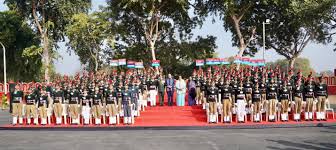
- 07 Jan 2025
In News:
Vice-President Jagdeep Dhankhar’s Address at NCC Republic Day Camp 2025.
Key Highlights
- PanchPran as the Foundation of India’s Transformation:
- PanchPran (Five Resolutions) were outlined by Vice-President Jagdeep Dhankhar as the guiding principles for India’s future development.
- These principles are fundamental to India’s national progress, ensuring a balanced approach to development and societal transformation.
The Five Principles of PanchPran:
- Social Harmony:
- Aims to strengthen unity by leveraging India’s diverse cultures and traditions as sources of national strength.
- Promotes inclusiveness and national integration.
- Family Enlightenment:
- Emphasizes the importance of families in nurturing patriotic and moral values.
- Acts as a foundation for creating a cohesive, enlightened society that respects traditions.
- Environmental Consciousness:
- Advocates for sustainable development and conservation of nature.
- Focuses on protecting natural resources for future generations.
- Swadeshi (Self-reliance):
- Encourages promoting indigenous products as part of the Atmanirbhar Bharat initiative.
- Strengthens India’s self-reliance by focusing on domestic production and consumption.
- Civic Duties:
- Instills responsibility among citizens to actively contribute to the nation’s growth.
- Encourages participation in community and national development activities.
National Cadet Corps (NCC)
- The National Cadet Corps (NCC) is the youth wing of the Indian Armed Forces, established in 1948.
- It is open to school and college students on a voluntary basis and is a Tri-Services organization, comprising the Army, Navy, and Air Force.
- Purpose and Training:
- Cadets undergo basic military training in small arms and drills.
- Officers and cadets have no obligation for active military service after completing their courses.
- Historical Background:
- Traces its origins back to the ‘University Corps’ formed under the Indian Defence Act of 1917 to address shortages in Army personnel.
- Structure and Leadership:
- The NCC is headed by a Director General (DG), a senior officer with a 3-star rank.
- Its headquarters are located in New Delhi.
Disposal of Toxic Waste from Union Carbide Factory (Bhopal)

- 07 Jan 2025
In News:
The Madhya Pradesh government has begun disposing of the 337 tonnes of toxic waste from the premises of Union Carbide India Limited (UCIL) in Bhopal, 40 years after the gas tragedy.
Key Highlights:
- Packing and Transportation:
- Waste is packed in airtight containers under the supervision of the Central Pollution Control Board (CPCB) and Madhya Pradesh Pollution Control Board (MPPCB).
- 12 specially designed airtight containers are being used for packing, and each container will be loaded onto trucks for transport.
- The waste movement will be escorted with a green corridor of about 250 kilometers.
- Incineration Process:
- The waste will undergo incineration in Pithampur, with residue stored in a two-layer membrane landfill to prevent contamination.
- A trial incineration of 10 tonnes of the waste was done in 2015 with no harmful effects, and results were submitted to the High Court.
Bhopal Gas Tragedy: A Historical Overview
- About the Tragedy:
- In 1984, a chemical leak at the Union Carbide pesticide plant released methyl isocyanate (MIC), leading to one of the worst industrial disasters in history.
- The leak was caused by a failed maintenance attempt and malfunctioning safety systems.
- Immediate effects included respiratory issues, eye problems, and abdominal pain, while long-term effects included chronic lung conditions, genetic abnormalities, and higher infant mortality rates.
- Legal and Government Response:
- In 1985, the Indian government passed the Bhopal Gas Leak Disaster Act to represent victims in legal claims.
- UCIL initially offered USD 5 million, while the Indian government demanded USD 3.3 billion. The case was settled in 1989 for USD 470 million.
- In 2010, seven Indian nationals were convicted for causing death by negligence, but were released on bail.
Hazardous Waste Management in India
- Definition and Types:
- Hazardous waste refers to waste that poses significant risks due to toxicity, reactivity, or corrosiveness.
- Common sources include chemical production, outdated technologies, and wastewater treatment.
- Regulations and Disposal Methods:
- The Environment Protection Act (1986) and the Basel Convention (1992) govern hazardous waste management in India.
- India generates about 7.66 million tonnes of hazardous waste annually, with the majority being landfillable (44.3%) and recyclable (47.2%).
- Disposal methods include incineration, co-processing in cement plants, and material/energy recovery.
- Challenges in Hazardous Waste Management:
- Inadequate treatment technologies, especially in small and medium industries.
- The need for stricter compliance with waste management laws and more efficient remediation of hazardous sites like Bhopal.
Pig-Butchering Scam
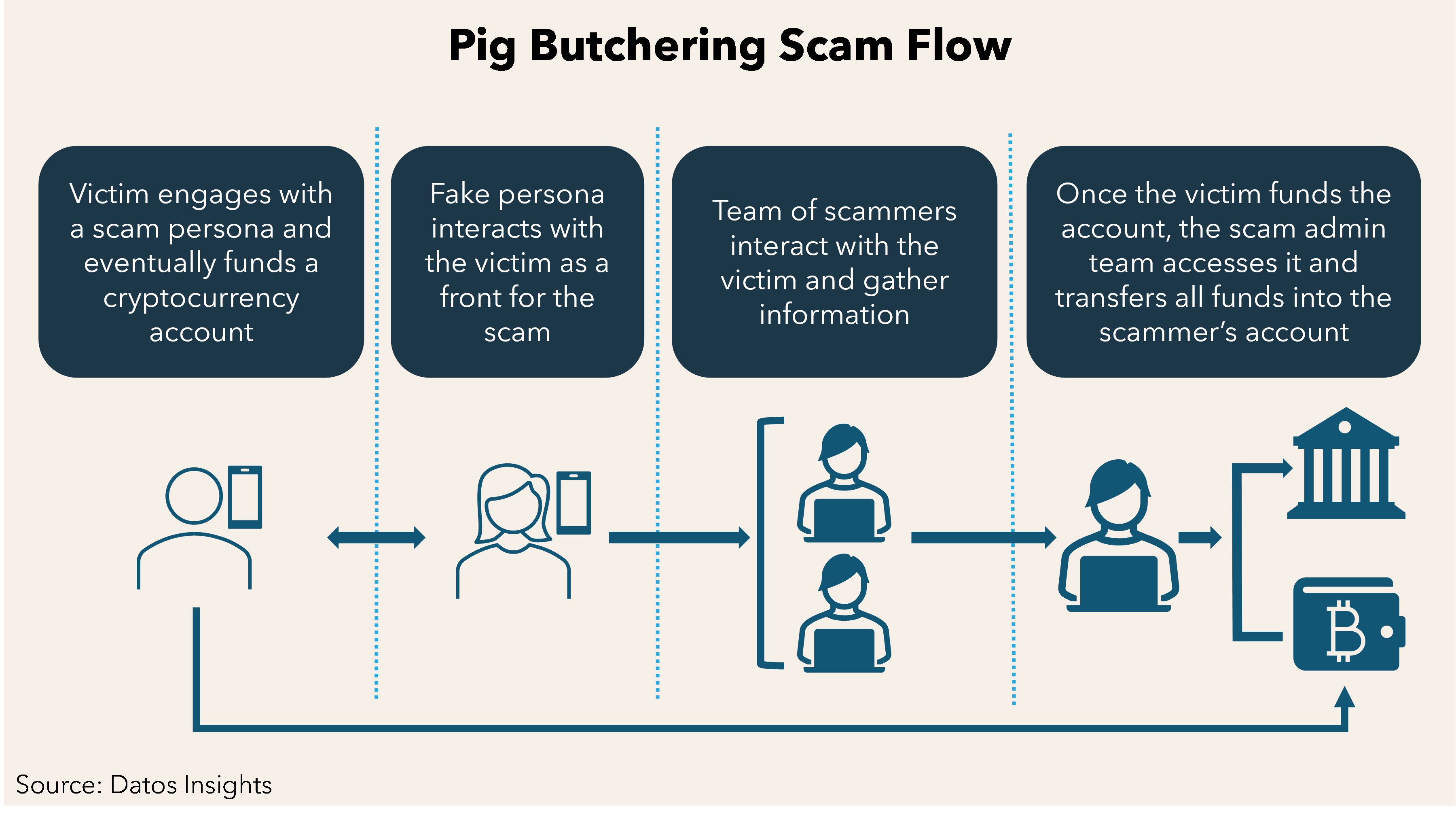
- 07 Jan 2025
In News:
In its annual report, the Union Home Ministry has warned the public against getting trapped in organised 'pig-butchering scams'.
Key Highlights:
- What is it?
- The Pig-Butchering Scam is a sophisticated form of cybercrime in which fraudsters deceive victims into investing in fake online trading platforms. The term "pig-butchering" is derived from the analogy of "fattening up" victims before stealing their money, much like preparing a pig for slaughter.
- How it works:
- Initial Contact: Scammers typically reach out to victims through social media platforms, dating apps, or deceptive ads on websites like Google and Facebook.
- Building Trust: Fraudsters create false friendships, using these connections to lure victims into investing in fake online trading apps. Cryptocurrency investments are often involved due to the ambiguity in the crypto market.
- The Scam: Victims are shown fabricated profits to encourage further investment. However, when they try to withdraw their funds, the money is stolen, and they realize the trading platform was fake.
- Features of the Scam:
- Use of fraudulent online trading platforms
- Fabricated blockchain transactions, making fund recovery nearly impossible
- Reliance on victims’ desire for quick financial gains
- Linked to money laundering and cyber slavery in some cases
- Origin of the Scam:
- The scam first appeared in China in 2016, where it was referred to as “sha zhu pan” (translated as "killing pig game").
- It is a form of Ponzi scheme, wherein organized scammers exploit victims by using fake online identities and offering false investment opportunities.
- How Cybercriminals Lure Victims:
- The scammer (host) contacts potential victims via social media, dating apps, or deceptive online advertisements.
- They build trust with the victim, enticing them into exploring online investments and cryptocurrency trading, often capitalizing on the lack of clarity in the crypto space.
- The victim is then persuaded to invest larger amounts in fake trades, believing they are making real profits.
- How the Scam is Executed:
- The scammer uses fake online trading platforms to create the illusion of profit.
- After building the victim’s confidence, the fraudster encourages larger investments.
- When victims try to withdraw their funds, they realize their money is gone, often with blockchain transactions making it nearly impossible to trace or recover the funds.
- Statistics on Cybercrime in India:
- In March 2024, the National Cybercrime Threat Analytical Unit recorded over 37,500 complaints related to cybercrime.
- The highest number of complaints (42%) were associated with WhatsApp (14,746), followed by Telegram (7,651), Instagram (7,152), Facebook (7,051), and YouTube (1,135).
- Union Home Ministry’s Response:
- The MHA has flagged pig-butchering scams as a global phenomenon that could involve large-scale money laundering and cyber slavery.
- The Ministry is collaborating with Google for intelligence sharing to flag suspicious digital lending apps and other forms of fraud.
- The Indian Cyber Crime Coordination Centre is working on capacity building to combat such scams and improve the response to cybercrimes.
Great Nicobar Island Development Project
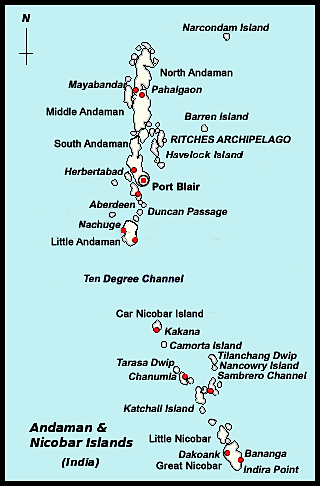
- 06 Jan 2025
In News:
An international cruise terminal to facilitate a “global” port-led city, “high-end” tourism infrastructure, and a ship-breaking yard are among the new additions to the ?72,000 crore mega-infrastructure project in Great Nicobar Island proposed by the Union Shipping Ministry.
Overview of the Project:
- The Great Nicobar Island Development Project is a ?72,000-crore initiative to transform the southernmost island of India into a hub for defense, logistics, commerce, eco-tourism, and infrastructure development.
- It is being implemented by the Andaman and Nicobar Islands Integrated Development Corporation Ltd (ANIIDCO) over 16,610 hectares of land.
- The project includes multiple components like an International Container Transshipment Terminal (ICTT), an international airport, greenfield cities, a mass rapid transport system, and a free trade zone.
Key Proposed Developments:
- International Container Transshipment Terminal (ICTT): To make Great Nicobar a key player in global maritime trade.
- Greenfield International Airport: To improve connectivity and serve as a strategic airport.
- Greenfield Cities: New urban settlements to support the infrastructure.
- Coastal Mass Rapid Transport System: An advanced transportation network along the coast.
- Free Trade Zone: To facilitate international trade activities.
- International Cruise Terminal (new addition): To attract global tourists and facilitate cruise tourism.
- Ship Breaking Yard (new addition): To establish a facility for ship building and breaking.
Geographical and Ecological Context:
- Great Nicobar Island is the largest island in the Nicobar group, located at the southern tip of India. It is covered in rainforests and hosts diverse species, including endangered ones like the leatherback turtle and the Nicobar megapode.
- The island's ecosystem is rich in biodiversity, with extensive mangroves, coral reefs, and rainforests.
Significance of the Project:
- Geo-strategic Importance: The island’s location near the Malacca Strait offers a strategic maritime advantage, enhancing India’s global maritime presence.
- National Security: With increasing Chinese influence in the region, the project aims to strengthen India's maritime security.
- Economic Growth: The ICTT and other infrastructure will boost economic activities, making the region a vital trade hub.
- Job Creation: The development will lead to numerous job opportunities for locals, especially in sectors like tourism, ports, and transport.
- Tourism Development: With eco-tourism at its core, the project is expected to generate substantial income through tourism, improving the local economy.
- Social Infrastructure: It will lead to improvements in healthcare, education, and digital services through initiatives like telemedicine and tele-education.
Chhattisgarh’s Link between Forest Ecosystem and Green GDP
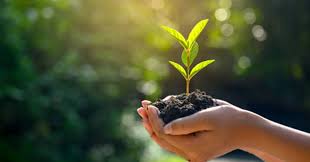
- 06 Jan 2025
In News:
In a first, the Chhattisgarh state has introduced an innovative plan that connects the ecosystem services of its forests with the Green Gross Domestic Product (Green GDP).
Key Highlights:
Chhattisgarh's Green GDP Initiative:
- First State in India to link forest ecosystem services with Green GDP.
- Forests cover 44% of Chhattisgarh's land area, playing a vital role in climate change mitigation.
- Key forest products (tendu leaves, lac, honey, medicinal plants) contribute significantly to the rural economy.
Green GDP:
- Definition: An adjustment of traditional GDP that accounts for environmental costs like resource depletion and ecosystem degradation.
- Formula:
- Green GDP = Net Domestic Product (NDP) − (Cost of Resource Depletion + Ecosystem Degradation)
- NDP = GDP − Depreciation of Produced Assets.
Importance of Green GDP:
- Traditional GDP overlooks the environmental cost, treating activities like deforestation as economic gains.
- Green GDP adjusts for sustainability, ensuring long-term economic growth aligns with environmental preservation.
Global Context & Initiatives:
- SEEA (System of Environmental-Economic Accounting): Developed by the UN to track economic-environment relationships.
- WAVES: World Bank initiative integrating natural capital into national economic accounts.
- Bhutan’s GNH: Emphasizes ecological sustainability in development.
Benefits of Green GDP for Chhattisgarh:
- Promotes sustainable development by integrating economic and environmental goals.
- Climate Change Mitigation: Forests help absorb CO2, playing a key role in carbon sequestration.
- Biodiversity Conservation: Supports sustainable use of resources, preserving ecosystems.
- Cultural Integration: Acknowledges forests' cultural and spiritual importance to local tribal communities (e.g., sacred groves).
Key Features of the Initiative:
- Valuing Ecosystem Services: Includes clean air (CO? absorption), water conservation, and biodiversity.
- Eco-tourism Promotion: Developing jungle safaris and national parks, boosting local employment.
- Scientific Assessments: Employing experts to quantify forest contributions to the economy.
Challenges of Green GDP Framework:
- Valuation Complexity: Difficult to assign monetary value to non-market environmental benefits like biodiversity.
- Data Gaps: Lack of comprehensive data on environmental degradation and resource usage.
- Implementation: Requires significant changes in accounting systems and policymaking.
- Forest Definition: Plantations like oil palm may be counted as forests, misleading environmental assessments.
- Political Resistance: States may manipulate data to secure funding, prioritizing plantations over natural forests.
- Local Integration: Difficulties in involving local bodies like Panchayats due to literacy and awareness gaps.
Future of Green GDP:
- Sustainable Resource Use: Encourages responsible consumption and production, aligning with SDG 12.
- Climate Action: Contributes to the reduction of fossil fuel reliance and promotes renewable energy, aligning with SDG 13.
- Green Investments: Stimulates green technologies and industries, fostering sustainable economic growth (SDG 8).
LEADS 2024 Report

- 06 Jan 2025
In News:
- Launch of the Logistics Ease Across Different States (LEADS) 2024 report and the Logistics Excellence, Advancement, and Performance Shield (LEAPS) 2024 awards in New Delhi.
Key Highlights:
- Objective of LEADS 2024 Report:
- Evaluate logistics performance across Indian states and union territories.
- Provide actionable insights for logistics reforms to foster competitive federalism.
- Assess logistics infrastructure, services, regulatory environment, and sustainability efforts.
- Performance Evaluation:
Region Achievers Fast Movers Aspirers
Coastal States Gujarat, Karnataka, Maharashtra, Odisha, Tamil Nadu Andhra Pradesh, Goa Kerala, West Bengal
Landlocked States Haryana, Telangana, Uttar Pradesh, Uttarakhand Bihar, Himachal Pradesh, Madhya Pradesh, Punjab, Rajasthan Chhattisgarh, Jharkhand
North-Eastern States Assam, Arunachal Pradesh Meghalaya, Mizoram, Nagaland, Sikkim, Tripura Manipur
Union Territories Chandigarh, Delhi Dadra and Nagar Haveli & Daman and Diu, Jammu and Kashmir, Andaman and Nicobar Islands, Ladakh
Lakshadweep, Puducherry
- Key Remarks:
- Action Plans for Better Logistics: States should develop regional and city-level logistics plans, including for last-mile connectivity, to attract investments.
- Green Logistics: Advocate for sustainable logistics practices to ensure environmentally responsible growth.
- Public-Private Partnerships (PPP): Encourage PPPs to promote multi-modal hubs and streamline logistics infrastructure.
- Technological Integration: Push for the adoption of Artificial Intelligence, Machine Learning, and Data Analytics to enhance efficiency in logistics operations.
- Skill Development & Gender Inclusivity: Focus on workforce inclusivity and skill development to boost sectoral growth. Promote gender diversity in logistics.
- LEAD Framework: Urge logistics sectors to embrace the LEAD framework (Longevity, Efficiency, Accessibility, Digitalisation) for transformation.
- LEAD Framework and Recommendations:
- Longevity, Efficiency, and Effectiveness: Improve long-term logistics strategies.
- Accessibility and Accountability: Ensure better reach and transparent logistics practices.
- Digitalisation: Enhance digital transformation across logistics processes.
- About LEADS:
- Full Form: Logistics Ease Across Different States.
- Launched: 2018 by the Department for Promotion of Industry and Internal Trade (DPIIT), Ministry of Commerce and Industry.
- Purpose: To assess and improve logistics infrastructure and services across Indian states and UTs.
- Methodology: Based on over 7,300 responses from a pan-India survey and inputs from over 750 stakeholder consultations.
- LEAPS 2024 Awards: Recognized excellence in the logistics sector across categories such as air, rail, road, maritime freight service providers, startups, MSMEs, and educational institutions.
- PM GatiShakti Course: Launched a 15-hour online course on “PM GatiShakti Concept for Efficient Infrastructure Planning and National Development”, hosted on iGOT Karmayogi platform and UGC SWAYAM portal.
- Logistics Cost Framework Report: Unveiled a report on the logistics cost framework, aiming to accurately estimate logistics costs in India through a hybrid methodology, incorporating both EXIM and domestic cargo data.
- Significance of LEADS:
- Provides critical insights into logistics performance, helping States and UTs to improve infrastructure, services, and regulatory practices.
- Plays a key role in India's vision of becoming a $32 trillion economy by 2047 by improving logistics efficiency, sustainability, and global competitiveness.
Human Metapneumovirus (HMPV)
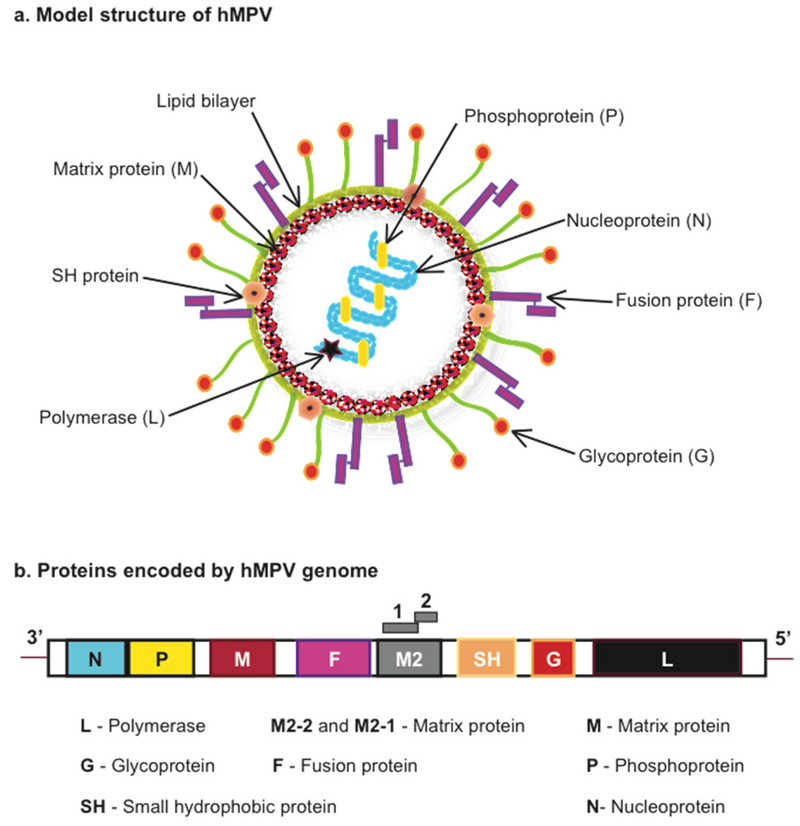
- 06 Jan 2025
In News:
Five years after the COVID pandemic, China is experiencing a surge in HMPV cases, particularly in children under 14 years of age
Key Highlights:
- What is HMPV?
- A respiratory virus from the Pneumoviridae family, discovered in 2001.
- Causes both upper and lower respiratory tract infections, similar to the common cold or flu.
- Origin and Discovery:
- Identified in the Netherlands in 2001 through genomic sequencing of respiratory samples.
- Risk Groups:
- Children under 5 years, especially infants.
- Elderly individuals (65+).
- Immunocompromised persons and those with chronic respiratory conditions (e.g., asthma).
- Symptoms:
- Common: Cough, runny nose, fever, sore throat.
- Severe: Wheezing, shortness of breath, potentially leading to bronchitis or pneumonia.
- Incubation Period: 3-6 days.
- Transmission:
- Spread via droplets from coughing or sneezing.
- Close contact (e.g., handshakes, hugs).
- Contaminated surfaces, touching face after contact.
- Treatment:
- No specific antiviral treatment or vaccine available.
- Symptom management: hydration, rest, OTC medications for fever and congestion.
- Severe cases may require hospitalization (oxygen therapy, IV fluids).
- Diagnosis:
- NAATs (Nucleic Acid Amplification Tests): Detect viral genetic material.
- Antigen-based immunoassays: For severe cases or outbreaks.
- Complications:
- Can lead to bronchiolitis, bronchitis, pneumonia, asthma, or COPD flare-ups.
- Risk of ear infections (otitis media) in some cases.
- Prevention:
- Hygiene: Regular handwashing, covering coughs/sneezes, maintaining personal hygiene.
- Physical Distancing: Avoid close contact, wear masks in crowded settings.
- Caution for Vulnerable Groups: Extra care for individuals with chronic respiratory conditions.
Global Situation:
- China: Experiencing a rise in HMPV cases, particularly among children under 14 years.
- India: No reported cases yet, but monitoring the situation closely.
Key Facts:
- HMPV is a winter virus commonly seen in colder months (winter and early spring).
- Estimated 10%-12% of respiratory illnesses in children are caused by HMPV.
- The virus is part of the Pneumoviridae family, alongside respiratory syncytial virus (RSV), measles, and mumps.
No specific antiviral treatment or vaccine for HMPV; antibiotics are ineffective.
National Sports Awards 2024
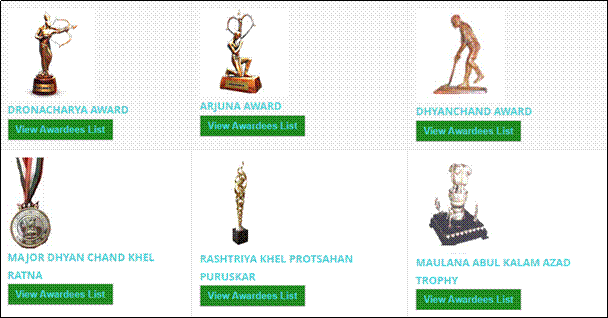
- 06 Jan 2025
In News:
The National Sports Awards 2024 were recently announced by the Ministry of Youth Affairs & Sports to celebrate excellence in Indian sports.
Key Highlights:
Major Dhyan Chand Khel Ratna Award
- This is India's highest sporting honor, renamed in 2021 after hockey legend Major Dhyan Chand.
- It’s awarded for exceptional performance in sports over a four-year period.
- 2024 Winners:
- Gukesh D (Chess)
- Harmanpreet Singh (Hockey)
- Praveen Kumar (Para-Athletics)
- Manu Bhaker (Shooting)
- The award includes a cash prize of Rs 25 lakh.
Arjuna Award
- Recognizes outstanding performance in sports over the previous four years and attributes like leadership, discipline, and sportsmanship.
- 2024 Winners: Various athletes across multiple disciplines received this honor.
Arjuna Award (Lifetime)
- Given to retired athletes who have not only excelled during their careers but also contributed to the promotion of sports post-retirement.
- 2024 Winners:
- Shri Sucha Singh (Athletics)
- Shri Murlikant Rajaram Petkar (Para-Swimming)
Dronacharya Award
- Given to coaches who have made a consistent and significant contribution by guiding sportspersons to excel at international events.
- The award includes a bronze statue of Dronacharya, a certificate, and a cash prize.
Maulana Abul Kalam Azad (MAKA) Trophy
- Awarded to the top-performing university in the Khelo India University Games.
- 2024 Winner: Chandigarh University.
Rashtriya Khel Protsahan Puruskar
- Recognizes individuals or organizations for their contribution to the promotion and development of sports.
- 2024 Winner: Physical Education Foundation of India.
These awards were selected by a committee led by Justice (Retd.) V. Ramasubramanian and include eminent sportspersons, journalists, and sports administrators. The winners will receive their awards from the President of India, marking a prestigious moment in Indian sports.
Saint Narahari Tirtha

- 05 Jan 2025
In News:
In a remarkable discovery, a member of the Team of Research on Culture and Heritage (TORCH) has hit upon a three-foot idol of the 13th Century saint, Narahari T?rtha recently.
Key Highlights:
Birth and Early Life:
- Born circa 1243 CE in Chikakolu (modern-day Srikakulam, Andhra Pradesh).
- Hailing from an aristocratic family in the Gajapati Empire of Odisha.
Philosophical Influence:
- A prominent disciple of Madhvacharya, the founder of Dvaita philosophy (dualism).
- Narahari Tirtha played a key role in propagating Madhva's Vaishnavism in Eastern India, particularly in the Kalinga region (modern-day Odisha and Andhra Pradesh).
Role in Eastern Ganga Dynasty:
- Served as a minister in the Eastern Ganga Dynasty for over 30 years.
- Guided kings to align their governance with Sanatana Dharma and reformed temple administration.
- His contributions are documented in inscriptions at the Simhachalam and Srikurmam temples.
Religious and Cultural Contributions:
- Played a key role in spreading Vaishnavism and Dvaita philosophy.
- First to compose Devaranamas in Kannada, marking a significant cultural contribution.
- Contributed to the development of Yakshagana Bayalata (a dance-drama) and the classical dance form that evolved into Kuchipudi.
Writings and Intellectual Legacy:
- Authored 15 works, with two surviving texts: Gita Bhasya and Bhavaprakasika.
- His teachings and writings significantly impacted the Madhva tradition and regional literature.
Discovery of the Idol:
- A three-foot idol of Narahari Tirtha was discovered at Simhachalam Temple in Visakhapatnam, Andhra Pradesh.
- The idol depicts Narahari Tirtha holding a script on palm leaves, flanked by devotees.
Contributions to Temple and Education:
- Transformed the Simhachalam Temple into a renowned center for Vaishnavism.
- Played a crucial role in safeguarding sacred idols like Moolarama and Moola Sita for Madhvacharya.
Cultural and Artistic Legacy:
- Promoted regional art forms, helping establish Kuchipudi as a classical dance style in Andhra Pradesh.
- Advocated for Yakshagana Bayalata, a form of dance-drama popular in coastal Karnataka.
Honors and Recognition:
- Bestowed titles such as "Loka Surak?a?a Ati Nipu?a?" and "Yo Avati Kalinga Bhu Sambhav?n" for his contributions to philosophy and governance.
Final Resting Place:
- Narahari Tirtha was consecrated near Chakratirtha at Hampi on the banks of the Tungabhadra River after his death.
- His legacy continues to influence the temple traditions, especially in Puri Jagannath, strengthening the Madhva influence in Odisha.
Year of Artificial Intelligence
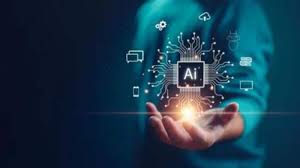
- 05 Jan 2025
In News:
The All India Council for Technical Education (AICTE) has declared 2025 as the "Year of Artificial Intelligence" (AI), aiming to empower over 14,000 AICTE-approved colleges and benefit 40 million students. This initiative aligns with the Prime Minister’s vision to make India a global leader in AI and technology.
Key Objectives and Features of the AICTE AI Initiative:
- Positioning India as a Global AI Leader:
- Empowering students with AI skills to drive innovation and lead in the emerging AI-driven economy.
- Preparing India’s workforce for the technological advancements of the future.
- Core Elements of the AICTE AI Initiative:
- AI Affirmation Pledge: Institutions will adopt and display an AI Affirmation Pledge, focusing on innovation, ethics, and education in AI.
- Comprehensive AI Integration:
- Introducing interdisciplinary AI courses and research programs.
- Setting up AI labs in collaboration with industries to meet global standards.
- Promoting ethical AI practices with societal benefits in focus.
- AI Awareness Campaign:
- “AI for All: The Future Begins Here” campaign includes workshops, hackathons, and guest lectures.
- Formation of student-driven AI chapters to foster innovation and research.
- Faculty Development & Industry Partnerships:
- Workshops and certification programs for faculty to improve AI teaching.
- Collaboration with companies like Adobe, CISCO, and IBM for student exposure through internships and mentorships.
- Recognition of Excellence: Institutions excelling in AI integration will be recognized, serving as role models for others.
- Action Plan for Institutions:
- All institutions are required to submit AI Implementation Plans by December 31, 2024. These plans will be evaluated by the AICTE Approval Bureau and exemplary submissions will be highlighted as benchmarks.
- Shaping India as a Global AI Leader:
- AICTE aims to revolutionize India’s education system and enhance its position in the global AI race, focusing on building a self-reliant workforce.
Additional Context on AICTE and its Role:
- AICTE Overview:
- A statutory body and national-level council under the Ministry of Education.
- Established in November 1945 as a national-level apex advisory body for technical education in India.
Government Initiatives to Support AI and Consumer Protection:
- AI and Consumer Protection:
- AI-driven tools launched to enhance consumer protection, such as the National Consumer Helpline, e-MAAP Portal, and Jago Grahak Jago mobile application.
- New guidelines for regulating deceptive marketing in e-commerce to ensure consumer confidence in the digital market.
- Tools like the e-Daakhil Portal for online complaint filing.
Impact:
- This initiative will have a far-reaching impact, involving more than 14,000 institutions and 40 million students nationwide, preparing them for leadership roles in AI and technology, and helping India secure its future in the global AI-driven economy.
Translocation of Tigers from Madhya Pradesh
- 05 Jan 2025
In News:
Madhya Pradesh to translocate 15 Tigers to Rajasthan, Odisha and Chhattisgarh.
Key Highlights of the Translocation:
- Scale of Translocation: Largest relocation of big cats from a single state in India.
- Approval: NTCA has approved the translocation of 15 tigers from Madhya Pradesh to Rajasthan, Chhattisgarh, and Odisha.
- Source Reserves:
- Bandhavgarh, Panna, Kanha, and Pench Tiger Reserves in Madhya Pradesh.
- Distribution Plan:
- Rajasthan: 4 tigresses.
- Chhattisgarh: 2 male tigers and 6 tigresses.
- Odisha: 1 male tiger and 2 tigresses.
- Funding: States receiving tigers will bear all expenses related to translocation.
Objectives of the Translocation:
- Enhance Tiger Conservation: Reintroduce and bolster tiger populations in recipient states.
- Population Management: Relocate tigers to areas with suitable habitats to alleviate territorial disputes in overpopulated reserves.
- Genetic Diversity: Introduce new individuals to isolated tiger groups to prevent inbreeding and support long-term species survival.
About Kanha, Bandhavgarh, and Pench Tiger Reserves:
- Kanha Tiger Reserve:
- Location: Maikal range of the Satpura Mountains.
- Significance: Largest national park in Madhya Pradesh.
- Distinct Feature: First tiger reserve in India with an official mascot, ‘Bhoorsingh the Barasingha’.
- Flora and Fauna: Rich biodiversity with Royal Bengal Tigers, leopards, and the IUCN Vulnerable species, Barasingha.
- Bandhavgarh Tiger Reserve:
- Location: Between Vindhyan and Satpura ranges in Umaria district, Madhya Pradesh.
- Significance: Known for one of the highest densities of Royal Bengal Tigers in India.
- Historical Link: The ancient Bandhavgarh Fort, linked to the legend of Lord Rama and Lakshmana.
- Pench Tiger Reserve:
- Location: Spans Seoni and Chhindwara districts in Madhya Pradesh, extends into Maharashtra.
- Significance: Inspiration for Rudyard Kipling’s The Jungle Book.
- Flora and Fauna: Includes teak, saag, mahua forests; tigers, leopards, wild dogs, and gaur are key species.
Tiger Translocation Project Overview:
- First Project:
- Initiated in 2018, two tigers relocated from Kanha and Bandhavgarh to Satkosia Tiger Reserve in Odisha.
- Main Objectives:
- Reintroduce Tigers: In areas where they have been extirpated or extinct.
- Alleviate Territorial Disputes: Overpopulated reserves need additional tigers to reduce human-animal conflict.
Benefits of Translocation:
- Ecological Balance: Restores predator-prey dynamics in underpopulated reserves.
- Human-Animal Conflict Mitigation: Reduces conflict in overcrowded reserves.
- Rewilding Landscapes: Revives areas where tigers were locally extinct.
Concerns Associated with Translocation:
- Local Community Protests: Villagers fear tigers will pose a threat to their safety.
- Territorial Disputes: New tigers may face conflict with resident tigers.
- Poor Forest Management: Inadequate prey augmentation and habitat management may hinder success.
Madhya Pradesh’s Role in Tiger Conservation:
- Largest Tiger Population: Madhya Pradesh hosts the largest number of tigers in India, with 785 tigers as per NTCA’s 2022 report.
- Tiger Reserves: The state is home to nine tiger reserves, including the newly notified Madhav Tiger Reserve in Shivpuri.
- Translocation Strategy: Madhya Pradesh’s involvement helps reduce local tiger population pressure and contributes to broader conservation efforts across India.
Inter-State Tiger Translocation Goals:
- Reinforcement and Reintroduction: Introduce tigers into areas historically part of their range but from which they have been extirpated or extinct.
- Genetic Diversity: Introduce new tigers to isolated populations to maintain long-term population health.
Thanthai Periyar Memorial

- 05 Jan 2025
In News:
In a significant event for both Kerala and Tamil Nadu, Kerala Chief Minister Pinarayi Vijayan and Tamil Nadu Chief Minister M.K. Stalin are set to reunite at Vaikom, to inaugurate the extensively renovated memorial dedicated to Tamil reformist E.V. Ramasami Naicker, popularly known as Thanthai Periyar. This marks a historic occasion over a year and a half after they jointly inaugurated the centenary celebrations of the Vaikom Satyagraha.
Key Highlights:
Memorial History and Significance:
- Established: January 1994
- Location: 70-cent property near Valiyakavala Junction, Vaikom
- Ownership: Tamil Nadu Government
- Periyar Statue: Installed in 1985 on 84 cents of land provided by Kerala government; remains the centerpiece.
- Historical Neglect: The memorial suffered from years of neglect before the renovation.
Role of Periyar in Vaikom Satyagraha:
- Vaikom Satyagraha (1924–1925):
- First organized movement for the rights of the ‘untouchable’ communities in India.
- Led by prominent leaders like T.K. Madhavan, K.P. Kesava Menon, and K. Kelappan.
- Periyar, alongside his wife Nagamma, joined the movement, seeking access to public roads leading to the Sri Mahadeva Temple in Vaikom.
- Periyar’s Contribution:
- Was imprisoned twice for his participation in the movement.
- Honored with the title Vaikom Veeran for his leadership.
- Impact: The movement played a crucial role in securing social equality for all sections of society.
Periyar’s Legacy:
- Self-Respect Movement: Founded by Periyar to promote social equality and eliminate caste-based discrimination.
- Dravidar Kazhagam: A political and social organization founded by Periyar, advocating for the rights of the Dravidian people.
- Father of the Dravidian Movement: Periyar’s philosophy and activism laid the foundation for the Dravidian political ideology and social reforms in Tamil Nadu.
Rabbit Fever
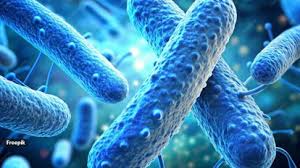
- 05 Jan 2025
In News:
Tularemia, commonly known as "rabbit fever," is a rare but highly infectious bacterial disease caused by Francisella tularensis. Though uncommon, it can lead to severe health complications if left untreated. Over recent years, cases of tularemia have been on the rise in the United States, drawing attention to the broader environmental and epidemiological factors influencing the disease’s spread.
Rising Incidence of Tularemia
Between 2011 and 2022, the United States saw a 56% increase in the annual average incidence of tularemia infections compared to the previous decade, according to the Centers for Disease Control and Prevention (CDC). Vulnerable populations include children aged 5 to 9, older men, and individuals of American Indian or Alaska Native descent. The increasing number of reported cases highlights the growing concern over this disease, despite its rarity.
Transmission Pathways
Tularemia is primarily transmitted through:
- Direct Contact with Infected Animals: Common carriers include rabbits, hares, and rodents, particularly those infected with Francisella tularensis. This presents a risk for individuals working closely with wildlife, such as hunters.
- Insect Bites: Ticks, especially in regions with high tick populations, and deer flies can spread the disease.
- Contaminated Food or Water: Consuming undercooked meat from infected animals or untreated water can lead to infection.
- Inhalation of Contaminated Dust or Droplets: This is a potential risk in agricultural or laboratory settings and can result in pulmonary tularemia.
Contributing Factors to the Rise in Cases
Several factors contribute to the increasing prevalence of tularemia:
- Climate Change: Rising temperatures are increasing tick activity and extending breeding seasons, allowing the bacteria to spread more easily.
- Habitat Encroachment: Deforestation and increased human interaction with wildlife are amplifying exposure to infected animals.
- Improved Diagnostic Tools: Advances in surveillance and testing methods have made it easier to detect tularemia, leading to more reported cases.
Early Symptoms and Diagnosis
Tularemia symptoms can vary depending on the route of infection. Symptoms typically appear 3 to 5 days post-exposure and may include:
- Sudden high fever (up to 104°F or 40°C)
- Chills, fatigue, and body aches
- Swollen lymph nodes, especially near the site of infection (e.g., under the arms or in the groin)
There are four primary forms of tularemia:
- Ulceroglandular: Characterized by skin ulcers and swollen lymph nodes.
- Glandular: Swollen lymph nodes without ulcers.
- Pneumonic: Lung infection, often resulting from inhalation.
- Typhoidal: A more systemic form, with symptoms like fever and abdominal pain.
Differentiating tularemia from other conditions such as flu, pneumonia, or lymphadenitis is key for diagnosis. A skin ulcer or swollen lymph nodes in individuals with recent exposure to wildlife or ticks is a critical diagnostic clue.
Treatment and Prognosis
Tularemia is treatable with antibiotics. First-line treatment includes streptomycin or gentamicin, while doxycycline or ciprofloxacin may be used for milder cases. Treatment typically lasts 10 to 21 days, and when initiated promptly, the disease has a high recovery rate and minimal complications. However, untreated cases can lead to chronic infections, lung abscesses, pneumonia, or severe sepsis, with mortality rates of 1-2% under treatment. Untreated severe cases can result in mortality rates between 30% and 60%.
Tularemia in India: A Potential Concern?
Tularemia is extremely rare in India, mainly due to the country's differing ecological conditions and limited interaction with the primary reservoirs of Francisella tularensis. However, awareness remains crucial, especially for individuals traveling to endemic regions or working in wildlife settings. Despite its rarity in India, the rising global incidence and changing environmental factors warrant continued vigilance.
Torrijos-Carter Treaties
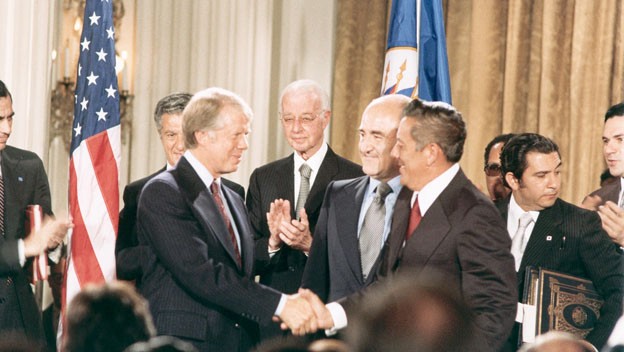
- 04 Jan 2025
In News:
Recently, Donald Trump threatened to take back the Panama Canal, calling the transfer treaty “foolish”.
Why Trump Called the Panama Canal Transfer 'Foolish'?
- Transit Fees:
- Trump expressed frustration over high transit fees imposed by the Panama Canal Authority (ACP) on U.S. vessels.
- In 2023, due to droughts affecting Lakes Gatun and Alhajuela (which are crucial for canal operations), the ACP reduced crossing slots by 36%, leading to an increase in transit fees for ships.
- Chinese Presence:
- Trump is also concerned about the growing Chinese influence in the Panama Canal region.
- In 2017, Panama became the first Latin American country to sign a Belt and Road Initiative (BRI) agreement with China, increasing Chinese investments.
- Hutchison Ports PPC, a subsidiary of a Hong Kong-based company, operates ports near the canal, raising concerns over China's influence on logistical operations and potential surveillance capabilities.
The Torrijos-Carter Treaties and Canal Transfer:
- Panama Canal Treaty (1977):
- The treaty transferred control of the Panama Canal from the U.S. to Panama by December 31, 1999.
- The U.S. would no longer control the canal, and Panama would assume full responsibility for its operation and defense.
- Permanent Neutrality Treaty (1977):
- Declared the canal to be neutral and open to vessels of all nations.
- U.S. Right to Defense: The U.S. retained the right to defend the neutrality of the canal and had priority passage in case of military emergencies.
Panama’s Response to Trump’s Criticisms:
- Defense of Transit Rates:
- President José Raúl Mulino rejected Trump’s claims, defending the transit fees as being in line with international standards and based on a transparent procedure.
- Sovereignty:
- Mulino emphasized Panama’s sovereignty over the canal, asserting that Panama’s control over the canal was non-negotiable. He categorically denied the presence of Chinese soldiers in the canal, stating that there would never be any.
China’s Response:
- China's Position:
- China's Foreign Ministry responded by emphasizing that the Panama Canal is a neutral passageway, a vital infrastructure for Panama and the global trade system.
- China affirmed its respect for Panama's sovereignty and denied any military presence in the canal area.
Implications and Future:
- Diplomatic Tensions:
- The issue of transit fees and foreign influence, particularly China's presence in the region, is likely to remain a point of diplomatic negotiation.
- Panama is expected to assert its sovereignty and seek international support to prevent any external interference in the canal’s operations.
- U.S. Influence:
- The U.S. might attempt to renegotiate terms related to the Panama Canal's operations, especially concerning transit fees and military rights, although Panama remains firm on maintaining control.
Torrijos-Carter Treaties:
- Significance:
- Panama Canal Treaty and Permanent Neutrality Treaty marked a major shift in U.S.-Latin America relations, ending U.S. control and restoring Panamanian sovereignty.
- The treaties also ensured the neutrality of the canal while maintaining U.S. military access in emergencies.
- Impact:
- The treaties were a symbol of Panama’s regained sovereignty and played a key role in stabilizing relations between the U.S. and Panama, as well as resolving tensions over control of the canal.
Centralized Pension Payments System (CPPS)
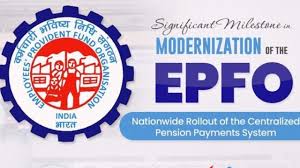
- 04 Jan 2025
In News:
- The CPPS aims to enhance pension accessibility and simplify the disbursement process for over 7.85 million pensioners in India.
- Key Benefit: Pensioners can now receive their pension from any bank or branch across India, eliminating the need for physical verifications and providing seamless nationwide pension disbursement.
Key Highlights:
- Key Features:
- No need for physical verification: Pensioners do not have to visit the bank for verification at the time of pension commencement.
- Seamless pension disbursement: Upon release, the pension amount is credited immediately.
- Nationwide access: Pensioners can withdraw their pension from any bank or branch, without needing to transfer Pension Payment Orders (PPO) when relocating or changing banks.
- Significance:
- Eliminates the decentralised pension system, where each regional office maintained separate agreements with a few banks.
- Ensures pension portability, especially for pensioners who move or change banks.
Employees’ Provident Fund Organisation (EPFO):
- Overview:
- EPFO is a statutory body under the Employees' Provident Funds and Miscellaneous Act, 1952, and works under the Ministry of Labour and Employment.
- Structure:
- Administered by a tripartite board called the Central Board of Trustees, consisting of representatives from:
- Government (Central & State)
- Employers
- Employees
- The Central Board of Trustees is chaired by the Union Minister of Labour and Employment.
- Administered by a tripartite board called the Central Board of Trustees, consisting of representatives from:
- Key Schemes Operated by EPFO:
- Employees’ Provident Funds Scheme, 1952 (EPF): A savings scheme for workers.
- Employees’ Pension Scheme, 1995 (EPS): A pension scheme for employees after retirement.
- Employees’ Deposit Linked Insurance Scheme, 1976 (EDLI): Provides life insurance coverage to workers.
- Global Coverage: EPFO is also the nodal agency for implementing Bilateral Social Security Agreements with other countries, offering reciprocal social security benefits to international workers from countries with such agreements.
- Impact: The EPFO schemes cover Indian workers and international workers from countries with which EPFO has signed bilateral agreements.
Key Facts:
- CPPS improves the convenience and accessibility of pension services for millions of pensioners across India by simplifying the pension disbursement process and providing nationwide access without the need for physical verifications.
- EPFO, a statutory body under the Ministry of Labour and Employment, plays a crucial role in managing provident funds, pensions, and insurance schemes for both domestic and international workers, fostering social security across India.
Open Data Kit (ODK) Toolkit
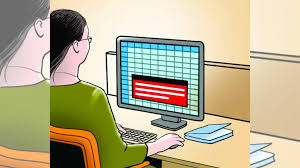
- 04 Jan 2025
In News:
- The Comptroller and Auditor General (CAG) of India has deployed the Open Data Kit (ODK) platform to enhance transparency in government spending and improve accountability in the delivery of government schemes.
- The toolkit is being used for designing, collecting, and managing data relevant to audits.
Key Highlights:
Objective:
- Enhance transparency in public spending.
- Improve accountability in government schemes and projects.
- Collect real-time beneficiary feedback to aid audit planning and identify areas needing additional review.
Key Features:
- End-to-end encryption: Ensures secure data management.
- Integration with CAG’s Operating System (OIOS): Facilitates seamless analysis and management of data.
- Multi-language support: Allows for surveys in multiple languages, making it more accessible to diverse beneficiaries.
- User-friendly interface: Simplifies the design and management of data collection processes for auditors.
Usage and Applications:
- Beneficiary surveys are a key tool for gathering data, helping CAG identify problem areas in government schemes.
- The ODK toolkit was recently deployed in audits of AIIMS institutions in Mangalagiri (Guntur) and Bibinagar (Hyderabad) to assess patient satisfaction and gather evidence for performance reviews.
Working Process:
- Surveys are designed on the ODK platform and deployed to beneficiaries.
- Data is collected in real-time and analyzed using the OIOS system to generate actionable insights for audits.
- Beneficiary feedback is used to evaluate scheme delivery and improve efficiency.
Significance:
- Facilitates data-driven decision-making in audits, ensuring that audits are more transparent and evidence-based.
- Improves the citizen-centric evaluation of government schemes by gathering direct feedback from beneficiaries.
- Enhances the performance review of key institutions like AIIMS, contributing to better service delivery.
- The introduction of the ODK toolkit is part of the CAG’s efforts to use digital tools for better governance and accountability in the public sector. This also aligns with the growing trend of using technology for governance and auditing.
Project VISTAAR
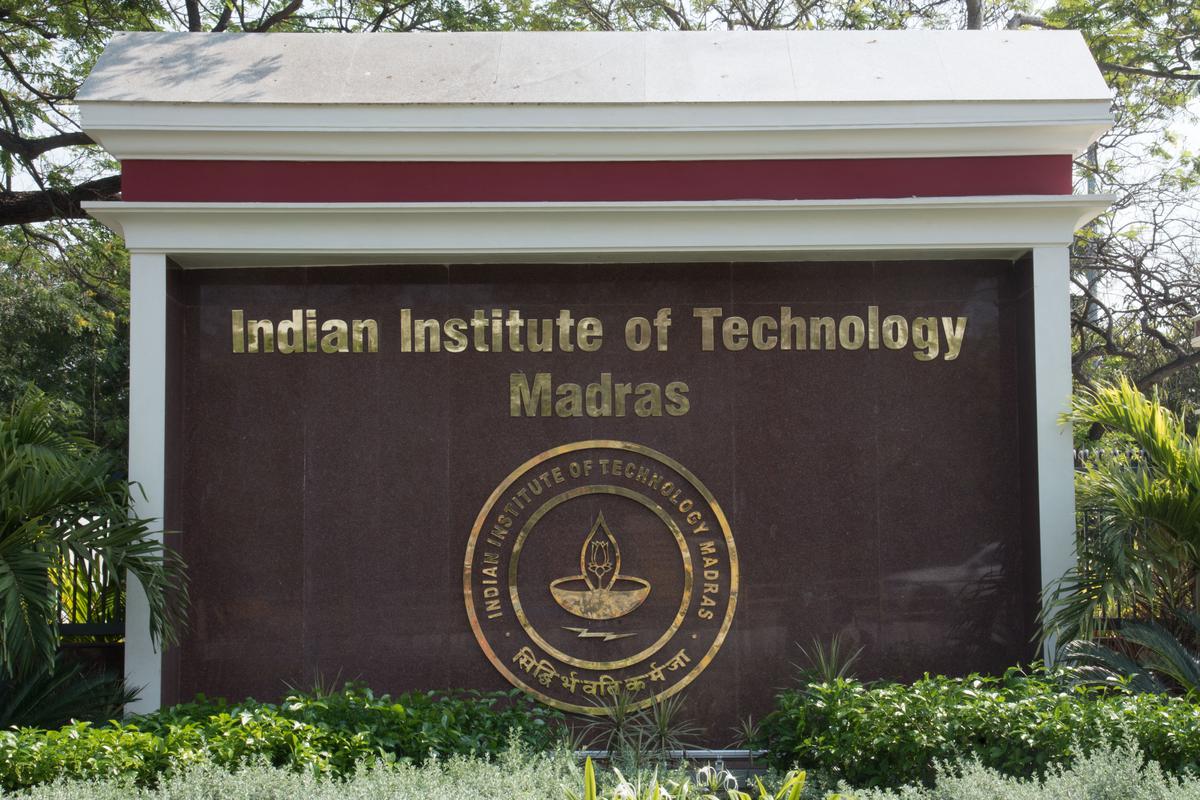
- 04 Jan 2025
In News:
IIT Madras has partnered with the Ministry of Agriculture and Farmers’ Welfare on Project VISTAAR (Virtually Integrated System to Access Agricultural Resources). MoU signed between the Ministry and IIT Madras to integrate information about agricultural start-ups into the VISTAAR platform.
Key Highlights:
Project Objectives:
- Digitalisation of Agricultural Extension: To enhance the efficiency and effectiveness of the agricultural extension system through digital platforms.
- Access to Start-Up Innovations: Provide farmers easy access to over 12,000 start-ups in agriculture and allied sectors, connecting them to technological solutions and innovations.
- Support for Sustainable Agriculture: Focus on making farming more sustainable and climate-resilient by promoting adoption of innovative technologies.
Key Features of VISTAAR:
- Integration of start-up data via IIT Madras' startup information platform and its incubatee, YNOS Venture Engine.
- Advisory services covering:
- Crop production
- Marketing
- Value addition
- Supply chain management
- Information on government schemes for agriculture, allied sectors, and rural development.
- Real-time, contextual, and accurate information to enhance decision-making and improve farming practices.
Significance of the Project:
- The platform will expand the outreach of agricultural extension services, providing support to farmers across India.
- It will ensure farmers access high-quality advisory services that are critical for improving productivity and income.
- Integration of start-up-driven innovations will aid in the adoption of climate-resilient farming practices.
- Timely and accurate information will empower farmers to make informed decisions and improve the efficiency of agricultural processes.
Impact on Farmers:
- Digitalisation will provide farmers with easier access to expert advice and resources, enhancing productivity.
- Improved access to government schemes ensures farmers can avail themselves of financial and technical support for development.
- The project aligns with national objectives of enhancing agriculture’s contribution to India’s economy and ensuring food security.
Air India In-Flight Wi-Fi Connectivity

- 04 Jan 2025
In News:
- Tata Group’s Air India launched free Wi-Fi connectivity on select domestic and international flights.
- First Indian airline to offer Internet connectivity on domestic flights.
- The service is free for a limited introductory period on select domestic flights.
- Gradual expansion of Wi-Fi availability to more aircraft in the fleet.
Key Highlights:
Aircraft with Wi-Fi:
- Available on Airbus A350, Boeing 787-9, and select Airbus A321neo aircraft.
- Aircraft equipped with special hardware for Internet connectivity.
- Some aircraft, previously operated by Vistara, now part of Air India after the merger in November.
Technology Partner:
- Vistara’s in-flight Wi-Fi was facilitated by Tata Group’s Nelco, in collaboration with Panasonic Avionics.
- This service is now extended to select Air India domestic flights.
How to Access Wi-Fi:
- Passengers enable Wi-Fi on their devices and connect to the "Air India Wi-Fi" network.
- Redirected to an Air India portal where they enter details (PNR and last name) for access.
Connectivity Technologies:
- Air-to-Ground (ATG) Technology:
- Uses ground-based cellular towers to provide internet.
- Antenna on the aircraft’s belly picks up signals from nearby towers.
- Limited by tower availability, works best over land with dense coverage.
- Satellite-Based Connectivity:
- Uses satellites to provide internet by transmitting signals from ground stations to the aircraft.
- Provides wider coverage, particularly effective over oceans and sparsely populated areas.
In-Flight Wi-Fi Operation:
- Multiple in-cabin antennas collect signals from passengers’ devices.
- Signals are sent to an onboard server.
- For satellite-based systems, signals are transmitted via an antenna to satellites and then relayed to ground stations.
- For ATG systems, signals are sent directly to ground towers.
- In-flight Wi-Fi is slower compared to ground-based internet, though newer technologies are improving speed.
Cost Considerations:
- Airlines incur high initial costs for equipping aircraft with Wi-Fi technology (antennas and hardware).
- Air India is investing in a $400 million retrofit program for its fleet, which could include installing internet connectivity.
- Some airlines install Wi-Fi on new planes, while others retro-fit older models.
Revenue Model:
- Airlines often charge for Wi-Fi after offering a small volume of free internet.
- Some airlines provide free Wi-Fi for loyalty program members or premium passengers (business/first class).
- Air India is offering free Wi-Fi for now, but plans to introduce charges at a later date.
Future Outlook:
- In-flight internet is expected to become a significant source of ancillary revenue.
- Complimentary Wi-Fi for economy class passengers is unlikely in the near-to-medium term due to high costs involved in installation and operation.
Global Context:
- In-flight connectivity is becoming standard on major full-service carriers (FSCs) worldwide.
- Air India's move aligns with global trends, as it aims to be among the world’s leading airlines.
Ramesh Chand Panel

- 03 Jan 2025
In News:
The Government of India has formed an 18-member panel, headed by Ramesh Chand, a member of NITI Aayog, to revise the base year of the Wholesale Price Index (WPI) to 2022-23 from the current base year of 2011-12. The panel will also work on a roadmap for transitioning from WPI to the Producer Price Index (PPI).
Key Highlights:
Role and Mandates of the Panel:
- Revised Commodity Basket: The panel will recommend a new commodity basket for both WPI and PPI, reflecting structural changes in the economy.
- Review of Price Collection System: The panel will evaluate the current system for price collection and propose improvements.
- Computational Methodology: It will determine the computational methodology for both WPI and PPI to ensure accuracy in tracking price changes.
- The panel has been tasked with submitting its final report to the Office of the Economic Adviser at the Department for Promotion of Industry and Internal Trade (DPIT) within 18 months.
Understanding WPI vs. PPI:
- WPI (Wholesale Price Index) tracks the price of goods at the wholesale stage (i.e., goods sold in bulk to businesses), and excludes the service sector.
- Key Characteristics of WPI:
- Does not consider consumer-facing prices.
- Excludes services (about 55% of GDP).
- Can have double-counting bias due to multiple transactions before the final sale.
- Does not account for indirect taxes and may include export/import prices.
- Use: WPI helps in tracking bulk price movements between businesses, but doesn't fully represent consumer price inflation.
- Key Characteristics of WPI:
- PPI (Producer Price Index) tracks prices at various stages of production, considering both goods and services, and measures the average change in prices received by domestic producers.
- Key Characteristics of PPI:
- Excludes indirect taxes (making it more accurate for price movement tracking).
- Includes services, unlike WPI, giving a broader view of price trends across the economy.
- More aligned with international standards (System of National Accounts).
- Reflects prices before consumer consumption, providing a business-oriented perspective of price trends.
- Key Characteristics of PPI:
Why the Transition to PPI?
- The PPI is already used by major economies like the US, China, Germany, and Japan as it provides a more comprehensive measure of inflation from a producer’s perspective.
- It is expected to be a better indicator of inflationary trends in the overall economy, including both goods and services.
Challenges and Roadmap:
- The switch to PPI is complex, and the panel will need to ensure that the transition does not disrupt the current data collection and reporting systems. Both WPI and PPI will run concurrently until PPI stabilizes.
CGWB Report on Groundwater Contamination
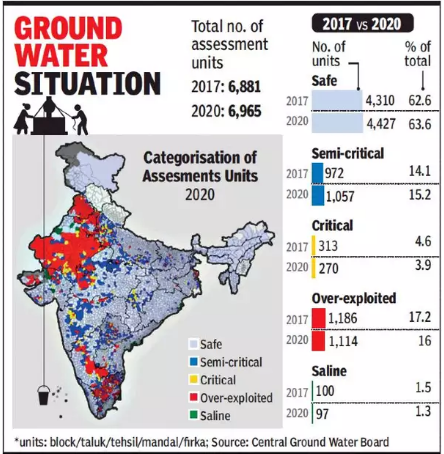
- 03 Jan 2025
In News:
The Central Ground Water Board (CGWB) report on groundwater quality reveals alarming levels of contamination in India's groundwater, with a focus on nitrate, fluoride, arsenic, and uranium. The report highlights the impact of agricultural practices, poor waste management, and urbanisation on water quality.
Key Highlights:
Nitrate Contamination:
- 440 districts in India report excessive nitrate levels in groundwater, with 20% of samples exceeding the permissible nitrate limit of 45 mg/L (WHO and BIS standards).
- High-risk regions: Rajasthan (49%), Karnataka (48%), and Tamil Nadu (37%) are the top states with high nitrate levels. Other affected states include Maharashtra, Telangana, Andhra Pradesh, and Madhya Pradesh.
- Causes: Nitrate contamination is mainly due to excessive use of nitrogen-based fertilizers, over-irrigation, and poor management of animal waste. Urbanisation and improper sewage systems exacerbate the problem.
Other Groundwater Contaminants:
- Fluoride contamination: A significant concern in Rajasthan, Haryana, Karnataka, Andhra Pradesh, and Telangana.
- Arsenic contamination: Elevated arsenic levels found in several states, especially in floodplains of the Ganga and Brahmaputra rivers (West Bengal, Jharkhand, Bihar, Uttar Pradesh, Assam, and Manipur).
- Uranium contamination: 42% of uranium-contaminated samples are from Rajasthan, and 30% from Punjab. Chronic exposure to uranium leads to kidney damage.
Groundwater Extraction and Availability:
- 60.4% of groundwater is being extracted across India.
- 73% of groundwater blocks are classified as in the ‘safe’ zone, an improvement from 67.4% in 2022.
Monsoon Impact:
- Nitrate contamination increases post-monsoon, with 32.66% of samples exceeding safe limits during the rainy season.
Health Implications:
- High nitrate levels, particularly dangerous for infants, can cause blue baby syndrome (methemoglobinemia).
- Long-term exposure to contaminants like fluoride and arsenic can lead to fluorosis and increase the risk of cancers and skin lesions.
Sources of Contamination:
- Agricultural practices: Excessive use of fertilizers, pesticides, and improper irrigation.
- Waste disposal: Leaking septic systems, sewage, and hazardous waste sites contribute to contamination.
- Urbanisation: Increased wastewater and sewage, along with poor waste management, worsen the issue.
Measures to Address Contamination:
- Jal Shakti Abhiyan (JSA) and Atal Bhujal Yojana (ABHY) aim to conserve and manage groundwater resources.
- National Aquifer Mapping and Management Program (NAQUIM) to assess and map aquifer systems.
- Pollution control programs: Under the Water (Prevention & Control) Act, 1974, and initiatives like sewage treatment plants and effluent treatment plants to manage wastewater.
- Public awareness: Campaigns like Swachh Bharat Mission and Catch the Rain educate communities on the importance of groundwater conservation.
Key Statistics:
- 56% of districts in India report groundwater nitrate levels exceeding the safe limit of 45 mg/L.
- Monsoon effects: Post-monsoon data shows a significant increase in contamination levels (32.66% vs. 30.77% pre-monsoon).
National e-Governance Awards (NAeG) Scheme 2025
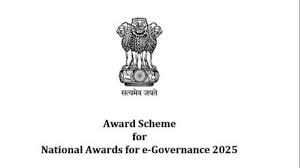
- 03 Jan 2025
In News:
- The Department of Administrative Reforms & Public Grievances (DARPG) has issued the guidelines for the 28th National e-Governance Awards (NAeG) 2025.
- Nominations for the awards can be submitted online via the official portal: www.nceg.gov.in.
Key Highlights:
- Award Categories: Nominations for the awards can be submitted under the following six categories:
- Government Process Re-engineering: Digital transformation through the use of technology to improve government processes.
- Innovation by Use of AI and New Age Technologies: Fostering citizen-centric services via artificial intelligence and other modern technologies.
- Best e-Gov Practices in Cyber Security: Recognizing excellence in e-Governance practices focused on cybersecurity.
- Grassroot Level Initiatives: Initiatives at the Districts, ULBs (Urban Local Bodies), or Gram Panchayats that deepen service delivery.
- Replication and Scaling Up of Successful Projects: Projects awarded in the past (such as NAeG or Prime Minister’s Awards) that have been successfully replicated or scaled.
- Digital Transformation using Data Analytics: Projects that leverage data analytics on digital platforms for enhancing governance.
- Eligibility: The awards are open to Central Ministries/Departments, State Governments, District Collectors, Research Institutions, and other relevant entities.
- Award Details:
- The NAeG 2025 will feature 16 awards:
- 10 Gold Awards.
- 6 Silver Awards.
- The NAeG 2025 will feature 16 awards:
- Incentives:
- Gold Award winners will receive a Trophy, Certificate, and an incentive of Rs 10 lakh.
- Silver Award winners will receive a Trophy, Certificate, and an incentive of Rs 5 lakh.
- The incentive will be used for further implementation of the awarded projects or bridging resource gaps in public welfare.
- Objective: The goal of the National Awards for e-Governance is to recognize and promote excellence in the implementation of e-Governance initiatives and digital transformation efforts across India.
Tinnitus
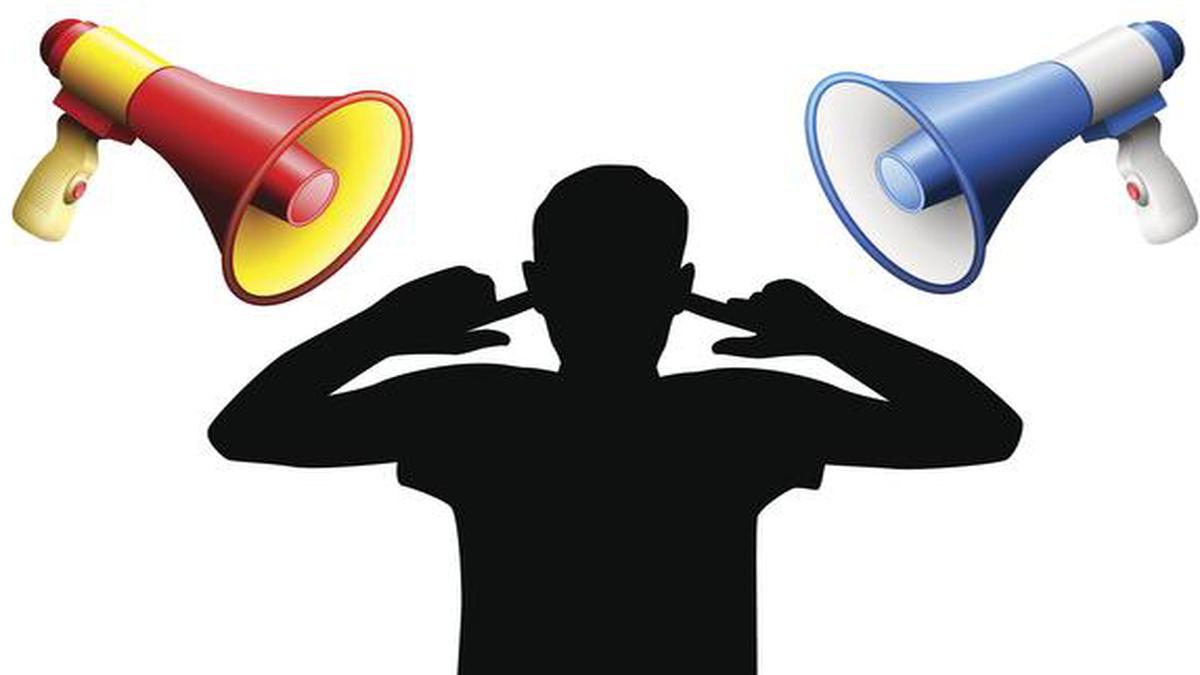
- 03 Jan 2025
In News:
Researchers at IIT Bombay have created an affordable device to diagnose and manage tinnitus, a condition involving persistent ringing or buzzing in the ears. The device offers personalized treatment solutions and a comprehensive approach to managing tinnitus.
What is Tinnitus?
- Tinnitus is the perception of sound in the absence of external noise, meaning only the affected individual hears it. It is often caused by underlying conditions such as age-related hearing loss, ear injury, or circulatory system problems.
- It affects over 740 million adults globally, with 120 million experiencing severe symptoms (JAMA Neurology, 2022).
- Common symptoms include sleep disturbances, depression, anxiety, irritability, and significant impacts on mental health and social life.
- Treatment may include: Hearing aids, sound-masking devices, medications, and coping techniques to manage the noise.
Device Features:
- Precise Tinnitus Matching: Identifies the exact nature and frequency of sounds experienced by the patient.
- Customizable Treatment: Provides a tailored, multimodal approach to treatment, ensuring each patient gets a unique experience.
- Tracking Progress: Includes tools to monitor disease progression and patient improvement over time.
Affordability and Accessibility:
- The device is cost-effective, addressing the issue of high costs associated with current tinnitus management solutions.
- This breakthrough is especially beneficial for low-income regions, where access to expensive tinnitus treatment is limited.
Impact on Healthcare:
- The device empowers doctors with precise diagnostic tools, improving the accuracy of diagnosis and the efficacy of treatment.
- It aims to enhance patient quality of life by offering an affordable and accessible solution to tinnitus management.
Funding and Development:
- The project has received funding from Tata Centre for Technology and Design (TCTD), IIT Bombay, and Wadhwani Research Centre for Bioengineering (WRCB).
Significance:
- This development represents a technological advancement in tinnitus care, with the potential to greatly reduce the burden of the condition and improve the well-being of affected individuals worldwide.
Quad 20th Anniversary
- 03 Jan 2025
In News:
Quad Foreign Ministers reaffirmed their commitment to a free, open, and peaceful Indo-Pacific. Marked the 20th anniversary of Quad cooperation, originally formed to respond to the 2004 Indian Ocean earthquake and tsunami.
Key Highlights:
- What is the Quad?
- A strategic forum of the US, Japan, India, and Australia aimed at regional security and economic cooperation in the Indo-Pacific region.
- Founded on shared principles of democracy, human rights, rule of law, and countering China's influence.
- Origins:
- Quad traces its origins to the 2004 Tsunami relief efforts.
- Formed formally in 2007, but Australia withdrew in 2008 due to regional tensions. It rejoined in 2017 following strengthened US-Australia ties.
- Commitment to Regional Security:
- Focus on countering China’s assertive behavior in the Indo-Pacific.
- Ensuring maritime security, countering illegal fishing, promoting infrastructure, and advancing economic cooperation.
- Key Initiatives:
- IPMDA: Real-time monitoring of maritime activities.
- MAITRI: Capacity-building for maritime security.
- Quad Fellowship: Funds graduate-level STEM education in member countries.
- Open RAN: Promoting secure 5G infrastructure.
- Cancer Moonshot: Focus on cervical cancer prevention.
- Military and Naval Cooperation:
- Malabar Exercises: Joint naval drills between India, Japan, the US, and Australia.
- ASEAN and Regional Cooperation:
- Emphasis on ASEAN's central role in the Indo-Pacific region.
- Support for the Pacific Islands Forum and the Indian Ocean Rim Association (IORA).
- Future Developments:
- India to host the next Quad Summit in 2025.
- Continued focus on sustainable regional development, scientific collaboration, and disaster relief efforts.
- Significance of the Quad for India:
- Strategic Importance:
- Provides a platform to counter China's assertive policies, especially in the South China Sea and the "String of Pearls" strategy.
- Aligns with India’s Act East Policy, enhancing ties with East and Southeast Asia.
- Maritime Security: Ensures freedom of navigation and counters illegal activities like piracy and illegal fishing in India’s maritime domain.
- Economic Opportunities:
- Strengthens cooperation on infrastructure projects and trade initiatives, such as the Blue Dot Network.
- Post-COVID, Quad may aid India in attracting manufacturing units shifting from China.
- Scientific and People-to-People Collaboration: Supports STEM education and enhances soft power diplomacy through academic and cultural exchanges.
Rapid Chess Championship
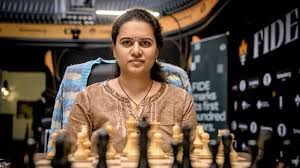
- 02 Jan 2025
In News:
In a monumental achievement, Koneru Humpy from Vijayawada, India, claimed the 2024 FIDE Women’s World Rapid Chess Championship in New York. This victory marks her second World Rapid Chess title, five years after her first win in 2019 in Georgia, making her the first Indian and only the second player after China’s Ju Wenjun to win the title multiple times.
Key Highlights of Humpy’s Victory:
- Final Score: Humpy finished with an impressive 8.5 points from 11 rounds, securing the top spot by defeating Irene Sukandar of Indonesia in the final round.
- Strong Finish: Humpy surged ahead of the other joint leaders to clinch the title, with D. Harika, another Indian chess star, securing 5th place with 8 points.
World Rapid Chess Championship
- The World Rapid Chess Championship is a chess tournament that determines the world's top rapid chess player. The tournament is held annually by FIDE, the International Chess Federation.
- How it works
- The tournament uses a Swiss system, where players are paired with opponents of similar scores in each round.
- Players are not eliminated after losses.
- The player with the highest score at the end of the tournament wins.
- Time controls
- Players are given a set amount of time per move, plus an increment for each move.
- In the World Rapid Championship, players have 15 minutes per move, plus a 10-second increment for each move.
A Historic Year for Indian Chess:
- 2024 has been a remarkable year for Indian chess, with D. Gukesh becoming the youngest-ever World Chess Champion after his victory over Ding Liren (China) at the World Chess Championship in Singapore.
- India also made history by winning both the open and women’s sections at the 2024 Chess Olympiad in Budapest.
H-1B Visa
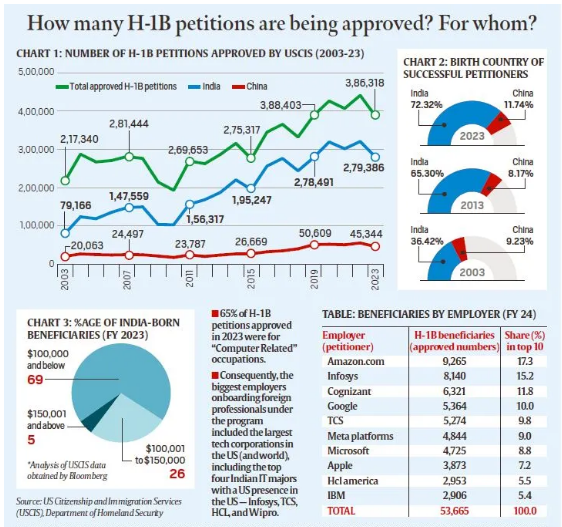
- 02 Jan 2025
In News:
In the weeks leading up to his return as US President, Donald Trump’s supporters are embroiled in a public dispute over skilled immigration and H-1B visas.
What is the H-1B Visa Program?
- Purpose and Overview:
- The H-1B visa is a non-immigrant visa allowing U.S. companies to employ foreign workers in specialized occupations like STEM (Science, Technology, Engineering, Mathematics) and IT, which require at least a bachelor’s degree.
- Introduced in 1990 to help U.S. employers fill positions when there’s a shortage of qualified domestic workers.
- It allows workers to stay in the U.S. for a maximum of six years, with the option to apply for permanent residence (Green Card) or leave for 12 months before reapplying.
- Annual Cap and Exemptions:
- 65,000 new visas are issued annually, with an additional 20,000 for those with a master’s degree or higher from a U.S. university.
- Certain petitions, such as for continuing employment or positions in higher education or nonprofit research, are exempt from the cap.
- Dominance of Indian Beneficiaries:
- Indians are the largest beneficiaries, accounting for over 70% of H-1B visa approvals annually since 2015, with China coming second at around 12-13%.
The Current Controversy
- Trigger for Debate:
- The controversy was sparked by Sriram Krishnan, a Chennai-born tech entrepreneur appointed as Donald Trump’s top AI adviser. His post on X (formerly Twitter) in November 2024, advocating for unlocking skilled immigration, led to backlash within Trump’s anti-immigration base.
- The Political Divide:
- Trump’s supporters, particularly from the MAGA (Make America Great Again) faction, voiced opposition to the H-1B visa program, arguing it undermines American workers and wages.
- This prompted pushback from pro-H-1B advocates like Elon Musk and Vivek Ramaswamy, who argue that the program is crucial for addressing the U.S.'s STEM talent shortages.
- Economic and Political Context:
- Immigration is a polarizing issue in the U.S., with a focus on low-skilled labor migration and its alleged effects on wages and job opportunities for American workers.
- Trump’s stance against low-skilled immigration echoes similar critiques about H-1B workers being employed at lower salaries in tech companies, which some claim depresses wages and reduces job opportunities for U.S. workers.
Criticisms of the H-1B Program
- Abuse of the System:
- Critics argue that companies exploit the H-1B program by hiring foreign workers, especially from India, at lower wages than American employees, particularly in tech industries.
- Elon Musk suggests that the program is “broken” and needs reform, proposing raising the minimum salary for H-1B workers to make it more expensive to hire overseas talent.
- Salary Disparities:
- Data from USCIS (U.S. Citizenship and Immigration Services) shows that 70% of H-1B petitions for Indian professionals in 2023 were for salaries below $100,000, while the median salary for U.S. IT professionals was $104,420.
- Impact on American Jobs:
- Critics argue that companies prefer to hire foreign workers at lower wages to save costs, despite the availability of qualified U.S. talent, thus taking away opportunities for American workers.
Support for the H-1B Program
- Filling the STEM Gap:
- Proponents, including Musk and Ramaswamy, argue that the H-1B visa is essential for filling the STEM skills gap in the U.S., given the global dominance of India and China in STEM fields.
- India and China lead the world in STEM graduates, with 2.55 million and 3.57 million, respectively, compared to the U.S. with 820,000.
- Proponents, including Musk and Ramaswamy, argue that the H-1B visa is essential for filling the STEM skills gap in the U.S., given the global dominance of India and China in STEM fields.
- Economic Benefits:
- The H-1B program helps U.S. companies access top global talent, boosting innovation and economic growth, especially in high-tech industries.
- Tech companies argue that without access to skilled foreign workers, they would struggle to fill critical positions in the technology sector.
Tamil Nadu's First Glass Bridge in Kanyakumari
- 02 Jan 2025
In News:
- The Chief Minister of Tamil Nadu inaugurated India’s first glass bridge over the sea in Kanyakumari, connecting the Thiruvalluvar Statue and the Vivekananda Rock Memorial.
- The bridge provides a safe and scenic walking route between these two iconic landmarks, eliminating the need for ferry trips.
Key Highlights:
- Dimensions and Design
- The bridge is 77 meters long and 10 meters wide, offering uninterrupted views of the sea from a unique vantage point.
- Designed to withstand marine conditions like corrosion and strong winds, ensuring durability and safety for visitors.
- Tourism Investment
- The bridge was built at a cost of ?37 crore, marking a significant investment in tourism infrastructure for Kanyakumari.
- This project aligns with the state’s vision to boost tourism and modernize amenities in the region.
- Significance as a Tourist Attraction
- The bridge is set to become a landmark tourist attraction, enhancing the visitor experience by providing a direct, scenic route between the two monuments.
- It is expected to play a pivotal role in boosting tourist footfall and the local economy.
About Thiruvalluvar Statue
- Location and Design
- The Thiruvalluvar Statue stands on a rock near the Vivekananda Rock Memorial in Kanyakumari.
- It is a symbol of wisdom, officially named the Statue of Wisdom by the Tamil Nadu government.
- Physical Specifications
- The statue stands at a total height of 133 feet (41 meters), with the statue itself measuring 95 feet (29 meters) and the pedestal adding 38 feet (12 meters).
- Weight: The statue weighs approximately 7000 tonnes and is designed in a hollow structure.
About Vivekananda Rock Memorial
- Location and Significance
- Situated on a rock in the Laccadive Sea, around 500 meters from the mainland in Kanyakumari.
- The memorial commemorates Swami Vivekananda, who represented India’s spiritual legacy at the 1893 Parliament of World’s Religions in Chicago.
- Historical and Religious Importance
- The rock is believed to be the site where Swami Vivekananda attained enlightenment.
- It is also associated with goddess Kanyakumari, who is said to have prayed to Lord Shiva on this rock, with an imprint of her feet preserved there.
- Architectural Features
- The memorial incorporates diverse architectural styles, including the Sripada Mandapam and the Vivekananda Mandapam.
- A life-sized bronze statue of Swami Vivekananda is located at the memorial.
- The rock is surrounded by the Bay of Bengal, Indian Ocean, and Arabian Sea, where these three water bodies converge.
Business Ready (B-READY) Report 2024
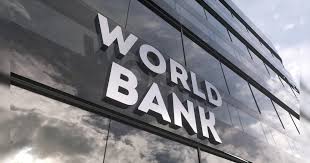
- 02 Jan 2025
In News:
- The B-READY report, launched by the World Bank in 2024, replaces the Ease of Doing Business (EoDB) index.
- Focus: It evaluates the global business environment to foster inclusive private sector growth, assessing 10 core topics covering a firm's lifecycle, such as business entry, taxation, labor, and international trade.
India’s Potential Challenges
- Business Entry: India faces multiple steps and incomplete digital integration, making it slower compared to benchmarks like Singapore, which achieves one-day registration at minimal cost.
- Labor Regulations: While India has introduced four labor codes, the implementation remains slow and inconsistent, affecting labor flexibility and compliance.
- International Trade: India struggles with customs delays, inconsistent enforcement, and high logistics costs, unlike countries like Germany and Singapore, which promote trade efficiently.
- Business Location: Regulatory delays and inconsistent approvals hinder the establishment of business facilities, affecting investment decisions.
- Public Services Gap: While regulations may be strong, there is often a gap in the provision of public services that support their effective implementation, leading to inefficiencies.
Key Strengths for India
- India is expected to score well in the areas of Quality of Regulations, Effectiveness of Public Services, and Operational Efficiency.
- The country shows promise in promoting digital adoption and aligning with global environmental sustainability practices, though gender-sensitive regulations need more emphasis.
Significance
- The B-READY report serves as an essential benchmark for assessing India's business environment, offering insights into regulatory reforms and operational efficiency.
- Key policy implications for India include the need to:
- Streamline business operations by digitizing registration and regulatory approval processes.
- Improve logistics and trade efficiency by reducing customs delays.
- Address labor market inefficiencies through better implementation of labor codes.
- Invest in public services and promote digital transformation for better compliance and operational ease.
- Focus on sustainability and inclusivity, ensuring gender-sensitive policies and fostering green business practices.
Global Findings from the B-READY Report
- Economies with strong regulatory frameworks and digital tools (e.g., Rwanda, Georgia) show that even countries with varying income levels can achieve high scores.
- High-income countries like Estonia and Singapore still have room for improvement, especially in areas like taxation and dispute resolution.
Comparison of B-READY with Ease of Doing Business (EoDB)
- Scope: B-READY is broader, covering a firm’s lifecycle and social benefits, while EoDB focused mainly on regulatory burdens.
- Indicators: B-READY uses 1,200 indicators from expert consultations and firm-level surveys, offering more comprehensive insights compared to the EoDB's limited metrics.
- Focus on Public Services: Unlike EoDB, which provided limited attention to public services, B-READY explicitly evaluates public service efficiency and operational effectiveness.
Policy Recommendations
- Streamline Business Operations: Inspired by countries like Singapore, India should simplify business registration and reduce delays in customs and regulatory approvals.
- Strengthen Public Services: Focus on improving tax portals, utility access, and dispute resolution systems through digital tools.
- Promote Sustainability: Encourage environmentally sustainable business practices and adopt gender-sensitive regulations to ensure inclusive growth.
- Peer Learning and Global Collaboration: Encourage India to learn from best practices in countries like Singapore and Estonia for effective reforms.
- Tailored Reforms: India must design policies addressing unique local challenges while adhering to global standards.
Stellaria bengalensis

- 02 Jan 2025
In News:
After a plant species of the genus Stellaria (family Caryophyllaceae) was reported from Kerala earlier this year, researchers have identified another member of the same genus at Kalimpong district in West Bengal.
Key Highlights:
Discovery and Identification:
- Published: The discovery was published in Phytotaxa.
- Location: Found in Kalimpong district, West Bengal, at altitudes of 2,245-2,450 metres in the Sangser forest.
- Named: The species is named Stellaria bengalensis after the state of West Bengal.
Taxonomy and Characteristics:
- Family: Caryophyllaceae.
- Type: Annual herb.
- Size: Grows to a height of 8 to 10.5 cm.
- Flowers: White in color, with shorter petals, often included within the sepal, and absence of bracts.
- Seeds: Sharp and pointed.
- Flowering and Fruiting: Occurs from May to September.
Distribution:
- Region: Primarily found in the Himalayan region.
- Similar Species: Stellaria mcclintockiae, identified earlier in Kerala (Nelliyampathy Hills).
- Both species grow in muddy soil slopes and are annuals.
Conservation Status:
- Under IUCN (International Union for Conservation of Nature) criteria, the species is assessed as "data deficient", pending further studies.
- Potential Habitat: There is a possibility of finding more populations in the western Himalayas.
Significance:
- Stellaria bengalensis is the second Stellaria species reported in India in 2025.
- India is home to about 22 Stellaria species, predominantly found in the Himalayan region.
- The discovery adds to biodiversity knowledge in India and underscores the importance of studying plant species in the region.
Smart Cities Mission (SCM)

- 31 Dec 2024
In News:
The introduction of smart classrooms as part of the Smart Cities Mission (SCM) has had a significant impact on education, leading to a 22% increase in enrolment across 19 cities, according to a report from the Indian Institute of Management, Bangalore (IIM-B). The study covers the period from 2015-16 to 2023-24 and highlights several key benefits of this initiative, which aims to improve the overall learning environment in government schools.
Key Findings:
- Increased Enrolment: The introduction of smart classrooms has been linked to a 22% increase in student enrolment across 19 cities, suggesting that the initiative has made education more appealing and accessible.
- Smart Classroom Development: By 2023-24, 71 cities had developed 9,433 smart classrooms in 2,398 government schools. The states with the most smart classrooms are:
- Karnataka (80 classrooms)
- Rajasthan (53 classrooms)
- Tamil Nadu (23 classrooms)
- Delhi (12 classrooms)
- West Bengal has a very limited number, with just two classrooms.
- Improved Learning Experience: Teachers have expressed positive feedback, agreeing that the smart classrooms have improved learning experiences and attendance among students. Additionally, the smart classroom setup has contributed to increased comfort for teachers and higher preference for these modern facilities.
- Teacher Training: Special training provided to teachers has enhanced their comfort with using the smart classroom tools, with senior secondary teachers showing the highest comfort levels.
- Digital Libraries: The study also found that 41 cities have developed Digital Libraries with 7,809 seating capacity, offering essential resources for students. Cities like Raipur (Chhattisgarh) and Tumakuru (Karnataka) have seen positive outcomes from these libraries, particularly in supporting students preparing for competitive exams.
Smart Cities Mission (SCM)
- Launched in June 2015, the Smart Cities Mission aims to promote cities that offer core infrastructure, a decent quality of life, a sustainable environment, and the application of smart solutions. As of November 2024, 91% of the projects under the mission have been completed.
SAAR Platform and Research
- In 2022, the Smart Cities Mission introduced the SAAR (Smart Cities and Academia towards Action and Research) platform to bridge the gap between academia and the government. Under this platform, 50 impact assessment studies have been initiated by 29 premier institutions, including six Indian Institutes of Management (IIMs), eight Indian Institutes of Technology (IITs), and 12 specialized research institutes.
Metabolic Dysfunction-Associated Steatotic Liver Disease (MASLD)
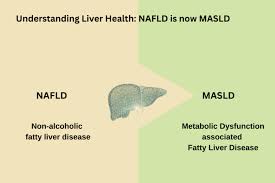
- 31 Dec 2024
In News:
Non-alcoholic fatty liver disease (NAFLD) has recently been renamed MASLD (Metabolic Dysfunction-Associated Steatotic Liver Disease), reflecting a shift in understanding of the disease's root causes and its broader implications.
Why the Name Change?
- The primary reason for renaming NAFLD to MASLD is to highlight the metabolic dysfunction as the primary cause of the disease.
- Previously, the term NAFLD focused on the absence of alcohol consumption, which inadvertently shifted attention away from the true contributors, like obesity, type 2 diabetes, and abnormal cholesterol levels.
- The term MASLD eliminates the stigma associated with "non-alcoholic," which may have misled people into thinking alcohol consumption was the only factor, even though metabolic issues are the central cause.
- The term MASLD shifts the focus towards metabolic dysfunction, making it easier for healthcare professionals to understand, diagnose, and treat the condition more effectively.
The Connection to Metabolic Dysfunction
- MASLD is strongly associated with metabolic issues such as abdominal obesity, insulin resistance, and high blood sugar. These metabolic problems are key contributors to liver fat accumulation.
- People with abdominal obesity are 2-3 times more likely to develop fatty liver disease. MASLD affects about 25% of the global population, and the rates increase significantly (up to 50-70%) in individuals with type 2 diabetes or obesity.
- By focusing on metabolic dysfunction, MASLD encourages addressing the root causes rather than just the symptoms, offering a more effective approach to treatment and prevention.
How is MASLD Diagnosed?
Advancements in non-invasive diagnostic methods have improved the ability to diagnose MASLD more easily and accurately, including:
- FibroScan: A non-invasive, painless test to measure liver fat and stiffness, replacing the need for liver biopsy.
- MRI and Ultrasound Techniques: Reliable methods for assessing liver fat and scarring.
- Blood Tests: Common tests like ALT, AST, and GGT assess liver function. Researchers are also exploring new markers like CK-18 fragments and the ELF score (Enhanced Liver Fibrosis) to improve diagnostic accuracy.
Implications for Patient Care
The renaming of NAFLD to MASLD has important implications for patient care:
- Targeted Treatments: By focusing on the metabolic roots, treatments such as weight loss, blood sugar management, and cholesterol control can be prioritized. These interventions help reduce the risk of long-term complications such as heart disease, liver failure, and cirrhosis.
- Earlier Diagnosis: MASLD encourages earlier recognition of the condition, which can lead to better management and improved long-term outcomes.
Prevention
Preventing MASLD involves avoiding foods that exacerbate liver fat buildup. Dr. Punit Singla, director at Marengo Asia Hospitals, emphasizes limiting or avoiding:
- Fast food, junk food, and processed foods
- Foods high in sugar, including red and processed meats
A healthier lifestyle with a balanced diet rich in whole grains, fruits, vegetables, and lean proteins can significantly help prevent or manage MASLD.
61st Raising Day
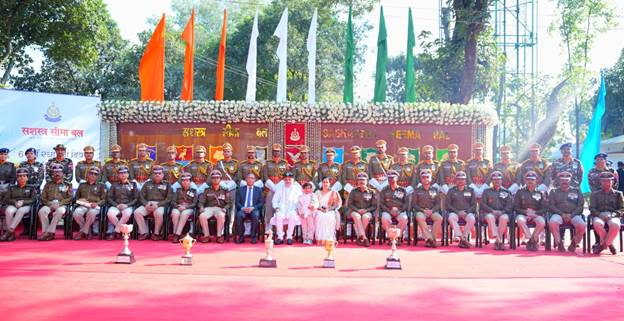
- 31 Dec 2024
In News:
On December 20, 2024, Union Home Minister Shri Amit Shah attended the 61st Raising Day function of the Sashastra Seema Bal (SSB) in Siliguri, West Bengal. During the event, he e-inaugurated the Integrated Check Point (ICP) Agartala and a newly constructed residential complex for the Border Guard Force (BGF) at Petrapole. The event was attended by several dignitaries, including the Director of Intelligence Bureau (IB), Secretary of Border Management (MHA), and the Director-General of SSB.
Key Highlights from the Speech:
- Tributes to Martyrs: Shri Shah paid tributes to SSB martyrs, highlighting their sacrifices in protecting the country's borders and eliminating Left Wing Extremism in the eastern region. He acknowledged the 4 Padma Shri, 1 Kirti Chakra, and other national awards received by SSB for their exceptional service.
- Role in Connecting Borders: The Home Minister praised SSB’s role in connecting the culture, language, and heritage of border villages with mainstream India. He emphasized that the SSB has fulfilled its motto of "Service, Security, and Brotherhood" while maintaining a strong relationship with Nepal and Bhutan.
- Security and Vigilance: SSB is responsible for securing a 2,450 km border with Nepal and Bhutan. Shri Shah noted that SSB's vigilance has helped in stopping narcotics, arms smuggling, and human trafficking. Additionally, the force has worked to ensure that Bihar and Jharkhand are now Naxal-free.
- Zero-Tolerance Policy: The SSB has a zero-tolerance policy on encroachments, narcotics, and smuggling. Over the last three years, the SSB successfully removed more than 1,100 encroachments from government land and seized significant amounts of narcotics, weapons, and counterfeit currency.
- Impact in Jammu & Kashmir: SSB has played a critical role in combating terrorism in Jammu and Kashmir, killing more than 19 terrorists and arresting 14 through various operations.
- Humanitarian Efforts: Besides security, SSB has actively participated in disaster relief operations during floods and landslides, often at great personal risk.
- Government Schemes for CAPF Personnel: Under the leadership of Prime Minister Narendra Modi, various welfare schemes like Ayushman Cards, CAPF e-Housing, and scholarships have been launched to support CAPF personnel and their families.
- Self-Employment Initiatives: SSB has promoted self-employment for border youth, training them in areas like beekeeping, mobile repairing, and driving. They have also contributed significantly to the Nasha Mukt Bharat Abhiyan, creating awareness about drug addiction among 36,000 youth.
- Environmental Contribution: The force has planted over 6 crore trees as part of its environmental efforts.
Pegasus Spyware
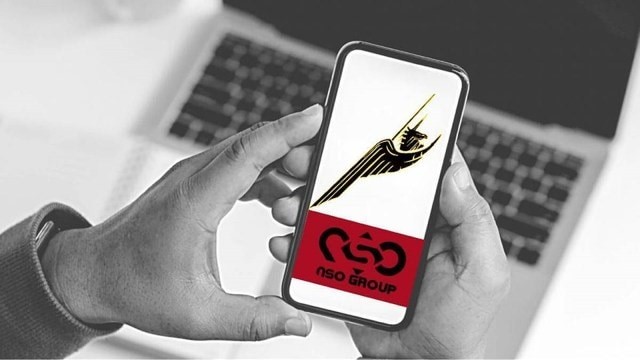
- 31 Dec 2024
In News:
For the first time, a court in the US has held Israel’s NSO Group liable for its intrusive spyware Pegasus, which could set up a measure of accountability for the company that it has, for long, allegedly downplayed.
Overview:
- Pegasus is a spyware developed by the Israeli company NSO Group.
- It has been used for surveillance, allegedly targeting journalists, activists, politicians, and government officials across the world, including India.
Recent Legal Developments:
- US Court Ruling (2024):
- A US court held NSO Group liable for using Pegasus to surveil 1,400 WhatsApp users, including 300 from India.
- NSO Group violated the Computer Fraud and Abuse Act (CFAA) and the California Computer Data Access and Fraud Act (CDAFA).
- The ruling may revive debates on the accountability of spyware use and its implications on privacy.
Use of Pegasus in India:
- Targeted Individuals (2021):
- 300 Indian numbers allegedly targeted, including journalists, politicians, Union Ministers, and civil society members.
- High-profile targets included opposition leaders, constitutional authorities, and activists.
- Government Denial:
- The Indian government denied involvement, stating allegations lacked substance.
- In Parliament, IT Minister Ashwini Vaishnaw rejected claims, asserting India’s surveillance laws prevent unauthorized surveillance.
- NSO Group Response:
- NSO Group denied the allegations, calling them “false and misleading” and citing doubts about the sources.
Investigations and Legal Actions:
- Supreme Court Inquiry:
- The Supreme Court appointed a committee of technical experts in 2021 to investigate claims.
- August 2022 Report: Found no conclusive evidence of spyware use on examined devices but noted lack of cooperation from the government.
- State-Level Investigations:
- West Bengal: Set up a Commission of Inquiry into Pegasus surveillance, later halted by the Supreme Court.
- Andhra Pradesh: The issue became political, with allegations that the previous government used Pegasus to monitor opposition figures.
Pegasus Spyware Features:
- Capability: Can hack iOS and Android devices to collect data, record conversations, capture photos, and access app data.
- Exploitation Method: Uses zero-day vulnerabilities to exploit iOS and Android devices covertly.
- Invisibility: Operates without user knowledge, often only detected through signs like browser closings after phishing links are clicked.
Controversial Use of Pegasus:
- Global Use: Though intended for fighting terrorism and crime, Pegasus has been misused for spying on journalists, politicians, human rights activists, and opposition leaders.
- India Specifics:
- Pegasus Project: Targeted Indian citizens, including activists, journalists, and politicians.
- Amnesty International: Confirmed use of Pegasus to target Indian phones.
India's Legal Framework for Surveillance:
- Telecommunications Act (2023): Empowers the government to control telecom services during emergencies, but requires authorization for lawful interceptions.
- IT Act (2000): Allows the government to monitor, intercept, or decrypt information through computer resources under certain conditions.
- Digital Personal Data Protection (DPDP) Act (2023): Aims to protect personal data, including provisions on surveillance, data breaches, and rights of individuals over their data.
Privacy and Surveillance Concerns:
- Impact on Fundamental Rights:
- Surveillance infringes on the right to privacy under Article 21 of the Constitution.
- Freedom of speech and expression (Article 19) may be curtailed, with surveillance being used to suppress dissent.
- Lack of Transparency:
- Surveillance often occurs without judicial or parliamentary oversight, leading to potential executive overreach.
- Inability to Seek Legal Remedies:
- Citizens targeted by surveillance cannot challenge it due to lack of awareness, undermining constitutional rights.
- Executive Overreach and Suppression of Free Expression:
- Pegasus revelations have raised concerns about surveillance targeting constitutional functionaries, suppressing free speech, and stifling open discourse.
World Audio Visual & Entertainment Summit (WAVES) 2025
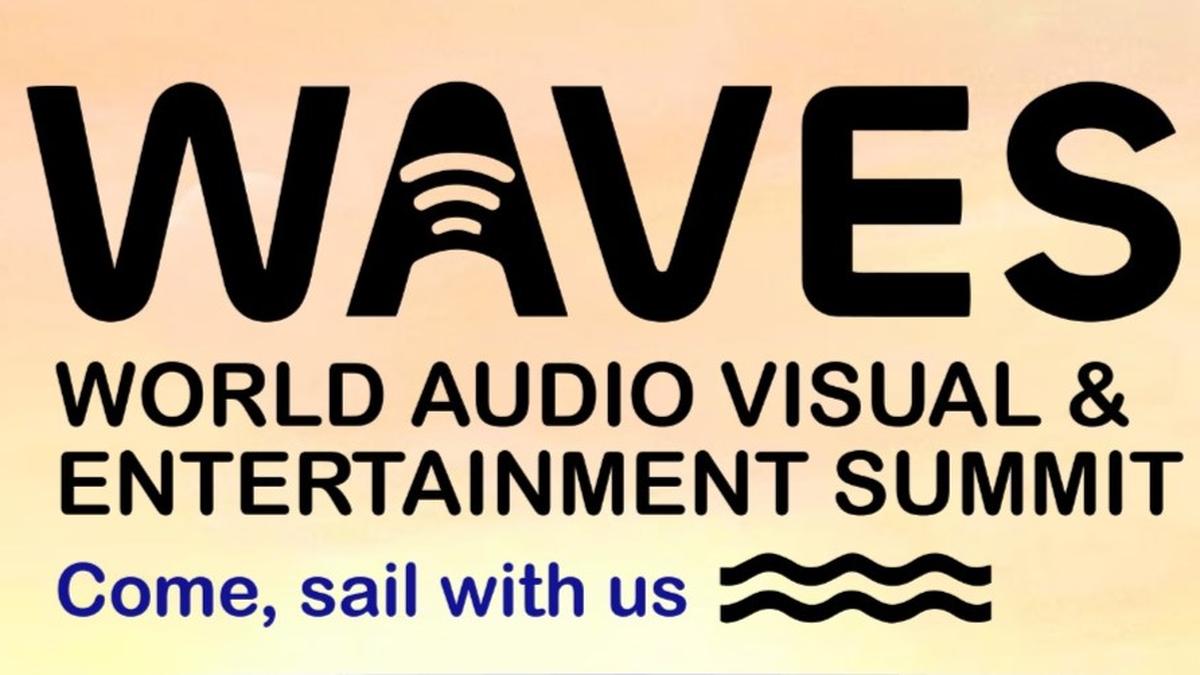
- 30 Dec 2024
In News:
India to Host World Audio Visual & Entertainment Summit (WAVES) 2025.
Key Highlights:
- Purpose: The summit aims to bolster India's media and entertainment (M&E) industry, expand its global influence, and foster innovation and collaboration within the sector.
- Significance: First-ever global summit to cover the entire media and entertainment industry spectrum.
- Objective:
- Foster Dialogue and Trade: WAVES aims to be a premier platform for industry leaders, stakeholders, and innovators to engage in meaningful discussions, explore opportunities, and tackle challenges in the M&E sector.
- Promote India's M&E Industry: Attract trade and investment to India, highlighting its strengths in animation, gaming, entertainment technology, and cinema (both regional and mainstream).
- Focus Areas:
- Industry Advancements: Discussions will revolve around India’s progress in animation, visual effects, gaming, and cinema.
- Global Positioning: Establish India as a global powerhouse in the M&E sector, setting new standards for creativity, innovation, and global influence.
WAVES India - Vision and Mission:
- Vision: Position India as a Global Powerhouse: Enhance India’s standing in the dynamic M&E sector, making it a hub of creativity and innovation worldwide.
- Mission:
- Provide exclusive investment opportunities for global M&E leaders through WAVES.
- Drive India’s Creative Economy through Intellectual Property (IP) Creation for both domestic and international markets.
- Develop M&E Infrastructure: Strengthen industry infrastructure and create a skilled workforce to meet global demands.
- Adapt to New Trends: Embrace emerging technologies and transformations in the M&E landscape.
Expected Outcomes:
- Global Collaboration: Engage global M&E leaders in discussions that provoke ideas and facilitate collaborations.
- Attract Investment: Promote India as a business-friendly investment destination in the M&E sector.
- Skills and Capacity Building: Build capacity in the M&E industry and develop skilled human resources to support international needs.
PM CARES Fund Contributions and Utilization (2022-23)
- 30 Dec 2024
In News:
The Prime Minister’s Citizen Assistance and Relief in Emergency Situations Fund (PM CARES Fund) received Rs 912 crore in contributions during the financial year 2022-23 as donations continued to pour in even after the Covid pandemic.
Key Highlights:
Contributions Received:
- Total contributions in 2022-23: Rs 912 crore.
- Voluntary contributions: Rs 909.64 crore.
- Foreign contributions: Rs 2.57 crore.
Interest Income:
- Total interest income for 2022-23: Rs 170.38 crore.
- From regular accounts: Rs 154 crore.
- From foreign contributions account: Rs 16.07 crore.
Refunds and Additional Inflows:
- Rs 225 crore in refunds, including:
- Rs 202 crore refund from procurement of 50,000 ventilators for government hospitals.
Disbursements:
- Total disbursed in 2022-23: Rs 439 crore:
- Rs 346 crore for PM CARES for Children.
- Rs 91.87 crore for procurement of 99,986 oxygen concentrators.
- Rs 1.51 crore for refunds.
- Rs 24,000 for legal charges, and Rs 278 for bank and SMS charges.
Cumulative Contributions (2019-23):
- Rs 13,605 crore received from 2019-20 to 2022-23.
- Voluntary contributions: Rs 13,067 crore.
- Foreign contributions: Rs 538 crore.
- Interest income over these years: Rs 565 crore.
About PM CARES Fund:
Formation and Purpose:
- Established: March 27, 2020, as a Public Charitable Trust under the Registration Act, 1908.
- Purpose: To address emergencies like COVID-19, natural disasters, and man-made calamities. It also supports healthcare infrastructure and essential facilities.
Governance and Structure:
- Chairperson: The Prime Minister (ex-officio).
- Trustees: Defence, Home, and Finance Ministers (ex-officio).
- Additional Trustees: Appointed by the PM, serving on a non-profit basis (e.g., Justice K T Thomas (retd.) and Kariya Munda).
Tax Exemptions:
- Donations are eligible for 100% tax exemption under Section 80G of the Income Tax Act, 1961.
- Donations qualify as Corporate Social Responsibility (CSR) expenditure under the Companies Act, 2013.
- The fund is exempt under the Foreign Contribution Regulation Act (FCRA), allowing it to receive foreign donations.
ASI Discovery at Srisailam Temple
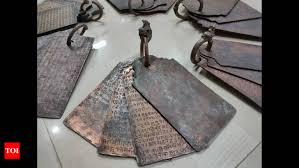
- 30 Dec 2024
In News:
- The Archaeological Survey of India (ASI) uncovered ancient copper plates and gold coins at the Srisailam Temple in Andhra Pradesh, specifically in the Ghantamandapam area.
- The discovery includes 20 sets of copper plates, totaling 72 leaves, and various gold coins.
- The ASI's Epigraphy Branch in Mysore has completed the documentation of these findings, and the materials are being studied in detail.
Collaboration with Srisailam Devasthanam:
- In collaboration with the Srisailam Devasthanam, ASI plans to publish a book that will detail the findings and their historical significance.
- The book will be printed soon by Pragati Publications in Hyderabad.
Srisailam Temple Overview:
- The Srisailam Temple, also known as the Mallikarjuna Swamy Temple, is a prominent Hindu pilgrimage site in Andhra Pradesh.
- It is located in the Nallamala Hills, overlooking the Krishna River.
- The temple is dedicated to Lord Shiva in the form of Mallikarjuna Swamy and Goddess Parvati as Bhramaramba Devi.
- It is one of the 12 Jyotirlingas of Lord Shiva and one of the Shakti Peethas, making it significant in both Shaivism and Shaktism.
Architectural Significance:
- The temple is built in the Dravidian style, featuring lofty towers and expansive courtyards, and is considered a prime example of Vijayanagara architecture.
- Historical references to the temple date back to the Satavahana period (2nd century AD), and the temple was further endowed by the Kakatiyas and Vijayanagara rulers.
Cultural and Religious Importance:
- The Srisailam Temple is unique for housing both a Jyotirlinga (Lord Shiva) and a Shakti Peetha (Goddess Bhramaramba), a rare combination not found at other temples.
- The great religious figure Adi Shankaracharya is believed to have visited the temple and composed the Sivananda Lahiri there.
Historical Context:
- The copper plates and inscriptions discovered are likely to provide valuable insights into the historical and cultural significance of the temple, as well as the region's ancient religious practices.
Reassessment of Conjugal Visits in Delhi Prisons
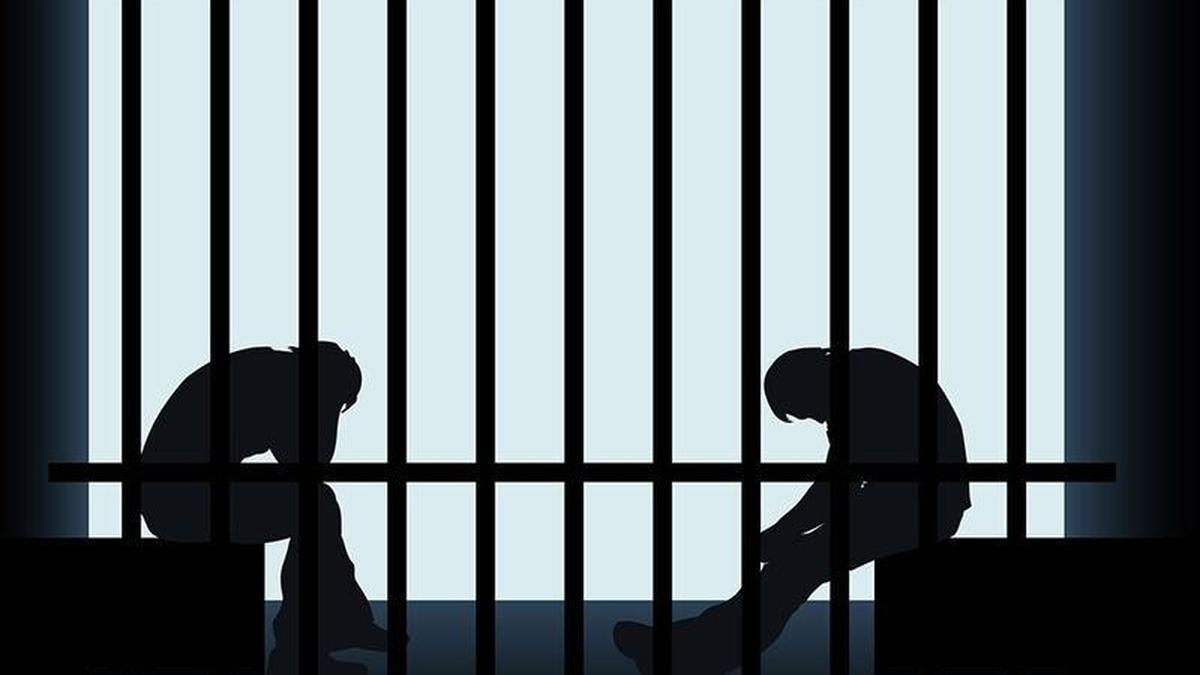
- 30 Dec 2024
In News:
- The Delhi government is reassessing the proposal to permit conjugal visits for prisoners, following the suspension of a similar initiative in Punjab.
- Delhi Chief Minister has sought further input from the Law Department and explored if similar schemes are implemented in other states.
Conjugal Visits - Definition & Context:
- Conjugal visits involve allowing prisoners to spend private time with their legal partners or spouses, including intimate relations, within prison premises.
- No national policy exists in India for conjugal rights of prisoners, leading to varied implementations across states.
Punjab’s Pilot Project - ‘Parivar Mulakat’:
- Ludhiana Central Jail introduced the 'Parivar Mulakat' programme in September 2022, allowing face-to-face meetings with family in designated rooms.
- The initiative was suspended shortly after its launch due to security concerns, particularly difficulty in conducting thorough body checks on visitors.
Challenges in Delhi:
- Overcrowded prisons in Delhi make it challenging to manage the logistical demands of conjugal visits, especially with up to 1,200 daily visitations.
- The Home Department has received proposals but no progress has been made over the past year.
Legal Precedents on Conjugal Rights:
- Punjab and Haryana High Court (2014) ruled that prisoners have a right to conjugal visits to facilitate procreation.
- Madras High Court (2018) allowed a life convict on parole for conjugal relations, and in 2023, a judge called for similar considerations for Tamil Nadu.
Human Rights Argument:
- Advocates argue that denying conjugal visits to prisoners violates basic human rights of both prisoners and their spouses, particularly those aged 21-50, who are often in sexually active years.
- Amit Sahni, a social activist, filed a PIL highlighting that most prisoners in Delhi are denied conjugal rights despite their eligibility.
Government’s Position:
- Delhi DG (Prisons) had argued that temporary leave such as parole and furlough serve the purpose of family ties, questioning the need for conjugal visits within prison.
Need for Legal Framework:
- Legal experts suggest the creation of a law and policy framework to regulate conjugal visits, ensuring clear guidelines for their implementation.
- S.D. Singh, a Supreme Court advocate, emphasized that conjugal visits should be legally recognized as a right, requiring formal legislation for consistent implementation.
Future Considerations:
- The Delhi government’s reassessment may lead to a policy that considers both human rights and security concerns in its decision on conjugal visits.
Re-emergence of the Dodo in Kashmir’s Papier Mâché Craft
- 30 Dec 2024
In News:
Artisans in Srinagar, Kashmir, have revived the extinct dodo bird in papier mâché forms. These figurines are exported worldwide, particularly to Mauritius and Europe, ahead of the Christmas season. Over 50,000 dodo figurines have already been sent to international markets in 2024.
Key Highlights:
The Dodo:
- Scientific Name: Raphus cucullatus.
- Extinct Since: 1681, approximately 80 years after humans began interacting with them.
- Endemic to Mauritius: A flightless bird from the Indian Ocean island of Mauritius, a national symbol of the country.
- Extinction Causes: Overhunting and the introduction of invasive species like rats, pigs, and cats that preyed on their eggs.
- Physical Traits: Grey or brown plumage, about 3 feet tall, flightless and fearless.
Papier Mâché Craft in Kashmir:
- History: Practiced for over 600 years in Kashmir, introduced during the reign of King Zain-ul-Abidin (15th century).
- Techniques: Involves creating decorative objects using paper pulp, with traditional Persian motifs.
- Recent Addition of Dodo: The dodo was introduced to the papier mâché craft around two decades ago, likely by Mauritian tourists.
International Market and Demand:
- Mauritius: A significant market for the papier mâché dodo, as the bird is a national emblem of Mauritius.
- Europe: Exported to European countries during the Christmas season, contributing to the popularity of Kashmir’s handicrafts.
- Kashmir's Karkhanas: Local craft workshops in Srinagar are producing thousands of dodo figurines each season, with over 3,000 dodos produced this year.
Cultural and Economic Impact:
- Artisans' Contribution: Local artisans are helping keep the memory of the extinct dodo alive, while boosting Kashmir’s handicraft industry.
- Global Recognition: The dodo is now a sought-after item in global markets, linked to the traditional art of Kashmir.
- Kashmir Handicrafts: Several crafts from Kashmir, including papier mâché, have received Geographical Indication (GI) tags for their distinct cultural and regional significance.
Sambar Deer
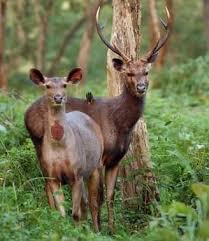
- 29 Dec 2024
In News:
Three poachers were arrested for killing a sambar deer in the Daying Ering Memorial Wildlife Sanctuary (DEMWS), East Siang district, Arunachal Pradesh.
Action Taken:
- Poachers Arrested: The poachers were booked under the Wildlife Protection Act 1972 and Arms Act 1959. The seized articles were handed over to the police, and a FIR was registered.
- Sanctuary Protection Efforts: The Divisional Forest Officer (DFO) emphasized the need for intensified surveillance to prevent further hunting incidents. Public cooperation was urged to report such incidents for prompt action.
About Sambar Deer:
- Scientific Name: Rusa unicolor.
- Native Regions: Found across the Indian subcontinent and Southeast Asia.
- Other Names: Known as Jarao in Nepal and Four-eyed deer in China.
- IUCN Red List: Listed as Vulnerable.
Key Features:
- Size: Stands between 1.2–1.4 meters at the shoulder.
- Weight: Can reach up to 550 kg, making it the largest oriental deer.
- Coat: Dark brown with a ruff around the neck, and unspotted.
- Antlers: Male sambar bears long, rugged antlers with three points (tines).
- Behavior: Elusive, most active at dusk and night.
Habitat:
- Water Dependency: Always found near water sources.
- Habitat Range: Dry deciduous forests, rainforests, and mixed forests.
- Social Structure: Often found alone or in small groups.
About Daying Ering Memorial Wildlife Sanctuary (DEMWS):
- Location: Situated in East Siang district, Arunachal Pradesh.
- Established: Originally established as Lali Wildlife Sanctuary in 1976, renamed Daying Ering Memorial in 1986.
- Climate: Tropical, receiving both north-east and south-west monsoons.
- Waterways: Home to the Siang River, one of Arunachal's major rivers.
Flora:
- Vegetation: Composed mainly of riverine plains with a variety of thatch and grasses.
- Trees: Includes scattered patches of trees such as Termenelia myriocarpa, Dillenia indica, Albizia spp., and Bombax ceiba.
Fauna:
- Mammals: Includes Hog Deer, Wild Pig, Tiger, and Elephant.
- Birds: Over 150 species of birds, including endangered species like the White-Winged Wood Duck and Bengal Florican.
IIT Bombay Develops Painless Needle-Free Shock Syringes

- 29 Dec 2024
In News:
Researchers at IIT Bombay, led by Viren Menezes from the Department of Aerospace Engineering, have developed a shockwave-based, needle-free syringe to deliver drugs painlessly and safely. The research was published in the Journal of Biomedical Materials and Devices.
Key Features of Shock Syringe:
- Unlike traditional syringes, the shock syringe uses high-energy shockwaves (traveling faster than the speed of sound) to deliver drugs, without the need for needles.
- The device is designed to reduce pain, tissue damage, and infection risk.
- The shock syringe aims to eliminate the discomfort and fear associated with needles.
How the Shock Syringe Works:
- The shock syringe is slightly longer than a ballpoint pen and contains a micro shock tube with three sections: driver, driven, and drug holder.
- Pressurized nitrogen gas is applied to the driver section, which creates a microjet of liquid drug. The microjet travels at speeds nearly twice as fast as a commercial airplane.
- The drug is then delivered through the nozzle of the syringe, penetrating the skin rapidly and gently.
Design Considerations:
- The syringe's nozzle has an opening of 125 μm (approximately the width of a human hair), ensuring a balance between precision and speed.
- Continuous monitoring of pressure ensures safe and effective drug delivery with minimal skin damage.
Testing and Results:
- Lab tests were conducted on rats, injecting three types of drugs:
- Anaesthetics (Ketamine-Xylazine): Shock syringe produced similar results to needles in terms of effect onset and duration.
- Viscous drugs (e.g., Terbinafine): The shock syringe outperformed needles, delivering the drug more deeply into the skin layers.
- Insulin for diabetic rats: The shock syringe lowered blood sugar levels more effectively and sustained the effect for a longer period.
- The skin analysis revealed less damage and inflammation with the shock syringe compared to traditional needles.
Advantages:
- Painless drug delivery: Patients experience little to no discomfort.
- Reduced tissue damage: The shock syringe causes less skin trauma and inflammation.
- Faster healing: Wounds from the injection heal quicker compared to traditional needles.
- Better drug absorption: Especially for viscous drugs, the shock syringe delivers more efficient and deeper drug penetration.
Potential Applications:
- The shock syringe could revolutionize immunization drives, making vaccinations faster and more efficient.
- It could significantly reduce the risk of bloodborne diseases caused by needle-stick injuries.
- The device is designed to perform over 1,000 injections, ensuring cost-effectiveness and reliability with minimal nozzle replacements.
Future Prospects:
- While promising, the future of shock syringes in clinical use depends on:
- Further innovation for human use.
- Obtaining regulatory approval.
- Ensuring the device’s affordability and accessibility.
PM- Ayushman Bharat Health Infrastructure Mission (PM-ABHIM) Scheme
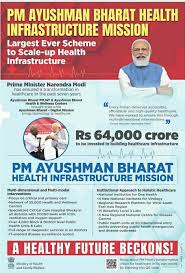
- 29 Dec 2024
In News:
- The Delhi High Court has ordered the signing of a Memorandum of Understanding (MoU) between the Union Ministry of Health and Family Welfare and the Delhi Government.
- This MoU will facilitate the implementation of the PM-Ayushman Bharat Health Infrastructure Mission (PM-ABHIM) in Delhi.
About PM-Ayushman Bharat Health Infrastructure Mission (PM-ABHIM):
- Scheme Type: Centrally Sponsored Scheme (CSS) with some Central Sector Components (CS).
- Total Outlay: Rs. 64,180 Crores for the period 2021-22 to 2025-26.
- Objective:
- To strengthen healthcare infrastructure across India, focusing on:
- Building capacities in health systems at primary, secondary, and tertiary levels.
- Preparing health systems to effectively respond to current and future pandemics/disasters.
- Key Focus Areas:
- Filling critical gaps in health infrastructure, surveillance, and health research in both urban and rural areas.
- Improving healthcare delivery across the entire continuum of care.
- Central Sector Components (CS) under the Scheme:
- 12 Central Institutions: To act as training and mentoring sites with 150-bedded Critical Care Hospital Blocks (CCBs).
- Strengthening NCDC: Boosting the National Centre for Disease Control (NCDC) and establishing 5 new regional NCDCs.
- Health Surveillance: Creation of 20 metropolitan health surveillance units and expansion of Integrated Health Information Portal across all States/UTs.
- Public Health Units: Operationalization of 17 new Public Health Units and strengthening 33 existing units at Points of Entry (Airports, Seaports, Land Crossings).
- Emergency Health Infrastructure: Establishment of 15 Health Emergency Operation Centres and 2 mobile hospitals.
- Research and Virology Institutes: Setting up a national institution for One Health, 4 new National Institutes for Virology, and 9 Biosafety Level III laboratories.
- Support for States/UTs under CSS Component:
- Health and Wellness Centres (HWCs):
- 17,788 rural HWCs: To be built in areas with populations of 5000 (plain) or 3000 (difficult terrain like hills, tribals, desert).
- 11,024 urban HWCs: Focus on slum and vulnerable areas with a population of 15,000-20,000.
- Block Public Health Units (BPHUs): Establishment of 3,382 BPHUs at the block level to strengthen healthcare accessibility.
- Integrated Public Health Labs (IPHLs): Setting up 730 IPHLs across districts for better health monitoring.
- Critical Care Hospital Blocks (CCBs): Establishment of 602 CCBs in districts with populations exceeding 5 lakh and referral linkages in other districts.
- Overall Goal: PM-ABHIM aims to significantly enhance healthcare infrastructure in India, making healthcare more accessible and effective, especially in rural and underdeveloped areas.
UN Approves New AU Force to Combat Al-Shabaab in Somalia
- 29 Dec 2024
In News:
- On January 19, 2024, the UN Security Council approved a new African Union (AU) force in Somalia to counter the Al-Shabaab terrorist group.
- The resolution was supported by 14 of 15 members, with the US abstaining due to concerns about funding.
- The new force will replace the African Union Transition Mission in Somalia (ATMIS) after its mandate ends on December 31, 2024.
New Mission - AUSSOM:
- The new mission is named African Union Support and Stabilization Mission in Somalia (AUSSOM).
- AUSSOM will continue supporting Somali forces in stabilizing the nation and combating terrorism.
- The mission's objective is to enhance security and stability in Somalia, addressing the challenges posed by Al-Shabaab and ISIL.
Mandate and Operations:
- AUSSOM allows for the deployment of up to 12,626 personnel, including 1,040 police officers, until June 2025.
- The force will focus on counterterrorism, maintaining security, and assisting the Somali government in stabilizing the country.
Financing:
- A hybrid funding approach will be used:
- 75% of the mission’s costs will be covered by the UN, and 25% will come from African Union and partner countries.
- The US raised concerns about the UN's disproportionate funding of the mission, which led to its abstention from voting.
Contributing Countries:
- Egypt has announced its participation in the new force.
- Burundi and Ethiopia will not be contributing troops to AUSSOM.
- Ethiopia has its own ongoing disputes with Somalia, particularly regarding its maritime deal with the breakaway Somaliland region.
Background on Somalia's Challenges:
- Somalia has faced decades of civil war, an insurgency by Al-Shabaab, and recurring climate disasters.
- The country is one of the poorest in the world, and its internal conflicts are exacerbated by clannism, which has fragmented its political and social structure.
Historical Context of Peace Missions in Somalia:
- Previous UN peacekeeping missions in Somalia (1992-1995) faced significant failures, notably the Battle of Mogadishu and the failure to prevent the 1993 massacre.
- The rise of Al-Shabaab in the mid-2000s has further escalated the conflict, and the mission of AUSSOM aims to address these continuing threats.
The Role of Clannism:
- Clannism has hindered the establishment of a unified government in Somalia, with clan rivalries leading to a lack of national cohesion.
- Clannism refers to the prevalence of clan-centric politics, where allegiance to clan and sub-clan interests often takes precedence over national cohesion. In Somalia, the major clans are Darod, Hawiye, Dir, and Rahanweyn.
Importance of AUSSOM:
- AUSSOM represents a strategic shift in the international approach to stabilizing Somalia, relying more on African-led initiatives for peace and security in the region.
Global Peacekeeping Operations:
- The UN peacekeeping mission has been active globally, with over 1 million personnel deployed across 70+ operations.
- Success stories like Sierra Leone (1999-2005) and Liberia (2003-2018) demonstrate the potential impact of well-executed peace missions, but past failures like in Somalia (1992-1995) and Rwanda (1994) underline the challenges faced.
India’s Contribution:
- India has contributed significantly to UN peacekeeping missions, deploying over 253,000 personnel in 49 operations since 1948.
- India’s contributions to missions in Somalia, Rwanda, Sierra Leone, and Sudan reflect its active role in global peacekeeping efforts.
ASI Decodes Sanskrit Inscription Found in Pakistan-Occupied Kashmir (PoK)
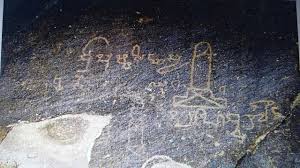
- 29 Dec 2024
In News:
An ancient Sanskrit inscription found in Gilgit (PoK) was decoded by the Archaeological Survey of India (ASI).
About the Inscription:
- Location:
- Gilgit (PoK): Written in Brahmi script, dating back to 4th century CE.
- Peshawar (Pakistan): Written in Sharada script, dating to 10th century CE.
- Details of Gilgit Inscription:
- Mentions Pushpasingha, who installed a Mahesvaralinga for the merit of his guru.
- Written in Brahmi script, which was prevalent during the 4th century CE.
- Religious Context: Indicates significant religious connection, particularly with Shaivism.
- Details of Peshawar Inscription:
- Fragmentary: Engraved on a slab.
- Written in Sharada characters (10th century CE).
- Mentions Buddhist Dharini (chants), particularly referring to Da (Dha) rini in line six.
- The inscription is partially damaged, and further details are unclear.
- Earlier Discoveries:
- This is not the first Sanskrit inscription decoded from Pakistan. In the past, Sanskrit inscriptions have been found in various parts of Pakistan.
- Swat Valley: Known for numerous Buddhist rock inscriptions in Sanskrit using Nagari script, which were part of the Gupta Empire (circa 240–550 CE).
- Religious and Cultural Implications:
- The Gilgit inscription provides evidence of Shaivism as a prominent religious practice in the region during the 4th century CE.
- The Peshawar inscription suggests Buddhist influences, particularly related to Buddhist chants and rituals.
- Swat Valley's Role: The inscriptions found here highlight its importance as a center of Buddhist learning and cultural exchange.
China approves construction of World’s Largest Hydropower Dam on the Brahmaputra River
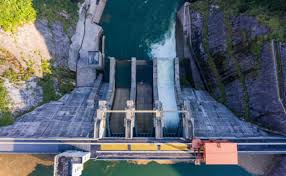
- 28 Dec 2024
In News:
China approved the construction of the world's largest dam, stated to be the planet's biggest infra project, on the Brahmaputra river in Tibet close to the Indian border, raising concerns in India and Bangladesh.
Key highlights:
Overview of the Project:
- Location: Lower reaches of the Yarlung Zangbo River (Tibetan name for Brahmaputra), where the river makes a U-turn in the Himalayan region before flowing into Arunachal Pradesh, India.
- Purpose:
- To support China’s carbon neutrality goals.
- To boost industrial growth and create jobs in Tibet.
- Expected to generate 300 billion kWh of electricity annually, over three times the capacity of the Three Gorges Dam in central China.
Significance:
- Scale: The dam is poised to be the world’s largest hydropower project, surpassing the Three Gorges Dam, and becoming the biggest infrastructure project globally, with an estimated cost of USD 137 billion.
- Engineering Challenges: The site is located in a seismic zone on the Tibetan plateau, prone to earthquakes, making construction and operational stability a major engineering challenge.
Concerns:
- Environmental Impact:
- Potential disruption to the local ecosystem and biodiversity.
- Risk of altering the river’s flow and course, which could impact agriculture and water resources downstream, particularly in India and Bangladesh.
- Geopolitical Risks:
- Water control: India and Bangladesh are concerned about China’s ability to control the water flow, with fears of China manipulating the flow to release excess water during conflicts, causing potential flooding in border areas.
- The project could also disrupt the hydrological cycle, affecting the region’s water availability, especially in Assam and Bangladesh.
Background:
- The Brahmaputra River is a trans-boundary river, flowing through China, India, and Bangladesh. Known by different names in these countries, it plays a vital role in the livelihoods of millions of people.
- China has already initiated hydropower generation on the upper reaches of the Yarlung Zangbo, with plans for additional projects upstream.
India-China Cooperation:
- China and India have an Expert Level Mechanism (ELM) in place since 2006 to manage trans-boundary river issues, under which China shares hydrological data with India, especially during the flood season.
- India is also constructing its own hydropower projects on the Brahmaputra in Arunachal Pradesh.
Potential Outcomes:
- Energy Generation: The dam could significantly contribute to China’s energy needs, providing a substantial amount of renewable energy.
- Regional Tensions: The dam’s construction may escalate tensions between China, India, and Bangladesh due to the control over water resources and environmental impact concerns.
Parker Solar Probe’s Closest-Ever Approach to the Sun
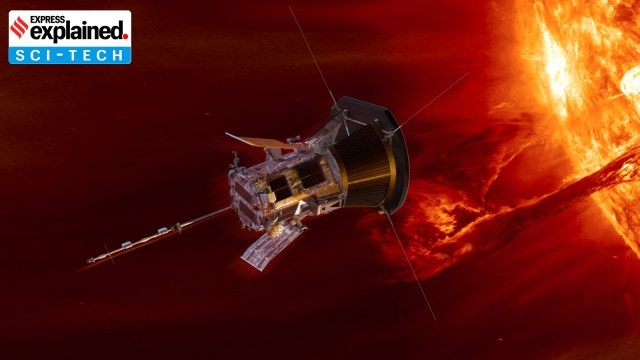
- 28 Dec 2024
In News:
NASA scientists announced that the Parker Solar Probe survived the closest-ever approach to the Sun. The craft was operating normally after it passed just 6.1 million km from the solar surface.
About the Parker Solar Probe:
- Launched: August 12, 2018, as part of NASA’s Living With a Star program.
- Named After: Eugene Newman Parker, a solar astrophysicist, marking the first NASA mission named after a living researcher.
- Mission Objectives:
- To study the Sun’s corona and the solar wind, investigating why the corona is hotter than the Sun’s surface.
- To explore the origins of solar winds and high-energy particles that impact space weather.
- To understand the structure and dynamics of plasma and magnetic fields around the Sun.
- To examine the mechanisms behind the acceleration and transportation of energetic particles.
Technological Feats:
- Heat Shield: Equipped with a 4.5-inch carbon-composite shield that withstands temperatures up to 1,377°C (2,500°F) while keeping the instruments cool at about 29.4°C (85°F).
- Speed: Travels at a speed of 692,000 km/h (430,000 mph), making it the fastest human-made object.
- Venus Flybys: Uses gravitational assists from Venus to gradually reduce its orbit and get closer to the Sun.
Historic Milestone:
- Closest Approach: On December 24, 2024, Parker Solar Probe reached a historic distance of 6.1 million km from the Sun's surface, the closest any human-made object has ever been.
- Comparison: If the Earth and Sun were 1 meter apart, Parker Solar Probe would be just 4 cm from the Sun.
- Temperature: At its closest, it endured temperatures up to 1,377°C.
Significance of the Mission:
- Scientific Contributions:
- Solar Wind: Helps scientists understand the origins of solar winds, which affect space weather and Earth’s technological systems.
- Corona Heating: Investigates why the Sun's corona is much hotter than its surface (a long-standing astrophysical mystery).
- Space Weather: Provides critical data for predicting space weather events that can impact satellites, communication systems, and power grids on Earth.
- Practical Implications:
- Improves understanding of space weather, potentially aiding in the protection of Earth’s infrastructure from solar storms.
- Technological and Engineering Marvel:
- Demonstrates advanced spacecraft technology that can withstand extreme conditions close to the Sun.
Recent Developments:
- Data Collection: As the probe passed through the Sun’s outer atmosphere (the corona), it collected valuable data expected to answer fundamental questions about solar behavior.
- Communication: Despite the extreme proximity to the Sun, the probe sent back a signal on December 26, confirming its status.
Key Dates:
- Launch: August 12, 2018.
- Closest Approach: December 24, 2024.
- Data Expected: Detailed telemetry data on January 1, 2025.
Exercise SURYA KIRAN
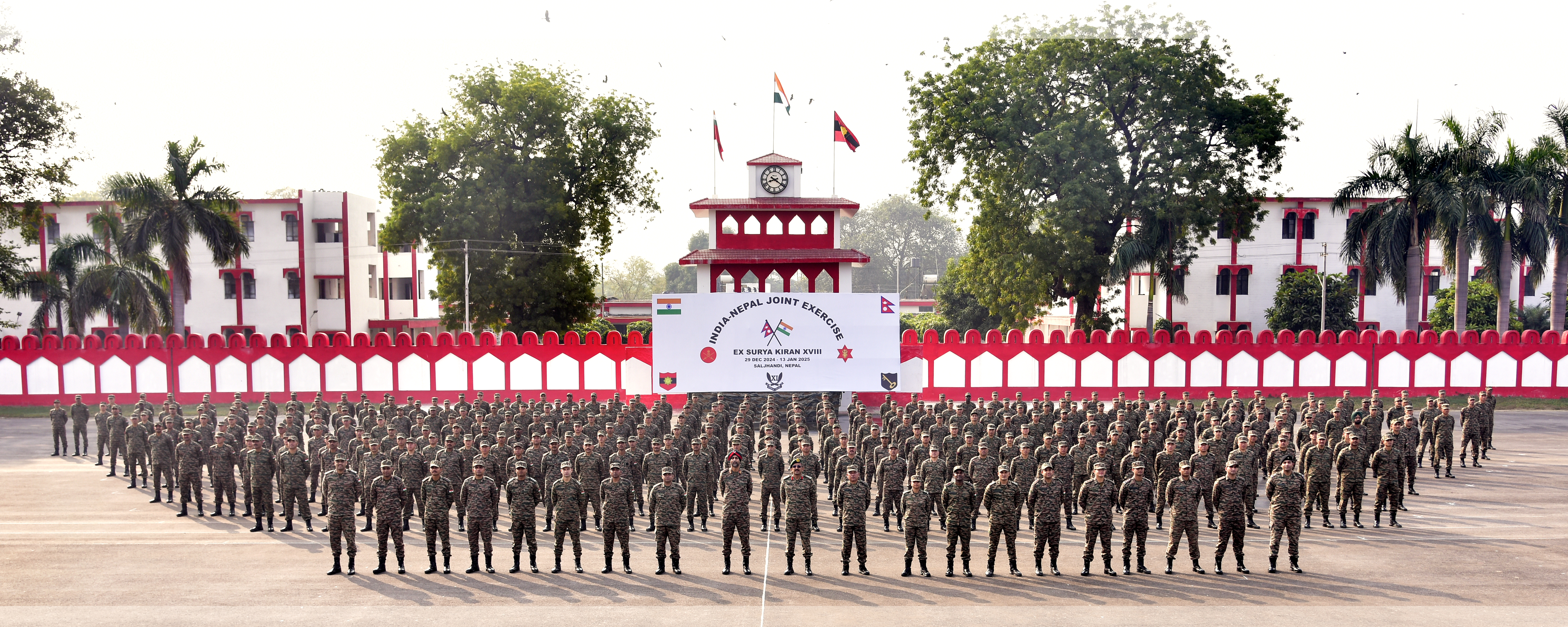
- 28 Dec 2024
In News:
Indian Army Contingent Departs for 18th Edition of Exercise SURYA KIRAN (India-Nepal Joint Military Exercise).
Key Highlights:
- Event Overview:
- Name: 18th Edition of Battalion-Level Joint Military Exercise SURYA KIRAN.
- Dates: 31st December 2024 to 13th January 2025.
- Location: Saljhandi, Nepal.
- Participants: Indian Army (334 personnel, led by a Battalion from the 11th Gorkha Rifles) and Nepal Army (Srijung Battalion).
- Objective of Exercise:
- Enhance interoperability in jungle warfare, counter-terrorism operations in mountainous terrain, and Humanitarian Assistance and Disaster Relief (HADR) under the UN Charter.
- Focus on operational preparedness, aviation training, medical aspects, and environmental conservation.
- Key Features:
- Training Focus: Improving combat skills and coordination to operate together in challenging situations.
- Exchange of Ideas: Soldiers from both nations will share best practices, enhance mutual understanding of operational procedures.
- Strengthening Bilateral Relations: Reinforces strong bonds of friendship, cultural linkages, and defense cooperation between India and Nepal.
- Significance:
- Historical Context: Exercise held alternately in India and Nepal since 2011.
- Enhances Combat Readiness: Prepares both armies to address shared security challenges and improve operational capabilities.
- Diplomatic Engagement: Fosters a productive professional environment between India and Nepal.
- Recent Developments:
- The exercise follows visits by General Upendra Dwivedi (Indian Army Chief) to Nepal and General Ashok Raj Sigdel (Nepali Army Chief) to India, strengthening military ties.
- Previous Editions:
- 17th Edition: Conducted in Pithoragarh, Uttarakhand (24th Nov - 7th Dec 2023).
Neolithic Age Grooves Discovery Near Boothapandi
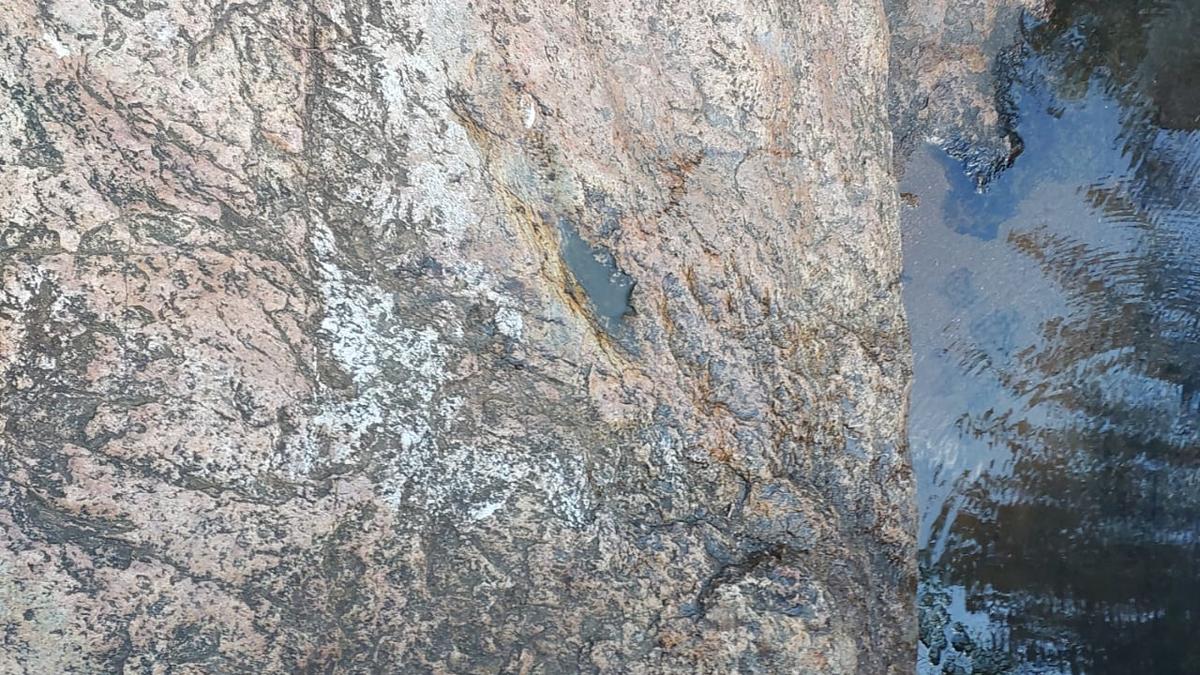
- 28 Dec 2024
In News:
- Archaeological Survey of India (ASI) discovered rock grooves created during the Neolithic age near Boothapandi village, Kanniyakumari district.
- The discovery was made by K. Hari Gopalakrishnan (Archaeological Officer, Tirunelveli and Kanniyakumari districts) and M. Faisal (Sembavalam Research Centre).
Key Highlights:
- Groove Characteristics:
- The grooves are approximately 4,000 years old, formed by Neolithic people for tool sharpening.
- Tools used for activities like hunting, ploughing, and digging were sharpened here.
- The grooves resulted from wear and tear of tools that had broken or worn out during use.
- Groove Dimensions:
- Largest groove: 15 cm in length, 4 cm in width.
- Smallest groove: 8 cm in length, 3 cm in width.
- Similar Discoveries:
- Similar grooves have been found in other parts of Tamil Nadu, including Krishnagiri, Tiruvannamalai, and Villupuram.
- Significance:
- The grooves provide evidence of Neolithic human habitation in the region.
- Ongoing excavations are expected to uncover more about Neolithic culture in the area.The Hindu
Lighthouse Tourism in India

- 27 Dec 2024
In News:
Lighthouse tourism in India is rapidly emerging as an exciting and profitable segment of the country's travel and tourism industry. India's coastline, stretching over 7,500 kilometers, is home to 204 lighthouses, many of which are being transformed into vibrant tourist destinations, celebrating both India's rich maritime history and its natural beauty.
Key Highlights:
- Historical and Scenic Appeal: Lighthouses in India are often located in breathtaking coastal or island locations, offering panoramic sea views and access to surrounding natural beauty. Some of these structures are centuries old and are situated near significant cultural landmarks or UNESCO World Heritage Sites, adding cultural depth to the visitor experience.
- Economic Growth: As part of the broader Maritime India Vision (MIV) 2030 and Amrit Kaal Vision 2047, the Government of India is keen to transform these historic lighthouses into hubs of economic activity. By developing infrastructure, creating new tourism-related jobs, and fostering local entrepreneurship, lighthouse tourism aims to benefit coastal communities and boost India's tourism economy. As of 2023-24, 75 lighthouses across 10 states have been equipped with modern amenities, attracting 16 lakh visitors—a 400% increase from previous years.
- Government Initiatives:
- Lighthouse Festivals: The annual Indian Lighthouse Festival, inaugurated in 2023, serves as a key event to promote lighthouse tourism and cultural heritage.
- The 1st Indian Lighthouse Festival, “Bharatiya Prakash Stambh Utsav”, was inaugurated on 23rd September, 2023 by the Union Minister of Ports, Shipping & Waterways, Shri Sarbananda Sonowal and Goa Chief Minister, Shri Pramod Sawant at the historic Fort Aguada in Goa.
- The 2nd Indian Lighthouse Festival was held in Odisha. Union Minister of Ports, Shipping & Waterways, Shri Sarbananda Sonowal, was also joined by Odisha Chief Minister, Mohan Charan Majhi. Shri Sonowal dedicated two new lighthouses at Chaumuck (Balasore) and Dhamra (Bhadrak) and emphasized empowering coastal communities to preserve and promote lighthouses as part of India’s rich maritime heritage.
- Sagarmala Programme: This government initiative integrates infrastructure development with sustainable practices, ensuring that the growth of lighthouse tourism benefits local communities while preserving the environment.
- Tourism Infrastructure: The government has invested ?60 crore in enhancing these sites, providing facilities like museums, parks, amphitheaters, and more to enrich the visitor experience.
- Lighthouse Festivals: The annual Indian Lighthouse Festival, inaugurated in 2023, serves as a key event to promote lighthouse tourism and cultural heritage.
- Sustainable Development: The Indian government places a strong emphasis on eco-friendly tourism. This includes integrating lighthouses into broader coastal circuits and launching digital awareness campaigns to attract domestic and international tourists.
- Community Empowerment and Employment: Lighthouse tourism has already created direct and indirect employment, from hospitality to transportation, local handicrafts, and artisan work, with more than 500 jobs being generated. Local communities are being trained to offer skills in hospitality and tourism services.
Future Plans:
- Skill Development: Programs are being introduced to equip local people with the necessary skills to cater to the tourism industry.
- Sustainable Practices: Eco-friendly practices will continue to be emphasized to protect coastal ecosystems.
- Integration with Coastal Circuits: Lighthouses will become key points of interest in broader coastal tourism itineraries, further enhancing their appeal to tourists.
Household Consumption Expenditure Survey: 2023-24
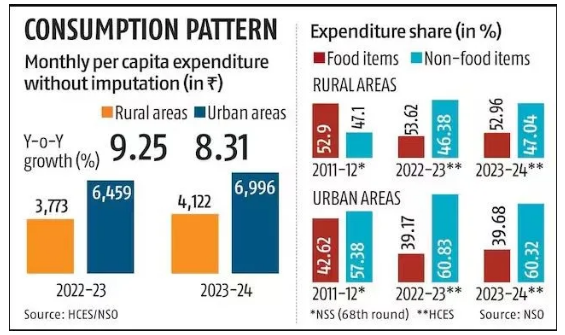
- 27 Dec 2024
In News:
The latest Household Consumption Expenditure Survey (HCES) for 2023-24 reveals notable trends in consumption patterns in rural and urban India, reflecting economic shifts post-pandemic.
Key Highlights:
- Food Spending Increase: The share of food expenditure in household budgets has increased both in rural and urban areas, likely due to rising food prices.
- Rural households allocated 47.04% of their expenditure to food in 2023-24, up from 46.38% in 2022-23.
- Urban households spent 39.68% of their budgets on food, slightly up from 39.17% last year.
- Narrowing Urban-Rural Gap: The gap in Monthly Per Capita Consumption Expenditure (MPCE) between rural and urban households has steadily reduced over the past decade.
- In 2023-24, rural consumption spending was 69.7% of urban consumption, an improvement from 71.2% in 2022-23 and 83.9% in 2011-12.
- Increased Rural Spending: Rural India has seen significant increases in spending. The average monthly spending per person in rural areas rose by 9.3% to Rs 4,122 in 2023-24, surpassing the 8.3% rise to Rs 6,996 in urban areas.
- This suggests a growing momentum in rural consumption, which has outpaced urban consumption growth in the last year.
- Spending Trends Across Income Groups: While the top 5% of both rural and urban populations saw a decrease in their consumption spending, every other income group, including the bottom 5%, registered an increase in spending.
- The bottom 20% in both rural and urban areas saw the highest growth in expenditure, signaling rising economic activity among lower-income groups.
- Non-Food Expenditure Dominates: Non-food items make up a larger share of household spending, particularly in urban areas, where they account for 60.32% of total expenditure compared to 52.96% in rural areas.
- In rural India, major non-food expenses include medical, conveyance, and clothing, while urban households allocate more to entertainment, education, and miscellaneous goods.
- Regional Consumption Patterns: Consumption expenditure varied significantly across states, with western and northern states like Maharashtra, Punjab, and Tamil Nadu spending more than the national average.
- In contrast, eastern and central states, including West Bengal, Bihar, and Odisha, spent less. Sikkim reported the highest per capita expenditure in both rural (Rs 9,377) and urban (Rs 13,927) areas, while Chhattisgarh recorded the lowest.
- Declining Consumption Inequality: The Gini coefficient, which measures consumption inequality, has declined in both rural and urban areas.
- This reflects reduced disparity in spending, indicating a trend toward more equitable economic growth across regions.
- Food Expenditure Trends: Food categories like beverages, processed foods, and cereals continued to see rising shares in total expenditure. The rise in spending on food items was particularly notable in rural areas for eggs, fish, and meat.
Operation Green Scheme
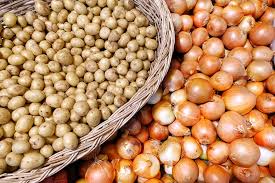
- 27 Dec 2024
In News:
The government’s flagship Operation Greens scheme, designed to stabilise crop prices and benefit farmers, has spent just 34 per cent of its allocated budget for 2024-25, according to a parliamentary report, even as onion farmers in Maharashtra reel from massive losses and potato shortages grip eastern states.
Key Highlights:
Overview:
- Launched: November 2018 under the Pradhan Mantri Kisan SAMPADA Yojana.
- Objective: Stabilize prices and improve farmers' income by enhancing the production and marketing of perishable crops, initially focusing on Tomato, Onion, and Potato (TOP).
- Expanded Scope (2021): Includes 22 perishable crops like mango, banana, ginger, apple, and shrimp.
- Implemented by: Ministry of Food Processing Industries (MoFPI).
- Funding: Managed by the National Agricultural Cooperative Marketing Federation of India (NAFED).
Key Aims:
- Reduce price volatility in agricultural markets.
- Minimize post-harvest losses.
- Strengthen farm-to-market linkages.
- Enhance farmers’ earnings by stabilizing market prices.
- Promote value addition and food processing.
Scheme Components:
- Short-term Interventions:
- Subsidies on transportation (50%) and storage (50%) to protect farmers from distress sales.
- Price stabilization during periods of surplus or shortage.
- Long-term Interventions:
- Development of farm-gate infrastructure like cold storage and processing facilities.
- Strengthening production clusters and Farmer Producer Organizations (FPOs).
- Building efficient agri-logistics systems.
- Promoting food processing and value addition capacities.
Key Features:
- 50% subsidy on transportation and storage costs for eligible crops.
- Projects eligible for 50% subsidy (up to ?50 crore per project), and for FPOs, a 70% subsidy.
- Demand-driven funding based on applications, with no fixed crop or state-wise allocation.
Key Findings from Parliamentary Standing Committee (PSC) Report (2024):
- Underutilisation of Budget: Only 34% (?59.44 crore) of the allocated ?173.40 crore for 2024-25 spent by October 2024, leaving 65.73% unspent.
- Slow Implementation: Out of 10 targeted projects, only 3 were completed by October 2024.
- Limited Impact on Price Stabilization:
- Onion prices fell by nearly 50% in Maharashtra, despite the scheme's intent to stabilize prices.
- Potato shortages in states like Odisha and Jharkhand due to weather-induced production dips in West Bengal.
- Inconsistent Policies: Export bans and fluctuating export duties caused frustration among onion farmers, undermining the scheme’s effectiveness in ensuring fair prices.
Impact on Farmers:
- Price Stabilization: Despite the scheme’s aims, price fluctuations continue to affect farmers, especially in Maharashtra with the onion price crash.
- Post-Harvest Losses: The scheme aims to reduce wastage by building infrastructure like cold storage, but challenges remain in implementation.
- Market Linkages: Attempts to connect farmers and FPOs with retail markets have not yet yielded significant results.
Operational Challenges:
- The scheme faces challenges in fulfilling its dual mandate of ensuring fair prices for farmers while keeping consumer prices affordable.
- The slow utilization of funds and incomplete infrastructure projects raise concerns about the effectiveness of the program.
- Inconsistent policy decisions, like the export ban and imposition of export duties, have contributed to farmer discontent.
Dr. Pushpak Bhattacharyya Committee

- 27 Dec 2024
In News:
- The Reserve Bank of India (RBI) has set up an eight-member committee to create a framework for the responsible and ethical use of Artificial Intelligence (AI) in the financial sector.
- The committee is chaired by Dr. Pushpak Bhattacharyya, Professor in the Department of Computer Science and Engineering at IIT Bombay.
Key Highlights:
Committee's Objective:
- The primary goal is to develop a Framework for Responsible and Ethical Enablement of AI (FREE-AI) in the financial sector.
- It will guide the ethical adoption of AI in financial services to enhance operational efficiency, decision-making, and risk management.
Scope of the Committee's Work:
- Assess the current global and domestic adoption of AI in financial services.
- Identify potential risks and challenges associated with the integration of AI in the sector.
- Recommend a framework for evaluating, mitigating, and monitoring AI-related risks.
- Propose compliance requirements for various financial entities (e.g., banks, NBFCs, fintech firms).
- Suggest a governance framework for ethical AI usage.
Key Benefits of AI in Financial Services:
- Operational Efficiency: AI can automate repetitive tasks, process large datasets, and enhance accuracy (e.g., loan application processing).
- Enhanced Decision-Making: Predictive analytics in AI help forecast market trends, aiding in better financial decision-making (e.g., algorithmic trading).
- Customer Relationship Management: AI-powered chatbots and virtual assistants enhance customer interaction, offering 24/7 support.
- Improved Risk Management: AI enables proactive fraud detection, improving security and preventing financial losses.
Concerns Associated with AI in Finance:
- Embedded Bias: AI models can replicate biases present in training data, leading to discriminatory outcomes and financial exclusion.
- Data Privacy and Security: The use of AI poses risks to personal data security, with potential violations of privacy regulations.
- Operational Challenges: AI systems may exhibit inconsistent responses, leading to challenges in trust and effectiveness.
- Cybersecurity Risks: Increased use of AI can heighten vulnerability to cyber-attacks and exploitation.
RBI's Role & Governance:
- The RBI aims to ensure that AI adoption in the financial sector is ethical, transparent, and aligned with global best practices.
- The committee's recommendations will influence policies to prevent misuse and safeguard consumer interests.
Rupee and Real Effective Exchange Rate (REER)
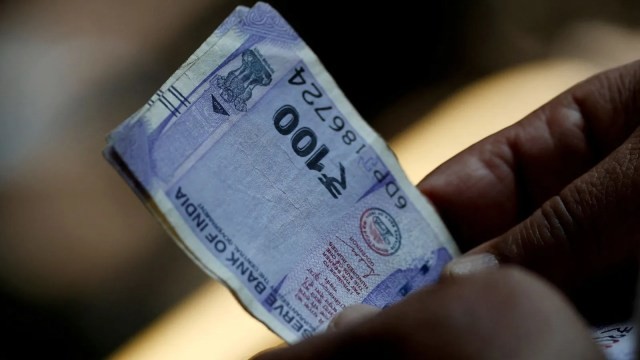
- 27 Dec 2024
In News:
The real effective exchange rate (REER) index of the rupee touched a record 108.14 in November, strengthening by 4.5 per cent during this calendar year, according to the latest Reserve Bank of India (RBI) data.
Key Highlights:
- Record REER Index:
- The Real Effective Exchange Rate (REER) of the rupee reached an all-time high of 108.14 in November 2024.
- This marks a 4.5% appreciation in REER during the calendar year 2024, according to RBI data.
- What is REER?
- REER is a weighted average of a country’s currency value against the currencies of its major trading partners, adjusted for inflation differentials.
- It considers 40 currencies accounting for about 88% of India's trade.
- REER Calculation:
- Nominal Exchange Rates: The exchange rate between the rupee and each partner's currency.
- Inflation Differentials: Adjusts for inflation differences between India and its trading partners.
- Trade Weights: Based on the trade share with each partner.
- Recent Trends in REER:
- In 2023, REER dropped from 105.32 in January to 99.03 in April.
- It has since been on an appreciating trend, reaching 107.20 in October and 108.14 in November 2024.
- Dollar Strengthening Impact:
- Despite the rupee weakening against the US dollar (from 83.67 to 85.19 between September and December 2024), it has appreciated against the euro, British pound, and Japanese yen.
- The dollar's strengthening was fueled by global economic factors, including inflation expectations in the US and high bond yields, which led to capital outflows from other countries, including India.
- Impact on Exports and Imports:
- Overvaluation: A REER above 100 signals overvaluation, which can harm export competitiveness (exports become costlier) while making imports cheaper.
- Undervaluation: A REER below 100 indicates a currency is undervalued, boosting exports but increasing the cost of imports.
- India's Inflation and REER:
- India's higher inflation relative to trading partners is a key factor behind the rupee’s rising REER, despite its depreciation against major currencies.
- This suggests the rupee is overvalued, which could explain why the RBI may allow the rupee to depreciate further against the dollar.
- Global Context:
- The strengthening of the US dollar, influenced by factors such as tariff policies under the Trump administration and tighter US monetary policies, plays a significant role in the depreciation of the rupee against the dollar.
- This dynamic affects India's trade balance, with potential consequences for export growth.
- Implications for India’s Economy:
- Overvalued currency (as indicated by REER above 100) can lead to a trade deficit, as imports become cheaper and exports less competitive.
- A weaker rupee, particularly against the dollar, could boost Indian exports but raise the cost of imports.
Strengthening Fisheries Extension Services
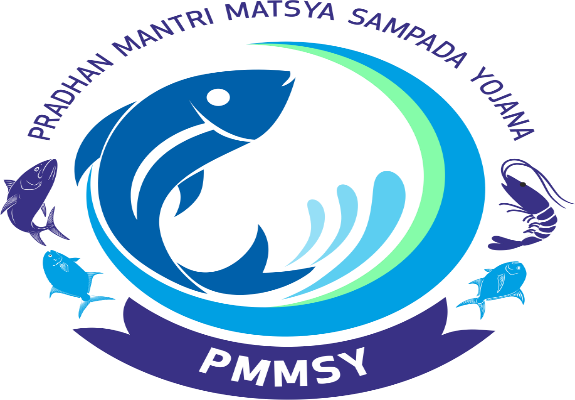
- 26 Dec 2024
In News:
India possesses diverse fisheries resources that provide livelihood opportunities to approximately three crore fishers and fish farmers. The country has witnessed an 83% increase in the national fish production since 2013-14, that stands at a record 175 lakh tons in 2022-23.
Importance of Fisheries Extension Services:
- Livelihood Support: Fisheries provide livelihoods to over 3 crore fishers and fish farmers in India. The sector's growth is crucial for enhancing sustainable practices and ensuring long-term productivity.
- Growth in Fish Production: India’s fish production has seen an 83% increase since 2013-14, reaching 175 lakh tons in 2022-23, with 75% of production coming from inland fisheries. India is the second-largest fish and aquaculture producer globally.
- Role of Extension Services: Extension services bridge the gap between scientific advancements and fishers, offering guidance on:
- Species lifecycle management
- Water quality management
- Disease control
- Sustainable rearing technologies and business models.
Government Initiatives to Strengthen Fisheries Extension:
- Matsya Seva Kendras (MSKs):
- Launched under PMMSY (Pradhan Mantri Matsya Sampada Yojana) in 2020, MSKs are one-stop centers providing comprehensive extension services.
- Support to Fish Farmers: MSKs offer:
- Disease testing, water, and soil analysis.
- Training on sustainable aquaculture practices.
- Technology infusion in seed/feed management.
- Focus on Inclusivity: Government assistance (up to 60%) is available for women and marginalized communities to set up MSKs.
- Examples:
- Thrissur, Kerala: Equipped with labs for water and microbial analysis.
- Maharashtra (Nasik and Sangli): Capacity-building efforts on seed/feed inputs.
- Collaborations: MSKs mobilize start-ups, cooperatives, and Fish Farmer Producer Organizations (FFPOs) to share best practices, including regenerative and conservation management in the face of climate change.
- Sagar Mitras:
- Role: Deployed in coastal states and union territories, Sagar Mitras act as a vital interface between the government and marine fishers.
- Functions:
- Collection and dissemination of daily marine catch data, price fluctuations, and market insights.
- Dissemination of important information: weather forecasts, fishing zones, local regulations, and hygienic fish handling.
- Provide support on disaster preparedness and natural calamities.
Enhancing Extension Services through Digital Platforms:
- AquaBazaar: A virtual learning platform initiated by the National Fisheries Development Board to provide expert guidance on:
- Seed production and breeding of commercially important fish species.
- Practical demonstrations to improve fishers' knowledge.
- Digital Outreach: Expanding such platforms will improve access to resources for fishers, especially in rural and remote areas.
Institutional Convergence and Capacity Building:
- Krishi Vigyan Kendras (KVKs): Fisheries extension services should be integrated with the over 700 Krishi Vigyan Kendras and state-level agricultural extension services for effective outreach.
- Formalizing the Sector: The World Bank-assisted project aims to create work-based digital identities for fishers and fish farmers, enhancing their access to extension services, training, and awareness programs.
Challenges in Fisheries Extension Services:
- Fragmented Initiatives: Multiple government schemes and programs lack institutional convergence, leading to inefficiencies in reaching the grassroots level.
- Digital Divide: Many rural and coastal areas face challenges in terms of digital literacy and internet connectivity, limiting the effectiveness of online platforms.
- Impact of Climate Change: Unpredictable weather patterns and resource depletion due to overfishing demand adaptive strategies and the promotion of climate-resilient practices.
Conclusion and Way Forward:
- Institutional Convergence: Combining existing extension machinery like Krishi Vigyan Kendras with fisheries extension services to leverage established networks and knowledge.
- Expand Digital Outreach: Platforms like AquaBazaar should be expanded to ensure wider access to expert knowledge, training, and best practices.
- Private Sector Collaboration: Encouraging public-private partnerships can enhance technology dissemination, capacity building, and resource mobilization in the fisheries sector.
- Focus on Sustainability: Developing climate-resilient and sustainable fisheries practices will be essential to address challenges posed by environmental changes and overfishing.
Private Aviation and Emissions
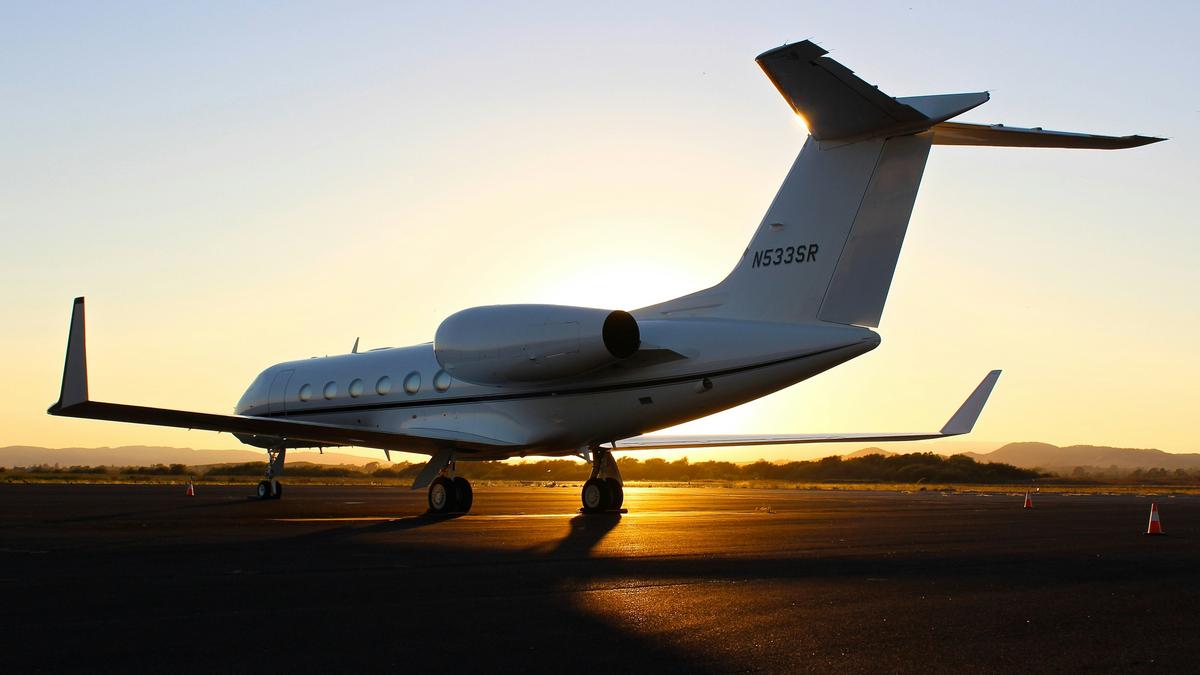
- 26 Dec 2024
In News:
Private aviation is releasing more than its ‘fair share’ of emissions.
Key Highlights:
- Aviation Sector's Global Emissions:
- The aviation sector contributed 2% of global CO2 emissions in 2022, around 800 Mt CO2 (International Energy Agency).
- If considered as a nation, aviation would rank among the top 10 emitters worldwide.
- Emissions from aviation have grown faster than other sectors like rail, road, or shipping in recent decades.
- Private Aviation and Its Impact:
- Private jets emit 5 to 14 times more CO2 per passenger than commercial flights and 50 times more than trains.
- Emissions from private aviation increased by 46% between 2019 and 2023.
- Each private flight contributes 3.6 tonnes of CO2 on average, intensifying global warming.
- Private aviation is responsible for significant nitrogen oxide (NOx) emissions and the creation of vapor trails, which further amplify environmental damage.
Trends in Private Aviation Growth:
- Global Trends:
- The number of private jets increased from 25,993 in December 2023 to 26,454 in February 2024.
- In the U.S., 69% of private aviation activity is concentrated.
- 8,500 more jets are expected to be delivered in the next 10 years globally.
- Private Aviation in India:
- 112 private planes were registered in India as of March 2024, placing it among the top 20 countries for private aircraft ownership.
- India's private aviation sector is expanding, driven by the growing billionaire and millionaire population.
- Private aircraft ownership in India stands at 1 per 1 lakh population, which is low compared to countries like Malta (46.51 per lakh) and the U.S. (5.45 per lakh).
Emission Reduction Efforts and Solutions:
- Sustainable Aviation Fuels (SAFs):
- SAFs are bio-based or waste-derived fuels that can reduce carbon emissions by up to 80% compared to conventional jet fuels.
- Airlines like SpiceJet (2018) and AirAsia (2023) have tested SAFs, but large-scale adoption is hindered by high costs and limited production.
- India aims to leverage its ethanol production chain, with potential to meet 15-20% of aviation fuel demand by 2050 if only surplus sugar is used.
- Hydrogen and Electric Aviation:
- Hydrogen offers a higher energy density than kerosene and emits only water vapor, making it a clean fuel alternative. However, hydrogen faces challenges with storage, infrastructure, and aircraft redesign.
- Battery-electric propulsion offers zero emissions but is currently limited by battery weight, energy density, and charging infrastructure.
India’s Policy and Initiatives:
- Government Initiatives:
- UDAN Scheme (Ude Desh ka Aam Nagrik) aims to enhance rural connectivity.
- NABH (Nextgen Airports for Bharat Nirman) seeks to increase airport capacity by five times.
- Sustainability Efforts:
- Indian airlines have tested SAFs, such as a 25% jatropha oil blend by SpiceJet in 2018.
- Ethanol for aviation fuel: India plans to use surplus sugar for ethanol, potentially fulfilling 15-20% of aviation fuel needs by 2050.
- Challenges to Decarbonisation:
- SAFs are costly and limited in availability.
- Hydrogen requires extensive infrastructure and aircraft redesign.
- Battery-electric solutions are currently unsuitable for long-haul flights due to energy limitations.
Ocean Anoxic Event 1a (OAE 1a)
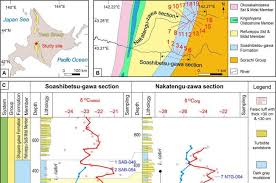
- 26 Dec 2024
In News:
A recent study published in Science Advances has offered fresh insights into the timing and duration of the Ocean Anoxic Event 1a (OAE 1a).
What is OAE 1a?
- Definition: A period during the Cretaceous Period (~119.5 million years ago) when Earth's oceans became oxygen-depleted (anoxic), causing significant disruption in marine ecosystems.
- Cause: Triggered by massive volcanic eruptions that released large amounts of CO?, leading to global warming and depletion of oxygen in oceans. This caused the formation of anoxic marine basins.
- Impact: The depletion of oxygen led to the extinction of marine species, especially plankton, and the formation of black shales (organic carbon-rich layers).
Anoxic Marine Basins:
- Characteristics: These are bodies of water with extremely low or absent oxygen, allowing certain microbes and fungi to thrive, while most aerobic organisms perish.
- Significance: Anoxic basins contribute to carbon sequestration by slowing down the decay of organic material, helping in the reduction of atmospheric CO? levels. Examples include the Black Sea, Cariaco Basin, and Orca Basin.
Recent Study Findings (Published in Science Advances):
- Timing: OAE 1a began approximately 119.5 million years ago and lasted for about 1.1 million years, with a long recovery period for ocean ecosystems.
- Methodology: The study used isotopic analysis of volcanic tuffs from Japan's Hokkaido Island to pinpoint the timing of the event.
- Volcanic Eruptions: The study confirmed that volcanic eruptions, particularly from the Ontong Java Nui complex, released CO?, triggering oceanic oxygen depletion.
- Relevance to Modern Climate Change: The study draws parallels between past volcanic CO? emissions and current human-induced warming, warning that rapid modern warming could cause similar disruptions in marine ecosystems and potentially lead to a Holocene extinction.
Holocene Extinction:
- Definition: The ongoing Sixth Mass Extinction, primarily driven by human activities like overexploitation, habitat loss, pollution, climate change, and invasive species.
- Impact: Current extinction rates are 1,000-10,000 times higher than natural rates, with severe consequences for biodiversity and ecosystem services.
Key Mass Extinction Events:
- Permian Extinction (~250 million years ago): Linked to volcanic activity, global warming, and ocean anoxia, leading to the extinction of over 95% of species.
- Cretaceous Extinction (66 million years ago): Caused by an asteroid impact, exacerbated by volcanic eruptions, leading to the extinction of non-avian dinosaurs.
- Holocene Extinction: Caused by human activities, with long-term implications for biodiversity and ecosystem services.
Efforts to Mitigate Extinction:
- Climate Action: Limiting global warming to 1.5°C as per the Paris Agreement.
- Biodiversity Conservation: The 30X30 Initiative, aiming to conserve 30% of lands and oceans globally by 2030.
- Sustainable Practices: Encouraging sustainable resource management to reduce habitat destruction, pollution, and overexploitation.
Viksit Panchayat Karmayogi Initiative
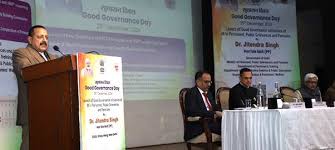
- 26 Dec 2024
In News:
On Good Governance Day, commemorating the 100th birth anniversary of former Prime Minister Atal Bihari Vajpayee, Dr. Jitendra Singh, the Union Minister of State for various departments, launched the ‘Viksit Panchayat Karmayogi’ initiative. This initiative is part of the broader ‘Prashasan Gaon Ki Aur’ campaign, which aims to empower Panchayati Raj Institutions (PRIs) at the grassroots level by enhancing the capacity and competence of elected representatives and officials.
Objective of the ‘Viksit Panchayat Karmayogi’ Initiative
The initiative seeks to strengthen PRIs by providing innovative tools and frameworks for capacity building and participatory governance. It will focus on equipping local leaders and officials with the necessary knowledge and tools to make effective decisions and implement sustainable development initiatives. Piloted in Odisha, Assam, Gujarat, and Andhra Pradesh, it uses e-learning platforms, AI-powered chatbots, and mobile apps to address knowledge gaps and improve service delivery at the local level. This program aligns with the government's mission to decentralize governance and promote citizen-centric and equitable development across rural India.
Other Key Initiatives Launched on Good Governance Day
- iGOT Karmayogi Platform Dashboard: A new dashboard on the iGOT Karmayogi platform, which empowers ministries, departments, and state administrators to monitor progress in capacity-building efforts. The enhanced dashboard includes customizable views, robust data filtering tools, and insights to optimize decision-making, marking the introduction of the 1600th e-learning course. This development is part of the Mission Karmayogi initiative to strengthen the civil service through continuous learning.
- CPGRAMS Annual Report 2024: The CPGRAMS Annual Report provided a review of the Centralized Public Grievance Redress and Monitoring System (CPGRAMS). This platform has been instrumental in resolving over 25 lakh grievances annually, leveraging advanced technologies and multilingual support. The report also highlighted the implementation of the Grievance Redressal Assessment and Index (GRAI), which has improved transparency, accountability, and the efficiency of public service delivery.
- Single Simplified Pension Application Form: A new digital pension system was launched, combining nine separate pension forms into a single, streamlined application. This digital transformation integrates e-HRMS with Bhavishya, reducing processing time and ensuring timely pension disbursement with real-time tracking and Aadhaar-based e-signatures. This system enhances the user experience for pensioners, making the process more efficient and transparent.
- Compendium of Pension Related Instructions 2024: Dr. Singh introduced a comprehensive Compendium of updated rules, procedures, and guidelines related to pensions. This document serves as a reference for pensioners and administrative personnel, ensuring clarity in the pension process and aligning with the government's vision of simplifying and streamlining pension systems.
Good Governance Day 2024 (Sushasan Diwas)
- Observed on: December 25 annually, marking the birth anniversary of Atal Bihari Vajpayee (1924–2018).
- Introduced in 2014: By the Bharatiya Janata Party (BJP) government under Prime Minister Narendra Modi.
- Purpose: To honor Vajpayee's contribution and promote good governance practices in India.
- Objective of Good Governance Day:
- Promote Government Accountability: Ensuring government actions and services are transparent and citizens benefit equally.
- Instill Good Governance Values: Encourages civil servants to practice effective and responsible governance.
- Bridge the Gap: Between citizens and the government through active participation.
- Theme for 2024: "India’s Path to a Viksit Bharat: Empowering Citizens through Good Governance and Digitalisation."
Cephalopods
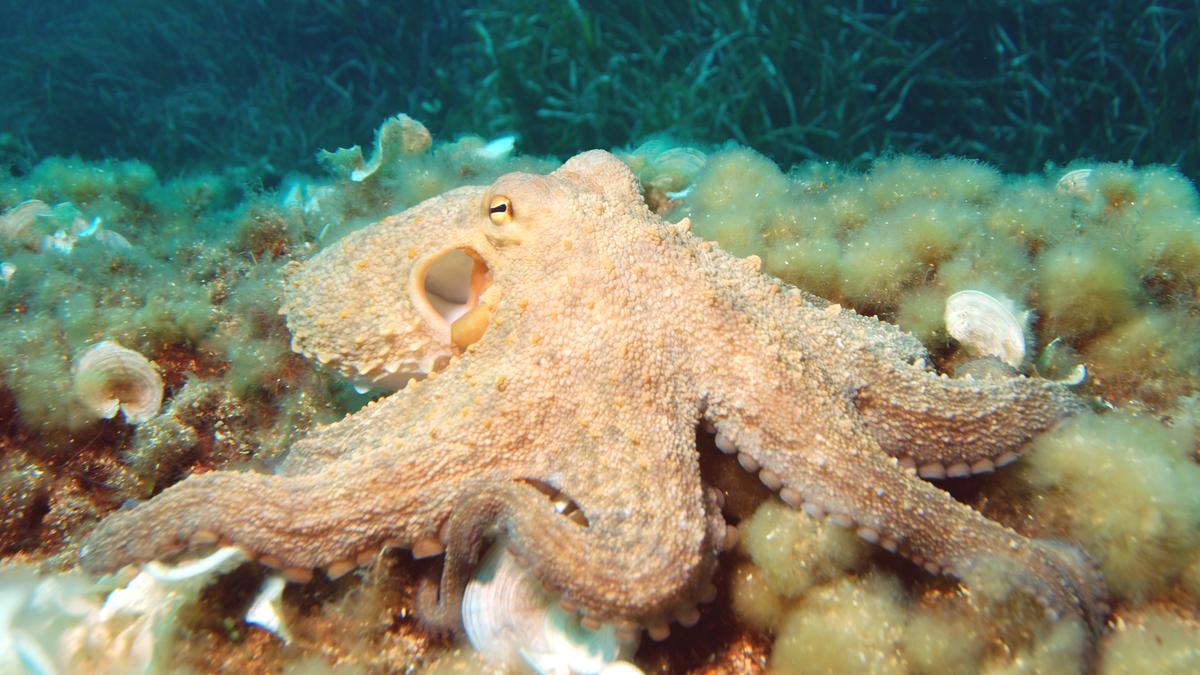
- 26 Dec 2024
In News:
Octopuses and their relatives are a new animal welfare frontier
- Cephalopods are highly intelligent, marine invertebrates that include species such as octopuses, squids, and cuttlefish.
- They are members of the class Cephalopoda in the phylum Mollusca, which is known for its diversity and complex morphology.
- Cephalopods are often considered one of the most behaviorally and morphologically complex classes within this phylum.
Key Features and Anatomy
Cephalopods exhibit several distinctive features:
- Body Structure: They have a head-foot structure, where the head is merged with the foot, and arms/tentacles surround the head. The arms and tentacles are derivatives of the foot, with some species possessing additional appendages for grasping or movement.
- Tentacles and Beak: Cephalopods possess tentacles, often with suction cups or hooks for capturing prey. They also have beak-like jaws, which are used to break down food.
- Eyes and Vision: Their unique W-shaped pupils enhance their vision. Most cephalopods are believed to be colorblind, but they exhibit remarkable visual camouflage through chromatophores (pigment cells) and reflectors beneath their skin, which can produce a wide range of colors and patterns.
- Movement: Cephalopods use jet propulsion to move. By expelling water from their mantle cavity, they can quickly travel through the water. Some species, like octopuses, also "walk" using their arms, while squids and cuttlefish employ fins for propulsion.
- Circulatory System: They have three hearts. Two hearts pump deoxygenated blood, while the third pumps oxygenated blood. Their blood is blue due to the presence of copper-based hemocyanin, which is effective in cold, low-oxygen environments.
- Neural Systems: Cephalopods are known for their advanced nervous systems. A significant portion of the neurons, especially in octopuses, are not located in the central brain but are distributed across the arms in “mini-brains” or ganglia, which helps coordinate movement and sensory functions independently.
Cognitive Abilities
Cephalopods have garnered significant attention due to their impressive cognitive abilities. Their intelligence is demonstrated in several areas:
- Problem-Solving: They are capable of using tools and strategies to solve complex tasks, such as escaping enclosures or catching prey.
- Learning and Memory: Cephalopods exhibit sophisticated learning behaviors, including associative learning and memory. Some species are known to delay gratification, choosing more preferred food items over immediate but less desirable ones. They also show evidence of "reversal learning," where they can adjust their behavior in response to changing environmental cues.
- Camouflage and Communication: Cephalopods can manipulate their skin's color and texture for camouflage, aiding in hunting and predator avoidance. For example, the Australian giant cuttlefish uses its chromatophores to communicate with potential mates or warn off competitors.
Species Diversity
Cephalopods are classified into three primary superorders:
- Octopodiforms: Includes octopuses (e.g., Octopus vulgaris), which are known for their intelligence and ability to solve problems.
- Decapodiforms: Includes squids and cuttlefish (e.g., Sepia officinalis, Architeuthis dux), which possess unique locomotion and hunting strategies.
- Nautiloids: Includes the chambered nautilus, the only cephalopod with an external shell, which is considered more primitive compared to other cephalopods.
Ethical and Conservation Concerns
Due to their intelligence and advanced nervous systems, cephalopods are becoming a focus of ethical debates regarding their treatment. Recently, California and Washington have enacted bans on octopus farming, and Hawaii is considering similar measures. These decisions are driven by the growing understanding of cephalopods' cognitive abilities and their capacity for suffering. As a result, there are increasing calls for humane treatment regulations similar to those for vertebrates.
Environmental and Ecological Role
Cephalopods play crucial roles in marine ecosystems. As carnivorous predators, they help maintain the balance of marine food chains by hunting smaller prey. Some species, such as the cuttlefish, also play important roles in communicating and signaling within their species through visual displays.
Kilauea Volcano
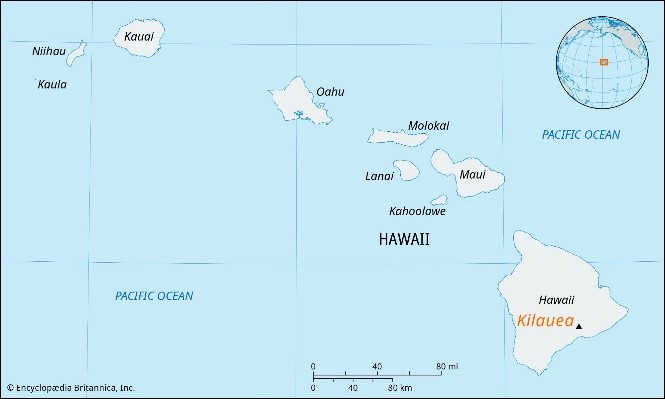
- 24 Dec 2024
In News:
Kilauea volcano erupts on Hawaii's Big Island.
Location:
- Kilauea is located on the southeastern shore of Hawaii’s Big Island, within Hawaii Volcanoes National Park.
Type of Volcano:
- Active Shield Volcano – Kilauea is a shield volcano, meaning it has broad, gentle slopes due to the eruption of fluid lava, which flows easily across large areas. Its eruptions tend to be less explosive than those of other types of volcanoes, creating a relatively safe environment for research and tourism compared to more volatile volcanoes.
Key Features:
- Summit Caldera: Kilauea has a large caldera at its summit, Halema'uma'u, which is a major volcanic feature. The caldera formed from the partial collapse of the volcano after the eruption of large amounts of magma. The caldera spans around 3 miles in length and 2 miles in width, covering an area of over 4 square miles.
- Rift Zones: Kilauea has two active rift zones stretching to the east and southwest, which are areas where lava can erupt and spread across the island. These rift zones are responsible for much of the volcanic activity.
- Lava Flows: Over the last 1,000 years, Kilauea has covered 90% of its surface with lava flows, making it one of the most active volcanoes in the world. It is known for producing highly fluid lava, which allows the lava to travel long distances from the eruption site.
- Historical Activity: Kilauea has had near-continuous eruptions in modern history, particularly between 1983 and 2018, with 34 eruptions since 1952. The volcano has remained active with frequent eruptions, and its lava lake was visible at the summit until 1924.
- Mythological Significance: The volcano is considered the home of Pele, the Hawaiian goddess of fire, lightning, and volcanoes. The Halema'uma'u crater is especially sacred, as it is believed to be the goddess's dwelling place.
Why is Kilauea Significant?
- Active and Young: Kilauea is one of the youngest volcanic products of the Hawaiian hotspot, a series of volcanic islands formed by the movement of the Pacific plate over a stationary plume of hot material beneath the Earth’s crust.
- Continuous Eruptions: It has been erupting regularly, with the exception of a quiet period between 1924 and 1952. Its eruptions are a significant natural phenomenon that scientists and visitors closely monitor.
- Proximity to Mauna Loa: Kilauea is located near Mauna Loa, another active shield volcano. Together, these two volcanoes form a large volcanic region, and their slopes merge seamlessly, making this area home to two of the world's most active volcanoes.
Shield Volcanoes and Kilauea
- Shield Volcanoes: A shield volcano is characterized by its broad, gentle slopes. These slopes are formed by repeated eruptions of fluid basalt lava, which spreads easily over large areas. Unlike composite volcanoes, which have steep, conical shapes, shield volcanoes like Kilauea have a much wider, dome-like appearance.
- Low Explosivity: Eruptions from shield volcanoes are generally low in explosivity, and lava flows are typically slow-moving. However, explosive events can occur if water interacts with lava, but this is relatively rare in Kilauea's eruptions.
Kilauea's Current Activity
In December 2024, Kilauea began erupting again, continuing its pattern as one of the most active volcanoes in the world. This eruption has once again drawn attention to the ongoing volcanic activity on the Big Island of Hawaii, as the volcano regularly contributes to the reshaping of the island and its landscape.
Other Volcanoes in India:
While Kilauea is known for its active status, India also has volcanic features, although most are dormant or extinct:
- Barren Island (Andaman Islands) – India’s only active volcano.
- Narcondam (Andaman Islands) – A dormant volcano.
- Baratang (Andaman Islands) – Known for mud volcanoes.
- Deccan Traps (Maharashtra) – A vast volcanic plateau formed by ancient eruptions.
- Dhinodhar Hills (Gujarat) – Extinct volcano.
- Dhosi Hill (Haryana) – An ancient volcanic site with historical significance.
GenCast AI
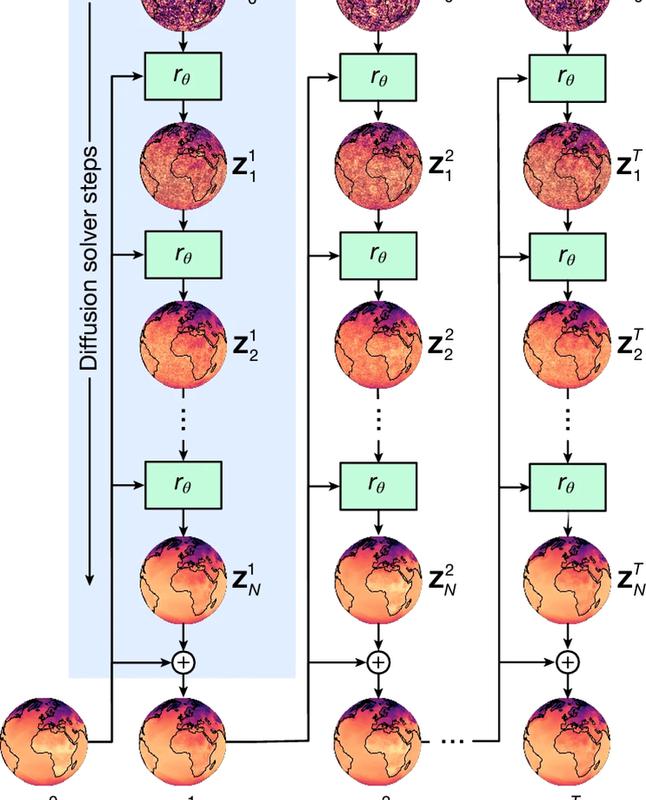
- 24 Dec 2024
In News:
Google’s GenCast AI is an advanced weather forecasting model developed by DeepMind that uses machine learning techniques to provide more accurate and longer-term weather predictions compared to traditional forecasting methods.
How GenCast Works:
- Training on Reanalysis Data:
- GenCast is trained on 40 years of reanalysis data (from 1979 to 2019). This data combines historical weather observations with modern weather forecasts, providing a comprehensive picture of past weather and climate conditions.
- Ensemble Forecasting with AI:
- Unlike traditional Numerical Weather Prediction (NWP) models, which run simulations based on physical laws and initial conditions, GenCast uses an ensemble forecasting approach where multiple predictions are generated by an AI model, not an NWP model.
- It produces a range of possible weather scenarios, each with different starting conditions, to reflect the uncertainty in weather forecasts.
- Neural Network and Diffusion Model:
- GenCast uses a neural network architecture with 41,162 nodes and 240,000 edges that process weather data. Each node accepts data, manipulates it, and passes it to another node, helping to refine and improve predictions.
- It uses a diffusion model, a type of AI model commonly used in generative AI. The model takes noisy input data, processes it through 30 refinement steps, and gradually produces a clearer forecast (de-noising the data).
- The result is a probabilistic forecast, such as "there's a 25% chance of rain in Chennai on December 25," rather than a deterministic forecast, which would provide exact quantities like "5 mm of rain."
- Faster Processing:
- The entire forecast process is incredibly efficient. GenCast can generate 50 ensemble forecasts at once with a spatial resolution of 0.25° x 0.25° (latitude-longitude) and temporal resolution of 12 hours.
- Using Google's TPU v5 units, it can produce these forecasts in just 8 minutes—far faster than traditional supercomputers, which can take several hours to run NWP simulations.
Key Features of GenCast:
- Better Performance on Extreme Weather: GenCast has shown superior accuracy in predicting extreme weather events, such as tropical cyclones, compared to traditional NWP models like those from the European Centre for Medium-Range Weather Forecasts (ECMWF).
- Probabilistic Forecasting: GenCast produces probabilistic forecasts, offering predictions like the likelihood of rain rather than precise measures, which helps with better preparation, especially for extreme weather events.
- Long-Term Forecasting: GenCast can generate forecasts for up to 15 days, which is longer than most traditional models, and is particularly useful for anticipating events like wind power generation and tropical cyclone tracking.
- Efficiency: GenCast's speed and resource efficiency set it apart from traditional NWP models, reducing forecast times dramatically.
Comparison with Traditional Weather Models:
- Numerical Weather Prediction (NWP): Traditional NWP models rely on solving complex physical equations to simulate the atmosphere and provide deterministic forecasts. These models require significant computational power and are typically limited to weather predictions for about a week.
- GenCast's Probabilistic Forecasts: In contrast, GenCast offers probabilistic predictions, making it better suited for providing early warnings about extreme weather, with better lead times for disaster preparation.
Future Developments:
While GenCast is impressive, Google acknowledges the importance of traditional NWP models for both supplying initial conditions and providing the foundational data needed to train AI models like GenCast. Ongoing collaboration with weather agencies is crucial to enhancing AI-based methods for weather prediction.
Overall, GenCast represents a significant leap forward in the use of AI for weather forecasting, with potential for greater accuracy, efficiency, and longer-term predictions compared to current methods.
National Human Rights Commission (NHRC)
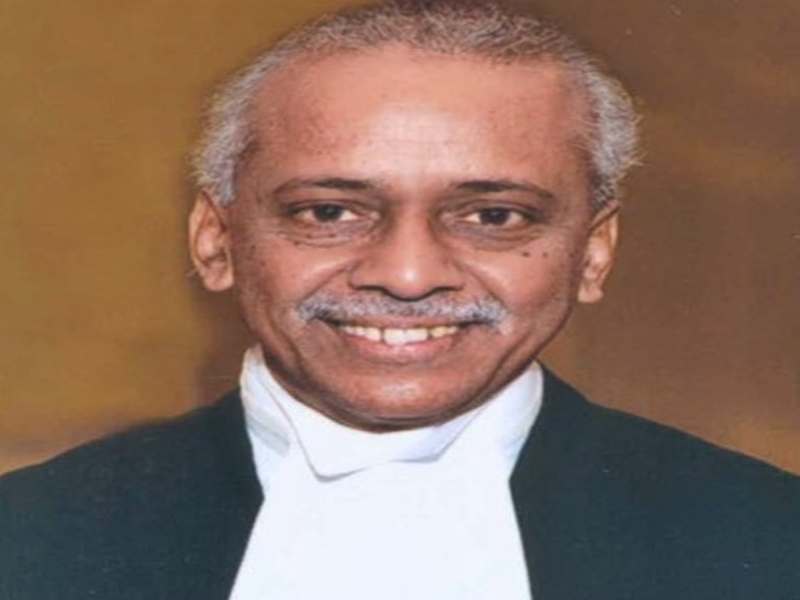
- 24 Dec 2024
In News
Justice V. Ramasubramanian, a retired Supreme Court judge, has been appointed as the new chairperson of the National Human Rights Commission (NHRC). This decision was made by President Droupadi Murmu, and it comes following the completion of Justice Arun Kumar Mishra's tenure as NHRC chairperson in June 2023. After Justice Mishra's retirement, Vijaya Bharathi Sayani served as the acting chairperson. Alongside Justice Ramasubramanian, Priyank Kanoongo and Dr. Justice Bidyut Ranjan Sarangi (Retd.) have also been appointed as members of the commission.
Justice Ramasubramanian had been appointed a judge of the Supreme Court in September 2019 and retired in June 2023. His appointment to the NHRC is seen as a significant development for human rights advocacy and protection in India.
National Human Rights Commission (NHRC)
Establishment and Legal Framework
- Formation Date: The NHRC was established on October 12, 1993, under the Protection of Human Rights Act (PHRA), 1993.
- Paris Principles: It was created in alignment with the Paris Principles (1991), which were endorsed by the UN General Assembly in 1993, aimed at setting standards for national human rights institutions.
- Statutory Body: NHRC is a statutory body, meaning it is established by law, with a primary function to safeguard human rights in India.
Objectives
The NHRC's primary objective is to promote and protect human rights as defined in Section 2(1)(d) of the PHRA, which include fundamental rights such as:
- Right to Life
- Right to Liberty
- Right to Equality
- Right to Dignity
These rights are guaranteed by the Indian Constitution and are essential to the protection of individuals' freedoms and welfare.
Composition of NHRC
- Chairperson: A former Chief Justice of India or a former Supreme Court judge serves as the chairperson.
- Members:
- One former or sitting Supreme Court judge.
- One former or sitting Chief Justice of a High Court.
- Three members, with at least one woman, who have experience in human rights matters.
- Ex-Officio Members: The chairpersons of various National Commissions (e.g., SC/ST, Women, Minorities) and the Chief Commissioner for Persons with Disabilities are also part of the NHRC.
Functions and Powers
The NHRC has several crucial functions and powers to ensure the protection and promotion of human rights:
- Inquiry into Human Rights Violations: The commission can inquire into violations of human rights by public servants or negligence in protecting rights.
- Recommendations: It can make recommendations on how to protect, promote, and effectively implement human rights within India.
- Review of Laws: NHRC assesses various laws, treaties, and international instruments related to human rights.
- Research and Awareness: It promotes research, publications, and awareness about human rights issues, including educating the public about their rights and safeguards.
- Inspection of Institutions: NHRC has the authority to visit and inspect institutions such as jails, detention centers, and other places of confinement to ensure the humane treatment of individuals.
The ‘No-Detention’ Policy and Its Evolution
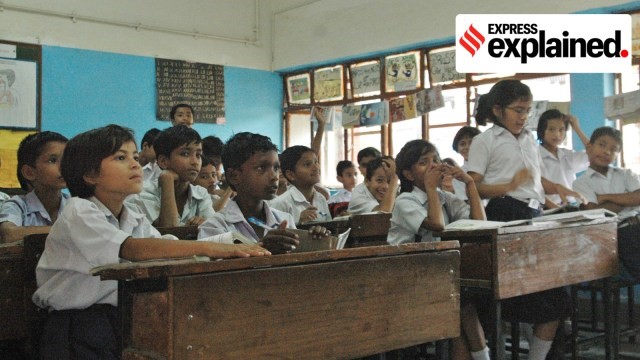
- 24 Dec 2024
In News:
The ‘no-detention’ policy was a significant part of India’s education reforms under the Right to Education (RTE) Act of 2009. This policy aimed to prevent the detention or expulsion of students until the completion of elementary education (Classes 1-8), with a focus on reducing dropout rates and ensuring every child receives at least basic education. However, the policy has been contentious, with arguments both for and against its implementation.
What was the ‘No-Detention’ Policy and Why Was It Introduced?
The RTE Act (2009) made education free and compulsory for children aged 6 to 14, under Article 21A of the Constitution. Section 16 of the Act specifically prohibited the detention or expulsion of students in elementary education (Classes 1-8). The rationale was to prevent the demotivation and fear of failure that might cause children to drop out of school, especially those from marginalized backgrounds. By promoting automatic progression through grades, the policy aimed to ensure that no child was left behind due to academic struggles.
Key to this system was Continuous and Comprehensive Evaluation (CCE), which assessed students on a holistic basis, beyond just formal exams, encouraging learning through regular feedback and assessments.
Amendments to the RTE Act (2017 and 2019)
In 2017, a Bill was introduced to amend the RTE Act, following concerns about the effectiveness of the ‘no-detention’ policy. The amended policy allowed for regular exams in Classes 5 and 8. If students failed, they would be given a re-examination within two months. If they still did not meet promotion criteria, detention could be enforced. This amendment empowered the Centre and states to decide whether to detain students in these grades.
The amendment came after criticism of the original policy for promoting students without sufficient learning progress. States like Madhya Pradesh and Punjab argued that no-detention was leading to poor academic performance, and called for a return to the traditional system of promoting students based on examination results.
Arguments for and Against the No-Detention Policy
Arguments for No-Detention:
- Reduced Dropout Rates: The policy helped ensure students, especially from disadvantaged backgrounds, continued in school without the fear of failure, leading to a drop in dropout rates.
- Holistic Development: It encouraged a child-centric learning approach where students were assessed on their overall development rather than just exam performance.
- Social Inclusivity: By promoting students regardless of performance, it was hoped that education would be more inclusive, preventing marginalization of students from lower socio-economic backgrounds.
Arguments Against No-Detention:
- Decline in Learning Outcomes: The policy led to a lack of motivation for students to perform academically. Without the accountability of exams, many students became less serious about their studies.
- Low Teacher Accountability: With automatic promotion, teachers had less incentive to ensure quality learning, leading to an overall dip in teaching standards.
- Impact on Educational Standards: Data indicated a decline in learning levels in government schools, as students were passed through the system without mastering the required skills.
In 2015, the Central Advisory Board of Education (CABE) conducted a study suggesting that more flexibility was needed in the policy, allowing schools to retain students who were significantly behind. However, there were differing views within the committee. Some members argued that detention had no proven benefits, and that the real issue was the poor quality of the education system itself.
In 2016, the TSR Subramanian Committee on the New Education Policy suggested continuing the no-detention policy until Class 5, citing evidence of reduced dropout rates and increased enrollment. However, other states pushed for scrapping it due to concerns over declining educational standards.
The Shift Toward Scrapping the No-Detention Policy
By 2019, the RTE Act was amended to give states the discretion to hold back students in Classes 5 and 8, if they failed to meet the promotion criteria. This change came after state feedback that the no-detention policy was having adverse effects on learning outcomes and teacher accountability.
In 2024, the Ministry of Education took further steps to formalize this shift by introducing new rules under the RTE Act Amendment. Students failing to meet the promotion criteria in Classes 5 and 8 will be given additional instruction and an opportunity for a re-examination. If they still fail, they can be detained, with specialized guidance provided to help them catch up.
Which States Continue or Scrapped the No-Detention Policy?
The decision to maintain or scrap the policy varies across states and union territories:
- States Retaining No-Detention Policy: Andhra Pradesh, Arunachal Pradesh, Goa, Karnataka, Kerala, Maharashtra, Odisha, Telangana, Uttar Pradesh, among others, continue to implement the no-detention policy, citing its role in minimizing dropouts and promoting inclusivity.
- States That Have Scrapped the Policy: Delhi, Punjab, Madhya Pradesh, Rajasthan, West Bengal, and Gujarat have already discarded the policy, opting for examinations and re-examinations in Classes 5 and 8 to ensure better academic accountability.
Why the Controversy?
The debate over the no-detention policy hinges on balancing academic accountability with social inclusivity. Supporters argue that it ensures children from marginalized communities receive their full elementary education, while opponents point to the decline in learning standards, especially in government schools, as a major issue.
In summary, while the no-detention policy was introduced with the noble aim of reducing school dropouts and ensuring every child completed at least elementary education, its effectiveness has been questioned due to concerns over declining learning outcomes. The recent changes represent a shift towards better accountability and quality in education, while still ensuring that children receive additional support before being detained.
72nd North Eastern Council (NEC) Plenary Session
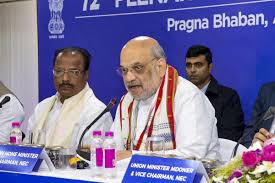
- 23 Dec 2024
Overview:
The 72nd Plenary of the North Eastern Council (NEC), concluded in Agartala, Tripura, marking the second time the city hosted this significant event since 2008. The plenary featured a series of high-level discussions focused on accelerating development and addressing the socio-economic challenges of the North Eastern Region (NER), which includes Arunachal Pradesh, Assam, Manipur, Meghalaya, Mizoram, Nagaland, Sikkim, and Tripura.
Key Highlights:
- Pre-Plenary Technical Sessions: Central ministries presented their developmental agendas for the NER, charting a path forward for the region's growth and addressing key challenges.
- Main Plenary:
- Presiding Officers: The session was chaired by the Union Home Minister and NEC Chairman, Shri Amit Shah, along with DoNER Minister, Shri Jyotiraditya M. Scindia, and Minister of State, Dr. Sukanta Majumdar.
- Participants: Governors, Chief Ministers, Chief Secretaries, Planning Secretaries, and high-ranking officials from all eight northeastern states will engage in strategic discussions to foster regional development.
- Agartala as Host:
- Agartala's selection as the venue signifies the evolving role of the city in regional development, as plenary sessions are usually held in Shillong and Guwahati.
- Significance of the NEC:
- The North Eastern Council (NEC), established in 1971, plays a pivotal role in the socio-economic development of the region. It was initially an advisory body but has evolved into a regional planning agency with a larger mandate.
- The NEC has contributed significantly to the development of critical infrastructure in the region, such as over 11,500 kilometers of roads, power generation through NEEPCO, and educational institutions like RIMS.
- Prime Minister's Vision for the NER:
- The Prime Minister’s vision for the region revolves around recognizing it as 'Ashta Lakshmi'—symbolizing immense potential and cultural richness. The NEC is central to realizing this vision through initiatives like the PM-DevINE scheme.
Key Achievements of the NEC:
- Over 11,500 kilometers of road construction, improving regional connectivity.
- Increased power generation capacity via projects managed by NEEPCO.
- Established institutions like the Regional Institute of Medical Sciences (RIMS) and others that cater to regional educational and technical needs.
Recent Focus and Shift in Governance:
- In the 72nd Plenary, the Union Home Minister highlighted a shift in the focus of police forces in northeastern states, urging them to focus not just on insurgency control but on ensuring the constitutional rights of citizens, reflecting a new governance phase in the region.
Centenary of Belgaum session
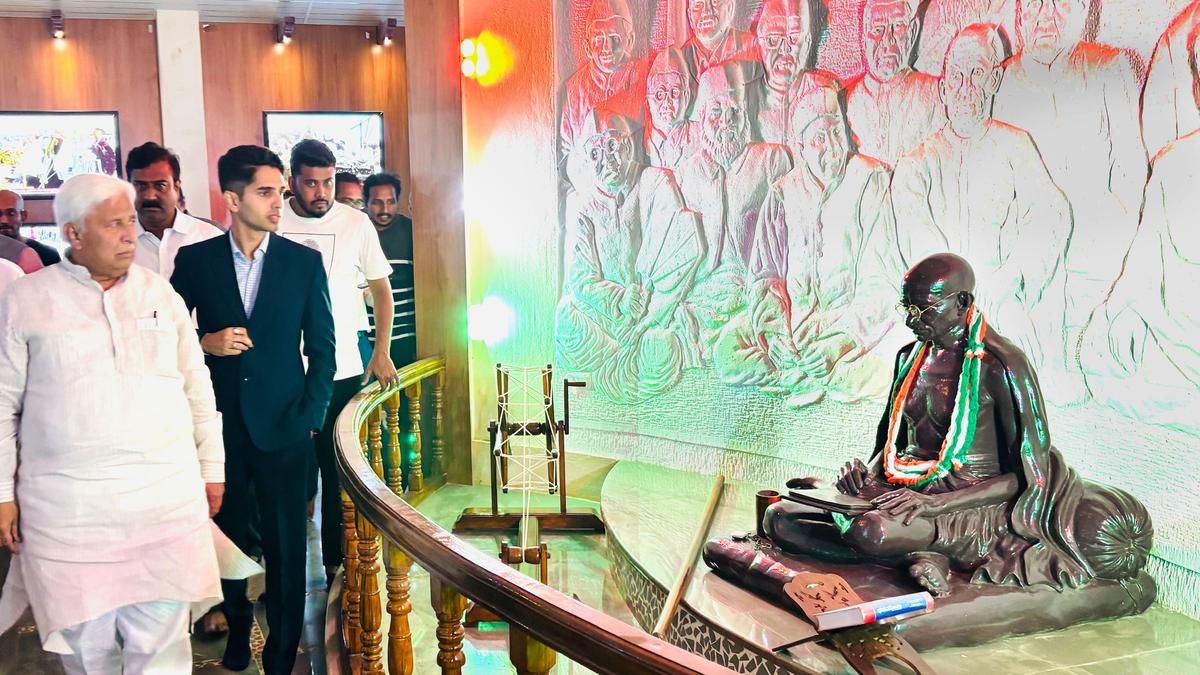
- 23 Dec 2024
In News:
The Belagavi Session of 1924, marking its centenary in December 2024, holds significant historical and cultural value in India's freedom struggle. This session, the 39th All-India Congress session, was presided over by Mahatma Gandhi, the only instance he served as the Congress president. It took place in Belagavi, Karnataka, from December 26-27, 1924, amidst a growing momentum for India’s fight against British colonial rule.
Key Aspects of the Belagavi Session:
- Gandhi's Leadership: This was the only Congress session Gandhiji chaired, marking a pivotal moment in the freedom movement. His leadership emphasized non-violence, self-reliance, and unity among diverse groups, setting the stage for future movements like the Salt March and Quit India Movement.
- Focus on Social Change: Gandhi used the session to push for social reforms, including the abolition of untouchability, promotion of khadi (hand-spun cloth), and supporting village industries. These initiatives aimed to make Congress a movement for both political freedom and social upliftment.
- Promoting Hindu-Muslim Unity: Gandhi strongly advocated for Hindu-Muslim unity, recognizing its critical importance in the larger struggle for independence. His stance emphasized communal harmony during a time of social and political divisions.
- Cultural Impact: The session also featured musical performances, including contributions from Hindustani maestros like Vishnu Digambar Paluskar and Gangubai Hangal. The Kannada song “Udayavagali Namma Chaluva Kannada Nadu” became an anthem for the region's unification movement.
- Legacy: The session had a lasting impact, with initiatives such as promoting khadi, reducing Congress membership fees, and creating new avenues for peasant participation in the freedom movement. The Pampa Sarovara well, dug during the event, continues to provide water to parts of Belagavi.
Centenary Celebrations:
The centenary of the Belagavi Session is being celebrated with a range of events, including:
- A Congress Working Committee (CWC) meeting on December 26, 2024.
- A public rally with the theme “Jai Bapu, Jai Bhim, Jai Samvidhan.”
- Cultural events and exhibitions are also planned, including competitions, tableaux, and charkha marathons.
National Farmers' Day
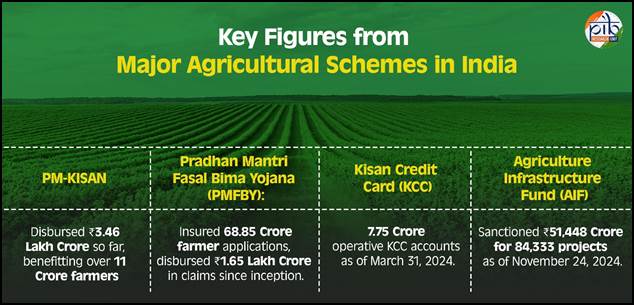
- 23 Dec 2024
In News:
National Farmers' Day, also known as Kisan Diwas, is celebrated annually on December 23rd to honor the vital contributions of Indian farmers and commemorate the birth anniversary of Chaudhary Charan Singh, India's fifth Prime Minister. A passionate advocate for rural development and farmers' welfare, Charan Singh's policies laid the foundation for several reforms aimed at uplifting the agrarian economy. His contributions continue to inspire government initiatives that prioritize the welfare of farmers, fostering sustainable agricultural growth and ensuring food security for the nation.
The Legacy of Chaudhary Charan Singh
Chaudhary Charan Singh was born on December 23, 1902, in Noorpur, Uttar Pradesh. His deep understanding of rural issues and commitment to improving farmers’ lives earned him the title of "Kisan Leader". Throughout his political career, he championed reforms such as the Debt Redemption Bill (1939), which alleviated the financial burdens of farmers, and the Land Holding Act (1960), which promoted fair distribution of agricultural land. He also advocated for Minimum Support Price (MSP), and his policies laid the groundwork for NABARD and other farmer-centric institutions.
Significance of Kisan Diwas
Kisan Diwas highlights the importance of agriculture in India’s economy and employment, with farmers constituting nearly 50% of the workforce. The day emphasizes the need for policies that address farmers' challenges such as climate change, financial constraints, and technological adoption. It also serves as a reminder of the necessity to empower farmers through innovative solutions, financial security, and sustainable farming practices.
Key Government Initiatives for Farmer Welfare
The Indian government has launched several schemes to address the challenges faced by farmers and support their socio-economic upliftment:
- Pradhan Mantri Kisan Samman Nidhi (PM-KISAN): Provides direct income support to small and marginal farmers.
- Pradhan Mantri Fasal Bima Yojana (PMFBY): Offers crop insurance to mitigate financial risks due to crop loss.
- Pradhan Mantri Kisan Maandhan Yojana (PM-KMY): A pension scheme for farmers to ensure long-term social security.
- Soil Health Card Scheme: Promotes efficient fertilizer use and soil health by providing farmers with personalized soil health reports.
- Farmer Producer Organizations (FPOs): These entities help farmers collectively access markets, reduce costs, and improve bargaining power.
- Modified Interest Subvention Scheme (MISS): Provides affordable credit to farmers, especially for agriculture-related activities.
- Kisan Credit Card (KCC): Helps farmers access timely credit for agricultural purposes at concessional rates.
Significant Budget Allocations and New Schemes
The government has drastically increased its budget allocation to the agriculture sector. From Rs. 21,933.50 crore in 2013-14, the budget has risen to Rs. 1,22,528.77 crore for 2024-25, underlining the government's commitment to farmer welfare and sustainable agricultural development.
Notable Initiatives:
- Namo Drone Didi Scheme: This initiative, aimed at empowering Women Self-Help Groups (SHGs), supports the use of drones for agricultural purposes, including fertilizer and pesticide application, with 80% financial assistance.
- Clean Plant Programme (CPP): Enhances the quality and productivity of horticulture crops by ensuring disease-free planting material.
- Digital Agriculture Mission: Aims to modernize farming with digital infrastructure, including crop estimation surveys and e-agriculture platforms.
- National Mission on Natural Farming (NMNF): Encourages chemical-free, sustainable farming practices.
Farmers' Role in Nation-Building
India’s agricultural sector not only sustains the livelihoods of millions but also contributes significantly to the country's GDP. In FY 2023-24, agriculture contributed 17.7% to the Gross Value Added (GVA). With over 54% of the country's land dedicated to agriculture, farmers are critical to food security and rural development.
In 2023-24, India achieved a record foodgrain production of 332.2 million tonnes, illustrating the resilience of Indian farmers in ensuring food availability despite challenges like climate change.
IPBES Nexus Report

- 22 Dec 2024
In News:
The IPBES Nexus Report, formally titled The Assessment Report on the Interlinkages Among Biodiversity, Water, Food, and Health, was released to address the interconnected global challenges of climate change, biodiversity loss, food insecurity, water scarcity, and health risks. The report stresses that these challenges are deeply intertwined and cannot be solved separately; doing so would lead to ineffective or even counterproductive results.
Key Highlights of the Nexus Report
- Interconnections Between Global Challenges: The report emphasizes the strong interlinkages between the five major global challenges:
- Biodiversity Loss
- Water Scarcity
- Food Insecurity
- Health Risks
- Climate Change
It argues that efforts to address these challenges independently are ineffective and often exacerbate the problems. For example, scaling up food production to combat hunger can put more pressure on land, water, and biodiversity.
- Economic Cost of Biodiversity Loss:
- Global GDP Dependency: Over half of the global GDP (approximately $58 trillion annually) depends on nature. Biodiversity degradation significantly undermines productivity and economic output.
- Unaccounted Costs: The neglect of biodiversity in economic activities contributes to a loss of $10-25 trillion annually.
- Delayed Action: Delaying action on biodiversity conservation could double the costs within the next decade, potentially incurring $500 billion per year in additional costs.
- Synergistic Approach: The report identifies over 70 response options that promote synergistic outcomes across the five challenges. These include:
- Restoring Carbon-Rich Ecosystems: Such as forests, soils, and mangroves to address climate change and biodiversity loss.
- Managing Biodiversity to Prevent Disease Transmission: Effective biodiversity management reduces risks of diseases passing from animals to humans (zoonotic diseases).
- Sustainable Diets: Promoting diets that are both healthy and environmentally sustainable.
- Nature-Based Solutions: Implementing solutions that rely on natural processes to mitigate challenges like water scarcity and climate change.
- Inequality and Vulnerability: The report highlights how inequality exacerbates the challenges. Vulnerable populations, especially those living in areas where biodiversity has sharply declined, face increased health risks, malnutrition, and economic instability. 41% of people live in regions where biodiversity loss has been particularly severe, and 9% face high health burdens due to these declines.
- Principles for Transformative Change: The report outlines principles for achieving transformative change:
- Equity and Justice: Ensuring fair distribution of resources and opportunities for all.
- Pluralism and Inclusion: Embracing diverse perspectives and voices in policy-making.
- Respectful Human-Nature Relationships: Recognizing and nurturing reciprocal relationships between humans and nature.
- Adaptive Learning and Action: Continuously evolving policies and strategies based on feedback and new evidence.
- Urgency for Immediate Action: The report stresses that immediate action is critical. If the world continues to neglect biodiversity, it will face not only environmental collapse but also a missed opportunity for economic growth. Immediate implementation of nature-positive strategies could unlock $10 trillion in business opportunities and create 400 million jobs by 2030.
The IPBES Transformative Change Assessment Report
- This report builds upon the 2019 IPBES Global Assessment Report and advocates for transformative change to halt biodiversity loss and achieve global development goals. It defines transformative change as a system-wide shift in:
- Views: Changing how we think about nature and its value.
- Structures: Reforming systems of governance and organization.
- Practices: Changing behaviors and practices that harm nature.
Key Challenges to Transformative Change:
- Disconnection from Nature: Human societies' disconnection from nature, often rooted in historical domination, is a major cause of biodiversity loss.
- Economic Inequality: The concentration of power and wealth exacerbates environmental degradation.
- Unsustainable Consumption: Unsustainable patterns of consumption and production are significant drivers of environmental harm.
Synergistic Strategies for Transformation:
- Conserve and Regenerate: Restore ecosystems that have both ecological and cultural value.
- Mainstream Biodiversity: Integrate biodiversity considerations into sectors like agriculture, forestry, and infrastructure development.
- Transform Economic Systems: Adopt policies such as true cost accounting and sustainability-based tax principles to internalize the environmental costs of economic activities.
- Inclusive Governance: Promote governance systems that involve all stakeholders, especially local communities, in decision-making.
SAMARTH UDYOG BHARAT 4.0 INITIATIVE
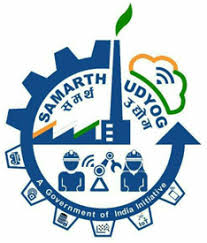
- 22 Dec 2024
In News:
The SAMARTH Udyog Bharat 4.0 initiative, launched by the Ministry of Heavy Industries (MHI), aims to enhance the competitiveness of the Indian capital goods sector by promoting the adoption of Industry 4.0 technologies. This initiative is part of the Scheme for Enhancement of Competitiveness in the Indian Capital Goods Sector.
Key Features of SAMARTH Udyog Bharat 4.0 Initiative
- Establishment of Smart Manufacturing Hubs: Under this initiative, four Smart Advanced Manufacturing and Rapid Transformation Hub (SAMARTH) Centres have been set up across India:
- Centre for Industry 4.0 (C4i4) Lab, Pune
- IITD-AIA Foundation for Smart Manufacturing, IIT Delhi
- I-4.0 India @ IISc, Bengaluru
- Smart Manufacturing Demo & Development Cell, CMTI, Bengaluru
- Cluster Industry 4.0 Experience Centres: In addition to the above centres, 10 cluster Industry 4.0 experience centres have been approved. These will be established under a Hub and Spoke model, managed by the C4i4 Lab in Pune, and spread across India.
- Key Achievements:
- Model Factories: Development of an Industry 4.0 enabled Model Factory at C4i4, Pune, and a smart production-based factory at CMTI Bengaluru.
- Industry 4.0 Solutions: More than 50 use-cases for Industry 4.0 solutions were compiled to support implementation.
- Maturity Assessment Tool: Creation of the Industry 4.0 Maturity Model (I4MM), specifically designed to assess the readiness of Indian manufacturing companies for Industry 4.0.
- Online Assessment Tool: Launch of a free online assessment tool by C4i4 Lab, Pune, to help MSMEs evaluate their maturity in adopting Industry 4.0 technologies.
- Training and Awareness:
- Workshops and Seminars: Regular awareness seminars, workshops, and knowledge-sharing events are organized to educate industries about Industry 4.0.
- Workforce Training: The SAMARTH Centres have trained over 5000 professionals on smart manufacturing and Industry 4.0 technologies.
- Consultancy Services: The centres offer consultancy in areas such as IoT hardware, software development, and data analytics, along with incubation support for start-ups and MSMEs.
- Impact on MSMEs:
- Digital Maturity Assessments: Over 100 digital maturity assessments have been completed for the auto industry, and more than 500 improvement initiatives have been identified.
- Training and Capacity Building: Over 500 digital champions have been trained on Industry 4.0 technologies.
- Focus on MSMEs: While no direct financial assistance is provided to industries, including MSMEs, under this initiative, the SAMARTH Centres play a key role in helping them adopt Industry 4.0 technologies and build their capabilities.
Key Takeaways:
- The SAMARTH Udyog Bharat 4.0 initiative seeks to increase the global competitiveness of India's capital goods and manufacturing sectors.
- It leverages Industry 4.0 technologies such as IoT, automation, data analytics, and AI to modernize manufacturing processes.
- The initiative involves setting up 4 major Smart Manufacturing Hubs and 10 regional experience centres across the country to facilitate awareness, training, and adoption of Industry 4.0 among manufacturers, especially MSMEs.
- While it does not provide financial aid, it helps industries improve their digital maturity, trains workforce, and guides them through consultancy and workshops.
IRIS²: The European Union's Ambitious Satellite Network
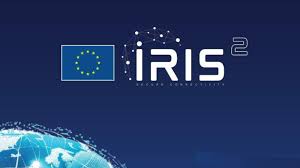
- 21 Dec 2024
In News:
The European Union (EU) has announced the launch of IRIS² (Infrastructure for Resilience, Interconnectivity, and Security by Satellite), a highly ambitious space program that aims to enhance satellite connectivity, security, and resilience for both governmental and civilian applications. The initiative is set to rival major global satellite systems, such as Elon Musk's Starlink, and aims to provide secure, high-speed broadband connectivity, particularly in underserved regions.
Key Features of IRIS²:
- Satellite Constellation: The system will consist of 290 satellites, including 264 in Low Earth Orbit (LEO) and 18 in Medium Earth Orbit (MEO).
- First Launch: The first satellite for the program is scheduled for launch in 2029.
- Secure Connectivity: IRIS² is designed to provide secure, high-speed broadband services, particularly for European regions that lack reliable connectivity.
- Collaboration: The project is a collaboration between the EU, the European Space Agency (ESA), and private sector partners, including SES, Eutelsat, and Airbus.
- Funding: The program is funded through a €10.6 billion (~$11 billion) investment, with a 12-year concession for its implementation.
Applications of IRIS²:
- Governmental Use:
- Border Surveillance: Enhanced monitoring for national security.
- Crisis Management: Reliable communication during natural disasters and emergencies.
- Infrastructure Security: Safeguarding key national infrastructure.
- Defense: Boosting military communication resilience.
- Civilian Use:
- Broadband Access: Providing internet access in rural and underserved areas.
- Smart Energy: Supporting management of energy grids and related technologies.
- Transportation: Ensuring reliable communication and navigation in aviation, maritime, and automotive sectors.
- Remote Healthcare: Improving healthcare access in remote locations.
Significance of IRIS²:
- Strategic Asset: The program will strengthen EU sovereignty in space technology and improve its technological independence, reducing reliance on non-European satellite systems.
- Cyber and Communication Resilience: IRIS² is designed to enhance resilience against cyber threats and communication disruptions, ensuring uninterrupted service for both public and private sectors.
- Commercial Benefits: The satellite network will provide high-speed connectivity for businesses across Europe, offering a boost to commercial activities in remote and underserved areas.
- Complementary to Existing EU Programs: IRIS² complements other EU space initiatives, such as Copernicus (Earth observation) and Galileo (satellite navigation), enhancing the EU's capabilities in the space sector.
Overview of the IRIS² Satellite Network:
- Deployment in LEO and MEO:
- 264 satellites in LEO will provide low-latency communication for a wide range of applications.
- 18 satellites in MEO will offer broader coverage and support for global connectivity.
- Funding and Partners: The program is funded by the EU, ESA, and private firms, including SES, Eutelsat, and Airbus, ensuring both public and private sector involvement in the project.
- Applications:
- The network will provide secure satellite services for critical government functions, including surveillance, defense, and crisis management.
- It will also support civilian uses, such as broadband, smart grids, and transportation, and will facilitate cloud-based services.
Strategic and Geopolitical Importance:
- Boost to European Competitiveness: By developing its own satellite system, the EU will enhance its competitive position in the global space sector.
- Security and Autonomy: IRIS² will help Europe maintain control over its communication infrastructure, strengthening its autonomy and reducing dependence on external players for critical services.
- Resilience in Crisis Situations: In times of disruption (e.g., natural disasters, cyberattacks), IRIS² will ensure that Europe can maintain secure, reliable connectivity.
72% Decline in Bird Species at Bordoibam-Bilmukh Bird Sanctuary, Assam
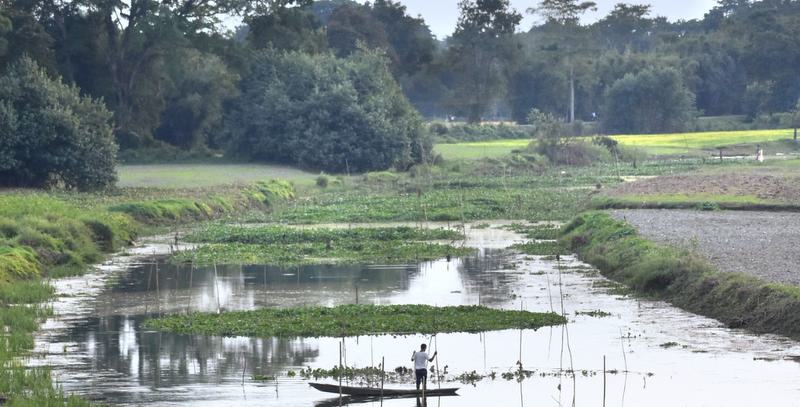
- 21 Dec 2024
In News:
A recent study has revealed a dramatic decline in the number of bird species at Assam's Bordoibam-Bilmukh Bird Sanctuary (BBBS). The sanctuary, once home to a rich diversity of avian species, has experienced a 72% decline in bird species over the past 27 years. The study, published in the Journal of Threatened Taxa, highlights the severe biodiversity crisis facing the sanctuary.
Key Findings:
- Bird Species Count Decline:
- In 1997, the sanctuary recorded 167 bird species.
- Recent surveys (2022-2024) have only recorded 47 species, marking a 71.85% decline in species count.
- Surveys:
- 2011 Survey: Recorded 133 species (86 resident, 23 migratory, 24 local migrants).
- 2017-2018 Survey: Found 120 species, along with a variety of other biodiversity, including macrophytes, fish, and aquatic ferns.
- Impact on Migratory Birds:
- Migratory species like Brown Shrike, Citrine Wagtail, and White Wagtail (winter migrants), and the Lesser Kestrel (summer migrant) were recorded recently.
- Main Causes of Decline:
- Anthropogenic Activities: Overfishing, poaching, excessive harvesting of aquatic plants, and egg collection.
- Land Use Changes: Habitat degradation due to agriculture, machinery noise, and land being used as pasture areas.
- Disruption of Food Chain: Habitat loss and changes in foraging and breeding grounds for both migratory and resident birds.
- Species of Concern:
- Poached Birds: Lesser whistling duck, Fulvous whistling duck, White-breasted waterhen, Indian pond heron, Eastern spotted dove, and Yellow-footed green pigeon.
- Threatened Species: The sanctuary is home to globally threatened species like the Spot-billed Pelican and Lesser Adjutant.
About Bordoibam-Bilmukh Bird Sanctuary:
- Location: Situated between Dhemaji and Lakhimpur districts in Assam, the sanctuary spans 11.25 sq. km at an altitude of 90-95 meters above sea level.
- History: Declared a wildlife sanctuary in 1996, it was originally part of the Subansiri River which has now shifted 7 km from the wetland.
- Climate & Vegetation:
- Moist tropical climate with an average annual rainfall of around 2,000 mm.
- The vegetation includes flooded valley grasslands and wetland plants, providing crucial habitat for migratory birds.
- Significance for Avian Species:
- Hosts a variety of migratory waterfowl, especially during the winter.
- Home to globally threatened bird species like the Spot-billed Pelican and Lesser Adjutant, along with resident birds such as the Indian Pond Heron and Fulvous Whistling Duck.
Conservation Efforts:
- The decline in bird species at the sanctuary has raised alarm about the degradation of wetland habitats.
- The study emphasizes that habitat loss can disrupt the food chain, water table, and nutrient cycle, which in turn harms both the ecosystem and human communities.
- The authors of the study advocate for intense conservation efforts to restore and protect the sanctuary’s biodiversity.
Assam's Biodiversity:
- Assam is one of India's most biodiverse states, with around 950 bird species, including 17 endemic species.
- The state also hosts 55 Important Bird and Biodiversity Areas (IBA), which are vital hotspots for avian species.
New Undersea Cables to Boost India’s Digital Connectivity
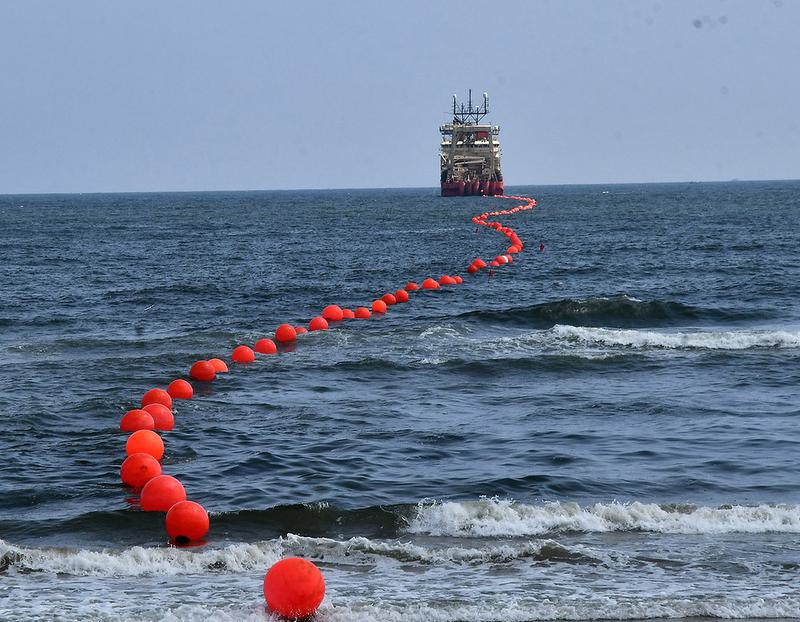
- 21 Dec 2024
In News:
India is expanding its digital infrastructure with the launch of two major undersea cable systems aimed at enhancing its Internet connectivity with Asia and Europe. The India Asia Xpress (IAX) and India Europe Xpress (IEX) are set to provide additional data links between India and these regions, supporting the growing demand for data usage. This also marks India’s increasing involvement in submarine cable resilience and security discussions.
Key Points:
- New Cable Systems:
- India Asia Xpress (IAX): Connects Chennai and Mumbai with Singapore, Thailand, and Malaysia.
- India Europe Xpress (IEX): Connects Chennai and Mumbai with France, Greece, Saudi Arabia, Egypt, and Djibouti.
- Total Length: Both cables, together spanning over 15,000 kilometers, will expand India’s undersea cable network.
- Ownership and Investment:
- Both cable systems are owned by Reliance Jio, with a strategic investment from China Mobile.
- Geopolitical Impact:
- These expansions are a response to growing Internet traffic, as well as India's rising geopolitical ambitions. They help bolster India’s defense strategy, improving cable resilience against disruptions from cyberattacks or physical damages.
- India’s active role in maritime cable network security is being closely watched, especially in key regions like the Bay of Bengal and the South China Sea.
- Past Cable Disruptions:
- In March, three cables connecting India to West Asia and Europe were disrupted, impacting Internet traffic. However, India’s alternate routing systems and data centers ensured services remained operational, highlighting the country’s resilience.
- International Role:
- India’s role in submarine cable resilience is growing. Telecom Secretary Neeraj Mittal is part of the International Advisory Body for Submarine Cable Resilience, established by the International Telecommunication Union (ITU).
Impact on India’s Connectivity:
- Bangladesh's Role:
- Plans to sell bandwidth from Bangladesh to Northeast India were recently put on hold. However, this does not significantly impact India as Northeast India already benefits from substantial fiber-optic connectivity through Power Grid Corporation of India’s transmission lines.
About Underwater Cables:
- What Are Undersea Cables?
- Undersea cables are fiber-optic cables laid under the ocean to transmit data across vast distances at high speeds.
- New Cable Systems:
- IAX: Connects India to Asia (Singapore, Thailand, Malaysia).
- IEX: Connects India to Europe (France, Greece, Saudi Arabia, Egypt, Djibouti).
- How They Work:
- Fiber-optic technology uses laser beams through thin glass fibers to transmit data.
- The cables are protected by multiple layers of insulation, plastic, and steel wires and are buried near shores or laid directly on the ocean floor in deep sea regions.
- Cable Features:
- Data Capacity: New cables can carry up to 224 Tbps (Terabits per second).
- Durability: Designed to avoid damage from fault zones, fishing areas, or anchors.
- Speed: Faster and more cost-efficient than satellite communications for large-scale data transfer.
Why Undersea Cables Over Satellites?
- Higher Capacity: Submarine cables handle far more data than satellites.
- Cost-Effective: More affordable for high-volume data transfers.
- Reliability: Cables provide more stable connections, especially for large-scale data, compared to satellites.
2023 National Tansen Samman
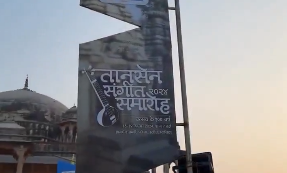
- 21 Dec 2024
In News:
- The prestigious National Tansen Samman for 2023 was conferred upon Pt. Swapan Choudhary, a renowned tabla maestro from Kolkata, at the National Tansen Festival held in Gwalior, Madhya Pradesh.
Key Highlights:
- Tansen Festival: This festival, renowned for its celebration of classical music, is organized annually in Gwalior, which is considered the music capital of Madhya Pradesh.
- Prize Details: As part of the honor, Pt. Swapan Choudhary was presented with an honorarium of five lakh rupees, a citation plaque, and a shawl-shriphal.
- About the Award:
- The National Tansen Samman was established in 1980 by the Madhya Pradesh government to recognize exceptional contributions to Indian classical music.
- It is named after Tansen, one of India's most celebrated classical musicians.
- The award is the highest national honor in the field of Indian classical music.
- Additional Award:
- Raja Mansingh Tomar Samman for 2023 was awarded to Sanand Nyas, an institution from Indore. This institution has been active for 35 years in the promotion of classical music, drama, and cultural festivals.
- Pt. Swapan Choudhary’s Remark: In response to receiving the honor, Pt. Choudhary expressed his gratitude and pride in joining the ranks of distinguished artists awarded the National Tansen Samman.
About Tansen: The Iconic Musician
- Legacy: Tansen, also known as Miyan Tansen, was a prominent Indian classical musician, composer, and vocalist. He is credited with popularizing several ragas and revolutionizing the Indian classical music tradition.
- Role at Akbar’s Court: Tansen was one of the Navaratnas (nine jewels) in the court of Mughal Emperor Akbar. He held the title of Mian, meaning "learned man," bestowed upon him by Akbar.
- Contributions:
- Tansen is famous for his compositions, including the introduction of notable ragas such as Miyan ki Malhar, Miyan ki Todi, and Darbari.
- He also improved the plucked rabab, which is of Central Asian origin, enhancing its role in Indian classical music.
- Historical Influence: Tansen's life and work are surrounded by extensive legend, and his contributions remain deeply influential in the development of Indian classical music today.
Specialised Investment Fund (SIF)
- 20 Dec 2024
In News:
SEBI has introduced a new asset class called Specialised Investment Fund (SIF), designed to bridge the gap between Mutual Funds (MFs) and Portfolio Management Services (PMS). This new asset class is targeted at informed investors who are willing to take on higher risks.
SIFs offer a blend of the flexibility seen in PMS and the regulatory framework governing MFs, making them suitable for investors seeking more customized and riskier investment strategies.
Key Features of SIF:
- Minimum Investment: The minimum investment threshold for SIFs is Rs. 10 lakh. However, accredited investors (who meet specific eligibility criteria) can invest with lower amounts.
- Expense Structure: SIFs will follow the same expense structure as mutual funds. For equity schemes up to Rs 500 crore in size, the maximum allowable fee is 2.25% of assets under management (AUM), with the cap decreasing as the fund size grows. This ensures transparency and keeps management fees in line with existing mutual fund norms.
- Investment Strategies: SIFs can offer a mix of open-ended, close-ended, and interval investment strategies. Specific details on permissible strategies will be released by SEBI in the future.
- Investment Restrictions:
- For debt instruments, a single issuer's exposure is capped at 20% of the total AUM. However, this can be raised to 25% with approval from the Asset Management Company (AMC)’s trustees and board of directors. Government securities are exempt from this limit.
- For equities, the exposure is capped at 10% of the total AUM, in line with the norms for mutual funds.
- Ownership in Companies: The maximum permissible ownership in any company is raised to 15%, including the MF exposure.
- REITs and InvITs: SIFs can invest a maximum of 20% of their AUM in Real Estate Investment Trusts (REITs) and Infrastructure Investment Trusts (InvITs). However, the exposure to a single issuer in these areas is limited to 10%.
- Branding and Marketing: SEBI mandates AMCs to distinguish SIFs clearly from MFs through distinct branding, advertising, and website presence. This helps in creating a clear differentiation between the two products for investors.
- Risk Management and Compliance: AMCs managing SIFs are required to have robust risk management systems, internal control systems, and expertise to handle the investments effectively. Trustees are responsible for ensuring that the AMC complies with all risk management, investor protection, and disclosure norms.
Regulatory Context:
- The regulations on SIFs are similar to those governing mutual funds, including taxation and other compliance requirements.
- SEBI also introduced the Mutual Fund Lite regulations to encourage the growth of passively managed funds, such as exchange-traded funds (ETFs) and index funds. These regulations are designed to reduce compliance burdens and lower the barriers to entry for new players in the mutual fund industry.
Significance of SIFs:
- Targeted Audience: SIFs cater to investors who are knowledgeable and willing to take on riskier investments, thereby filling a gap between traditional MFs (which are more conservative) and PMS (which offer highly customized solutions).
- Higher Flexibility: While SIFs maintain some regulations of MFs, they offer more flexibility in investment choices, allowing AMCs to explore more dynamic strategies.
- Investor Protection: By maintaining the same expense structure as mutual funds and ensuring compliance with regulatory frameworks, SEBI aims to protect investor interests while allowing for higher returns that come with riskier investments.
Parliamentary Standing Committee on Rural Development & Panchayati Raj (PSC) and MGNREGA
- 20 Dec 2024
In News:
Recently, the Parliamentary Standing Committee (PSC) on Rural Development and Panchayati Raj highlighted several issues within the Mahatma Gandhi National Rural Employment Guarantee Scheme (MGNREGS). The committee recommended reforms to address these challenges, especially concerning wage rates, workdays, payment systems, and infrastructure.
Key Challenges in MGNREGS Implementation:
- Wages Not Aligned with Inflation:
- MGNREGA wage rates have failed to keep pace with inflation, diminishing the purchasing power of rural workers. This discourages workers from completing the full 100 workdays.
- The wage guarantee of 100 days per household often falls short, especially during times of natural calamities or post-pandemic recovery.
- Revision of Permissible Works:
- The list of allowable work under MGNREGA is outdated and doesn't cover all rural needs, such as flood protection or land erosion management. Delayed revisions limit its effectiveness in addressing region-specific challenges.
- Delayed Payment of Wages:
- Issues like Aadhaar-based payment system (ABPS) glitches, inactive Aadhaar details, or frozen bank accounts often lead to delayed wage payments.
- The delay in wages undermines the scheme's goal of providing livelihood support.
- Unemployment Allowance:
- Those who apply for work but are not provided employment within 15 days are entitled to a daily unemployment allowance. However, this allowance is rarely paid, and when it is, the amounts are insufficient.
- Weak Social Audits:
- Social audits are a vital mechanism to ensure transparency and accountability. However, in the 2020-21 fiscal year, only 29,611 Gram Panchayats out of a total were audited, pointing to the weak social audit system.
- Lack of Ombudsman:
- Despite the provision for 715 ombudsmen, only 263 have been appointed. This reduces the oversight and accountability of the scheme.
Recommendations for MGNREGS Reform by the PSC:
- Revision of Wage Rates:
- Link MGNREGA wages to an inflation index, ensuring wages reflect the rising cost of living in rural areas.
- The base year (2009-2010) should be updated to align with current inflation trends.
- Increase Days of Work:
- The PSC recommended increasing the guaranteed workdays from 100 to 150 days. This will provide better livelihood security, especially in times of economic distress.
- Improvement in Payment Mechanisms:
- The committee recommended maintaining alternative payment systems alongside ABPS to prevent wage delays.
- A streamlined process should be put in place to ensure timely wage disbursement, reducing bureaucratic hurdles.
- National Mobile Monitoring System (NMMS):
- The committee stressed the importance of training programs to help beneficiaries effectively use the NMMS.
- It also suggested retaining alternative attendance methods to avoid exclusion due to technological barriers. NMMS helps enhance transparency and accountability by tracking attendance and work progress.
- Sufficient Fund Allocation:
- The committee emphasized the need for adequate financial allocations for MGNREGS to make it more effective in providing livelihood security to rural households.
Additional Context and Statistics:
- In 2024-25, the average wage increase under MGNREGA was just Rs 28/day.
- The MGNREGA wage increase for 2023-24 ranged from 2%-10%.
- The Consumer Price Index for Agricultural Labour (CPI-AL) is used to determine wage rates, although Dr. Nagesh Singh Committee (2017) recommended using the CPI Rural instead.
About the Parliamentary Standing Committee on Rural Development & Panchayati Raj (PSC):
- Established: August 5, 2004.
- Jurisdiction: The committee oversees the Ministry of Rural Development and the Ministry of Panchayati Raj.
- Composition: 31 members – 21 from Lok Sabha and 10 from Rajya Sabha.
- Functions:
- Reviews Demands for Grants and reports.
- Examines Bills referred by the Speaker or Chairman.
- Reviews the annual reports of relevant ministries.
- Considers national policy documents.
About MGNREGA:
- Launched: 2005 by the Ministry of Rural Development.
- Objective: Provides 100 days of unskilled manual work at minimum wages for rural households annually.
- Key Features:
- Legal Guarantee: Work must be provided within 15 days of request.
- Unemployment Allowance: If work isn't provided within 15 days, beneficiaries are entitled to a daily allowance.
- Women-Focused: At least one-third of beneficiaries are women.
- Social Audits: Mandated by the Gram Sabha for all projects under the scheme.
Masali Village in Gujarat
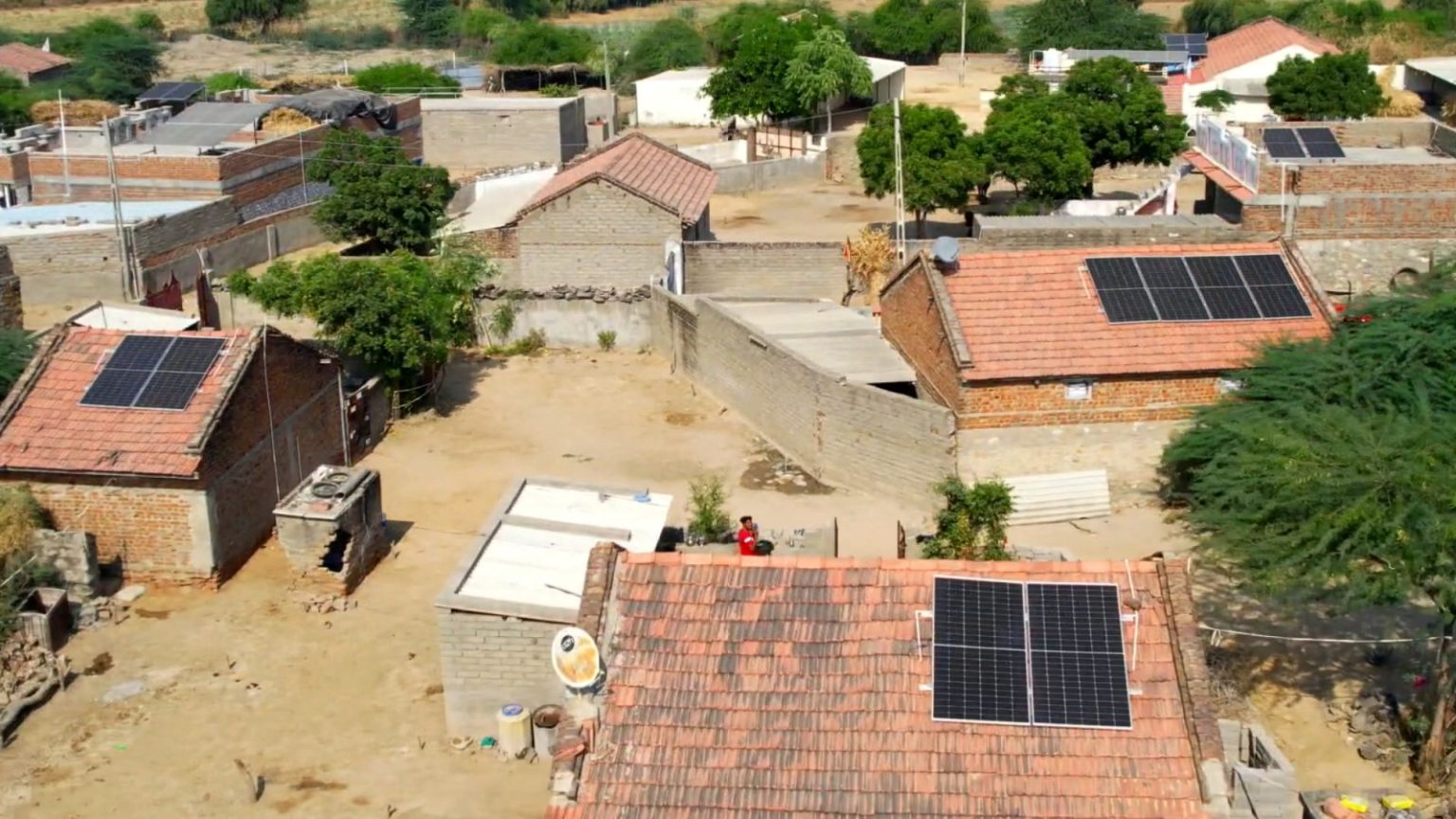
- 20 Dec 2024
In News:
In Gujarat, Masali village in Banaskantha district has become country’s first solar border village.
Key Highlights:
Location:
Masali village is located in Banaskantha district, Gujarat, approximately 40 kilometers from the Pakistan border. The village, with a population of around 800 people, has recently achieved a significant milestone by becoming India’s first fully solar-powered border village.
Solarization Initiative:
Under the PM Suryaghar Yojana, the village has installed solar rooftops on 119 houses. These solar installations collectively generate over 225 kilowatts of electricity, which is more than sufficient to meet the village’s energy needs. This initiative marks a step forward in solarizing border areas of India, promoting sustainability and reducing dependency on conventional energy sources.
Significance of the Initiative:
- India's First Solar-Powered Border Village: Masali village is the first of its kind in India, making it a model for other border regions to adopt renewable energy solutions.
- Promotes Renewable Energy: The transition to solar power encourages sustainability, reduces dependence on traditional fossil fuels, and supports India's renewable energy goals.
- Part of the Border Development Project: Masali is part of a broader government plan that aims to solarize 11 villages in Vav taluka and 6 villages in Suigam taluka, strengthening energy access in these strategically vital areas.
- Energy Security: By harnessing solar energy, the village enhances its energy reliability and self-sufficiency, especially in remote areas with limited access to the national grid.
PM Suryaghar Yojana: Launched in 2024, the PM Suryaghar Yojana aims to provide free electricity to eligible Indian households by subsidizing the installation of rooftop solar panels. Key features of the scheme include:
- A subsidy covering up to 40% of the installation cost of solar panels.
- Eligible families receive 300 free electricity units per month, saving up to Rs. 18,000 annually.
- The scheme is expected to save the government approximately Rs. 75,000 crore annually on electricity costs.
- It encourages the use of renewable energy, lowers carbon emissions, and reduces the electricity expenses for the government.
Eligibility for the Scheme:
- Indian citizens who own a house with a suitable roof for installing solar panels.
- Households must have a valid electricity connection and should not have received any prior subsidy for solar panels.
Broader Implications:
The successful solarization of Masali village is not just an energy achievement but also a significant step toward promoting renewable energy usage, enhancing energy security, and fostering sustainable development in India’s border regions. It is expected that other regions in Gujarat and across the country will follow this example, improving both local living conditions and national energy resilience.
Reimposition of Protected Area Permit (PAP) in Manipur, Mizoram, and Nagaland

- 20 Dec 2024
In News:
The Ministry of Home Affairs (MHA) of the Government of India has recently reinstated the Protected Area Regime (PAR) for the states of Manipur, Mizoram, and Nagaland, which are strategically located along the international border with Myanmar. This move comes amid growing security concerns, particularly the influx of migrants from Myanmar, which has been cited as a significant factor in the ongoing conflicts in the region.
What is Protected Area Permit (PAP)?
A Protected Area Permit (PAP) is a special permission required for foreign nationals to visit certain areas of India deemed sensitive due to their proximity to international borders or other security-related concerns. The regulations governing the PAP are laid down under the Foreigners (Protected Areas) Order, 1958, which restricts the entry of foreigners to designated regions within India.
Purpose of PAP:
The PAP regime serves multiple critical objectives:
- National Security: It ensures the monitoring and regulation of foreign nationals in sensitive border areas.
- Preservation of Local Communities: The regime safeguards indigenous populations and their unique cultural heritage.
- Environmental Conservation: The permit helps minimize ecological disturbances in fragile regions, ensuring sustainable tourism and development.
Key Features of PAP Regime:
- Eligibility: All foreign nationals, excluding Bhutanese citizens, must obtain a PAP to enter these designated areas. The permit can be granted for specific regions, routes, and time periods.
- Validity: The PAP is typically valid for 10 days with the possibility of extension.
- Restricted Areas: Certain foreign nationals, particularly those from Afghanistan, China, and Pakistan, require prior approval from the MHA to enter these regions.
- Tourism and Other Permits: While foreign nationals can visit these regions for tourism purposes under the PAP, non-touristic visits require special permission from the MHA.
- Registration: Foreigners must register with the Foreigners Registration Officer (FRO) within 24 hours of arrival in the protected area.
Historical Context and Reimposition:
The PAP regime was lifted for Manipur, Mizoram, and Nagaland in 2011, as part of efforts to boost tourism in the region. However, due to rising security concerns related to illegal immigration and ethnic tensions, the MHA reimposed the PAP in 2025. The government’s move aligns with its broader national security strategy to better control foreign movements in sensitive border regions, particularly those with Myanmar, where the Free Movement Regime (FMR) had previously allowed easier cross-border travel.
Background on Security Concerns:
The influx of individuals from Myanmar, particularly members of the Chin community, which shares ethnic ties with the Kuki-Zomi communities in India, has been a source of tension. The Manipur government has repeatedly emphasized that uncontrolled migration has contributed to the unrest in the state. Additionally, the decision to end the FMR between India and Myanmar has further intensified the debate over border security and migration.
Impact on Tourism and Local Communities:
While the reimposition of the PAP is seen as a measure to strengthen security, it has raised concerns in states like Mizoram and Nagaland, which have been actively promoting tourism. For example, Nagaland’s Hornbill Festival recently attracted over 200,000 visitors, including foreign nationals. The reintroduced restrictions may dampen tourism in these states, which were previously exempt from the PAP to encourage foreign visits.
Key Legal Provisions Under the PAP Regime:
- Foreigners (Protected Areas) Order, 1958: This order mandates the requirement of a PAP for foreigners visiting areas close to international borders.
- Foreigners (Restricted Areas) Order, 1963: This order covers areas that require a Restricted Area Permit (RAP) for foreign nationals, such as the Andaman and Nicobar Islands.
States Affected by the PAP Regime:
The PAP regime affects regions close to India’s international borders, including the entire states of Arunachal Pradesh, Sikkim, Manipur, Mizoram, Nagaland, and parts of Himachal Pradesh, Jammu & Kashmir, Rajasthan, and Uttarakhand.
Dark Comets
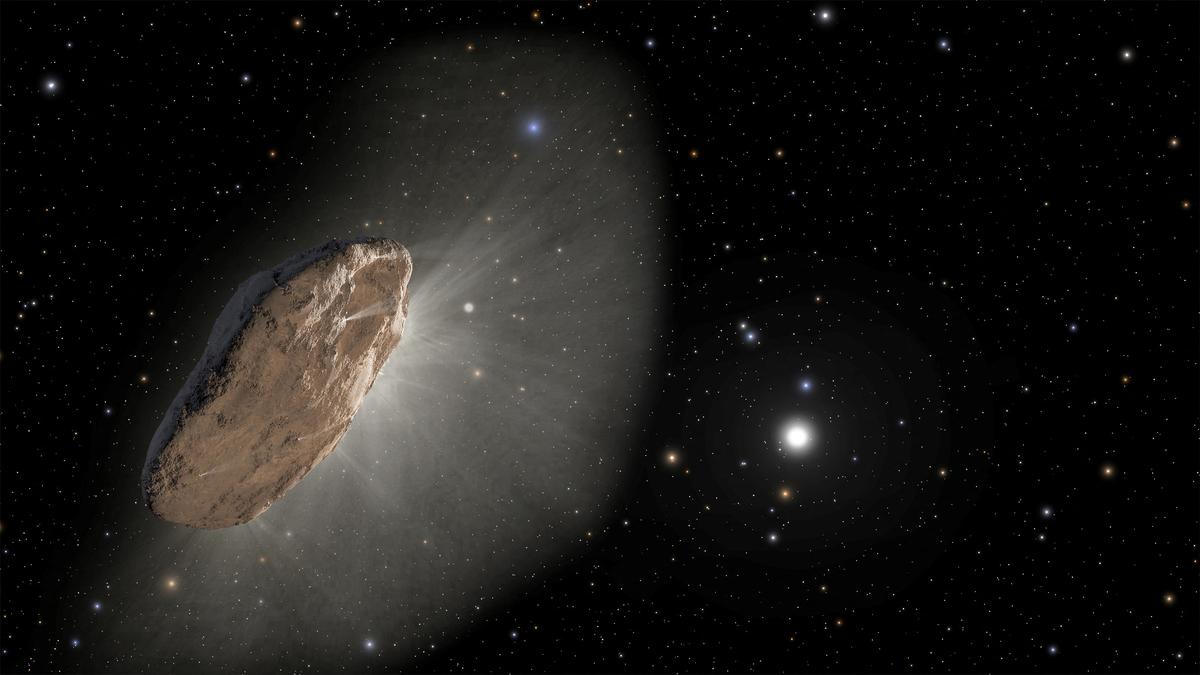
- 20 Dec 2024
In News:
Dark comets are a newly identified class of celestial objects that challenge our traditional understanding of comets and asteroids. Unlike regular comets, these objects exhibit characteristics that blur the lines between comets and asteroids, leading astronomers to closely study their nature, origin, and significance.
Discovery and Background
The first hint of dark comets appeared in 2016, when asteroid 2003 RM exhibited strange orbital deviations that suggested it might be a comet in disguise. NASA further fueled this interest in 2017 when it discovered ‘Oumuamua, an interstellar object that entered our Solar System. Though initially classified as an asteroid, its erratic motion and lack of a visible tail led scientists to consider it a dark comet. Since then, several more objects with similar characteristics have been discovered, and astronomers now identify these objects as a new class—dark comets.
Characteristics of Dark Comets
- Appearance: Dark comets do not exhibit the brilliant, glowing tails typically associated with comets. Instead, they resemble asteroids, appearing as faint points of light in space. Unlike bright comets, they do not have a visible coma (a cloud of gas and dust) or a tail, making them much harder to detect.
- Size: Dark comets are typically small, ranging from a few meters to a few hundred meters in diameter. Due to their small size, there is less surface area for material to escape, preventing the formation of the iconic tails seen in traditional comets.
- Orbital Path: These objects follow elongated, elliptical orbits. While some of them travel close to the Sun, they can also venture to the outer reaches of the Solar System, far beyond Pluto, and even into the Oort Cloud—the distant region where long-period comets are believed to originate.
- Spin and Gas Dispersion: Dark comets often rotate rapidly, dispersing gas and dust in all directions. This rapid spin contributes to their invisibility, as the gas and dust are scattered evenly, making it more difficult for astronomers to detect their presence.
- Composition: The composition of dark comets may also play a role in their lack of visibility. Over time, the materials that form the bright tails of comets may be depleted, especially for older objects. As a result, dark comets may not release enough gas to produce a visible coma or tail.
Types of Dark Comets
There are two main categories of dark comets:
- Inner Dark Comets: These are smaller objects that reside closer to the Sun and typically travel in nearly circular orbits. They are often just a few meters in size, with less surface area for gas and dust to escape.
- Outer Dark Comets: These larger objects, measuring over 100 meters in diameter, travel in highly eccentric orbits, similar to Jupiter-family comets. These dark comets follow elliptical paths that bring them close to the Sun and then send them back toward the outer reaches of the Solar System.
Importance of Studying Dark Comets
Dark comets may hold critical clues about the early Solar System and the formation of Earth. Studying these objects can provide insights into the origins of water on Earth, as well as the ingredients necessary for life. Their unique composition and orbits also offer potential for understanding the processes that led to the formation of planets.
Recent Discoveries and Advancements
Astronomers recently discovered 10 new dark comets with the help of the Dark Energy Camera (DECam) on a large telescope in Chile. The DECam, designed to study distant galaxies and stars, has enabled researchers to detect these faint objects by analyzing images of the night sky. Further progress is expected with the upcoming Vera C. Rubin Observatory, which will feature the largest digital camera ever built. This new instrument will allow astronomers to capture more detailed images of the night sky and detect fainter objects, potentially doubling or even tripling the number of known dark comets in the next decade.
Key Facts:
- Dark comets lack the characteristic glowing tails of typical comets, instead resembling asteroids.
- They exhibit erratic motions and follow elliptical orbits, often extending beyond Pluto and into the Oort Cloud.
- They are typically small (a few meters to hundreds of meters wide) and spin rapidly.
- The first dark comet was identified in 2016, with more discoveries made in the years since.
- The Dark Energy Camera (DECam) in Chile has been instrumental in detecting these elusive objects, with a new Vera C. Rubin Observatory expected to further enhance detection in the future.
- Studies suggest that between 0.5% and 60% of Near-Earth Objects (NEOs) could be dark comets, many originating from the asteroid belt between Mars and Jupiter.
India's First-Ever Ganges River Dolphin Tagging in Assam
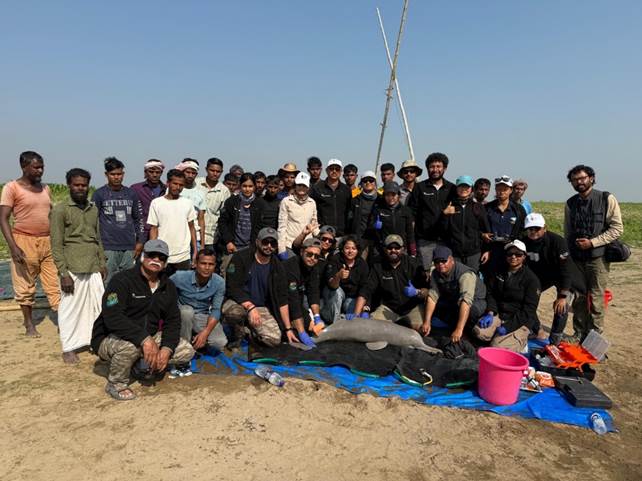
- 19 Dec 2024
In News:
India conducts the first-ever satellite tagging of the Ganges River Dolphin (Platanista gangetica) in Assam, a key step in wildlife conservation.
Key Highlights:
Objective of Tagging: The tagging aims to understand:
- Migratory patterns
- Range and distribution
- Habitat utilization, especially in fragmented river systems.
Key Participants:
- Ministry of Environment, Forest and Climate Change (MoEFCC)
- Wildlife Institute of India (WII)
- Assam Forest Department
- Aaranyak (NGO)
- Funded by the National CAMPA Authority.
Significance of the Tagging:
- Technology Used: Lightweight satellite tags compatible with Argos systems were employed, minimizing interference with the dolphin’s movement despite its limited surfacing time (5-30 seconds).
- Insight into Dolphin Ecology: Helps fill knowledge gaps regarding habitat needs and seasonal migration, especially in disturbed river ecosystems.
Ganges River Dolphin – India's National Aquatic Animal:
- Endemic to India with around 90% of the population in India.
- Known for being nearly blind and using echolocation for navigation and hunting.
- Plays a crucial role as an apex predator and indicator species for river ecosystem health.
Project Dolphin:
- Launched by PM Narendra Modi in 2020, modeled after Project Tiger.
- Focuses on conservation of riverine and marine dolphins.
- A 10-year initiative funded by MoEFCC to safeguard dolphin populations and address ecosystem challenges.
Conservation Status:
- IUCN: Endangered.
- Protection: Included in Schedule I of the Wildlife Protection Act (1972) and CITES Appendix I.
- Major Threats: Habitat degradation, pollution, bycatch, and water abstraction, compounded by damming and sand mining.
Broader Impact:
- The tagging initiative contributes to evidence-based conservation strategies for Ganges River Dolphins.
- Will aid in the development of a comprehensive conservation action plan for the species.
- Expands the understanding of critical habitats within river ecosystems, benefiting both biodiversity and the communities dependent on these resources.
National Wildlife Health Policy (NWHP)

- 19 Dec 2024
In News:
The Central Zoo Authority, under the aegis of the Ministry of Environment Forest and Climate Change (MoEF&CC) has taken up the development of the ‘National Wildlife Health Policy in consultative workshop held in Indira Prayavaran Bhawan, New Delhi.
Key Highlights:
- Organized by: Central Zoo Authority (CZA), under the Ministry of Environment, Forest and Climate Change (MoEF&CC).
- Event: Consultative workshop held at Indira Prayavaran Bhawan, New Delhi, on the development of the National Wildlife Health Policy (NWHP).
- Purpose: To address health threats to wildlife and integrate wildlife health management with public and animal health.
Goals of the National Wildlife Health Policy (NWHP):
- One Health Approach: Integrates human, animal, and environmental health, recognizing their interdependence.
- Focus Areas:
- Prevent and control zoonotic diseases.
- Improve disease surveillance and early detection, especially in protected areas.
- Promote biosecurity measures and epidemic preparedness.
- Enhance research and development in wildlife health management.
- Advocate for community awareness on wildlife health and conservation.
Key Features of the Policy:
- Wildlife Health Management Unit (WHMU): Proposed unit to oversee the policy's implementation.
- Collaboration: Involves coordination with various stakeholders including government ministries, NGOs, academic institutions, and veterinary universities.
- Disease Surveillance: Establish protocols for monitoring and controlling wildlife diseases, especially in protected areas.
- Capacity Building: Training programs for professionals involved in wildlife conservation and health management.
- Biosecurity Protocols: Strengthen measures to reduce disease transmission risks.
Supporting Institutions:
- GISE Hub, IIT Bombay and Office of the Principal Scientific Adviser to the Government of India are providing support in policy development.
Challenges Addressed:
- Wildlife in India faces various health challenges including:
- Infectious diseases (e.g., Canine Distemper Virus).
- Habitat loss and climate change impacts.
- Illegal wildlife trade and other anthropogenic pressures.
- India has over 91,000 wildlife species and more than 1,000 protected areas, making comprehensive health management crucial.
Expected Outcomes:
- Comprehensive Framework: A science-based framework for wildlife health, integrating ecological, human, and animal health.
- Disease Outbreak Response: Structured mechanisms for disease management, surveillance, and legal frameworks.
- Public Health Integration: Safeguard wildlife health, which directly impacts balanced ecosystems and biodiversity.
Policy’s Strategic Alignment:
- National Wildlife Action Plan (2017-31): The policy complements the action plan’s 103 conservation actions and 250 projects, including disease surveillance protocols in tiger reserves and other protected areas.
- Research & Development: Encourages the development of strategies to manage wildlife health and prevent disease outbreaks.
One Nation, One Election
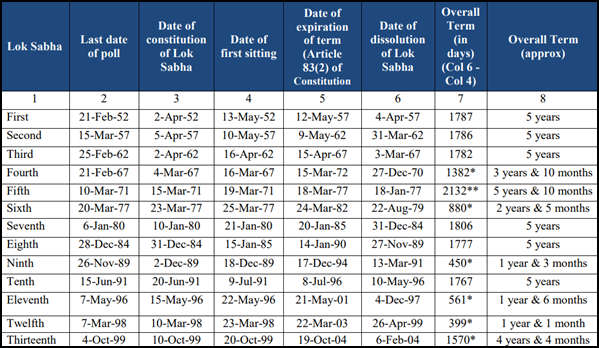
- 19 Dec 2024
In News:
The government has recently taken steps to implement "One Nation, One Election" by presenting two Constitution Amendment Bills in the Lok Sabha: the One Nation One Election – The Constitution 129th Amendment Bill 2024 and the Union Territories Laws Amendment Bill 2024.
Introduction to the Concept:
- Objective: Proposes synchronizing elections for Lok Sabha (national) and State Legislative Assemblies to be held on the same day.
- Purpose: Aims to reduce costs, minimize logistical challenges, and address governance disruptions caused by frequent elections.
- 2024 Report: The High-Level Committee Report on Simultaneous Elections, released in December 2024, outlines a roadmap for implementing this reform.
Historical Background:
- Previous Practice: From 1951 to 1967, Lok Sabha and State Assembly elections were conducted together.
- Disruptions: The practice was interrupted due to premature dissolutions and emergencies, leading to staggered elections across India.
High-Level Committee on Simultaneous Elections:
- Committee Formation: Headed by former President Ram Nath Kovind, formed on 2nd September 2023.
- Public Response: Over 21,500 responses, with 80% in favor.
- Political Party Responses: 32 political parties supported the idea, while 15 raised concerns about regional party marginalization.
- Expert Consultations: Majority of experts supported the reform, emphasizing resource optimization and reduced disruptions.
Committee Recommendations:
- Constitutional Amendments: Proposals to amend Articles 82A and 324A to enable simultaneous elections.
- Two-Phase Implementation:
- Phase 1: Synchronize elections for Lok Sabha and State Legislative Assemblies.
- Phase 2: Include Municipalities and Panchayats within 100 days.
- Single Electoral Roll: Creation of a unified electoral roll and EPIC for all levels of elections, reducing duplication and errors.
Rationale for Simultaneous Elections:
- Governance Consistency: Reduces focus on election preparation, allowing more attention to developmental work.
- Prevents Policy Paralysis: Mitigates disruptions caused by the Model Code of Conduct (MCC) during frequent elections.
- Resource Optimization: Reduces the need for personnel and resources for election duties, allowing better allocation to governance tasks.
- Preserves Regional Party Relevance: Local issues remain prioritized, ensuring regional parties' concerns are heard.
- Equitable Political Opportunities: Encourages diversification and inclusivity within political parties.
- Financial Benefits: Reduces the financial burden of conducting multiple elections, enhancing economic efficiency.
Conclusion:
- The concept of "One Nation, One Election" is a significant reform aimed at streamlining India's electoral processes. With broad public and political support, it promises improved governance, cost savings, and better resource management in the future.
Wroughton’s Free-Tailed Bat
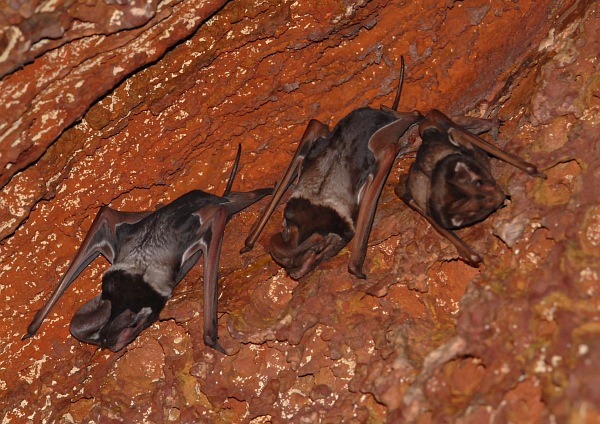
- 19 Dec 2024
In News:
Wroughton’s free-tailed bat, a highly rare species of molossus bat, has been spotted at the Delhi Development Authority (DDA)’s Yamuna Biodiversity Park, marking a unique sighting.
Key Highlights:
- Species Overview: Wroughton’s free-tailed bat (Otomops wroughtoni) is a rare species of molossus bat, notable for its powerful flight and ecological importance in controlling insect populations and assisting in pollination.
- Conservation Status:
- IUCN: Listed as "Data Deficient".
- Protection: Listed under Schedule I of the Wildlife (Protection) Act, 1972.
- Geographical Distribution:
- Primarily found in the Western Ghats, with a single known breeding colony.
- Small colonies in Jaintia Hills, Meghalaya, and a solitary individual sighted in Cambodia.
- Physical Characteristics:
- Large in size, with huge ears extending beyond the muzzle.
- Bicoloured velvet fur.
- Noted for powerful flying capabilities, enabling long-distance foraging.
- Ecological Role:
- Regulates insect populations.
- Known for assisting in pollination.
- Habitat:
- Roosts in caves, or dark, damp, and slightly warm places, typically in moderate-sized colonies.
- Significance of the Delhi Sighting:
- The sighting at Yamuna Biodiversity Park is significant for Delhi, marking a rare occurrence in the region.
- Delhi's bat species: The city is home to about 14 bat species, with four species, including the Indian false vampire and Egyptian free-tailed bat, considered locally extinct.
- Conservation Efforts:
- Two decades of ecological restoration have created specialized niches in the area, aiding species rewilding and ecological balance.
- The Aravalli Biodiversity Park in Gurugram now serves as the only known roosting site for the Blyth’s horseshoe bat in Delhi NCR.
- Additional Notes:
- Wroughton’s free-tailed bat was considered critically endangered until 2000 due to its limited known population. However, the discovery of populations in other regions has led to a reclassification to "Data Deficient".
- Despite being discovered over a century ago, much about the bat's feeding ecology remains unknown.
Schengen Zone Membership

- 18 Dec 2024
In News:
Recently, the European Union (EU) cleared Bulgaria and Romania for full membership in the Schengen Zone, effective January 1, 2025. This marks the end of a 13-year wait for these Eastern European nations, which joined the EU in 2007.
Key Highlights:
- Schengen Integration: Until now, Bulgaria and Romania were partially integrated into the Schengen Zone, with air and sea travel without border checks since March 2024. However, land border controls were still in place due to Austria's objections, mainly due to concerns over migration and border security.
- Austria's Shift: Austria had blocked full entry for years but finally lifted its veto on December 9, 2024, after a border protection package was agreed upon. This package includes joint border guard deployment at the Bulgarian-Turkish border and temporary land border controls for six months.
Schengen Zone Details:
- What is the Schengen Zone?
- Created by the Schengen Agreement (1985) and the Schengen Convention (1990), it is the world’s largest area without internal border controls, allowing free movement across most EU countries and some non-EU countries. It currently includes 29 countries (25 EU states and 4 non-EU countries: Iceland, Liechtenstein, Norway, and Switzerland).
- Key Features:
- Free Movement: Over 425 million people can travel freely within the zone without border checks.
- Uniform Visa Policy: Short-term stays of up to 90 days are allowed for tourists and business travelers from outside the Schengen Area.
- Cross-Border Cooperation: The Schengen Information System (SIS) facilitates security and border management by sharing critical data between countries.
- Temporary Border Controls: Countries can temporarily reintroduce border controls for security reasons, after notifying other member states and the European Commission.
Bulgaria and Romania
- Bulgaria:
- Capital: Sofia
- Location: Southeastern Europe, bordered by the Black Sea, Romania, Turkey, Greece, North Macedonia, and Serbia.
- Political System: Parliamentary Republic
- Romania:
- Capital: Bucharest
- Location: Bounded by Ukraine, Moldova, Black Sea, Bulgaria, Serbia, and Hungary.
- Political System: Semi-Presidential Republic
Implications of Full Schengen Membership:
- Security and Unity: Romania and Bulgaria's full integration into the Schengen Zone is seen as a boost to both EU security and unity. It solidifies the EU's commitment to free movement while enhancing border security across Europe.
- Impact on Migration: With Bulgaria and Romania’s full membership, the EU’s border management system will be more integrated, helping to address ongoing migration challenges.
Credit Guarantee Scheme for e-NWR based Pledge Financing (CGS-NPF)
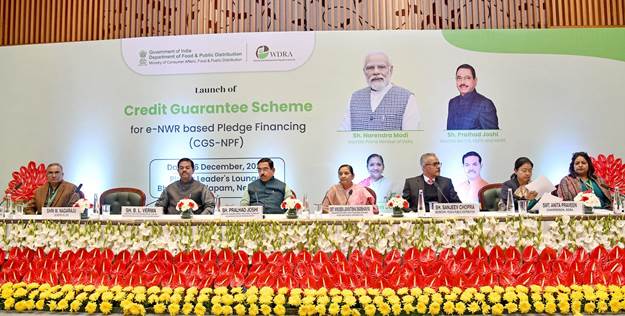
- 17 Dec 2024
In News:
The Credit Guarantee Scheme for e-NWR based Pledge Financing (CGS-NPF), launched by Union Minister Pralhad Joshi aims to support farmers by facilitating post-harvest finance using electronic negotiable warehouse receipts (e-NWRs). This initiative is part of the government’s efforts to minimize distress selling and ensure financial security for farmers, particularly small and marginalized ones.
Key Features of the Scheme:
- Total Corpus: ?1,000 crore for post-harvest finance.
- Loan Coverage:
- Agricultural purposes: Loans up to ?75 lakh.
- Non-agricultural purposes: Loans up to ?200 lakh.
- Eligible Borrowers: Small and marginal farmers, women, SC/ST/PwD farmers, MSMEs, traders, Farmer Producer Organizations (FPOs), and farmer cooperatives.
- Eligible Institutions: All scheduled and cooperative banks.
- Guarantee Coverage:
- Small and marginal farmers/Women/SC/ST/PwD: 85% for loans up to ?3 lakh, and 80% for loans between ?3 lakh to ?75 lakh.
- Other borrowers: 75% coverage for loans up to ?200 lakh.
- Risks Covered: Both credit risk and warehouseman risk.
- Guarantee Fees: 0.4% per annum for farmers, and 1% per annum for non-farmers.
Objectives:
- Minimize distress selling: By providing easy access to loans post-harvest, the scheme helps farmers avoid selling produce at low prices due to cash crunches.
- Instill confidence in banks: The scheme provides a guarantee cover to lenders, encouraging them to offer loans against e-NWRs.
- Encourage warehouse registration: The scheme emphasizes the need for more warehouses, particularly those closer to farmland, to improve accessibility for farmers.
About e-NWRs:
- e-NWRs are digital versions of traditional warehouse receipts that enable farmers to pledge stored commodities as collateral for loans.
- These receipts are governed by the Warehousing (Development and Regulation) Act of 2007, and since 2017, e-NWRs have been mandated for use in transactions related to agricultural produce stored in WDRA-accredited warehouses.
Expected Impact:
- This scheme is expected to boost post-harvest lending, with a target of increasing lending to ?5.5 lakh crore in the next decade.
- It will improve farmers’ income, reduce dependence on informal credit sources, and foster better financial inclusion.
- Additionally, it will create a more reliable supply chain for agricultural produce, enhancing food security.
Future Targets:
- Increase the number of registered warehouses under the WDRA to 40,000 in the next 1–2 years.
- Use platforms like e-Kisan Upaj Nidhi to streamline the lending process and avoid repeated visits to banks.
How La Niña Affects India's Climate?
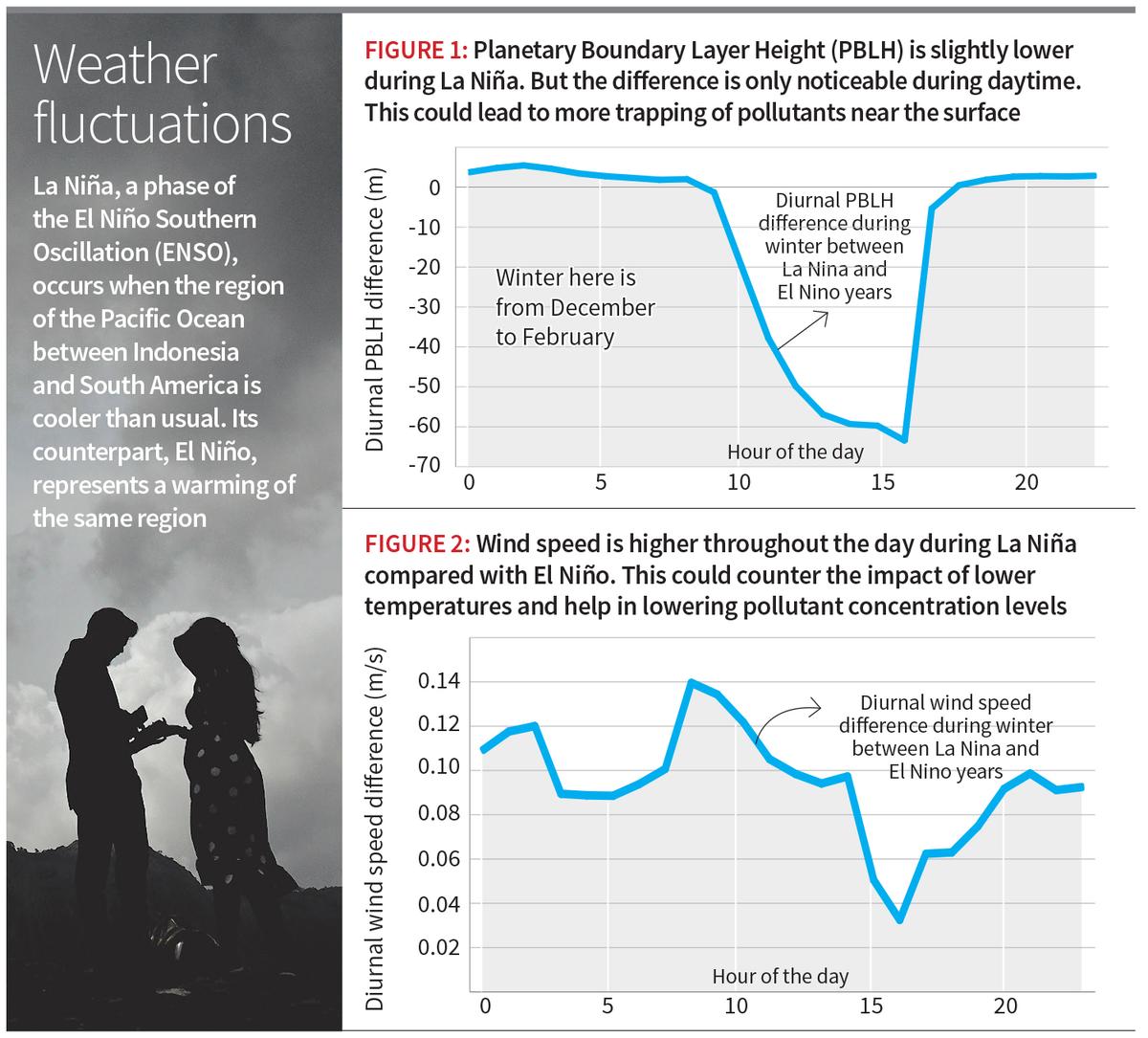
- 28 Dec 2024
In News:
La Niña, a phase of the El Niño Southern Oscillation (ENSO), occurs when the Pacific Ocean region between Indonesia and South America is cooler than usual. This phenomenon influences global weather patterns, including those in India. Here’s how La Niña specifically affects India’s climate:
Monsoon Rainfall:
- La Niña typically results in normal to above-normal rainfall during the monsoon season in India. This is due to the cooling of sea surface temperatures in the central Pacific, which affects atmospheric circulation and strengthens the monsoon winds.
- In contrast, El Niño usually brings below-average rainfall and droughts to India, leading to agricultural stress.
- Recent La Niña years (2020-2022) saw above-normal monsoon rains, which benefited agricultural productivity, while the El Niño year of 2023 resulted in below-normal rains, impacting water availability and agriculture.
Winter Temperatures:
- During La Niña, winter temperatures in India are generally colder in the north, with cooler nights but relatively warmer days compared to El Niño winters. The planetary boundary layer height (PBLH) tends to be lower, trapping pollutants close to the surface. However, higher wind speeds during La Niña help to disperse air pollution, improving air quality.
- South India may experience colder-than-usual winters during La Niña, but current meteorological data suggests the ongoing winter in India is not strongly influenced by La Niña, as its expected onset has been delayed.
Impact on Summer Heat:
- La Niña generally provides relief from extreme summer heat, as it reduces the frequency and intensity of heatwaves. In contrast, El Niño summers are typically hotter and bring record-breaking heat waves.
- For example, April 2023 saw intense heatwaves across India, attributed to the El Niño phase, but if a La Niña forms and persists into the summer of 2025, it could help moderate the extreme heat.
The "Triple Dip" La Niña Phenomenon:
- A Triple Dip La Niña refers to a rare occurrence where three consecutive La Niña events happen, as was the case from 2020 to 2022. This is significant because these prolonged events can lead to stronger climatic impacts. In contrast, the current El Niño (2023) follows this period, potentially contributing to an irregular transition between La Niña and El Niño phases, which may intensify extreme weather patterns.
Global Climate Changes and La Niña:
- Climate change is believed to be increasing the frequency and intensity of both La Niña and El Niño events. Rising sea and land temperatures are disrupting the balance of the Pacific Ocean and could exacerbate extreme La Niña events, which might lead to harsher winters in India and other regions.
Forecast for 2024-2025:
- As of December 2024, the India Meteorological Department (IMD) and global meteorological bodies predict a weak La Niña event to emerge by late 2024 or early 2025. This could lead to colder winters and above-normal rainfall in the 2025 monsoon season, offering some relief from the heatwaves and dry conditions of the previous years.
Conclusion:
If a La Niña forms by the end of 2024, it is likely to bring cooler winters, a relief from extreme summer heat, and above-normal monsoon rainfall in 2025. Given the delayed onset and weakening of the current La Niña, the overall impact on India’s climate in the immediate future might be milder compared to previous La Niña years, but it still holds potential for more favorable conditions for agriculture and air quality.
Vijay Diwas 2024
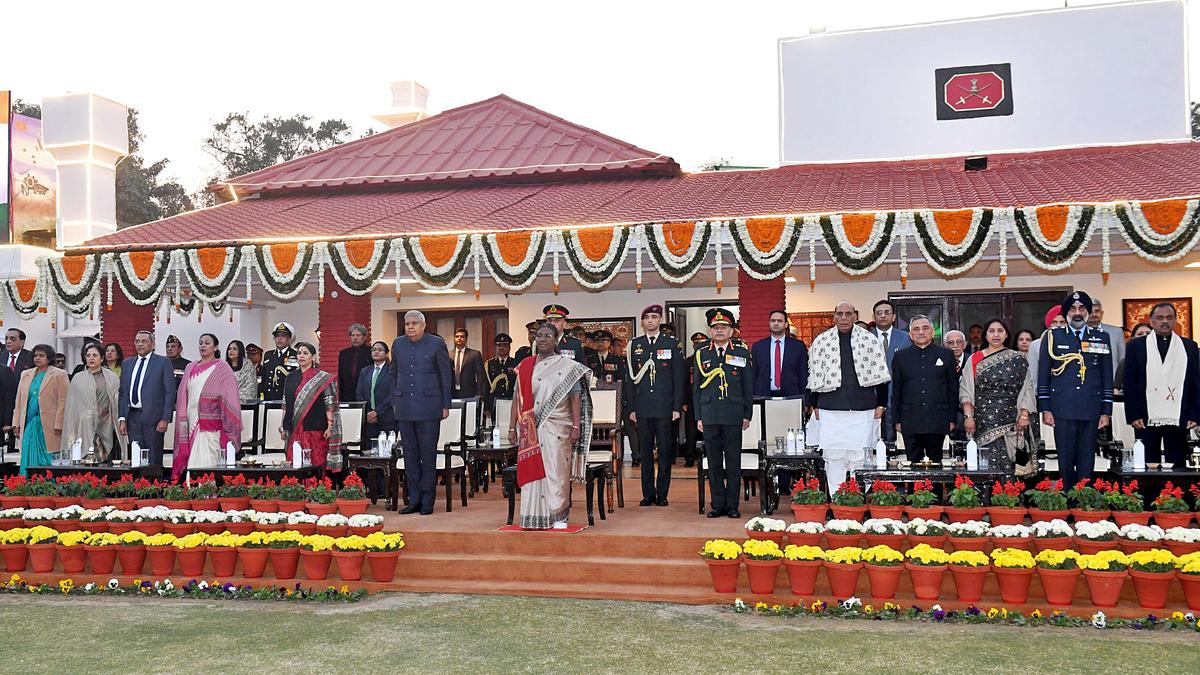
- 17 Dec 2024
In News:
On December 16, 2024, India commemorated Vijay Diwas, marking the 53rd anniversary of its victory in the 1971 Bangladesh Liberation War. This day honors the bravery and sacrifices of Indian soldiers and the Mukti Bahini, whose collective efforts led to the creation of Bangladesh as an independent nation. On this occasion, leaders across India, paid heartfelt tributes to the fallen heroes who contributed to the victory, and to the enduring India-Bangladesh friendship.
The 1971 Bangladesh Liberation War culminated in the surrender of over 90,000 Pakistani soldiers, and India’s victory is celebrated as a defining moment in South Asian history.
The War’s Historical Context:
The 1971 Bangladesh Liberation War was a pivotal conflict between East Pakistan (now Bangladesh) and West Pakistan (now Pakistan), leading to Bangladesh’s independence. It was a direct result of decades of social, political, and economic discrimination faced by East Pakistan, despite its larger population and contribution to Pakistan’s economy. Major events leading to the war included:
- Cultural and linguistic marginalization, with East Pakistan's Bengali language and identity being suppressed by the West.
- The 1970 elections that saw the Awami League, led by Sheikh Mujibur Rahman, win a decisive victory in East Pakistan, but their demand for greater autonomy was rejected by West Pakistan.
- The violent crackdown by the Pakistani military in Operation Searchlight in March 1971, leading to widespread atrocities and a mass exodus of refugees into India.
India’s Role in the War:
India’s involvement in the conflict was initially cautious, but the refugee crisis—with over 10 million people fleeing to India—forced India to take action. India provided humanitarian aid and supported the Mukti Bahini, a guerrilla force of Bangladeshi fighters. On December 3, 1971, Pakistan’s preemptive airstrike on Indian military bases led to India's retaliation and full-scale military involvement, including air and naval operations.
India’s military, with assistance from the Mukti Bahini, launched a decisive campaign, ultimately leading to Pakistan’s surrender on December 16, 1971, and the creation of Bangladesh.
Vijay Diwas Observances:
- The 53rd Vijay Diwas celebrations at Fort William, Kolkata, saw a Bangladeshi delegation—including Mukti Joddhas (freedom fighters)—reflect on their memories of the war, highlighting India's crucial role in the liberation of Bangladesh.
- The event also featured a wreath-laying ceremony, military tattoo, and a salute to the shared sacrifice and friendship between India and Bangladesh.
The 1971 Surrender Painting and New Symbolism:
In an interesting development, the iconic 1971 surrender painting, depicting the surrender of Pakistani forces in Dhaka, was moved from the Army Chief’s lounge to the Manekshaw Centre. The painting was replaced by Karam Kshetra–Field of Deeds, a new artwork symbolizing India’s strategic and cultural heritage. This new piece incorporates elements like Lord Krishna’s chariot, Chanakya, and modern military assets, reflecting India’s military prowess and heritage.
Atmanirbhar Clean Plant Programme
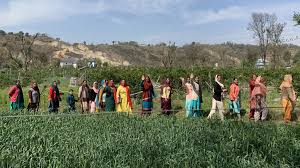
- 17 Dec 2024
In News:
Recently, the Government of India and the Asian Development Bank (ADB) signed a $98 million loan agreement to enhance horticulture crop productivity by improving plant health management. This initiative is part of India’s Atmanirbhar Clean Plant Programme (CPP), aiming to provide farmers with access to certified disease-free planting materials to improve yields, quality, and resilience, particularly against climate change impacts.
Key Highlights of the Loan Agreement
- Objective: Improve access to certified, disease-free planting materials for horticulture crops.
- Implementation: The project will be implemented by the Ministry of Agriculture and Farmers Welfare through the National Horticulture Board (NHB) and the Indian Council of Agricultural Research (ICAR).
- Focus: The initiative will enhance farmers’ productivity, resilience to climate change, and pest/disease management through the Atmanirbhar Clean Plant Programme (CPP).
About the Atmanirbhar Clean Plant Programme (CPP)
The Atmanirbhar Clean Plant Programme aims to tackle critical challenges in horticulture by ensuring farmers have access to high-quality, virus-free planting materials. The program is designed to:
- Enhance crop yields and quality.
- Promote climate-resilient varieties to help farmers adapt to rising temperatures and extreme weather events.
- Safeguard the environment by controlling plant diseases and pests proactively.
Key Components of the CPP
- Clean Plant Centers (CPCs): Establishment of nine world-class CPCs across India, equipped with advanced diagnostic labs and tissue culture facilities to maintain disease-free foundation planting materials.
- Certification Framework: A robust certification system will be introduced to ensure accountability in planting material production, including accreditation for private nurseries.
- Climate Resilience: Focus on developing and disseminating climate-resilient plant varieties, addressing the growing concerns over extreme weather events and changing pest behavior due to climate change.
Significance of the Loan Agreement
- Climate Adaptation: The project will help farmers mitigate the effects of climate change, including unpredictable weather patterns and altered pest/disease behaviors.
- Economic Impact: The initiative aligns with India's vision of self-reliance in horticulture (Atmanirbhar Bharat), boosting agricultural productivity and sustainability.
- Long-term Benefits: Improved farm productivity, sustainability, and economic well-being for farmers, especially in the face of climate change.
Global Horticulture Significance
- India’s Position: India is the second-largest producer of fruits and vegetables globally, contributing 33% to the agricultural GDP.
- Land Coverage: Horticulture occupies 18% of India’s agricultural land, yet its production surpasses that of food grains.
Implementation and Impact
- Implementation Period: The project will be executed from 2024 to 2030, with 50% financial assistance from ADB.
- Institutional Strengthening: The initiative will bolster India’s ability to manage plant health, integrating advanced diagnostic techniques and capacity-building for horticulture professionals.
Exercise Agni Warrior

- 17 Dec 2024
In News:
The 13th edition of Exercise Agni Warrior (XAW-2024), a joint military drill between the Indian Army and the Singapore Armed Forces (SAF), concluded successfully at the Field Firing Ranges, Devlali, Maharashtra. The exercise focused on enhancing mutual understanding and interoperability between the two nations’ artillery units.
Key Facts:
- Participating Nations: India and Singapore
- Location: Field Firing Ranges, Devlali, Maharashtra
- Participants:
- 182 personnel from the Singapore Artillery
- 114 personnel from the Indian Army's Regiment of Artillery
- Objective: To maximize mutual understanding of drills and procedures for joint operations under the UN Charter, particularly in firepower planning and execution, utilizing advanced artillery technologies.
- Historical Context: The exercise began in 2004 under a bilateral agreement between India and Singapore and has evolved over the years, now marking 20 years of cooperation.
Purpose and Highlights:
The exercise aimed to reinforce the long-standing defense relationship between India and Singapore, focusing on:
- Joint Firepower Planning and Execution: Both forces demonstrated the use of New Generation Artillery Equipment, enhancing their firepower coordination.
- Enhancing Interoperability: The exercise emphasized seamless coordination between the two armies to operate as a multinational force under the UN Charter, addressing global security challenges.
- Knowledge Sharing: Personnel from both armies exchanged expertise on advanced artillery tactics, fostering a deeper understanding of each other's military capabilities.
- Technological Integration: Both sides integrated cutting-edge technologies, allowing the exchange of best practices in the use of artillery systems.
Key Objectives of XAW-2024:
- Enhanced Interoperability: To ensure smooth coordination in joint operations, fostering the ability to respond to regional security threats.
- Firepower and Coordination Techniques: Sharing expertise on artillery planning, coordination, and execution.
- Advanced Equipment Use: Testing and demonstrating modern artillery systems in joint operations, ensuring both forces are prepared for contemporary warfare.
Structure and Execution:
The exercise was structured to include pre-exercise training, field operations, and a post-exercise evaluation:
- Pre-Exercise: Both armies engaged in interactive sessions to familiarize themselves with each other's artillery tactics and advanced systems.
- Field Operations: Simulated combat scenarios tested joint firepower execution, emphasizing real-time problem-solving and decision-making under pressure.
- Post-Exercise Review: A thorough analysis identified areas for improving joint operations and coordination.
Strategic Significance:
- Strengthening Bilateral Ties: Agni Warrior reinforces the defense partnership, facilitating joint operations that support regional security.
- Regional Stability: The exercise underscores the commitment of both nations to peace and security in the Indo-Pacific region.
- Capacity Building: Both Indian and Singaporean forces gained exposure to sophisticated firepower planning and gained operational readiness for future deployments.
Little Bunting
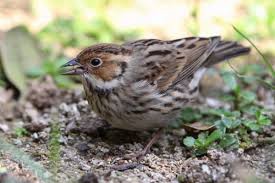
- 16 Dec 2024
In News:
Little Bunting recently spotted in Mount Abu, Rajasthan, a sighting previously unseen in the region.
About the Little Bunting:
- Scientific Name: Emberiza pusilla
- Family: Bunting family (Emberizidae)
- IUCN Red List Status: Least Concern
Distribution:
- Breeding Range: Far northeast Europe and northern Eurosiberia to the Russian Far East (taiga region).
- Migratory Pattern: Migrates to the subtropics during winter, with sightings in northern India, southern China, and northern Southeast Asia.
Physical Features:
- Size: Small bird, measuring 12–14 cm (4.7–5.5 inches).
- Coloration:
- White underparts with dark streaking on the breast and sides.
- Chestnut face with a white malar stripe, black crown stripes, and a white eye-ring.
- Fine dark border behind chestnut cheeks.
- Similarity: Resembles a small female reed bunting but with distinct black crown stripes.
Call and Song:
- Call: Distinctive "zik".
- Song: A rolling "siroo-sir-sir-siroo".
Habitat and Behavior:
- Typically found in agricultural areas, feeding on grains.
- Migration: Avoids extreme cold conditions, possibly due to climate change influencing its movement into Rajasthan.
Recent Sightings in India: Spotted in Gurugram, Chandigarh, northern Punjab, and now Rajasthan.
Conservation Significance: The sighting underscores the need to preserve forest areas and wetlands for migratory species like the Little Bunting.
Search and Rescue Aid Tool (SARAT)
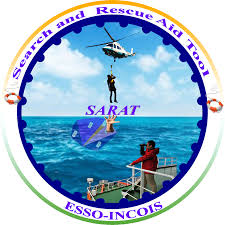
- 16 Dec 2024
In News:
The Indian National Centre for Ocean Information Services (INCOIS), under the Ministry of Earth Sciences, has developed SARAT Version 2 to aid Indian Search and Rescue (SAR) agencies like the Indian Coast Guard.
Key Highlights:
Purpose: SARAT is designed to assist in locating missing objects or individuals at sea by simulating the probable search area, considering factors like wind, currents, and waves.
Improvements in Version 2:
- The search area now starts from the last known position of the object, improving the accuracy of the search.
- Enhanced visualizations for better judgment of probable search areas, including colour coding of regions and markers to identify the last known position.
- Optimized search: Reduces the vast search area to a few high-probability regions, allowing for better utilization of limited search resources.
Technical Aspects:
- The tool uses model currents from the Regional Ocean Modelling System run on high-performance computers at INCOIS.
- It accounts for uncertainties in the initial location and the last known time of the missing object using model ensembling.
- Users can select from 60 types of missing objects based on shape and buoyancy.
Interactive Map & Multi-language Support:
- Results are shown on an interactive map, providing the probable search area.
- The tool also sends results as text messages to emails and mobile phones in languages of coastal states, enabling local fishermen to use it effectively during distress situations.
Launched in 2016, Updated in 2024: SARAT was launched in 2016 and the updated version (SARAT Version 2) has been designed with feedback from the Indian Coast Guard and other stakeholders involved in marine search operations.
Access: The updated SARAT Version 2 can be accessed at: https://sarat.incois.gov.in/sarat/home.jsp.
African Swine Fever
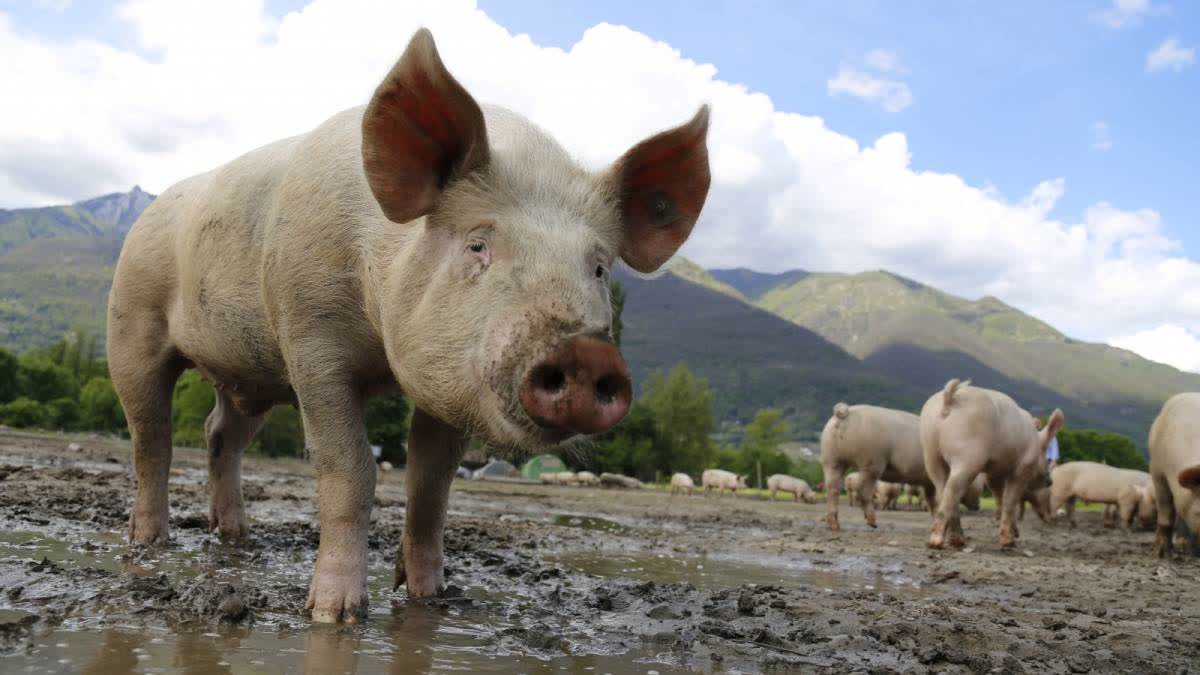
- 16 Dec 2024
In News:
African Swine Fever has been reported at two pig farms in Koottickal and Vazhoor grama panchayats in Kottayam district.
Action Taken:
- Culling of Pigs: All pigs in the affected farms and within a 1 km radius will be culled and disposed of according to Central Government guidelines.
- Infected Zone: A 1 km radius around the affected farms has been declared an infected zone.
- Surveillance Zone: A 10 km radius around the infected area has been designated a surveillance zone.
About African Swine Fever (ASF)
- African swine fever (ASF) is a highly contagious and hemorrhagic viral disease of domestic and wild pigs. It is a notifiable disease and its outbreak should be immediately reported to the higher authorities.
- ASF causes destructive effect on piggery due to high morbidity and mortality (up to 90-100 %). In India it was first confirmed in Arunachal Pradesh and Assam in February-March 2020.
- Currently, there is no effective vaccine available against ASF, so prevention by adopting strict biosecurity measures is the only way to prevent ASF.
CLINICAL SIGNS
- High fever (106-1080 F), lethargy and loss of appetite
- Increased respiration rate
- Blue-purple discoloration of skin of ears, abdomen and rear legs
- Discharge from the eyes and nose; bloody froth from the nose/mouth
- Constipation or bloody diarrhea
- Abortion
- Death of pigs in 6-15 days
Diagnosis: Confirmatory diagnosis in gov. laboratories
Zakir Hussain
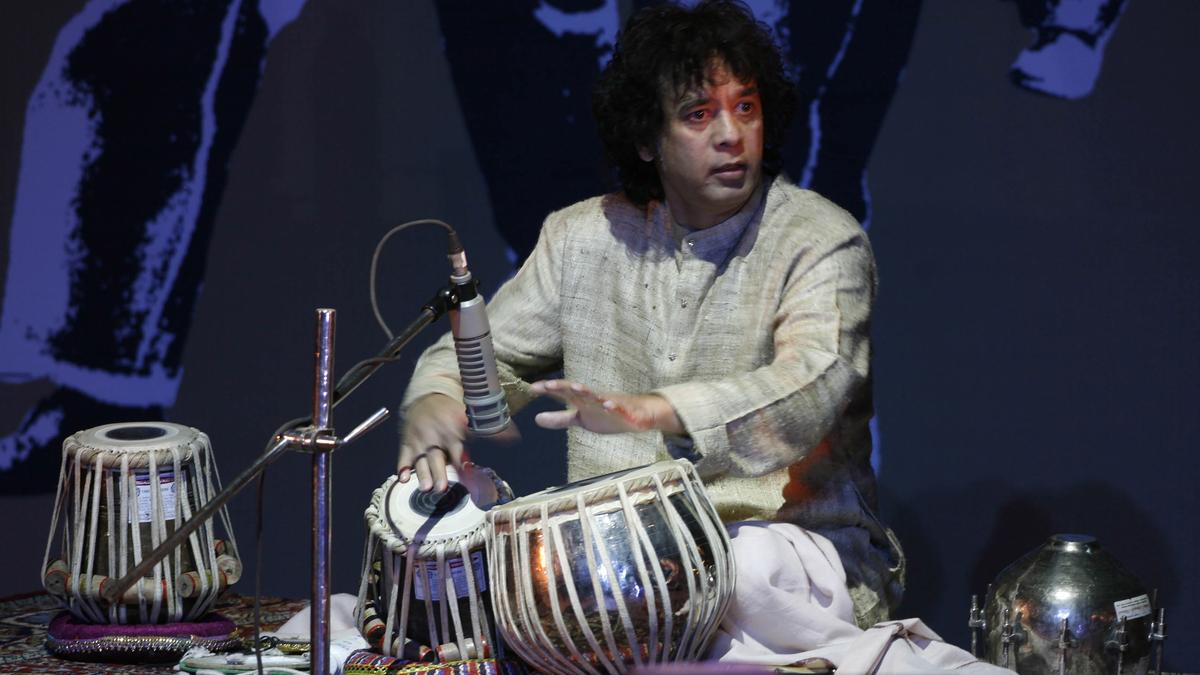
- 16 Dec 2024
In News:
Ustad Zakir Hussain, the legendary tabla virtuoso, passed away at the age of 73 due to Idiopathic Pulmonary Fibrosis (IPF).
Key Highlights:
- Career Highlights:
- Born on March 9, 1951, to Ustad Alla Rakha, a renowned tabla maestro.
- Began tabla training at age 7, with early guidance from his father.
- Co-founded Shakti in 1973 with John McLaughlin, blending Indian classical music with Western influences, pioneering world music.
- Worked with global artists, including George Harrison, John McLaughlin, and Mickey Hart.
- Awarded four Grammy Awards, including three at the 66th Grammy Awards (2024), and honored with the Padma Vibhushan in 2023.
- A visiting professor at Stanford and Princeton universities.
- Musical Style:
- Transformed the tabla from a background instrument into a dynamic, expressive solo performance.
- Known for his complex rhythms and spontaneous performances, making tabla accessible and glamorous.
- Emphasized the concept of "hazri" (attendance) in the court of music, seeing his music as an offering to a higher power.
- Cultural Influence:
- His music was a bridge between traditional Indian classical and contemporary global sounds, impacting audiences worldwide.
- Played a pivotal role in the cultural exchange of Indian classical music, gaining fans and respect across the globe.
- Participated in projects such as the Taj Mahal tea commercials and "Desh Raag", symbolizing unity and diversity in India.
What is Idiopathic Pulmonary Fibrosis (IPF)?
- IPF is a chronic lung disease causing scarring of the lung tissue, leading to difficulty in breathing.
- Cause: The exact cause is unknown, hence termed "idiopathic" (unexplained).
- Risk Factors: Most common in older adults (over 50), men, and those with a history of smoking or viral infections.
About the Tabla:
- Structure: Composed of two drums—Tabla (right) and Bayan (left)—used primarily in Hindustani classical music.
- Material: Tabla has a wooden body, while Bayan can be made of clay or metal, both covered with animal skin and syahi paste.
- Role: Primarily accompanies vocal and instrumental performances, and is essential in various classical dance forms in northern India.
- Historical Note: Believed to have been invented by Amir Khusrau.
Prominent Tabla Players:
- Ustad Alla Rakha (father of Zakir Hussain).
- Zakir Hussain (himself).
- Shafat Ahmed and Samta Prasad.
India Maritime Heritage Conclave 2024
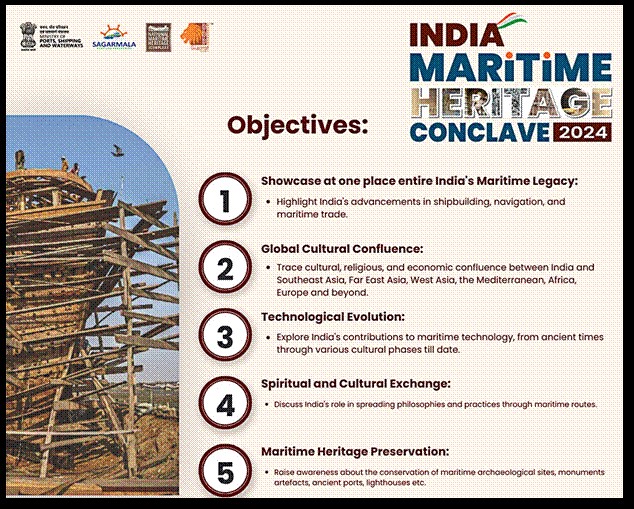
- 16 Dec 2024
In News:
The 1st India Maritime Heritage Conclave (IMHC 2024), a landmark event organized by the Ministry of Ports, Shipping and Waterways (MoPSW) was recently held.
Key Highlights:
Event Overview:
- Organized by the Ministry of Ports, Shipping, and Waterways (MoPSW), held on December 11-12, 2024.
- Theme: "Towards Understanding India's Position in Global Maritime History."
- Celebrated India’s maritime legacy and future vision as a maritime powerhouse.
India’s Maritime Heritage:
- Deeply rooted in ancient traditions; references in Rig Veda, mythology, literature, and archaeology.
- Modern India boasts a 7,500 km coastline, 13 major ports, 200 non-major ports, handling 95% of trade by volume and 70% by value.
- Ports handle 1,200 million tonnes of cargo annually, vital for economic growth.
Key Features of IMHC 2024:
- International Participation: Dignitaries from 11 countries, including Greece, Italy, UK.
- Exhibition: Showcased ancient shipbuilding techniques, navigation systems, historical trade routes.
- Cultural Program: Celebrated coastal traditions with performances and festivities.
- Key Focus: Sustainable maritime innovation, skill development, youth engagement, and cultural preservation.
National Maritime Heritage Complex (NMHC):
- Location: Lothal, Gujarat – an ancient Harappan site (2600 BCE).
- Significance: Home to the world’s oldest dry-dock (2400 BCE).
- Future Vision: NMHC to showcase maritime history with 14 galleries, open aquatic gallery, lighthouses, and a research institute.
Modern Maritime Significance:
- India’s Global Maritime Ranking: 16th largest globally, 3rd largest in ship recycling.
- Trade Backbone: 95% of India's trade by volume, 70% by value handled by maritime sector.
- Port Performance: India ranks 22nd in the World Bank’s Logistics Performance Index (2023).
Future Maritime Vision:
- Sustainable Blue Economy: Emphasis on eco-friendly practices, green shipping, and maritime tourism.
- Skill Development: Training programs to empower local communities and boost maritime workforce.
- Infrastructure Development: Upgrading ports and shipping infrastructure under the Sagar Mala Program.
- Policy Framework: Integrated policies for maritime heritage preservation and economic development.
Notable Initiatives:
- Maritime India Vision 2030: Focus on increasing maritime capacity and sustainability.
- SAGAR: Security and Growth for All in the Region initiative.
- Ship Repair & Recycling Mission: Promote India as a global leader in ship recycling.
- Green Hydrogen Hubs: Development of eco-friendly maritime infrastructure.
Santa Ana Winds
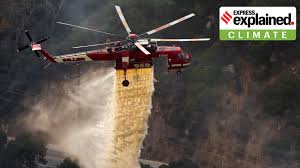
- 15 Dec 2024
In News:
The ongoing Franklin Fire in Malibu, California, has burned over 4,000 acres and affected around 22,000 people. Although the exact cause of the fire is still under investigation, experts point to two key factors contributing to the intensity of the blaze: Santa Ana winds and climate change.
Santa Ana Winds
- Santa Ana winds are powerful, dry winds that typically occur in Southern California from October to January.
- They are caused when high-pressure systems over the Great Basin (the area between the Rocky Mountains and Sierra Nevada) push air toward low-pressure areas over California’s coast.
- As the air moves downhill through mountain passes, it compresses and heats up, which significantly lowers the humidity—sometimes to levels below 10%—creating dry conditions. This extremely low moisture content dehydrates vegetation, making it highly susceptible to combustion.
- These winds have been a natural feature of California's weather, contributing to wildfires for years. However, when combined with other factors like climate change, their impact has become more severe.
The Role of Climate Change
While Santa Ana winds have long played a role in California's wildfires, climate change has exacerbated the situation in recent years. The state's wildfire season has lengthened due to rising global temperatures, which have led to:
- Warmer springs and summers.
- Earlier snowmelt in spring, which leaves vegetation drier for longer periods.
- Longer and more intense dry seasons, which cause increased moisture stress on vegetation.
As a result, forests and brushlands are now more vulnerable to fires. Climate change has also contributed to more extreme weather events, including heatwaves, which further dry out vegetation and create favorable conditions for wildfires.
Intensification of Wildfire Seasons
Recent studies have shown that California's wildfire season has grown longer over the past two decades. For example, a 2021 study in Nature Scientific Reports found that the state's annual burn season has shifted, with the peak fire season now occurring earlier in the year, from August to July. Additionally, research published in PNAS (Proceedings of the National Academy of Sciences) in 2023 indicated that the largest wildfires in California history have occurred in the past 20 years, with five of the top 10 largest fires taking place in 2020 alone.
Looking Ahead
The situation is expected to worsen as climate change continues. If global temperatures rise by more than 3°C by the end of the century, as predicted by the United Nations, California’s wildfire risk will likely intensify. The combination of Santa Ana winds and increasingly dry conditions will continue to make areas like Malibu, and much of California, more prone to destructive wildfires.
In conclusion, while Santa Ana winds remain a natural contributor to California's wildfires, the influence of climate change has significantly lengthened the wildfire season, making wildfires more frequent, intense, and harder to control. The continued rise in global temperatures only accelerates these trends, posing a growing challenge for fire management and public safety in California.
'Jalvahak' Scheme for Inland Waterways Promotion

- 15 Dec 2024
In News:
Govt Unveils ‘Jalvahak’ To Boost Inland Waterways, Cargo Movement Incentivised on NW1, NW2 & NW16
Key Highlights:
- Launch of 'Jalvahak' Scheme:
- Launched by: Union Minister for Ports, Shipping & Waterways, Shri Sarbananda Sonowal, on December 15, 2024.
- Objective: The scheme aims to promote the use of inland waterways for long-haul cargo transportation, reduce logistics costs, and alleviate congestion in road and rail networks.
- Targeted Waterways:
- The scheme focuses on three major National Waterways (NWs):
- NW 1: River Ganga
- NW 2: River Brahmaputra
- NW 16: River Barak
- The scheme focuses on three major National Waterways (NWs):
- Incentives:
- The scheme offers up to 35% reimbursement on operating expenses for cargo transported over 300 km via these waterways, particularly using the Indo-Bangladesh Protocol Route (IBPR).
- Encouraging Private Operators: The scheme also incentivizes the hiring of vessels owned by private operators to promote competition and efficiency.
- Scheduled Cargo Service:
- Service Launch: Fixed, scheduled cargo vessel services have been introduced, running between key locations:
- Kolkata - Patna - Varanasi - Patna - Kolkata (for NW 1)
- Kolkata - Pandu (Guwahati) (for NW 2 via IBPR)
- Transit Times: Predefined and fixed for efficiency:
- Kolkata to Patna: 7 days
- Patna to Varanasi: 5 days
- Kolkata to Varanasi: 14 days
- Kolkata to Pandu: 18 days
- Pandu to Kolkata: 15 days
- Service Launch: Fixed, scheduled cargo vessel services have been introduced, running between key locations:
- Economic and Environmental Impact:
- Cargo Shift Target: The initiative aims to shift 800 million tonne-kilometres of cargo by 2027.
- Growth Projections:
- 200 million tonnes of cargo by 2030.
- 500 million tonnes by 2047, supporting the Blue Economy and Atma Nirbhar Bharat initiatives.
- The move to waterways aims to reduce the pressure on India's roads and rail systems, contributing to a more sustainable and cost-effective logistics system.
- Strategic Goals:
- Modal Shift: The scheme seeks to achieve a shift of 800 million tonne-kilometres by 2027 with an investment of ?95.4 crores.
- Sustainability: Inland waterways are considered an environmentally friendly, efficient, and low-cost transportation mode, with a focus on sustainability.
- Logistics Optimization: This initiative is expected to help optimize supply chains for major shipping companies, freight forwarders, and trade bodies involved in bulk and containerized cargo.
- Implementation Agencies:
- Inland Waterways Authority of India (IWAI): The main body responsible for the development and regulation of inland waterways.
- Inland & Coastal Shipping Limited (ICSL): A subsidiary of the Shipping Corporation of India, responsible for the operation of vessels.
- Broader Impact:
- Economic Growth: The scheme is expected to foster economic growth by improving logistics efficiency.
- Decongestion: The initiative aims to decongest the road and rail transport systems, facilitating smoother movement of cargo.
- Regional Connectivity: Enhances connectivity, particularly in eastern India, benefiting areas along the Ganga, Brahmaputra, and Barak rivers.
- About the National Waterways:
- India has 14,500 km of navigable inland waterways, which include rivers, canals, and backwaters. These waterways are significantly under-utilized compared to other countries.
- The National Waterways Act, 2016 declared 111 waterways (including both existing and newly identified ones) for navigation.
- The Jalvahak scheme is part of India's broader strategy to unlock the potential of its inland waterways, offering an efficient, economical, and environmentally sustainable alternative for cargo transport.
Rajmarg Saathi - Upgraded Route Patrolling Vehicles (RPV) by NHAI
- 15 Dec 2024
In News:
With an aim to enhance road safety and strengthen highway patrolling, NHAI plans to implement the upgraded and forward-looking Incident Management Services. The guidelines on the subject include updated specifications for new Route Patrolling Vehicles (RPVs) named ‘Rajmarg Saathi’ and outlines design, functions, technology, components and manpower specifications for the RPVs.
Key Highlights:
Launch of Rajmarg Saathi:
- Initiative by: National Highways Authority of India (NHAI).
- Objective: Enhance highway safety, emergency response, and road maintenance efficiency across India.
- Launched in: December 2024.
What is Rajmarg Saathi?
- Definition: An upgraded version of Route Patrolling Vehicles (RPVs), designed for effective highway patrolling and incident management.
- Main Aim: Improve highway safety and ensure smooth traffic flow through advanced technology and quick emergency responses.
Key Features:
- Advanced Design:
- Closed Cabinets: For organized storage and easy access to emergency tools and inventory, replacing earlier models with open storage space.
- AI-Powered Technology:
- Dashboard Cameras: Equipped with AI-enabled cameras to capture and analyze road conditions like cracks, potholes, and other distresses.
- Road Monitoring: The system also monitors vehicles, pedestrians, road signs, and other infrastructure elements.
- Integration with NHAI One: Data collected by AI systems is integrated into NHAI’s centralized application for efficient road maintenance.
- Emergency Preparedness: The RPVs are fully equipped with modern communication and safety tools, designed to minimize traffic disruptions during emergencies.
Data Collection and Maintenance:
- Weekly Analytics: The system will collect and analyze road condition data weekly to streamline maintenance activities and monitor highway safety.
Vehicle Usage and Replacement:
- Replacement Guidelines: RPVs will be replaced after 3 years of operation or 3,00,000 km to ensure they remain functional and service-ready.
Visibility and Branding:
- External Branding: RPVs are designed to be highly visible with enhanced branding for easy recognition as highway patrol vehicles.
- Uniform for Personnel: The patrolling personnel will wear updated uniforms, including bright blue colors and reflective jackets with authority logos for better identification.
Role in Incident Management:
- RPVs will play a crucial role in managing traffic incidents, ensuring smooth traffic flow, and enhancing road safety by addressing emergencies quickly.
Commitment to Road Safety:
- NHAI remains committed to improving road safety standards and ensuring a smooth, hassle-free travel experience for all users across the national highway network.
About NHAI:
- Establishment: NHAI was established under the National Highways Authority of India Act, 1988, and became operational in 1995.
- Responsibilities: It is responsible for developing, maintaining, and managing national highways in India.
- Objectives:
- Promote transparency in awarding contracts.
- Maintain high standards of project implementation.
- Ensure comfort and convenience for users of the national highway system.
India's Road Network:
- Size: India has the 2nd-largest road network in the world, spanning approximately 63.32 lakh km, which includes national highways, expressways, state highways, and rural roads.
India-Australia CCEA
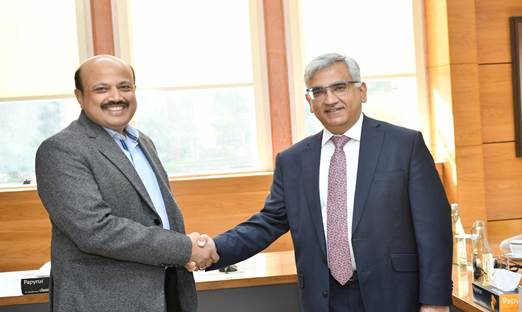
- 15 Dec 2024
In News:
The 3-day stocktake meeting took place in New Delhi, marking a significant step in strengthening the India-Australia trade and strategic partnership.
Key Highlights:
- Key Discussion Areas:
- Trade in goods and services.
- Mobility, agri-tech cooperation, and market access.
- Focus on ensuring the CECA delivers balanced benefits for both nations.
- Food security concerns and market access modalities aligned with India’s goals.
- Background on Negotiations:
- The discussions in New Delhi were a continuation of the 10th round of negotiations held in Sydney (August 2024).
- Both sides aimed to outline a path forward for the early conclusion of the CECA.
- Importance of CECA:
- CECA is a Free Trade Agreement (FTA) aimed at eliminating tariffs and liberalizing services sectors to enhance business opportunities and cooperation.
- It addresses five key areas: Goods, Services, Digital trade, Government procurement & **Rules of Origin/Product Specific Rules
- New areas under discussion include: Competition policy, MSMEs, Gender, Innovation, Agri-tech, Critical minerals & Sports
- Historical Context:
- CECA negotiations began in May 2011, were suspended in 2016, and resumed in September 2021.
- The India-Australia Economic Cooperation and Trade Agreement (ECTA) was signed in 2022, serving as a foundational agreement and a precursor to CECA.
- Trade Statistics (2023-24):
- India's imports from Australia: $16.2 billion.
- India's exports to Australia: $8 billion.
- Trade has grown significantly, with India being Australia’s 5th-largest trading partner.
- Regional Cooperation Initiatives:
- India and Australia are partners in several regional initiatives:
- Indo-Pacific Economic Framework for Prosperity (IPEF)
- Trilateral Supply Chain Resilience Initiative (SCRI) with Japan.
- India and Australia are partners in several regional initiatives:
- India's CECA with Other Countries:
- India has similar CECA agreements with several nations, including: Singapore, Malaysia, Thailand & New Zealand
- Future Prospects:
- The stocktake discussions have paved the way for further cooperation in areas such as agricultural innovation, market access, and supply chain resilience.
- Both nations are optimistic about the early conclusion of the CECA and the broader economic partnership.
This recent stocktake visit represents a significant step in the ongoing efforts to solidify trade ties and deepen economic cooperation between India and Australia under the framework of the Comprehensive Economic Cooperation Agreement.
100-Day Intensified Nationwide TB Campaign
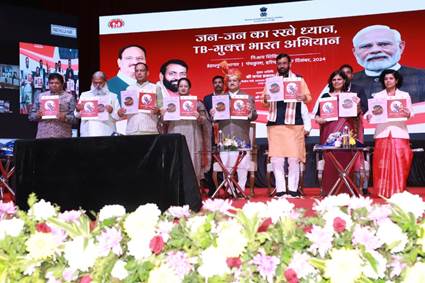
- 15 Dec 2024
In News:
- Union Health Minister Shri JP Nadda launched a 100-day intensified TB campaign in Panchkula, Haryana, aimed at reducing TB incidence and mortality. The campaign will focus on 347 high-risk districts across India.
Key Highlights:
- Campaign Goals:
- Find and treat missing TB cases, especially in high-risk groups.
- Significantly reduce TB-related deaths.
- Focus Areas:
- The campaign is part of India’s larger goal to eliminate TB before the 2030 SDG deadline.
- Strategies include early detection and rapid treatment of TB patients.
- Historical Context:
- TB was once seen as a "slow death" and patients were isolated.
- In 2018, the Prime Minister set the vision to end TB before 2030.
- Recent Government Initiatives:
- Ayushman Arogya Mandirs network of 1.7 lakh centers helps in early TB detection.
- Increased diagnostic infrastructure: Laboratories increased from 120 in 2014 to 8,293 today.
- Introduction of new drug regimens: Shorter and more effective treatments have increased the treatment success rate to 87%.
- Ni-kshay Support: Rs 3,338 crore transferred to 1.17 crore TB patients via direct benefit transfer.
- Key Achievements:
- TB decline rate in India has increased from 8.3% (2015) to 17.7% today, surpassing the global average.
- TB-related deaths have dropped by 21.4% over the past decade.
- Private Sector Involvement:
- Mandatory notification of TB patients by private practitioners has led to an 8-fold increase in TB case notifications.
- 4Ts Approach for TB Elimination: Test, Track, Treat, and Technology (use of advanced tools for diagnosis and treatment).
- New Initiatives:
- Ni-kshay Vahaan: Mobile vans to detect and treat TB patients in remote areas.
- Launch of national guidelines for a new drug-resistant TB regimen (BPaLM), which is a 4-drug combination therapy for multi-drug-resistant TB.
- Ni-kshay Poshan Yojana:
- Increase in nutritional support: Monthly support raised from Rs 500 to Rs 1000 per TB patient.
- The initiative also includes energy boosters for enhanced patient care.
- Mobile Diagnostics:
- Deployment of AI-enabled portable X-ray units and molecular tests to bring diagnostics closer to people, especially in remote areas.
- Monitoring and Data: Intensified data tracking via the Ni-kshay portal to provide timely updates to TB patients.
- Background of the Campaign:
- Part of the National TB Elimination Programme (NTEP).
- The 347 districts were selected based on indicators like death rates, presumptive TB examination rates, and incidence rates.
- Campaign Materials:
- Unveiling of Information, Education, and Communication (IEC) resources in regional languages.
- Honoring TB Champions and Ni-kshay Mitras during the event.
- Government’s Strategic Framework:
- India’s National Strategic Plan (NSP) for TB elimination (2017-2025).
- TB Harega Desh Jeetega Campaign and Pradhan Mantri TB Mukt Bharat Abhiyan.
- Tuberculosis (TB) Overview:
- TB is caused by Mycobacterium tuberculosis and primarily affects the lungs, spreading through the air.
- Mortality rate has decreased from 28 per lakh (2015) to 23 per lakh (2022).
Desert Knight Air Combat Exercise
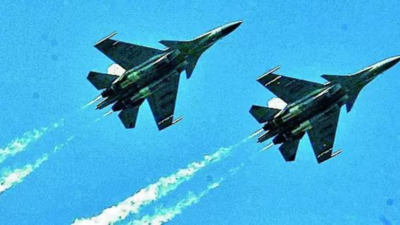
- 14 Dec 2024
In News:
India, France and UAE recently kicked off a major air combat exercise called “Desert Knight” over the Arabian Sea, strengthening trilateral defence cooperation and enhancing military interoperability amid the ongoing geopolitical churn.
Key Highlights:
- What It Is: A trilateral air combat exercise aimed at improving military interoperability and enhancing combat readiness among the participating nations.
- Nations Involved: India, France, and the UAE.
- Location: Conducted over the Arabian Sea, approximately 350-400 km southwest of Karachi.
- Aim of the Exercise:
- To strengthen trilateral defence cooperation among the three nations.
- To enhance combat skills and military interoperability of the air forces involved.
- Details of the Exercise:
- Duration: The exercise lasts for three days.
- The exercise involves large force engagement and intensive combat maneuvers in a realistic operational environment.
- Aircraft Involved:
- India: Deployed Sukhoi-30MKIs, Jaguars, IL-78 mid-air refuellers, and AEW&C (Airborne Early Warning and Control) aircraft from bases like Jamnagar.
- France: Deployed Rafale jets and other aircraft from Al Dhafra airbase.
- UAE: Deployed F-16 jets and other aircraft from Al Dhafra airbase.
Strategic Significance:
- The exercise is part of India’s efforts to build military interoperability with nations in the Persian Gulf region and strengthen defence ties with France and the UAE.
- Enhances combat readiness and strengthens cooperation against both traditional and non-traditional threats.
- Reflects the geopolitical shift and growing military cooperation in the Indo-Pacific region, especially in the context of China’s expansionist activities.
- Trilateral Framework: India, France, and the UAE launched a trilateral framework in 2022, focusing on areas like defence, technology, energy, and environment.
- Previous Exercises: In addition to Desert Knight, the countries also conducted their first trilateral maritime exercise in June 2023 to enhance cooperation in maritime security.
Broader Defence Relations:
- India-France: Long-standing strategic partnership with regular joint exercises like Shakti (army), Varuna (navy), and Garuda (air force).
- India-UAE: The defence relationship has grown significantly in recent years, with regular professional exchanges, combat exercises, and staff talks. India participates in the Desert Flag exercise at Al Dhafra airbase annually.
NASA Captures Active Volcano Erupting on Jupiter's Moon Io

- 14 Dec 2024
In News:
NASA has revealed new details about Io, Jupiter’s third-largest moon and the most volcanic world in our solar system.
Overview:
- NASA’s Juno mission has revealed new insights about Io, Jupiter's third-largest moon, known as the most volcanic world in the solar system.
- Io has over 400 active volcanoes, which send plumes and lava flows into space, creating its unique, fiery surface.
Recent Discoveries and Observations:
- Fiery Heart of Io:
- NASA's Juno mission has helped solve a 44-year-old mystery regarding Io’s volcanic activity, revealing that its volcanoes are likely powered by separate magma chambers rather than a single large magma ocean.
- This discovery was made during Juno’s close flybys in late 2023 and early 2024, using Doppler measurements and precise gravity data to understand the moon’s interior.
- Volcanic Activity:
- Io's volcanoes constantly erupt, spewing lava and plumes that shape its surface. The volcanic activity was first observed by NASA's Voyager 1 spacecraft in 1979.
- Tidal Flexing: Io experiences constant squeezing due to its elliptical orbit around Jupiter, which generates immense internal heat and causes frequent eruptions.
- Scientific Insights:
- The research suggests that tidal forces from Jupiter do not create a global magma ocean inside Io, as previously thought, but instead lead to localized magma chambers that fuel its volcanoes.
- Tidal flexing is the primary cause of the immense internal energy on Io, which melts portions of the moon's interior and drives volcanic activity.
- Broader Implications:
- Understanding Other Moons and Exoplanets: Juno's findings have broader implications for understanding the interiors of other moons like Enceladus and Europa, and even exoplanets and super-Earths.
- Future Missions:
- Juno will continue its mission, with the next close approach to Jupiter scheduled for December 27, 2024, bringing it 2,175 miles above Jupiter's cloud tops. Since entering Jupiter’s orbit in 2016, Juno has traveled over 645 million miles.
Empowering ASHA Workers
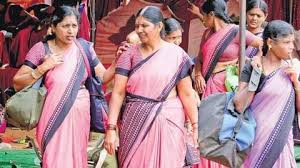
- 14 Dec 2024
In News:
ASHAs (Accredited Social Health Activists) are critical to India's healthcare system, particularly in rural and underserved areas. Since the program's launch in 2005, ASHAs have been integral in improving maternal health, increasing immunization rates, and promoting family planning and sanitation awareness. The network of ASHAs has grown to nearly 1 million members, making it one of the largest community health worker programs in the world.
Role of ASHAs: ASHAs work as community health activists, beyond basic healthcare delivery, by:
- Promoting health awareness.
- Mobilizing local participation in health programs.
- Increasing the utilization of existing health services.
They play a central role in improving maternal and child health, and their efforts have led to increased institutional deliveries and improved immunization rates in rural India.
Challenges Faced by ASHAs: Despite their essential role, ASHAs face several challenges:
- Inadequate compensation and delayed payments, which undermine motivation.
- Heavy workloads with insufficient support and resources.
- Social and economic marginalization, often leading to a lack of recognition and respect.
- Punitive systems that emphasize compliance and record-keeping, hindering autonomy.
This environment limits ASHAs' capacity to act as independent change agents, reducing their effectiveness in driving long-term health improvements.
Psychological Empowerment of ASHAs: To address these challenges, it's essential to empower ASHAs not just financially, but psychologically. Research in motivation theory, particularly Self-Determination Theory (SDT), provides a framework to achieve this. SDT emphasizes the importance of three key psychological needs:
- Autonomy: The need for ownership over one's work.
- Competence: The need to feel capable and effective in performing tasks.
- Relatedness: The need for social connection and recognition.
By fostering these three needs, ASHAs can become more intrinsically motivated and empowered to take ownership of their roles.
Strategies for Empowerment:
- Autonomy: Giving ASHAs more control over their work and decision-making can improve their engagement and efficacy. This can be achieved by reducing rigid monitoring and compliance systems.
- Competence: Providing continuous, quality training and resources will help ASHAs build the skills and confidence needed to perform their roles effectively. Digital tools and modern training programs can be used to enhance their capabilities.
- Relatedness: ASHAs should receive direct feedback from the communities they serve, fostering a sense of connection and accomplishment. Encouraging networks among ASHAs will also help combat isolation and provide peer support.
Government Efforts and Initiatives: The Indian government has recognized the need to support ASHAs through several initiatives:
- Increased remuneration and performance-based incentives.
- Insurance coverage under schemes like Ayushman Bharat.
- Training programs for skill development under the National Health Mission (NHM).
- Village Health Mapping and digital engagement platforms to enhance outreach and feedback mechanisms.
Moving Forward:
To further empower ASHAs, several key steps should be taken:
- Formalizing employment status: Transitioning ASHAs from volunteers to formal workers with benefits can ensure more stability and recognition.
- Improving compensation: Ensuring timely and adequate payments along with performance bonuses will incentivize ASHAs and increase job satisfaction.
- Enhancing infrastructure: Ensuring ASHAs have access to the necessary tools, medical supplies, and transportation to perform their tasks effectively.
- Digital integration: Expanding digital tools for data collection and communication can streamline their work and improve coordination with healthcare systems.
One Nation, One Election Bill
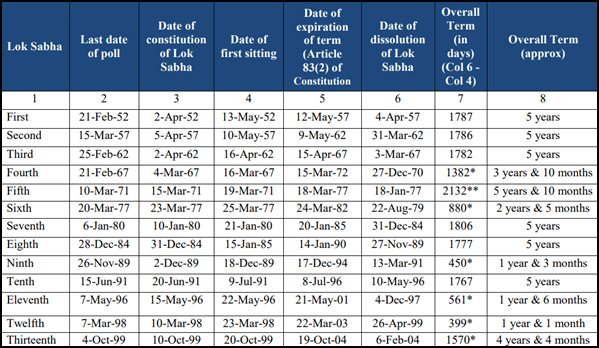
- 13 Dec 2024
In News:
The One Nation, One Election Bill has made significant progress in India, passing the Lok Sabha with 269 votes in favor and 198 votes against. The bill proposes the synchronization of elections for the Lok Sabha, State Legislative Assemblies, and local bodies (Panchayats and Municipalities), aiming to streamline the electoral process, reduce costs, and enhance governance.
Key Updates:
- The bill has been approved by the Union Cabinet and will be reviewed by a Joint Parliamentary Committee (JPC), whose report will be presented for further approval and discussion in Parliament.
- The process will unfold in two phases:
- Phase 1: Simultaneous elections for the Lok Sabha and State Legislative Assemblies.
- Phase 2: Synchronizing local body elections (Panchayats and Municipalities) within 100 days of the general elections.
Historical Context:
- 1951-1967: India previously conducted simultaneous elections for the Lok Sabha and State Assemblies until disruptions, such as premature dissolutions of assemblies, led to staggered elections after 1967.
- The One Nation One Election concept has been revived to address inefficiencies in the current system, especially the high cost of conducting frequent elections.
Advantages of the One Nation, One Election Bill:
- Cost Reduction: Synchronizing elections can significantly lower the financial burden by eliminating the need for multiple election cycles, reducing the deployment of resources like security personnel and election staff.
- Long-Term Governance Focus: Politicians can prioritize governance and policy implementation rather than election campaigning, fostering long-term stability.
- Increased Voter Turnout: Voter fatigue, caused by frequent elections, may reduce, leading to higher turnout as elections occur less often.
- Fairer Political Competition: Smaller regional parties could have a better chance to compete with larger national parties by reducing election-related costs.
- Efficient Use of Resources: Security forces and administrative resources can be deployed more effectively, avoiding the redundancy caused by multiple election cycles.
Disadvantages of the One Nation, One Election Bill:
- Synchronization Challenges: Aligning elections across a vast and diverse country like India, especially in states with unstable political situations, may prove difficult.
- Federalism Concerns: The implementation may require constitutional changes that could impact India's federal structure, potentially limiting the autonomy of states in election matters.
- Impact on Regional Issues: National issues could overshadow regional concerns, diluting the focus on state-specific matters.
- Challenges for Regional Parties: Larger national parties may dominate the electoral landscape, reducing the influence of regional parties and undermining the federal nature of the political system.
- Accountability Risks: Fixed terms without frequent elections might reduce public scrutiny of elected officials, affecting their accountability.
Constitutional Amendments Required:
The implementation of One Nation, One Election requires amendments to several key constitutional provisions:
- Article 83: Regarding the duration of the Lok Sabha, amendments are needed to synchronize the timing of dissolution.
- Article 85: Deals with the sessions and dissolution of Parliament, which needs to be aligned with the new system.
- Article 172: Pertains to the duration of State Legislatures, requiring amendments for synchronization.
- Article 174: Similar to Article 85, it governs the sessions and dissolution of State Legislatures, needing standardization.
Implementation Challenges:
- Logistical Complexity: Conducting simultaneous elections would require immense logistical coordination, including vast numbers of electronic voting machines and trained personnel.
- Political Accountability: Fixed terms may reduce the accountability that frequent elections bring, potentially leading to governance stagnation.
- Impact on Federalism: Amendments to the Constitution regarding state legislatures might face resistance from states concerned about their autonomy.
International Mountain Day 2024
- 13 Dec 2024
In News:
On 11th December 2024, the Ministry of Environment, Forest and Climate Change, in collaboration with the International Union for Conservation of Nature (IUCN) and G.B. Pant National Institute of Himalayan Environment (NIHE), hosted an event titled ‘Youth for the Himalaya: Innovate, Inspire, Impact’ to mark International Mountain Day.
Event Overview:
- The event was themed “Mountain Solutions for a Sustainable Future – Innovation, Adaptation, and Youth.”
- It emphasized the critical role of young people in addressing the environmental challenges faced by the Indian Himalayan Region (IHR).
- The aim was to showcase youth-driven innovations contributing to the region's sustainability, catalyzing active youth participation in environmental actions. This initiative aligns with the Mission LiFE (Lifestyle for Environment), launched by Prime Minister Narendra Modi, which encourages sustainable practices and collective environmental responsibility.
Key Highlights:
- Young changemakers, innovators, and stakeholders from across the country participated, including students, youth representatives, and members of the private sector, civil society, and government.
- The event highlighted discussions on sustainable solutions for the Himalayan region, integrating traditional knowledge with modern technological advancements in areas like eco-tourism, biodiversity conservation, and climate resilience.
- Short films and videos produced by NIHE and IUCN, such as "Promoting Conservation of Threatened Plant Species in the Western Himalayas" and "Himalayan Futures: Voices from the Ground," were also showcased.
International Mountain Day
- International Mountain Day, observed every year on December 11th since 2003, was established by the United Nations to raise awareness about the sustainable development of mountain regions.
- Mountains cover about one-fifth of the Earth's surface and provide essential freshwater to half of humanity, supporting agriculture, clean energy, and health.
Indian Himalayan Region (IHR)
- The IHR spans 13 Indian states and union territories, stretching approximately 2,500 kilometers from west to east. It is a biodiversity hotspot with significant ecological and cultural value. However, it faces challenges such as unsustainable development, climate change impacts, cultural erosion, and rising tourism.
Key Concerns for IHR:
- Unsustainable Development: Infrastructure projects and deforestation disrupt ecosystems.
- Climate Change: Glacial melting and rising temperatures affect water resources and increase flood risks.
- Cultural Erosion: Modernization threatens traditional practices of indigenous communities.
- Tourism Pressure: Waste generation due to growing tourism puts immense pressure on the region's fragile ecology.
Measures for Protection:
- Sustainable Tourism: Promoting eco-tourism and enforcing capacity limits to minimize environmental impact.
- Water Management: Capturing glacial meltwater for agriculture and ecosystem support.
- Disaster Preparedness: Developing disaster management strategies and early warning systems for events like landslides and floods.
- Bio-Cultural Conservation: Protecting both natural biodiversity and indigenous cultural practices through designated zones.
- Integrated Development: Establishing a "Himalayan Authority" for coordinated development in line with Sustainable Development Goals.
India’s Foreign Direct Investment (FDI) Journey Hits $1 Trillion Milestone
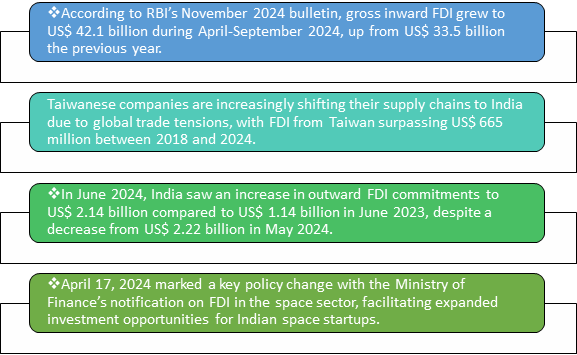
- 13 Dec 2024
In News:
India has reached a historic milestone, surpassing $1 trillion in foreign direct investment (FDI) inflows since April 2000. This achievement highlights India’s growing status as a major global investment hub and is further validated by a 26% increase in FDI inflows, which reached $42.1 billion during the first half of FY 2024-25.
Key Highlights of India’s FDI Growth:
- $1 Trillion Milestone: India has attracted a total of $1 trillion in FDI from April 2000 to September 2024. This figure includes equity, reinvested earnings, and other capital inflows.
- 26% Growth in FDI: FDI inflows surged by 26% in the first half of FY 2024-25, totaling $42.1 billion.
- Top Investors: Major investors include Mauritius (25%), Singapore (24%), and the United States (10%). These countries benefit from favorable tax treaties with India, boosting investment.
- Dominant Sectors: FDI has flowed into sectors like services, manufacturing, technology, and telecommunications, with significant investments also in pharmaceuticals, automobile, and construction development.
Factors Behind India’s FDI Success:
- Policy Reforms: India’s liberalized FDI policies, such as allowing 100% FDI in most sectors under the automatic route, have attracted foreign capital. Key reforms like abolishing angel tax and reducing corporate tax rates in the Income Tax Act of 2024 have also enhanced investor confidence.
- Business Environment: India’s rise in global competitiveness is evident in its improvement in rankings. It moved from 43rd to 40th in the World Competitiveness Index 2024 and climbed to 40th in the Global Innovation Index 2023, up from 81st in 2015.
- Investor Confidence: The government’s efforts, including initiatives like "Make in India", Goods and Services Tax (GST), and sector-specific incentives, have fostered a conducive environment for investment.
- Global Investment Standing: India has been the third-largest recipient of greenfield projects globally and saw a 64% increase in international project finance deals.
Contribution of Mauritius and Singapore:
- Mauritius and Singapore lead as the primary sources of FDI into India. Their favorable tax treaties with India make them attractive gateways for foreign investments. Mauritius accounted for 25%, and Singapore for 24% of the total FDI inflows.
Key Sectors Attracting FDI:
- Services Sector: Significant growth in services, especially financial services, has attracted substantial foreign investments.
- Manufacturing and Technology: These sectors have benefited from policies like the Production-Linked Incentive (PLI) schemes, which encourage foreign investments in high-tech manufacturing.
- Telecommunications and Pharmaceuticals: India’s growing digital ecosystem and strong pharmaceutical industry continue to attract international investments.
Importance of FDI for India:
- Infrastructure Development: FDI plays a crucial role in financing infrastructure projects, helping meet the country’s significant infrastructure needs.
- Balance of Payments: FDI helps bridge India’s current account deficit, ensuring stable foreign exchange reserves.
- Technology Transfer and Employment: Foreign investments bring advanced technology and create jobs, boosting productivity across sectors.
- Currency Stability: FDI supports the Indian Rupee in global markets by injecting foreign capital.
Challenges:
Despite the positive trends, India faces challenges such as geopolitical tensions, regulatory issues, global economic uncertainty, and infrastructure bottlenecks that can affect investor sentiment and capital inflows.
Way Ahead:
- Focus on Infrastructure: Continued investment in infrastructure development, including public-private partnerships (PPPs), will be crucial for sustained economic growth.
- Workforce Skilling: Collaborative efforts to upskill the workforce will ensure that India can meet the evolving demands of industries.
- Research and Development: Strengthening R&D and innovation will enhance India’s productivity and global competitiveness.
2024 World Chess Championship
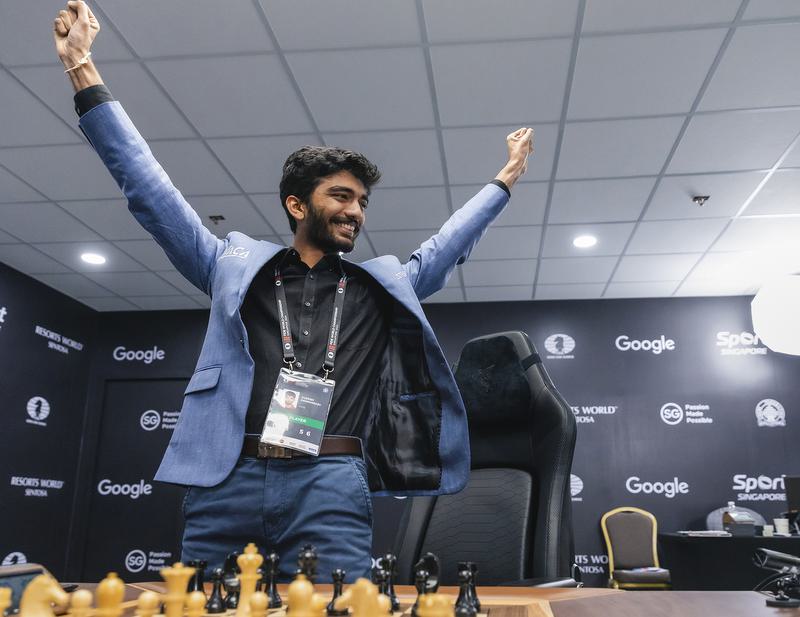
- 13 Dec 2024
In News:
D. Gukesh became the youngest world chess champion after defeating Ding Liren of China in the final game of their match.
Key Facts about the 2024 World Chess Championship:
- Held At: Singapore, from November 25 to December 12, 2024.
- Players: Reigning champion Ding Liren (China) vs. Challenger D. Gukesh (India).
- Significance: This was the first-ever World Championship match contested by two Asian players. Gukesh became the third Asian to win the World Championship after Viswanathan Anand (India) and Ding Liren (China).
- Historical Context: The World Chess Championship was first established in 1886 with Wilhelm Steinitz as the first official World Champion.
- Governing Body: Organized by FIDE (Fédération Internationale des Échecs), which has been responsible for the event since 1948.
- Selection Process: Gukesh earned his spot through his victory in the 2024 Candidates Tournament in Toronto, while Ding Liren was the reigning champion after Magnus Carlsen declined to defend his title.
D. Gukesh: Key Details
- Birth: May 29, 2006, in Chennai, India.
- Grandmaster Title: Achieved at age 12 years, 7 months, and 17 days, making him the third-youngest Grandmaster in history.
- Chess Rating: He is the youngest player to reach a 2750 FIDE rating.
- Significant Wins:
- Gold medals in both team and individual events at the 2024 Chess Olympiad.
- Bronze medal in team events at the 2024 Asian Games.
- Remarkable Fact: Gukesh is four years younger than Garry Kasparov was when he won the World Championship in 1985.
FIDE World Chess Championship Overview:
- Founded: 1924 in Paris; headquartered in Lausanne, Switzerland.
- Governing Body: The International Chess Federation (FIDE) is recognized by the International Olympic Committee and governs global chess competitions. FIDE has 201 member countries.
Indian Chess Achievements:
- Viswanathan Anand: First Indian to win the World Chess Championship (5-time World Champion).
- D. Gukesh: Second Indian to win the World Chess Championship.
Disease X
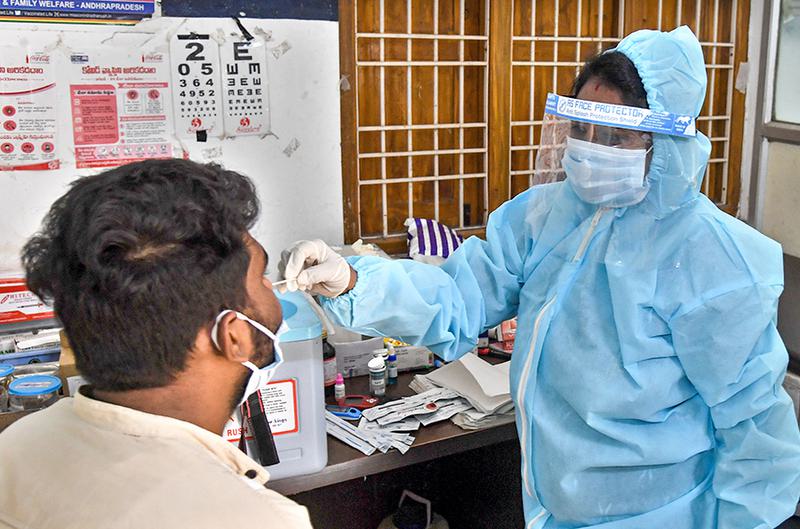
- 13 Dec 2024
In News:
The recent outbreak reported in the first week of December 2024 in the Democratic Republic of Congo, which has claimed over 400 lives and remains unclassified, has raised concerns that it could be an instance of Disease X.
What is Disease X?
- Definition: Disease X is a hypothetical, unidentified pathogen that has the potential to cause a global health crisis, either as an epidemic or pandemic.
- Origins: Could arise from zoonotic spillover (animal-to-human transmission), antimicrobial resistance, bioterrorism, or lab accidents.
- Severity: Predicted to be 20 times more lethal than SARS-CoV-2, with rapid transmission and significant mortality.
- Features: Represents unknown threats, including viruses, bacteria, fungi, or prions.
- Emergence Factors: Driven by deforestation, urbanization, climate change, and human-wildlife interactions.
Historical Context
- Conceptualization: The term was coined by the World Health Organization (WHO) in 2018, post the 2014–2016 Ebola outbreak, which revealed gaps in global health responses.
- Zoonotic Origins: Around 70% of emerging diseases since 1940 have zoonotic origins, linked to human encroachment on wildlife habitats.
WHO’s Priority Pathogen List
- Purpose: To focus global resources and attention on diseases with high epidemic or pandemic potential but lacking sufficient vaccines or treatments.
- Pathogens Listed: Includes Ebola, Marburg, Lassa fever, Nipah virus, Rift Valley fever, Zika virus, and Disease X.
- Criteria: These diseases have high mortality rates, potential for rapid spread, and inadequate preventive or therapeutic options.
Why Disease X is a Concern
- Unpredictability: Its emergence, transmission, and impact remain uncertain, making preparedness challenging.
- Globalization: Increased global travel and trade facilitate rapid spread of diseases across borders.
- Environmental Drivers: Climate change, urbanization, and deforestation disrupt ecosystems, bringing humans into closer contact with wildlife and pathogens.
Patterns in Emerging Diseases
- Zoonotic Spillover: The majority of emerging diseases originate from animals, with over 1.7 million undiscovered viruses in wildlife that could infect humans.
- Increased Outbreaks: Since the mid-20th century, the frequency of new diseases has risen, reflecting environmental, demographic, and global factors.
Challenges in Predicting Disease X
- Uncertainty: The vast pool of potential pathogens (viruses, bacteria, fungi, etc.) makes it difficult to predict the exact nature, origin, or timing of Disease X.
- Environmental and Climatic Changes: Climate change reshapes disease transmission dynamics, expanding the range of diseases like malaria and dengue.
- Technological and Knowledge Gaps: Many pathogens that could cause pandemics are still unidentified. Genomic sequencing and AI are advancing but cannot fully predict Disease X.
Global Preparedness Initiatives
- WHO's Role: WHO’s priority pathogen list and Pandemic Treaty aim to ensure coordinated, global responses to future outbreaks.
- Pandemic Fund: Supports strengthening health systems, especially in low-income countries.
- mRNA Vaccine Hubs: Enhance vaccine production capacity, particularly in developing countries.
- Coalition for Epidemic Preparedness Innovations (CEPI): Works on "prototype pathogen" platforms to create vaccines within 100 days of identifying a new disease.
Indian Initiatives for Disease Surveillance and Preparedness
- Integrated Disease Surveillance Programme (IDSP): Tracks outbreaks, monitors trends, and strengthens the country’s epidemic preparedness.
- National Institute of Virology (NIV): Focuses on researching viral pathogens and zoonotic diseases.
- Biotech Initiatives: Indigenous vaccine development and diagnostic tools are crucial for combating future outbreaks.
- Emergency Response Fund: Allocates resources to support immediate pandemic response efforts.
Key Challenges in Tackling Disease X
- Prediction Complexity: The interactions between humans, animals, and the environment are too complex to predict the exact nature of Disease X.
- Health Disparities: Low- and middle-income countries often lack the infrastructure to effectively combat pandemics, making them more vulnerable.
- Climate Change: Alters transmission dynamics, expanding the range of diseases carried by vectors like mosquitoes.
Way Forward
- Strengthening Surveillance: Implementing real-time genomic sequencing and AI-driven tools for early outbreak detection.
- Global Cooperation: Promoting equitable sharing of vaccines, diagnostics, and treatments to ensure timely and efficient responses.
- Public Health Infrastructure: Invest in strengthening healthcare systems, especially in high-risk regions like the Congo Basin.
- Research and Development: Focus on universal vaccines, diagnostic tools, and prototype pathogen platforms that can be quickly adapted to new diseases.
Reforms in Merchant Shipping

- 10 Dec 2024
In News:
The Government is preparing to introduce several significant bills aimed at driving much-needed reforms in the shipping industry. Key among them are the Merchant Shipping Bill, 2024 and the Coastal Shipping Bill, 2024, both of which promise to bring transformative changes to boost the sector.
Context and Need for Reforms:
- Outdated Framework: The Merchant Shipping Act, 1958, and the Coasting Vessels Act, 1838, fail to address the current needs of the shipping sector, particularly offshore vessels.
- Regulatory Gaps: Inadequate regulation of offshore vessels, maritime training institutions, and welfare provisions for seafarers on foreign-flagged ships.
- Global Alignment: Need to align with international maritime conventions and modernize administration for competitiveness and better governance.
- Investment and Growth: Outdated laws hinder foreign investment and ease of doing business, necessitating a regulatory overhaul.
Key Features of the Merchant Shipping Bill, 2024:
- Ease of Vessel Registration:
- Reduces ownership threshold for Indian entities from 100% to 51%, enabling NRIs, OCIs, and foreign entities to invest.
- Facilitates registration of vessels chartered by Indian entities under the "bareboat charter-cum-demise" system, promoting capital-deficient entrepreneurs.
- Temporary registration provisions for vessels destined for demolition, boosting India's ship recycling industry.
- Expansion of Vessel Scope:
- Broadens the definition of "vessel" to include all types of mechanized and non-mechanized crafts, such as submersibles, hydrofoils, and Mobile Offshore Units (MOUs).
- Ensures comprehensive regulatory oversight, particularly in the offshore sector, enhancing transparency and safety.
- Coastal Security:
- Strengthens coastal security by empowering authorities to issue instructions to all types of vessels, addressing vulnerabilities highlighted by incidents like the 26/11 Mumbai attacks.
- Marine Pollution Measures:
- Incorporates global standards like the MARPOL convention to address marine pollution.
- Introduces measures such as reducing sulphur content in marine fuel and banning single-use plastics on Indian ships.
- Launch of the ‘Swachh Sagar’ portal to ensure proper disposal of ship-generated waste.
- Seafarer Welfare:
- Expands welfare provisions to include Indian seafarers working on foreign-flagged ships, offering protections under the Maritime Labour Convention (MLC).
- Ensures better working conditions and safety standards for a growing workforce of Indian seafarers abroad.
- Maritime Training Regulations:
- Establishes a legal framework to regulate maritime training institutions, addressing the rise of unauthorized institutes post-liberalization.
- Ensures standardized, high-quality education and eliminates fraudulent practices.
Coastal Shipping Bill, 2024:
- Focus on Commercial Utilization of Coastal Waters:
- Distinguishes between the technical regulation of ships and the commercial utilization of Indian coastal waters.
- Aims to streamline licensing, operations, and coastal planning, enhancing the integration of inland and coastal shipping.
- Alignment with ‘Sagarmala’ Program: Supports the promotion of coastal shipping through better infrastructure and connectivity, in line with the government's ‘Sagarmala’ initiative, which boosts port connectivity and coastal trade.
International Conventions India Has Ratified:
- MARPOL: Focuses on preventing ship-based pollution.
- Maritime Labour Convention (MLC): Protects seafarers' rights and ensures fair working conditions.
- Bunker Convention: Addresses liability for oil pollution damage.
- Wreck Removal Convention: Mandates safe removal of shipwrecks.
- Civil Liability Convention: Establishes liability for oil pollution incidents.
Significance of the Reforms:
- Modernized Framework: Aligns India’s maritime laws with global standards for enhanced competitiveness.
- Economic Growth: Encourages foreign investment and entry into the shipping sector by removing regulatory barriers.
- Environmental Sustainability: Focus on combating marine pollution and ensuring sustainable shipping practices.
- Enhanced Safety and Security: Strengthens coastal security and ensures stringent safety regulations for vessels.
- Seafarers’ Welfare: Extends benefits and protections to Indian seafarers working globally, ensuring better working conditions.
- Maritime Education: Provides a robust regulatory framework to ensure high-quality, standardized maritime training.
Turner Prize

- 09 Dec 2024
In News:
Jasleen Kaur, a 38-year-old Indian-origin Scottish artist, has won the prestigious Turner Prize 2024 for her exhibition "Alter Altar". This win highlights Kaur’s unique ability to weave together personal, political, and spiritual elements into a cohesive artistic expression. The exhibition explores themes such as plurality, migration, and cultural identity, drawing from Kaur’s own family history and experiences.
Exhibition Overview:
"Alter Altar," which was first showcased in Glasgow, features an array of everyday objects and cultural symbols, including:
- A vintage red Ford Escort covered in a large crocheted doily, symbolizing her father’s migrant aspirations.
- Worship bells, Irn-Bru orange resin, an Axminster carpet, and family photographs.
- Soundtracks, including music from Nusrat Fateh Ali Khan and Bob Marley, which reflect Kaur’s multicultural upbringing.
The exhibition blends these elements to examine migration, identity, and belonging. The jury, chaired by Alex Farquharson, Director of Tate Britain, praised Kaur’s ability to combine different voices through unexpected and playful material combinations, creating a visual and aural experience that evokes both solidarity and joy.
Personal and Political Reflection:
Kaur’s work reflects on the Sikh concept of Miri Piri, which represents the balance between the political and the spiritual. This duality is central to her exploration of cultural practices and the effects of violence, colonialism, and empire on these traditions. In her acceptance speech, Kaur also addressed political issues, calling for a ceasefire in Gaza and an end to institutional complicity in Israel's actions.
About the Turner Prize:
The Turner Prize, established in 1984, is one of the most prestigious awards in contemporary British art. It aims to recognize recent developments in British art. Kaur’s win is particularly significant as it marks the 40th anniversary of the award. Previous winners include renowned Indian-origin artists such as Anish Kapoor (1991).
Black holes in Webb data allay threat to cosmology’s standard model
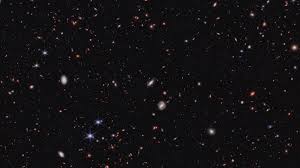
- 09 Dec 2024
In News:
The James Webb Space Telescope (JWST), launched almost three years ago, has provided unprecedented insights into the early universe. Astronomers were surprised to find large, fully-developed galaxies when the universe was only 400-650 million years old, a timeframe previously thought to be too early for such structures.
The Challenge to the Standard Model:
- Cosmological Expectations: According to the standard model of cosmology, the first stars formed around 100-200 million years after the Big Bang, and galaxies began to form within the first billion years.
- Unexpected Findings: JWST observations seemed to show that galaxies were already large and well-formed much earlier than expected, raising questions about the timeline of galaxy formation.
New Study's Contribution:
- The Study: A study published in the Astrophysical Journal in August 2024, examined JWST data from the Cosmic Evolution Early Release Science (CEERS) Survey. They focused on galaxies from 650 to 1,500 million years after the Big Bang.
- Key Findings: One explanation for the unexpected size and number of early galaxies is that these galaxies formed stars much more efficiently than those in the modern universe. This could account for the larger-than-expected galaxies.
The Role of Black Holes:
- Impact of Black Holes: The study also explored the presence of black holes at the centers of early galaxies. These black holes, which emit significant light, were previously unaccounted for in the star mass estimations of galaxies. When the researchers removed the light from black holes (referred to as "little red dots"), they found that the galaxies were not as massive as initially thought.
- Correction to Previous Estimates: This adjustment in calculations helped align the data with the standard model of cosmology, sparing it from a major revision.
Implications for the Standard Model:
- Star Formation Efficiency: The study suggests that extreme conditions in the early universe, including abundant gas and less disruptive stellar events, could explain the higher efficiency of star formation.
- Cosmology's Stability: Despite earlier challenges to the standard model, the new findings support its predictions, showing that more efficient star formation and the role of black holes could explain the rapid growth of galaxies in the early universe.
Future Research Directions:
- Expanding Data Sets: The team plans to incorporate more data from JWST to study even earlier galaxies, which could help refine our understanding of galaxy formation in the early universe.
- Further Observations: As the team continues to explore galaxies from even earlier periods (around 400 million years after the Big Bang), they aim to strengthen their findings and provide further evidence to either support or challenge the current cosmological models.
Moths' Reproductive Choices Based on Plant Acoustic Emissions
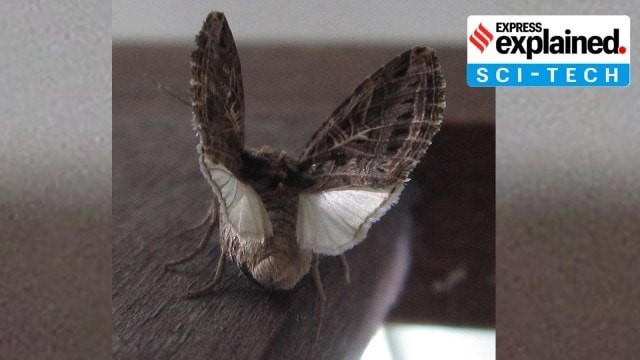
- 09 Dec 2024
In News:
A new study, "Female Moths Incorporate Plant Acoustic Emissions into Their Oviposition Decision-Making Process," published last month, explores how female moths use sounds emitted by plants to choose where to lay their eggs.
Key Highlights:
Significance of Plant Emitted Sounds:
- Background: Last year, it was discovered that plants emit ultrasonic clicks or pops when stressed (e.g., dehydration). These sounds, although inaudible to humans, can be detected by animals, including insects.
- Moths’ Sensitivity: Moths, particularly the Egyptian cotton leafworm, are shown to be sensitive to these plant sounds, which they use as cues for laying eggs on plants.
Methodology:
- Experimental Setup: Researchers placed a hydrated tomato plant in an experimental arena with another hydrated plant that emitted distress sounds. They observed the behavior of female Egyptian cotton leafworms to understand how these sounds influenced their oviposition choices.
- Initial Finding: Moths typically choose healthy, thriving plants to lay eggs, as they provide better food sources for the larvae.
Study Findings:
- Moths’ Response to Sounds: The moths preferred to lay eggs on the “silent” plant rather than the one emitting distress sounds. This indicates that moths can not only detect the presence of a plant but also interpret acoustic signals to inform their egg-laying decisions.
- Implications: This behavior suggests that moths use a complex set of sensory inputs, including plant-emitted sounds, to select the most suitable plant for offspring development.
Broader Ecological Context:
- Moths as Insects: Moths belong to the order Lepidoptera and are found in diverse environments globally, except polar regions. With around 160,000 species, they are highly adapted and often nocturnal, though some species are diurnal.
- Impact on Agriculture: Certain moth species, especially during their caterpillar stage, are major agricultural pests (e.g., corn borers, bollworms), making understanding their behavior crucial for pest management strategies.
- Climate Change Considerations: Moths, like other species, are impacted by climate change, which can alter the timing and growth of plants they depend on, potentially influencing their reproductive strategies.
Conclusion:
- Innovative Findings: The study reveals a previously unknown aspect of moth behavior, showing that they incorporate plant acoustic emissions into their oviposition decisions.
- Future Implications: This discovery opens avenues for further studies on how environmental signals, like sound, affect the behavior of insects, and how these behaviors could be impacted by changing environmental conditions.
RBI's Stance on De-dollarisation and Risk Diversification
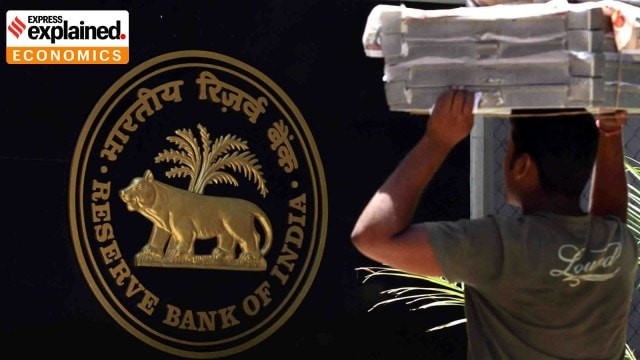
- 09 Dec 2024
In News:
- Governor Shaktikanta Das clarified that India is not pursuing "de-dollarisation," but rather aiming to diversify risk in trade. Measures like local currency trade agreements and Vostro accounts are intended to reduce reliance on the US dollar without eliminating it entirely.
- Objective: The goal is to de-risk India's trade, not to fully replace the dollar, especially amidst rising geopolitical tensions.
Key Highlights:
Vostro Accounts and Local Currency Trade:
- Vostro Accounts: These accounts, held by foreign banks in Indian rupees, facilitate transactions in local currencies, helping mitigate the risks of dollar dependency.
- International Currency Trade: By promoting trade in local currencies, the RBI seeks to reduce exposure to fluctuations in the dollar's value. However, these efforts have faced challenges due to India’s limited international presence in goods and services trade.
Gold Purchases by Central Banks:
- Surge in Gold Purchases: Global central banks, including the RBI, have significantly increased gold holdings. India added 27 tonnes in October 2024 alone, the largest increase among central banks.
- Motivations for Gold: The surge in gold buying reflects growing concerns about geopolitical risks, including the Ukraine war, and the potential for secondary sanctions. Gold is seen as a safe haven asset that diversifies reserves away from the US dollar.
Decline in Dollar Dominance:
- Global Shift: The share of the US dollar in global reserves has been gradually declining, partly due to the rise of the Chinese yuan. Central banks are increasingly turning to gold and alternative currencies as part of a diversification strategy.
- Impact on Emerging Markets: Countries like India are particularly motivated to reduce reliance on the dollar due to geopolitical tensions and economic vulnerabilities linked to the dollar’s dominance.
India’s Domestic Currency Trade Initiatives:
- Trade with Russia and UAE: India is actively exploring trade in domestic currencies with countries like Russia and the UAE to reduce dependence on the dollar. However, these efforts have faced slow uptake due to India’s trade deficit with most countries except the US.
- Challenges in Adoption: Despite efforts to internationalize the rupee, high transaction costs and lack of sufficient demand for rupee-based trade are significant barriers.
BRICS and Shared Currency Discussions:
- Geopolitical Complexity: BRICS nations, due to their geographical and economic diversity, have discussed the possibility of a shared currency, but no consensus has been reached.
- Reluctance Toward Yuan: India has resisted using the Chinese yuan for transactions, particularly for Russian oil imports, despite the yuan’s growing acceptance. This reflects India’s desire to maintain economic sovereignty and avoid over-reliance on a single currency.
Regional Implications of Dollar Volatility:
- Neighbourhood Impact: Countries like Sri Lanka, Bangladesh, Nepal, and Pakistan have experienced significant financial distress due to declining dollar reserves and surging oil prices, exacerbated by the Ukraine war.
- India’s Resilience: India’s strong dollar reserves have helped it maintain economic stability, but the country remains cautious of dollar volatility, particularly as oil prices rise.
Conclusion:
- Strategic Balance: India’s approach reflects a strategic balance of mitigating risks while ensuring global trade stability. The RBI’s emphasis on gold accumulation and pushing for rupee-based trade demonstrates a desire to reduce exposure to the dollar, but challenges like trade deficits and high transaction costs still hinder the full realization of these goals.
- Economic Sovereignty: Through these measures, India seeks to safeguard its economic sovereignty and financial stability in an increasingly unpredictable global economy.
2nd Indian Lighthouse Festival
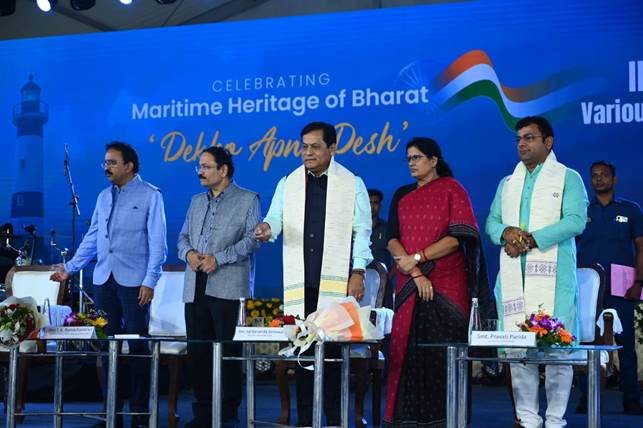
- 20 Oct 2024
In News:
The 2nd Indian Lighthouse Festival was held with the aim of promoting lighthouse tourism and celebrating India’s maritime legacy.
Strategic Importance of the Lighthouse Projects
- The Ministry of Ports, Shipping & Waterways (MoPSW) has invested significantly in developing lighthouses as tourist hubs. The festival marks a concerted effort to integrate tourism with the preservation of these iconic structures.
- Lighthouse tourism has witnessed a remarkable increase of over 400% in visitor numbers since 2014, as part of India's broader vision to promote the blue economy.
-
- From just 4 lakh visitors in 2014, the footfall surged to 16 lakh in 2023-24, with over 9 lakh tourists already in the first half of FY 2024-25.
-
Key Projects and Announcements at the Festival
- New Lighthouses: The announcement of the two new lighthouses at Chaumuck and Dhamra along Odisha’s coastline is significant for enhancing coastal infrastructure and promoting maritime tourism in the state.
- Kalwan Reef Lighthouse: Located in Jamnagar, Gujarat, this lighthouse is part of a broader effort to enhance maritime navigation and heritage conservation along India’s western coastline.
- Development of Coastal Communities: Highlighted the importance of empowering coastal communities, particularly those living around lighthouses, to preserve and promote these structures as national cultural icons. These communities are expected to play a crucial role in lighthouse preservation, as well as in tourism and local economic development.
- Paradip Port Initiatives: Additionally, major infrastructure projects at Paradip Port, such as a stacker-cum-reclaimer and a flyover bridge, were inaugurated to further bolster the port’s capabilities and enhance its role in maritime logistics. The Sagarmala Programme also continues to transform Paradip Port into a mega port with a projected handling capacity of 500 MTPA by 2047.
Economic and Employment Impact
The development of 75 iconic lighthouses across 9 coastal states and one Union Territory is not only aimed at tourism development but also focuses on job creation. As of 2024:
- More than 150 direct jobs and 500 indirect jobs have been created in sectors such as hospitality, transportation, and local crafts, driven by the increasing footfall at these tourist destinations.
- The creation of modern amenities at these lighthouses, such as museums, amphitheaters, and children’s parks, has helped in transforming lighthouses into multifaceted tourism hubs that attract both domestic and international tourists.
Collaborative Efforts for Preservation and Promotion
- Public-Private Partnerships (PPP): Encouraging collaboration between the government, local communities, and private stakeholders to develop and maintain lighthouses as sustainable tourist destinations.
- National Framework: A central association will be created to manage coastal societies surrounding lighthouses, enabling local communities to actively participate in their preservation, protection, and promotion.
- Cultural Integration: The event also underscored the need for integrating cultural heritage with tourism development, using the lighthouses as platforms to showcase local art, cuisine, and history.
COP16 to the Convention on Biological Diversity (CBD)
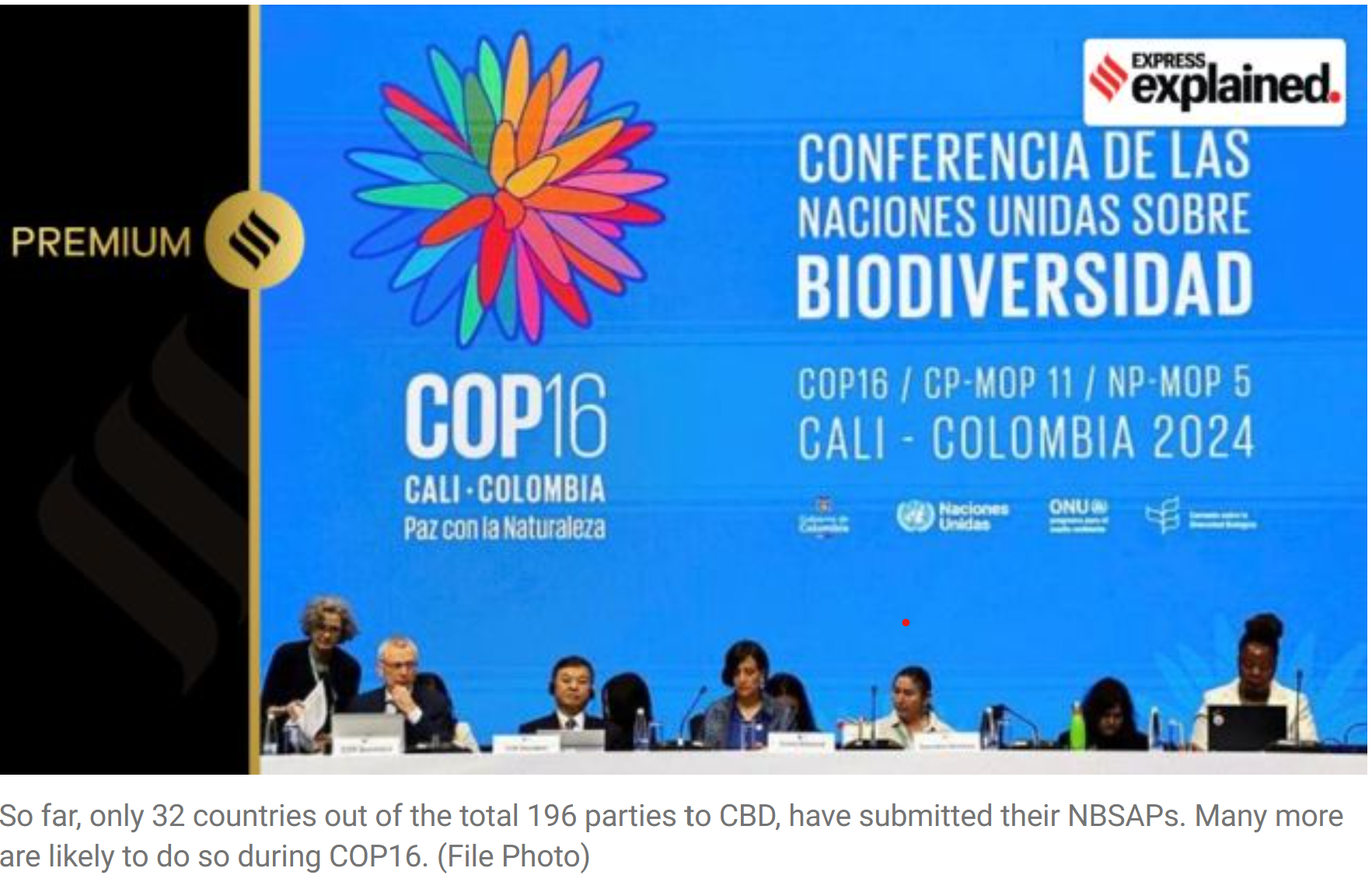
- 20 Oct 2024
In News:
The 16th Conference of the Parties (COP16) to the Convention on Biological Diversity (CBD) will take place in Cali, Colombia, from October 21, 2024. This marks the first gathering since the adoption of the Kunming-Montreal Global Biodiversity Framework (KMGBF) in 2022.
About Convention on Biological Diversity (CBD)
- Adopted in 1992, the CBD is the most comprehensive international treaty focused on biodiversity conservation, the sustainable use of natural resources, and the fair sharing of benefits derived from genetic resources. It has been ratified by 196 countries, making it a key global instrument for biodiversity governance.
Key Objectives of the CBD
- Conservation of Biodiversity: Protecting genetic, species, and ecosystem diversity.
- Sustainable Use of Resources: Ensuring resources are used in a way that does not deplete or degrade biodiversity.
- Fair Sharing of Benefits: Ensuring that benefits from genetic resources are shared equitably with countries of origin.
Notable Frameworks within CBD
- Nagoya Protocol (2010): Establishes a framework for the fair and equitable sharing of benefits from the utilization of genetic resources.
- Cartagena Protocol (2000): Regulates the transboundary movement of living modified organisms (LMOs) resulting from modern biotechnology.
The Kunming-Montreal Global Biodiversity Framework (KMGBF)
- Adoption: The KMGBF was adopted at COP15 in 2022, following the Kunming Declaration.
- Targets: The framework includes 23 targets for 2030 and 4 global goals for 2050, aimed at reversing biodiversity loss and promoting sustainability.
- Notably, the 30x30 Target aims for 30% of the world’s land and oceans to be conserved by 2030. This is a key agenda item at COP16.
- The framework also emphasizes equitable access to genetic resources and the sharing of benefits from their use (Target 13).
Challenges and Issues at COP16
- Benefit-Sharing from Digital Sequence Information (DSI):
- A key issue is the fair sharing of benefits from digital sequence information (DSI) on genetic resources. The adoption of a global mechanism for this issue is still pending, as negotiations between developed and developing countries remain unresolved.
- Developed nations advocate for unrestricted access to genetic materials in exchange for voluntary contributions to a global fund.
- Developing nations seek a more equitable system, aligned with the CBD's principles of fair benefit-sharing.
- A key issue is the fair sharing of benefits from digital sequence information (DSI) on genetic resources. The adoption of a global mechanism for this issue is still pending, as negotiations between developed and developing countries remain unresolved.
- 30x30 Target Progress:
- The 30x30 target, which aims to conserve 30% of land and oceans by 2030, is far from being met:
- 17.5% of land and 8.4% of oceans are currently under protection.
- Concerns persist about the effectiveness of these protected areas, as studies suggest they may not be sufficient for long-term biodiversity conservation.
- The 30x30 target, which aims to conserve 30% of land and oceans by 2030, is far from being met:
- Financial Commitments (Target 19):
- Developed countries have pledged $20 billion annually for biodiversity financing by 2025. However, progress is slow:
- By September 2024, only $8.2 billion (41% of the target) had been committed.
- COP16 will assess whether this target can be met, with further announcements expected.
- Developed countries have pledged $20 billion annually for biodiversity financing by 2025. However, progress is slow:
- Implementation Gaps:
- Countries are required to set national targets aligned with the KMGBF. As of COP16, only 100 parties have submitted their targets, and 30 countries have updated their National Biodiversity Strategies and Action Plans (NBSAPs).
- A significant implementation gap remains in translating these targets into concrete actions.
Focus Areas for COP16
- Strengthening the 30x30 Target:
- COP16 will push for enhanced efforts to meet the 30x30 conservation goal. There is a need for better management and monitoring of protected areas to ensure they contribute to biodiversity preservation.
- Finalizing Benefit-Sharing Mechanism:
- Countries will focus on finalizing the multilateral benefit-sharing mechanism for genetic resources and DSI. The goal is to ensure that countries benefiting from genetic resources share those benefits with the countries of origin, addressing the issue of biopiracy and ensuring equitable access.
- Financial Commitment and Tracking:
- The financial shortfall for biodiversity conservation will be a critical discussion point. Effective monitoring of the biodiversity finance tracker will be needed to ensure that developed countries meet their $20 billion/year commitment.
- Addressing Implementation Gaps:
- There is a need to enhance monitoring and reporting mechanisms, improve national strategies, and align financial support with on-ground conservation efforts.
eShram-One Stop Solution
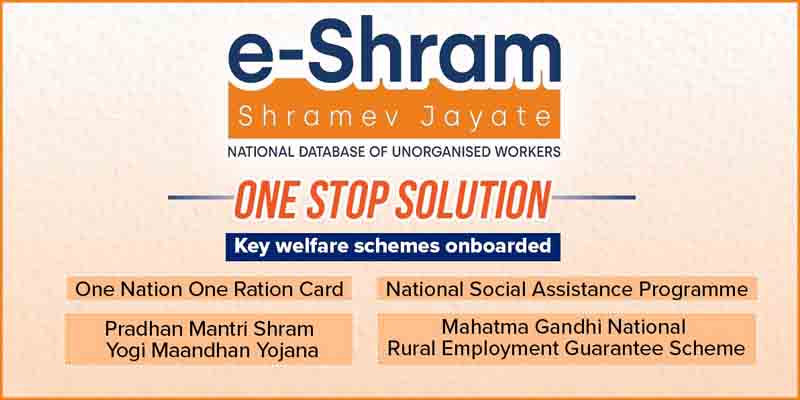
- 20 Oct 2024
In News:
- The ‘eShram-One Stop Solution’ will be launched on 21 October 2024 by the Union Minister of Labour & Employment and Youth Affairs & Sports.
- Objective: To provide easy access to various social security and welfare schemes for unorganized workers in India.
Key Features
- Mediator Platform: The eShram-One Stop Solution will act as an intermediary to facilitate the integration of multiple government schemes for unorganized workers, ensuring efficient access to services and support.
- Information Integration: It will integrate data on beneficiaries across various social security and welfare programs meant for unorganized workers, providing a single point of access.
- Target Group: Aimed at unorganized workers, including daily wage earners, migrants, and others who do not have regular formal employment.
Benefits
- Awareness & Accessibility: The platform will make unorganized workers aware of various government schemes tailored to their needs, helping them access benefits more easily.
- Effective Scheme Implementation: The eShram-One Stop Solution will aid in the identification and implementation of welfare schemes for faster saturation and coverage.
Integration with Existing Schemes
- 12 Integrated Schemes: Currently, 12 social security schemes from different ministries/departments have already been mapped with eShram.
eShram’s Progress So Far
- Launch: eShram was launched on 26 August 2021.
- Achievements: Over 30 crore unorganized workers have been enrolled, highlighting the widespread impact and popularity of the initiative among the target population.
Kala-azar Disease
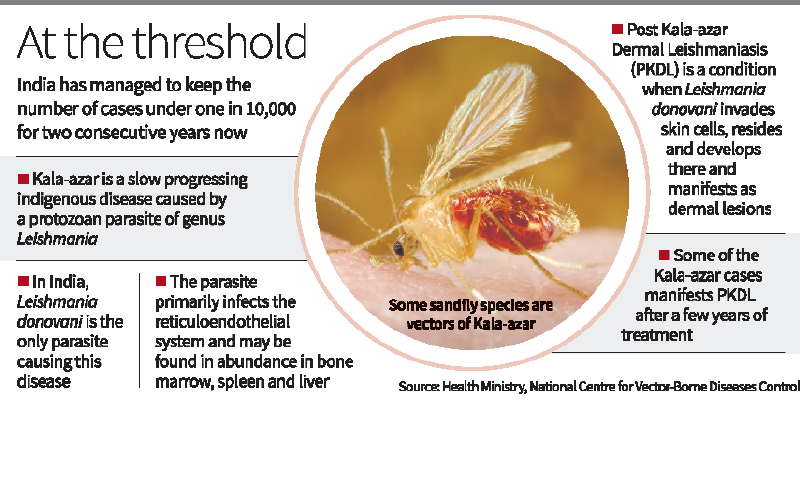
- 20 Oct 2024
In News:
India to seek WHO certification for eliminating disease.
Overview of Kala-Azar (Visceral Leishmaniasis)
- Cause: Kala-azar is caused by the protozoan parasite Leishmania donovani, transmitted by the bite of infected female sandflies (Phlebotomus argentipes in India).
- Symptoms: Includes irregular fevers, weight loss, swelling of the spleen and liver, severe anaemia. If untreated, it is fatal in over 95% of cases.
- Affected Areas: Historically, Bihar, Jharkhand, West Bengal, and parts of Uttar Pradesh report the highest number of cases, with Bihar alone accounting for over 70% of India's cases.
India's Achievement in Kala-Azar Control
- Current Status:
- India has managed to maintain Kala-azar case numbers below 1 per 10,000 population for two consecutive years.
- This meets the WHO's criteria for elimination certification.
- 2023 and 2024 Statistics:
- 2023: 595 cases and 4 deaths.
- 2024 (so far): 339 cases and 1 death.
WHO Certification for Elimination
- WHO's Target: The World Health Organization aims to eliminate Kala-azar as a public health problem by 2030.
- Elimination Criteria: A country can be certified when:
- Local transmission is interrupted for a specified period.
- There is a system in place to prevent re-emergence of the disease.
- Global Context: Bangladesh is the first country to have eliminated Kala-azar, receiving WHO certification in October 2024, after reporting fewer than 1 case per 10,000 people for three consecutive years.
India's Kala-Azar Elimination Strategies
- National Health Policy (2002): Initially set the target to eliminate Kala-azar by 2010, revised multiple times, and is now aiming for 2030.
- Key Strategies:
- Active Case Detection: Identification and treatment of all cases.
- Vector Control: Targeting sandfly breeding grounds through insecticides and environmental management.
- Community Awareness: Educating the public on disease prevention and early diagnosis.
- Improved Surveillance: Ensuring rapid diagnosis and treatment access, including the use of the rK39 diagnostic kit.
- Integrated Vector Management: Combining insecticide spraying with environmental changes to reduce sandfly populations.
Challenges and Areas of Focus
- Root Causes: Persistent issues like poverty, inadequate sanitation, and malnutrition contribute to the spread of Kala-azar, particularly in rural, impoverished areas.
- Long-term Solutions:
- Strengthen vector control and improve sanitation.
- Address socio-economic factors like poverty and displacement.
- Invest in research for vaccines and new treatments.
Public Health Impact and the Way Forward
- Elimination Milestone: If India continues to reduce cases, it will join Bangladesh in eliminating Kala-azar as a public health threat.
- Sustaining Gains:
- Surveillance and quick response to new cases remain critical.
- Expand access to rapid diagnostic tools and effective anti-parasitic treatments.
- Focus on inter-sectoral convergence, integrating efforts from various government sectors, including health, sanitation, and housing.
Naseem-Al-Bahr 2024
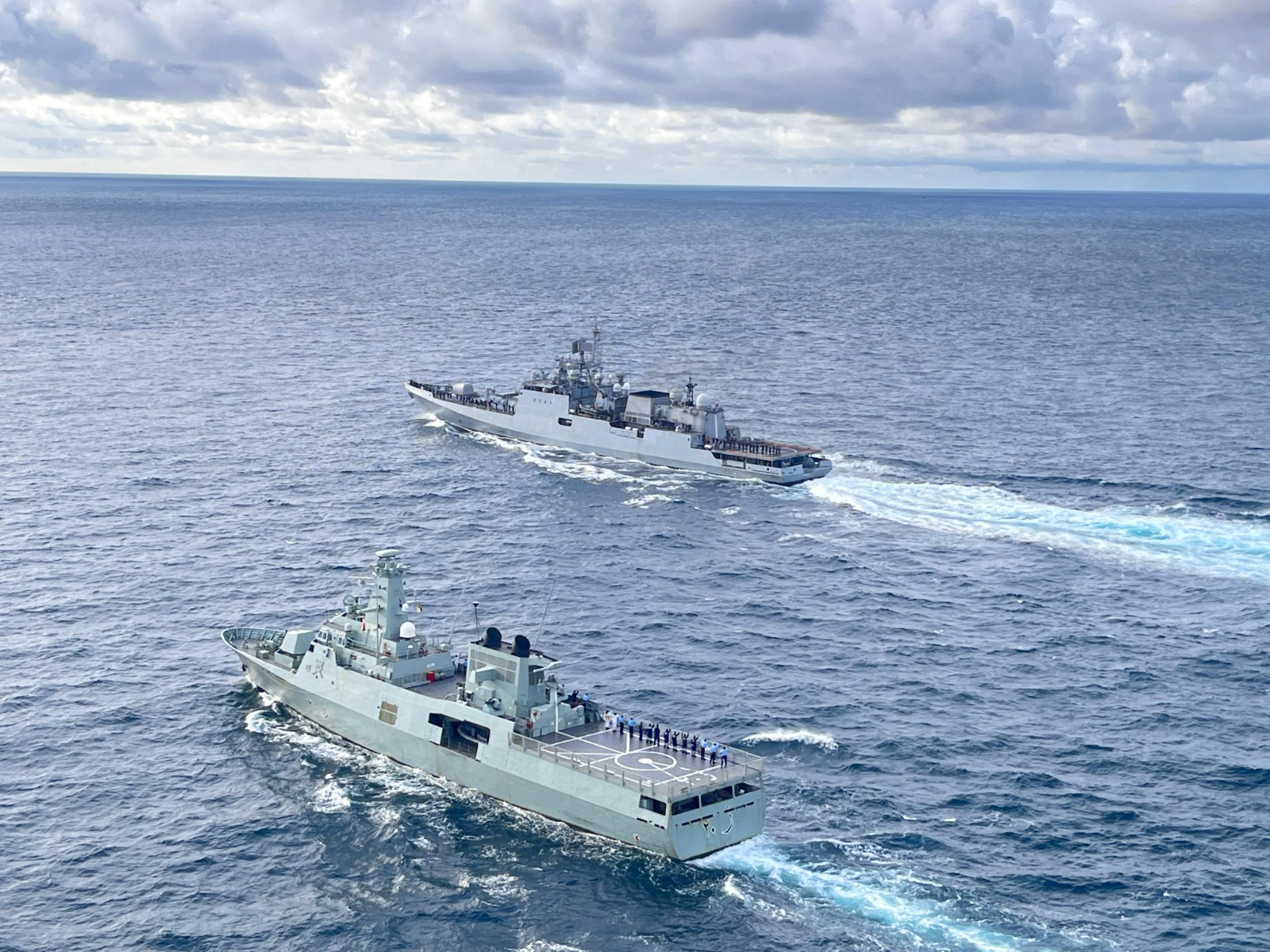
- 20 Oct 2024
In News:
Indo-Oman bilateral naval exercise Naseem-Al-Bahr was held in Goa from October 2024.
Naseem-Al-Bahr Exercise Overview
- Indian and Omani Participants:
- Indian Navy: INS Trikand (warship) and Dornier Maritime Patrol Aircraft.
- Royal Navy of Oman: Vessel Al Seeb.
- Initiation: Launched in 1993, marking a long-standing strategic partnership between India and Oman.
- Structure: The exercise is conducted in two phases:
- Harbour Phase:
- Professional Interactions: Subject Matter Expert Exchanges (SMEE), planning conferences.
- Social & Sports Engagements: Informal activities to foster mutual understanding.
- Sea Phase:
- Naval Operations:
- Gun firings at surface inflatable targets.
- Close-range anti-aircraft firings.
- Replenishment at Sea Approaches (RASAPS).
- Helicopter Operations: INS Trikand’s helicopter performed cross-deck landings and Vertical Replenishment (VERTREP) with RNOV Al Seeb.
- Aircraft Support: Dornier aircraft provided Over-the-Horizon Targeting (OTHT) data to enhance operational coordination.
- Naval Operations:
- Harbour Phase:
Key Highlights of the 2024 Exercise
- Interoperability: The exercise focused on improving operational coordination and enhancing mutual understanding of naval practices.
- Cohesion: The Indian Navy Sea Riders embarked on RNOV Al Seeb to further strengthen the bilateral relationship.
Strategic Significance
- Strengthening Ties: Naseem-Al-Bahr reaffirms the strong strategic relationship between India and Oman.
- Regional Collaboration: This exercise exemplifies India's growing collaboration with like-minded nations in the Indian Ocean Region (IOR).
- Broader Defence Relations:
- Oman is the first GCC country to conduct such bilateral naval exercises with India.
- Both countries also engage in other defence exercises:
- Army: Al Najah.
- Air Force: Eastern Bridge.
Trade Relations Between India and Oman (2022):
- Oil: India is the second-largest market for Oman's crude oil exports, following China.
- Non-oil Exports: India is Oman's fourth-largest market for non-oil exports, after UAE, US, and Saudi Arabia.
- Imports: India is the second-largest source of Oman's imports, following the UAE.
- Ongoing Trade Agreement: Both nations are currently negotiating a trade agreement to further boost bilateral economic cooperation.
Musaned Digital Platform
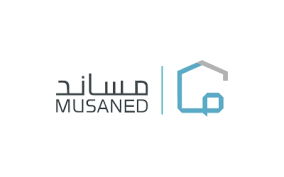
- 19 Oct 2024
In News:
Saudi Arabia Launches Musaned Digital Platform to Ensure Wage Protection for Foreign Workers.
Key Highlights:
- Purpose of Musaned:
- Musaned is a digital platform launched by Saudi Arabia to ensure wage protection and improve working conditions for foreign workers, particularly those in domestic (household) employment.
- The platform aims to safeguard workers' rights, create a stable working environment, and reduce illegal immigration.
- Coverage:
- The platform benefits foreign workers from 10 African countries (including Sudan, Ethiopia, Kenya) and 9 Asian countries (including India, Bangladesh, Pakistan, Vietnam, the Philippines, and Sri Lanka).
- Key Features:
- Employment Contract Access: Workers can check and track their employment contracts and receive updates via the Musaned labour app.
- Financial Transaction Tracking: The platform monitors financial transactions between employers and foreign workers, ensuring employers meet their contractual obligations.
- Integration with Benefits: Musaned can be linked to contract insurance and health benefits, providing additional protection for workers.
- Objectives:
- Wage Protection: Ensures timely and fair wages for foreign workers.
- Human Rights Protection: Promotes human rights by holding employers accountable for fulfilling their obligations.
- Vision 2030 Alignment: Supports Saudi Arabia’s Vision 2030 by improving the work environment and contributing to legal labor migration.
- Impact:
- The platform is expected to help secure workers’ rights, especially for domestic workers, and provide a more transparent, accountable framework for employment relations in the country.
Musaned is a significant step by Saudi Arabia to enhance the security and welfare of foreign workers, aligning with the Kingdom's broader goals of economic reform and social development under Vision 2030. The platform will provide greater transparency, protect workers’ rights, and contribute to a more regulated and sustainable labor market.
National Green Hydrogen Mission

- 19 Oct 2024
In News:
- The Union Government has sanctioned three pilot projects under the National Green Hydrogen Mission to explore the use of green hydrogen in steel production.
- The initiative aims to demonstrate safe and efficient hydrogen-based steelmaking processes, validate their technical feasibility, and evaluate economic viability for low-carbon steel production.
- Objectives of the Scheme:
- Identify and test advanced technologies for utilizing green hydrogen in the steel sector.
- Demonstrate safe and secure operation of hydrogen-based steel production.
- Validate technical and economic feasibility, contributing to decarbonization of iron and steel manufacturing.
- Pilot Project Components:
-
- 100% Hydrogen-based Direct Reduced Iron (DRI) using vertical shaft furnaces.
- Hydrogen use in Blast Furnace to reduce coal/coke consumption.
- Hydrogen injection in vertical shaft-based DRI units.
-
- Sanctioned Pilot Projects:
- Matrix Gas and Renewables Ltd
- Capacity: 50 tons per day (TPD).
- Consortium Partners: Gensol Engineering Ltd, IIT Bhubaneswar, Metsol AB (Sweden).
- Simplex Castings Ltd
- Capacity: 40 TPD.
- Consortium Partners: BSBK Pvt. Ltd., Ten Eight Investment, IIT Bhilai.
- Steel Authority of India Ltd (SAIL)
- Capacity: 3,200 TPD (Ranchi).
- Financial Support:
- Total Government Funding: ?347 crore for the three projects.
- These pilot projects are expected to be commissioned within the next three years and may serve as a blueprint for scaling up such technologies in India.
- About the National Green Hydrogen Mission:
- Launched: January 4, 2023.
- Total Budget: ?19,744 crore (up to FY 2029-30).
- Primary Goal: Establish India as a global hub for green hydrogen production and export while fostering decarbonization in sectors like steel, mobility, and energy.
- Key Features of the Mission:
- SIGHT (Strategic Interventions for Green Hydrogen Transition):
- Supports domestic manufacturing of electrolysers and promotes the production and use of green hydrogen.
- Expected Outcomes by 2030:
- Green Hydrogen Production: At least 5 million metric tons (MMT) annually.
- Renewable Energy: Addition of 125 GW in renewable energy capacity.
- Investment: Over ?8 lakh crore in green hydrogen technologies.
- Employment: Creation of 6 lakh jobs.
- Reduction in Fossil Fuel Imports: Savings of over ?1 lakh crore.
- GHG Emissions Reduction: Avoidance of nearly 50 MMT of annual greenhouse gas emissions.
- SIGHT (Strategic Interventions for Green Hydrogen Transition):
- Phase-wise Implementation:
- Phase I (2022-26): Focus on demand creation and initial deployment in existing hydrogen-using sectors (like steel and mobility).
- Phase II (2026-30): Expansion to new sectors with a push toward commercialization of green hydrogen.
The National Green Hydrogen Mission aims to significantly decarbonize India’s steel sector and other industries by leveraging hydrogen technology. With ?347 crore allocated for pilot projects in steelmaking, the initiative sets the stage for scalable, low-carbon steel production, contributing to India's clean energy transition and supporting its goal to become a global leader in green hydrogen.
Next Generation Missile Vessels (NGMV)

- 19 Oct 2024
In News:
GE’s LM2500 Marine Engines to Power Indian Navy’s Next Generation Missile Vessels (NGMV)
Key Highlights:
- Engine Selection:
- General Electric’s LM2500 marine gas turbines have been chosen to power the Indian Navy's Next Generation Missile Vessels (NGMV), currently being built by Cochin Shipyard Limited (CSL).
- Project Details:
- Number of Vessels: Six NGMVs are under construction.
- Contract Value: ?9,805 crore, awarded by the Defence Ministry.
- Delivery Schedule: The first deliveries are expected to commence in March 2027.
- Key Components and Suppliers:
- GE Aerospace will deliver six LM2500 engine kits to Hindustan Aeronautics Limited (HAL) for assembly and testing at their Industrial and Marine Gas Turbine Division in Bengaluru.
- GE will also supply the composite base, enclosure, and a full set of auxiliary systems for the gas turbines.
- LM2500 Marine Gas Turbine:
- The LM2500 turbine is known for its reliability and high power output, making it ideal for the NGMV mission.
- Top Speed: 35 knots (64 km/h).
- It is central to the propulsion system, meeting the stealth and power demands of the new missile vessels.
- Capabilities of NGMVs:
- Role: Designed for offensive missions, the NGMVs will be equipped for anti-surface warfare, maritime strike operations, and sea denial.
- Speed & Stealth: Capable of speeds up to 35 knots while maintaining stealth, these vessels will be difficult for enemy ships to detect.
- Weapons: They will carry a variety of anti-surface weapons, including the BrahMos supersonic cruise missile, loitering munitions, unmanned vehicles, and other guided weapons.
- Operational Roles:
- Offensive: The NGMVs will engage in attacking enemy warships, merchant ships, and land-based targets.
- Defensive: They will also be used for local naval defense operations, including the seaward defense of offshore development areas and defending choke points.
- Strategic Importance:
- The NGMVs will significantly enhance India’s maritime strike capability and provide a formidable presence in strategic sea routes, especially in regions like choke points and offshore development areas.
- Cochin Shipyard’s Role:
- After successfully constructing INS Vikrant, India’s first indigenous aircraft carrier, CSL is now focusing on the NGMV project, along with building anti-submarine warfare shallow water crafts for the Indian Navy, currently in various stages of construction.
- Partnerships:
- In 2023, GE Aerospace and HAL signed a Memorandum of Understanding (MoU) to expand their collaboration on marine gas turbines, including assembly, inspection, and testing (AIT) of the LM500 turbines.
- To date, GE Aerospace has delivered 24 marine gas turbine kits to HAL, supporting India’s Make-In-India initiative.
- Global Impact:
- The LM2500 gas turbine is used by 714 vessels globally, reinforcing its reputation for reliability and availability in critical maritime defense systems.
First Chief Minister of J&K UT Takes Charge

- 19 Oct 2024
In News:
Omar Abdullah sworn in as J&K CM; Surinder Kumar Choudhary is Deputy CM
Key Highlights:
- Omar Abdullah’s Political Context:
- This marks Omar Abdullah's second term as Chief Minister, after his tenure in 2009.
- He becomes the first Chief Minister of Jammu and Kashmir after the region’s special status was revoked and it was reorganized as a Union Territory in 2019.
- Challenges as CM of a Union Territory:
- Omar Abdullah acknowledged the unique challenges of serving as Chief Minister in a Union Territory and expressed hope that J&K’s Union Territory status would be temporary.
- Public Service and Security Measures:
- In his first official instructions, Abdullah asked the Director General of Police (DGP) to avoid creating “green corridors” or traffic halts during his movements. He also requested the minimization of sirens and aggressive security gestures, emphasizing minimal public inconvenience.
- Legal Context:
- Oath of Office: As per Article 164(3) of the Indian Constitution, the Chief Minister and other ministers are sworn in by the Governor or Lieutenant Governor in Union Territories.
- Abdullah is the first CM of the Union Territory of Jammu and Kashmir post the abrogation of Article 370 and the transition of J&K from a state to a Union Territory in 2019.
- Revocation of President's Rule:
- President’s Rule (under Article 356) was revoked following the election results, signaling the restoration of a functioning elected government after direct central governance in the region.
Karmayogi Saptah – National Learning Week
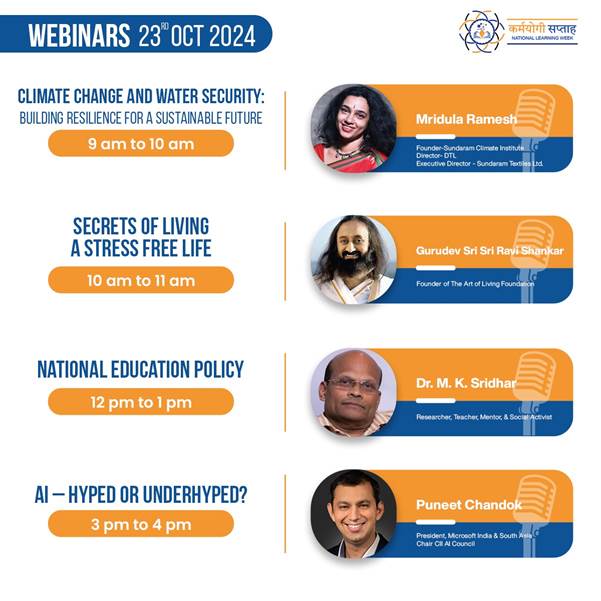
- 19 Oct 2024
In News:
Prime Minister Narendra Modi launched the ‘Karmayogi Saptah’ - National Learning Week on 19th October at Dr. Ambedkar International Centre, New Delhi.
Key Highlights:
- Context:
- The National Learning Week is a key event in the ongoing Mission Karmayogi initiative, aimed at building a civil service rooted in Indian ethos with a global outlook.
- Objective:
- To promote capacity building for civil servants through competency-linked learning.
- To align civil servants with national goals and foster a "One Government" approach.
- About National Learning Week (NLW):
- Largest learning event for civil servants, focused on individual and organizational growth.
- Encourages lifelong learning and continuous professional development.
- Provides fresh impetus to the Mission Karmayogi initiative, launched in September 2020, aimed at a future-ready, citizen-centric civil service.
- Learning Targets for Karmayogis:
- Each civil servant (Karmayogi) must complete at least 4 hours of competency-linked learning during the week.
- Learning opportunities include:
- Role-based modules on iGOT (Integrated Government Online Training platform).
- Webinars, public lectures, and policy masterclasses by prominent experts.
- Focus on improving skills for citizen-centric service delivery.
- Workshops & Seminars:
- Ministries, departments, and organizations organized domain-specific workshops and seminars.
- The goal is to enhance skills and knowledge, fostering better public service delivery.
- Outcomes:
- Strengthened alignment of civil servants with national priorities and goals.
- Enhanced individual competencies to better address citizen needs.
- A stronger commitment to continuous learning within the civil service.
Indian Development and Economic Assistance Scheme (IDEAS)
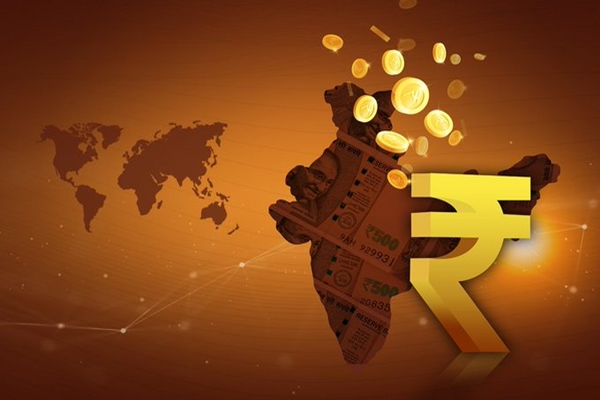
- 18 Oct 2024
In News:
- India has extended a ?487.60 crore Line of Credit (LoC) to Mauritius for financing a water pipeline replacement project.
- This initiative is part of the Indian Development and Economic Assistance Scheme (IDEAS), which supports developmental projects in partner countries through concessional loans.
About the IDEAS Scheme
- Origin: Launched in 2003-04 as the India Development Initiative, later renamed as IDEAS Scheme.
- Objective: To promote India’s political, economic, and strategic interests by providing developmental assistance to developing countries.
- Administering Body: The scheme is managed by the Ministry of External Affairs (MEA) with support from the Exim Bank.
Key Features of the IDEAS Scheme
- Lines of Credit (LoCs):
- Provides LoCs to developing countries for funding projects in various sectors, including:
- Infrastructure
- Water supply
- Education
- Other key developmental areas.
- Provides LoCs to developing countries for funding projects in various sectors, including:
- Project Recommendations:
- Projects funded under the scheme are recommended by MEA and are aimed at bolstering socio-economic development in the partner countries.
- Concessional Financing:
- The scheme offers concessional terms for the financing of these projects, reducing the financial burden on the recipient countries.
- Diplomatic and Strategic Benefits:
- The IDEAS scheme strengthens India’s diplomatic ties and fosters goodwill with countries in the Global South.
- Focus on Development:
- It aims to support key developmental goals in partner countries while advancing India's role as a leader in global development cooperation.
Significance
- The Mauritius water pipeline project is a part of the larger efforts under IDEAS to support infrastructure and socio-economic development in partner nations, helping to improve the quality of life and fostering closer bilateral relations.
Scam se Bacho Campaign
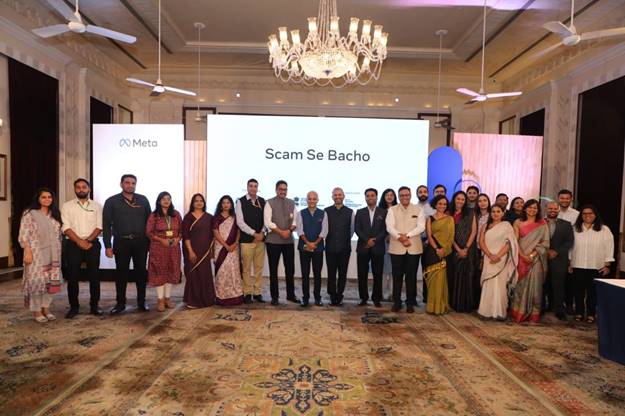
- 18 Oct 2024
In News:
Government and Meta join forces for "Scam se Bacho" Campaign to tackle rising online scams.
Key Details
- The "Scam Se Bacho" initiative aims to create a safer, more secure digital India by empowering users to protect themselves against growing cyber threats, contributing to the resilience of India’s digital progress.
- Objective: To combat rising online scams and cyber frauds by promoting digital safety and vigilance across India.
- Partners:
- Meta (formerly Facebook)
- Ministry of Electronics and Information Technology (MeitY)
- Ministry of Home Affairs (MHA)
- Ministry of Information and Broadcasting (MIB)
- Indian Cyber Crime Coordination Centre (I4C)
Purpose and Vision
- Goal: Empower Indian citizens with the knowledge and tools to protect themselves from online scams and cyber threats.
- Strategic Focus:
- Foster a culture of digital safety and vigilance.
- Align with the Digital India initiative, which has seen extraordinary growth in digital services, including 900 million internet users and leadership in UPI transactions.
- The campaign aims to build a national movement to safeguard citizens, emphasizing the importance of cyber literacy and digital security.
Key Points
- Growing Cybersecurity Threats:
- India has seen a surge in cyber frauds, with 1.1 million cases reported in 2023.
- The government is committed to addressing these threats through stronger cybersecurity measures and enhancing digital literacy.
- Meta’s Role:
- Meta’s global expertise in online safety will be leveraged to equip citizens with the knowledge to prevent cyber scams.
- Meta’s collaboration with the government aims to extend the reach of the campaign nationwide.
Features of the "Scam Se Bacho" Campaign
- Nationwide Reach:
- The initiative targets India’s 900 million internet users, making it a comprehensive national effort.
- Government Support:
- Backed by key ministries to ensure alignment with national digital and cybersecurity goals under Digital India.
- Whole-of-government approach to raise awareness on cyber safety.
- Educational Focus:
- The campaign emphasizes educating citizens on how to recognize and prevent online scams and threats.
Justice Sanjiv Khanna Appointed as Next Chief Justice of India
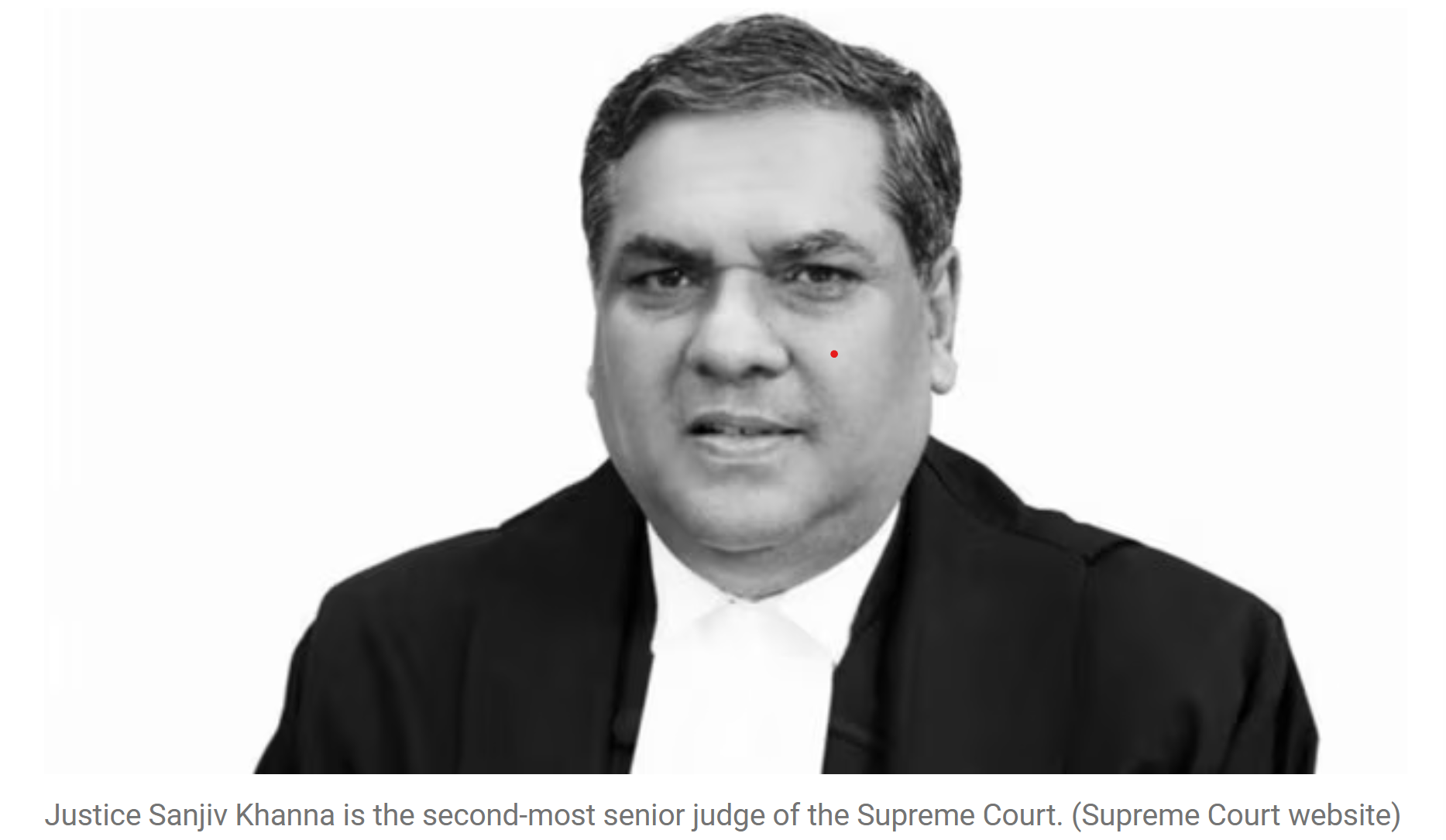
- 18 Oct 2024
In News:
Justice Sanjiv Khanna Appointed as Next Chief Justice of India, Will Assume Office on November 11
- Appointment:
- Justice Sanjiv Khanna has been appointed as the 51st Chief Justice of India by President Droupadi Murmu.
- He is set to take office on November 11, 2024, succeeding Chief Justice D.Y. Chandrachud, who is retiring on November 10, 2024.
- Tenure:
- Justice Khanna's tenure will be relatively short, lasting only six months, as he is scheduled to retire on March 13, 2025.
Career and Background
- Education and Early Career:
- Justice Khanna is a graduate of Delhi University’s Campus Law Centre.
- He enrolled as an advocate in 1983 and primarily practiced before the Delhi High Court.
- Prior to his elevation to the Delhi High Court in 2005, he served as the Senior Standing Counsel for the Income Tax Department and the standing counsel for civil matters for the Delhi government.
- Judicial Career:
- Supreme Court Appointment: Justice Khanna was appointed to the Supreme Court in January 2019, despite not having served as Chief Justice of a High Court. He was elevated over other senior judges from the Delhi High Court, such as Justices Rajendra Menon and Pradeep Nandrajog, whose names were initially recommended but not forwarded to the government.
- Key Contributions:
- Justice Khanna has been part of several significant rulings, including:
- February 2024: Part of the five-judge bench that struck down the Electoral Bond Scheme as unconstitutional.
- 2023: Contributed to upholding the abrogation of Article 370 of the Constitution.
- 2023: Authored a ruling granting the Supreme Court the power to directly grant divorce under Article 142 on the grounds of "irretrievable breakdown of marriage."
- Justice Khanna has been part of several significant rulings, including:
- Administrative Role:
- Justice Khanna currently serves as the Executive Chairman of the National Legal Services Authority (NALSA).
Process of Appointment of Chief Justice of India (CJI)
- Seniority Principle: The CJI is typically the senior-most judge of the Supreme Court.
- Memorandum of Procedure (MoP): The Law Ministry requests a recommendation from the outgoing CJI for his successor.
- Presidential Appointment: After receiving the recommendation, the President of India formally appoints the new CJI.
- Tenure and Retirement: The CJI serves until the age of 65. Upon retirement, the senior-most judge becomes the next CJI.
- Merit and Integrity Considerations: In addition to seniority, merit and integrity play crucial roles in the selection process for the CJI.
Hand-in-Hand Investment Forum
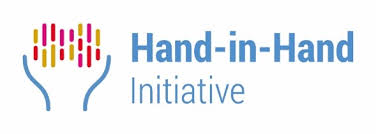
- 18 Oct 2024
In News:
Recently, the Director-General of the Food and Agriculture Organization (FAO) inaugurated the third Hand-in-Hand Investment Forum.
Purpose and Goals
- Objective: To accelerate the transformation of agrifood systems to address global challenges:
- Eradicate poverty (SDG 1)
- End hunger and malnutrition (SDG 2)
- Reduce inequalities (SDG 10)
- Target: Focuses on improving the lives of poor and vulnerable populations by:
- Raising incomes
- Enhancing nutritional status and overall well-being
- Strengthening resilience to climate change
Key Features of the HIH Initiative
- Launched: 2019 as a flagship program by the Food and Agriculture Organization (FAO).
- Primary Focus Areas:
- Geospatial and analytics-driven approach: Utilizes advanced geospatial modeling, biophysical, socio-economic data, and analytics to identify key territories for intervention.
- Market-based transformation: Aims to create sustainable, market-based solutions for agricultural development and food systems transformation.
- Value Chain Development: Focus on developing value chains for priority commodities to boost incomes and food security.
- Agro-Industry Building: Strengthening agro-industries and introducing efficient water management and precision agriculture systems.
- Digitalization: Introducing digital services for better agricultural planning and productivity.
Key Areas of Intervention
- Agricultural Transformation: Identifying territories with the highest potential for transformation.
- Sustainable Management: Focus on sustainable practices in forestry, fisheries, and land management.
- Climate Resilience: Building systems to mitigate the effects of climate change and reduce vulnerability.
- Food Loss Reduction: Addressing food losses and waste across agricultural value chains.
Global Participation
- Member Countries: 72 countries have joined the initiative, collaborating on shared goals for agrifood systems transformation.
The Hand-in-Hand Investment Forum
- Purpose: A platform to mobilize investments for the successful implementation of agrifood transformation programs under the HIH initiative.
- Event: The third Hand-in-Hand Investment Forum was recently opened by the FAO Director-General to discuss challenges and solutions for global agrifood system transformation.
About the Food and Agriculture Organization (FAO)
- Established: October 1945, it is the oldest permanent specialized agency of the United Nations.
- Mandate:
- Improve nutrition.
- Increase agricultural productivity.
- Raise the standard of living in rural areas.
- Contribute to global economic growth.
- Headquarters: Rome, Italy.
- Members: 194 Member States and the European Union.
Key Role of FAO:
- FAO leads international efforts to combat hunger and malnutrition worldwide.
- Supports member countries in implementing agricultural and food security programs.
Strategic Importance
- The Hand-in-Hand Initiative is integral to FAO’s mandate, focusing on countries with the most pressing needs due to poverty, hunger, or crises (natural or man-made).
- It enhances cooperation among nations to tackle global food security challenges, with a particular emphasis on countries with limited national capacities.
Strengthening Teaching-Learning and Results for States (STARS)
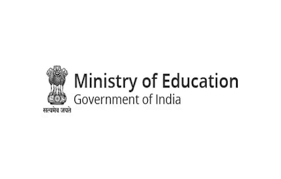
- 18 Oct 2024
In News:
The Department of School Education & Literacy (DoSE&L), Ministry of Education, hosted a two-day Strengthening Teaching-Learning and Results for States (STARS) knowledge sharing workshop in Bhopal, Madhya Pradesh.
- Event Overview:
- Two-day workshop hosted by the Department of School Education & Literacy (DoSE&L), Ministry of Education.
- Focus areas: School-to-Work Transition and Strengthening the Assessment System.
- Key Objectives:
- To enhance school-to-work transitions.
- To discuss strengthening educational assessment systems.
- Align education with future workforce needs as per the National Education Policy 2020.
Day 1: School-to-Work Transition
Panel Discussions:
- Policy Frameworks:
- Role of National Education Policy 2020, National Curriculum Framework (NCF), and National Credit Framework (NCrF) in school-to-work transitions.
- Focus on integrating skill education into school curricula, fostering multidisciplinary learning, and continuous evaluation to meet industry standards.
- Emphasis on internships, apprenticeships, and flexible learning pathways.
- Curriculum Integration:
- Need for integrated efforts across departments and aligning curriculum with industry demands.
- Focus on strengthening 21st-century skills in CBSE schools.
- Career Counselling and Psychometric Analysis:
- Focus on using psychometric assessments for career counselling and preparing students for future work environments.
- Work-Based Learning:
- Discussed partnerships with industry for work-based learning.
- Effective collaborations between schools and industry for internships, placements, and best practices.
Day 2: Strengthening Assessment System
- Psychometric Analysis & Career Counselling:
- Smt. Idzes Angmo Kundan (Principal Secretary, Maharashtra) presented the 3 P approach to career choices: Personal Interest, Parental Approach, and Possible Opportunities.
- Enhancing Student Outcomes:
- Discussed improving student outcomes by strengthening assessment systems.
- Shared innovations in educational assessments.
- Highlighted innovative assessment practices for future education.
- VSK Implementation (Chhattisgarh):
- Discussed VSK modes, data analysis, and strategies for integrating assessment outcomes with learning objectives.
- Strengthening Assessment Cells:
- Advocated for the establishment of assessment cells.
- Discussed best practices and challenges in strengthening assessment cells across states.
World Energy Outlook 2024
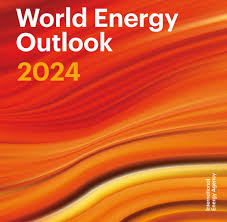
- 17 Oct 2024
In News:
The International Energy Agency's (IEA) World Energy Outlook 2024 offers an in-depth analysis of global energy trends, emphasizing the shift towards clean energy, growing energy demand, and the effects of geopolitical conflicts.
Key Highlights:
- Economic Growth:
- India was the fastest-growing major economy in 2023 with a 7.8% growth rate.
- On track to become the world’s third-largest economy by 2028.
- Surpassed China in 2023 to become the most populous country globally, despite a fertility rate below replacement level.
- Energy Demand Surge:
- India is projected to experience the highest increase in energy demand over the next decade.
- By 2035, India’s total energy demand is expected to rise by 35%, driven by rapid industrialization, urbanization, and increased living standards.
- Urbanization and Infrastructure Growth:
- Over 12,000 cars are expected to be added to Indian roads daily by 2035.
- Built-up space is set to increase by over 1 billion square meters annually, surpassing the total built space of South Africa.
- Industrial Expansion:
- Iron and steel production is expected to grow by 70% by 2035.
- Cement output is set to increase by 55%.
- Air conditioner stock to grow more than 4.5 times, with electricity demand from cooling expected to exceed Mexico’s total consumption in 2035.
- Energy Supply & Coal:
- India’s electricity generation capacity is projected to nearly triple to 1,400 GW by 2035.
- Coal remains a dominant energy source despite growth in renewables:
- Coal-fired power capacity will increase by 60 GW by 2030.
- Coal will continue to account for over 30% of electricity generation even as solar PV expands.
- By 2035, coal use in industries like steel and cement will grow by 50%.
- Renewable Energy & Clean Tech:
- India is on track to become a global leader in renewable energy, with a nearly 3x increase in electricity generation capacity.
- The country is expected to have the world’s third-largest installed battery storage capacity by 2030.
- By 2030, low-emission energy sources (solar, wind, nuclear) are expected to generate over 50% of India’s electricity.
- Electric Vehicles & Oil Demand:
- The rapid adoption of electric vehicles (EVs) is expected to peak India’s oil demand by the 2030s, reducing reliance on oil for transportation.
- Oil demand for transport will decline as EVs proliferate, though demand for oil in other sectors (e.g., petrochemicals) will continue.
- Net Zero Target:
- India aims to achieve net-zero emissions by 2070.
- By 2035, clean energy generation could be 20% higher than current policy projections, thanks to electric mobility, hydrogen use, and improved energy efficiency.
- CO2 emissions are projected to be 25% lower than under the Stated Policies Scenario (STEPS).
- Policy Support:
- India’s clean energy goals are backed by government initiatives, such as:
- PM-KUSUM scheme for solar energy in agriculture.
- National Solar Mission.
- Production Linked Incentive (PLI) Scheme to boost domestic solar PV manufacturing.
- India’s clean energy goals are backed by government initiatives, such as:
- Global Energy Trends:
- Geopolitical Risks: Global energy security remains affected by geopolitical tensions (e.g., Russia-Ukraine conflict, Middle East tensions).
- Energy Transition: Global shift toward clean energy, with solar and wind power investments accelerating.
- Oil & Gas Surplus: Oil and LNG supply expected to increase, putting downward pressure on prices by the late 2020s.
- Electric Mobility: EVs projected to account for 50% of new car sales by 2030.
- Energy Efficiency: Despite efforts, global targets for doubling energy efficiency by 2030 are unlikely to be met with current policies.
IEA Overview:
- The International Energy Agency (IEA) provides analysis and policy advice on energy security, economic development, and environmental sustainability.
- Established in 1974, it now includes 31 member countries and 13 association countries, including India.
- Major publications: World Energy Outlook, India Energy Outlook, World Energy Investment Report.
India’s Semiconductor Market Projected to Surpass $100 Billion by 2030
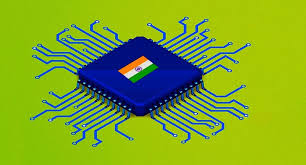
- 17 Oct 2024
In News:
India's semiconductor market is poised to exceed $100 billion by 2030, according to a report from the India Electronics and Semiconductor Association and Counterpoint Research. Currently valued at $45 billion in 2023, the market is projected to grow at an annual rate of 13%, driven by demand in mobile handsets and IT sectors, which together account for over 75% of revenues.
Key Highlights:
- Growth Drivers: The growth is supported by strong demand for electronics and government initiatives like the production-linked incentive scheme. Semiconductors are essential for various industries, including electronics, defense, healthcare, and automotive.
- Importance of Semiconductors: These materials, which include silicon and germanium, are crucial for electronic devices. They can conduct electricity under certain conditions, making them fundamental in transistors, integrated circuits, and devices like LEDs and solar cells.
- Global Context: The global semiconductor supply chain has shown vulnerabilities, particularly during the chip shortage of 2021. Major producers include Taiwan (44% market share), China (28%), South Korea (12%), the U.S. (6%), and Japan (2%). Countries are now focusing on building domestic chip industries to reduce dependency on a few key suppliers.
Factors Favoring India's Growth in Semiconductors:
- Skilled Workforce: India has a vast pool of STEM graduates, providing a skilled workforce for semiconductor manufacturing and design.
- Cost Advantage: Lower labor costs and efficient supply chains position India favorably for semiconductor manufacturing.
- Supply Chain Diversification: India is becoming a hub for back-end assembly and testing operations, with potential for front-end manufacturing.
- Government Support: Initiatives like Semicon India and the India Semiconductor Mission aim to create a robust semiconductor ecosystem, offering substantial fiscal incentives for companies.
Government Initiatives:
- Semiconductor Fab Scheme: Provides 50% project cost support for semiconductor manufacturing.
- Display Fab Scheme: Offers similar support for display manufacturing.
- Chips to Startup (C2S) Programme: Trains 85,000 engineers across academic and R&D institutions.
- Recent approvals for the establishment of semiconductor plants in Gujarat and Assam further bolster this initiative.
Nobel Prize for Economics 2024

- 17 Oct 2024
In News:
The winners of this year’s Economics Nobel, or the Sveriges Riksbank Prize awarded for economic sciences, Daron Acemoglu, Simon Johnson and James Robinson (AJR), pioneers in new institutional economics, emphasised the role of institutions in the direction of development.
The Great Divergence
- Definition: Refers to the economic and political development gap between the West and East, particularly during the 17th and 18th centuries.
- Key Factors:
- Industrialization in Western Europe enabled the projection of political power globally.
- Colonial institutions established during this period have long-lasting effects on post-colonial nations.
Role of Institutions in Development
- Nobel Prize Winners: Daron Acemoglu, Simon Johnson, and James Robinson (AJR) awarded for their work in new institutional economics.
- Institutions Defined: Set of rules constraining human behavior, ensuring law and order, and preventing coercion.
- Types of Institutions:
- Extractive Institutions: Concentrate wealth among elites, historically prevalent in colonized regions (e.g., Sub-Saharan Africa, Latin America).
- Inclusive Institutions: Promote broader participation in economic growth, more common in countries like the U.S., Canada, and Australia.
Research Contributions
- Natural Experiments: AJR used historical data to show how differing colonial practices influenced economic outcomes.
- Key Findings:
- Areas with landlord-based colonial systems had lower agricultural investment and productivity.
- Regions under direct colonial rule lagged in infrastructure like schools and health centers.
Implications of AJR's Work
- Economic Institutions: Reflect collective choices shaped by political power, which can be either de jure (formal) or de facto (informal).
- Challenges in Reform: Conflicting interests often hinder agreement on the nature of beneficial institutions.
Critical Perspectives
- Skepticism of AJR's Framework: Some scholars argue that AJR's emphasis on Western liberal institutions overlooks the complexities of historical contexts, including corruption and systemic inequalities in early U.S. history.
- Modern Economic Dynamics: AJR caution against assuming that inclusive institutions will automatically lead to prosperity, as evidenced by concerns regarding China's future growth under extractive political systems.
Insights from Nobel Prize Research
- Key Focus Areas:
- Institutional structures in colonized countries significantly shape economic prosperity.
- Example of Nogales, Arizona, and Nogales, Mexico illustrates the impact of institutions on economic opportunities.
About the Nobel Prize Recipients
- Daron Acemoglu:
- MIT professor and co-author of influential works on power and prosperity.
- Advocates for democracy's role in economic growth while acknowledging its challenges.
- Simon Johnson:
- Former IMF chief economist, current MIT professor.
- Emphasizes the complexity of addressing entrenched poverty due to institutional frameworks.
- James A. Robinson:
- University of Chicago professor, co-author of works on economic disparity.
- Highlights historical transitions toward inclusive societies and their importance in economic development.
Nobel Prize in Economic Sciences
- Established: 1968 by the Swedish central bank.
- Purpose: Complement existing Nobel Prizes, recognizing contributions to economic sciences.
- Notable Previous Laureates: Include Claudia Goldin (2023) for gender pay gap research and Abhijit Banerjee et al. (2019) for poverty alleviation studies.
SAMARTH Scheme
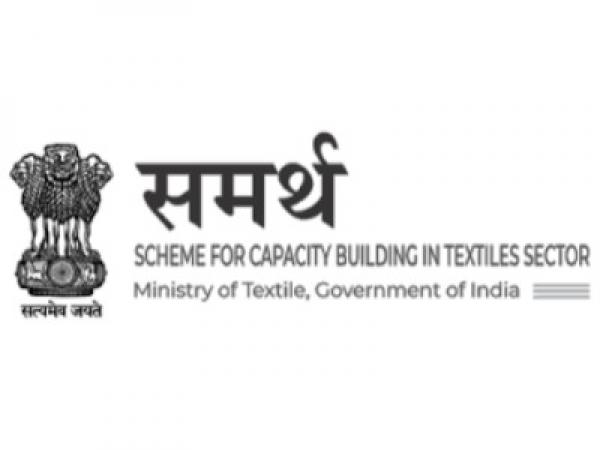
- 17 Oct 2024
In News:
Samarth is a demand-driven and placement-oriented umbrella skilling program of the Ministry of Textiles. Samarth Scheme has been extended for two years (FY 2024-25 and 2025-26) with a budget of Rs. 495 Crore to train 3 lakh persons in textile-related skills.
Key Details:
- Scheme Name: Samarth (Scheme for Capacity Building in Textile Sector)
- Nodal Ministry: Ministry of Textiles
- Extension Period: FY 2024-25 and 2025-26
- Budget: ?495 Crores
- Target: Train 3 lakh individuals in textile-related skills
Objectives
- Skilling Programs: Provide demand-driven, placement-oriented training.
- Industry Support: Encourage job creation in organized textile and related sectors.
- Skill Enhancement: Focus on upskilling and reskilling in traditional sectors (handloom, handicraft, silk, jute).
Implementation
- Implementing Partners:
- Textile Industry/Industry Associations
- Central/State government agencies
- Sectoral Organizations (e.g., DC/Handloom, Central Silk Board)
- Current Achievements:
- Total Trained: 3.27 lakh candidates
- Employment Rate: 2.6 lakh (79.5%) have secured jobs
- Women Empowerment: 2.89 lakh (88.3%) women trained
Scheme Features
- Coverage: Entire textile value chain, excluding spinning and weaving.
- Training Focus:
- Entry-level skilling
- Upskilling/reskilling existing workers in apparel and garmenting
- Beneficiaries: Handicraft artisans and job seekers in the textile sector.
Background
- Cabinet Approval: The scheme is a continuation of the Integrated Skill Development Scheme from the 12th Five Year Plan.
- Implementation Agency: Office of the Development Commissioner (Handicrafts).
Advancements of Research & Global Opportunities for Holistic Ayurveda - AROHA-2024

- 17 Oct 2024
In News:
All India Institute of Ayurveda, New Delhi is organising its first-ever international conference - Advancements of Research & Global Opportunities for Holistic Ayurveda - AROHA-2024.
Key Details:
- Theme: "Advancements in Research & Global Opportunities for Holistic Ayurveda"
- Conference Goals
- Position Ayurveda as a key pillar of global health and wellness.
- Facilitate dynamic exchanges among scholars, industry leaders, and practitioners.
- Explore the integration of traditional Ayurvedic wisdom with modern scientific advancements.
- Agenda Highlights
- Topics Covered:
- Ayurveda and ethnomedicine
- Quality control and standardization
- Diagnosis and drug delivery
- Evidence-based understanding and globalization
- Topics Covered:
- Institute Background
- All India Institute of Ayurveda (AIIA): Apex institute for Ayurveda with NAAC A++, NABH, and ISO accreditations.
- Facilities: 200-bed referral hospital, 44 specialty departments.
- Global Collaborations: Partnerships with institutions in 17 countries, including London School of Hygiene and Tropical Medicine and Western Sydney University.
- Innovations: Focus on research, drug development, and scientific validation of Ayurvedic practices.
- Participant Benefits
- Networking Opportunities: Engage with experts in Ayurveda and holistic healthcare.
- Learning Experiences: Attend plenary sessions, round table discussions, and exhibitions on medicinal plants and startups in Ayurveda.
- Recognition: Awards for contributions to Ayurveda.
- Research and Innovation Focus: Discussions on technology integration, including AI and bioinformatics.
DigiLocker Partners with UMANG
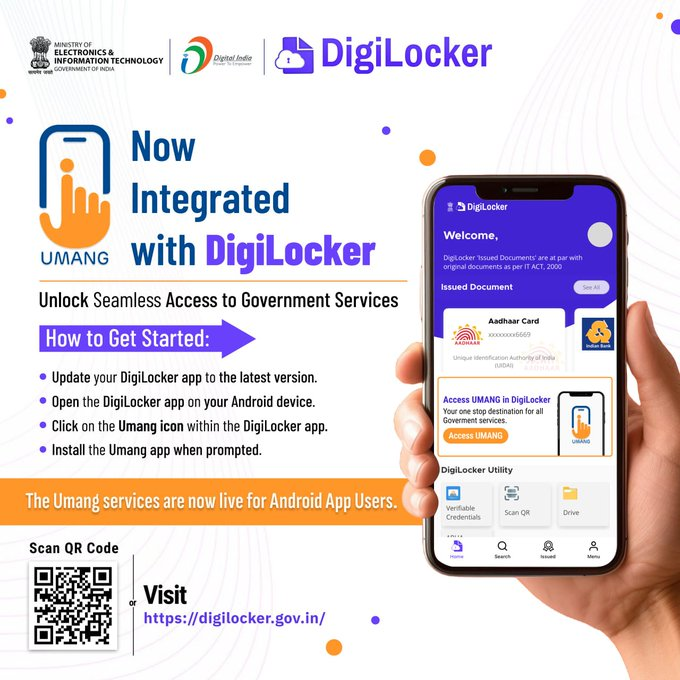
- 16 Oct 2024
In News:
The National e-Governance Division (NeGD) has announced the integration of the UMANG app with DigiLocker- India’s Digital Wallet. This collaboration aims to provide citizens with seamless access to a wide range of government services bringing greater convenience and allowing users to manage multiple services through a single platform.
UMANG app
- The UMANG app is accessible to all Android users with an expansion to iOS in the pipeline.
- The UMANG mobile app is an all-in-one single, unified, secure, multi-channel, multi-lingual, multi-service mobile app.
- It provides access to high-impact services of various organizations of the Union and States.
Simplified Citizen-Government interaction
This integration makes it easier for citizens to interact with the Government in an efficient, digital-first manner. DigiLocker has always been a pioneer in simplifying access to personal and official documents, and after integration with UMANG, it has expanded the range of services you can access on the go.
About DigiLocker
DigiLocker is a flagship initiative under the Digital India program aimed at providing secure cloud-based storage of essential documents. By integrating with e-governance services such as UMANG, DigiLocker further is committed to further enhance accessibility and ease of living.
World Food Day 2024

- 16 Oct 2024
In News:
World Food Day, observed annually on October 16, has its roots in the establishment of the Food and Agriculture Organization (FAO) by the United Nations in 1945.
Significance: World Food Day emphasizes the critical need to address global hunger and promote resilient food systems capable of overcoming challenges like climate change and economic disparities.
Introduction
- Food is vital for life, health, and well-being.
- Despite sufficient global food production, millions lack access to nutritious food.
- World Food Day serves as a reminder of ongoing challenges in achieving food security.
History and Theme
- Origins: Established by the Food and Agriculture Organization (FAO) in 1945, officially recognized in 1979.
- First Celebration: Took place in 1981 with the theme "Food Comes First."
- 2024 Theme: "Right to Food for a Better Life and a Better Future," highlighting that food security is essential for dignity and health. It emphasizes the need for sustainable practices and equitable distribution.
India’s Commitment to Food Security
- India has made significant strides in combating hunger through various programs aimed at malnutrition and poverty alleviation.
- Key initiatives include:
- National Food Security Act (NFSA): Provides subsidized food grains to 75% of the rural and 50% of the urban population, benefiting about 81 crore individuals.
- Pradhan Mantri Garib Kalyan Anna Yojana (PMGKAY): Offers free food grains to approximately 81.35 crore beneficiaries, extending support during the COVID-19 pandemic for an additional five years.
- PM POSHAN Scheme: Aims to improve children's nutritional status in government schools with a budget of ?12,467.39 crores for 2024-25.
- Antyodaya Anna Yojana (AAY): Focuses on the most vulnerable populations, supporting over 8.92 crore individuals and empowering women.
- Rice Fortification: Distribution of fortified rice through the Public Distribution System has improved nutritional intake for millions.
- Price Stability Initiatives: The government manages price volatility of essential commodities using the Price Stabilization Fund (PSF) and ensures affordability through strategic product launches.
Global Recognition of Indian Cuisine
- The Indian Thali has been recognized for its nutritional and sustainable qualities by the WWF Living Planet Report.
- Its plant-based composition contributes to lower resource use and reduced greenhouse gas emissions.
- If globally adopted, India’s dietary patterns could significantly lessen the environmental burden.
Significance
- India’s comprehensive initiatives reflect its dedication to food security and improving citizens' quality of life.
- By enhancing agricultural productivity and supporting vulnerable populations, India makes strides towards eradicating hunger.
- On World Food Day, these efforts underline India's commitment to achieving Sustainable Development Goal 2: Zero Hunger, while serving as a model for global food security initiatives.
PM GatiShakti National Master Plan
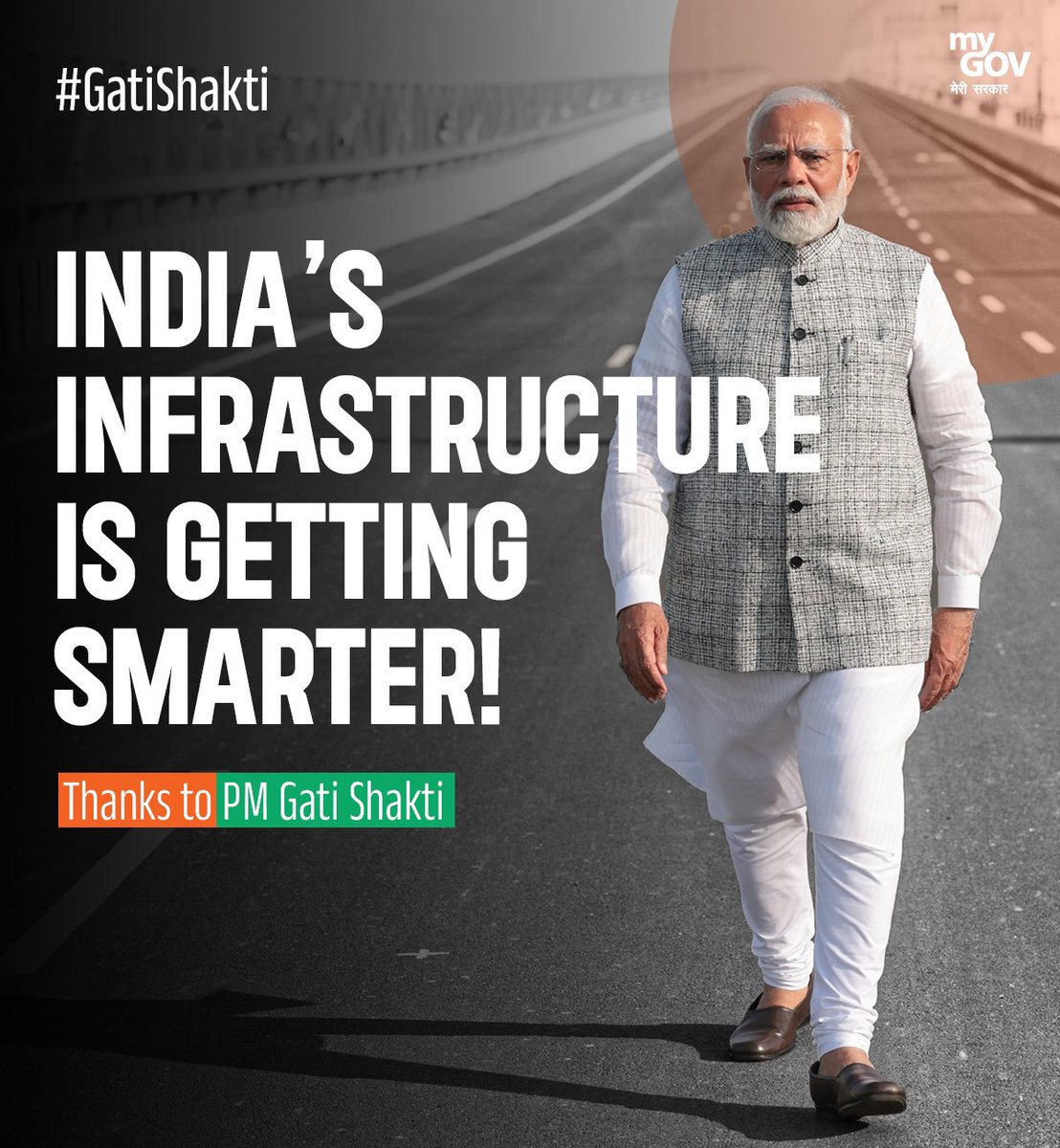
- 16 Oct 2024
In News:
- The Prime Minister commended the completion of three years of the PM GatiShakti National Master Plan, calling it a transformative initiative for India’s infrastructure development.
- Key Benefits: The plan enhances multimodal connectivity and improves efficiency across various sectors, contributing to logistics, job creation, and innovation.
Overview of PM GatiShakti National Master Plan
- Launch Date: October 2021
- Objective: A transformative initiative worth ?100 lakh crore aimed at revolutionizing India’s infrastructure over five years.
- Development Tool: Created as a Digital Master Planning tool by the Bhaskaracharya National Institute for Space Applications and Geoinformatics (BISAG-N).
- GIS Platform: Utilizes a dynamic Geographic Information System to integrate action plans from various ministries into a comprehensive database.
- Goals: Accelerate project completion, reduce timelines, and enhance India’s global competitiveness by addressing inter-ministerial challenges.
Key Features
- Digital Integration: A digital platform coordinating the efforts of 16 ministries for seamless infrastructure planning.
- Multi-Sector Collaboration: Incorporates initiatives from major programs like Bharatmala and Sagarmala.
- Economic Zones Development: Focuses on key areas such as textile clusters and pharmaceutical hubs to boost productivity.
- Technology Utilization: Employs advanced spatial planning tools and ISRO satellite imagery for data-driven project management.
Core Sectors Driving the Plan
- The National Master Plan is centered around seven primary sectors that enhance economic growth and connectivity, supported by sectors like energy transmission and social infrastructure.
Six Pillars of PM GatiShakti
- Comprehensiveness: Integrates various initiatives through a centralized portal, ensuring efficient planning.
- Prioritisation: Allows ministries to prioritize projects based on national importance and resource allocation.
- Optimisation: Identifies infrastructure gaps and selects the most efficient transportation routes.
- Synchronisation: Ensures coordinated efforts across ministries to avoid delays.
- Analytical Capabilities: Offers extensive data layers for improved spatial planning and decision-making.
- Dynamic Monitoring: Uses satellite imagery for real-time project tracking and adjustments.
Achievements of PM GatiShakti
- District-Level Expansion: Extended to 27 aspirational districts, with plans for 750 in the near future.
- Technological Integration: Enhanced real-time infrastructure planning using geospatial tools.
- Global Outreach: The GatiShakti tool showcased to 30 countries and highlighted at international conferences.
- Social Sector Benefits: Identified areas for new healthcare facilities and improved planning in various districts.
- Rural and Urban Development: Implemented projects for irrigation and city logistics in multiple states.
- Employment Initiatives: Utilized for setting up training institutes near industrial clusters.
Announcement of AI Centres of Excellence
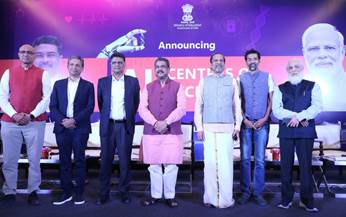
- 16 Oct 2024
In News:
Union Minister for Education, Shri Dharmendra Pradhan, announced the establishment of three AI Centres of Excellence (CoE) focused on Healthcare, Agriculture, and Sustainable Cities in New Delhi.
Key Details:
- Establishment of Three AI-CoEs:
- Focus Areas:
- Healthcare: Led by AIIMS and IIT Delhi.
- Agriculture: Led by IIT Ropar, Punjab.
- Sustainable Cities: Led by IIT Kanpur.
- Collaboration: CoEs will work with industry partners and start-ups.
- Focus Areas:
- Financial Commitment:
- Total Approved Budget: ?990 crore for FY 2023-24 to FY 2027-28.
- Purpose: Support the establishment and operation of the CoEs.
- Vision and Impact:
- Pradhan emphasized the CoEs' role as solution providers for global public good.
- Expected to create a new generation of job and wealth creators.
- Aims to strengthen India's credentials in the global AI landscape.
- Leadership and Implementation:
- Apex Committee: Co-chaired by Shri Sridhar Vembu (Zoho CEO).
- Committee includes industry leaders and academic heads.
- Shri K. Sanjay Murthy highlighted the importance of interdisciplinary research and collaboration.
- Future Prospects:
- Dr. Vembu noted the CoEs will enhance the health of villages and cities, nurture talent, and generate opportunities.
- The initiative aligns with India's vision of "Viksit Bharat" (Developed India).
- Presentation and Film:
- Insights into the development of AI-CoEs presented by Smt. Saumya Gupta.
- A short film titled "Make AI in India and Make AI work for India" was showcased.
The establishment of these Centres of Excellence in AI signifies a major step toward fostering an effective AI ecosystem in India, aimed at developing scalable solutions and enhancing human resources in critical sectors.
International Abhidhamma Divas
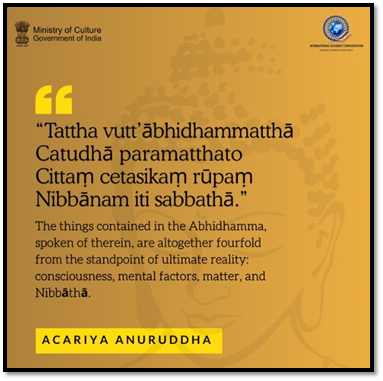
- 16 Oct 2024
In News:
Recently, International Abhidhamma Divas was celebrated at Vigyan Bhavan, New Delhi, with PM Narendra Modi.
Key Details:
- India's Spiritual Legacy: Birthplace of Buddhism; site of Gautam Buddha's enlightenment.
- Sacred Sites: Veneration of locations like Bodh Gaya, symbolizing Buddha's journey and teachings.
- Core Teachings: Abhidhamma as a key philosophical component emphasizing mental discipline and self-awareness.
International Abhidhamma Divas
- Global Observation: Celebrates the significance of Abhidhamma in ethical conduct and mindfulness.
- Cultural Connection: Highlights India's role in preserving Buddhism and bridging ancient wisdom with contemporary practices.
Historical Background and Significance
- Commemoration: Marks Buddha’s descent from T?vati?sa to Sankassiya (Sankisa Basantapur).
- Teaching Period: Buddha taught the Abhidhamma to deities for three months; linked to the end of the Rainy Retreat and the Pav?ra?? festival.
Teachings of Abhidhamma
- Systematic Analysis: Provides a detailed exploration of mind and matter, differing from Sutta Pi?aka.
- Specialized Vocabulary: Key terms include "citta" (consciousness), "cetasika" (mental factors), "r?pa" (materiality), and "nibb?na" (liberation).
- Textual Framework: Six core books of Abhidhamma Piñaka cover moral states, aggregates, and causal relationships.
- Key Treatise: The Paññh?na offers in-depth causal analysis, essential for practitioners’ understanding.
Modern Observance and Celebrations
- Significance of Pali: Recognition of Pali as a classical language; promoting India's Buddhist heritage.
- Participants: Gathering of ambassadors, monks, scholars from 14 countries; emphasizes Abhidhamma's relevance today.
- Program Highlights: Dhamma discourse, academic sessions on Abhidhamma’s significance, exhibitions on Pali's evolution and Buddha's teachings.
Classical Status of Pali Language
- Pali's Role: Sacred language for delivering Buddha's teachings; recognized as a Classical Language by India.
- Buddhist Canon: Major texts include the Tipitaka (Vinaya, Sutta, Abhidhamma Pitaka) and commentarial traditions.
- Literary Heritage: Jataka Kathas reflect shared moral values; status enhances Pali studies in education and research.
Significance
- Significance of Celebration: Abhidhamma Divas underscores efforts to preserve and promote Buddhism’s legacy.
- Revitalization of Buddhism: Fosters global engagement and appreciation for Buddha’s teachings, reaffirming India's role in Buddhist studies.
e-Migrate Portal
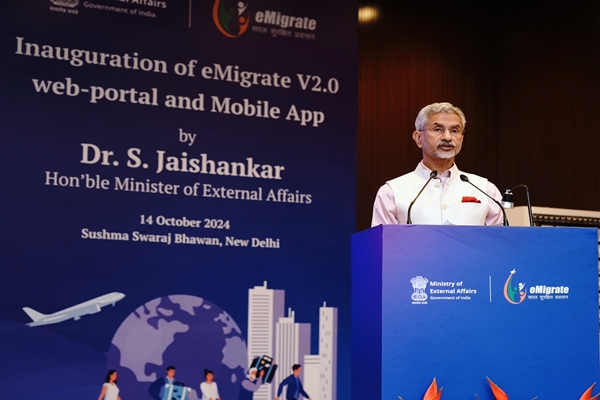
- 15 Oct 2024
In News:
Recently, the Union Ministers for External Affairs and Labour and Employment launched the upgraded e-Migrate portal and mobile app, aimed at enhancing the migration experience for Indian workers seeking employment abroad. This initiative reflects the Indian government's commitment to ensuring the safety and welfare of its migrant workforce, aligning with global migration goals under the 2030 Agenda for Sustainable Development.
About e-Migrate Portal
The e-Migrate portal is an online platform designed to facilitate and manage the migration of Indian workers. It promotes safe and legal mobility channels by providing a transparent framework for migrant workers, including:
- Information Access: Comprehensive resources to help migrants understand the migration process.
- Documentation Support: Tools to assist with necessary paperwork.
- Helpline Support: A 24/7 multilingual helpline that addresses issues faced by workers, particularly in the Gulf region.
- Awareness Campaigns: Initiatives to educate workers about their rights and responsibilities abroad.
The upgraded version of the portal, launched in October 2024, features enhanced functionality to better serve Indian migrants.
Key Features of e-Migrate v2.0
- Multilingual Helpline: Offers real-time support in multiple languages, ensuring that urgent issues are resolved efficiently.
- Integration with Digilocker: Facilitates secure, paperless submission of essential documents, such as passports and employment contracts.
- Social Security Net: Enhances social security measures for migrants, including insurance policies and partnerships with the State Bank of India for fee-free digital payment services.
- Mobile App: Introduced for the first time, this app provides easy access to services, including a job search marketplace for overseas employment opportunities.
- Rural Accessibility: Collaboration with Common Service Centres (CSCs) aims to expand immigration services to rural areas in local languages, making the platform more accessible to diverse populations.
Significance
The e-Migrate portal aligns with the United Nations' Sustainable Development Goal 10, which promotes orderly and responsible migration. By fostering safe migration practices, this initiative seeks to empower Indian workers and protect their rights while contributing to the country's international workforce.
Mission for Advancement in High-Impact Areas - Electric Vehicle (MAHA-EV) Mission

- 15 Oct 2024
In News:
The Anusandhan National Research Foundation (ANRF) has officially launched its first two initiatives: the Prime Minister Early Career Research Grant (PMECRG) and the Mission for Advancement in High-Impact Areas - Electric Vehicle (MAHA-EV) Mission. These initiatives aim to enhance India’s research landscape and support innovation in critical sectors.
Prime Minister Early Career Research Grant (PMECRG)
- Objective: The PMECRG is designed to empower early career researchers by providing flexible funding and support for high-quality innovative research. It aims to foster creativity and drive technological progress, positioning India as a global leader in science and technology (S&T).
- Significance: This grant recognizes the essential role of young researchers in advancing India's scientific agenda. By investing in their development, ANRF aims to cultivate a vibrant research ecosystem that encourages groundbreaking discoveries.
Mission for Advancement in High-Impact Areas - Electric Vehicle (MAHA-EV) Mission
- Focus: The MAHA-EV Mission targets the development of key technologies for electric vehicles, specifically in areas such as tropical EV batteries, power electronics, machines and drives (PEMD), and charging infrastructure.
- Goals:
- Reduce Import Dependency: By fostering domestic innovation in EV components.
- Global Leadership: Positioning India as a leader in the electric vehicle sector, aligning with the government's Atmanirbhar Bharat (self-reliant India) vision.
- Collaboration: The mission is designed to encourage multi-institutional and multi-disciplinary collaboration to address critical scientific challenges, thereby enhancing the competitiveness of India's EV sector.
Significance of Both Initiatives
- Bridging Gaps: Both initiatives aim to bridge the gap between academic research and industrial applications, a key goal of ANRF. This alignment is crucial for translating research into practical applications that benefit society.
- Strategic Interventions: These programs reflect the discussions held during the ANRF's Governing Board meeting, which emphasized global positioning in key sectors, capacity building, and fostering an innovation ecosystem.
- Long-term Vision: The initiatives contribute to India's goal of achieving a Viksit Bharat (Developed India) by 2047, accelerating the country's progress toward a sustainable and technologically advanced future.
The launch of the PMECRG and MAHA-EV Mission marks a significant step in enhancing India's research ecosystem. By supporting early career researchers and advancing electric vehicle technologies, ANRF is poised to drive innovation, foster collaboration, and strengthen India’s position on the global scientific stage. These initiatives reflect a commitment to sustainable development and technological leadership, paving the way for transformative advancements in various sectors.
Haber-Bosch process
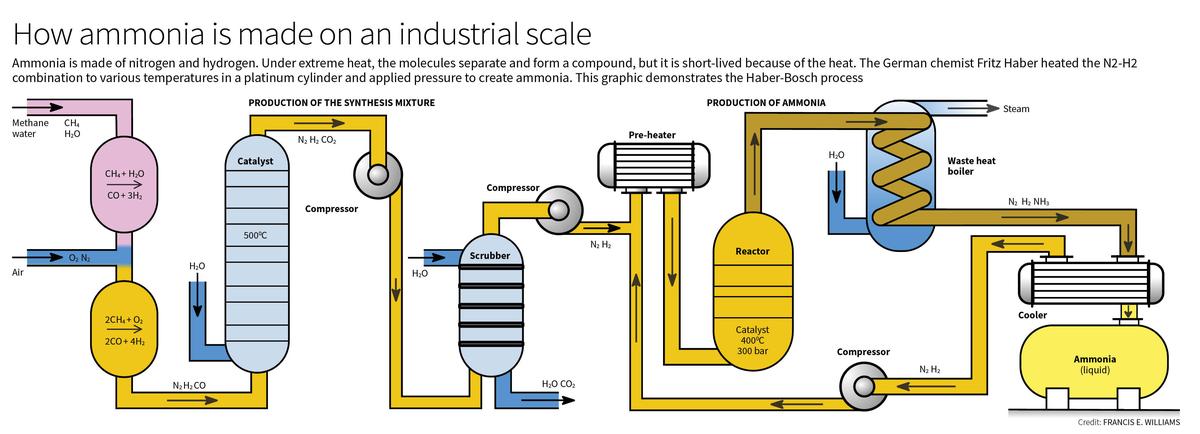
- 15 Oct 2024
In News:
The Haber-Bosch process has fundamentally transformed agricultural practices and global food production, enabling the conversion of atmospheric nitrogen into ammonia, which is essential for fertilizers.
The Nitrogen Molecule
- Composition: Nitrogen primarily exists as molecular nitrogen (N?) in the atmosphere, where two nitrogen atoms are bonded with a strong triple bond. This bond is very stable and requires significant energy (946 kJ/mol) to break, rendering N? largely inert and unavailable for direct use by plants.
Nitrogen in Nature
- Natural Fixation: In nature, the energy required to break the N? bond is typically provided by phenomena like lightning, which converts nitrogen to reactive forms such as nitrogen oxides (NO and NO?). These can subsequently form nitric acid when they react with water, depositing reactive nitrogen through rainfall.
- Microbial Processes: Certain bacteria, including Azotobacter and Rhizobia, can fix atmospheric nitrogen into reactive forms, supporting plant growth. Azolla, a fern with a symbiotic cyanobacterium, also helps in nitrogen fixation.
The Nitrogen Cycle
- Plant Uptake: Plants absorb reactive nitrogen in the form of ammonium (NH??) and nitrate (NO??) from the soil, essential for synthesizing proteins and other vital compounds. Humans and animals rely on plants for their nitrogen intake.
- Cycle Completeness: While nitrogen is returned to the soil through excretion and decomposition, some is lost back to the atmosphere as N?. This loss contributes to the depletion of soil nitrogen, especially in crops that do not fix their own nitrogen.
Ammonia Production
- Haber-Bosch Process: This process synthesizes ammonia from nitrogen and hydrogen under high pressure and temperature, using a catalyst to enhance efficiency. Initially developed by Fritz Haber and scaled by Carl Bosch, this method became the backbone of modern fertilizer production.
Benefits and Downsides of Fertilizers
- Food Security: The Haber-Bosch process has significantly increased food production, contributing to a remarkable rise in global food supply and preventing widespread hunger. It is estimated that one-third of the world’s population relies on fertilizers produced via this process for their food.
- Environmental Impact: The widespread use of nitrogen fertilizers can lead to environmental issues:
- Excess Nutrients: Over-application can result in nutrient runoff into water bodies, causing eutrophication, which depletes oxygen and harms aquatic life.
- Acid Rain: Reactive nitrogen can contribute to acid rain, affecting soil health and biodiversity.
- Soil Degradation: Continuous fertilizer use without adequate replenishment of nutrients can degrade soil quality over time.
While the Haber-Bosch process is crucial for modern agriculture and food security, it also presents significant environmental challenges. The balance between using fertilizers effectively and sustainably is essential to ensure that technological advancements do not come at the cost of ecological health. As such, addressing food security requires not just technological innovation, but also thoughtful political and social engagement to manage resources responsibly.
India's Renewable Energy Capacity Hits 200 GW Milestone
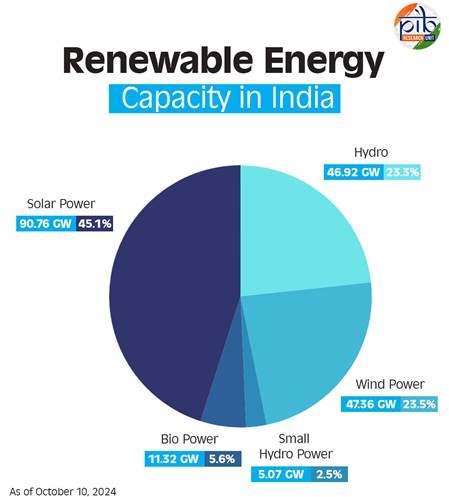
- 15 Oct 2024
In News:
India has recently celebrated a landmark achievement in its renewable energy sector, with its total renewable energy capacity surpassing 200 GW as of October 10, 2024. This milestone, reported by the Central Electricity Authority, showcases the country’s growing commitment to clean energy and its strategic shift towards a more sustainable future.
Overview of India’s Renewable Energy Landscape
As of October 2024, India's total electricity generation capacity stands at 452.69 GW, with renewable sources contributing a substantial 201.45 GW, representing 46.3% of the overall capacity. This shift highlights India’s increasing reliance on cleaner, non-fossil fuel energy.
Key contributors to this capacity include:
- Solar Power: Leading with 90.76 GW, capitalizing on India's abundant sunlight.
- Wind Power: Following closely at 47.36 GW, leveraging the country’s vast wind corridors.
- Hydropower: Large hydro projects add 46.92 GW, while small hydro contributes an additional 5.07 GW.
- Biopower: Incorporating biomass and biogas energy, contributing 11.32 GW.
Together, these resources are pivotal in reducing dependence on fossil fuels and enhancing energy security.
Leading States in Renewable Energy Capacity
Certain states are at the forefront of this renewable energy expansion:
- Rajasthan: 29.98 GW, benefiting from ample land and sunlight.
- Gujarat: 29.52 GW, driven by robust solar and wind initiatives.
- Tamil Nadu: 23.70 GW, utilizing favorable wind conditions.
- Karnataka: 22.37 GW, supported by a mix of solar and wind projects.
Key Schemes and Programs
The Indian government has introduced numerous initiatives to accelerate renewable energy capacity, aiming for 500 GW from non-fossil sources by 2030. Notable programs include:
- National Green Hydrogen Mission
- PM-KUSUM Scheme
- PM Surya Ghar Scheme
- Production-Linked Incentive (PLI) for solar PV modules
These efforts reflect the government's commitment to fostering a sustainable energy future while addressing the challenges posed by climate change and energy security. Here are some other ongoing key initiatives:
- Notification of a trajectory for renewable energy power bids of 50 GW per annum by Renewable Energy Implementation Agencies (REIAs) from FY 2023-24 to FY 2027-28.
- Foreign Direct Investment permitted up to 100 percent under the automatic route to attract investments.
- Waiver of Inter-State Transmission System charges for solar and wind power projects commissioned by June 30, 2025; green hydrogen projects until December 2030; and offshore wind projects until December 2032.
- Announced Renewable Purchase Obligation trajectory until 2029-30, including separate RPO for Decentralized Renewable Energy.
- A Project Development Cell has been established to attract and facilitate investments in the renewable sector.
- Standard Bidding Guidelines issued for tariff-based competitive bidding for procurement of power from grid-connected solar, wind, and wind-solar projects.
- Ultra Mega Renewable Energy Parks are being set up to provide land and transmission for large-scale renewable energy projects.
- Cabinet approval for a Viability Gap Funding scheme for offshore wind energy projects, facilitating the installation and commissioning of 1 GW of offshore wind energy capacity along the coasts of Gujarat and Tamil Nadu.
- Issued Electricity (Rights of Consumers) Rules, 2020, for net-metering up to 500 kilowatts or the electrical sanctioned load, whichever is lower.
- The “National Repowering and Life Extension Policy for Wind Power Projects, 2023” has been released.
- “Strategy for Establishment of Offshore Wind Energy Projects” outlines a bidding trajectory of 37 GW by 2030.
- Offshore Wind Energy Lease Rules, 2023, notified to regulate the grant of leases for offshore wind energy development.
- Procedure for Uniform Renewable Energy Tariff (URET) has been established.
- Standard & Labelling (S&L) programs for Solar Photovoltaic modules and grid-connected solar inverters have been launched.
- A transmission plan has been prepared to augment transmission infrastructure until 2030.
- The Electricity (Late Payment Surcharge and Related Matters) Rules have been notified.
- Green Energy Open Access Rules 2022 have been issued to promote renewable energy.
- Launched the Green Term Ahead Market (GTAM) to facilitate the sale of renewable energy power through exchanges.
- Orders issued to ensure that power is dispatched against Letters of Credit or advance payment for timely payments to renewable energy generators.
ITU World Telecommunication Standardization Assembly 2024
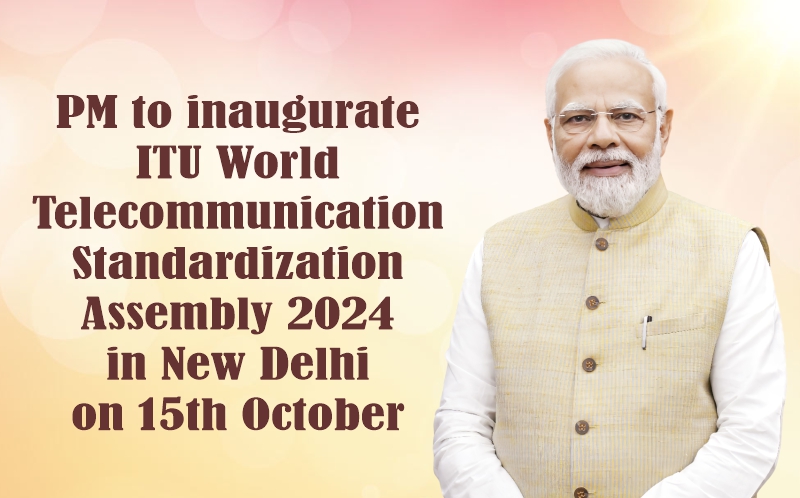
- 15 Oct 2024
In News:
- Prime Minister Narendra Modi inaugurated ITU WTSA 2024 and India Mobile Congress 2024, at Bharat Mandapam, New Delhi.
- First Time in India: WTSA hosted for the first time in India and the Asia-Pacific region.
- Participants: Over 3,000 industry leaders, policy-makers, and tech experts from more than 190 countries expected.
ITU WTSA 2024
- Significance: Governing conference for the standardization work of the International Telecommunication Union (ITU), held every four years.
- Focus Areas: Discussion on standards for next-generation technologies including:
- 6G
- Artificial Intelligence (AI)
- Internet of Things (IoT)
- Big Data
- Cybersecurity
- Opportunities for India: Enhances India’s role in shaping the global telecom agenda; insights into Intellectual Property Rights and Standard Essential Patents for startups and research institutions.
India Mobile Congress 2024
- Theme: "The Future is Now"
- Technological Focus: Highlight advancements in:
- Quantum Technology
- Circular Economy
- 6G and 5G use cases
- Cloud and Edge Computing
- IoT and Semiconductors
- Cybersecurity
- Green Technology
- Satellite Communication and Electronics Manufacturing
Importance for India
- Showcase of Innovation: A platform for India’s innovation ecosystem, demonstrating advancements in digital technology.
- Global Collaboration: Facilitates collaboration between government, industry, and academia to address global telecommunication challenges.
THAAD Missile Defence System
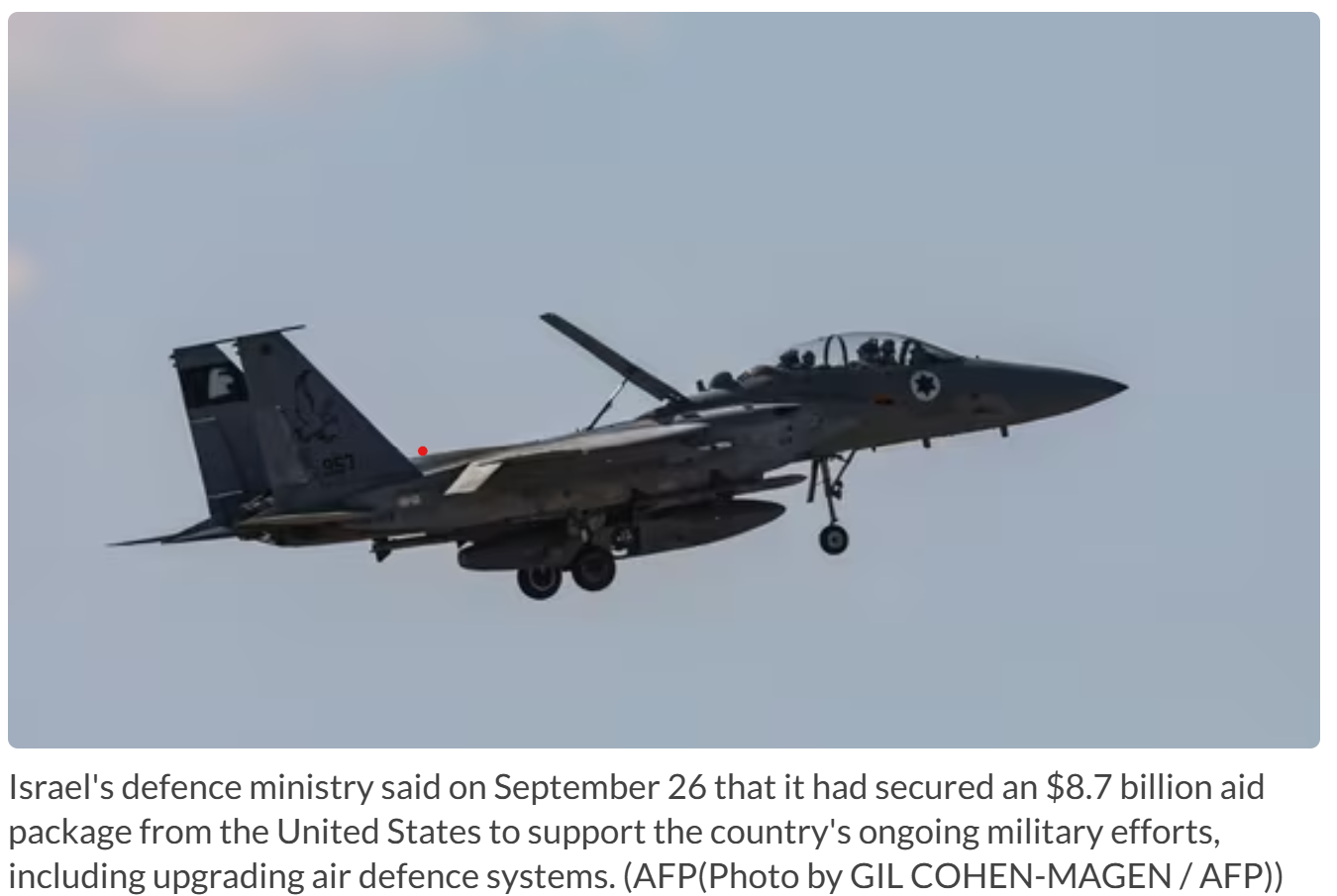
- 14 Oct 2024
In News:
The US pledged its THAAD missile defence system as well as several troops to Israel after Iran warned the country to not get involved.
In a new boost to Israeli forces, the United States will send a Terminal High Altitude Area Defence battery (THAAD) and troops to Israel amid its ongoing offensive against the Hezbollah.
THAAD battery:
- The Terminal High Altitude Area Defence system (THAAD) is an American anti-ballistic missile defence system. It can shoot down short, medium and intermediate range missiles in it's sphere.
- The THAAD has a “hit to kill” approach which blasts missiles as they before they enter their target zone during their descent.
- The THAAD was developed by the US after their experience of Iraq's Scud missile attacks during the Persian Gulf War in 1991. Out of a total of 88 Scud missiles, Iraq fired 42 into Israel and 46 into Saudi Arabia, killing many American soldiers in barracks as well.
- The first proposal for the THAAD was submitted to the US Defence Ministry in 1987 and a series of tests resulting in failures, finally led to a successful version in 1999.
- In 2008, the US deployed an early missile warning radar, a part of the THAAD system to Israel. Similar deployments were also made in 2012 and 2019, aiding Israel's ability to emerge as a military power in the Middle East.
Ladakh's Aurorae

- 14 Oct 2024
In News:
In October 2024, Ladakh witnessed spectacular auroras, typically seen in higher latitudes, indicating increased solar activity. This phenomenon was reported following intense solar storms, with red and green lights observed in the night sky. The auroras were captured by all-sky cameras operated by the Indian Institute of Astrophysics (IIA) in Hanle and Merak.
What Are Auroras?
Auroras are vibrant displays of light caused by interactions between charged particles from the Sun and Earth's magnetosphere. When solar winds—streams of charged particles—collide with atoms in the upper atmosphere, they create visible light, similar to how neon lights function.
Causes of Recent Auroras
The recent auroras in Ladakh were linked to several strong solar storms, particularly coronal mass ejections (CMEs), which are significant bursts of solar wind and magnetic fields rising above the solar corona. The storms, emanating from active solar regions, traveled towards Earth at remarkable speeds, disrupting the normal space weather and allowing auroras to be visible at lower latitudes, including Mexico and Germany.
Implications of Solar Activity
Astrophysicists at the Center of Excellence in Space Sciences India (CESSI) noted that these auroras validate ongoing efforts in space weather monitoring. The increased solar activity is part of the solar cycle, which peaks approximately every 11 years. Current predictions indicate that Solar Cycle 25 may reach its peak in 2024.
Monitoring Space Weather
Organizations like the National Oceanic and Atmospheric Administration (NOAA) closely monitor space weather to provide timely warnings about solar events that could disrupt satellite communications and other services. The CESSI team successfully predicted the occurrence of solar storms, enhancing confidence in their ability to forecast space weather and its potential impacts.
Potential Hazards
While auroras are visually striking, intense solar storms can have detrimental effects, including:
- Satellite Disruption: Increased drag and radiation can damage satellites in low Earth orbit, affecting navigation, communications, and military operations.
- Communication Blackouts: Severe storms can interfere with radio and satellite communications, impacting daily life and services.
Wayanad’s New X-Band Radar
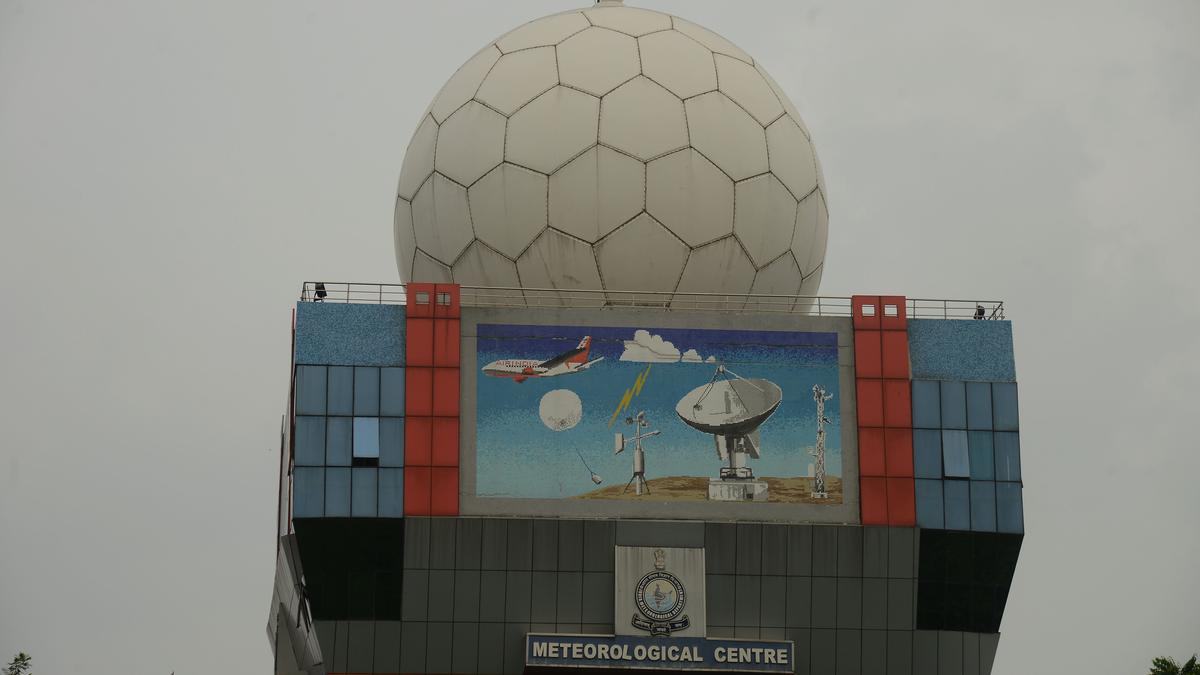
- 14 Oct 2024
In News:
- Following devastating floods and landslides in July 2024 that resulted in over 200 fatalities in Wayanad, Kerala, the Union Ministry of Earth Sciences approved the installation of an X-band radar to enhance monitoring and early warning systems.
- Impact of Events: The floods were exacerbated by heavy rains, leading to significant debris flows and landslides, highlighting the need for advanced meteorological tools.
What is Radar?
- Definition: Radar stands for "Radio Detection and Ranging." It uses radio waves to determine the distance, velocity, and characteristics of objects.
- Functioning: A transmitter emits radio signals that reflect off objects, returning to a receiver for analysis. This technology is crucial in meteorology for monitoring weather patterns.
X-Band Radar Specifics
- Operating Frequency: X-band radar operates at 8-12 GHz, corresponding to wavelengths of 2-4 cm. This allows it to detect smaller particles, such as raindrops and soil.
- Advantages: The shorter wavelengths provide higher resolution images but have a limited range due to faster signal attenuation.
- Applications: In Wayanad, the radar will monitor particle movements like soil, enabling timely landslide warnings through high temporal sampling.
India’s Radar Network
- Historical Context: India has utilized radar for meteorological purposes since the early 1950s. The first indigenous X-band radar was established in 1970.
- Current Infrastructure: India operates both X-band and S-band radars (2-4 GHz) for various meteorological functions. The X-band network includes storm detection and wind-finding capabilities.
- Future Plans: The Indian government plans to add 56 more Doppler radars under the ?2,000-crore "Mission Mausam," enhancing weather forecasting capabilities across the country.
NISAR Satellite
- Collaboration: NISAR (NASA-ISRO Synthetic Aperture Radar) is a joint satellite project between NASA and ISRO, set to launch in 2025.
- Capabilities: It will feature L-band and S-band radars to monitor Earth’s landmass changes, further supporting environmental monitoring and disaster management.
Global Hunger Index 2024
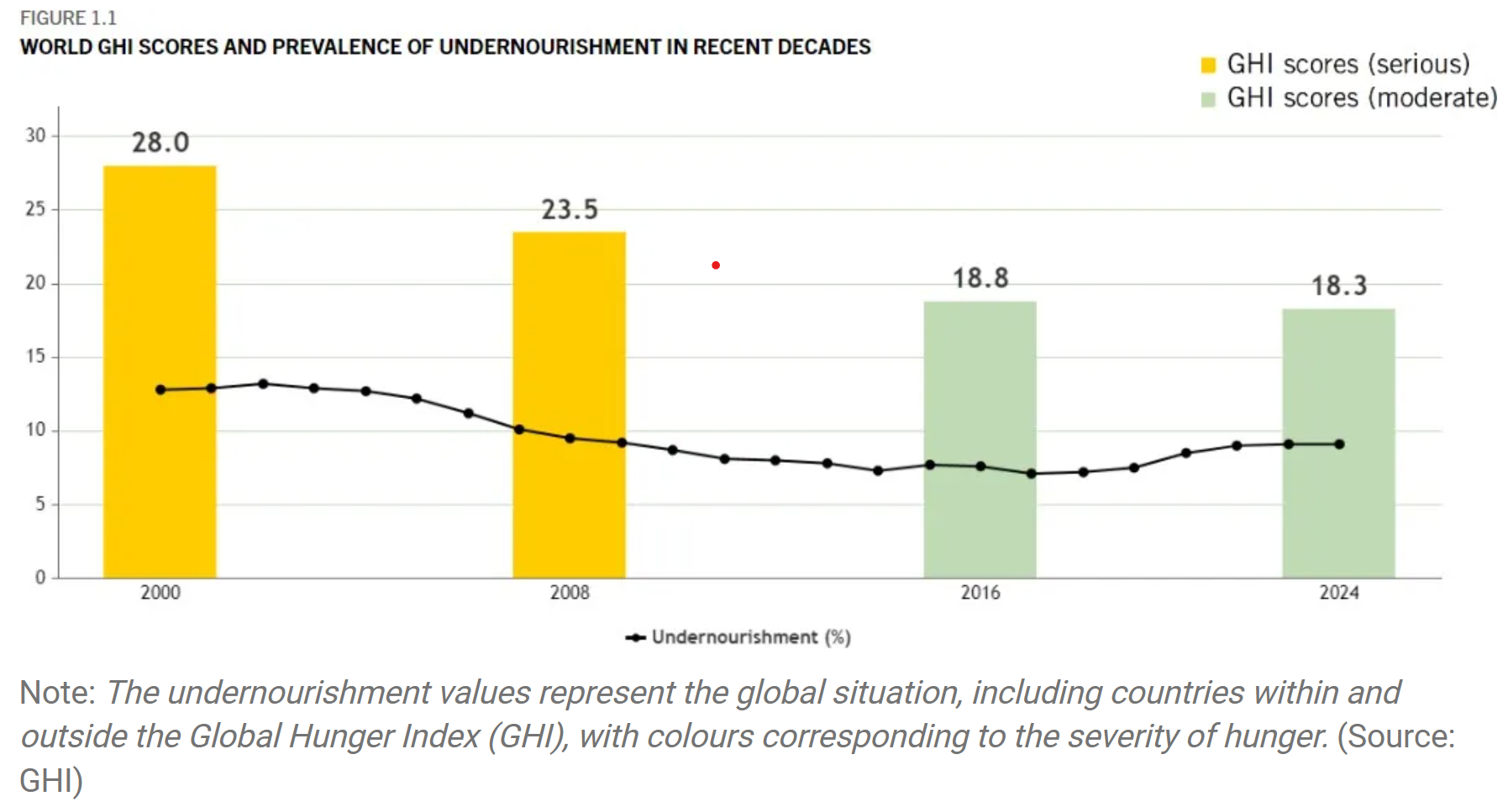
- 14 Oct 2024
In News:
The 2024 Global Hunger Index (GHI) emphasizes food as a fundamental human right, alongside air and water.
Key Highlights:
- Current Crisis: Despite adequate food production globally, around 350 million people face extreme hunger, with 49 million on the brink of famine.
- Statistics: Over 820 million people are chronically undernourished, and malnutrition claims the lives of five million children under five each year.
Top 10 Countries Most Affected by Hunger (2024)
- Somalia: GHI Score 44.1 (GHI 2000: 63.3)
- Yemen: GHI Score 41.2 (GHI 2000: 41.6)
- Chad: GHI Score 36.4 (GHI 2000: 50.5)
- Madagascar: GHI Score 36.3 (GHI 2000: 42.3)
- Democratic Republic of the Congo: GHI Score 34.9 (GHI 2000: 47.2)
- Haiti: GHI Score 34.3 (GHI 2000: 39.8)
- Niger: GHI Score 34.1 (GHI 2000: 53.1)
- Liberia: GHI Score 31.9 (GHI 2000: 48.0)
- Central African Republic: GHI Score 31.5 (GHI 2000: 48.0)
- Korea (DPR): GHI Score 31.4 (GHI 2000: 43.7)
India's Position
- Ranking: India ranks 105th in the GHI 2024, categorized as having a "serious" hunger situation.
- GHI Score: India’s score stands at 27.3, showing some improvement from a score of 38.4 in 2000 (previously classified as "alarming").
Key Concerns in India
- Undernourishment: 13.7% of the population is undernourished.
- Child Stunting: 35.5% of children under five are stunted.
- Child Wasting: 18.7% of children under five experience wasting.
- Child Mortality: 2.9% of children do not survive to age five.
Global Hunger Index (GHI):
A tool measuring hunger across countries based on four indicators:
-
- Undernourishment
- Child Wasting
- Child Stunting
- Child Mortality
- Data Sources: The GHI is based on data from credible organizations like the FAO, WHO, and UNICEF, as well as government surveys.
Hunger Indicators Explained
- Undernourishment: Reflects the overall food access situation.
- Child Wasting: Indicates acute malnutrition; a critical health issue.
- Child Stunting: Reflects chronic malnutrition; significant public health concern.
- Child Mortality: Represents the most severe consequence of hunger.
The 2024 GHI report reveals that while progress has been made in addressing hunger globally, significant challenges remain, particularly in countries like India and the most affected nations. Addressing these issues is crucial for achieving the goal of zero hunger by 2030.
Jipmer Launches ‘Tele-MANAS’ Mental Health Helpline
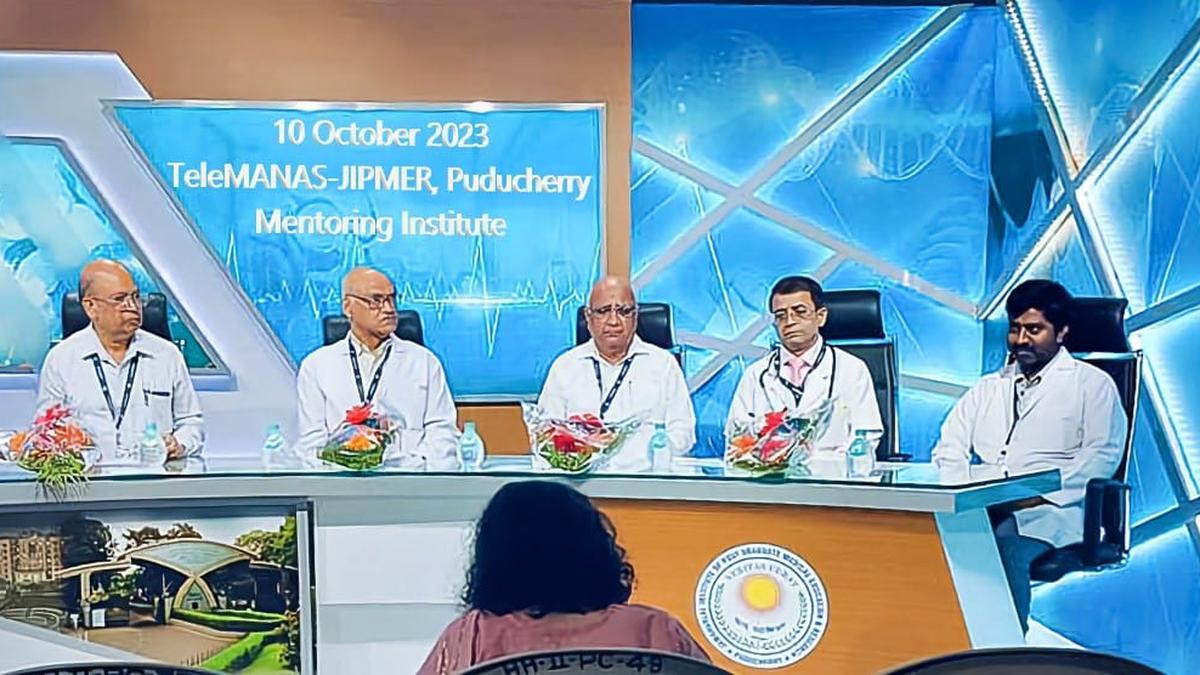
- 14 Oct 2024
In News:
- Jipmer (Jawaharlal Nehru Institute of Postgraduate Medical Education and Research) has launched the "Tele-MANAS" (Tele Mental Health Assistance and Networking Across States) helpline, a toll-free service (14416) aimed at providing mental health support.
- This initiative is part of the National Tele Mental Health Programme (NTMHP), launched by the Union Ministry of Health and Family Welfare.
Purpose and Need:
- With an estimated 1 in 10 people in India suffering from mental illness, and about 1% experiencing severe conditions, the service addresses significant gaps in mental health access, particularly in rural and remote areas.
- The helpline aims to provide immediate support for issues such as anxiety, depression, and emotional distress.
Training and Operations:
- Jipmer will train qualified counsellors who will subsequently train additional counsellors to expand the reach of the service.
- Counselors will be available 24/7, including holidays, to ensure continuous support.
Support Structure:
- Trained counselors will serve as the first point of contact for individuals seeking help, providing responses, suggestions, and necessary referrals to advanced mental health facilities.
- Jipmer will supervise the program, ensuring regular retraining and maintaining service quality.
Integration with National Programs:
- The initiative is coordinated by the National Institute of Mental Health and Neuro Sciences (NIMHANS), which acts as the National Apex Centre for the NTMHP.
- It includes a comprehensive information library on mental health and guidance for managing early signs of stress and emotional challenges.
Impact on Mental Health Services:
- The program aims to enhance the overall quality of mental health services across states and union territories in India, making them more accessible to a larger population.
- Emphasizes the importance of mental health as a public health priority.
Universal Postal Union

- 10 Oct 2024
In News:
The Universal Postal Union (UPU) is set to assess the integration of the Unified Payment Interface (UPI) with cross-border remittances via the global postal network, according to a recent official announcement.
About the Universal Postal Union
The UPU is a specialized agency of the United Nations and serves as the main platform for international cooperation in the postal sector. Established by the Treaty of Bern in 1874, it stands as the second oldest international organization in the world.
Functions
The UPU coordinates postal policies among its member nations and oversees the global postal system. It establishes the rules for international mail exchanges and makes recommendations aimed at enhancing the volume and quality of mail, parcel, and financial services. Additionally, it plays an advisory, mediating, and liaison role while providing technical assistance when necessary.
Membership
Any member state of the United Nations is eligible to join the UPU. Non-member countries can also become UPU members, subject to approval by at least two-thirds of the existing member nations. Currently, the UPU comprises 192 member countries.
Structure
The UPU consists of four main bodies:
1. The Congress: The highest authority of the UPU, convening every four years.
2. The Council of Administration: Responsible for ensuring the continuity of UPU operations between Congresses and supervising activities related to regulatory, administrative, legislative, and legal matters.
3. The Postal Operations Council: Acts as the technical and operational hub of the UPU, composed of 48 member countries elected during Congress.
4. The International Bureau: Functions as the secretariat, providing logistical and technical support to the other UPU bodies.
The headquarters of the Universal Postal Union is located in Bern, Switzerland.
Caracal
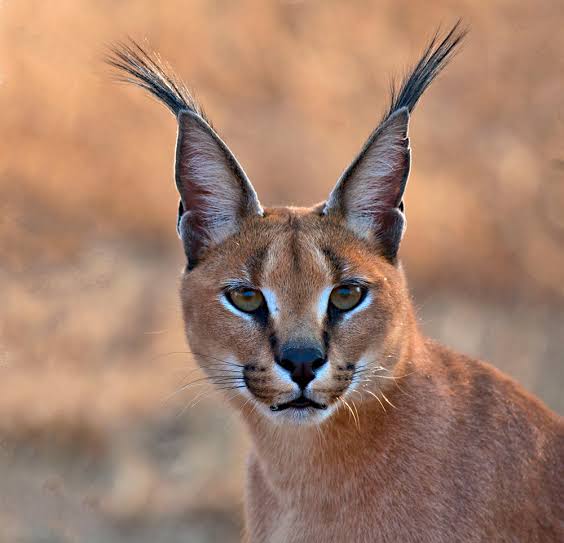
- 10 Oct 2024
In News:
The Gujarat government has recently announced plans to establish a Caracal Breeding and Conservation Center in the Chadva Rakhal area of Kutch, with a budget of ?10 crore.
About the Caracal
- The caracal, known locally as "siya gosh" (meaning "black ear" in Persian), is a reclusive and primarily nocturnal feline celebrated for its agility and remarkable skill in catching birds mid-flight.
- In terms of nesting, caracals typically utilize abandoned porcupine burrows or rock crevices for denning and are often found with their young hidden among dense vegetation. They tend to live in small groups, and their elusive behavior makes them hard to spot in the wild.
Habitat and Distribution
Caracals inhabit various environments, including woodlands, savannahs, and scrub forests. In India, suitable habitats are found in regions such as Kutch, the Malwa Plateau, the Aravalli hills, and Bundelkhand. This species is also present in numerous countries across Africa, the Middle East, Central Asia, and South Asia.
Threats to Survival
The caracal faces significant threats from extensive hunting, illegal wildlife trade, and the destruction of its natural habitats.
Conservation Status
According to the IUCN, the caracal is classified as "Least Concern." In India, it is protected under Schedule I of the Wildlife (Protection) Act, 1972.
Pradhan Mantri Awas Yojana-Gramin (PMAY-G)
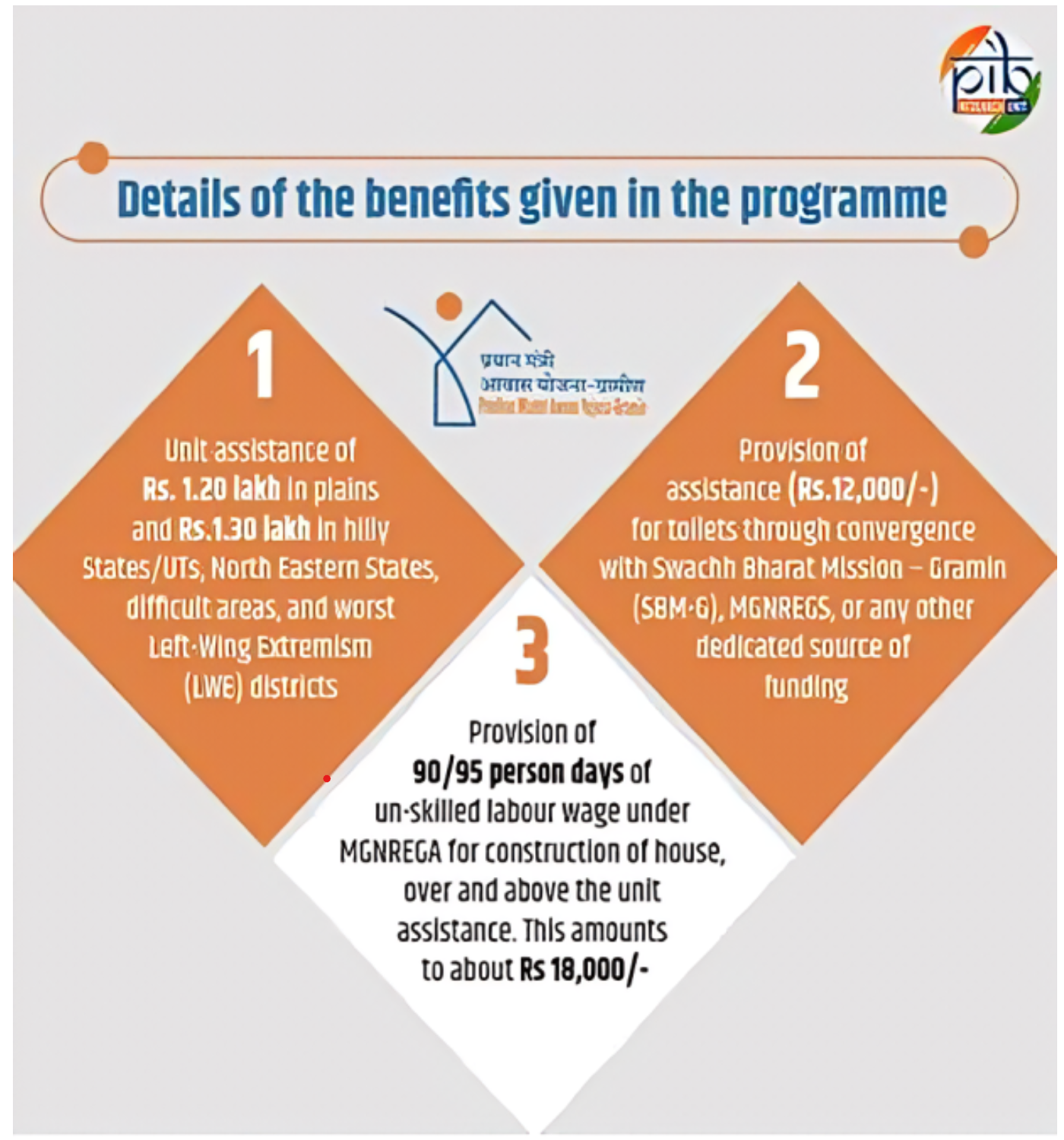
- 09 Oct 2024
Recent Initiatives:
- The Indian government has launched a nationwide survey of kutcha houses.
- Introduction of the Awas Sakhi mobile app to streamline housing assistance.
Purpose of the Kutcha House Survey
- Identify Housing Needs: The survey aims to collect data on families living in kutcha (temporary) houses, enabling targeted support for those in need.
- Support for Awas Sakhi App: The survey will enhance the functionality of the Awas Sakhi app, facilitating the application process and providing beneficiaries with vital housing information.
Overview of PMAY-G
- Launch: Initiated in 2016, PMAY-G aims to provide secure housing for the poorest communities.
- Beneficiary Selection Process: A comprehensive three-stage validation, including the Socio-Economic Caste Census 2011, Gram Sabha approvals, and geo-tagging, ensures that aid reaches those most deserving.
Benefits for PMAY-G Beneficiaries
- Financial Assistance:
- ?1.20 lakh for families in plain areas.
- ?1.30 lakh for families in hilly regions, including northeastern states and union territories.
- Support for Sanitation:
- An additional ?12,000 for toilet construction, aligned with the Swachh Bharat Mission – Gramin or MGNREGS.
- Employment Opportunities:
- Provision of 90/95 days of unskilled wage employment through MGNREGA for house construction.
- Access to Basic Amenities:
- Connections for water, LPG, and electricity facilitated through relevant schemes.
- Cost Sharing Structure:
- Expenses are shared in a 60:40 ratio for plain areas and a 90:10 ratio for northeastern states and selected Himalayan states. The Centre covers 100% of costs for other Union Territories.
Progress Under PMAY-G
- Targets: The government aims to construct 2.95 crore houses.
- Current Status: As of August 2024, 2.94 crore houses have been sanctioned, with 2.64 crore completed, enhancing living conditions for millions in rural areas.
Recent Developments
- In August 2024, the Union Cabinet approved funding for two crore additional houses at existing assistance rates.
- Eligibility Criteria Changes:
- Individuals owning bikes or scooters are now eligible.
- The income limit for eligibility has been raised from ?10,000 to ?15,000 per month.
Future Goals
- This initiative, spanning FY 2024-2029, aims to address ongoing housing demands, benefiting approximately 10 crore individuals by providing safe, hygienic, and socially inclusive housing.
2024 Nobel Prize in Chemistry
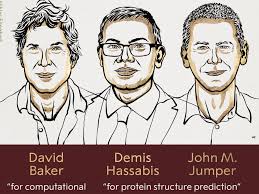
- 09 Oct 2024
In News:
U.S. Scientists David Baker and John Jumper and Britain’s Demis Hassabis won the 2024 Nobel Prize in Chemistry, for their work on understanding the protein structures.
Prize Distribution
- David Baker: Awarded half of the Prize for pioneering work in computational protein design.
- Demis Hassabis and John Jumper: Jointly awarded the other half for their revolutionary contributions to protein structure prediction using artificial intelligence.
Significance of Achievements
- The advancements in protein science represent a major milestone for healthcare and biotechnology.
- These innovations have unlocked new possibilities for designing proteins, potentially leading to breakthroughs in medicine, agriculture, and more.
David Baker's Innovations
- Baker has achieved the significant feat of creating entirely new types of proteins, enhancing our understanding of protein functionality.
- In 2003, he designed a novel protein using amino acids and custom software methods, which opened avenues for rapid protein creation.
- Applications include pharmaceuticals, vaccines, nanomaterials, and tiny sensors.
AI Contributions by Hassabis and Jumper
- Demis Hassabis and John Jumper employed advanced artificial intelligence to address the challenge of predicting complex protein structures.
- In 2020, they introduced the AI model AlphaFold2, which can predict the structure of nearly all identified proteins (approximately 200 million).
Notable Facts about the Nobel Prize in Chemistry
- The Nobel Prize in Chemistry has been awarded 116 times to 197 laureates from 1901 to 2024.
- Frederick Sanger and Barry Sharpless are the only recipients to have won the Prize twice.
- The inaugural Prize was awarded in 1901 to Jacobus H. van ‘t Hoff for his work on chemical dynamics and osmotic pressure.
- Marie Curie became the first woman to win the Prize in 1911 for her discovery of radium and polonium.
- Venkatraman Ramakrishnan, a citizen of Indian origin, received the Prize in 2009 for his research on ribosomes.
2024 Nobel Prize in Physics
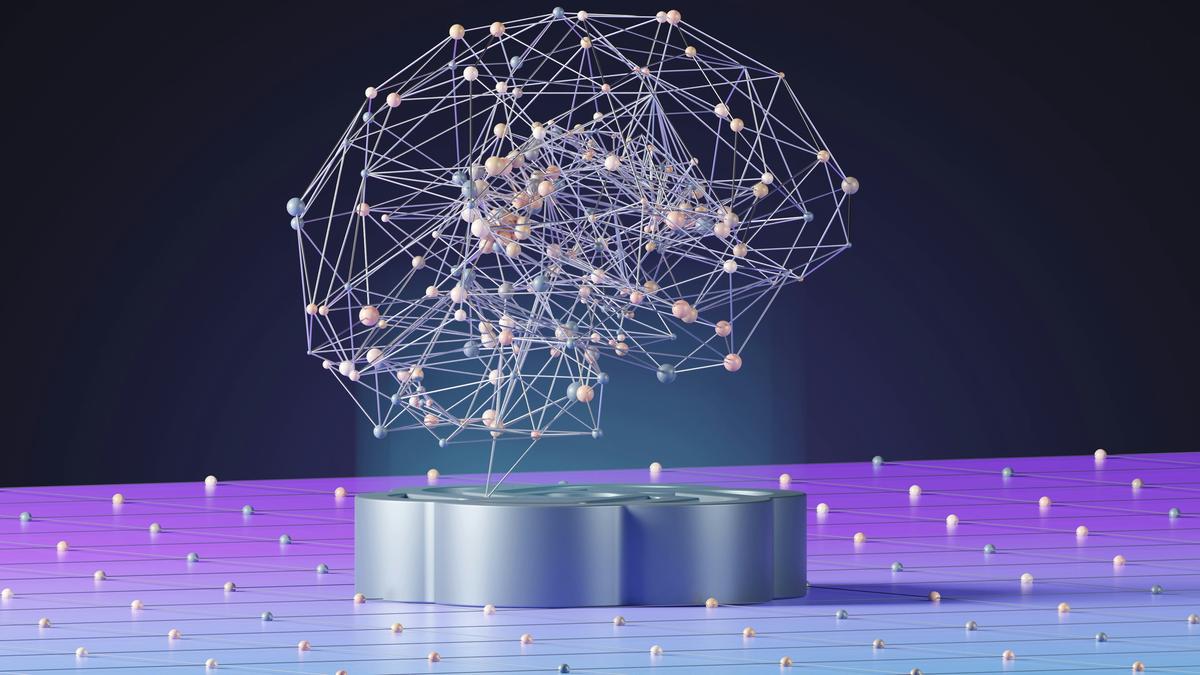
- 09 Oct 2024
In News:
John Hopfield and Geoffrey Hinton won the 2024 Nobel Prize for physics “for foundational discoveries and inventions that enable machine learning with artificial neural networks”. Their work lies at the roots of a large tree of work, the newest branches of which we see today as artificially intelligent (AI) apps like ChatGPT.
Significance of ANNs
- Definition: ANNs are collections of interconnected nodes that mimic the networks of neurons in animal brains, enabling machines to process data, recognize patterns, and learn.
- Applications: Integral to AI applications such as facial recognition, language translation, and numerous fields including physics, chemistry, and medicine.
Historical Context
- Hopfield Network:
- Developed by John Hopfield in 1983.
- Based on Donald Hebb's neuropsychological theory of learning, emphasizing how connections between neurons strengthen through repeated interactions.
- Capable of storing and reconstructing images by adjusting node connections to achieve a low-energy state, effectively denoising input.
- Boltzmann Machine:
- Geoffrey Hinton's work on deep-learning machines, building on Ludwig Boltzmann's statistical mechanics.
- Introduced the concept of generative AI through networks that differentiate between probable outcomes.
- Developed Restricted Boltzmann Machines (RBMs) in the 2000s, enhancing learning efficiency through layered networks.
Evolution and Current State of ANNs
- Technological Progress: ANNs have evolved significantly, transitioning from individual computers to distributed networks like the cloud.
- Current Variants: Innovations include transformers, backpropagation, and long short-term memory techniques, making ANNs more capable and widely accessible.
Concerns and Risks
- Ethical Considerations: Rapid advancements in AI raise concerns about safety, misinformation, and job displacement.
- Expert Opinions: Both Hopfield and Hinton have expressed worries about the implications of AI systems surpassing human intelligence and the potential for misuse.
Trachoma
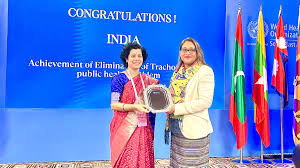
- 09 Oct 2024
In News:
The World Health Organization (WHO) has now recognised that India has successfully eliminated trachoma, a bacterial infection that affects the eyes, as a public health problem.
WHO Declaration:
- India has eliminated Trachoma as a public health problem (2024).
- Third country in the South-East Asia Region to achieve this milestone.
Trachoma Overview:
- Bacterial infection caused by Chlamydia Trachomatis.
- Contagious; spreads through contact with infected secretions.
- Can lead to irreversible blindness if untreated.
- Considered a neglected tropical disease.
Global Impact:
- WHO estimates 150 million affected worldwide; 6 million at risk of blindness.
- Most prevalent in underprivileged communities with poor living conditions.
Historical Context in India:
- Leading cause of blindness in the 1950s-60s.
- National Trachoma Control Program launched in 1963.
- Control efforts integrated into the National Program for Control of Blindness (NPCB).
Statistics:
- Blindness due to Trachoma was 5% in 1971; now reduced to less than 1%.
- Implementation of the WHO SAFE strategy (Surgery, Antibiotics, Facial hygiene, Environmental cleanliness).
Milestones:
- India declared free from infective Trachoma in 2017.
- Continued surveillance for cases from 2019 to 2024.
National Trachomatous Trichiasis (TT) Survey:
- Conducted in 200 endemic districts (2021-2024) under NPCBVI.
- Mandated by WHO to confirm elimination status.
MACE Observatory

- 09 Oct 2024
In News:
The MACE Observatory was recently inaugurated by the Secretary of the Department of Atomic Energy (DAE) and Chairman of the Atomic Energy Commission in Hanle, Ladakh.
About MACE Observatory
- Name: Major Atmospheric Cherenkov Experiment (MACE) Observatory.
- Significance:
- Largest imaging Cherenkov telescope in Asia.
- Highest imaging Cherenkov observatory in the world.
- Location: Situated at approximately 4,300 meters altitude in Hanle, Ladakh.
- Indigenous Development:
- Built by the Bhabha Atomic Research Centre (BARC).
- Supported by the Electronics Corporation of India (ECIL), Hyderabad, and other Indian industry partners.
Scientific Contributions
- Research Focus:
- Enhances understanding in astrophysics, fundamental physics, and particle acceleration mechanisms.
- Observes high-energy gamma rays to investigate cosmic phenomena like supernovae, black holes, and gamma-ray bursts.
- Global Impact:
- Aims to foster international collaborations in space research.
- Strengthens India’s position in the global scientific community.
Socio-Economic Role
- Local Impact: Contributes to the socio-economic development of Ladakh, promoting scientific awareness and opportunities.
Understanding Cherenkov Radiation
- Definition: A blue glow emitted when charged particles (e.g., electrons and protons) travel faster than light in a specific medium.
- Historical Note: Named after Pavel Cherenkov, who, along with Ilya Frank and Igor Tamm, received the Nobel Prize in Physics in 1958 for his work in demonstrating and explaining this phenomenon.
UK-Mauritius Treaty on Chagos Archipelago

- 08 Oct 2024
In News:
The United Kingdom said it would cede sovereignty of the strategically important Chagos Islands to Mauritius, calling it a “historic political agreement”. The UK has long controlled Chagos and the Diego Garcia military base located there, jointly operating it with the United States.
Background of the Chagos Archipelago
Historical Context
- The Chagos archipelago consists of 58 islands located about 500 km south of the Maldives.
- Initially uninhabited, the islands were populated in the late 18th century through the importation of slave labor.
- The islands were ceded to Britain from France in 1814, and in 1965, the UK established the British Indian Ocean Territory (BIOT), which includes Chagos.
Controversy Over Sovereignty
- Mauritius, a former British colony, claims that the detachment of Chagos from its territory during its independence in 1968 was illegal.
- The UK compensated Mauritius with a grant but retained control, establishing a military base on Diego Garcia.
Strategic Importance of Diego Garcia
Military Significance
- Diego Garcia has been a crucial U.S. military base since its operational status began in 1986.
- It played a key role in U.S. military operations during conflicts in the Gulf, Iraq, and Afghanistan.
- The base enables rapid response to crises and supports regional security, especially in light of U.S. interests in monitoring key trade routes like the Malacca Strait.
Geopolitical Implications
- The presence of the U.S. military in the Indian Ocean is vital for countering security threats, particularly regarding China's growing influence.
Recent Developments: The UK-Mauritius Agreement
Key Features of the Treaty
- On October 3, 2023, the UK agreed to cede sovereignty of the Chagos Islands to Mauritius, marking a significant political shift.
- The treaty allows Mauritius to resettle Chagossians (excluding Diego Garcia) and establishes a trust fund for their benefit.
- Despite this, the UK retains control over Diego Garcia for an initial period of 99 years.
Implications of the Agreement
- The resolution of the sovereignty issue may strengthen Western commitments to a stable and free Indo-Pacific region.
- If unresolved, tensions could push Mauritius toward seeking alliances with alternative powers like China.
India’s Position and Interests
Support for Mauritius
- India has historically supported Mauritius in its claims over Chagos, reflecting its stance against colonial legacies.
- In 2019, India voted in favor of Mauritius at the UN General Assembly regarding the Chagos dispute.
Strategic Partnerships
- With increasing Chinese assertiveness in the Indian Ocean, India has been strengthening its ties with Mauritius.
- Recent initiatives include the inauguration of an India-built airstrip and jetty in Agaléga, enhancing connectivity and support for Mauritius.
Conclusion
The UK-Mauritius treaty over the Chagos Archipelago marks a significant turning point in colonial legacies and geopolitical alliances in the Indian Ocean. For India, supporting Mauritius aligns with its broader strategic interests and enhances its influence in a region marked by competing global powers. As the dynamics evolve, India's role in fostering regional stability and partnerships will be crucial.
44th Session of Codex Committee on Nutrition and Foods for Special Dietary Uses
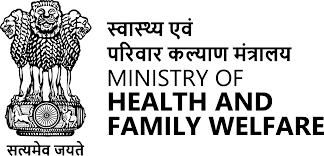
- 08 Oct 2024
In News:
India Participates in 44th Session of Codex Committee on Nutrition and Foods for Special Dietary Uses
Key Contributions:
- Nutrient Reference Values:
- Advocated for reference values for ages 6 to 36 months.
- Suggested combining NRV-R values by averaging those for 6-12 months and 12-36 months.
- This proposal was accepted by the committee.
- Probiotic Guidelines:
- Emphasized the need to update FAO/WHO probiotic guidelines, which are two decades old.
- Highlighted the lack of international harmonization in probiotic regulations affecting global trade.
- Committee agreed to revisit guidelines and requested FAO and WHO to conduct a literature review on probiotics.
- Discussion on Sweetness Assessment:
- Disagreed with the EU’s sensory testing proposal for carbohydrate sources in Follow-up Formula, citing lack of scientific validation.
- Supported by USA, Canada, and others; this led to the committee discontinuing the topic for now.
- Noted that ISO 5495 or other methods could be used in the absence of harmonized methods.
- Delegation:
- Included representatives from the Food Safety and Standards Authority of India, Ministry of Health and Family Welfare, and Ministry of Women and Child Development.
- Advocated for various food safety, consumer health, and trade-related issues.
- Outcome:
- India’s suggestions were officially incorporated into the final report, significantly influencing global food safety and nutrition standards.
- Additional Announcements:
- FAO/WHO plans for a Joint Statement on Healthy Diet Principles.
- Updates on reviewing benefits and risks of Alternative Animal Source Foods (A-ASFs).
- FAO introduced a new “Food and Diet” domain on its FAOSTAT database.
Marburg Virus
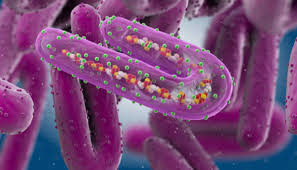
- 08 Oct 2024
In News:
- Definition:
- Marburg virus is one of the deadliest pathogens known to infect humans, causing severe hemorrhagic fever.
- Current Situation in Rwanda:
- Rwanda reported its first Marburg case late last month.
- At least 46 individuals have been infected, with 12 reported deaths.
- Approximately 80% of infections are among medical workers.
- The outbreak poses a significant threat to Rwanda’s fragile healthcare system, which has only 1,500 doctors for over 13 million people.
Characteristics of Marburg Virus
- Deadliness:
- Marburg virus disease (MVD) has case fatality rates ranging from 24% to 88%, depending on the strain and case management.
- The first outbreak occurred in Marburg, Germany, in 1967, with subsequent outbreaks primarily in Africa.
- Family:
- Marburg belongs to the filovirus family, which includes Ebola.
- Both viruses are clinically similar and can cause high-fatality outbreaks.
Transmission
- Initial Infection:
- Human infections initially occurred through prolonged exposure to mines or caves inhabited by Rousettus bats (notably the Egyptian fruit bat).
- Human-to-Human Transmission:
- MVD spreads directly through contact with blood and bodily fluids of infected individuals.
- Indirect transmission can occur via contaminated surfaces and materials (bedding, clothing).
- Risk for Medical Workers:
- Medical workers treating MVD cases are frequently infected, especially when infection control measures are inadequate.
Symptoms of Marburg Virus Disease (MVD)
- Incubation Period: Symptoms can appear 2 to 21 days after infection.
- Initial Symptoms: High fever, Severe headache, Muscle ache, Watery diarrhea, Abdominal pain and cramping, Vomiting
- Hemorrhagic Symptoms:
- Many patients develop bleeding from various sites, including the digestive system (fresh blood in feces and vomit), nose, gums, and vagina.
- Fatalities often occur due to severe blood loss and shock, typically 8 to 9 days after symptom onset.
Prevention and Treatment
- Current Status:
- No approved vaccines or specific treatments exist for MVD.
- Supportive Care:
- Rehydration (oral or intravenous fluids) and symptom management improve survival rates.
- Experimental Treatments:
- Rwanda is seeking experimental vaccines and treatments to address the outbreak.
- The US-based Sabin Vaccine Institute provided 700 doses of an experimental Marburg vaccine for healthcare professionals on the frontlines.
Genome Editing and Hereditary Cancers
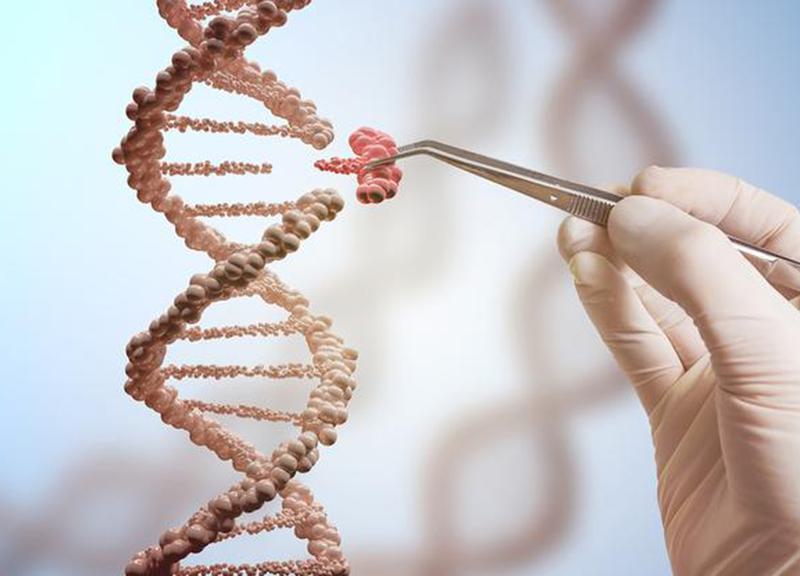
- 08 Oct 2024
In News:
The International Agency for Research on Cancer’s estimates of the burden of 36 cancers in 185 countries suggest one in five individuals has a lifetime risk of developing cancer.
- Impact of CRISPR on Cancer Research:
- CRISPR screens have revolutionized the study of BRCA genes through high-throughput functional genetic analysis.
- Researchers use CRISPR-Cas9 to create specific mutations in BRCA genes, studying their effects on DNA repair and cancer development.
- Cancer Statistics:
- One in five individuals has a lifetime risk of developing cancer (International Agency for Research on Cancer).
- In 2022, there were approximately 20 million new cancer cases and 9.74 million cancer-related deaths; projections suggest these could rise to 32 million new cases and 16 million deaths by 2045, with Asia potentially accounting for half of the cases.
- Genetic Mutations and Inheritance:
- All cancers stem from genetic mutations; about 10% of cancer cases may involve inherited mutations.
- Specific inherited mutation prevalence:
- 20% in ovarian cancer patients.
- 10% in breast, colorectal, lung, and prostate cancers.
- 6% in cervical cancer.
- BRCA Genes Overview:
- The BRCA1 and BRCA2 genes, discovered in 1994 and 1995, are crucial for understanding hereditary cancer syndromes.
- Mutations in BRCA genes significantly increase the risk of breast, ovarian, and prostate cancers.
- BRCA mutations are estimated to occur in 1 in 400 individuals, with higher prevalence (1 in 40) among Ashkenazi Jews due to genetic bottlenecks and founder effects.
- Importance of Genetic Testing:
- Testing for BRCA mutations helps identify individuals at higher risk, enabling personalized prevention strategies such as increased surveillance or preventive surgery.
- The American Society of Clinical Oncology recommends testing for 15 genes related to breast and ovarian cancer risk.
- Targeted Therapies:
- PARP inhibitors represent a new class of chemotherapy drugs effective for cancers with BRCA mutations.
- Clinical trials show promising results, especially when combined with platinum-based chemotherapy.
- Advancements in Understanding Cancer Genes:
- CRISPR technology has improved our understanding of cancer-related genes, enabling researchers to study the effects of specific mutations.
- Studies have identified how different mutations influence responses to therapies like PARP inhibitors.
- Recent Research Findings:
- Research from the Wellcome Sanger Institute identified over 3,000 genetic changes in the RAD51C gene that could significantly increase breast and ovarian cancer risk.
- Variants disrupting RAD51C function can increase ovarian cancer risk six-fold and aggressive breast cancer risk four-fold.
- Risk Spectrum:
- Genetic risk is a spectrum based on how mutations affect protein function.
- Large-scale variant analysis is vital for personalized medicine and cancer prevention.
- Role of Population Studies:
- Population prevalence studies help identify hereditary cancer risks and inform genetic screening for at-risk individuals.
- Early cancer detection allows for better healthcare decisions and potential preventive therapies.
- Goals for Cancer Management:
- The ultimate aim is to reduce cancer morbidity and mortality, leading to healthier lives for individuals and families.
Nobel Prize in Physiology or Medicine 2024: MicroRNA Research
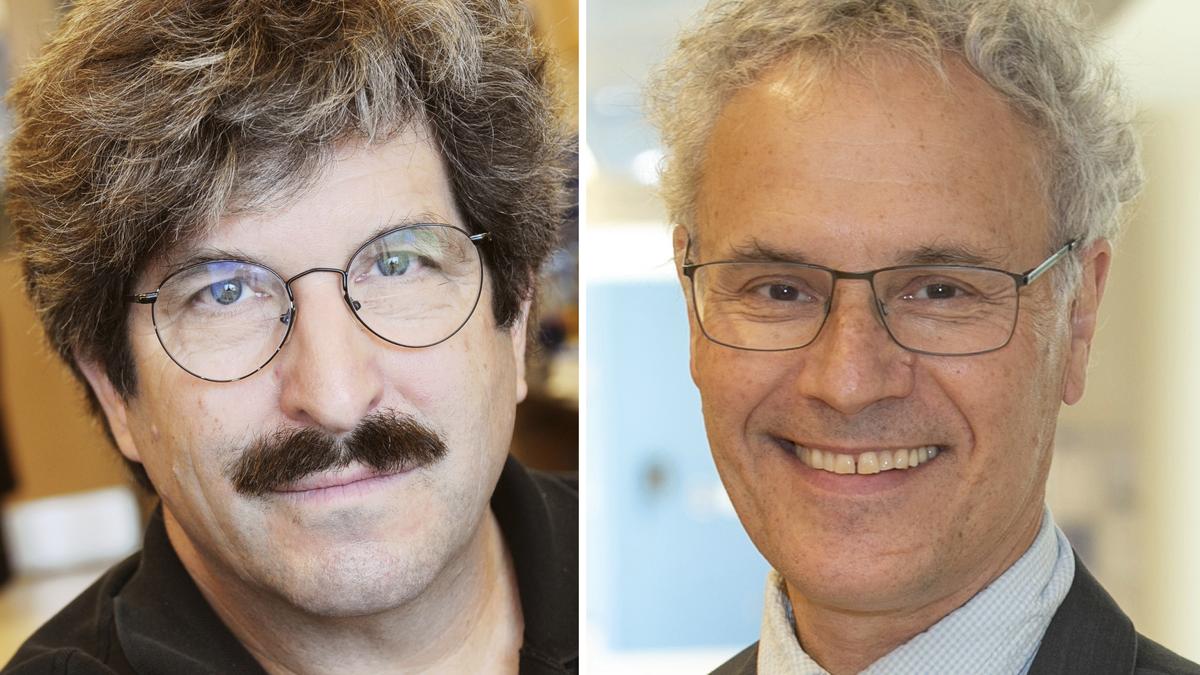
- 08 Oct 2024
Overview
The 2024 Nobel Prize in Physiology or Medicine was awarded to Victor Ambros and Gary Ruvkun for their groundbreaking discovery of microRNA and its crucial role in post-transcriptional gene regulation. This award highlights their individual contributions to understanding how microRNAs influence gene expression, significantly advancing the field of molecular biology.
What are MicroRNAs?
MicroRNAs (miRNAs) are small, non-coding RNA molecules typically 19-24 nucleotides long. They regulate protein production by interacting with messenger RNA (mRNA), ultimately influencing how much protein is synthesized from genetic information.
The Process of Gene Regulation
Gene expression involves two primary steps:
- Transcription: DNA is copied into mRNA in the nucleus.
- Translation: mRNA is translated into proteins by ribosomes with the help of transfer RNA (tRNA).
MicroRNAs play a critical role in regulating this process, particularly after transcription, by silencing mRNA and thereby controlling protein production.
Pioneering Research
Background
In the late 1980s, Ambros and Ruvkun utilized the model organism Caenorhabditis elegans, a small roundworm, to explore developmental processes. They focused on mutant strains, lin-4 and lin-14, which displayed abnormal development.
Key Discoveries
- Victor Ambros: Ambros cloned the lin-4 gene and discovered that it produced a short RNA molecule that did not code for proteins. This finding suggested that lin-4 could inhibit lin-14’s activity.
- Gary Ruvkun: Ruvkun investigated the regulation of the lin-14 gene and determined that lin-4 did not prevent the production of lin-14 mRNA. Instead, it inhibited protein production later in the gene expression process. He identified crucial segments in lin-14 mRNA essential for its inhibition by lin-4.
Collaborative Findings
Their subsequent experiments demonstrated that lin-4 microRNA binds to lin-14 mRNA, effectively blocking the production of lin-14 protein. Their findings were published in 1993 and laid the foundation for the understanding of microRNA.
Impact and Recognition
Initially, the significance of their discoveries was not widely recognized, as it was thought that microRNA regulation was specific to C. elegans. However, Ruvkun’s later identification of the let-7 gene, a microRNA found in various animal species, broadened the understanding of microRNAs' universal role in gene regulation.
Current Understanding
Today, it is known that humans possess over a thousand genes that code for different microRNAs. These molecules are crucial in regulating gene expression across multicellular organisms.
Applications and Future Directions
MicroRNAs can fine-tune gene expression, influencing various cellular functions despite similar genetic backgrounds. Abnormal microRNA regulation has been linked to diseases such as cancer and genetic disorders. While the Nobel Committee acknowledged that practical applications of miRNA research are still developing, understanding these molecules is vital for future research and therapeutic advancements.
Doddalathur Megalithic Burial Site
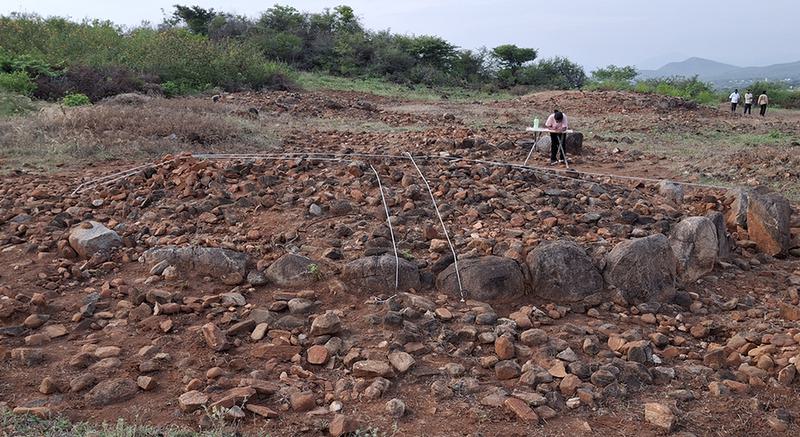
- 07 Oct 2024
In News:
A team of history and archaeology scholars and students from the University of Mysore have embarked on an excavation of megalithic burial sites in Chamarajanagar district.
- Location: Doddalathur village, Hanur taluk, Chamarajanagar district, situated in a valley by the Male Mahadeshwara Hill ranges.
- Team: A group of history and archaeology scholars and students from the University of Mysore, in collaboration with the Mythic Society, Bengaluru.
- Excavation Focus: Exploration of megalithic burial sites corresponding to the Iron Age (approximately 1200 BC to 300 CE).
- Site Features:
- Burials consist of circles made of large boulders, referred to as "megalithic."
- A small hillock is located to the west of the village.
- Historical Significance:
- The site was discovered by C. Krishnamurti of the Archaeological Survey of India in 1961.
- Originally contained over 1,000 burials, many of which have been lost due to agricultural expansion and development.
- Despite disturbances, many burials remain intact and are considered suitable for excavation.
- Goals of the Project:
- To enhance understanding of megalithic-Iron Age culture in southern Karnataka's hilly regions.
- To provide practical field training for archaeology students.
Maritime Exercise Malabar 2024
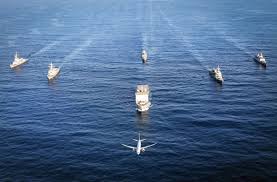
- 07 Oct 2024
In News:
Maritime Exercise Malabar 2024, Commencing at Visakhapatnam on 08 Oct Hosted by India, USA, Australia and Japan in Participation.
Background
- Origins: Initiated in 1992 as a bilateral naval drill between the United States and Indian Navy.
- Evolution: Has grown into a key multilateral exercise aimed at enhancing interoperability and addressing maritime challenges in the Indian Ocean and Indo-Pacific region.
Participating Naval Assets
- India: Various platforms, including:
- Guided missile destroyers
- Multi-purpose frigates
- Submarines
- Fixed-wing maritime reconnaissance aircraft
- Fighter aircraft and helicopters
- Australia:
- HMAS Stuart (Anzac Class Frigate)
- MH-60R helicopter
- P-8 Maritime Patrol Aircraft
- United States:
- USS Dewey (Arleigh Burke-Class Destroyer)
- Integral helicopter
- P-8 Maritime Patrol Aircraft
- Japan:
- JS Ariake (Murasame-class Destroyer)
Focus Areas of the Exercise
- Operational Enhancements:
- Discussions on special operations
- Surface, air, and anti-submarine warfare
- Subject Matter Expert Exchange (SMEE)
- Maritime Operations:
- Anti-submarine warfare
- Surface warfare
- Air defense exercises
- Emphasis: Improving situational awareness in the maritime domain.
Special Events
- Distinguished Visitors’ Day: Scheduled for October 9, 2024.
- Hosted by Vice Admiral Rajesh Pendharkar, Flag Officer Commanding-in-Chief, Eastern Naval Command.
- Joint Press Conference: Co-chaired by heads of delegations from all participating nations during the Harbour Phase.
Significance
- Comprehensive Exercise: Malabar 2024 is expected to be the most detailed edition to date, featuring complex operational scenarios and enhanced cooperation among the naval forces of the participating countries.GS Paper
DefConnect 4.0
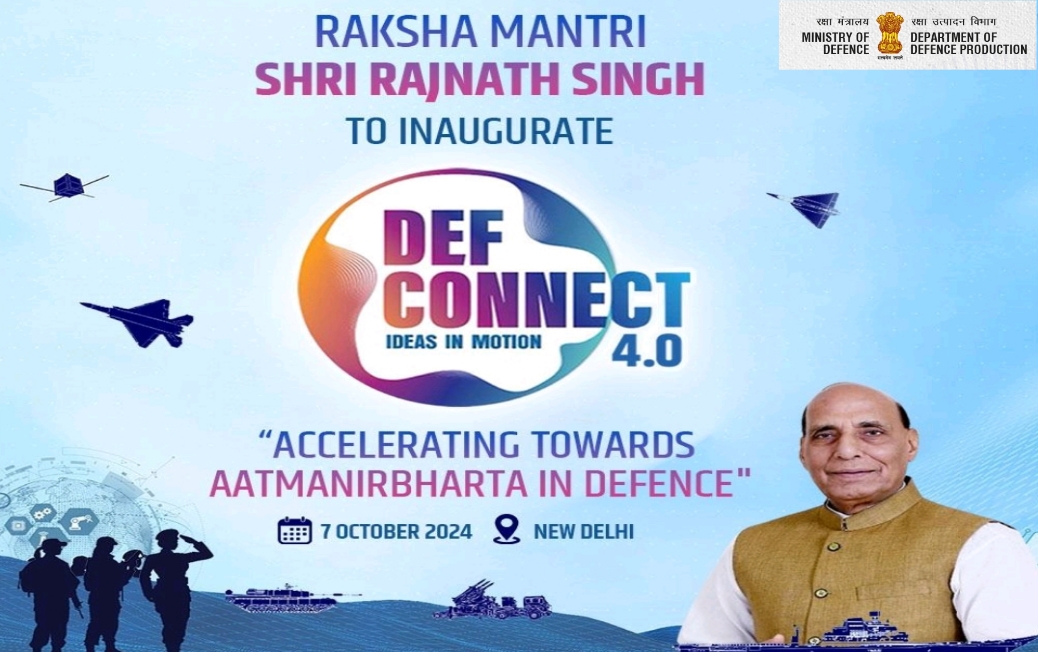
- 07 Oct 2024
In News:
- DefConnect 4.0 was inaugurated by Union Defence Minister Rajnath Singh on October 7, 2024, at Manekshaw Centre, Delhi Cantonment.
- Organizer: Hosted by Innovations for Defence Excellence - Defence Innovation Organisation (iDEX-DIO) under the Department of Defence Production, Ministry of Defence.
Purpose and Focus
- Advancing Indigenous Innovation: Aims to enhance India’s defense ecosystem by promoting self-reliant defense technologies.
- Participants: Involves Armed Forces, Defence Public Sector Undertakings (DPSUs), start-ups, MSMEs, academia, incubators, investors, and policymakers.
Technology Showcase
- Exhibitions: iDEX innovators showcased cutting-edge technologies, products, and capabilities.
- Collaboration and Dialogue: Encourages partnerships and discussions to drive defense innovation and long-term collaborations.
Special Sessions
- Budget Insights: Focused on key takeaways from recent budget announcements impacting the defense innovation ecosystem.
- Semiconductor Domain: Highlighted initiatives and opportunities within the semiconductor sector.
Path Forward: Vision for 2047
- Viksit Bharat Goal: Aligns with India’s vision of becoming a global leader in defense innovation by 2047.
- Government Initiatives: Supports local talent and indigenous solutions through programs like iDEX.
iDEX Impact
- Defence India Start-up Challenges: 11 editions launched, garnering over 9,000 applications.
- Collaborations: Engages with over 450 start-ups/MSMEs on significant defense projects.
- Contribution to Self-Reliance: Supports the goal of achieving self-reliance in the defense and aerospace sectors.
India’s Tripartite Agreement
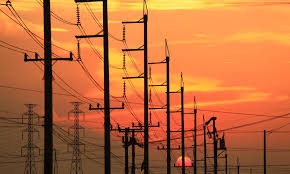
- 07 Oct 2024
In News:
Nepal, India, and Bangladesh have signed a tripartite agreement to facilitate cross-border electricity trade, enabling Nepal to export surplus electricity to Bangladesh via India.
Key Details of the Agreement
- Export Period: The agreement allows for electricity exports from June 15 to November 15 each year.
- Initial Export Volume: In the first phase, Nepal will export 40 MW of hydroelectricity to Bangladesh through Indian territory.
- Electricity Rate: The fixed rate per unit of electricity is set at 6.4 cents.
- Projected Revenue: Nepal is expected to earn approximately $9.2 million annually from this trade.
This agreement aims to enhance regional cooperation in energy trade and support sustainable development in the participating countries.
Increasing Frequency of Typhoons in Southeast Asia

- 07 Oct 2024
In News:
Overview of Typhoons
- Definition: A typhoon is a type of cyclone with wind speeds of 119 km/h or more, forming over warm ocean waters near the equator.
- Mechanism: As warm, moist air rises from the ocean, it creates a low-pressure system, leading to the characteristic circular wind patterns: anticlockwise in the Northern Hemisphere and clockwise in the Southern Hemisphere.
Recent Typhoon Events
- Typhoon Yagi: The most powerful tropical cyclone in Asia in 2024, with peak winds of 260 km/h. It caused significant destruction across Myanmar, Vietnam, Laos, and Thailand, displacing around 631,000 people and resulting in over 500 fatalities.
- Typhoon Bebinca: Reached wind speeds of 151 km/h, classified as a Category 1 storm, impacting eastern China with heavy rainfall and forcing evacuations for over 414,000 residents.
- Typhoon Shanshan: Affected Japan, bringing severe weather conditions.
Why are Typhoons more frequent?
- Rising Sea Surface Temperatures:
- Global warming has raised ocean temperatures, providing more energy for typhoon formation and intensification.
- Atmospheric Circulation Changes:
- Alterations in patterns, such as the weakening of the Walker Circulation, affect the frequency and paths of typhoons.
- El Niño and La Niña Effects:
- The El Niño-Southern Oscillation significantly influences typhoon activity. El Niño years often lead to increased typhoon occurrences in Southeast Asia, while La Niña can enhance cyclone activity in the Western Pacific.
- Increased Atmospheric Moisture:
- Higher global temperatures result in more evaporation, adding moisture to the atmosphere, which fuels stronger storms and increases rainfall intensity.
- Geographical Vulnerability:
- Southeast Asia’s location near warm ocean currents makes it a hotspot for typhoon activity, particularly along its extensive coastlines.
- Marine Heat Waves:
- Climate change has led to more frequent marine heat waves, causing extreme ocean warming, which contributes to intensified storms.
- Weaker Land-Sea Temperature Gradients:
- Changes in temperature differences between land and sea can prolong storm duration and severity.
- Urbanization and Environmental Degradation:
- Rapid urban development and the destruction of coastal ecosystems, like mangroves, diminish natural barriers against storm impacts.
Humanitarian Impact and Response
- The increasing intensity and frequency of typhoons have precipitated severe humanitarian crises in affected regions. The need for international cooperation in disaster response has become critical, involving collaboration among governments, civil societies, and humanitarian organizations to provide aid and support for those affected.
- Understanding the multifaceted reasons behind the rising frequency of typhoons is crucial for developing effective strategies to mitigate their impacts and enhance community resilience in Southeast Asia.
Mpox Diagnostic Test
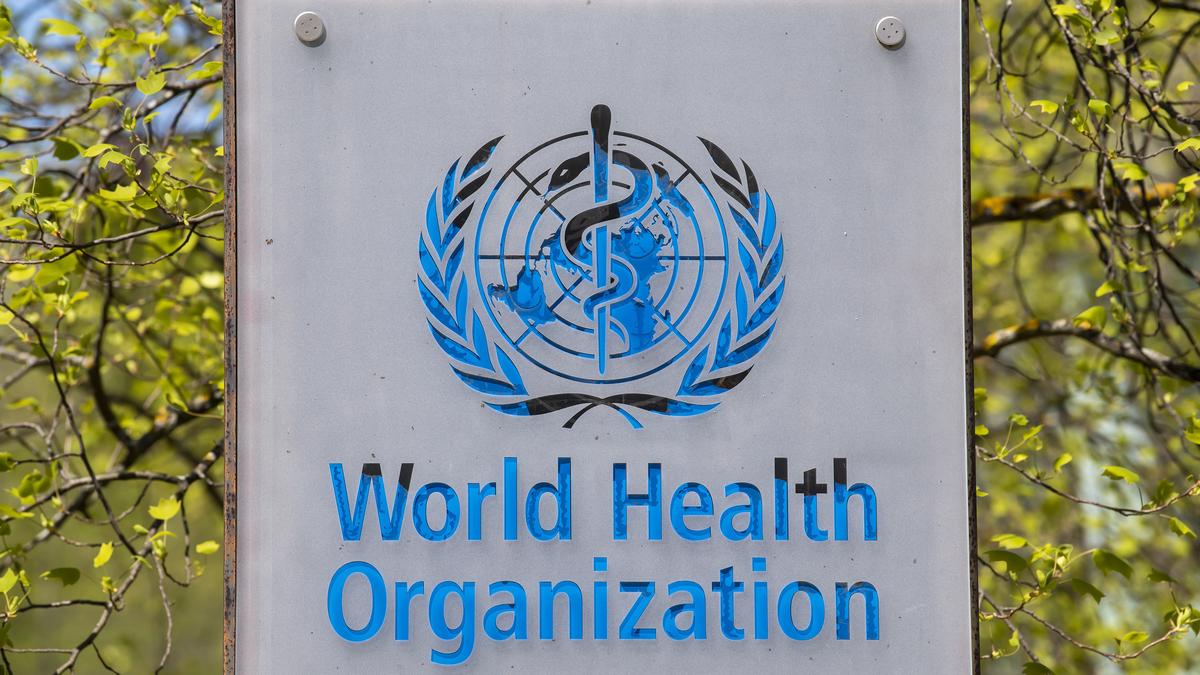
- 06 Oct 2024
In News:
In an important move to improve global access to Mpox testing, the World Health Organization (WHO) has listed the first Mpox in vitro diagnostic under its Emergency Use Listing procedure.
- Context of Mpox Outbreak:
- Since January 2022, mpox has spread to 121 countries.
- By September 2024, there were 103,048 confirmed cases and 229 deaths.
- Diagnostic Test Approval:
- WHO approved Abbott Laboratories’ PCR diagnostic test, Alinity MPXV assay, for emergency use.
- This test detects mpox virus DNA from skin swabs, intended for trained lab personnel.
- Emergency Use Listing (EUL) Procedure:
- Allows WHO to expedite approval of unlicensed vaccines, treatments, and diagnostic tests during public health emergencies.
- In August, WHO called for manufacturers to submit diagnostic tools to aid low-income countries.
- Current Testing Landscape:
- Limited testing capacity has hindered response, especially in Africa, where over 30,000 suspected cases were reported in 2024.
- 35 laboratories in India are now equipped to test suspected mpox cases.
- Importance of Early Diagnosis:
- Early detection facilitates timely treatment and control of the virus, essential in outbreak areas.
- Characteristics of the Alinity MPXV Assay:
- Utilizes real-time PCR to detect mpox virus (clade I/II) DNA from lesion materials.
- Designed for skilled laboratory personnel familiar with PCR techniques.
- Ongoing Efforts:
- WHO is reviewing three additional mpox diagnostic tests and negotiating with more companies to enhance availability.
- Efforts include addressing the spread of a new variant, clade Ib, which is affecting more women and children.
- Public Health Implications:
- Expanding access to diagnostics is vital for managing the mpox outbreak and protecting populations, particularly in underserved regions.
- WHO emphasizes the importance of quality-assured medical products in containing the virus spread.
Discovery of New Hammerhead Shark Species
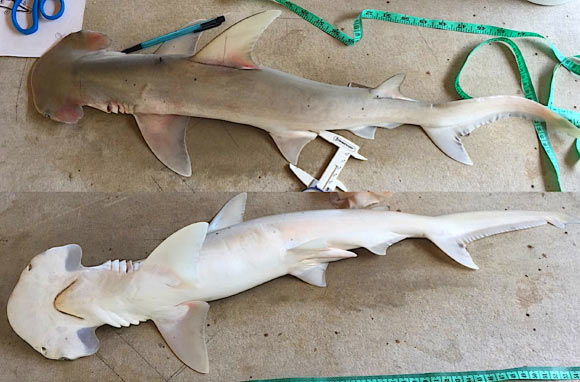
- 06 Oct 2024
In News:
A team of marine biologists led by a Florida International University researcher has described a new species of the shark genus Sphyrna from the Caribbean and the Southwest Atlantic.
- New Species: Named Sphyrna alleni (common name: shovelbill shark).
- Habitat: Found in coastal waters, estuaries, coral reefs, and seagrass beds from Belize to Brazil, with confirmed presence in:
- Caribbean: Belize, Panama, Colombia, Trinidad and Tobago.
- Southwestern Atlantic: Brazil.
- Characteristics:
- Small species, less than 1.5 m in length.
- Distinctive flat, shovel-shaped head lacking indentations on the anterior edge.
- Different from Sphyrna tiburo:
- More rounded anterior margin.
- Absence of lobules on the posterior margin.
- Higher precaudal vertebral count (80-83 vs. ~73 in Sphyrna tiburo).
- Evolutionary Insight: Possible sister lineage to Sphyrna vespertina, suggesting Sphyrna tiburo diverged later.
- Conservation Status:
- Hammerhead sharks are highly threatened, primarily due to overfishing.
- Most species, except Sphyrna gilberti, are listed as Vulnerable, Endangered, or Critically Endangered by the IUCN.
- Current IUCN assessment of Sphyrna tiburo as Globally Endangered may need reevaluation considering the new findings.
- Management Recommendations:
- Increased management efforts needed for Sphyrna alleni, particularly restrictions on gillnets and trawls, which significantly impact this species.
- Publication: Findings reported in the journal Zootaxa.
Shanghai Cooperation Organisation (SCO)
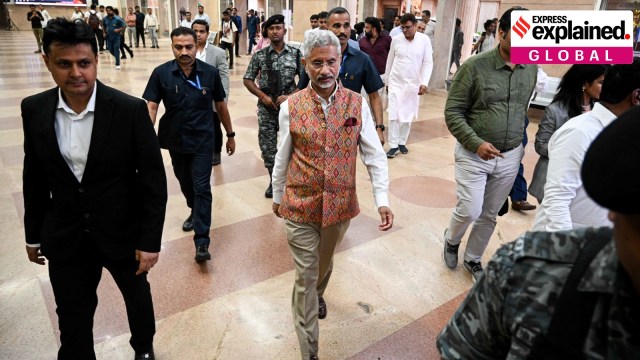
- 06 Oct 2024
In News:
- External Affairs Minister S. Jaishankar will attend the Shanghai Cooperation Organisation (SCO) Heads of Government meeting in Islamabad on October 15-16, 2023.
- This marks the first visit by an Indian External Affairs Minister to Pakistan since Sushma Swaraj in 2015.
Context of the Visit:
- The visit is primarily for the SCO meeting, reflecting India's focus on regional cooperation mechanisms.
- No bilateral meetings have been scheduled as of now, although Jaishankar's presence is based on "reciprocity" following Pakistan's participation in an earlier SCO meeting in India.
SCO Overview:
- Established on June 15, 2001, in Shanghai; evolved from the "Shanghai Five" formed in 1996.
- Original members included China, Russia, Kazakhstan, Kyrgyzstan, Tajikistan, and later Uzbekistan.
- Current members: India, Pakistan, Iran, and others, with Afghanistan and Mongolia holding Observer Status.
Significance of the SCO:
- Focuses on security cooperation, primarily among Asian nations.
- Seen as an alternative to Western international frameworks, especially with heavyweights like Russia and China positioning against US influence.
- India's inclusion alongside Pakistan in 2017 reflects the geopolitical jostling between Russia and China.
Geopolitical Dynamics:
- While SCO promotes cooperation, underlying tensions remain, particularly between India and Pakistan, and India and China.
- The organization has limited tangible outcomes due to member states' rivalries and differing interests.
India's Objectives in SCO:
- Provides a platform for enhancing relations with Central Asian countries, addressing common security concerns.
- Involves participation in the Regional Anti-Terrorist Structure (RATS) to combat terrorism and drug trafficking.
India-Pakistan Relations:
- Jaishankar's visit is seen in light of ongoing tensions; India shares difficult relations with both China and Pakistan.
- India canceled a summit under its presidency last year, opting for a virtual format instead.
Implications for Regional Politics:
- The visit comes shortly after the Jammu and Kashmir Assembly elections, with potential implications for India-Pakistan ties.
- Despite attending the SCO meeting, there is little expectation of progress in the India-Pakistan peace process.
- Recent statements from the Indian government criticize Pakistan for hosting wanted individuals, reflecting ongoing diplomatic tensions.
Strategic Importance:
- Participation in SCO allows India to engage with key regional players, including Russia, China, and Central Asian leaders.
- The meeting serves as preparation for India's participation in upcoming BRICS discussions, emphasizing the interconnectedness of these groupings.
Global Strategic Preparedness, Readiness and Response Plan (SPRP)
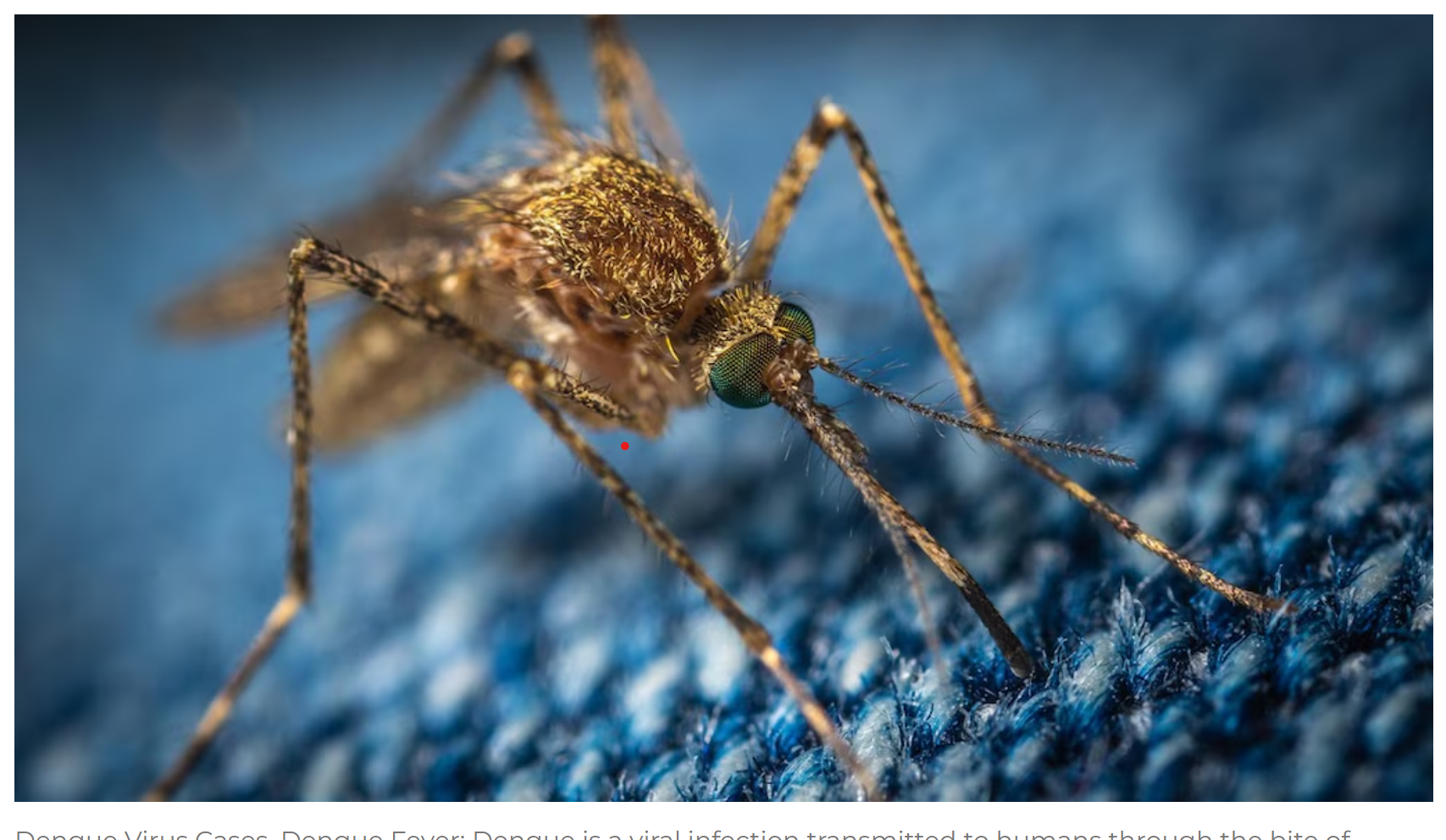
- 06 Oct 2024
In News:
The World Health Organization (WHO) launched the Global Strategic Preparedness, Readiness and Response Plan (SPRP) to tackle dengue and other Aedes-borne arboviruses.
Key Highlights:
- Purpose:
- Tackle dengue and other Aedes-borne arboviruses (e.g., Zika, chikungunya).
- Reduce disease burden, suffering, and deaths globally.
- Background:
- Rapid geographical spread of dengue due to:
- Unplanned urbanization.
- Poor water, sanitation, and hygiene practices.
- Climate change.
- Increased international travel.
- An estimated 4 billion people at risk, projected to increase to 5 billion by 2050.
- Significant increase in dengue cases; 12.3 million reported by August 2023, nearly double the total from 2022.
- Rapid geographical spread of dengue due to:
- Global Impact:
- Dengue endemic in over 130 countries, particularly affecting:
- South-East Asia.
- Western Pacific.
- Americas.
- Africa facing compounded health crises due to conflicts and disasters.
- Dengue endemic in over 130 countries, particularly affecting:
- Emergency Grade: WHO has graded the global dengue situation as grade 3, the highest emergency level.
- Key Components of SPRP:
- Emergency Coordination: Leadership and coordination activities for outbreak response.
- Collaborative Surveillance: Tools for early detection and control, including strengthened surveillance and epidemiological analysis.
- Community Protection: Engaging communities in local prevention and response measures.
- Safe and Scalable Care: Ensuring resilient health services for adequate patient care.
- Access to Countermeasures: Promoting research for better treatments and vaccines.
- Implementation Timeline: Over one year until September 2025, requiring US$ 55 million for health preparedness and response efforts.
- Alignment with Other Initiatives:
- Supports the Global Vector Control Response 2017-2030.
- Linked to the Global Arbovirus Initiative (2022) targeting mosquito-borne diseases.
- Call to Action:
- Encourages collaboration among government agencies, healthcare providers, and communities.
- Emphasizes the need for innovation and improved vector control strategies.
This plan aims to mobilize a coordinated response to the escalating threat of dengue and related diseases, emphasizing the role of all stakeholders in public health.
Very Short Range Air Defence System (VSHORAD)

- 06 Oct 2024
In News:
DRDO completed development trials of the 4th Generation miniaturised Very Short Range Air Defence System (VSHORAD).
Key Details:
- Trial Location: Conducted at Pokhran Field Firing Ranges, Rajasthan.
- Importance: VSHORAD addresses the Indian Army's need to replace legacy Igla systems, with past efforts making little progress.
- Recent Procurement: Army acquired small volumes of Igla-S through emergency procurement.
- Production Collaboration: Two production agencies involved in Development cum Production Partner (DcPP) mode for VSHORAD missiles.
- Trial Dates: Successful tests held on October 3 and 4, 2024.
Key Performance Metrics:
- Maximum Range and Altitude: Interception against high-speed aerial targets.
- Hit-to-Kill Capability: Demonstrated success in engaging targets in various scenarios (approaching, receding, crossing).
System Overview:
- Type: Fourth generation man-portable air defence system (MANPADS).
- Developer: Research Centre Imarat (RCI) in collaboration with other DRDO labs and industry partners.
Capabilities:
- Designed to neutralise low altitude aerial threats at short ranges.
- Features include Dual-band IIR Seeker, miniaturised Reaction Control System, and integrated avionics.
- More portable and lightweight than existing missile systems in the Army's arsenal.
Pradhan Mantri-Kisan Samman Nidhi (PM-KISAN) Scheme
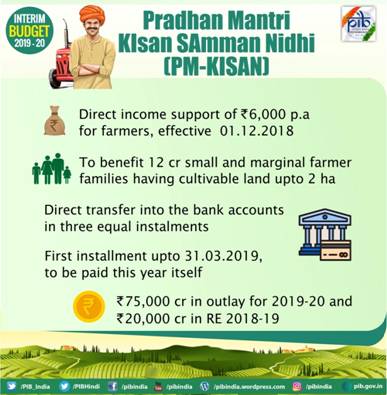
- 05 Oct 2024
In News:
The Prime Minister of India is set to announce the 18th installment of the PM-KISAN scheme in Washim, Maharashtra. This will benefit over 9.4 crore farmers nationwide, with the government allocating more than ?20,000 crore for this initiative.
About PM-KISAN
The Pradhan Mantri Kisan Samman Nidhi (PM-KISAN) is a Central Sector Direct Benefit Transfer (DBT) initiative aimed at providing income support to farmers.
Key Features:
- Financial Assistance: The scheme offers ?6,000 annually to small and marginal farmer families, distributed in three equal installments.
- Eligibility: Initially targeted at families with up to 2 hectares of cultivable land, the scope was later broadened to include all farmer families, regardless of land size.
- Family Definition: The definition of a family under this scheme includes the husband, wife, and minor children.
- Identification of Beneficiaries: State governments and Union Territory administrations are responsible for identifying eligible farmer families based on the scheme's guidelines.
- Direct Transfers: The funds are directly credited to the beneficiaries' bank accounts.
Exclusion Criteria
Certain categories of individuals are not eligible for benefits under the PM-KISAN scheme, including:
- Institutional Land-holders: Those who hold land under institutional ownership.
- High-Profile Government Officials: This includes former and current holders of constitutional posts, ministers, members of legislative assemblies, mayors, and district panchayat chairpersons.
- Government Employees: Serving or retired officers and employees of central or state government ministries and departments are excluded.
- Pensioners: Retired pensioners receiving a monthly pension of ?10,000 or more, as well as those in the previously mentioned categories, are also ineligible.
- Income Tax Filers: Individuals who have paid income tax in the last assessment year.
- Registered Professionals: Professionals such as doctors, engineers, lawyers, chartered accountants, and architects who are engaged in practice and registered with professional bodies.
India's BRAP 2024 Alignment with World Bank's B-READY Index
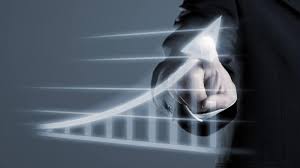
- 05 Oct 2024
In News:
- The Indian government plans to align indicators of the BRAP 2024 index with the World Bank’s B-READY index to enhance business readiness rankings.
- State Involvement: States have been instructed to address gaps identified in the B-READY evaluations to improve their global rankings.
- Indicators Included: The upcoming 2024 BRAP rankings, prepared by the Department for Promotion of Industry and Internal Trade, will incorporate specific indicators from the B-READY index.
- Enterprise Survey Launch: An enterprise survey for the B-READY index in India is set to start in October, with support from the Ministry of Statistics and Programme Implementation.
- Participation Timeline: Although B-READY rankings will commence in 2024, India’s participation will begin in 2026. The initial rankings will cover 54 countries, expanding to 120 in 2025 and 180 in 2026.
- Successor to Previous Rankings: The B-READY index replaces the Ease of Doing Business rankings, which were discontinued in 2021 due to irregularities. It considers a broader range of factors in its assessments.
- Benchmark for Global Institutions: The B-READY framework will serve as a benchmark for global financial institutions and multinational companies to evaluate a country’s regulatory and policy environment.
- Historical Improvement: India improved its Ease of Doing Business ranking from 142 in 2014 to 63 in 2020.
- Technical Understanding: A team of government officials is tasked with understanding the technical aspects of the B-READY index to formulate strategies for improving India’s score.
- Lifecycle Parameters: The new index tracks ten parameters throughout a firm's lifecycle, including business entry, utility services, and labor, focusing on real-world applications rather than just legal changes.
- Recent BRAP Rankings: The BRAP 2022 rankings were recently announced, with Andhra Pradesh and Kerala achieving the top positions.
Co-district Initiative
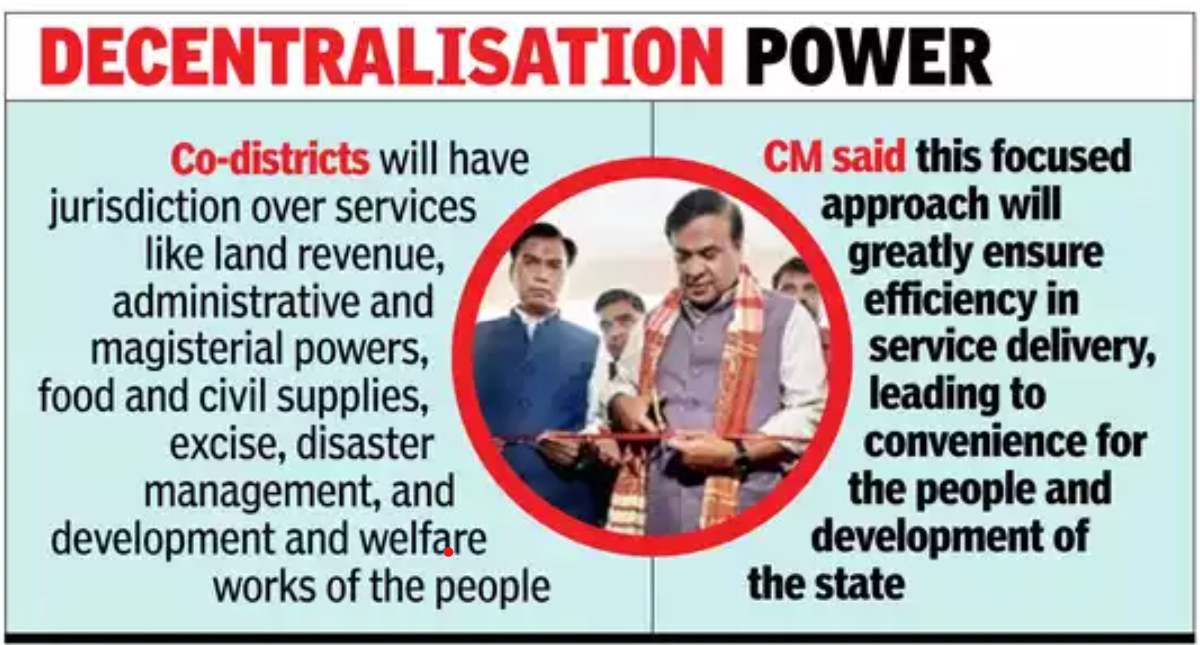
- 05 Oct 2024
In News:
Assam has launched an innovative administrative initiative by inaugurating 21 'co-districts' as part of its Phase 1 rollout, which began on Friday and will extend into Saturday, ultimately introducing a total of 39 co-districts. This new structure replaces the previous system of 24 civil sub-divisions, aiming to bring governance closer to the citizens.
About the Co-District Initiative
- Structure: Co-districts serve as smaller administrative units within the larger district framework, each headed by an Assistant District Commissioner.
- Objective: This unique initiative, the first of its kind in India, seeks to enhance accessibility to governance and address administrative challenges faced by district administrations.
- Scope: The government plans to establish co-district offices in all 126 assembly constituencies in Assam.
Functions and Powers
The co-districts will handle a variety of important functions, including:
- Land Revenue Matters: Managing land-related issues and revenue collection.
- Development and Welfare Work: Overseeing development projects and welfare programs.
- Excise and Disaster Management: Addressing excise-related matters and coordinating disaster response efforts.
- Administrative Control: Co-districts will have authority over all departmental activities within their jurisdiction.
- Magisterial Powers: Commissioners will be empowered to issue permissions for events and manage other administrative tasks.
- Routine Administrative Tasks: Responsibilities include issuing ration cards, caste certificates, and land sale permissions.
India-U.S. MoU on Critical Minerals Supply Chains
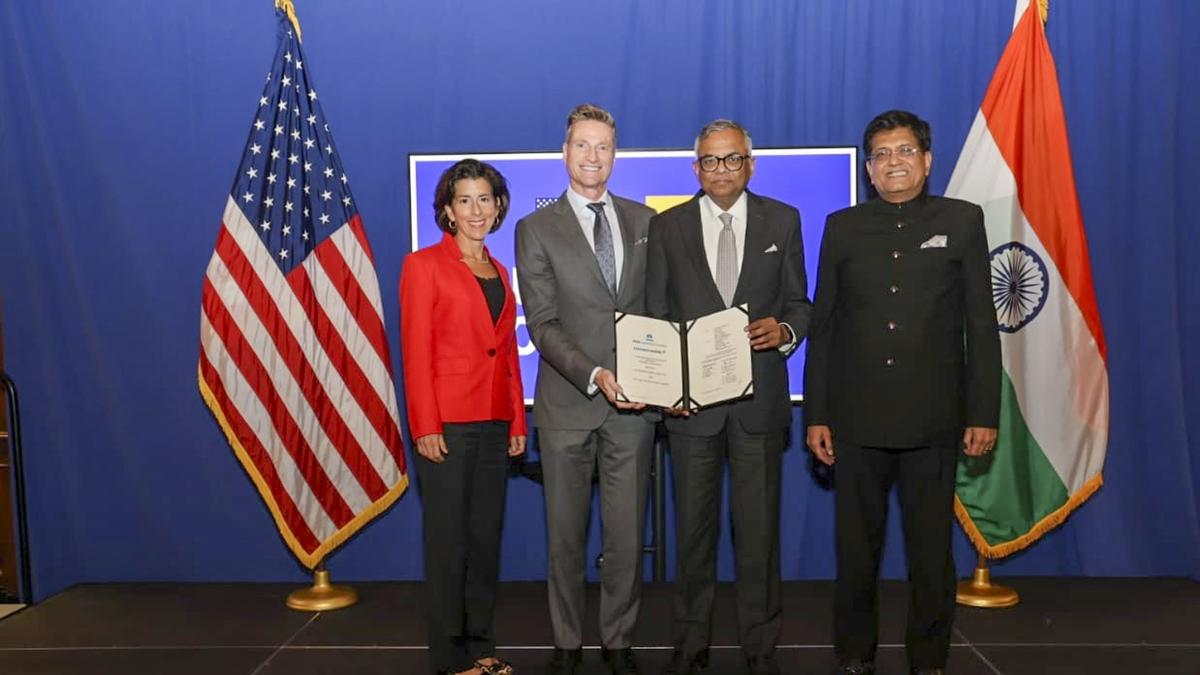
- 05 Oct 2024
In News:
- The sixth Commercial Dialogue took place in Washington on October 4, 2024, led by Indian Union Minister of Commerce Piyush Goyal and U.S. Commerce Secretary Gina Raimondo.
- MoU Signing: A day prior, the leaders signed a memorandum of understanding (MoU) aimed at expanding and diversifying critical minerals supply chains to enhance resilience.
- Focus Areas:
- Identification of equipment, services, policies, and best practices for the development of U.S. and Indian critical minerals, covering:
- Exploration
- Extraction
- Processing and refining
- Recycling and recovery
- Identification of equipment, services, policies, and best practices for the development of U.S. and Indian critical minerals, covering:
- Context: This agreement follows China's export restrictions on gallium and germanium, critical for the semiconductor industry, and its ban on technology related to rare earth magnets and critical materials extraction.
- Strategic Goals:
- Promote open supply chains, technology development, and investment flows for green energy.
- Explore collaboration with other mineral-rich countries, particularly in Africa and South America.
- Progress on Semiconductor Supply Chains:
- Continued efforts to establish resilient semiconductor supply chains since the previous MoU.
- Completion of a "readiness assessment" by the U.S. Semiconductor Industry Association and India Electronics Semiconductor Association.
- Commitment to foster investments, joint ventures, and technology partnerships.
- Innovation Handshake: Success of roundtables in San Francisco and New Delhi aimed at enhancing innovation ecosystems and startup collaboration.
- Strategic Clean Energy Partnership: Discussions from the EIN Roundtable in March 2024 informed the U.S.-India Strategic Clean Energy Partnership meeting.
- IPEF Supply Chain Agreement: Significant progress noted in the IPEF ministerial meeting, focusing on semiconductors, chemicals, and critical minerals, particularly batteries and healthcare products.
- Future Collaborations:
- Focus on expanding U.S. Department of Commerce presence in India with approximately 70 Foreign Commercial Service staff.
- Plans for a U.S. trade mission to India in March 2025 aimed at supporting U.S. SMEs owned by underserved communities.
- Domestic Solar Manufacturing Protection: India reinstated the Approved List of Models and Manufacturers (ALMM) order to protect local solar PV module production against cheaper imports from China.
- Economic Context:
- The Economic Survey 2023-24 highlights China's expanding manufacturing trade surplus and its restrictive actions affecting India's access to solar equipment.
- India’s Production Linked Incentive (PLI) schemes have invested over $4.5 billion to bolster clean energy manufacturing but require additional policies to safeguard these investments.
USCIRF Report on India: Key Highlights
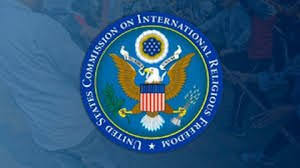
- 04 Oct 2024
In News:
The United States Commission on International Religious Freedom (USCIRF), a Washington DC-based bipartisan U.S. federal government agency, has released a country update on India, flagging “collapsing religious freedom conditions”.
- Agency Overview:
- The United States Commission on International Religious Freedom (USCIRF) is an independent, bipartisan U.S. federal commission established under the 1998 International Religious Freedom Act (IRFA).
- Its primary functions include reviewing global religious freedom violations, providing policy recommendations to U.S. leaders, and publishing annual reports.
- Current Concerns:
- USCIRF's latest report indicates a “collapse” in religious freedom conditions in India, particularly worsening throughout 2024, especially around national elections.
- Legal and Policy Changes:
- Strengthening of discriminatory legislation, including:
- State-level anti-conversion and anti-terrorism laws.
- Implementation rules for the 2019 Citizenship (Amendment) Act (CAA).
- Passage of a State-level Uniform Civil Code (UCC) Bill in Uttarakhand.
- Strengthening of discriminatory legislation, including:
- Violations and Incidents:
- Expropriation of Places of Worship:
- Authorities have facilitated the construction of Hindu temples on former mosque sites.
- Increased attacks on religious minorities, particularly following the consecration of the Ayodhya temple in January 2024.
- Targeting of Religious Minorities:
- Arrests of Christians accused of forced conversions under anti-conversion laws.
- Anti-cow slaughter laws exploited by vigilante groups to target Muslims, Christians, and Dalits, often with little to no legal repercussions for perpetrators.
- Expropriation of Places of Worship:
- Recommendations:
- USCIRF urges the U.S. State Department to designate India as a “Country of Particular Concern” due to severe violations of religious freedom.
About USCIRF
- Composition: Comprised of nine commissioners appointed by the U.S. President or Congressional leaders, supported by non-partisan staff.
- Objective: To monitor and recommend actions on religious freedom violations aligned with international human rights standards.
Indian push needed to end AIDS as a global health threat by 2030: UNAIDS

- 04 Oct 2024
In News:
The UNAIDS Director recently highlighted the crucial role India plays in the global fight against HIV/AIDS, asserting that without its significant contributions, achieving the Sustainable Development Goal of ending AIDS as a public health threat by 2030 is unlikely.
Understanding HIV/AIDS
- HIV (Human Immunodeficiency Virus) is a virus that attacks the immune system, specifically targeting CD4 cells, which diminishes the body's ability to combat infections and diseases.
- When HIV progresses to its most severe form, it is diagnosed as AIDS (Acquired Immunodeficiency Syndrome), characterized by a severely compromised immune system, leading to life-threatening infections and cancers.
- The virus is transmitted through contact with infected bodily fluids, including blood, semen, and breast milk. While there is currently no cure, antiretroviral therapy (ART) can effectively manage HIV and prevent its progression to AIDS.
India’s Progress in Combating HIV/AIDS
- From 2010 to 2023, India has made significant strides in reducing annual new HIV infections by 44%, surpassing the global average.
- Additionally, AIDS-related deaths in India have decreased by nearly 80% during the same period, also exceeding global trends. However, challenges persist, with approximately 68,000 new infections reported in 2023, translating to around 185 daily.
- The Global AIDS Strategy emphasizes the need for 80% of prevention services to be delivered by community-led organizations, which are essential for reaching key populations but require sufficient resources and support.
About UNAIDS
UNAIDS, established in 1996, coordinates global efforts to combat HIV/AIDS and supports those affected. Headquartered in Geneva, Switzerland, it unites the efforts of 11 UN organizations and works in collaboration with various global and national partners to end the AIDS epidemic by 2030.
Key aspects of UNAIDS include:
- Global Mandate: To coordinate responses, support countries in prevention and treatment, and advocate for human rights and equality in access to services.
- Targets: The "90-90-90" targets aimed for 2020 sought to ensure that 90% of people living with HIV were diagnosed, 90% of those diagnosed were on treatment, and 90% of those on treatment achieved viral suppression.
- Current Strategy: The 2021-2026 Global AIDS Strategy focuses on eliminating inequalities that drive HIV and aims to ensure that 30 million people are on treatment by 2025.
- Funding and Advocacy: Funded by governments, private foundations, and corporations, UNAIDS organizes key campaigns, including World AIDS Day, to raise awareness and promote advocacy.
PM Internship Scheme
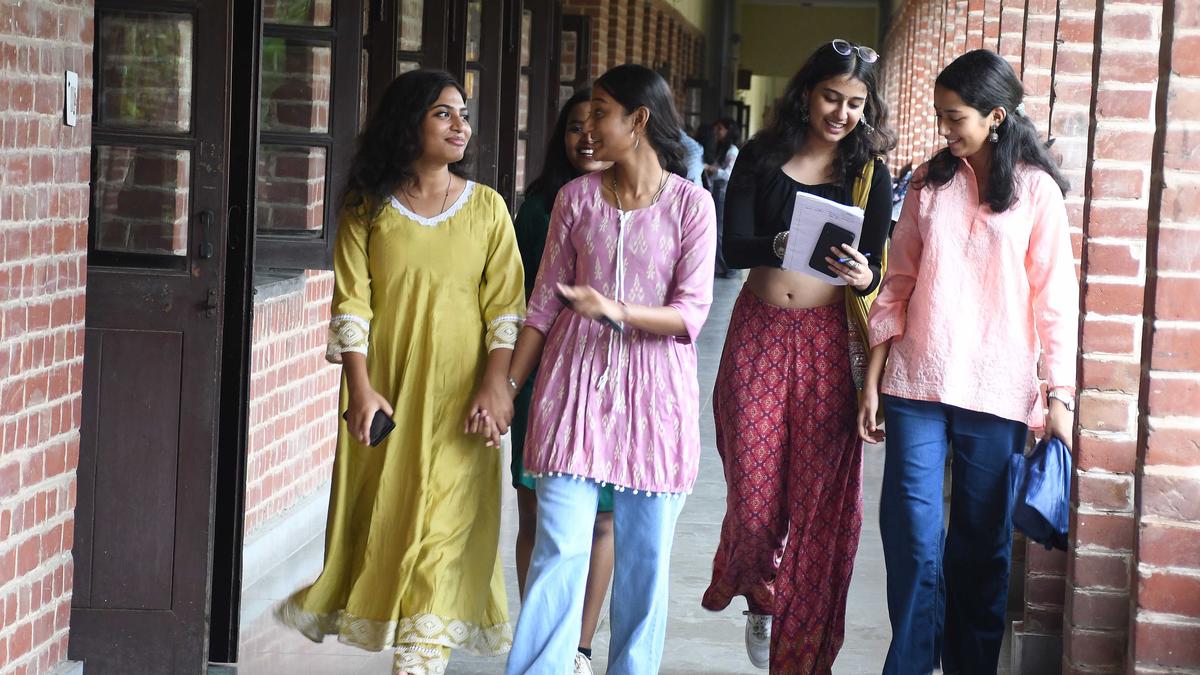
- 04 Oct 2024
In News:
The Prime Minister’s Internship Scheme, announced by Union Finance Minister Nirmala Sitharaman during her Budget speech on July 23, was launched on October 3. The PM Internship Scheme aims to provide internship opportunities to one crore youth in the top 500 companies over the next five years.
Companies will upload their internship positions, and candidates can submit applications starting October 12.
What is the Prime Minister’s Internship Scheme?
The PM Internship Scheme will enhance youth employability in India by offering them hands-on exposure to real-world business environments. The scheme represents a transformative opportunity to bridge the skills gap and drive sustainable growth in India.
A monthly stipend of ?4,500 will be provided to the interns from the central government via DBT (Direct Benefit transfer), with an additional ?500 offset provided by the company’s CSR fund.
Who is eligible for the PM internship scheme?
- Candidates aged between 21 and 24 years who are not engaged in full-time employment are eligible for the one-year internship programme.
- Internships are available to those who have passed class 10 or higher.
- Individuals from families with government jobs are excluded
- The scheme is not open to post-graduates
- A candidate who graduated from premier institutes such as IIT, IIM, or IISER, and those who have CA, or CMA qualification would not be eligible to apply for this internship.
- Anyone from a household that includes a person who earned an income of ?8 lakh or more in 2023-24, will not be eligible.
How to apply for the PM internship scheme?
- Interns can register in the portal and apply for internships. The portal, pminternship.mca.gov.in, is likely to be opened up for youngsters to enroll for consideration by companies on October 12. This window will be open till October 25 for the first batch of internships. Candidates must share and self-certify some data about their educational qualifications and residential pin codes.
- Candidates’ data will be matched with companies’ needs and locations using Artificial Intelligence tools, and a shortlist of candidates will then be generated for companies to consider.
- The portal is designed to streamline the application process and make candidate selection more transparent. Applicants can check the status of their applications in the portal once they have applied to the available posts.
What is the benefit of the scheme?
The scheme is to provide on-job training to youth and an exposure to real-life work environment. The scheme will also benefit the industry by creating a pipeline of skilled, work-ready youth who can be employed post-internship both in large as well as micro, small and medium enterprise.
National Mission on Edible Oils – Oilseeds (NMEO-Oilseeds)

- 04 Oct 2024
In News:
Cabinet Approves National Mission on Edible Oils – Oilseeds (NMEO-Oilseeds) (2024-25 to 2030-31).
Objective:
- Achieve self-reliance in edible oil production in seven years.
Financial Outlay:
- ?10,103 crore for the mission period.
Key Goals:
- Increase primary oilseed production from 39 million tonnes (2022-23) to 69.7 million tonnes by 2030-31.
- Boost domestic edible oil production to 25.45 million tonnes, meeting 72% of projected requirements.
Focus Areas:
- Enhance production of key oilseed crops: Rapeseed-Mustard, Groundnut, Soybean, Sunflower, Sesamum.
- Improve extraction efficiency from secondary sources (e.g., Cottonseed, Rice Bran).
Strategies:
- Promote high-yielding, high oil content seed varieties.
- Extend cultivation to rice fallow areas and encourage intercropping.
- Use advanced technologies like genome editing for seed development.
SATHI Portal:
- Launch of an online 5-year rolling seed plan for timely seed availability.
- Coordination with cooperatives, Farmer Producer Organizations (FPOs), and seed corporations.
Infrastructure Development:
- Establish 65 new seed hubs and 50 seed storage units.
- Develop over 600 Value Chain Clusters across 347 districts, covering over 1 million hectares annually.
Support for Farmers:
- Access to high-quality seeds, training on Good Agricultural Practices (GAP), and pest management advisory.
Environmental Benefits:
- Promote low water usage, improve soil health, and utilize crop fallow areas.
Background Context:
- India relies on imports for 57% of its edible oil demand.
- Previous initiatives include the National Mission on Edible Oils – Oil Palm (NMEO-OP) and significant increases in Minimum Support Price (MSP) for oilseeds.
- Imposition of 20% import duty on edible oils to protect local producers.
The NMEO-Oilseeds mission aims to enhance domestic oilseed production, reduce import dependency, and improve farmers' incomes while contributing to environmental sustainability.
Status of Classical Language: An Explainer
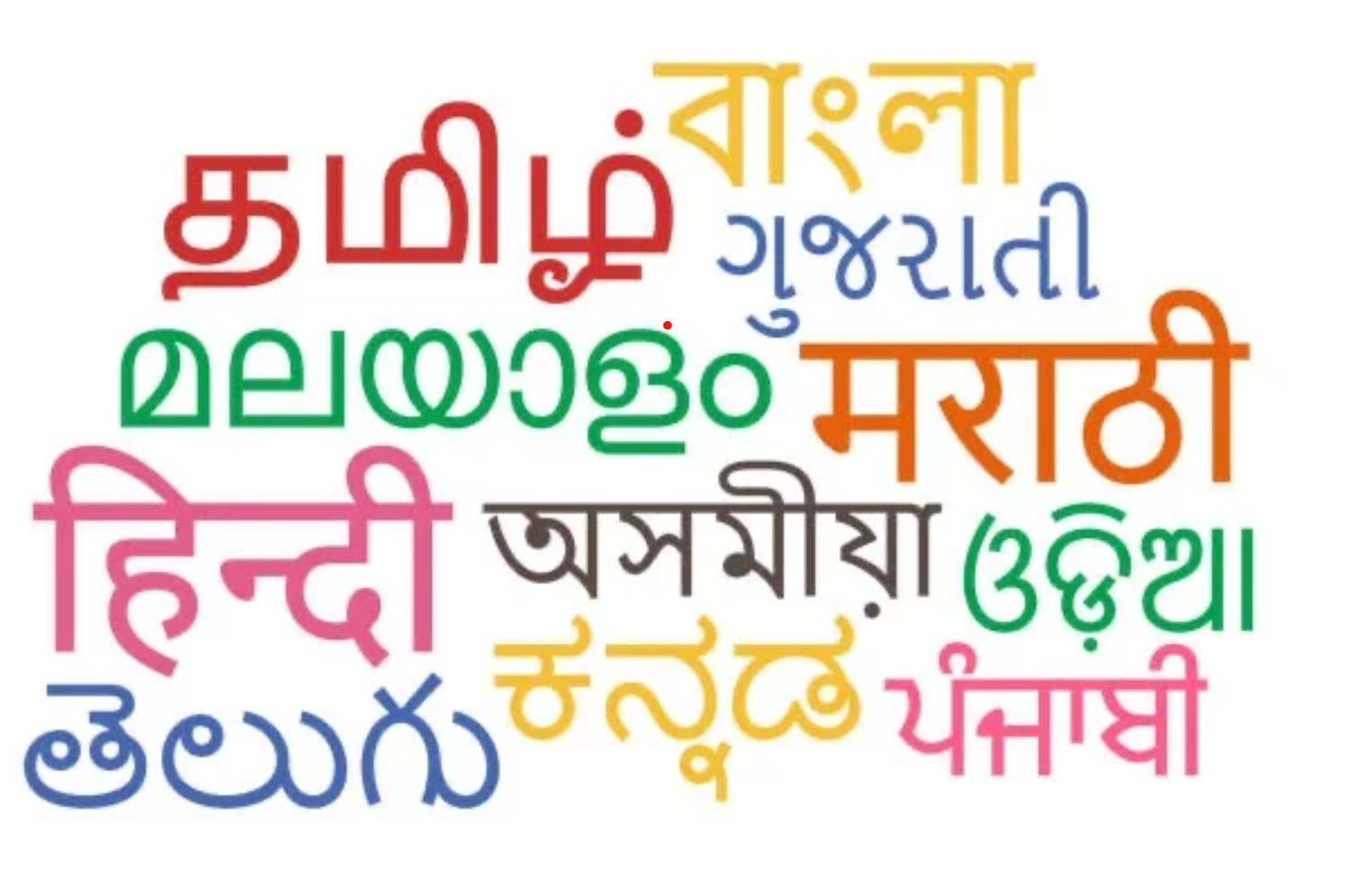
- 04 Oct 2024
In News:
The Union Cabinet has approved to confer the status of Classical Language to Marathi, Pali, Prakrit, Assamese and Bengali languages.
Why is a language declared as Classical?
Designating a language as classical acknowledges its historical significance and its role in preserving Bharat’s rich cultural heritage. These languages have been crucial in transmitting ancient knowledge, philosophies, and values for millennia. Government recognition emphasizes their deep antiquity and literary traditions, enhancing their status and promoting efforts for their preservation and research, ensuring their relevance in the modern world.
What are the criteria for declaring a language as classical?
In 2004, the Government of India, for the first time, created a new category of languages known as Classical Languages. It set the following as criteria for the status of Classical Language:
- High antiquity of its early texts/ recorded history over a thousand years.
- A body of ancient literature/ texts, which is considered a valuable heritage by generation of speakers.
- The literary tradition must be original and not borrowed from another speech community.
This criterion was revised in 2005 and 2024 based on the recommendations of Linguistic Experts Committees (LEC) under Sahitya Akademi to examine the proposed languages for the status of Classical Language. Later the criteria were revised in 2024 as follows:
- High antiquity of its early texts/recorded history over a period of 1500- 2000 years.
- A body of ancient literature/texts, which is considered a heritage by generations of speakers.
- Knowledge texts, especially prose texts in addition to poetry, epigraphical and inscriptional evidence.
- The Classical Languages and literature could be distinct from its current form or could be discontinuous with later forms of its offshoots.
The 2024 Linguistic Expert Committee also recommended the following languages to be fulfilling revised criteria to be considered as a Classical Language: Marathi, Pali, Prakrit, Assamese, Bengali
How many languages have been declared classical so far?
Languages Date of Recognition Notification by Source/Notification Date
Tamil October 12, 2004 Ministry of Home Affairs October 12, 2004
Ministry of Sanskrit November 25, 2005 Ministry of Home Affairs November 25, 2005
Telugu October 31, 2008 Ministry of Culture October 31, 2008
Kannada October 31, 2008 Ministry of Culture October 31, 2008
Malayalam August 8, 2013 Ministry of Culture August 8, 2013
Odia March 1, 2014 Ministry of Culture March 1, 2014
Steps Taken by the Ministry of Education for Advancing Classical Languages:
- Establishment of Central Universities (2020): Three universities created to promote Sanskrit through an Act of Parliament.
- Central Institute of Classical Tamil:
- Facilitates translation of ancient Tamil texts.
- Promotes research and offers courses for students and scholars.
- Centres for Excellence:
- Established for Classical Kannada, Telugu, Malayalam, and Odia under the Central Institute of Indian Languages in Mysuru.
- Awards: Introduction of national and international awards to recognize achievements in Classical Languages.
- Additional Benefits:
- National Awards for Classical Languages.
- Establishment of university chairs.
- Dedicated centers for promoting Classical Languages.
Annual Survey of Industries (ASI) Results for 2022-23
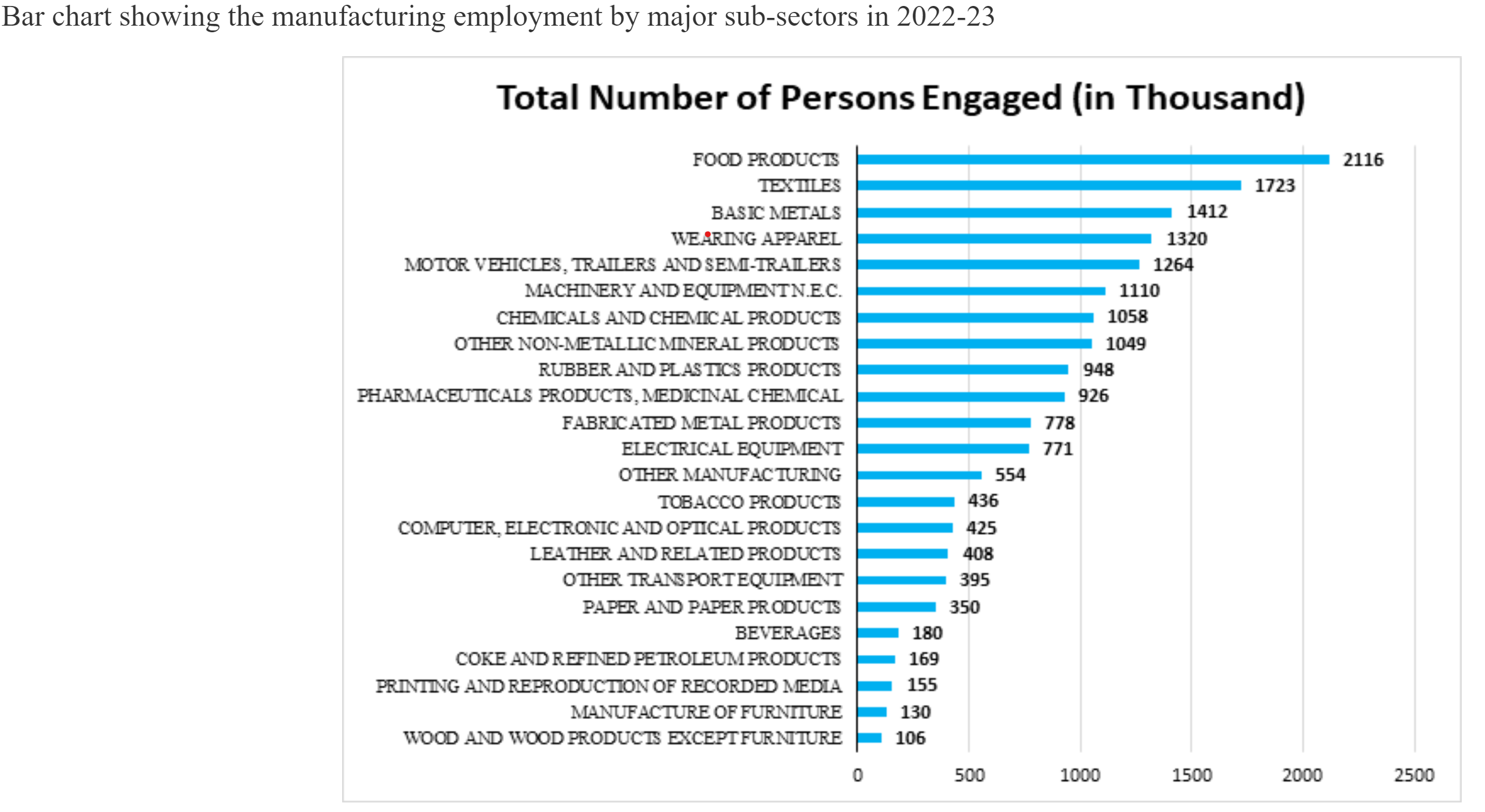
- 03 Oct 2024
In News:
- The Ministry of Statistics and Programme Implementation (MoSPI) has released the results of the Annual Survey of Industries (ASI) for the financial year 2022-23 (April 2022 to March 2023).
- The fieldwork for this survey was conducted from November 2023 to June 2024.
- The ASI provides critical insights into the dynamics of the manufacturing sector, covering aspects such as output, value added, employment, and capital formation.
Key Highlights
- Gross Value Added (GVA): Increased by 7.3% in current prices for 2022-23 compared to the previous year.
- Industrial Output: Grew by over 21% in 2022-23 compared to 2021-22.
- Employment: Estimated employment in the sector rose by 7.4% over the previous year, surpassing pre-pandemic levels.
The growth in key economic parameters such as invested capital, input, output, GVA, and wages indicates a robust recovery in the industrial sector. Notably, industries like Basic Metal Manufacturing, Coke & Refined Petroleum Products, Food Products, Chemicals, and Motor Vehicles were significant contributors, accounting for about 58% of total output and showing a 24.5% increase in output and 2.6% in GVA.
State Contributions
- Top GVA Contributors:
- Maharashtra
- Gujarat
- Tamil Nadu
- Karnataka
- Uttar Pradesh
Together, these states contributed over 54% of the total manufacturing GVA.
- Highest Employment States:
- Tamil Nadu
- Maharashtra
- Gujarat
- Uttar Pradesh
- Karnataka
Collectively, these states accounted for about 55% of total manufacturing employment in 2022-23.
Survey Details
The ASI encompasses various industrial units, including:
- Factories registered under the Factories Act, 1948.
- Bidi and cigar manufacturing establishments.
- Electricity undertakings not registered with the Central Electricity Authority.
- Units with 100 or more employees registered in the Business Register of Establishments.
The survey employs a comprehensive sampling strategy, dividing units into Central and State Samples to ensure accurate representation. Key components of the data collection include:
- Central Sample: Includes all units in less industrially developed states and specific industrial categories.
- State Sample: Comprises selected units based on employee count and other criteria.
Industrial Classification
Since 1959, the ASI has adopted various classifications to categorize industries. The current classification, NIC 2008, is based on the UN's international standards and has been in use since 2008-09.
Data Collection and Reliability
Data collection is conducted via a dedicated web portal, following the Collection of Statistics Act. Various quality checks ensure reliability, with the Relative Standard Errors (RSE) for important estimates remaining within acceptable limits.
Modified PKC-ERCP project
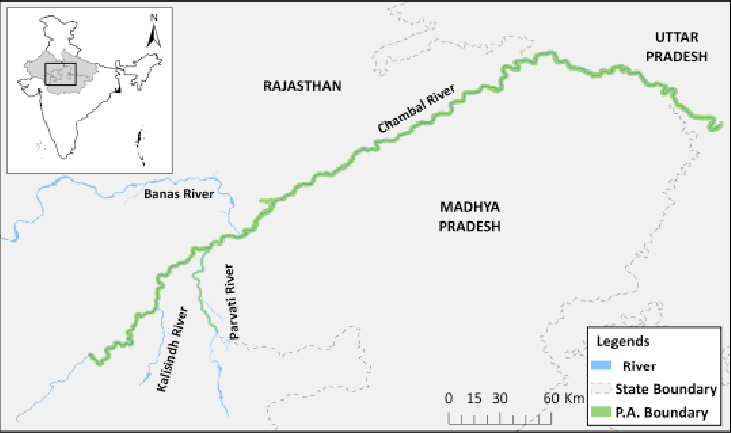
- 03 Oct 2024
In News:
Madhya Pradesh and Rajasthan governments signed an agreement for the implementation of the Rs 72,000 crore Parbati-Kalisindh-Chambal river linking project.
Modified PKC-ERCP Project Overview
- Signatories: Rajasthan, Madhya Pradesh, and the Union Ministry of Jal Shakti signed a MoU for implementation.
- Project Type: Inter-state river linking initiative.
- Integration: Combines the long-standing Parbati-Kalisindh-Chambal (PKC) project with the Eastern Rajasthan Canal Project (ERCP) under India's National Perspective Plan for interlinking rivers.
Objectives and Benefits
- Water Supply: Aims to provide drinking and industrial water to 13 districts in eastern Rajasthan and the Malwa and Chambal regions of Madhya Pradesh.
- Irrigation: Expected to irrigate approximately 5.6 lakh hectares across both states.
- Groundwater Management: Focus on improving groundwater levels and enhancing socio-economic conditions in rural Rajasthan.
Project Components
- Detailed Project Report (DPR): Currently under preparation, will outline water sharing, cost distribution, and implementation strategies.
- Historical Context:
- PKC Project: Proposed in 1980 as part of a national plan, initially focused on diverting water from Kalisindh and Newaj rivers to Chambal.
- ERCP: Proposed by Rajasthan in 2019 to optimize water resources by redistributing surplus monsoon water from various sub-basins to deficit areas.
Geographic Focus
- Beneficiary Districts in Rajasthan: Includes Alwar, Bharatpur, Dholpur, Karauli, and others.
- River Systems Involved:
- Chambal River: Originates in Madhya Pradesh, flows through Rajasthan, and joins the Yamuna.
- Kalisindh and Parbati Rivers: Serve as sources for water diversion.
Implementation Challenges
- Dependable Yield Issues: The original project proposal was based on a 50% dependable yield, contrary to the 75% norm, which was unacceptable to Madhya Pradesh. This led to discussions and revisions.
- Task Force Recommendations: Integrated discussions led to the proposal of the Modified PKC-ERCP, addressing both states' concerns.
Significance of the Project
- National Perspective Plan (NPP): Part of a larger initiative to manage water resources effectively across India, aiming to address water scarcity and improve irrigation.
- Support for Industrial Development: Enhances water availability for the Delhi-Mumbai Industrial Corridor, fostering economic growth.
PM E-DRIVE Scheme
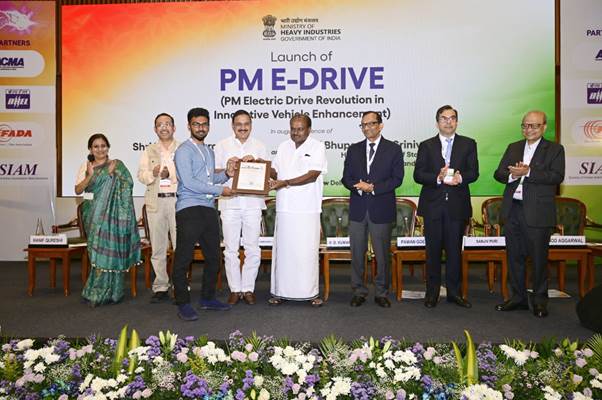
- 03 Oct 2024
In News:
The Union Cabinet approved the PM Electric Drive Revolution in Innovative Vehicle Enhancement (PM E-DRIVE) Scheme to promote electric mobility in the country.
Objective:
- Accelerate electric vehicle (EV) adoption
- Establish essential charging infrastructure
- Promote cleaner and sustainable transportation
Key Highlights
- Significant Occasion: Launched on the eve of Mahatma Gandhi's 155th Birth Anniversary, aligning with the vision of ‘Swachh Bharat’ and ‘Swachh Vahan’.
- Financial Commitment: Union Cabinet approved a financial outlay of ?10,900 crore for the scheme over two years (approved on September 11, 2024).
Key Features of the PM E-DRIVE Scheme
- Subsidies/Demand Incentives:
- Total of ?3,679 crore allocated for:
- 24.79 lakh electric two-wheelers (e-2Ws)
- 3.16 lakh electric three-wheelers (e-3Ws)
- 14,028 electric buses (e-buses)
- Total of ?3,679 crore allocated for:
- E-Voucher Introduction:
- Aadhaar-authenticated e-vouchers for EV customers
- Simplifies access to incentives, with real-time generation for dealers.
- E-Ambulances:
- ?500 crore allocated for deployment
- Standards to be developed with relevant ministries.
- E-Buses:
- ?4,391 crore for 14,028 e-buses in nine major cities
- Focus on replacing scrapped state transport unit buses.
- E-Trucks:
- ?500 crore for incentivizing electric trucks
- Scrapping certificates required for incentives.
- Public Charging Stations:
- ?2,000 crore to install:
- 22,100 fast chargers for electric four-wheelers (e-4Ws)
- 1,800 for e-buses
- 48,400 for e-2Ws/3Ws
- ?2,000 crore to install:
- Test Agency Modernization:
- ?780 crore for upgrading Ministry of Heavy Industries test agencies to accommodate new EV technologies.
India’s Oil Imports from Saudi Arabia and Russia
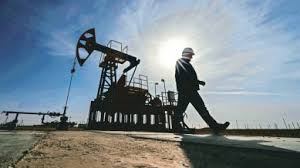
- 03 Oct 2024
Context
- India’s crude oil imports are influenced by refinery maintenance cycles, which affect demand.
- August saw a dip in oil demand due to pre-maintenance preparations, but September recorded a recovery.
September Oil Import Trends
- Saudi Arabia:
- Imports rose 39.8% month-on-month to 0.73 million barrels per day (bpd), the highest since March.
- Saudi market share increased to 15.5% in September from 11.7% in August.
- Riyadh is reducing prices to regain lost market share, as earlier imports had plummeted to a multi-year low (0.42 million bpd in June).
- Russia:
- Remains India’s largest oil supplier with imports increasing by 6.4% from August to 1.88 million bpd.
- Russian crude constituted 40.2% of India’s total crude imports of 4.68 million bpd in September.
- Iraq:
- Supplied 0.87 million bpd, accounting for 18.7% of total imports.
- UAE:
- Oil imports increased by 18.6% month-on-month to 0.49 million bpd, the highest since June 2022.
Market Dynamics
- Price Sensitivity: Indian refiners are highly price-sensitive, which could lead to increased competition among suppliers.
- Potential for Increased Russian Imports: With Indian refiners expected to secure larger long-term contracts for Russian oil, further increases in imports from Russia are anticipated.
Strategic Implications
- Saudi Arabia is concerned about losing market share to Russia, especially as India’s refiners are currently favoring discounted Russian crude.
- Increased competition may benefit Indian refiners through better pricing from various suppliers.
Economic Context
- India, as the world's third-largest oil consumer with over 85% import dependency, is significantly affected by global oil price fluctuations.
- Although discounts on Russian crude have decreased, the overall savings from purchasing large volumes remain significant for Indian refiners.
The evolving landscape of India’s oil imports highlights the competitive dynamics among major suppliers, particularly Saudi Arabia and Russia, and underscores India’s strategic importance as a key market in the global oil sector.
Little Prespa Lake's Decline
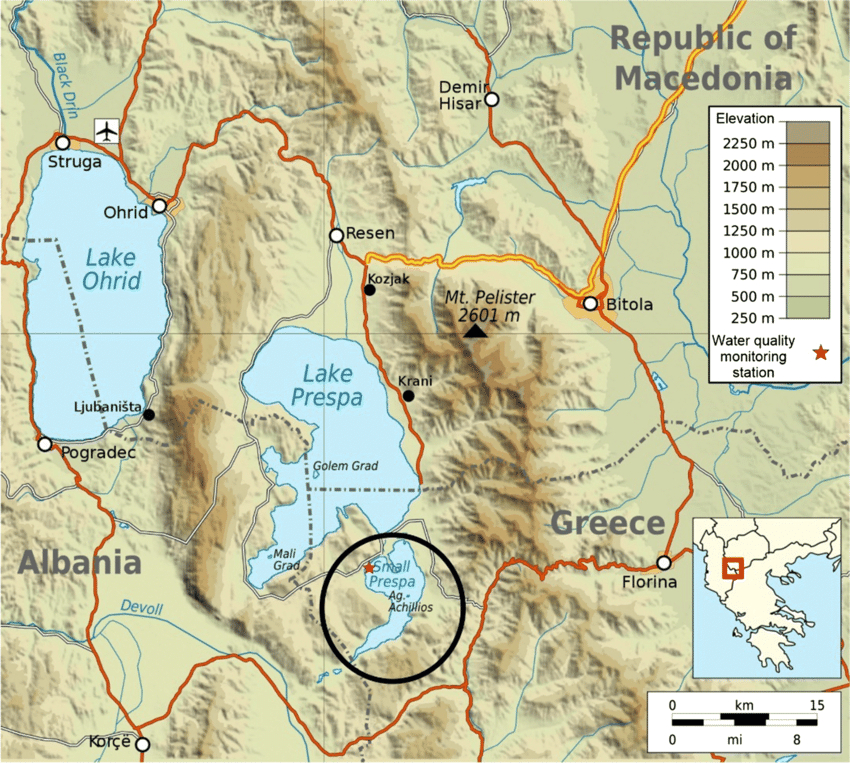
- 03 Oct 2024
In News:
Little Prespa Lake on Albanian-Greek border slowly dying.
Overview of Little Prespa Lake's Decline
- Location and Geography:
- Little Prespa Lake is situated on the Albanian-Greek border, primarily in Greece with a southern tip extending into Albania.
- It covers approximately 450 hectares in Albania, now largely transformed into swamps or dry land.
- Ecological Changes:
- Once a crystal-clear lake, it has degraded into a marshy area, with about 430 hectares in Albania suffering from significant drying.
- Local wildlife has shifted; cows now roam where fish once thrived.
- Historical Context:
- The lake's decline began in the 1970s when Albanian authorities diverted the Devoll River to irrigate surrounding agricultural lands, severely limiting water inflow.
- Climate Change Impact:
- Rising temperatures, mild winters, and decreased precipitation have intensified the lake’s ecological crisis.
- Local experts warn that continued dry winters and hot summers could lead to irreversible damage.
Cruise Bharat Mission
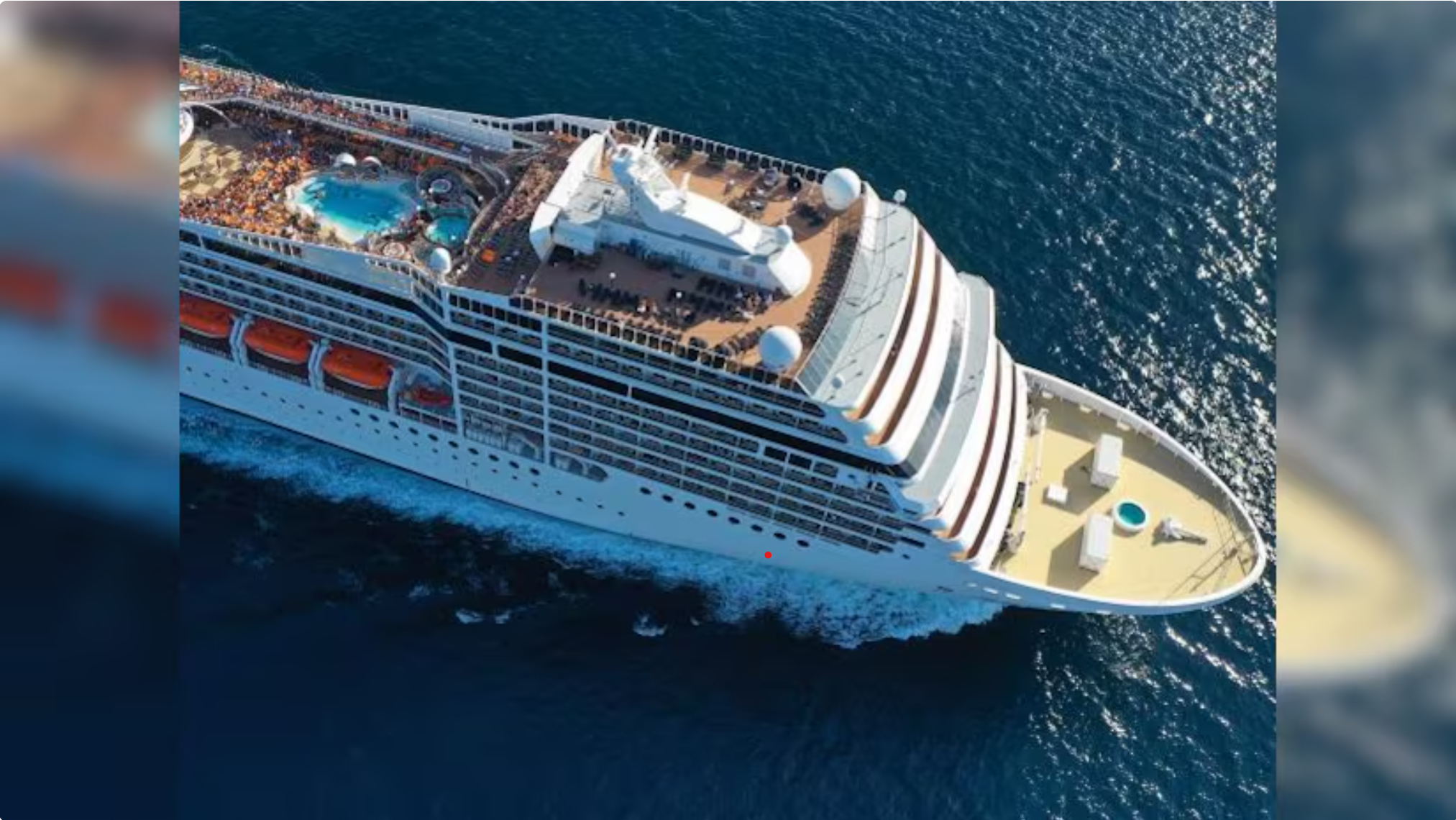
- 01 Oct 2024
In News:
The central government launched the five-year Cruise Bharat Mission, aiming to boost cruise tourism in India to 1 million passengers and create 400,000 jobs by 2029.
Mission Goals
- Passenger Traffic: Increase from 0.5 million to 1 million sea cruise passengers by 2029.
- River Cruise Passengers: Grow from 0.5 million to 1.5 million.
- Job Creation: Generate 400,000 jobs in the cruise sector.
- Infrastructure Expansion:
- International cruise terminals: From 2 to 10.
- River cruise terminals: From 50 to 100.
- Marinas: From 1 to 5.
Implementation Phases
- Phase 1 (2024-2025):
- Conduct studies and master planning.
- Form alliances with neighboring countries.
- Modernize existing cruise terminals and destinations.
- Phase 2 (2025-2027):
- Develop new cruise terminals and marinas.
- Activate high-potential cruise locations.
- Phase 3 (2027-2029):
- Integrate cruise circuits across the Indian Subcontinent.
- Continue developing infrastructure and enhancing cruise experiences.
Strategic Focus Areas
- Sustainable Infrastructure:
- Develop world-class terminals, marinas, and water aerodromes.
- Emphasize digitalization (e.g., facial recognition) and decarbonization (shore power).
- Create a National Cruise Infrastructure Masterplan 2047.
- Operational Efficiency:
- Streamline operations using digital solutions (e.g., e-clearance and e-visa facilities).
- Cruise Promotion & Circuit Integration:
- Focus on international marketing and investment.
- Host events like the "Cruise India Summit."
- Form alliances with neighboring countries (UAE, Maldives, Singapore).
- Regulatory and Financial Policies:
- Establish tailored fiscal and financial policies.
- Launch a National Cruise Tourism Policy.
- Capacity Building & Employment:
- Create a Centre of Excellence for cruise-related economic research.
- Develop National Occupational Standards to enhance youth employment opportunities.
Expected Outcomes
- Tourism Growth: Position India as a global cruise destination.
- Cultural Promotion: Highlight the cultural, historical, and natural heritage of Bharat through cruise circuits.
- Community Benefits: Ensure inclusive growth for local communities and stakeholders in the cruise sector.
The Cruise Bharat Mission is set to redefine India's cruise tourism landscape, focusing on infrastructure development, operational efficiency, and promoting cultural heritage, while ensuring economic growth and job creation for the future.
BharatGen Initiative

- 01 Oct 2024
In News:
BharatGen is a pioneering generative AI initiative launched in New Delhi, aimed at revolutionizing public service delivery and enhancing citizen engagement, with Dr. Jitendra Singh, Union Minister of State, in virtual attendance.
- Significance
- Represents India's commitment to advancing homegrown technologies.
- Positions India as a global leader in generative AI, similar to achievements with UPI and other innovations.
- Marks the world's first government-funded Multimodal Large Language Model project focusing on Indian languages.
- Leadership and Implementation
- Spearheaded by IIT Bombay under the National Mission on Interdisciplinary Cyber-Physical Systems (NM-ICPS).
- Collaboration with the TIH Foundation for IoT and various academic partners, including IITs and IIMs.
- Key figures involved include Prof. Shireesh Kedare (Director, IIT Bombay) and Prof. Ganesh Ramakrishnan (consortium leader).
- Core Objectives
- Deliver generative AI models as a public good, prioritizing socio-cultural and linguistic diversity.
- Address broader needs such as social equity, cultural preservation, and inclusivity.
- Make AI accessible for industrial, commercial, and national priorities.
- Key Features
- Multilingual and Multimodal Models: Capable of handling text and speech in multiple languages.
- Bhartiya Data Sets: Focus on India-centric data collection and training.
- Open-Source Platform: Promotes collaboration and innovation in AI research.
- Ecosystem Development: Fosters a robust AI research community.
- Project Timeline and Impact
- Expected completion in two years, with benefits for government, private, educational, and research institutions.
- Ensures coverage of India’s diverse linguistic landscape through multilingual datasets.
- Emphasis on data sovereignty to strengthen control over digital resources.
- Alignment with National Goals
- Supports the Atmanirbhar Bharat vision by reducing reliance on foreign technologies.
- Aims to strengthen the domestic AI ecosystem for startups, industries, and government agencies.
- Focuses on democratizing access to AI for innovators and researchers.
- Research and Community Engagement
- Data-efficient learning for languages with limited digital presence.
- Development of effective models with minimal data through research collaborations.
- Initiatives to foster an AI research community, including training programs and hackathons.
- Future Roadmap
- Key milestones outlined up to July 2026, focusing on:
- Extensive AI model development and experimentation.
- Establishment of AI benchmarks tailored to India’s needs.
- Scaling AI adoption across industries and public initiatives.
- Key milestones outlined up to July 2026, focusing on:
Joint Military Exercise KAZIND-2024
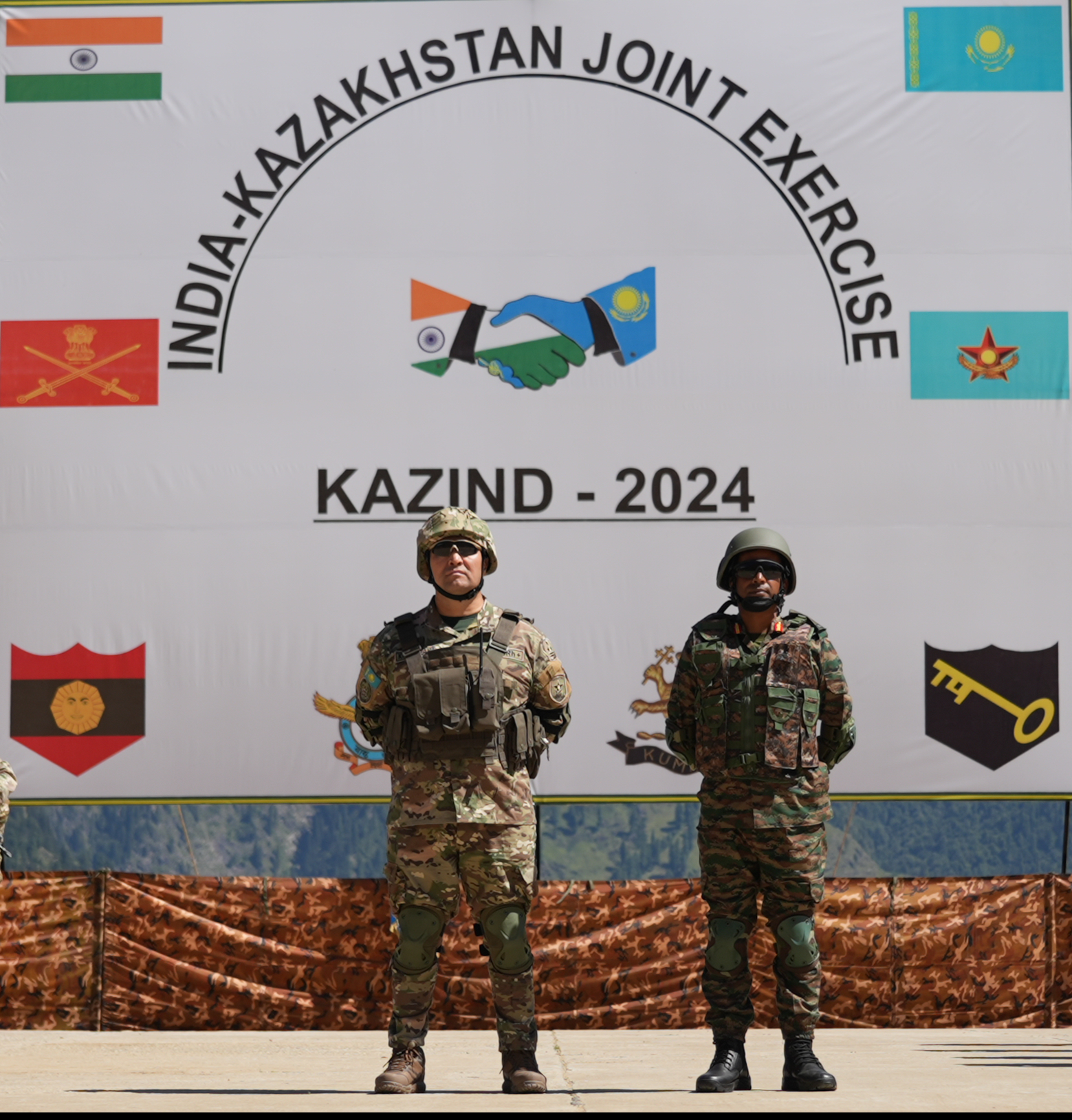
- 01 Oct 2024
In News:
The 8th edition of the India-Kazakhstan Joint Military Exercise, KAZIND-2024, has commenced in Auli, Uttarakhand, running from September 30 to October 13, 2024.
Key Details:
- Joint Exercise KAZIND-2024 has been held annually since 2016.
- Last edition of the Joint Exercise was held at Otar, Kazakhstan from 30th October to 11th November 2023.
Participants:
- India:
- 120 personnel from KUMAON Regiment of the Indian Army
- Additional support from other arms and Indian Air Force
- Kazakhstan:
- Personnel primarily from Land Forces and Airborne Assault Troopers
Aim:
- Enhance joint military capability for counter-terrorism operations
- Focus on sub-conventional scenarios under Chapter VII of the UN Charter
Focus Areas:
- Operations in semi-urban and mountainous terrains
- High physical fitness levels
- Rehearsal and refinement of tactical drills
- Sharing best practices
Tactical Drills:
- Joint response to terrorist actions
- Establishment of a Joint Command Post
- Creation of an Intelligence and Surveillance Centre
- Securing helipad/landing sites
- Combat free fall and Special Heliborne Operations
- Cordon and Search operations
- Employment of drones and counter-drone systems
Outcomes Expected:
- Sharing of tactics, techniques, and procedures for joint operations
- Development of interoperability between the two armies
- Strengthening of bonhomie and camaraderie
- Enhancement of defense cooperation and bilateral relations between India and Kazakhstan.
La Nina and North India’s pollution
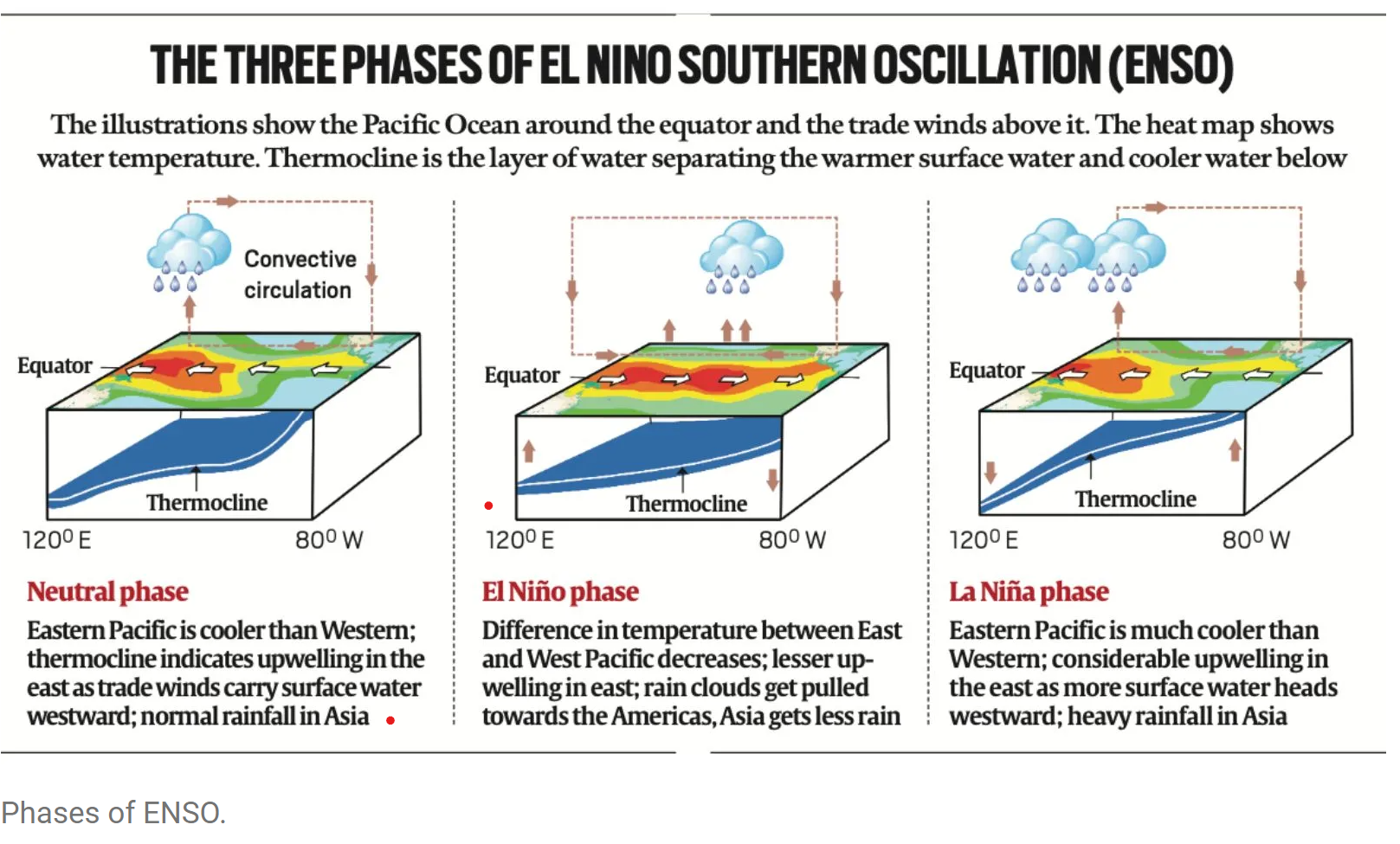
- 01 Oct 2024
In News:
Recent research by scientists at the National Institute of Advanced Science (NIAS) has underlined the links between climate change, La Niña and air quality.
Key Points on Air Quality Outlook for Delhi and North India
- Delayed La Niña & Monsoon Retreat:
- Erosion of optimism for improved air quality this winter in Delhi.
- Significant pollution challenges anticipated in early winter months.
- Possible relief in December and January, contingent on La Niña strengthening.
- Impact of Stubble Burning:
- If stubble burning occurs at half the intensity of previous years, November air quality may deteriorate.
- Research Insights:
- Study by National Institute of Advanced Science (NIAS) links climate change, La Niña, and air quality.
- Notable air quality improvement in winter 2022-23 was linked to La Niña conditions.
- Late onset of La Niña contributes to air quality uncertainty.
- Changing Pollution Dynamics:
- Shift from local emission-centric views to broader climatological factors is necessary.
- Air quality in Delhi worsens during winter due to high humidity, calm winds, and poor pollutant dispersion.
- La Niña Delays:
- Delayed La Niña onset means weak winds and stagnant conditions, worsening pollution.
- Expected development between September and November 2024.
- Effects of Stubble Burning:
- North-north-westerly winds could carry pollution from stubble burning in Punjab and Haryana into Delhi.
- Potential Outcomes of Late La Niña Onset:
- If La Niña develops in December or January, may improve air quality slightly.
- However, a longer, severe winter could exacerbate pollution issues due to lower inversion layers.
- NIAS-SAFAR Model Predictions:
- Early La Niña could have worsened air quality in the peninsular region.
- Early onset might have improved northern air quality.
- Link to Climate Change:
- Evidence suggests extreme air pollution correlates with climate change.
- Emphasizes the need for rigorous mitigation efforts and broader airshed management.
- Call for Rethinking Air Quality Strategies:
- Focus on integrating larger climatic factors into air quality policies.
- Prioritize health-centric measures through collaborative efforts with scientific bodies.
What is La Niña?
- La Niña (or ‘The Little Girl’ in Spanish) is a phase of what climatologists refer to as the El Niño Southern Oscillation (ENSO), a phenomenon that is a key driver of global natural climate variability.
- ENSO is characterised by changes in sea temperatures along the tropical Pacific Ocean due to atmospheric fluctuations overhead. These changes alter and interfere with the global atmospheric circulation, and influence weather worldwide.
- Occurring in irregular cycles of anywhere between two to seven years, ENSO has three phases — warm (El Niño or ‘The Little Boy’ in Spanish), cool (La Niña), and neutral.
- During the neutral phase, the eastern Pacific (off the northwestern coast of South America) is cooler than the western Pacific (around Philippines and Indonesia). This is because prevailing trade winds — caused by Earth’s rotation, between 30 degrees north and south of the equator — move east to west, sweeping warmer surface water along with them. The relatively cool waters from below rise to the surface to replace the displaced water.
- These wind systems weaken in the El Niño phase, leading to lesser displacement of warmer waters off the American coasts. Consequently, the eastern Pacific becomes warmer than usual. The opposite happens in the La Niña phase i.e. trade winds become stronger than usual and push larger quantities of water to the western Pacific.
Armed Forces (Special Powers) Act (AFSPA)
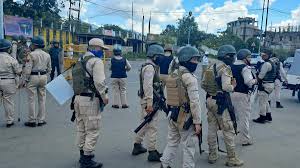
- 01 Oct 2024
In News:
- The Manipur government has extended the Armed Forces (Special Powers) Act (AFSPA) in the hill districts of the State for another six months.
- Effective October 1, the provisions of the Act will be extended to the whole State, except 19 police station limits in seven valley districts, thus maintaining the status quo, since three such notifications were passed since March 2023.
- It added that the “disturbed area” status could not be reviewed and a detailed ground assessment could not be done as “the sister security agencies are preoccupied with maintenance of law and order” and “it will be premature to arrive at any conclusion or decision on such sensitive matter without detailed assessment.”
Overview of the Armed Forces (Special Powers) Act (AFSPA)
- Enactment: The AFSPA was passed by Parliament and approved by the President on September 11, 1958.
- Context: It was introduced in response to rising violence in the North-eastern States, which state governments struggled to control.
Key Provisions of AFSPA
- Powers Granted:
- The Act empowers armed forces and Central Armed Police Forces in "disturbed areas" to:
- Kill anyone acting against the law.
- Arrest and search premises without a warrant.
- Receive protection from prosecution and legal action without Central government sanction.
- The Act empowers armed forces and Central Armed Police Forces in "disturbed areas" to:
- Issuance of Notifications:
- Both State and Union governments can issue notifications regarding AFSPA.
- The Ministry of Home Affairs issues "disturbed area" notifications for Arunachal Pradesh and Nagaland.
Definition of Disturbed Areas
- Criteria:
- A disturbed area is declared under Section 3 of AFSPA, indicating the need for armed forces' assistance in maintaining civil order.
- Factors leading to the declaration can include:
- Conflicts among different religious, racial, linguistic, or regional groups.
- Authority to Declare:
- The Central Government, the Governor of the State, or the administrator of a Union Territory can declare an area as disturbed.
- Duration:
- Once designated as disturbed, the area remains classified as such for three months, as per The Disturbed Areas (Special Courts) Act, 1976.
- State Government Input:
- State governments can recommend whether AFSPA should continue in their region.
Colombo Security Conclave (CSC)
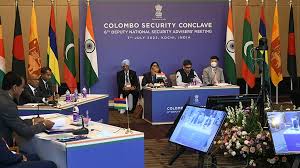
- 03 Sep 2024
In News:
The Colombo Security Conclave (CSC) recently marked a significant milestone with the signing of the Charter and the Memorandum of Understanding (MoU) for the establishment of its Secretariat in Colombo. This initiative aims to strengthen regional security collaboration among member states.
Key Features of the Colombo Security Conclave
- Member States: The CSC comprises five member countries:
- India
- Bangladesh
- Sri Lanka
- Maldives
- Mauritius
Additionally, Seychelles participates as an observer nation.
- Core Objectives: The primary goal of the CSC is to enhance regional security by addressing transnational threats and challenges that are common concerns for member states. This includes a collaborative approach to ensure stability and safety in the region.
Origin and Evolution
- The CSC originated as the Trilateral for Maritime Security Cooperation, established through trilateral meetings among National Security Advisors (NSAs) and Deputy NSAs from India, Maldives, and Sri Lanka starting in 2011.
- The initiative faced a setback after 2014 due to heightened tensions between India and the Maldives.
- It was revived and rebranded as the CSC in 2020, expanding its membership to include Mauritius and, more recently, Bangladesh.
Structure and Cooperation
- The conclave facilitates interactions among NSAs and Deputy NSAs of member countries, fostering dialogue and cooperation on security matters.
- Cooperation under the CSC is organized around five key pillars:
- Maritime Safety and Security
- Countering Terrorism and Radicalization
- Combating Trafficking and Transnational Organized Crime
- Cybersecurity and Protection of Critical Infrastructure
- Humanitarian Assistance and Disaster Relief
Permanent Secretariat
- The establishment of a permanent Secretariat in Colombo is expected to enhance coordination and streamline operations among member states, bolstering the efficacy of the CSC in addressing regional security issues.
Thanjavur Veena
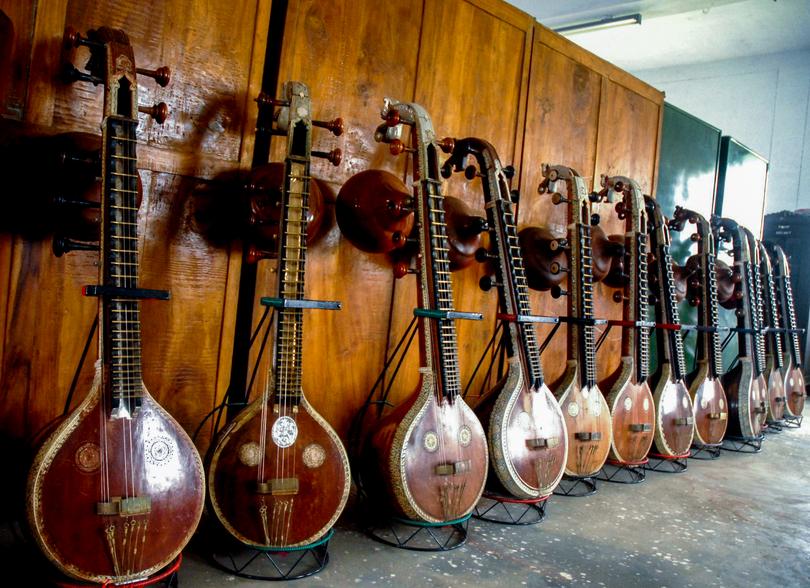
- 03 Sep 2024
In News:
The Thanjavur Veena has the distinction of being the first musical instrument in India to receive the Geographical Indication (GI) tag, highlighting its cultural and artistic significance. Here’s an overview of its features, types, and craftsmanship:
About Thanjavur Veena
- Construction:
- The Thanjavur Veena is known for its unique construction, which comes in two main types:
- Ekantha Veena: Carved from a single block of wood.
- Sada Veena: Composed of three sections—resonator (kudam), neck (dandi), and head—with joints.
- The Thanjavur Veena is known for its unique construction, which comes in two main types:
- Design Features:
- The instrument features 24 fixed frets (mettu), enabling musicians to play a wide range of ragas.
- Traditionally made from the bark of the Jackfruit tree, the bark undergoes extensive testing to ensure quality and durability.
- Craftsmanship:
- The process of crafting a Thanjavur Veena can take 15-20 days, involving cutting, intricate carving, shaping, and assembly of the wood to form the integral parts of the instrument.
Types of Veena
The Thanjavur Veena is one of several types of veenas used in Indian classical music:
- Rudra Veena and Vichitra Veena: Predominantly used in Hindustani classical music.
- Saraswati Veena and Chitra Veena: Associated with Carnatic classical music, with the Saraswati Veena being unique to Thanjavur.
Cultural Significance
- The Saraswati Veena is particularly notable as it is often associated with Goddess Saraswati, the deity of learning and arts, who is frequently depicted holding a veena. This connection emphasizes the instrument's importance in Indian culture and music.
Current State of Mental Healthcare in India
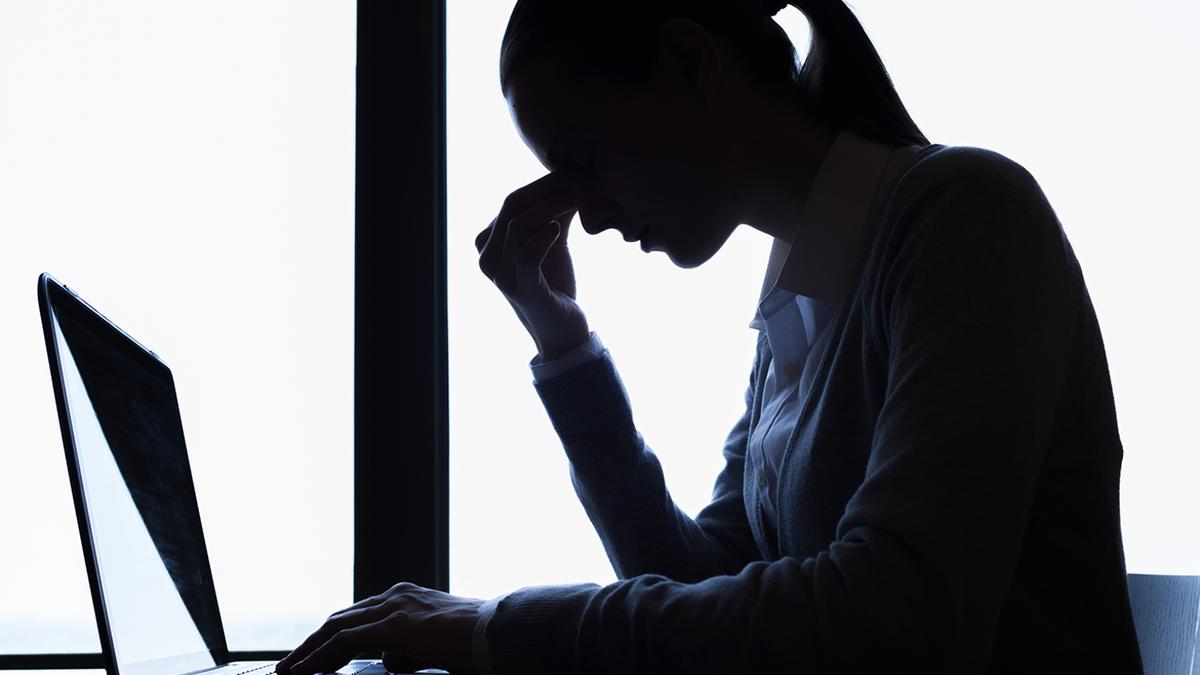
- 03 Sep 2024
Overview
India’s mental healthcare landscape is evolving, with increasing awareness and decreasing stigma around mental health issues. However, access to mental healthcare remains a significant challenge due to a shortage of professionals. Here are the key points:
Current State of Mental Healthcare in India
- Rising Demand: Shifts in societal attitudes have led to more individuals seeking mental health support. Awareness and willingness to access treatment have notably increased.
- Professional Shortage: Despite the rising demand, there are only 0.75 psychiatrists per one lakh population, far below the World Health Organization’s recommendation of three per lakh. As of the latest data, India has about 9,000 psychiatrists, while an estimated 36,000 are needed to meet the standard.
- Slow Workforce Growth: Approximately 1,000 psychiatrists enter the workforce annually, but with attrition and unemployment, it could take around 27 years to reach the WHO target without intervention.
- Comparative Analysis: India has one of the lowest psychiatrist-to-population ratios among BRICS nations, trailing only Ethiopia. However, it performs better than many South Asian countries.
Limitations of Current Data
- Outdated Survey: The data largely relies on the National Mental Health Survey (NMHS) conducted between 2015 and 2016, which is based on a limited sample size of around 40,000 people across 12 states.
- Narrow Focus: The NMHS primarily addressed specific mental illnesses and overlooked milder conditions, emotional issues, and vulnerable populations like prisoners and the homeless.
- Need for Updated Research: A second NMHS is scheduled for release next year, which may provide more comprehensive data and insights.
Improvements in Awareness and Attitudes
- Positive Attitudinal Shift: A study by the LiveLoveLaugh Foundation found significant improvements in how Indians perceive mental health. For instance, the percentage of people believing that individuals with mental illnesses can handle responsibilities rose from 32% in 2018 to 65% in 2021.
- Willingness to Seek Help: Over 90% of respondents in 2021 indicated they would seek treatment for themselves or support others in doing so, a substantial increase from 54% in 2018.
- Increased Awareness: Awareness of mental health issues has grown, with 96% of respondents in 2021 recognizing mental health compared to 87% in 2018.
Conclusion
While India is making strides in reducing stigma and increasing awareness around mental health, the critical shortage of mental health professionals poses a significant barrier to accessing timely care. Addressing this issue requires targeted policy interventions and incentives to boost the supply of mental health professionals and improve the overall infrastructure for mental healthcare in the country.
Digital Agriculture Mission
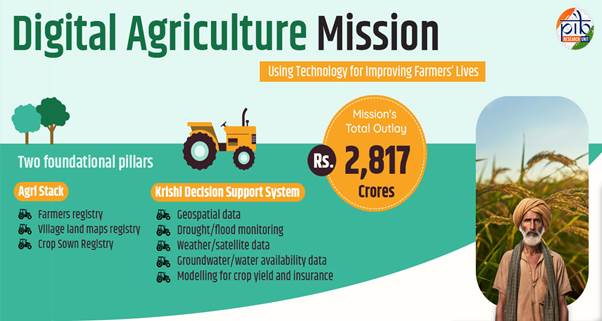
- 03 Sep 2024
Introduction
India's digital revolution has significantly transformed governance and service delivery in recent years by creating digital identities, secured payments and transactions. This progress has paved the way for a thriving digital ecosystem across various sectors, including finance, healthcare, education, and retail, positioning India as a leader in citizen-centric digital solutions.
For a similar transformation of the Agriculture Sector, the Union Cabinet Committee, chaired by Prime Minister Narendra Modi approved the 'Digital Agriculture Mission' with a substantial financial outlay of Rs. 2,817 Crore, including a central government share of Rs. 1,940 Crore, on September 2, 2024.
The Digital Agriculture Mission is designed as an umbrella scheme to support various digital agriculture initiatives. These include creating Digital Public Infrastructure (DPI), implementing the Digital General Crop Estimation Survey (DGCES), and supporting IT initiatives by the Central Government, State Governments, and Academic and Research Institutions.
The scheme is built on two foundational pillars:
- Agri Stack
- Krishi Decision Support System.
Additionally, the mission includes ‘Soil Profile Mapping’ and aims to enable farmer-centric digital services to provide timely and reliable information for the agriculture sector.
AgriStack: Kisan ki Pehchaan
AgriStack is designed as a farmer-centric Digital Public Infrastructure (DPI) to streamline services and scheme delivery to farmers. It comprises three key components:
1. Farmers' Registry
2. Geo-referenced village maps
3. Crop Sown Registry
- A crucial feature of AgriStack is the introduction of a 'Farmer ID', similar to Aadhaar card, serving as a trusted digital identity for farmers.
- These IDs, created and maintained by the State Governments/ Union Territories, will be linked to various farmer-related data, including land records, livestock ownership, crops sown, and benefits availed.
- The implementation of AgriStack is progressing through partnerships between the Central and State Governments, with 19 states having signed MoUs with the Ministry of Agriculture. Pilot projects have been conducted in six states to test the creation of Farmer IDs and the Digital Crop Survey.
- The six states include Uttar Pradesh (Farrukhabad), Gujarat (Gandhinagar), Maharashtra (Beed), Haryana (Yamuna Nagar), Punjab (Fatehgarh Sahib), and Tamil Nadu (Virudhnagar).
Key targets include:
- Creating digital identities for 11 crore farmers over three years (6 crore in FY 2024-25, 3 crore in FY 2025-26, and 2 crore in FY 2026-27)
- Launching the Digital Crop Survey nationwide within two years, covering 400 districts in FY 2024-25 and all districts in FY 2025-26
2. Krishi Decision Support System
- The Krishi Decision Support System (DSS) will integrate remote sensing data on crops, soil, weather, and water resources into a comprehensive geospatial system.
3. Soil Profile Mapping
Under the mission, detailed soil profile maps on a 1:10,000 scale for approximately 142 million hectares of agricultural land have been envisaged, with 29 million hectares of soil profile inventory already being mapped.
- Further under the Digital Agriculture Mission, the Digital General Crop Estimation Survey (DGCES) will be used for crop-cutting experiments to provide precise yield estimates, enhancing agricultural production accuracy.
- The mission is expected to create direct and indirect employment in agriculture, providing opportunities for around 2,50,000 trained local youth and Krishi Sakhis.
- By leveraging modern technologies like data analytics, AI, and remote sensing, the mission will improve service delivery for farmers, including streamlined access to government schemes, crop loans, and real-time advisories.
Key Components of the Mission
The Digital Agriculture Mission focuses on grassroots implementation, targeting farmers as the primary beneficiaries. Some of the key benefits of the mission include:
- Digital authentication for accessing services and benefits, reducing paperwork and the need for physical visits.
- Enhanced efficiency and transparency in government schemes, crop insurance, and loan systems through accurate data on crop area and yield.
- Crop map generation and monitoring for better disaster response and insurance claims.
- Development of digital infrastructure to optimize value chains and provide tailored advisory services for crop planning, health, pest management, and irrigation.
Digital Public Infrastructure for Agriculture
- Union Finance Minister Nirmala Sitharaman announced in the Union Budget 2024-25 that the Government, in partnership with states, will implement Digital Public Infrastructure (DPI) for agriculture over the next three years.
- This initiative will cover farmers and their lands, with a digital crop survey for Kharif planned for 400 districts this year. The goal is to update registries with details of 6 crore farmers and their lands.
- The Union Budget 2023-24 had previously introduced the DPI for agriculture, which aims to provide comprehensive data on farmers, including demographic details, land holdings, and crops sown. The DPI will integrate with state and central digital infrastructures to offer a range of farmer-centric services, including information on livestock, fisheries, soil health, and available benefits.
Conclusion
- The Union Cabinet also approved six major schemes alongside the Digital Agriculture Mission, with a total outlay of Rs 14,235.30 crore.
- These initiatives include Rs 3,979 crore for Crop Science aimed at ensuring food security and climate resilience by 2047, and Rs 2,291 crore for strengthening Agricultural Education, Management, and Social Sciences to support students and researchers. Rs 1,702 crore is allocated for Sustainable Livestock Health and Production to boost incomes from livestock and dairy, while Rs 1,129.30 crore is designated for Sustainable Development of Horticulture to increase income from horticulture. Additionally, Rs 1,202 crore will be invested in strengthening Krishi Vigyan Kendra, and Rs 1,115 crore towards Natural Resource Management.
- These comprehensive approaches leverage digital technologies to enhance productivity, efficiency, and sustainability in India's agricultural sector, potentially transforming the lives of millions of farmers across the country. By extending the digital revolution to agriculture, India aims to further solidify its position as a global leader in innovative, technology-driven solutions for critical sectors of the economy.
Supreme Court of India

- 02 Sep 2024
In News:
On August 31, 2024, Prime Minister Narendra Modi inaugurated the National Conference of District Judiciary at Bharat Mandapam, New Delhi. This event marked the 75th anniversary of the Supreme Court of India, highlighted by the unveiling of a commemorative stamp and coin.
Supreme Court of India: History and Key Insights
The Origins of the Judiciary
- The concept of law, or Dharma, in ancient India was significantly influenced by the Vedas, which outlined rules of conduct and rituals in the Dharma Sutras. These texts addressed the duties of individuals and the rights of kings, forming the foundation of Hindu Law. The earliest systematic examination of jurisprudence can be found in Kautilya's Artha Sastra (circa 300 B.C.), particularly its third chapter, which discusses legal transactions and disputes.
Establishment of the Supreme Court
- The Regulating Act of 1773, enacted by the British Parliament, initiated the establishment of the Supreme Court of Judicature at Calcutta, with its Letters of Patent issued on March 26, 1774. This court had the authority to hear all complaints and lawsuits involving His Majesty’s subjects in Bengal, Bihar, and Orissa. Additional Supreme Courts were later established in Madras (1800) and Bombay (1823).
- The Indian High Courts Act of 1861 replaced these Supreme Courts with High Courts in various provinces, which became the highest judicial authorities until the Federal Court of India was created under the Government of India Act 1935. After India gained independence in 1947, the Supreme Court of India was formally established on January 26, 1950, with its inaugural session held on January 28, 1950.
- The Supreme Court's rulings are binding across India, and it possesses the power of judicial review to ensure that legislative and executive actions align with constitutional provisions and fundamental rights.
Structure and Functioning
- Initially, the Supreme Court operated for only a few hours each day and convened for 28 days a year. Today, it functions extensively, meeting approximately 190 days annually. The court was temporarily housed in the Parliament House before moving to its current location on Tilak Marg, New Delhi, in 1958.
- The court's architecture symbolizes justice, featuring a prominent dome and spacious corridors. It began with a Chief Justice and seven judges, with Parliament later increasing this number as the workload grew. Currently, the Supreme Court includes a Chief Justice and 30 judges.
Appointment and Qualifications of Judges
- Judges are appointed by the President of India, based on recommendations from a committee of senior judges (Collegium System). A candidate must be a citizen of India and have served as a High Court judge for at least five years or as an advocate for ten years. The age of retirement for judges is 65 years.
Judicial Independence and Removal
- Judicial independence is constitutionally protected. A Supreme Court judge can only be removed by the President on grounds of proven misbehavior or incapacity, following a resolution supported by a two-thirds majority in both Houses of Parliament.
Judicial Salaries and Provisions
- Judges’ salaries and pensions are defined by the Supreme Court Judges (Salaries and Conditions of Service) Act, 1958, and are charged to the Consolidated Fund of India.
Acting Chief Justice
- In the absence of the Chief Justice, the President appoints another judge as the Acting Chief Justice, as stipulated in Article 126.
Post-Retirement Opportunities
- While retired judges cannot practice law in India, they often serve in governmental roles, such as leading commissions. There have been calls for a "cool-off" period before such appointments.
Ad Hoc Judges
- Ad hoc judges may be appointed when necessary, and must meet the qualifications for Supreme Court judges. Retired judges can also be called back to serve temporarily.
Courts of Record
- Both the Supreme Court and High Courts are classified as courts of record, with the authority to punish for contempt as per Article 129.
Seat of the Supreme Court
- The Supreme Court is based in Delhi but can convene anywhere in India, with such decisions made by the Chief Justice in consultation with the President.
Samudra Pratap
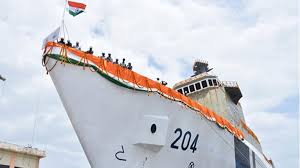
- 02 Sep 2024
In News
Recently, the Indian Coast Guard (ICG) proudly launched the first indigenously built Pollution Control Vessel, ‘Samudra Pratap’, in Goa.
Key Highlights of the Launch
- Vessel Details:
- Built by Goa Shipyard Limited (GSL), the vessel is specifically designed to combat oil spills along India’s coastlines.
- Dimensions: Length: 114.5m, Breadth: 16.5m, Displacement: 4170 T.
- The keel laying ceremony took place on November 21, 2022.
- Contract and Construction: GSL signed a contract worth Rs 583 crores for the construction of two Pollution Control Vessels for the ICG. This marks the first instance of such vessels being designed and built entirely in India.
- Significance of the Vessel: ‘Samudra Pratap’ stands as a testament to India's shipbuilding capabilities, showcasing GSL's expertise in producing advanced Pollution Control Vessels and reinforcing India's commitment to indigenization in defense manufacturing.
Retired Sportsperson Empowerment Training (RESET) Programme
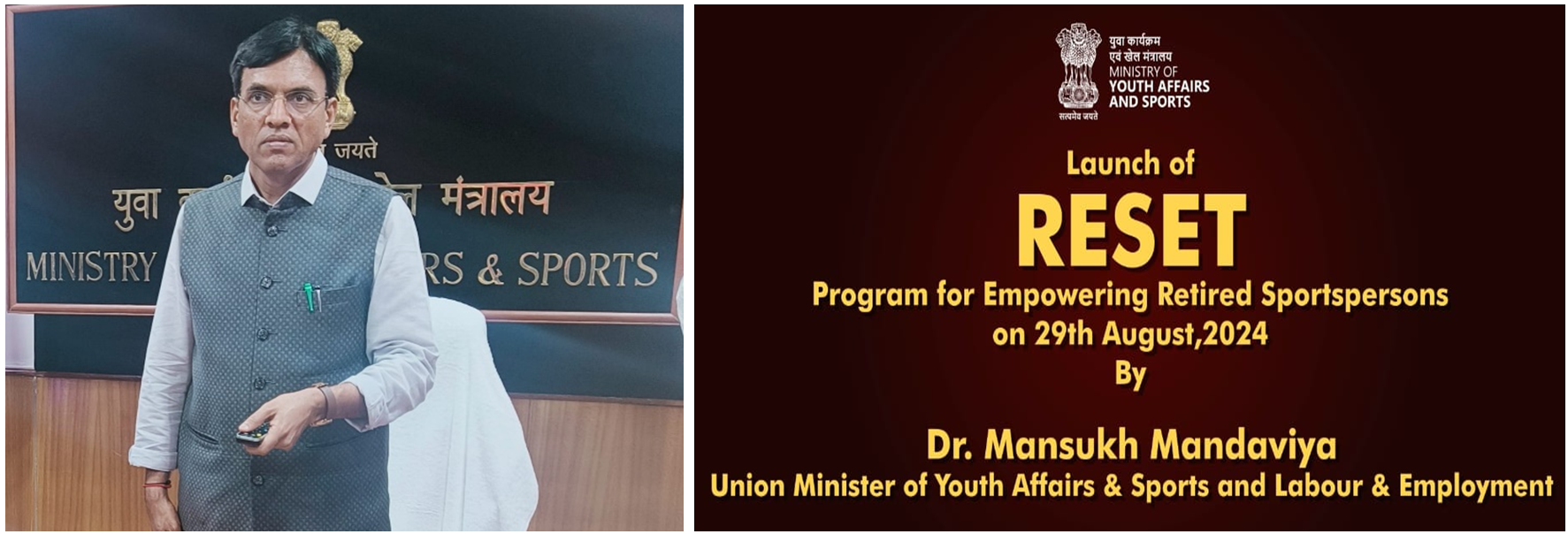
- 02 Sep 2024
In News:
Union Minister of Youth Affairs & Sports and Labour & Employment, Dr. Mansukh Mandaviya launched “Retired Sportsperson Empowerment Training” (RESET) Programme on the occasion of National Sports Day in New Delhi.
Key Highlights:
This programme aims to empower retired athletes by equipping them with essential career skills and knowledge, enhancing their employability and enabling them to contribute meaningfully to the sports ecosystem.
Eligibility Criteria
- Age: Retired athletes aged 20 to 50 years.
- Achievements:
- Must be winners of international medals or participants in international events.
- Alternatively, must have been national or state medallists or participants in competitions recognized by:
- National Sports Federations
- Indian Olympic Association
- Ministry of Youth Affairs and Sports.
Programme Structure
- Levels: Two tiers based on educational qualifications:
- Class 12th and above
- Class 11th and below
- Learning Mode: A hybrid approach, combining:
- Self-paced online learning through a dedicated portal.
- On-ground training for practical skill development.
Lead Institute
- Lakshmibai National Institute of Physical Education (LNIPE) will oversee the implementation and administration of the programme.
Support and Opportunities
- Placement Assistance: Comprehensive guidance for job placements in relevant sectors.
- Entrepreneurial Guidance: Support for athletes looking to start their own ventures in sports or related fields.
- Internships: Opportunities for hands-on experience in:
- Sports organizations
- Competitions
- Training camps
- Leagues
Implementation and Benefits
- Self-Paced Learning: Flexibility for participants to manage their learning schedules effectively.
- On-Ground Training: Hands-on practical sessions aimed at enhancing skills relevant to various career paths.
- Evaluation and Certification: Participants will be assessed and awarded a certificate upon successful completion, adding value to their career prospects.
The RESET Programme not only recognizes the achievements of retired athletes but also empowers them to leverage their experiences in new and impactful ways, fostering a robust sports ecosystem in India.
Queers can open Joint Bank Accounts
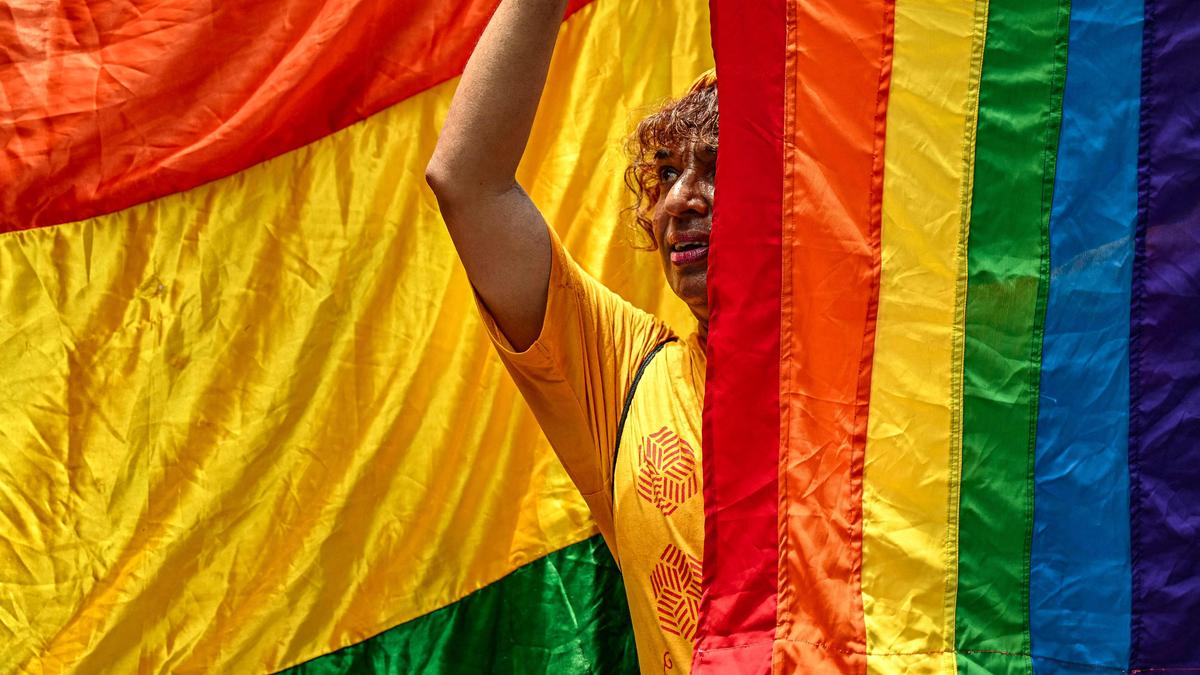
- 02 Sep 2024
In News:
Recently, the Union Government issued an advisory that LGBTQIA+ individuals and queer couples can open joint bank accounts. They can nominate each other as beneficiaries.
Key Details:
- Supreme Court Background:
- In October 2023, the Supreme Court of India urged the government to consider equal entitlements for partners in queer relationships.
- This was part of a judgment that did not recognize same-sex marriage but suggested enabling joint bank accounts and beneficiary nominations.
- Clarification from the Department of Financial Services:
- Issued on August 28, 2023, confirming no restrictions on opening joint accounts for the queer community.
- The Reserve Bank of India also clarified this to Scheduled Commercial Banks on August 21.
- Private Banks' Initiatives:
- Some banks, like Axis Bank, have been allowing joint accounts and beneficiary nominations for LGBTQIA+ couples since September 2021.
- Axis Bank expressed support for the Finance Ministry's advisory, noting alignment with its inclusive banking initiative.
- Government Committee Formation:
- In April 2023, a six-member committee was established to define entitlements for queer couples.
- Chaired by the Cabinet Secretary, it includes Secretaries from various ministries.
- The committee can co-opt experts if needed.
Project NAMAN
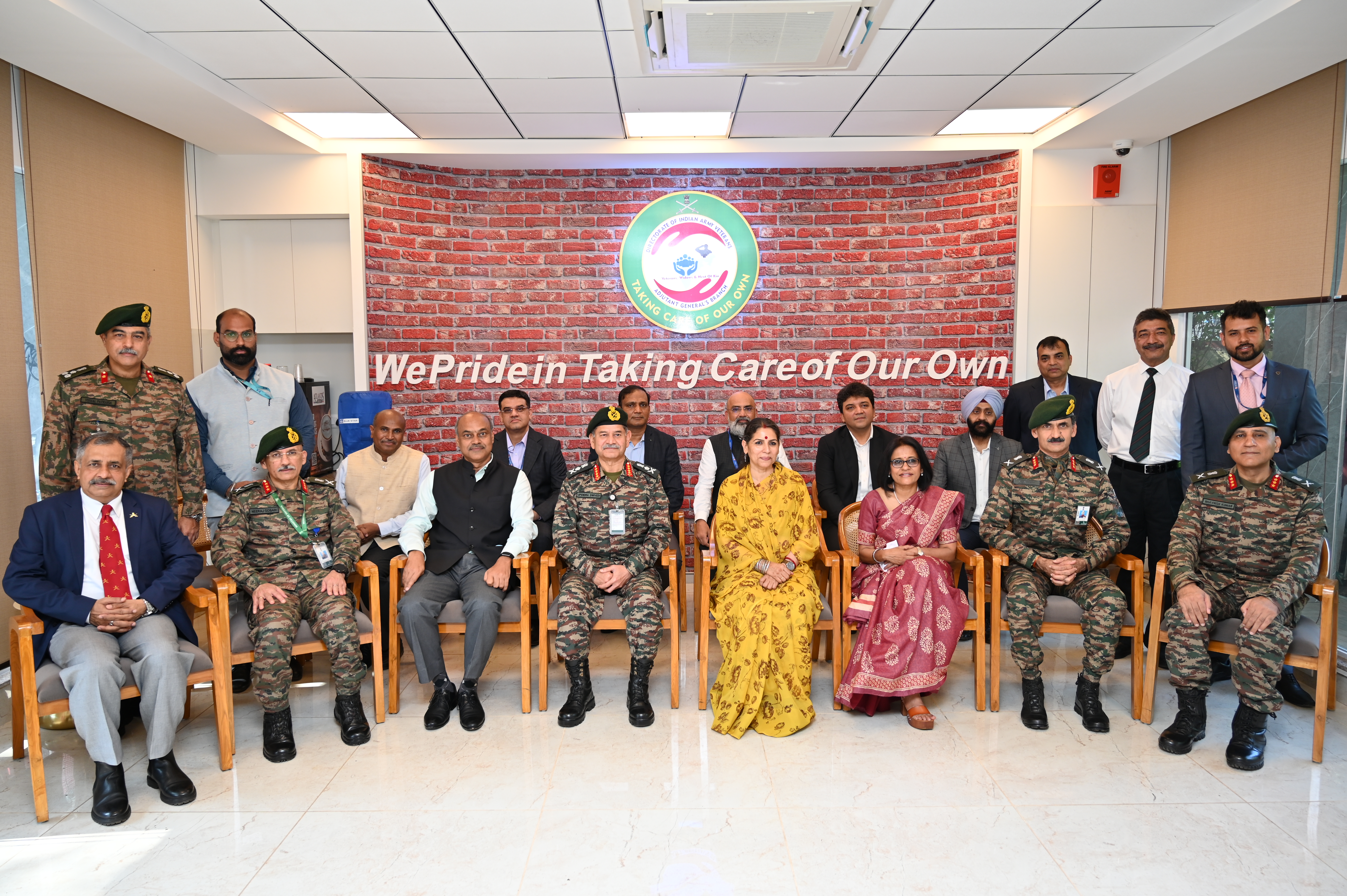
- 02 Sep 2024
In News:
- The Indian Army launched the first phase of Project NAMAN, aimed at supporting Defence Pensioners, Veterans, and their families.
- Key Features of Project NAMAN:
- Implements the SPARSH (System for Pension Administration Raksha) digital pension system.
- Streamlines pension processes and provides accessible facilitation points for Veterans and Next of Kin (NOK).
- Importance:
- Ensures care and support for veterans and their families.
- Services extended to residents of military stations and surrounding localities.
- Establishment of Common Service Centres (CSCs):
- Tripartite MoU signed between:
- Indian Army’s Directorate of Indian Army Veterans
- CSC e-Governance India Limited
- HDFC Bank Limited
- CSCs provide:
- SPARSH-enabled pension services
- Government to Citizen (G2C) services
- Business to Consumer (B2C) services
- Tripartite MoU signed between:
- Phase One Deployment:
- 14 CSCs established in key locations: New Delhi, Jalandhar, Leh, Dehradun, Lucknow, Jodhpur, Bengdubi, Gorakhpur, Jhansi, Secunderabad, Saugor, Guntur, Ahmedabad, Bangalore.
- Future expansion plans for approximately 200 centres nationwide in the next 2-3 years.
- Infrastructure Support:
- HDFC Bank provided necessary IT infrastructure.
- Local military stations contributed physical facilities.
- Community Engagement:
- Concept developed based on feedback from the Defence community.
- Promotes camaraderie among serving and retired Armed Forces personnel.
- Management of CSCs:
- Each CSC managed by a Village Level Entrepreneur (VLE) selected from veterans or NOKs by Local Military Authorities (LMAs).
- VLEs receive training from CSC e-Governance India Limited.
- HDFC Bank offers monthly grants of ?20,000 for the first 12 months to support VLEs.
- Conclusion:
- Project NAMAN reflects the Indian Army's commitment to veteran welfare.
- Offers SPARSH-centric services and entrepreneurial opportunities for Veterans and NOKs, empowering them to contribute to their communities.
Foot-and-Mouth Disease (FMD)
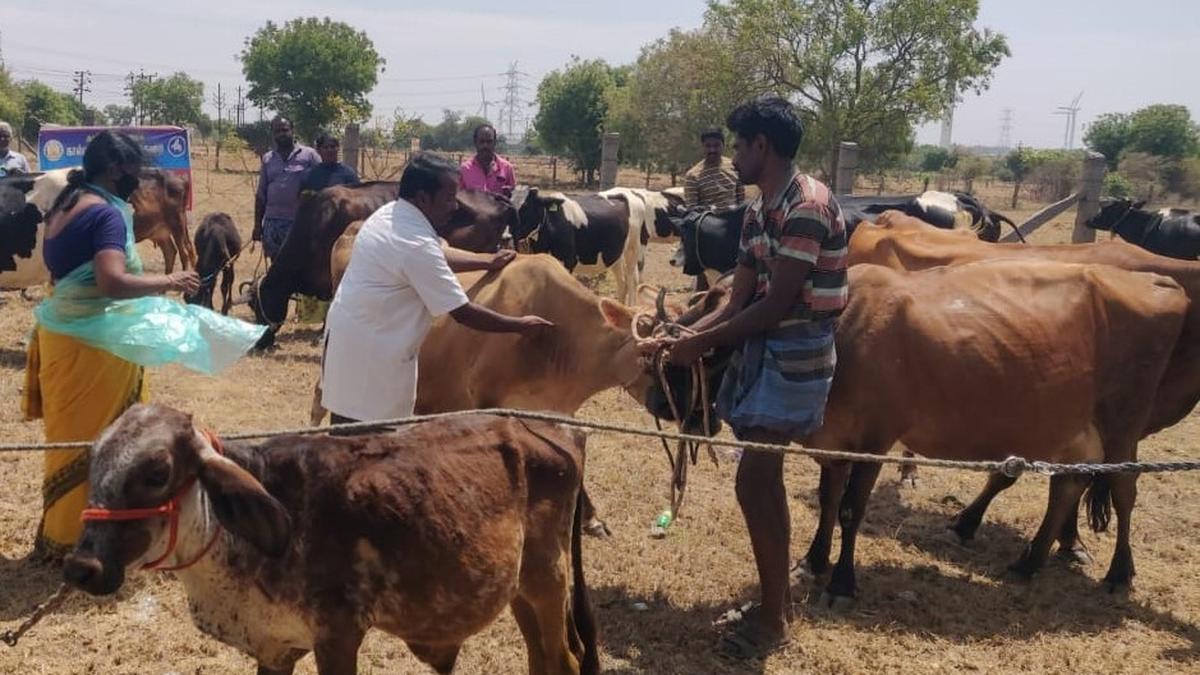
- 01 Sep 2024
In News:
- Establishment of Disease-Free Zones:
- The Union government plans to create FMD-free zones in eight states: Karnataka, Tamil Nadu, Andhra Pradesh, Telangana, Uttarakhand, Punjab, Haryana, Maharashtra, and Gujarat.
- Aim: Expand export opportunities for Indian animal products and enhance global market presence.
- Vaccination Efforts:
- Advanced vaccination initiatives are underway in the identified states, as stated by Alka Upadhyaya, Secretary of the Department of Animal Husbandry and Dairying.
- Collaborative Workshop:
- A workshop on ‘Animal Infectious Disease Prioritisation’ was held in collaboration with the Food and Agriculture Organisation.
- Focus: Prioritized 20 major animal infectious diseases based on severity, transmissibility, and national importance.
- Action Plan:
- Formulated focusing on five critical areas:
- Coordination
- Communication
- Monitoring and surveillance
- Prevention and control
- Therapeutics and socio-economic planning
- Formulated focusing on five critical areas:
- Regional Disease Prioritization:
- Strengthening regional-level prioritization of animal diseases for tailored control strategies.
- Overview of FMD:
- Highly contagious viral disease affecting cloven-hoofed animals like cattle, swine, sheep, and goats, but not horses or cats.
- Significant economic impact due to its effect on livestock production and trade.
Key Characteristics of FMD:
- Transmission:
- Virus present in excretions and secretions; aerosolized virus can infect other animals via respiratory or oral routes.
- Symptoms:
- Fever, blister-like sores on the tongue, lips, and hooves.
- High mortality in young animals, with production losses noted even post-recovery.
- Vaccination:
- Available vaccines must be matched to specific virus types/subtypes.
Repairability Index for Mobile and Electronic Sectors
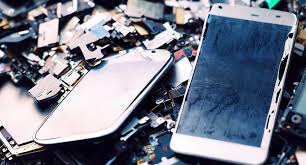
- 01 Sep 2024
In News:
- The Department of Consumer Affairs (DoCA), Government of India, has established a committee of experts to create a framework for the Repairability Index.
- Objective:
- Enhance consumer transparency regarding product repairability.
- Promote sustainable practices in the tech industry.
- National Workshop:
- Held on August 29, 2024, focusing on the Right to Repair in the Mobile and Electronics Sector.
- Aimed to gather industry stakeholders to agree on evaluating components for the Repairability Index.
- Key Goals:
- Address the rapid demand and short lifespan of mobile and electronic devices.
- Provide essential repair information and ensure access to spare parts, even for discontinued products.
- Repairability Index:
- A consumer-focused tool that helps in making informed product decisions based on repairability.
- Aims to standardize repairability assessments, enabling easier product comparisons.
- Consumer Empowerment:
- The index fosters mindful consumption and sustainability.
- Ensures affordable repair options and improves overall consumer satisfaction by addressing information gaps.
- Key components of the Repair Ecosystem:
- Comprehensive Repair Information: Access to repair manuals/DIYs, diagnostics, and a list of necessary tools and parts.
- Accessible Spare Parts: Easily identifiable and timely delivery of spare parts.
- Affordable Tools: Inexpensive, widely available, and safe tools for consumers.
- Modular Design: Key components designed for independent access and modularity.
- Economic Feasibility: Ensuring that the cost of repair parts and labor is affordable for consumers.
Taking into account the above necessities the committee is expected to recommend enabling framework for Policies/Rules/Guidelines which support repairability and integration of repairability index with the extant regulatory provisions in mobile and electronics sector to enhance consumer experiences in reusing the mobile and electronics products they own.
The committee will submit a comprehensive report including a framework for repairability index in Indian context by 15th November, 2024.
India's Biotech Revolution
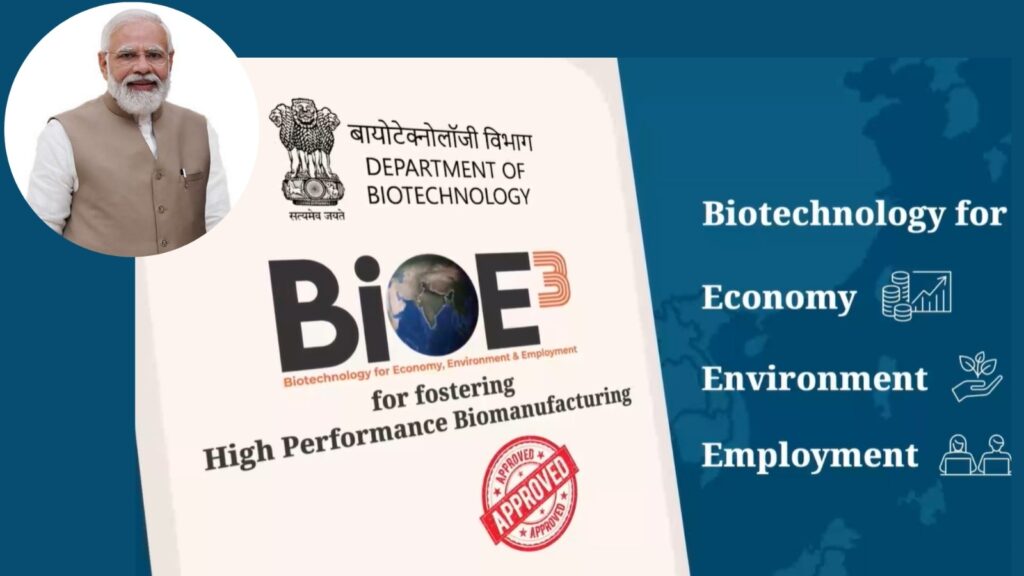
- 01 Sep 2024
In News:
The Indian Cabinet has recently approved the BioE3 (Biotechnology for Economy, Environment, and Employment) proposal, a significant move to advance the country’s biotechnology sector.
Scheduled to take effect on April 1, 2025, the BioE3 policy aims to capitalize on India's biotechnology potential by focusing on six key areas: bio-based chemicals, functional foods, precision biotherapeutics, climate-resilient agriculture, carbon capture, and marine/space research.
Current Status of India’s Biotechnology Sector
India ranks among the top 12 biotechnology destinations globally and is the third-largest in the Asia-Pacific region. As of 2024, India's Bioeconomy is valued at an estimated USD 130 billion. The sector is integral to India’s goal of becoming a USD 5 trillion economy by 2024, with biotechnology contributing about 3% to the global market share.
Biotechnology Categories in India:
- Biopharmaceuticals: India is a major supplier of low-cost drugs and vaccines, leading in biosimilars with the highest number of approvals.
- Bio-Agriculture: India dedicates approximately 55% of its land to agriculture, holding the fifth-largest area of organic agricultural land worldwide. The sector's contribution to the Bioeconomy is expected to grow from USD 10.5 billion to USD 20 billion by 2025.
- Bio-Industrial: Biotechnology is enhancing industrial processes, manufacturing, and waste disposal.
- Bio IT & BioServices: India excels in contract manufacturing, research, and clinical trials, hosting the highest number of US FDA-approved plants outside the US.
Government Initiatives:
- 100% foreign direct investment (FDI) is permitted in greenfield pharma and medical devices.
- The National Biotechnology Development Strategy 2021-25 aims to make India a global leader in biotechnology, targeting a USD 150 billion Bioeconomy by 2025.
- The Department of Biotechnology has established 51 Biotech-KISAN hubs to connect farmers with scientific advancements.
- The Union Budget 2023-24 includes INR 10,000 crore for 500 ‘waste to wealth’ plants under the GOBARdhan scheme.
- The GenomeIndia Project focuses on sequencing and analyzing the Indian population’s genomes to aid public health.
Challenges and Recommendations
Challenges:
- Regulatory Hurdles: The complex approval process for GMOs and overlapping regulatory bodies slow down progress.
- Funding Issues: Limited funding and high risks deter investment. The biotechnology sector receives only 0.05% of India's GDP from the Central Government.
- Infrastructure Gaps: Inadequate research facilities and cold chain infrastructure hamper progress.
- IP Concerns: Intellectual property protection remains weak, affecting innovation.
- Global Competition: Indian firms face stiff competition from established global players.
- Talent Shortages: A brain drain and skills mismatch impede growth.
- Ethical Dilemmas: Ethical issues related to GMOs and gene editing pose challenges.
Recommendations:
- Regulatory Streamlining: Establish a unified Biotechnology Regulatory Authority and adopt a risk-based assessment approach.
- Innovative Funding: Create a Biotechnology Investment Fund with public-private partnerships.
- Talent Development: Launch skill development programs and integrate biotech training into various disciplines.
- Infrastructure Investment: Develop shared high-end research facilities and upgrade cold chain infrastructure.
- IP Strengthening: Enhance the IPR regime and establish a Biotech Patent Pool.
- Leverage Make in India: Expand the Production Linked Incentive (PLI) scheme to cover more biotech products and establish specialized manufacturing corridors.
Unified Pension Scheme
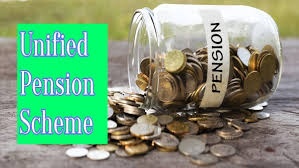
- 01 Sep 2024
In News:
The new Unified Pension Scheme (UPS), set to launch on April 1, 2025, aims to provide improved old age income security. Around 23 lakh Central government employees will benefit from this new scheme, and those currently under the National Pension System (NPS) will have the option to switch to UPS. States can also adopt the UPS for their employees, but they will need to secure funding from their own resources.
Key Components of UPS
The UPS introduces several enhancements to pension benefits:
- Pension Benefits: Employees will receive half of their average basic pay over the final 12 months of service as a monthly pension after completing a minimum of 25 years of service. For those with less than 25 years, the pension will be proportionately reduced, with a minimum pension of ?10,000 for those with at least 10 years of service.
- Family Pension: A family pension equivalent to 60% of the employee's pension will be provided to dependents upon the employee's death.
- Inflation Adjustment: Pension incomes will be adjusted in line with the consumer price trends for industrial workers, similar to the dearness relief provided to current government employees.
- Superannuation Payout: In addition to gratuity, a lumpsum superannuation payout will be given, amounting to 1/10th of the employee’s monthly emoluments for every six months of service.
Differences from the Current System
The new UPS combines features from the Old Pension Scheme (OPS) and NPS:
- Old Pension Scheme (OPS): Employees who joined before January 1, 2004, are covered under OPS, which guarantees a pension of 50% of the last drawn salary, adjusted for dearness allowance. It also offers a family pension of 60% of the last drawn pension, with provisions for commutation and additional increases for pensioners over 80 years of age.
- National Pension System (NPS): Introduced in 2004, NPS replaced OPS for new employees, shifting from a defined benefits system to a defined contribution scheme. Employees and the employer contribute a percentage of the salary to market-linked securities, with no guaranteed pension amount, only a corpus that must be used to buy an annuity upon retirement.
The UPS aims to blend the certainty of OPS with the funded approach of NPS. While employees' contributions will be capped at 10% of their salary, the government will contribute 18.5%, with potential adjustments over time. The government will cover any shortfall between investment returns and pension promises.
Reasons for the Change
The transition to UPS addresses concerns raised by government employees and political pressure regarding the NPS. Employees have criticized NPS for its lack of guaranteed pension benefits compared to OPS. The issue has become politically significant, with opposition parties promising to revert to OPS in various states.
In March 2023, Finance Minister Nirmala Sitharaman announced a review of NPS led by former Finance Secretary T.V. Somanathan. Though the review’s findings are yet to be made public, the introduction of UPS reflects a compromise balancing employee expectations with fiscal prudence.
Reactions and Future Impact
Central government employees generally welcome the UPS, recognizing it as a step toward addressing the shortcomings of NPS. However, there are concerns about the contributory nature of UPS and the absence of a commutation option like in OPS. Economists are analyzing the scheme's financial implications, with an expected additional cost of ?7,050 crore this year for the government. Future pension payouts may increase but are anticipated to be manageable with higher revenue growth.
The UPS marks a significant shift in pension policy, aiming to provide greater financial security for government employees while managing fiscal responsibilities.
New Target for Cancer Treatment Discovered by IACS Scientists
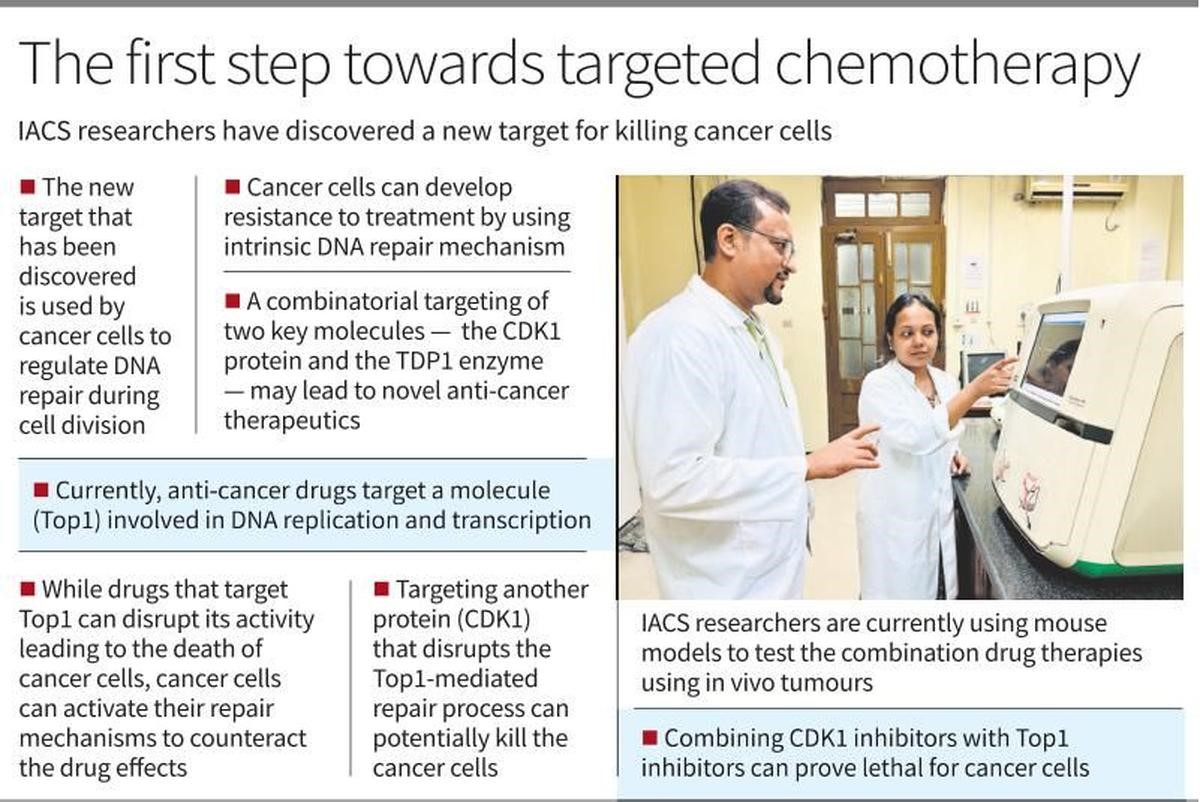
- 01 Sep 2024
In News:
In a significant breakthrough, scientists at the Indian Association for the Cultivation of Science (IACS) in Kolkata have identified a new target for cancer therapy. Their study, recently published in The EMBO Journal, focuses on how cancer cells manage DNA repair during cell division, potentially paving the way for more effective treatments.
Key Findings
The researchers explored how cancer cells respond to topoisomerase 1 (Top1)-targeted chemotherapy. Top1 inhibitors, such as camptothecin, topotecan, and irinotecan, disrupt DNA replication and transcription, causing damage that usually leads to cell death. However, cancer cells can sometimes develop resistance by employing internal DNA repair mechanisms, primarily involving a protein called TDP1.
Mechanism of Action
Top1 is crucial for relaxing DNA supercoils during cell division, a process necessary for accurate chromosome segregation. Drugs targeting Top1 can kill cancer cells by preventing this relaxation. Nonetheless, cancer cells counteract this damage with TDP1, which repairs the DNA and promotes cell survival.
The IACS team discovered that TDP1's function is influenced by its phosphorylation status, which changes during the cell cycle and drug treatment. This modification helps TDP1 detach from chromosomes during cell division, a mechanism that helps cells survive despite the presence of chemotherapy drugs.
Novel Therapeutic Approach
The researchers propose a novel approach that combines inhibitors of two key molecules: CDK1 protein and TDP1 enzyme. CDK1 plays a critical role in regulating the cell cycle, while TDP1 is involved in repairing DNA damage. By inhibiting both, the researchers aim to disrupt the cancer cell's ability to repair DNA damage caused by Top1 inhibitors.
This combinatorial targeting strategy could enhance the effectiveness of cancer treatments. While Top1 inhibitors induce DNA damage, CDK1 inhibitors could prevent the repair of this damage or halt the cell cycle, making it difficult for cancer cells to survive. This dual-target approach may also help overcome resistance mechanisms that cancer cells develop against single-agent therapies.
Clinical Implications
CDK1 inhibitors, including avotaciclib, alvocidib, roniciclib, riviciclib, and dinaciclib, are currently in various stages of clinical trials. These drugs can be used alone or in combination with other DNA-damaging agents. Combining CDK1 inhibitors with Top1 inhibitors holds promise for significantly improving cancer treatment outcomes by targeting different aspects of the cell cycle and DNA replication.
Although the study was conducted using human breast cancer cells, the findings suggest potential benefits for patients with other types of cancer, such as ovarian, colorectal, and small cell lung cancers (SCLC). SCLC, in particular, is associated with tobacco smoking and could potentially benefit from this new combinatorial approach.
Conclusion
The IACS study opens new possibilities for cancer treatment by targeting DNA repair mechanisms in cancer cells. By combining CDK1 and Top1 inhibitors, the researchers aim to enhance the effectiveness of chemotherapy and overcome resistance. Further research, including clinical trials, will be essential to validate these findings and develop personalized cancer therapies that could improve patient outcomes across various cancer types.
Recent Announcement on Dark Matter Research
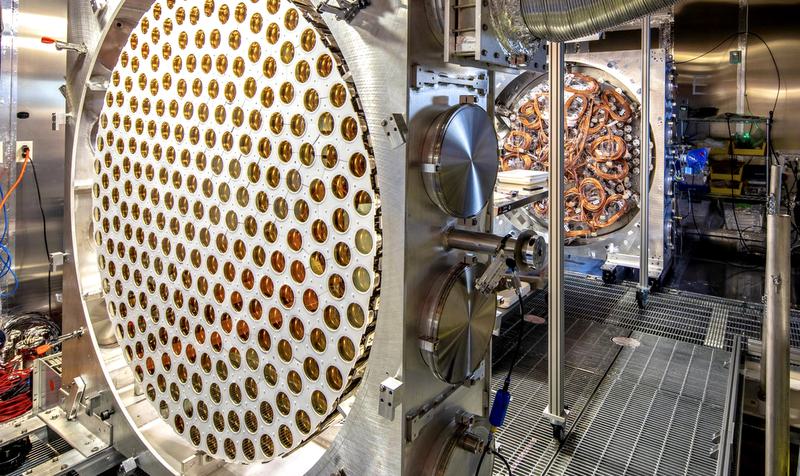
- 30 Sep 2024
In News:
Recently two representatives from the LUX-ZEPLIN (LZ) experiment, working 1.5 km underground at the Sanford Underground Research Facility in South Dakota, announced that they had placed the tightest restrictions yet on the identities of dark matter particles, resulting in a null finding that clarified which identities these particles could not have, leading to a sense of resignation rather than disappointment among the physics community, as similar experiments like XENON-nT in Italy and PandaX-4T in China have yielded empty results for decades despite significant efforts.
Background on Dark Matter
- Definition: Dark matter makes up most of the universe's mass, contributing to its structure.
- Composition: Likely consists of previously unknown particles that:
- Do not interact with photons.
- Remain stable over billions of years.
- Key Question: Can dark matter interact with atomic nuclei and electrons?
Experimental Strategies
- Proposed Method:
- Introduced by physicists Mark Goodman and Ed Witten in 1985.
- Concept: Use a “sail” (a chunk of metal) deep underground to detect dark matter interactions.
- Objective: Measure unknown mass and interaction rate (cross-section) of dark matter particles.
Scattering Cross-Section
- Concept:
- Similar to light interaction with different media (vacuum, glass, rock).
- Cross-sections indicate how readily a particle can scatter.
- Previous Limits: Proposed limits as small as 10−38cm210^{-38} text{cm}^210−38cm2.
- Current Achievements: Recent experiments have ruled out cross-sections as small as 10−44cm210^{-44} text{cm}^210−44cm2.
Challenges Ahead
- Neutrino Interference:
- As detectors increase in size, they also detect more noise from neutrinos, complicating dark matter detection.
- Both PandaX-4T and XENONnT report issues with neutrino signals.
- Resignation in Community:
- Scientists had hoped for clearer results before facing the challenge of distinguishing dark matter from neutrinos.
Alternative Research Avenues
- Focus on Lighter Particles:
- Exploring dark particles lighter than atomic nuclei for easier detection.
- Technological Development:
- Advancing technologies to measure minimal energy transfers using special materials.
Conclusion
- Ongoing Effort: The search for dark matter continues to unite scientific disciplines and require innovative approaches.
- Human Ingenuity: The pursuit reflects a broader effort to understand the universe, drawing on collective expertise and creativity.
NAMASTE programme
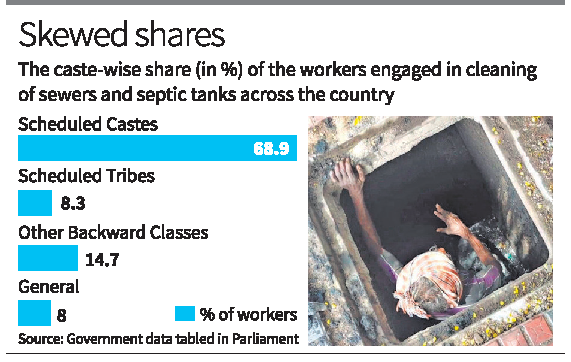
- 30 Sep 2024
In News:
A recent government survey has shed light on the demographics of workers engaged in the hazardous cleaning of urban sewers and septic tanks across India. This initiative, part of the Ministry of Social Justice and Empowerment's NAMASTE programme, highlights significant disparities within this labor sector.
Key Findings
- Community Representation: An overwhelming 91.9% of the 38,000 workers profiled belong to marginalized communities:
- Scheduled Castes (SC): 68.9%
- Other Backward Classes (OBC): 14.7%
- Scheduled Tribes (ST): 8.3%
- General Category: 8%
- Mortality Rates: Between 2019 and 2023, at least 377 individuals died while performing hazardous cleaning tasks, underscoring the dangers associated with this work.
The NAMASTE Programme
- Objective: The NAMASTE programme aims to mechanize sewer work to prevent fatalities linked to manual cleaning. It seeks to transition workers into safer, more sustainable roles as "sanipreneurs" by providing safety training, equipment, and capital subsidies.
- Background: This programme replaces the earlier Self-Employment Scheme for Rehabilitation of Manual Scavengers (SRMS), focusing on the more technical aspects of hazardous cleaning rather than manual scavenging.
- Namaste is a Central Sector Scheme of the Ministry of Social Justice and Empowerment (MoSJE) as a joint initiative of the MoSJE and the Ministry of Housing and Urban Affairs (MoHUA).
- The Scheme has been approved with an outlay of Rs. 360 crore for four years from 2022-23 to 2025-26.
- NAMASTE aims to achieve the following outcomes:
- Zero fatalities in sanitation work in India
- All sanitation work is performed by skilled workers
- No sanitation workers come in direct contact with human faecal matter
- Sanitation workers are collectivized into SHGs and are empowered to run sanitation enterprises
- All Sewer and Septic tank sanitation workers (SSWs) have access to alternative livelihoods
- Strengthened supervisory and monitoring systems at national, state and ULB levels to ensure enforcement and monitoring of safe sanitation work
- Increased awareness amongst sanitation services seekers (individuals and institutions) to seek services from registered and skilled sanitation workers
Progress and Coverage
- Implementation: Since the scheme's inception, 3,326 urban local bodies (ULBs) have begun profiling workers, with many reporting minimal or no workers engaged in hazardous cleaning.
- Data Collection: The government is gathering data from over 3,000 ULBs across 29 states and union territories to better understand the scope and risks associated with this labor.
AVGC: The Future of Media & Entertainment Industry
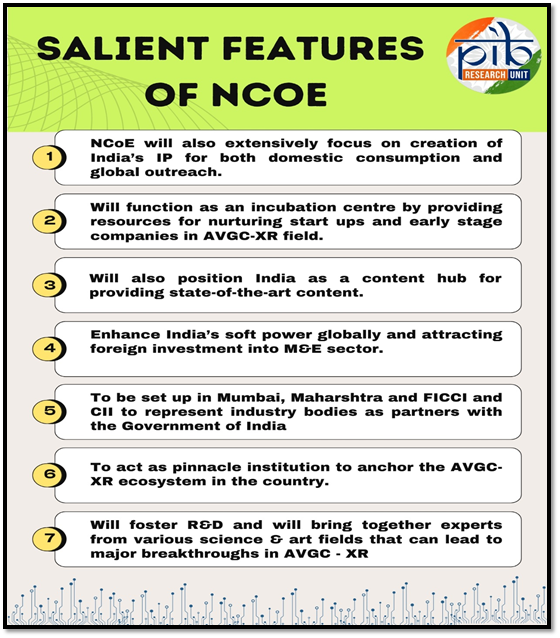
- 30 Sep 2024
Introduction
- The AVGC (Animation, Visual Effects, Gaming, Comics) sector is set to be the future of the media and entertainment industry.
- According to the FICCI-EY 2024 report, India now boasts the second-largest anime fan base globally and is projected to contribute 60% to the worldwide growth in anime interest in the coming years.
- In a significant step toward making India a global hub for AVGC, the Union Cabinet recently approved the establishment of a National Centre of Excellence (NCoE) for Animation, Visual Effects, Gaming, Comics, and Extended Reality (AVGC-XR) in Mumbai.
NCoE Background
- NCoE will be set up as a Section 8 Company under the Companies Act, 2013 in India with Federation of Indian Chambers of Commerce & Industry and Confederation of Indian Industry representing the industry bodies as partners with the Government of India.
- The establishment of the NCoE follows the Union Minister of Finance and Corporate Affairs 2022-23 budget announcement, which proposed the creation of an AVGC task force in the country.
- NCoE AVGC aims at creating a world class talent pool in India to cater to the Indian as well as global entertainment industry.
- Provisionally named the Indian Institute for Immersive Creators (IIIC), this center aims to revolutionize the AVGC sector and foster innovation in immersive technologies.
- It will be modeled after renowned institutions like the Indian Institutes of Technology (IITs) and Indian Institutes of Management (IIMs).
Objective of NCoE (IIIC)
Boasting a growth rate of 25% and an estimated value of ?46 billion by 2023 (FICCI-EY Report 2023), the animation industry in India is thriving and offers a promising future for passionate young talent.
Below are some of the key objectives of the NCoE (IIIC):
- Focusing of creating Indian IP
- Leveraging our cultural heritage in new age
- Create a multiplier effect in the industry
- An industry led initiative, in partnership with state and academia
- Integrated focus on education, skilling industry, development, innovation
- Hub and spoke model of development to be followed
- IIIC as the hub and several center’s as its spokes dedicated innovation and research fund to promote start-up ecosystem
Conclusion
The Union Cabinet's approval of the National Centre of Excellence (NCoE) for AVGC marks a pivotal step in strengthening India’s media and entertainment industry. This initiative is set to boost the economy while creating new job opportunities in the rapidly growing AVGC sector. As a global hub for filmmaking, India's advancements in technology and infrastructure will enable the production of high-quality content, positioning the country as a leader in technological innovation and creativity.
MARBURG VIRUS OUTBREAK IN RWANDA
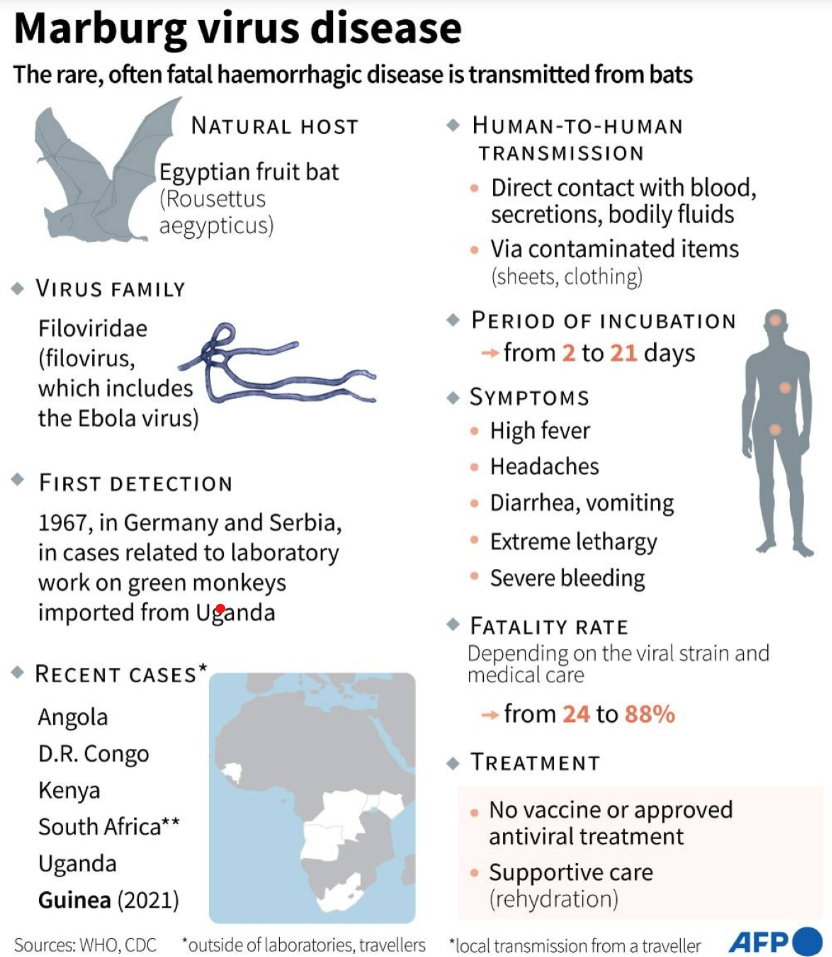
- 30 Sep 2024
In News:
Rwanda is currently facing an outbreak of Marburg virus disease (MVD), leading to six fatalities, primarily among healthcare workers.
What is Marburg Virus Disease?
Marburg virus disease is a severe and often fatal illness first identified in 1967 in Germany. It is caused by the Marburg virus, which is primarily transmitted to humans through contact with infected animals, particularly fruit bats.
Current Situation in Rwanda
The ongoing outbreak has claimed six lives, most of whom were healthcare professionals. The Minister of Health has emphasized the need for heightened preventive measures and community vigilance.
Symptoms and Transmission
Common symptoms of MVD include high fever, severe headache, watery diarrhea, abdominal pain, and vomiting. The virus spreads through direct contact with the blood, secretions, and bodily fluids of infected individuals.
Available Treatments and Supportive Care
There is currently no specific treatment for Marburg virus disease. Supportive care, including symptom management and hydration, is critical, and early medical attention is essential for those exhibiting symptoms.
Preventive Measures and Recommendations
To prevent the spread of MVD, individuals should:
- Practice good hygiene.
- Avoid contact with infected persons.
- Ensure thorough cooking of animal products.
- Use protective equipment when caring for sick patients.
Global Context and Pandemic Risk
While Marburg virus disease poses a significant mortality risk and can spread between humans, its pandemic potential is lower than that of more contagious viruses. Rapid containment efforts are essential to prevent wider outbreaks.
INDIA DESERVES PERMANENT UNSC SEAT: BHUTAN
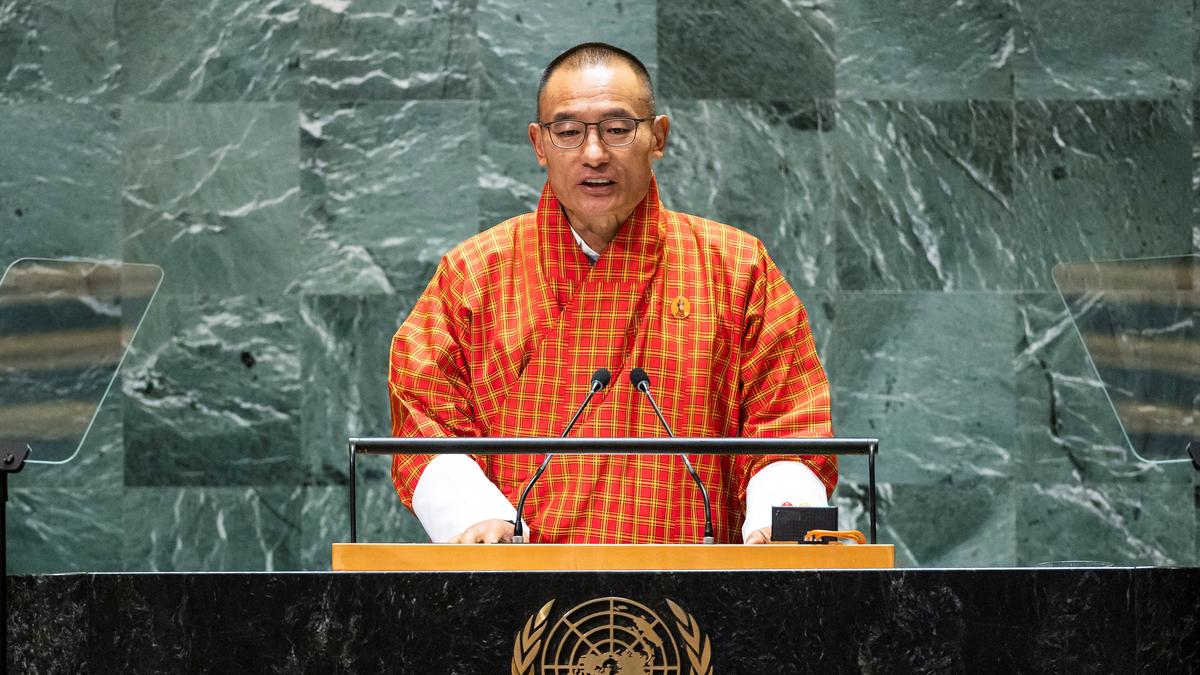
- 30 Sep 2024
In News:
With its significant economic growth and leadership of the Global South, India deserves a permanent seat at the UN Security Council, says Bhutan’s Prime Minister Tshering Tobgay.
Key Highlights:
- Economic Growth: Highlights India’s significant economic growth and its leadership in the Global South as justifications for this status.
- International Backing: India’s bid gains momentum with support from several UN Member States, including France, the UK, and the U.S.
- Need for Reform: Bhutan emphasized that the UNSC is outdated and must evolve to reflect contemporary geopolitical and economic realities.
- Advocacy for Representation: Bhutan has long called for a more representative and effective Security Council, backing India’s inclusion at the high table.
About UN Security Council (UNSC)
- Composition: Total of 15 member states.
- 5 permanent members (P5): China, France, Russia, the United Kingdom, and the United States (with veto rights).
- 10 non-permanent members elected for two-year terms.
- Election of Non-Permanent Members:
- Elected on a regional basis:
- 5 seats for African and Asian states.
- 2 seats for Latin American and Caribbean states.
- 1 seat for Eastern European states.
- 2 seats for Western European and other states.
- Elected on a regional basis:
- Presidency:
- Rotates monthly among members, following the English alphabetical order of country names.
- Primary Functions:
- Maintain international peace and security.
- Investigate and resolve disputes.
- Impose sanctions and authorize the use of force.
- Establish peacekeeping missions.
- Make recommendations to member states.
- Meeting Schedule:
- Regular meetings at UN headquarters in New York.
- Can convene at any time in response to emergencies.
- Decision-Making:
- Requires affirmative votes from at least 9 of the 15 members.
- Any of the P5 can veto resolutions, raising concerns about the Council's effectiveness.
- Subsidiary Bodies:
- Includes committees, working groups, and sanctions committees focused on specific issues like counter-terrorism, nuclear non-proliferation, and peacekeeping operations.
- Reforming the UN Security Council (UNSC)
- Charter Amendments:
- Reforming the UNSC requires amendments to the UN Charter.
- Voting Requirements:
- An amendment must be adopted by a two-thirds majority of the General Assembly.
- It must also be ratified by two-thirds of UN member states, including all permanent members of the UNSC.
- Charter Amendments:
Paryatan Mitra and Paryatan Didi
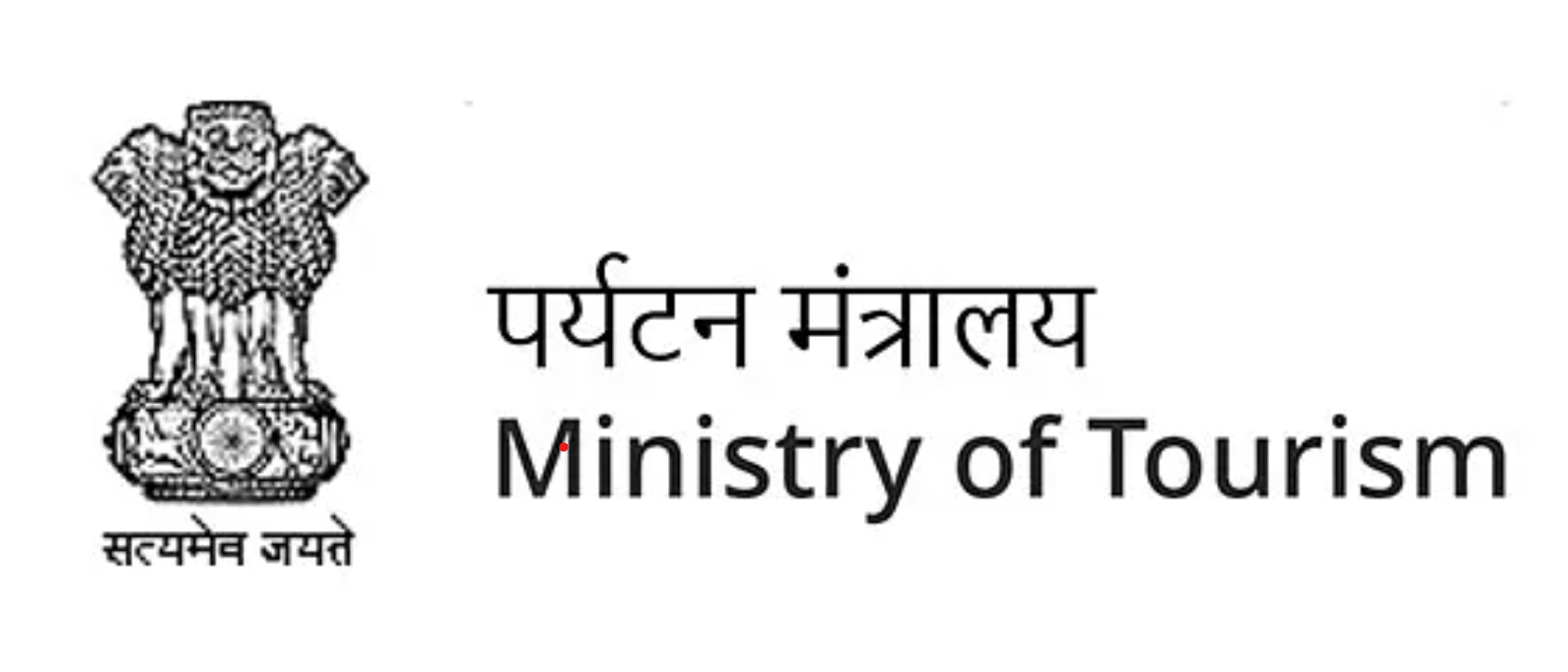
- 29 Sep 2024
In News:
- The Ministry of Tourism, Government of India, launched the national responsible tourism initiative ‘Paryatan Mitra & Paryatan Didi’ on September 27, 2024, coinciding with World Tourism Day.
- Vision: Aligned with the Prime Minister's vision to use tourism as a tool for social inclusion, employment, and economic development.
Pilot Locations
- Destinations: The initiative is piloted in six tourist destinations:
- Orchha (Madhya Pradesh)
- Gandikota (Andhra Pradesh)
- Bodh Gaya (Bihar)
- Aizawl (Mizoram)
- Jodhpur (Rajasthan)
- Sri Vijaya Puram (Andaman & Nicobar Islands)
Objectives and Training
- Enhancing Tourist Experience: The program aims to connect tourists with ‘tourist-friendly’ individuals who serve as local ambassadors and storytellers.
- Training Focus: Individuals interacting with tourists—such as cab drivers, hotel staff, street vendors, and students—receive training on:
- Importance of tourism and hospitality
- Cleanliness and safety
- Sustainability practices
- Local stories and attractions
Empowering Women and Youth
- Target Groups: Emphasis on training women and youth to develop tourism products such as:
- Heritage walks
- Food and craft tours
- Nature treks and homestays
- Employment Opportunities: Aims to enable locals to secure jobs as homestay owners, cultural guides, and adventure guides.
Digital Literacy
- Training in Digital Tools: Participants are also educated in digital literacy to enhance visibility of their offerings to tourists.
Impact and Recognition
- Training Success: Since the program's pilot in August 2024, approximately 3,000 individuals have been trained.
- Local Enthusiasm: Increased local interest in participating in tourism training programs and contributing to the tourism ecosystem.
- Future Recognition: The Ministry plans to award dedicated badges to Paryatan Mitra and Didi participants, ensuring tourists can identify those committed to providing exceptional experiences.
ETURNAGARAM WILDLIFE SANCTUARY
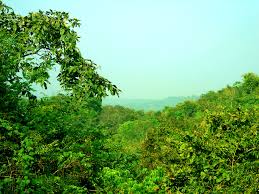
- 29 Sep 2024
In News:
A rare collision of two cyclones has led to significant environmental impact, including the flattening of thousands of trees within the sanctuary.
Key Details:
- Location: Situated in the Mulugu district of Telangana, near the borders of Maharashtra and Chhattisgarh. Approximately 100 km from Warangal and 250 km from Hyderabad.
- Establishment: Declared a wildlife sanctuary in 1952 by the Nizam government of Hyderabad.
- Area: Covers around 806 square kilometers.
Geographic Features
Rivers:
- Dayyam Vagu: A significant water source that divides the sanctuary into two parts.
- Godavari River: Flows through the sanctuary, contributing to its rich biodiversity.
Flora
- Vegetation: Dense tropical dry deciduous forest.
- Key Species: Includes teak, bamboo, madhuca, and terminalia trees, creating a lush habitat.
Fauna
- Wildlife: Home to diverse species such as:
- Mammals: Tiger, leopard, panther, wolf, wild dogs, jackals, sloth bear, chousingha, blackbuck, nilgai, sambar, spotted deer, and four-horned antelope.
- Reptiles: Notable for its population of mugger crocodiles and snakes, including cobras, pythons, and kraits.
Cultural Significance
- Temple: The famous Sammakka-Saralamma Temple is located within the sanctuary.
INDIA TO SUPPORT TRINIDAD AND TOBAGO IN DEVELOPING UPI-LIKE PAYMENT SYSTEM
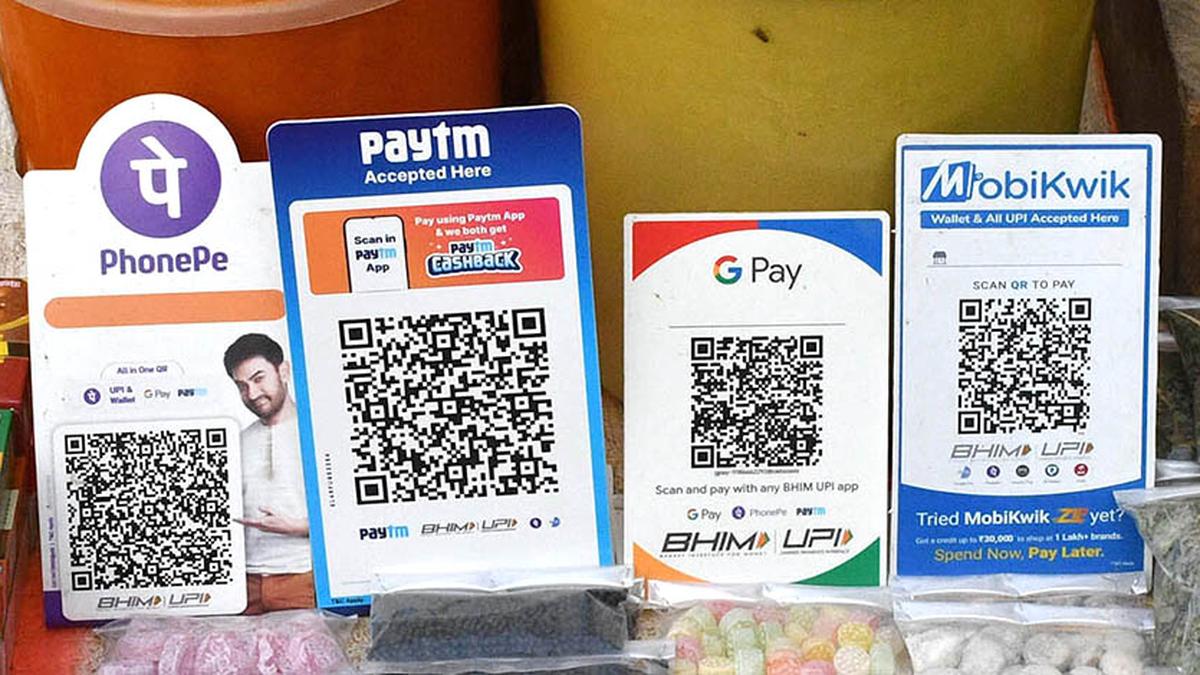
- 29 Sep 2024
In News:
- NPCI International Payments Limited (NIPL) has partnered with Trinidad and Tobago's Ministry of Digital Transformation to create a payment platform for person-to-person and person-to-merchant transactions.
- Modeling on UPI: The new digital payments system will be based on India’s Unified Payments Interface (UPI), which is widely recognized as a leading digital payment solution.
- Role of NPCI: NIPL, a quasi-government body under the Reserve Bank of India, manages India’s retail payment systems, including UPI.
Previous Initiatives
- Global Expansion: Earlier in 2024, NIPL also committed to establishing digital payment systems in Peru and Namibia, leveraging the UPI model.
- Ongoing Talks: NIPL is exploring opportunities with additional countries in Africa and South America to assist in building their payment infrastructures.
Significance:
- UPI has emerged as a transformative force in India's financial landscape, registering nearly 15 billion transactions in August 2024, with an estimated value of USD 245 billion.
- This strategic partnership aims to empower Trinidad and Tobago to establish a reliable and efficient real-time payments platform for both person-to-person (P2P) and person-to-merchant (P2M) transactions, expanding digital payments in the country and fostering financial inclusion.
India’s Commitment to Social Determinants of Health at UNGA
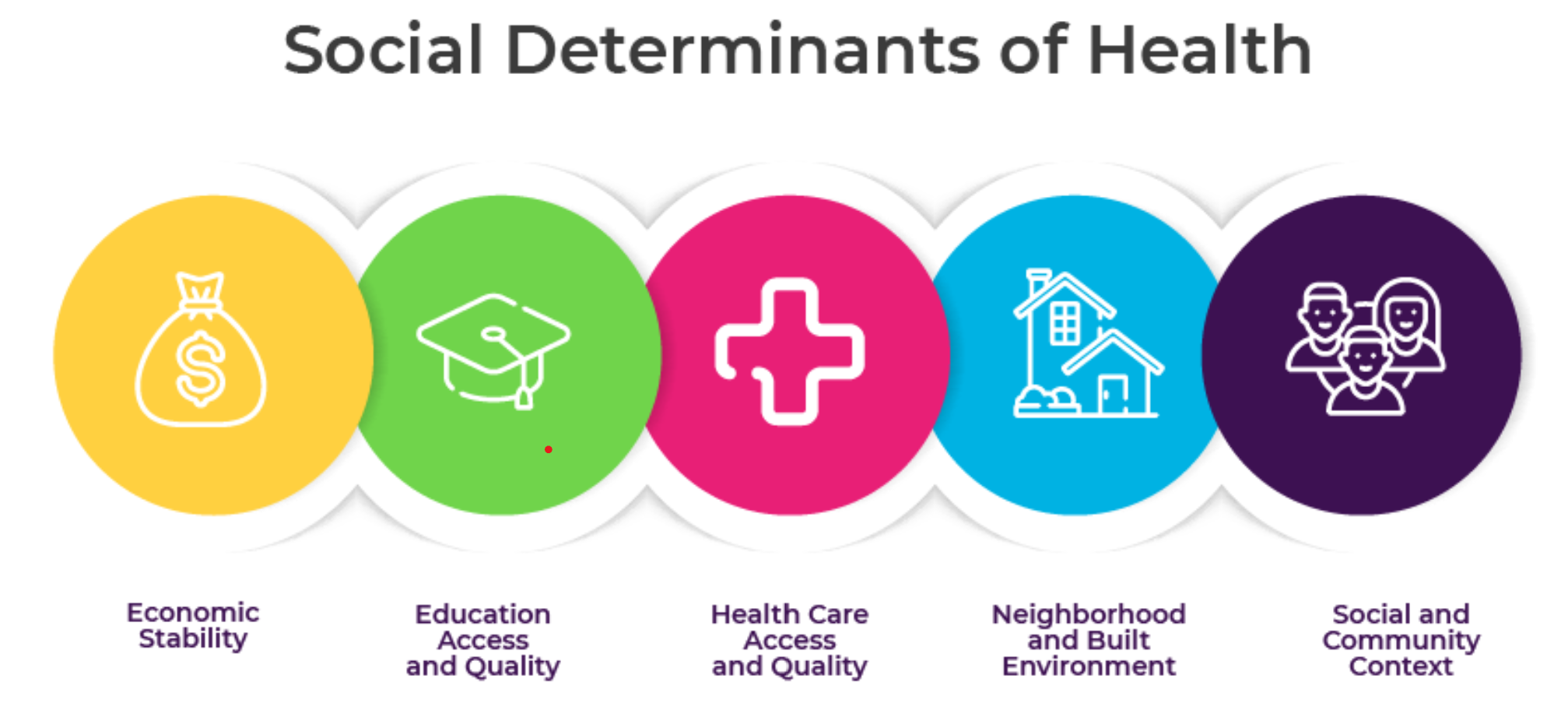
- 29 Sep 2024
In News:
- Union Minister of State for Health and Family Welfare, represented India at the G20 Joint Finance-Health Task Force meeting during the 79th UN General Assembly.
- Focus: The session emphasized the importance of investing in health and addressing social determinants of health (SDH) through initiatives like debt-for-health swaps.
Key Highlights:
- Role of SDH: Underscored how social determinants such as housing, sanitation, water access, and income security are crucial for health investment priorities.
- Flagship Programs: India’s notable initiatives include:
- Ayushman Bharat: The world’s largest health insurance scheme.
- Swachh Bharat Mission: Aiming for a cleaner India.
- Jal Jeevan Mission: Ensuring water access for all.
- Pradhan Mantri Awas Yojana: Promoting housing for all.
- Impact of PM-JAY: Highlighted improvements in access to healthcare and outcomes, especially for non-communicable diseases.
Data and Policymaking
- Importance of Data: Stressed the need for enhanced data availability and standardization on SDH indicators to support effective policymaking.
- Unified Approach: Called for G20 nations to collaborate on data collection and analysis for better health systems globally.
Exploring Debt-for-Health Swaps
- Potential Mechanism: Discussed debt-for-health swaps as a means to relieve financial pressure while promoting health equity.
- Next Steps: Emphasized the need for stakeholder engagement and pilot programs to ensure effective implementation.
Conclusion
- Global Leadership: India reaffirmed its commitment to health equity through evidence-based policies and partnerships.
- Shared Vision: Advocated for a unified effort towards achieving “Health for All,” highlighting the significance of investments in social determinants of health.
About Social determinants of health (SDOH)
- SDOH are non-medical factors that affect a person's health, well-being, and quality of life. They include the conditions in which people are born, grow, work, live, and age.
- SDOH also include the broader systems that shape everyday life, such as economic policies, social norms, and political systems.
- Some examples of SDOH include:
- Safe housing, transportation, and neighborhoods
- Racism, discrimination, and violence
- Education, job opportunities, and income
- Access to nutritious foods and physical activity opportunities
- Polluted air and water
- Language and literacy skills
GST COMPENSATION CESS
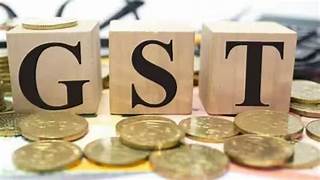
- 29 Sep 2024
In News:
- GST compensation cess likely to continue beyond January 2026, with potential rebranding and new end-use defined.
- Revenue Collection: Estimated Rs 20,000 crore expected from the cess by February 2026, with recent receipts of Rs 12,068 crore in August 2024.
- Cess Nature: The compensation cess, originally intended for revenue shortfall, cannot merge with the 28% GST slab due to regulatory limitations.
Financial Context
- RBI Study Insights: Weighted average GST rate decreased from 14.4% at launch to 11.6%, now even below 11%, raising concerns among states.
- State Concerns: Many states, including Punjab and Kerala, seek a 2-5 year extension for the compensation period to stabilize finances.
Regulatory Framework
- Cess Legislation: GST Compensation Cess is governed by the Goods and Services Tax (Compensation to States) Act, 2017, initially set for five years.
- Taxpayer Obligations: All suppliers of designated goods/services must collect the cess, except exporters and those under the composition scheme.
Distribution Mechanism
- Calculation of Compensation: Based on projected revenue growth (14%) against actual revenue, with payments distributed bi-monthly.
- Surplus Distribution: Any surplus in the compensation fund post-transition period will be shared between the Centre and states.
Future Considerations
- Ministerial Panel: A panel established by the GST Council will recommend the cess's future and revenue sharing post-compensation.
- Tax Expert Opinions: Some experts argue against pursuing the revenue-neutral rate, suggesting broader tax base expansion instead.
- Revenue Gap Solutions: Options for addressing compensation fund deficits include revising cess formulas, increasing rates, or market borrowing.
IBSA (INDIA, BRAZIL, SOUTH AFRICA) GROUPING
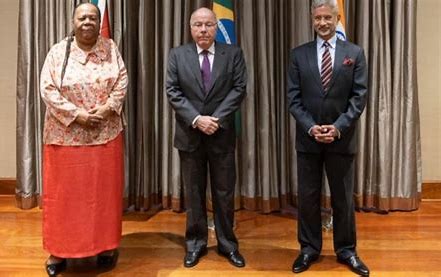
- 28 Sep 2024
In News:
In a significant move for global security, the Foreign Ministers of the IBSA (India, Brazil, South Africa) grouping issued a strong declaration against terrorism during the 79th UN General Assembly in New York. This declaration condemned terrorism in all its forms and reaffirmed the collective responsibility of the international community to eliminate terrorist safe havens worldwide.
Key Points from the IBSA Declaration:
- Universal Threat: The ministers stressed that terrorism is a threat that transcends borders, cultures, and governments.
- Rule of Law: They emphasized that counter-terrorism efforts must adhere to international law, particularly the UN Charter and human rights laws, ensuring civil liberties are respected.
- International Framework: A call was made for establishing a comprehensive international counter-terrorism framework, with the United Nations at its core, to coordinate global efforts against terrorism.
- Cross-Border Security: The declaration highlighted the need for stringent actions against the movement of terrorists and the financing of terrorist networks, condemning groups like Al-Qaeda, ISIS/Daesh, Lashkar-e-Tayyiba (LeT), and Jaish-e-Mohammad (JeM).
- Comprehensive Convention: A renewed commitment to accelerate the adoption of the Comprehensive Convention on International Terrorism at the UN was emphasized, aiming to create a unified legal framework for combating terrorism.
POLITICAL DECLARATION ON ANTIMICROBIAL RESISTANCE (AMR)
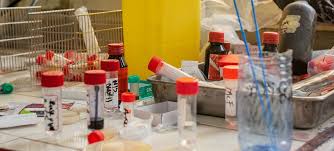
- 28 Sep 2024
In News:
World leaders have officially adopted the Political Declaration on Antimicrobial Resistance (AMR) at the UN High-Level Meeting, highlighting the urgent need for coordinated global action to combat AMR, which claims 1.27 million lives annually. This declaration recognizes drug-resistant tuberculosis (DR-TB) as a critical component of the global AMR response, marking a significant moment in the fight against antimicrobial resistance.
Key Highlights of the Declaration
- DR-TB Priority: The declaration emphasizes the severe burden that DR-TB imposes on health systems, especially in low- and middle-income countries (LMICs), and the potential reversal of progress made against tuberculosis and the Sustainable Development Goals.
- Global Death Reduction Target: A target to reduce global deaths associated with AMR by 10% by 2030 and a funding goal of USD 100 million to help at least 60% of countries establish funded AMR plans by 2025.
- Support for Vulnerable Groups: Recognition of the socioeconomic challenges faced by those affected by AMR, affirming the need for integrated, person-centered healthcare, including support to reduce stigma.
- Independent Panel for Action: Agreement to establish an independent panel to provide evidence for actions against AMR by 2025.
Commitment to Action
The Stop TB Partnership applauds this commitment and urges UN Member States to provide necessary funding for implementing the declaration's commitments. The partnership aims to work closely with governments and civil society to translate these commitments into concrete actions.
Challenges of Antimicrobial Resistance
AMR poses a significant threat, particularly in LMICs, where it exacerbates existing healthcare challenges:
- Increased Infections: Medical facilities often become hotspots for treatment-resistant infections, making routine procedures riskier. In LMICs, about 11% of surgical patients experience infections.
- Lack of Resources: Access to clean water, proper diagnostics, and antimicrobial medicines is often limited, increasing vulnerability to drug-resistant infections.
- Impact of Conflicts: AMR complicates treatment in conflict zones, where drug-resistant infections spread rapidly among displaced populations, further emphasizing the need for peaceful resolutions.
Economic Implications of AMR
The economic case for addressing AMR is compelling:
- Without a stronger response, AMR could lead to an additional $412 billion in healthcare expenditures annually over the next decade, along with $443 billion in losses due to workforce participation and productivity declines.
- Implementing critical AMR interventions is considered a “best buy,” with a potential return of $7 to $13 for every dollar invested.
AYUSHMAN BHARAT DIGITAL MISSION (ABDM)
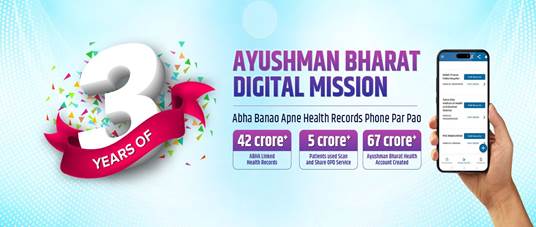
- 28 Sep 2024
In News:
Over 67 crore Ayushman Bharat Health Accounts (ABHA) have been created in the past three years under the Ayushman Bharat Digital Mission (ABDM). The digital healthcare mission marked its three-year anniversary.
Key Highlights:
- Launch Date: September 27, 2021.
- Vision: Establish a robust digital health infrastructure to enhance healthcare accessibility, efficiency, and transparency.
- Duration: A transformative three-year journey aimed at revolutionizing India’s digital healthcare ecosystem.
Objectives and Background
- Alignment with National Health Policy: The mission stems from the National Health Policy (2017), emphasizing accessibility and the integration of digital technologies.
- Building Blocks:
- National Health Stack (2018) introduced unique health identifiers and verified registries.
- National Digital Health Blueprint (2019) provided guidance for implementing ABDM.
Key Features of ABDM
- Unique Health Identifier (ABHA ID): Assigns a unique ID to every individual for managing health records.
- Healthcare Professionals Registry (HPR): Comprehensive database of healthcare professionals across all systems of medicine.
- Health Facility Registries (HFR): Repository of public and private health facilities, including hospitals, clinics, and pharmacies.
- Health Information Exchange and Consent Manager (HIE-CM): Allows secure access and sharing of health records based on informed consent.
- Unified Health Interface (UHI): Facilitates the discovery and delivery of health services.
- National Health Claims Exchange (HCX): Standardizes the insurance payment process for quicker claims.
- Data Privacy and Security: Ensures confidentiality and security of health-related information in compliance with the Digital Personal Data Protection Act, 2023.
- Interoperability: Enables seamless data exchange among stakeholders, supported by key gateways (HIE-CM, NHCX, UHI).
- Transparency: Offers individuals access to both public and private health services, ensuring transparent pricing and accountability.
Key Initiatives
- Scan and Share: QR-code based OPD registration reduces wait times and improves data accuracy.
- Digital Health Incentive Scheme (DHIS): Financial incentives to encourage participation in the ABDM ecosystem, launched on January 1, 2023.
- Microsites for Private Sector Adoption: Operationalized 106 microsites to facilitate ABDM adoption among private providers.
- End-to-End ABDM Adoption Pilot: Aimed at digitizing healthcare facilities across India, with 131 selected for participation.
Achievements
- Health Accounts Creation: Over 67 crore Ayushman Bharat Health Accounts (ABHA) established, linking 42 crore health records.
- Ecosystem Participation: Involvement of 236 private entities and leading public institutions, enhancing interoperability.
- Healthcare Facility Registration: 3.3 lakh health facilities and 4.7 lakh healthcare professionals registered.
Moving Towards Transformation
- Collaborations: Partnerships with IIT Kanpur and Maharashtra University of Health Sciences to drive digital health education and public goods development.
- Training Initiatives: Introduction of a WhatsApp Chatbot for stakeholder training on digital health practices.
- Digital Health Standards: Launched by the National Accreditation Board of Hospitals to promote digital health technology adoption.
- Integration of eSwasthya Dham Portal: Extends ABDM benefits to Char Dham Yatris.
Vision for the Future
ABDM aims to create a seamless digital health ecosystem, ensuring every Indian citizen has access to their health records through a unique ABHA ID. The initiative includes:
- Clinical Decision Support System (CDSS): Aids healthcare professionals in improving clinical decision-making and patient outcomes.
INDIA-UZBEKISTAN BILATERAL INVESTMENT TREATY (BIT)

- 28 Sep 2024
In News:
India and Uzbekistan signed the Bilateral Investment Treaty (BIT) aimed at boosting the confidence of investors of both the countries.
Key Highlights:
- Investor Protections:
- Assured Protection: The BIT guarantees protection for investors from both countries, aligning with international standards.
- Minimum Standards: It establishes a minimum standard of treatment and non-discrimination for investors.
- Dispute Resolution: An independent arbitration forum will be available for dispute settlement.
- Investment Safeguards:
- Protection from Expropriation: The treaty safeguards investments from unjust expropriation.
- Transparency and Compensation: Provisions are included for transparency and compensation for losses incurred.
- Regulatory Balance: While protecting investors, the treaty maintains a balance with the state's right to regulate, ensuring adequate policy space for both countries.
Economic Context
- Shared Commitment: The BIT reflects the commitment of both nations to foster economic ties and create a resilient investment environment.
- Expected Outcomes: It is anticipated that the treaty will facilitate increased bilateral investments, benefiting businesses and economies in India and Uzbekistan.
- Current Investment Landscape: As of August 2024, Overseas Direct Investment (ODI) from India to Uzbekistan stands at $20 million, with Indian investments notable in sectors such as pharmaceuticals, amusement parks, automobile components, and hospitality.
India and Bilateral Investment Treaties
BITs are reciprocal agreements between two countries designed to promote and protect foreign private investments within each other's territories.
- Key Guarantees Established:
- National Treatment: Foreign investors are treated on par with domestic companies.
- Fair and Equitable Treatment: Investors receive treatment aligned with international law.
- Protection from Expropriation: Limits the ability of a country to seize foreign investments without appropriate compensation.
- Status of BITs in India
- Historical Context:
- Until 2015, India had signed BITs with 83 countries, with 74 currently in force. These agreements were based on the Indian Model BIT established in 1993.
- Revisions and Current Approach: In 2015, India revised its Model BIT text. Since then, India has:
- Signed new BITs/Investment Agreements with four countries.
- Entered negotiations with 37 countries/blocks for new agreements.
- Terminated older BITs with 77 countries, with only six remaining in force.
- Historical Context:
- Key Features of the Revised Model BIT
- Investor Protection:
- Provides robust protection for foreign investors in India and Indian investors abroad.
- Balances investor rights with government obligations.
- Investor Confidence:
- Enhances investor confidence by ensuring non-discriminatory treatment and a level playing field.
- Establishes an independent arbitration forum for dispute resolution.
- Investment Definition:
- Adopts an "enterprise"-based definition of investment to encompass various forms of investment.
- Dispute Settlement Provisions:
- Refined Investor-State Dispute Settlement (ISDS) provisions require investors to exhaust local remedies before seeking international arbitration.
- Limits arbitration tribunals to awarding monetary compensation only.
- Regulatory Authority Preservation:
- Excludes government procurement, taxation, subsidies, compulsory licenses, and national security from BIT coverage, ensuring the government retains regulatory authority.
- Investor Protection:
- Strategic Impact
- Preferred FDI Destination: The revised BIT aims to position India as a preferred destination for foreign direct investment (FDI).
- Protection of Outbound FDI: It also focuses on safeguarding outbound investments made by Indian entities.
GLOBAL INNOVATION INDEX (GII) 2024
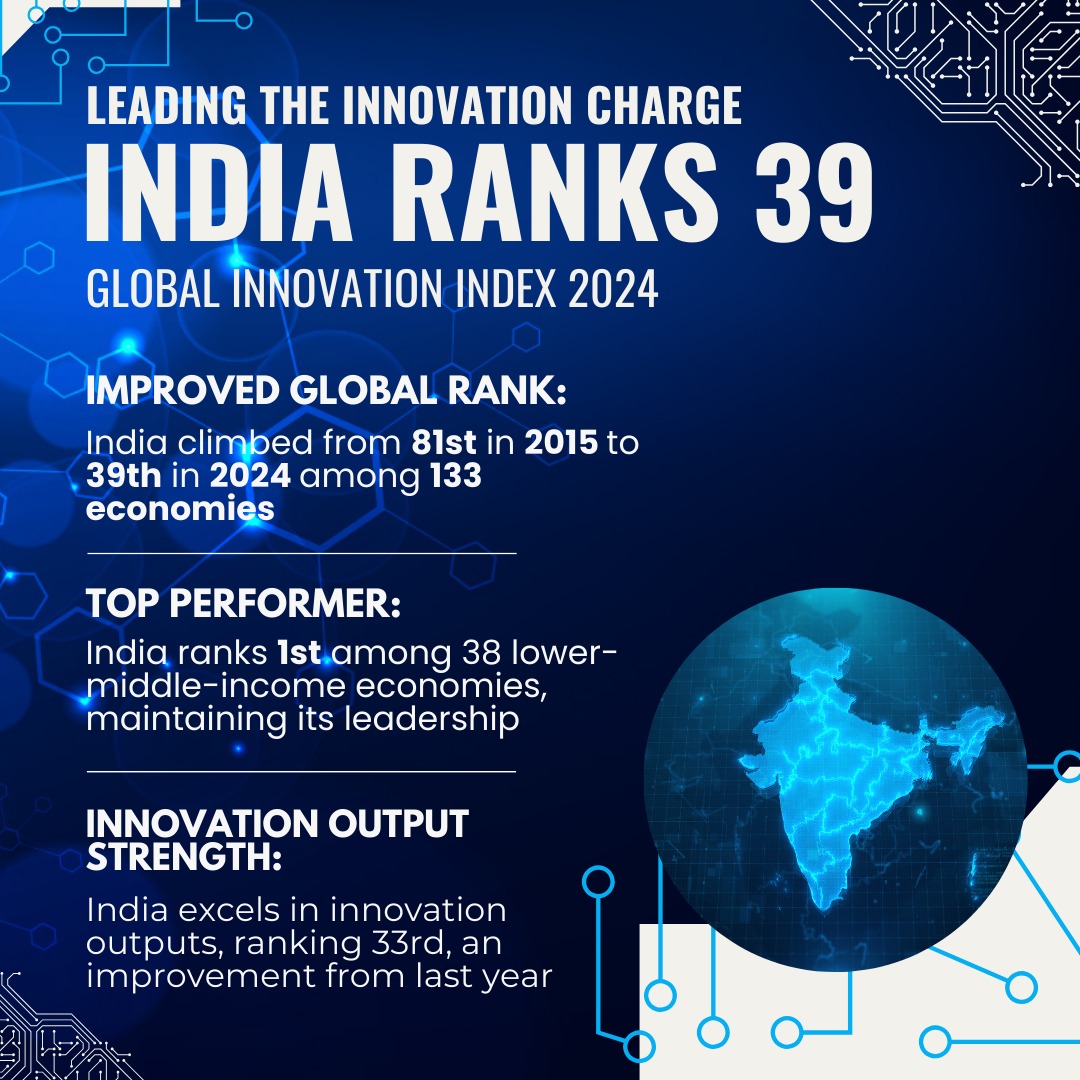
- 28 Sep 2024
In News:
- India has moved up to 39th place among 133 economies in the GII 2024, showcasing significant progress from its 81st position in 2015.
Key Details:
- Regional Leadership: India ranks first among the 10 economies in Central and Southern Asia, highlighting its emerging leadership in innovation within the region.
- Lower-Middle-Income Economies: India is also the top-ranked lower-middle-income economy in the GII.
- WIPO Science & Technology Ranking: India holds the 4th position in the World Intellectual Property Organization (WIPO) Science & Technology Cluster Ranking, indicating robust innovation capabilities.
- Top Science & Technology Clusters: Major Indian cities—Mumbai, Delhi, Bengaluru, and Chennai—are recognized among the world’s Top 100 S&T clusters, emphasizing urban centers' roles in fostering innovation.
- Intangible Asset Intensity: India ranks 7th globally in intangible asset intensity, reflecting a strong focus on knowledge-based assets and intellectual property.
Context and Significance of GII
- Purpose of GII: The GII evaluates innovation ecosystems of 133 economies, providing insights into trends that drive economic and social change through innovation.
- Global Leaders: The top five most innovative economies according to the GII 2024 are Switzerland, Sweden, the US, Singapore, and the UK.
- Fastest Climbers: India is among the fastest climbers in the GII over the past decade, alongside China, Turkey, Vietnam, and the Philippines.
Overview of WIPO
- Foundation and Mission: The World Intellectual Property Organization (WIPO), established in 1974 and part of the UN since then, aims to support global innovators and creators, ensuring the safe journey of their ideas to market.
- Membership: WIPO comprises 193 member states, including a diverse range of developing and developed countries, facilitating a broad exchange of intellectual property knowledge.
- Headquarters: Geneva, Switzerland.
WORLD TOURISM DAY 2024
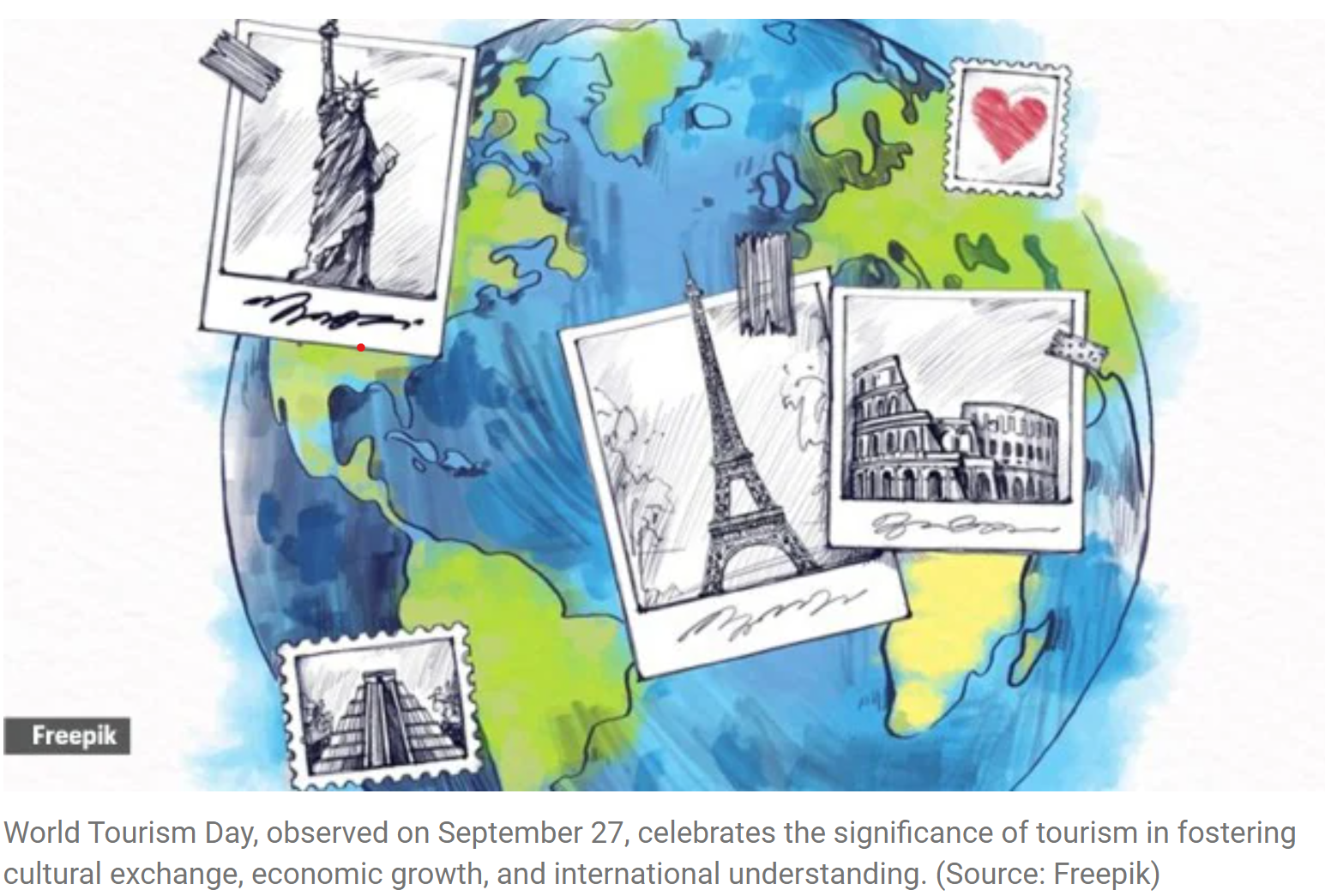
- 27 Sep 2024
In News:
The Ministry of Tourism celebrated World Tourism Day on September 27, 2024, under the theme “Tourism and Peace.” The focus was on how tourism fosters global peace by encouraging cross-cultural interactions and understanding.
Key Details:
- World Tourism Day, established in 1980 by the United Nations World Tourism Organisation (UNWTO), celebrates the global impact of tourism and raises awareness about its economic, social, and cultural significance.
- This day celebrates the diverse experiences that tourism offers and commits to making travel more inclusive, sustainable, and beneficial for all; here’s all you need to know about the day.
- The date, September 27, was chosen to commemorate the adoption of UNWTO statutes in 1975
- The theme for World Tourism Day 2024 is “Tourism and Peace,” which will highlight the association between tourism and world peace, with the United Nations emphasising the significance of comprehending diverse cultures and encouraging sustainable tourism.
World Tourism Day: Significance and Celebrations
- World Tourism Day is a global event that celebrates the role of tourism in bridging cultural gaps, enhancing mutual understanding, and driving economic development.
- It focuses on responsible tourism practices, celebrating diverse cultural heritage, and addressing environmental sustainability and fair distribution of benefits.
- Events include seminars, workshops, and conferences on the theme of the year, cultural festivals, exhibitions, and public performances.
- Educational campaigns and community outreach activities raise awareness about responsible travel, supporting local economies, and protecting natural environments.
Note:
- The World Economic Forum, in its recently released Travel and Tourism Development Index (TTDI), shares the top countries gaining popularity in the travel and tourism industry.
- Notably, in Southeast Asia, India ranks 39th as the TTDI’s top lower-middle-income economy. India’s strong Natural (6th), Cultural (9th) and Non-Leisure (9th) resources drive its travel industry, with the country’s being only one of three to score in the top 10 for all the resources pillars.
- The TTDI measures the set of factors and policies that enable the sustainable and resilient development of the T&T sector, which in turn contributes to the development of a country. Among the 119 countries, here are the top 10 countries for travel and tourism in 2024 attracting travellers from all over the globe.
GlobE Network
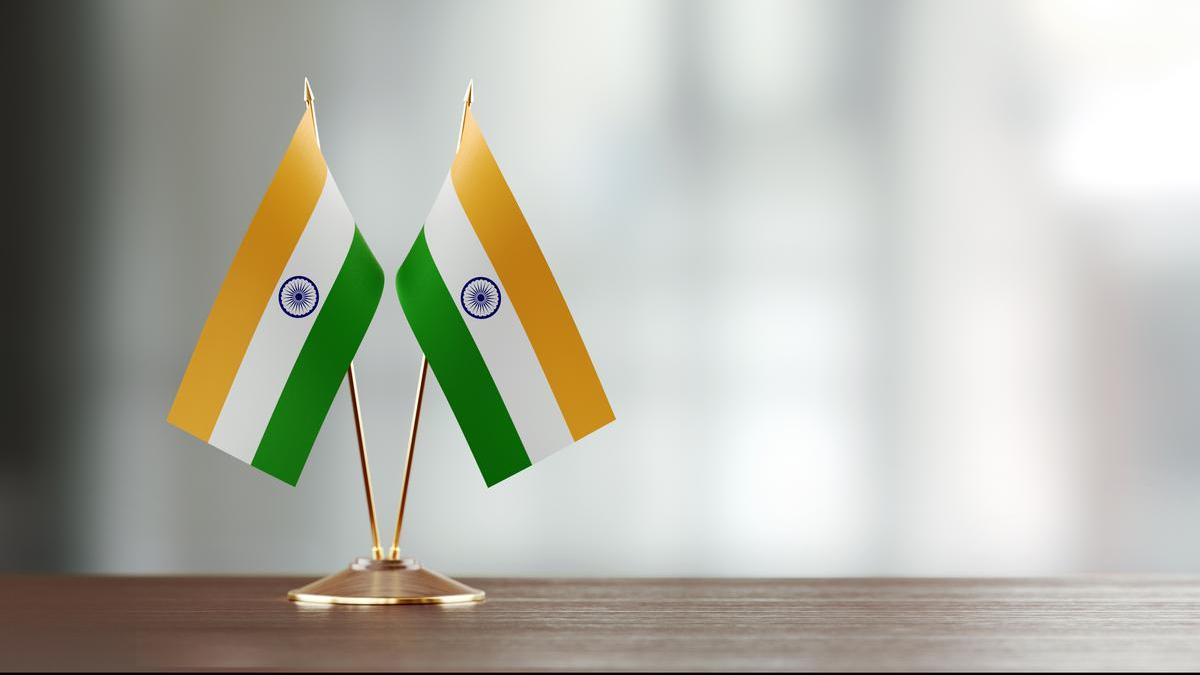
- 27 Sep 2024
In News:
- India was elected to the 15-member GlobE Steering Committee on September 26, 2024, in a plenary session in Beijing. The election involved a multistage voting process.
- Role and Significance:
- India will play a vital role in shaping the global agenda on corruption and asset recovery.
- The Central Bureau of Investigation (CBI) highlighted India's expertise in combating corruption as a significant asset for the GlobE Network.
- About the GlobE Network:
- The Global Operational Network of Anti-Corruption Law Enforcement Authorities (GlobE Network) is a G-20 initiative, supported by India since 2020.
- Officially launched on June 3, 2021, during a UN General Assembly session against corruption.
- Currently comprises 121 member countries and 219 member authorities.
- Governance Structure:
- The Ministry of Home Affairs (MHA) serves as the central authority for India within the GlobE Network.
- Indian member authorities include the CBI and the Enforcement Directorate (ED).
- The Steering Committee consists of one chair, one vice-chair, and 13 members providing leadership and direction.
- Functionality and Objectives:
- The GlobE Network facilitates the sharing of best practices, criminal intelligence, and strategy development among international agencies to combat corruption.
- It is supported by the United Nations Office on Drugs and Crime (UNODC), which provides secretariat services.
- G-20 Presidency Initiatives:
- During India’s G-20 Presidency in 2023, two high-level principles for combating corruption were adopted, emphasizing the use of the GlobE Network to enhance global cooperation.
PLANETARY BOUNDARIES AND OCEAN ACIDIFICATION

- 27 Sep 2024
In News:
A new report from the Potsdam Institute for Climate Impact Research (PIK) indicates that the world's oceans are nearing critical acidity levels.
- Key Findings:
- Nine Crucial Factors: The report identifies nine essential elements for sustaining life on Earth.
- Exceeded Limits: Six of these factors have already surpassed safe limits due to human activities.
- Ocean Acidification: This is poised to become the seventh boundary breached.
- Crossed Boundaries:
- Factors Affected:
- Climate change
- Loss of natural species and habitats
- Depletion of freshwater resources
- Increase in pollutants, including plastics and agricultural chemicals
- Factors Affected:
- Causes of Ocean Acidification:
- Primarily driven by rising carbon dioxide (CO2) emissions from burning fossil fuels (oil, coal, gas).
- Implications of Acidification:
- Damage to corals, shellfish, and phytoplankton, disrupting marine ecosystems.
- Threats to food supplies for billions of people.
- Reduced capacity of oceans to absorb CO2, exacerbating global warming.
- Ozone Layer Status:
- Currently not close to being breached; showing recovery since the banning of harmful chemicals in 1987.
- Air Quality Concerns:
- A ninth boundary related to particulate matter is near danger limits.
- Improvements in air quality are noted, but industrializing nations still face pollution risks.
- Tipping Points:
- Crossing these boundaries could lead to irreversible and catastrophic consequences for humanity and future generations.
- All boundaries are interconnected; breaching one can destabilize the entire system.
- Opportunities for Solutions:
- Addressing critical issues, such as limiting temperature rise to 1.5 degrees Celsius above pre-industrial levels, can have widespread benefits across multiple environmental challenges.
Planetary boundaries
- The planetary boundaries were introduced in 2009 to define the global environmental limits within which humans can safely live.
- Johan Rockström, former director of the Stockholm Resilience Centre, led a group of 28 renowned scientists to identify the nine processes that regulate the stability and resilience of the Earth system.
- Climate Change: Greenhouse gas concentrations, primarily CO2, are the primary metric here. Exceeding the recommended levels risks amplifying global warming.
- Ocean Acidification: Oceans absorb CO2, leading to decreased pH levels. This boundary measures the carbonate ion concentration, vital for marine life like corals.
- Stratospheric Ozone Depletion: The ozone layer protects life from harmful ultraviolet radiation. This boundary emphasizes the ozone concentration in the stratosphere.
- Nitrogen and Phosphorus Cycles: Excess nitrogen and phosphorus, often from fertilizers, can disrupt ecosystems. Here, the focus is on their flow into the environment.
- Freshwater Use: Freshwater is vital for life. This boundary pinpoints the annual consumption of freshwater resources.
- Land-System Change: As we modify landscapes, particularly through deforestation, we alter habitats and carbon storage capabilities. This threshold concerns the amount of forested land remaining.
- Biodiversity Loss: Biodiversity underpins ecosystem resilience. This metric observes the extinction rate of species.
- Atmospheric Aerosol Loading: Aerosols influence climate and human health. This boundary examines their density in the atmosphere.
- Chemical Pollution: Synthetic chemicals can harm ecosystems and human health. This boundary reviews their concentration and spread.
ASIA POWER INDEX

- 26 Sep 2024
In News:
In a major shift, India surpassed Japan to become the third-largest power in the Asia Power Index, reflecting its increasing geopolitical stature. This achievement is driven by India's dynamic growth, youthful population, and expanding economy, solidifying its position as a leading force in the region.
Key Factors Behind India’s Rise:
- Economic Growth: India has shown remarkable post-pandemic economic recovery, contributing to a 4.2-point rise in its Economic Capability. India’s massive population and strong GDP growth reinforce its standing as the world’s third-largest economy in PPP terms.
- Future Potential: India’s Future Resources score increased by 8.2 points, signalling a potential demographic dividend. Unlike its regional competitors, particularly China and Japan, India benefits from a youthful population that will continue to drive economic growth and labour force expansion in the coming decades.
- Diplomatic Influence: Prime Minister Narendra Modi’s leadership has garnered greater international recognition. India’s non-aligned strategic posture has allowed New Delhi to navigate complex international waters effectively. India ranked 6th in terms of diplomatic dialogues in 2023, reflecting its active engagement in multilateral forums.
- Further, India’s large population and economic capabilities offer it substantial promise. India’s score in Cultural Influence has also remained relatively strong, underpinned by its global diaspora and cultural exports.
- In addition, India’s role in multilateral diplomacy and security cooperation has been a point of emphasis. India's participation in dialogues, as well as its leadership in the Quad, has allowed it to play a significant role in regional security dynamics, albeit outside of formal military alliances.
Asia Power Index
- The Asia Power Index, launched by the Lowy Institute in 2018, is an annual measure of power dynamics in the Asia-Pacific region.
- It evaluates 27 countries across the Asia-Pacific, examining their ability to shape and respond to the external environment.
- The 2024 edition offers one of the most comprehensive assessments of power distribution in the region to date. Timor-Leste has been included for the first time, reflecting its growing importance in Southeast Asia.
- The Index focuses on both the material capabilities of states and the influence they exert on the international stage.
Criteria and Parameters of Power Measurement
Power in the Asia Power Index is divided into resource-based and influence-based determinants:
- Resource-Based Determinants:
- Economic Capability: The core economic strength of a country, measured through indicators like GDP at purchasing power parity (PPP), technological sophistication, and global economic connectivity.
- Military Capability: Evaluates conventional military strength based on defense spending, armed forces, weapon systems, and signature capabilities like long-range power projection.
- Resilience: The internal capacity to deter threats to state stability, including institutional robustness, geopolitical security, and resource security.
- Future Resources: Forecasts the future distribution of resources, including economic, military, and demographic factors projected for 2035.
- Influence-Based Determinants:
- Economic Relationships: The capacity to exercise leverage through trade, investment, and economic diplomacy.
- Defense Networks: The strength of alliances and partnerships, measured through military cooperation and arms transfers.
- Diplomatic Influence: The extent of a country's diplomatic reach, participation in multilateral forums, and foreign policy ambition.
- Cultural Influence: The ability to shape international public opinion through cultural exports, media, and people-to-people ties.
A country's overall power score is derived from a weighted average of these eight measures, encompassing 131 individual indicators. The results offer a nuanced understanding of how countries convert their resources into influence within the Asia-Pacific.
10 YEARS OF MAKE IN INDIA

- 26 Sep 2024
In News:
The “Make in India” initiative has completed 10 years. It was launched by Prime Minister Narendra Modi on September 25, 2014.
KEY TAKEAWAYS:
- The ‘Make in India’ campaign aims to facilitate investment, foster innovation, enhance skill development, protect intellectual property & build best in class manufacturing infrastructure.
- “Make in India” was designed to transform India into a global hub for design and manufacturing.
- Seen as an important ‘Vocal for Local’ initiative, its objective is twofold. Firstly, to boost India’s manufacturing capabilities and secondly to showcase its industrial potential on a global stage.
- The “Make in India 2.0” phase encompassing 27 sectors – both manufacturing and service.
4 pillars of “Make in India” initiative:
- New Processes: To enhance the business environment, promote entrepreneurship and startups – ‘ease of doing business’ became a crucial factor.
- New Infrastructure: Development of industrial corridors, smart cities, integrating state-of-the-art technology and high-speed communication to create world-class infrastructure, improving intellectual property rights (IPR) infrastructure etc.
- New Sectors: Opening of Foreign Direct Investment (FDI) in sectors like Defence Production, Insurance, Medical Devices, Construction, and Railway infrastructure.
- New Mindset: In order to support industrial growth and innovation – the government embraced a role as a facilitator rather than a regulator. The Government partners with industry in the economic development of the country.
Key Initiatives to enable Make in India initiative
Production linked Incentive (PLI) Schemes: The primary goals of the PLI Schemes are to attract substantial investments, incorporate advanced technology, and ensure operational efficiency. These schemes cover 14 key sectors aimed at fostering investment in cutting-edge technology and promoting global competitiveness.
PM GatiShakti: It is a strategic initiative aimed at achieving Aatmanirbhar Bharat and a US $5 trillion economy by 2025 through the creation of multimodal and last-mile connectivity infrastructure. PM GatiShakti is a transformative approach for economic growth and sustainable development. The approach is driven by 7 engines, namely:
- Railways
- Roads
- Ports
- Waterways
- Airports
- Mass Transport
- Logistics Infrastructure
Semiconductor Ecosystem Development: It encompasses four key schemes:
- Modified Scheme for Setting Up Semiconductor Fabs in India
- Modified Scheme for Setting Up Display Fabs in India
- Modified Scheme for Setting Up Compound Semiconductors, Silicon Photonics, Sensors Fabs, and Discrete Semiconductors, along with Semiconductor Assembly, Testing, Marking, and Packaging (ATMP) / OSAT Facilities in India
- Design Linked Incentive (DLI) Scheme
It aims to foster the development of a sustainable semiconductor and display ecosystem in the country.
The Semicon India Programme aims to provide a significant impetus to semiconductor and display manufacturing by facilitating capital support and promoting technological collaborations.
National Logistics Policy: Introduced to complement the PM GatiShakti National Master Plan. It focusses on enhancing the soft infrastructure of India’s logistics sector.
The Comprehensive Logistics Action Plan (CLAP) was rolled out. The key areas which it addresses are logistics systems, standardization, human resource development, state engagement, and logistics parks.
The National Industrial Corridor Development Programme: Aims to create “Smart Cities” and advanced industrial hubs.
Startup India: Several programs aimed at supporting entrepreneurs, building a robust startup ecosystem, and transforming India into a country of job creators instead of job seekers were rolled out.
Implementation of the Goods and Services Tax (GST): As India’s tax reforms, it is seen as crucial in the context of the Make in India initiative.
Unified Payments Interface: For India’s digital economy growth, it is seen as one of the key initiatives to enable ease of doing business.
Ease of Doing Business: The efforts aim to simplify regulations, reduce bureaucratic hurdles, and create a more business-friendly environment, significantly boosting investor confidence and supporting the objectives of the Make in India initiative.
China test-fires an intercontinental ballistic missile into the Pacific Ocean

- 26 Sep 2024
In News:
China stated that it test-launched an intercontinental ballistic missile, firing it into the Pacific Ocean in its first such exercise in decades.
- Launch Details:
- The missile carried a dummy warhead and fell into a designated area in the high seas.
- The specific flight path and landing location were not disclosed.
- Testing Objectives:
- The launch tested weapon performance and troop training levels, achieving its expected objectives.
- Historical Context:
- This is the first ICBM test over the Pacific Ocean in over 40 years.
- China's first ICBM, the DF-5, was test-fired in 1980.
- ICBM Specifications:
- The latest ICBM, likely the DF-41, has an estimated range of 12,000 to 15,000 kilometers (7,400 to 9,300 miles), capable of reaching the US mainland.
- Strategic Messaging:
- Analysts interpret the test as a warning to the US, suggesting direct intervention in Taiwan could expose the American homeland.
- The test signals China's ability to engage multiple fronts simultaneously.
- Regional Tensions:
- Recent weeks have seen heightened tensions with Japan, the Philippines, and Taiwan due to military incursions and exercises.
- International Norms:
- There is a global expectation to notify nations of long-range missile launches to avoid miscalculations. China has limited agreements regarding this, primarily with Russia.
- Military Buildup:
- Under Xi Jinping, China has enhanced its nuclear capabilities and revamped the PLA’s Rocket Force.
- Recent satellite imagery indicates the construction of hundreds of ICBM silos in China’s deserts.
- Future Projections:
- As of 2023, China has over 500 operational nuclear warheads, projected to exceed 1,000 by 2030 according to the Pentagon.
- Implications of the Test:
- The ICBM test may be aimed at demonstrating military readiness despite recent corruption scandals within the Rocket Force.
About ICBMs:
- An intercontinental ballistic missile (ICBM) is a long-range ballistic missile system primarily designed for nuclear weapons delivery. They are powerful and destructive weapons, capable of travelling vast distances at incredibly high speeds.
- Key features of ICBMs:
- Range: Range greater than 5,500 kilometres with maximum ranges varying from 7,000 to 16,000 kilometres.
- Speed: ICBMs can travel at speeds exceeding 20,000 kilometres per hour.
- Payload: Typically designed to carry nuclear warheads, though they could potentially be used to deliver other types of weapons, such as chemical or biological weapons.
- Deployment: ICBMs can be launched from silos underground, mobile launchers on land, or submarines at sea.
- Countries having operational ICBMs: Russia, United States, China, France, India, United Kingdom, Israel and North Korea.
INDIA'S BIOE3 POLICY AND SMART PROTEINS

- 26 Sep 2024
In News:
The Indian government recently approved the Biotechnology for Economy, Environment, and Employment (Bioe3) Policy, which prioritizes the production of "smart proteins". This initiative aligns with broader national goals of achieving a sustainable, circular bioeconomy and a Net Zero carbon economy.
What Are Smart Proteins?
Smart proteins are alternative proteins derived from unconventional sources such as:
- Algae
- Fungi
- Insects
- Fermentation processes
- Lab-grown cells
This category also includes plant-based proteins, designed to replicate the taste and nutritional value of animal products without the need for livestock farming.
Environmental Benefits
The production of smart proteins offers significant environmental advantages:
- Water Use: 72-99% less water compared to conventional meat.
- Land Use: 47-99% less land required.
- Water Pollution: 51-91% reduction in pollution.
- Greenhouse Gas Emissions: 30-90% fewer emissions.
Health and Safety
With rising incomes, India's protein consumption has increased, from 9.7% of calories in 1991 to 11% in 2021. Smart proteins:
- Enhance food safety by reducing the risk of zoonotic diseases.
- Foster ethical consumption and align with traditional Indian dietary preferences.
Objectives of the BioE3 Policy
The Bioe3 Policy aims to:
- Foster high-performance biomanufacturing.
- Promote sustainable growth and innovation in biotechnology.
- Support the transition towards a Net Zero carbon economy.
By emphasizing the development of smart proteins, the Bioe3 Policy represents a strategic move towards a more sustainable and resilient food system in India.
ACHIEVING GLOBAL NUCLEAR DISARMAMENT

- 26 Sep 2024
Overview
Global nuclear disarmament remains a top priority for the United Nations, initially emphasized in the General Assembly’s first resolution in 1946. Despite historical efforts, approximately 12,100 nuclear weapons still exist today, with ongoing modernization plans in many countries.
Key Historical Milestones
- 1945: Atomic bombings of Hiroshima and Nagasaki, killing an estimated 213,000 people.
- 1946: First UN resolution identifies nuclear disarmament as a key goal.
- 1959: General Assembly endorses the goal of general and complete disarmament.
- 1963: Opening of the Partial Test Ban Treaty.
- 1978: First Special Session of the General Assembly dedicated to disarmament.
- 1996: Comprehensive Nuclear-Test-Ban Treaty opens for signature.
- 2017: Adoption of the Treaty on the Prohibition of Nuclear Weapons.
Recent Developments
- 2019: U.S. withdrawal from the Intermediate-Range Nuclear Forces Treaty.
- 2023: Russia suspends participation in the New START Treaty, raising concerns over arms control.
The International Day for the Total Elimination of Nuclear Weapons
- Established: December 2013, following a high-level meeting on nuclear disarmament.
- Observed: Annually on September 26.
- Purpose: Raise awareness about the dangers of nuclear weapons and promote their total elimination.
Goals of the International Day
- Enhance public education on the humanitarian risks associated with nuclear weapons.
- Mobilize international efforts towards a nuclear-weapon-free world.
Continuing Challenges
- The doctrine of nuclear deterrence remains central to the security policies of nuclear-armed states and their allies.
- No nuclear weapons have been destroyed under a treaty framework, and current disarmament negotiations are stagnant.
- Growing frustration among UN Member States over the slow progress in nuclear disarmament.
NAGAR VAN YOJANA (NVY)

- 25 Sep 2024
In News:
Recently, the Ministry of Environment, Forest and Climate Change, Government of India achieved a 100-Day Target of 100 Nagar Vans under Nagar Van Yojana (NVY) with the objective to Enhance Urban Greenery.
Key Details:
- Launch: Initiated in 2020 to enhance urban greenery, improve quality of life, and foster social cohesion.
- Financial Support: Offers ?4 lakh per hectare for creation and maintenance of urban forests.
- Area Specification: Nagar Van areas range from 10 to 50 hectares.
- Coverage: Applicable to all cities with Municipal Corporations, Municipalities, and Urban Local Bodies (ULBs).
Achievements
- 100-Day Target: The Ministry of Environment, Forest and Climate Change achieved a target of 100 Nagar Vans, surpassing it with the approval of 111 Nagar Vans in just 100 days.
- Geographic Spread: These 111 Nagar Vans are distributed across six states and one Union Territory.
Features of Nagar Vans
- Biodiversity Focus: Emphasis on planting fruit-bearing, medicinal, and native species to attract wildlife and maintain ecological balance.
- Community Involvement: Engages citizens, students, and stakeholders through tree planting, educational programs, and sustainable management.
- Design Elements: Each Nagar Van includes two-thirds tree cover and features components like Biodiversity Parks, Smriti Vans, Butterfly Conservatories, Herbal Gardens, and Matri Vans.
Future Goals
- Expansion Plans: Target to develop 1,000 Nagar Vans by 2027, supported by the National Compensatory Afforestation Management and Planning Authority (National CAMPA).
- Environmental Impact: Aims to protect forest land from degradation and address urban environmental issues such as air pollution and habitat loss.
Ek Ped Maa Ke Naam Campaign
- Launch Date: Introduced on June 5, 2024, during World Environment Day.
- Purpose: Encourages tree planting as a tribute to mothers, fostering a culture of environmental stewardship.
- Tree Planting Goals: Aims to plant 80 crore trees by September 2024 and 140 crore by March 2025.
- Tracking Efforts: Participants can document their planting through the MeriLiFE portal, where over 75 crore saplings have been recorded.
Recent Initiatives
- Tree Plantation Drive: A recent drive on September 17, 2024, aimed at creating Matri Vans in newly approved Nagar Vans, highlighting community and governmental collaboration for sustainable urban development.
Ideas4LiFE Initiative

- 25 Sep 2024
In News:
The Ideas4LiFE portal was launched by Union Minister for Environment, Forest and Climate Change, at IIT Delhi.
- Purpose: Designed to invite innovative ideas related to products and services that promote environmentally friendly lifestyles.
- Development Partner: Created in collaboration with UNICEF YuWaah.
Key Features of the Ideas4LiFE Portal
- Themes: Aligned with Mission LiFE, focusing on:
- Water Conservation
- Energy Efficiency
- Waste Reduction
- E-Waste Management
- Minimizing Single-Use Plastics
- Embracing Sustainable Food Practices
- Fostering Healthy Lifestyles
- Recognition: Winning ideas will be awarded attractive prizes for both individuals and institutions.
Engagement and Outreach
- Submissions: As of now, the portal has received approximately 3,300 registrations and over 1,000 ideas.
- Social Media Impact: The initiative has garnered 46.5 million impressions and a reach of 13.5 million through social media under the hashtag #Ideas4LiFE.
Collaboration with Educational Institutions
- Partnerships: Collaborations with the University Grants Commission (UGC), All-India Council for Technical Education (AICTE), and various educational institutions to promote the Ideathon among students and researchers.
- Objective: Encourage the academic community to contribute innovative, citizen-focused ideas that support sustainable living.
Future Plans
- Evaluation Process: Submitted ideas will be evaluated by a jury, leading to the announcement of shortlisted and winning ideas.
- Implementation: Winning ideas will be included in a national repository, allowing stakeholders, including government bodies and private entities, to nurture and scale these innovations.
Mission LiFE Context
- Definition: Mission LiFE (Lifestyle For Environment) is a campaign initiated at UN Climate Change Conference COP26 in 2021.
- Goals:
- Mobilize at least one billion people for environmental protection.
- Make 80% of villages and urban local bodies environment-friendly by 2028.
- Promote small, everyday actions to combat climate change.
- Philosophy: Emphasizes the P3 model—Pro Planet People—uniting individuals in the commitment to environmental stewardship.
KEY FINDINGS ON ATROCITIES AGAINST SCS AND STS (2022)

- 23 Sep 2024
In News:
According to the latest report under the Scheduled Castes and Scheduled Tribes (Prevention of Atrocities) Act by the Social Justice and Empowerment Ministry, the majority of atrocities against Scheduled Tribes (STs) were also concentrated in 13 states, which reported 98.91% of all cases in 2022.
- Case Statistics:
- Total cases of atrocities against Scheduled Castes (SCs): 51,656
- Total cases against Scheduled Tribes (STs): 9,735
- 97.7% of SC cases and 98.91% of ST cases reported from 13 states.
- States with Highest Incidents:
- SCs:
- Uttar Pradesh: 12,287 cases (23.78%)
- Rajasthan: 8,651 cases (16.75%)
- Madhya Pradesh: 7,732 cases (14.97%)
- Other significant states: Bihar (6,799), Odisha (3,576), Maharashtra (2,706)
- STs:
- Madhya Pradesh: 2,979 cases (30.61%)
- Rajasthan: 2,498 cases (25.66%)
- Odisha: 773 cases (7.94%)
- Other significant states: Maharashtra (691), Andhra Pradesh (499)
- SCs:
- Charge Sheets and Investigations:
- SC-related cases: 60.38% resulted in charge sheets; 14.78% ended with final reports (false claims/lack of evidence).
- ST-related cases: 63.32% led to charge sheets; 14.71% concluded similarly.
- Pending investigations by end of 2022: 17,166 SC cases, 2,702 ST cases.
- Conviction Rates:
- Decline from 39.2% in 2020 to 32.4% in 2022.
- Infrastructure Deficiencies:
- Only 194 out of 498 districts in 14 states have established special courts for these cases.
- Lack of identified atrocity-prone areas in states like Uttar Pradesh despite high case numbers.
- Protection Cells:
- SC/ST protection cells established in multiple states and union territories.
Reasons for Atrocities Against SCs and STs
- Caste Prejudice: Deep-rooted hierarchies and social exclusion lead to violence.
- Land Disputes: Conflicts over land access among historically deprived SC/ST communities.
- Economic Marginalization: Limited access to education and resources heightens vulnerability.
- Power Imbalance: Dominant castes wield political and social influence, perpetuating discrimination.
- Inadequate Law Enforcement: Weak implementation of protective laws and bureaucratic bias hinder justice.
- Political Exploitation: Caste tensions are sometimes used for electoral gains.
Scheduled Castes and Scheduled Tribes (Prevention of Atrocities) Act, 1989
- Objective: Protect SCs and STs from caste-based violence and discrimination.
- Key Provisions:
- Defines various offences against SC/ST members, prescribing stricter punishments.
- Excludes anticipatory bail provisions for accused under the Act.
- Mandates establishment of special courts for speedy trials.
- Investigations must be conducted by senior police officers and completed within stipulated time frames.
- Recent Amendments:
- 2015: Enhanced protections for SC/ST women.
- 2019: Restored original provisions for arrest procedures following a Supreme Court ruling.
Recommendations for Improvement
- Strengthen Legal Framework: Establish more special courts and train personnel in sensitive handling of SC/ST cases.
- Improve Reporting Mechanisms: Enhance systems for victims to report atrocities without fear.
- Awareness Campaigns: Educate communities on SC/ST rights and legal protections.
- Targeted Interventions: Identify and address issues in atrocity-prone districts.
- Monitoring and Evaluation: Implement frameworks for accountability and continuous improvement in addressing these issues.
- Collaborate with NGOs: Work with civil society to support victims and advocate for their rights.
100 YEARS OF ICAR-NISA

- 23 Sep 2024
Overview:
The ICAR-National Institute of Secondary Agriculture (NISA), originally established in 1924 as the Indian Institute of Natural Resins and Gums in Ranchi, Jharkhand, marks its centenary this year. Renamed in 2022, it operates under the Ministry of Agriculture and Farmers’ Welfare, focusing on enhancing the value of agricultural products.
Understanding Secondary Agriculture:
Secondary agriculture encompasses the transformation of primary agricultural products into higher-value commodities and includes activities such as:
- Beekeeping
- Poultry farming
- Agricultural tourism
This sector plays a crucial role in converting agricultural produce, residues, and by-products into valuable goods for various uses, including pharmaceuticals, food, and industrial applications. Examples of secondary agriculture practices include:
- Extracting vitamins from grains
- Producing oil from rice bran
- Making jaggery from sugarcane
- Cottage industries for jams and pickles
Growth Potential: The sector is poised for growth due to:
- Increasing consumer demand for value-added products like ready-to-eat meals.
- The need for innovative uses of renewable agro-bio resources.
- The significant availability of agricultural byproducts.
Significance of Secondary Agriculture:
- Environmental Sustainability: Proper utilization of crop residues can reduce waste and pollution.
- Enhanced Farmer Income: Activities like beekeeping and lac culture provide additional revenue streams for farmers.
- Value Addition: Processing agricultural products increases their shelf life and overall productivity.
- Promotion of Cottage Industries: Supports rural economies and fosters technology adoption.
Challenges Ahead: Despite its potential, secondary agriculture faces several hurdles:
- The industry for high-value products from agricultural byproducts, such as Active Pharmaceutical Ingredients, is still emerging.
- Small landholdings complicate the collection of crop residues.
- Limited research on suitable technologies hampers development.
- There is a lack of awareness among farmers regarding the processing of agricultural waste.
Conclusion
As ICAR-NISA celebrates its 100th anniversary, it remains crucial in shaping the future of secondary agriculture in India, addressing both challenges and opportunities to enhance sustainability and farmer livelihoods.
INDO-PACIFIC ECONOMIC FRAMEWORK (IPEF)

- 23 Sep 2024
In News:
India signed agreements within the US-led 14-member IPEF focused on a clean and fair economy.
- Objectives:
- Facilitate development, access, and deployment of clean energy and climate-friendly technologies.
- Strengthen anti-corruption measures and promote tax transparency among member countries.
- Clean Economy Agreement:
- Aims to accelerate energy security and mitigate greenhouse gas (GHG) emissions.
- Focuses on innovative methods to reduce reliance on fossil fuels and promote technical cooperation.
- Fair Economy Agreement:
- Seeks to create a transparent and predictable business environment to enhance trade and investment.
- Emphasizes information sharing, asset recovery facilitation, and strengthening cross-border investigations.
- Funding Mechanisms:
- IPEF offers platforms for technical assistance and concessional funding.
- IPEF Catalytic Capital Fund: Initial grant of $33 million aimed to catalyze $3.3 billion in private investments.
- PGI Investment Accelerator: Received $300 million from the US International Development Finance Corporation.
- Concerns Raised:
- Experts highlighted concerns over the secrecy of IPEF negotiations with limited public input.
- Expressed hope that India has not agreed to a non-derogation clause that could limit domestic regulatory flexibility for national projects.
- Potential Risks:
- Most standards discussed in IPEF are aligned with those in the US and OECD countries.
- India risks compliance pressures in future trade deals if it adopts these standards without adequate preparation.
- Strategic Importance of IPEF:
- Involves 14 member countries, focusing on economic cooperation through four key pillars: trade, supply chain resilience, clean economy, and fair economy.
- Represents 40% of the global economy and 28% of world trade, highlighting India's commitment to regional partnerships alongside the US, Japan, Australia, and other Indo-Pacific nations.
COP 29 AT BAKU

- 23 Sep 2024
In News:
Azerbaijan is making a significant move in the global climate finance landscape by proposing the Climate Finance Action Fund (CFAF) at the upcoming COP29 conference. This fund aims to gather voluntary contributions from fossil-fuel-producing nations and companies, with Azerbaijan itself making the initial investment. The fund’s goal is to support climate action in developing countries, which often struggle to finance their environmental initiatives.
Key Aspects of the CFAF:
- Voluntary Contributions: The fund seeks donations from fossil fuel entities, allowing them to contribute based on a fixed amount or production volumes.
- Bipartite Allocation: Proposed funds will be split equally—half for climate projects in developing nations and half for supporting those countries in executing their national climate action plans.
- Operational Threshold: The CFAF will only commence operations once it secures a minimum of $1 billion and commitments from at least ten countries to participate.
Context of COP29:
COP29, hosted in Baku from November 11 to 22, centers on finalizing a climate finance agreement, particularly the obligations of developed nations post-2025. This follows the ongoing struggle to meet the $100 billion annual financing target established in the Paris Agreement.
Additional Proposals:
Azerbaijan has also introduced several other initiatives as part of its agenda, including:
- Expanding Global Energy Storage: Aiming to increase capacity sixfold by 2030.
- Green Hydrogen Market: Fostering a global marketplace for green hydrogen.
- Minimizing Emissions from Digital Growth: Ensuring that the environmental impact of increasing digitalization and data centers is mitigated.
Challenges Ahead:
Despite the ambitious plans, there are significant hurdles to overcome, including establishing a robust framework for the CFAF, garnering international support, and ensuring compliance from contributors. As the conference approaches, ongoing negotiations will be crucial to achieving substantial agreements on climate finance that can lead to meaningful progress in combating climate change.
WORLD RHINO DAY

- 22 Sep 2024
In News:
Celebrated annually on September 22, World Rhino Day raises awareness about the critical conservation status of rhinoceroses and the myriad threats they face, such as poaching and habitat loss. This day, first initiated by the World Wildlife Fund South Africa in 2010, aims to highlight the need for the conservation of all five species of rhinos: the Javan, Sumatran, Black, Greater One-Horned, and White rhinos.
The Current Status of Rhino Species
- Among the five rhino species, three are classified as
- Critically Endangered: the Black, Javan, and Sumatran rhinos.
- The White Rhino is considered Near Threatened, with the Northern White Rhino itself critically endangered.
- The Greater One-Horned Rhino, primarily found in India, is listed as Vulnerable.
Notably, Kaziranga National Park in Assam is home to the largest population of Greater One-Horned Rhinos, boasting approximately 3,700 individuals.
Conservation Efforts
In India, initiatives like Project Rhino play a crucial role in safeguarding rhino populations. This project focuses on preventing poaching, enhancing habitat management, and increasing public awareness. It collaborates with various conservation groups and government agencies to strengthen law enforcement against poaching and to relocate rhinos to safer areas.
Another significant program is the Indian Rhino Vision 2020 (IRV 2020), aimed at boosting the population of Greater One-Horned Rhinos in Assam, particularly in regions where they had previously become extinct.
Surprising Facts About Rhinos
- Despite their thick skin, rhinos can get sunburned.
- Rhinos are related to zebras, horses, and tapirs.
- All five species are considered endangered.
- A group of rhinos is called a "crash."
- Rhinos' horns are made of keratin, the same protein found in human hair and nails.
- The term "rhinoceros" comes from two Greek words meaning "nose" and "horn."
- Rhinos and elephants are not natural enemies.
- One of the most famous depictions of a rhino is Albrecht Dürer's woodcut from 1515.
- The gestation period for rhinos can last up to 16 months.
- Rhinos have historically been used in traditional Asian medicine.
JORDAN

- 21 Sep 2024
In News:
Jordan has made history by becoming the first country in the world to be officially verified by the World Health Organization (WHO) as having eliminated leprosy. This achievement marks a significant advancement in global public health efforts.
Key Highlights:
- WHO Recognition: WHO Director-General Dr. Tedros Adhanom Ghebreyesus praised Jordan for this milestone, emphasizing the importance of stopping transmission and alleviating the suffering and stigma associated with leprosy.
- Historic Achievement: This success is not just about disease elimination but also about combating stigma and socio-economic harm.
- No Local Cases: Jordan has not reported any locally transmitted cases of leprosy for over two decades, demonstrating its effective public health strategies and strong political commitment.
- Independent Verification: WHO commissioned an independent team to conduct a thorough assessment, leading to the official recognition of leprosy elimination.
- Ongoing Vigilance: While celebrating this success, both the WHO and the Jordanian Ministry of Health emphasize the need for robust surveillance systems to detect and manage any future cases, including those from abroad.
Additional Context:
Leprosy, or Hansen's disease, is a chronic infectious condition caused by Mycobacterium leprae, primarily affecting the skin and nerves. Although it remains a neglected tropical disease, with over 200,000 new cases reported annually across more than 120 countries, Jordan's success showcases the potential for eradication through dedicated efforts.
This milestone serves as a beacon of hope, illustrating that with strong commitment, collaboration, and strategic planning, even longstanding public health challenges can be addressed effectively.
EARTH TO EXPERIENCE A TEMPORARY 'MINI-MOON' IN SEPTEMBER

- 20 Sep 2024
In News:
In late September, Earth will temporarily capture a small asteroid known as 2024 PT5. This phenomenon, where an asteroid becomes a "mini-moon," will last for about two months before the asteroid escapes back into space. While Earth has gained mini-moons before, such occurrences are quite rare; most asteroids either miss the planet entirely or burn up upon entering the atmosphere.
What Is a 'Mini-Moon'?
Mini-moons are small asteroids that get temporarily captured by Earth's gravity, orbiting the planet for a limited time. These asteroids are typically small and difficult to detect—only four mini-moons have been identified in Earth's history, and none remain in orbit today. Some objects previously thought to be mini-moons were later determined to be space debris, including rocket stages and satellites.
Details About 2024 PT5
Discovered on August 7 through the NASA-funded Asteroid Terrestrial-impact Last Alert System (ATLAS), 2024 PT5 measures approximately 33 feet in length, making it invisible to the naked eye and standard amateur telescopes. However, it is detectable by professional astronomical equipment.
According to Carlos de la Fuente Marcos, a professor at the Complutense University of Madrid, 2024 PT5 originates from the Arjuna asteroid belt, which consists of space rocks that share similar orbits with Earth. There is also speculation that it could be a fragment resulting from an impact on the moon, as noted by Paul Chodas from NASA's Jet Propulsion Laboratory (JPL).
However, some experts argue that 2024 PT5 may not fully qualify as a mini-moon. For an asteroid to be classified as such, it must complete at least one full orbit around Earth. Instead, 2024 PT5 will follow a horseshoe-shaped path, leading Lance Benner, a principal investigator at JPL, to express skepticism about its classification as a mini-moon.
Significance of the Event
Studying 2024 PT5 will provide valuable insights into asteroids that pass near Earth and their potential for future collisions. Additionally, many asteroids are believed to contain precious minerals and water, which could be harvested for future space missions and resource utilization. Observing this mini-moon will enhance our understanding of these celestial bodies and their behavior in Earth's vicinity.
PROJECT 200

- 20 Sep 2024
In News:
At the Bengaluru Space Expo 2024, Bengaluru-based start-up Bellatrix Aerospace launched Project 200, a pioneering satellite designed to operate in the Ultra-Low Earth Orbit (ULEO) range of 180 km to 250 km.
Revolutionary Capabilities
Bellatrix Aerospace claims that operating in this orbit dramatically enhances satellite capabilities and redefines their connection to Earth. The satellite's launch is part of a technology demonstration mission, showcasing an innovative propulsion system tailored for this low altitude.
Breakthrough Propulsion Technology
Traditionally, satellites are positioned above 450 km to minimize atmospheric interference. However, deploying at 200 km can significantly enhance capabilities, which has been hindered by propulsion technology limitations until now.
Enhanced Performance Metrics
The new propulsion system allows satellites to maintain their orbits for years, avoiding rapid deorbiting due to atmospheric drag. Key benefits of Project 200 include:
- Reduced Communication Latency: Halves the delay in satellite communication.
- Improved Image Resolution: Enhances clarity threefold.
- Cost Efficiency: Significantly lowers overall satellite costs.
Bellatrix's innovative approach not only addresses current limitations but also positions its satellite as a transformative solution for applications in high-resolution Earth observation, telecommunications, and scientific research.
WHITE REVOLUTION 2.0

- 20 Sep 2024
- Overview:
- India is the world's largest milk producer, with production reaching 230.58 million tonnes in 2022-23.
- White Revolution 2.0 focuses on cooperative societies, similar to the foundation laid by Operation Flood in the 1970s.
- Objectives of White Revolution 2.0:
- Increase daily milk procurement from 660 lakh kg (2023-24) to 1,007 lakh kg by 2028-29.
- Enhance the market access for dairy farmers, especially in uncovered areas.
- Generate employment and empower women through increased dairy cooperative involvement.
- Current Landscape:
- The Ministry of Cooperation has prioritized expanding the cooperative network since its formation in 2021.
- Dairy cooperatives operate in 70% of India’s districts with approximately 1.7 lakh dairy cooperative societies (DCSs).
- These DCSs serve around 2 lakh villages (30% of total villages) and account for 10% of milk production and 16% of marketable surplus.
- Regional Coverage:
- States like Gujarat, Kerala, and Sikkim have over 70% village coverage by dairy cooperatives.
- In contrast, states such as Uttar Pradesh, Uttarakhand, and Madhya Pradesh have only 10-20% coverage.
- Less than 10% coverage is observed in West Bengal, Assam, and several smaller northeastern states.
- Expansion Plans:
- NDDB plans to establish 56,000 new multipurpose dairy cooperative societies over the next five years and strengthen 46,000 existing DCSs.
- A pilot project initiated in February 2023 aims to set up dairy cooperatives in uncovered gram panchayats in Haryana, Madhya Pradesh, and Karnataka.
- Funding Sources:
- The National Programme for Dairy Development (NPDD) 2.0 will primarily fund White Revolution 2.0.
- Financial assistance will support village-level milk procurement, chilling facilities, and training initiatives.
- Current Production Insights:
- India’s milk production has grown significantly from 17 million tonnes in 1951-52 to 230.58 million tonnes.
- Average yield per animal is 8.55 kg/day for exotic/crossbred and 3.44 kg/day for indigenous animals.
- Per Capita Milk Availability:
- National average: 459 grams/day, higher than the global average of 323 grams/day.
- Significant regional variation: from 329 grams in Maharashtra to 1,283 grams in Punjab.
- Top Milk Producing States:
- Uttar Pradesh (15.72%), Rajasthan (14.44%), Madhya Pradesh (8.73%), Gujarat (7.49%), Andhra Pradesh (6.70%) contribute to 53.08% of total production.
- Indigenous buffaloes contribute 31.94%, while crossbred cattle contribute 29.81%.
- Market Dynamics:
- About 63% of total milk production is marketed; two-thirds of this is in the unorganised sector.
- Cooperatives hold a significant share in the organised sector, providing livelihoods to over 8.5 crore individuals, primarily women.
- Economic Impact:
- The dairy sector represents 40% (?11.16 lakh crore) of the agricultural value output in 2022-23, surpassing cereals.
Windfall tax on crude oil cut to zero

- 18 Sep 2024
In News:
The windfall tax on domestically produced crude oil will be slashed to ‘zero’ effective September 18. This marks its second reduction to nil since its introduction in July 2022.
Key Details:
- The windfall tax is revised every 15 days based on average oil prices over the previous two weeks, charged as Special Additional Excise Duty (SAED) on profits from domestically produced crude oil.
- The last revision, effective August 31, set the windfall tax at ?1,850 per tonne.
- The SAED on the export of diesel, petrol, and jet fuel (ATF) has been set to ‘nil’ following a major decline in crude oil prices.
- This is the second instance since the tax was imposed that it has been reduced to nil; the first reduction occurred on April 4, 2023.
Crude Oil Prices
- Crude oil prices increased by $1 per barrel due to supply chain issues; traders anticipate demand growth if the US Federal Reserve lowers borrowing costs.
- More than 12% of crude production from the US Gulf of Mexico was offline last week due to Hurricane Francine, contributing to price increases in three of the past four sessions. US crude futures rose by $1.31 (1.9%) to $71.40, while Brent crude futures increased by $1 (1.4%) to $73.75 per barrel.
- The windfall tax on crude oil companies was introduced in July 2022 to control extreme profits from gasoline, diesel, and aviation fuel exports.
What is a Windfall Tax?
- A windfall tax is a surtax imposed by governments on businesses or economic sectors that have benefited from economic expansion.
- The purpose is to redistribute excess profits in one area to raise funds for the greater social good; however, this can be a contentious ideal.
- Some individual taxes—such as inheritance tax or taxes on lottery or game-show winnings—can also be construed as a windfall tax.
India’s $15 Billion Push for Chipmaking

- 07 Sep 2024
In News:
India is significantly ramping up its efforts to establish a semiconductor manufacturing industry, with plans to invest $15 billion in the second phase of its chipmaking incentive policy. This move aims to bolster the country's position in the global semiconductor supply chain, where it currently has minimal presence.
Key Points:
- Government Funding and Projects:
- Increased Investment: The Indian government is boosting its funding for chipmaking incentives to $15 billion, up from the $10 billion committed in the first phase.
- Approved Projects: Four major semiconductor projects have been approved, totaling over Rs 1.48 lakh crore ($18 billion). This includes:
- Tata and PSMC Fabrication Plant: India’s first commercial semiconductor fabrication plant, with an investment of more than Rs 91,000 crore ($11 billion), developed in partnership with Taiwan’s Powerchip Semiconductor Manufacturing Corporation (PSMC).
- Assembly and Testing Plants (ATMP/OSAT): Three plants:
- Micron Technology is building the first plant, approved in June 2023.
- Tata is constructing an assembly plant in Assam.
- C G Power and Industrial Solutions, in partnership with Japan’s Renesas Electronics, is developing the third plant.
- Government Subsidies:
- Capex Subsidies: The central government will provide nearly Rs 59,000 crore ($7 billion) in capital expenditure subsidies for these projects.
- State Support: State governments are offering incentives such as discounted land and electricity rates.
- Strategic Importance:
- Economic and Strategic Impact: Semiconductor chips are critical to a wide range of industries, including defense, automotive, and consumer electronics. Developing domestic chipmaking capabilities is seen as essential for economic growth and strategic independence.
- Global Competition: India is entering a highly competitive field dominated by Taiwan and the US. The US has a $50 billion chip incentive scheme, while the EU has a similar program. India’s efforts are part of a broader strategy to reduce dependence on global chip supply chains and capitalize on geopolitical shifts.
- Challenges and Realities:
- Technology Barriers: The Tata-PSMC plant will not produce cutting-edge chips, as the technology for advanced nodes is currently beyond their reach. Manufacturing chips with smaller node sizes involves significant technological expertise and innovation, areas where leading companies like Taiwan Semiconductor Manufacturing Company (TSMC) excel.
- High Entry Barriers: The chipmaking industry has high entry barriers, and India’s new plants will face challenges in achieving technological and competitive parity with established global leaders.
India's push into semiconductor manufacturing represents a major step in its economic development and strategic planning, aiming to position itself as a significant player in the global tech landscape while addressing critical supply chain vulnerabilities.
Centre gives clearance for ‘Mission Mausam’

- 13 Sep 2024
The Union Cabinet approved 'Mission Mausam,' a groundbreaking initiative with an investment of ?2,000 crore over the next two years. The mission, spearheaded by the Ministry of Earth Sciences (MoES), aims to significantly advance India's capabilities in atmospheric sciences and climate resilience.
Objectives and Key Focus Areas
Mission Mausam is designed to improve the accuracy and effectiveness of weather forecasting and climate management through several critical components:
- Advanced Technology Deployment: The mission will focus on deploying next-generation radars and satellite systems equipped with advanced sensors. These technologies are crucial for enhancing weather surveillance and prediction accuracy.
- Research and Development: A key objective of Mission Mausam is to bolster research and development in atmospheric sciences. This will include the development of enhanced Earth system models and advanced weather forecasting techniques.
- GIS-Based Decision Support System: An automated decision support system based on Geographic Information Systems (GIS) will be developed to facilitate real-time data sharing and improve decision-making processes.
Institutional Framework and Implementation
The Ministry of Earth Sciences will oversee the implementation of Mission Mausam. The following institutions will play central roles in the mission:
- India Meteorological Department (IMD)
- Indian Institute of Tropical Meteorology
- National Centre for Medium-Range Weather Forecasting
Additional support will come from other MoES bodies:
- Indian National Centre for Ocean Information Services
- National Centre for Polar and Ocean Research
- National Institute of Ocean Technology
Sectoral Benefits
Mission Mausam is expected to bring significant improvements across various sectors:
- Agriculture: Enhanced agromet forecasts will aid farmers in optimizing crop management and increasing resilience to climatic variability.
- Disaster Management: Improved monitoring and early warning systems will enhance disaster preparedness and response, potentially reducing loss of life and property damage.
- Defence: Accurate weather forecasting will support strategic planning and operational efficiency within the defence sector.
- Energy and Water Resources: Better weather predictions will lead to more efficient management of energy and water resources.
- Aviation: Safer aviation will be supported by more reliable weather information, reducing risks and improving travel safety.
- Tourism: Sustainable tourism will benefit from accurate weather forecasting, contributing to safer and more enjoyable travel experiences.
Mission Mausam represents a significant investment in India’s ability to manage and mitigate the impacts of climate change and extreme weather events, ultimately aiming to enhance the resilience of communities and support sustainable development.
The grave threat from AMR

- 11 Sep 2024
Antimicrobial resistance (AMR) poses a significant threat globally, with escalating concerns in India. AMR arises when microbes evolve into drug-resistant ‘superbugs’ due to the misuse or overuse of antibiotics. This phenomenon is exacerbated by the September 26 UN General Assembly High-Level Meeting on antimicrobial resistance, which highlighted the World Health Organization’s (WHO) recent guidance on antibiotic pollution from manufacturing.
AMR and the emergence of "superbugs" have far-reaching implications for healthcare systems, particularly affecting patients with multiple health conditions. According to a survey by the Indian Council of Medical Research (ICMR), AMR is on the rise across India, underscoring the urgency of addressing this issue.
What is Antimicrobial Resistance (AMR)?
AMR occurs when pathogens gain the ability to survive and cause infections despite the presence of antimicrobial drugs. This resistance is a result of microbes evolving in response to inappropriate or excessive use of antibiotics. The proliferation of resistant strains can lead to the creation of 'superbugs' that are resistant to commonly prescribed antibiotics. These resistant pathogens can spread through hospitals, drinking water, and sewage systems, complicating the treatment of infections.
Why is AMR Increasing?
- Individual Practices: Many people in India take antibiotics without medical consultation, especially for viral infections like the flu, where antibiotics are ineffective. This misuse contributes to the development of resistance.
- Medical Practices: There is a need for improved education among doctors regarding the use of antibiotics. Broad-spectrum antibiotics, which target a wide range of infections, are more likely to induce resistance. A survey by the National Centre for Disease Control (NCDC) found that 71.9% of patients in hospitals were prescribed antibiotics, often not to treat existing infections but to prevent potential ones. This overprescription has diminished the efficacy of several antibiotics, such as Norfloxacin, and increased resistance to crucial antibiotics like carbapenems.
- Diagnostic Practices: Often, doctors prescribe antibiotics based on symptoms rather than diagnostic tests, leading to empirical treatments with broad-spectrum antibiotics. It is essential for doctors to use diagnostic tests to prescribe targeted antibiotics, minimizing unnecessary resistance development.
- Pharmaceutical Industry: The WHO’s recent guidelines on antibiotic pollution highlight the need for better management of wastewater and solid waste from antibiotic manufacturing facilities. Despite known high levels of antibiotic pollution, regulatory oversight remains limited.
Common Resistant Pathogens in India
In India, the most prevalent resistant pathogens include:
- E. coli: Responsible for gut infections, with susceptibility to carbapenems decreasing from 81.4% in 2017 to 62.7% in 2023.
- Klebsiella pneumoniae: Causes pneumonia and urinary tract infections, showing reduced susceptibility to carbapenems from 58.5% to 35.6% and 48% to 37.6% between 2017 and 2023.
- Acinetobacter baumannii: Primarily associated with hospital-acquired infections, with resistance to carbapenems at 88% in 2023.
Key Actions Required
- Prevention: Enhance infection prevention through better hygiene, sanitation, and vaccination.
- Education: Train doctors on the judicious use of antibiotics, reserving potent antibiotics for severe cases, and ensuring appropriate diagnostic testing.
- Regulation: Implement regulations to control antibiotic pollution from manufacturing processes and investigate resistance pathways.
Agni-4 ballistic missile successfully test-fired in Odisha

- 09 Sep 2024
In News:
India successfully test-fired the Agni-4 ballistic missile from the Integrated Test Range in Chandipur, Odisha. The test, conducted by the Strategic Forces Command (SFC) under India's Nuclear Command Authority (NCA), demonstrated the missile's operational and technical capabilities.
Key Details:
- Missile Specifications:
- Range: The Agni-4 missile has a maximum range of 4,000 kilometers.
- Payload: It can carry a payload of up to 1,000 kilograms.
- Length: The missile is approximately 20 meters long.
- Launch Platform: It is designed for deployment on a road-mobile launcher, enhancing its flexibility and mobility.
- Historical Context:
- Previous Test (2012): In its earlier test in 2012, Agni-4 successfully covered over 3,000 kilometers within 20 minutes. This was noted as the longest-range mission achieved by the Defence Research and Development Organisation (DRDO) at that time.
- Name Change: The Agni-4 was previously known as Agni-2 Prime.
- Development and Capabilities:
- Development: The Agni missiles, including the Agni-4, are developed by the DRDO, showcasing India's advancements in missile technology and strategic capabilities.
- Comparison with Agni-5: The Agni-4 is part of a series of Agni missiles that have progressively enhanced India's missile range and strike capabilities. The Agni-5 represents an even more advanced development in this series.
The successful test of Agni-4 underscores India's commitment to strengthening its strategic defense capabilities and maintaining its deterrence posture.
Climate change drives Amazon rainforest's record drought, study finds

- 09 Sep 2024
In News:
The drought that hit all nine Amazon rainforest countries - including Brazil, Colombia, Venezuela and Peru - is expected to worsen in 2024
Role of Climate Change:
- Likelihood Increase: Climate change made the drought 30 times more likely.
- Temperature and Rainfall: It drove extreme high temperatures and contributed to lower rainfall.
Future Projections:
- Expected Worsening: The drought is predicted to worsen in 2024, with the rainy season expected to recede in May.
Impact on Ecosystems:
- River Levels: Rivers have reached their lowest levels on record, with the Rio Negro river falling to its lowest minimum (12.7 meters) since records began in 1902.
- Dolphin Deaths: At least 178 endangered pink and gray Amazon river dolphins died due to low water levels and high temperatures.
- Fish Deaths: Thousands of fish died from low oxygen levels in Amazon tributaries.
Impact on Human Life:
- Disruptions: Waterways dried up rapidly, forcing people to undertake long journeys across dried river sections to access essential goods like food and medicine.
Contributing Factors:
- El Niño Influence: Periodic warming in the Eastern Pacific Ocean (El Niño) contributed to decreased rainfall but not to higher temperatures.
Potential Consequences:
- Forest Fires and Biome Health: The drought could exacerbate forest fires, combined with climate change and deforestation, potentially pushing the Amazon toward a point of no return where it ceases to be a lush rainforest.
- Previous Droughts: While the region has experienced at least three intense droughts in the past 20 years, this one’s impact on the entire Amazon basin is unprecedented.
India, UAE ink pact for civil nuclear cooperation

- 10 Sep 2024
In News:
- Recently, India and the United Arab Emirates (UAE) signed a significant Memorandum of Understanding (MoU) for civil nuclear cooperation.
- The agreement, established between the Nuclear Power Corporation of India Limited (NPCIL) and the Emirates Nuclear Energy Company (ENEC)-led Barakah Nuclear Power Plant Operations and Maintenance, was formalized during the visit of Sheikh Khalid bin Mohamed bin Zayed Al Nahyan, the Crown Prince of Abu Dhabi, to New Delhi.
Background:
- This MoU marks the first formal agreement of its kind between NPCIL and ENEC. The collaboration aligns with the broader commitment made during Prime Minister Narendra Modi’s visit to the UAE in August 2015, which focused on peaceful nuclear energy applications, including safety, health, agriculture, and science and technology.
Trilateral Cooperation:
- The agreement follows a series of discussions on nuclear cooperation between India and the UAE. On September 19, 2022, Foreign Ministers from France, India, and the UAE met in New York during the UN General Assembly and initiated a trilateral cooperation framework. This was further solidified by a phone call on February 4, 2023. The trilateral format aims to promote joint projects in energy, emphasizing solar and nuclear energy.
Additional Agreements:
During the Crown Prince’s visit, several other agreements were also signed:
- LNG Supply MoU: An agreement was reached between Abu Dhabi National Oil Company (ADNOC) and Indian Oil Corporation Limited for long-term LNG supply.
- Production Concession Agreement: Urja Bharat and ADNOC signed an agreement for Abu Dhabi Onshore Block 1.
- Food Parks Development: The Government of Gujarat and Abu Dhabi Developmental Holding Company PJSC (ADQ) signed an MoU for developing food parks in India. This initiative aligns with the I2U2 grouping (including Israel and the United States), which envisions food parks in Gujarat and Madhya Pradesh.
Conclusion:
The visit of the Crown Prince and the signing of these agreements reflect the strengthening ties between India and the UAE. This dynamic development coincides with the first India-Gulf Cooperation Council (GCC) Foreign Ministers’ meeting held in Riyadh on September 8-9. External Affairs Minister S. Jaishankar highlighted India's growing energy demands and its significant role in future global energy markets during his remarks at the meeting.
Govt dissolves Standing Committee on Statistics

- 10 Sep 2024
In News:
The recent dissolution of the 14-member Standing Committee on Statistics (SCoS) by the Union Ministry of Statistics and Programme Implementation has sparked considerable controversy and debate. The committee, which was chaired by Pronab Sen, a renowned economist and former chief statistician of India, was reportedly disbanded after its members raised concerns about the delay in conducting the decennial census.
Key Points:
- Dissolution of the Committee:
- The SCoS, formed in July 2023, was responsible for advising the Union government on survey methodology and statistical frameworks. According to the experts the decision to dissolve the SCoS was due to an overlap in functions with the newly formed Steering Committee for National Sample Surveys.
- Concerns and Criticism:
- Dr. Pronab Sen and other committee members expressed concerns over the delay in conducting the census, which was due in 2021 but has yet to be carried out. The last census, conducted in 2011, is now outdated, impacting the accuracy of various statistical surveys.
- Members of the SCoS reportedly questioned the delay in census operations during their meetings, leading to speculation that their concerns may have contributed to the committee's dissolution.
- Formation of the New Steering Committee:
- The new Steering Committee for National Sample Surveys, chaired by Rajeeva Laxman Karandikar, was established following a recommendation by the National Statistical Commission (NSC). The roles of this new committee are said to overlap with those of the SCoS, which the Ministry cited as a reason for disbanding the latter.
Standing Committee on Statistics (SCoS)
- The Standing Committee on Statistics (SCoS) was established by renaming and expanding the scope of the Standing Committee on Economic Statistics (SCES), which was originally formed in December 2019.
- The SCES, with 28 members, was tasked with reviewing economic indicators related to the industrial sector, services sector, and labor force statistics, including datasets like the Periodic Labour Force Survey, the Annual Survey of Industries, and the Economic Census.
Current Structure and Members: The newly formed SCoS comprises 14 members, including:
- Four Non-Official Members
- Nine Official Members
- One Member Secretary
The committee's total membership can be extended up to 16 based on requirements.
Functions:
1. Review and Address Issues:
o The SCoS reviews the existing frameworks and addresses issues related to all surveys as presented by the Ministry of Statistics and Programme Implementation (MoSPI). This includes evaluating survey results and methodologies.
2. Advisory Role:
o It advises on various aspects of survey methodology, including sampling frames, sampling designs, and survey instruments. The committee is also responsible for finalizing the tabulation plans and results of surveys.
3. Data Collection and Production:
o The SCoS oversees the design and implementation of all data collection and production efforts. It ensures that data collected by MoSPI adheres to high standards of statistical quality and accuracy.
Sakthan Thampuran

- 10 Sep 2024
In News:
Minister of State for Tourism and Thrissur MP Suresh Gopi pledged to replace a statue of Sakthan Thampuran that was knocked over by a state transport bus in June with a new bronze statue if the Kerala government did not do so within 14 days.
Who was Sakthan Thampuran?
- Raja Rama Varma Kunjipillai or Rama Varma IX, better known today as Sakthan Thampuran, ruled over the Cochin kingdom from 1790 to 1805.
- He was born in 1751 to Ambika Thampuran and Chendose Aniyan Namboodiri of the Cochin royal family, but was raised by an aunt who called him Sakthan, meaning ‘powerful’.
- The word thampuran is believed to be an appropriation of the Sanskrit samrat, meaning emperor.
- The Cochin kingdom, which was part of the Late Chera Empire, covered the regions between Ponnani in Malappuram and Thottappally in Alappuzha in today’s Kerala.
Strategist and ruler
- Sakthan Thampuran became heir apparent in 1769 as an 18-year-old. He advised his king to maintain friendly relations with both the Dutch and the English, who were vying for a larger share of trade in the region.
- Sakthan is said to have orchestrated Mysore’s attempt to invade the Travancore kingdom, which had established relations with the English East India Company. This would result in the Powney treaty which freed the Cochin kingdom from its allegiance to Mysore, and helped formalise its relations with the British.
- Sakthan Thampuran put an end to the institution of the Yogiatirippads — the erstwhile spiritual heads of the Vadakkumnathan and Perumanam temples, who had conspired against the previous Cochin king in his wars against the Calicut Zamorin — and entrusted temple management to the government.
- He built a fearsome reputation for himself, and is said to have largely freed his kingdom of crime.
Thrissur and Pooram
- Sakthan Thampuran transferred the seat of the Cochin kingdom from Thrippunithura to modern-day Thrissur.
- The Thekkinkadu Maidanam and the surrounding Swaraj Round became the basis for the city’s elaborate road system and infrastructure.
- The king encouraged merchants of all religions and British officials to relocate to the city. He also overhauled and firmed up the kingdom’s finances, personally overseeing revenue management.
- Sakthan Thampuran started the Thrissur Pooram in 1797 as an alternative to the Arattupuzha Pooram, then the largest temple festival in the state.
- The Thrissur Pooram was conceived as an opportunity for the major temples in Thrissur to come to pay their respects to Lord Shiva, the presiding deity at the Vadakkumnathan Temple.
World Bank hikes India's economic projection to 7% for FY 2024-25

- 04 Sep 2024
- The World Bank has forecast a growth of 7% for the Indian economy for the current fiscal year, upping its earlier estimate of 6.6%.
- In its report, India Development Update: India’s Trade Opportunities in a Changing Global Context, the World Bank said India’s growth continued to be strong despite a challenging global environment.
- The World Bank growth projection is in line with those of the International Monetary Fund (IMF) and Asian Development Bank (ADB).
- Both the institutions have raised their forecast to 7% for the financial year ending March 2025.
- The India Development Update [IDU] observes that India remained the fastest-growing major economy and grew at a rapid clip of 8.2% in FY 23/24.
- Growth was boosted by public infrastructure investment and an upswing in household investments in real estate.
- On the supply side, it was supported by a buoyant manufacturing sector, which grew by 9.9%, and resilient services activity, which compensated for underperformance in agriculture.
- Reflecting these trends, urban unemployment has improved gradually since the pandemic, especially for female workers. While female urban unemployment fell to 8.5 % in early FY24/25, the urban youth unemployment remained elevated at 17%.
- India’s robust growth prospects, along with declining inflation rate will help to reduce extreme poverty
- India can boost its growth further by harnessing its global trade potential. In addition to IT, business services and pharma where it excels, India can diversify its export basket with increased exports in textiles, apparel, and footwear sectors, as well as electronics and green technology products.
- A recovery in agriculture will partially offset a marginal moderation in industry and all services will remain robust. The rural private consumption will recover, thanks to the expected recovery in agriculture.
- The report also highlights the critical role of trade for boosting growth. The global trade landscape has witnessed increased protectionism in recent years. The post pandemic reconfiguration of global value chains, triggered by the pandemic, has created opportunities for India.
- The IDU recommends a three-pronged approach towards achieving the $1 trillion merchandise export target by reducing trade costs further, lowering trade barriers, and deepening trade integration.
Maillard Reaction

- 10 May 2024
Why is it in the News?
The Maillard Reaction elucidates the intricate chemical processes responsible for the diverse array of flavours, aromas, and textures found in foods.
What is Maillard's Reaction?
- The Maillard reaction is a complex chain of chemical reactions that occurs when heat is exposed to amino acids and reducing sugars.
- The Maillard Reaction, named after the French scientist Louis-Camille Maillard, is a chemical phenomenon observed when amino acids, essential components of proteins, and sugars undergo heating.
- This reaction influences the taste, scent, and consistency of food items.
- It characterizes a non-enzymatic browning process in food, where colour alterations manifest without the involvement of enzymes.
How does the Maillard Reaction Induce Browning in Food?
- The Maillard reaction initiates a complex chemical process that yields various products. Chemist J.E. Hodge first delineated its steps in 1953 to simplify its understanding.
- An array of foods, from meats to bread to vegetables and coffee beans, contain both sugars and protein components.
- When subjected to heat, these sugars and proteins undergo a condensation reaction, forming an unstable compound known as Schiff base.
- This Schiff base undergoes rearrangement and dehydration, yielding diverse intermediate compounds.
- These intermediates further react to generate essential flavour components, enriching the food's aroma.
- Some intermediates undergo rearrangement, resulting in a more stable product. These products serve as vital precursors to melanoidins, pivotal in imparting the food's characteristic brown hue.
- Continued transformation, including condensation and polymerization, culminates in the formation of melanoidins—nitrogen-containing compounds responsible for the food's distinctive brown colouration.
What are the Factors Affecting the Reaction?
- The pace and magnitude of the Maillard reaction hinge on various elements, including temperature, acidity, moisture levels, and the composition of proteins and sugars in the food.
- Optimal Temperature: Temperatures typically fall within the range of 110 to 170 degrees Celsius, with levels surpassing this threshold potentially resulting in food burning and imparting bitter flavours.
- Elevated temperatures generally expedite the reaction, whereas acidic environments and moisture content can impede it.
- Hence, foods tend to brown more rapidly at higher temperatures, and dry items like bread crusts often acquire a rich brown hue during baking.
Jaipur’s traditional celebrations with ‘Gulaal Gota’

- 23 Mar 2024
Why is it in the News?
In Jaipur, Rajasthan, a centuries-old tradition called "Gulaal Gota" will be observed during Holi, involving the throwing of colors through a unique medium, dating back around 400 years.
What is a Gulaal Gota?
- A Gulaal Gota is a small ball made of lac, filled with dry gulaal.
- Weighing around 20 grams when filled with gulaal, these balls are thrown at people on Holi, getting smashed to bits on impact.
- Local artisans say that making Gulaal Gotas involves first boiling the lac in water to make it flexible.
- Lac is a resinous substance that is secreted by certain insects. It is also used to make bangles.
- After shaping the lac, colour is added to it. At first red, yellow, and green are added as other colours can be obtained through their combinations.
- After the processing is done, artisans heat the lac.
- It is then blown into a spherical shape with the help of a blower called “phunkni”.
- Then, gulaal is filled in the balls before they are sealed with lac.
Where does the raw material for Gulaal Gota come from?
- Lac is brought from Chhattisgarh and Jharkhand.
- The female scale insect is one of the sources of lac.
- To produce 1 kg of lac resin, around 300,000 insects are killed.
- The lac insects also yield resin, lac dye, and lac wax.
How did Gulaal Gotas become a tradition in Jaipur?
- Gulaal Gotas are made by Muslim lac makers, called Manihaars, only in Jaipur.
- Manihaars’ ancestors were shepherds and horse traders who arrived from Afghanistan.
- They settled in Bagru, a town located close to Jaipur, and learned lac-making from Hindu lac makers or Lakhere.
- The city of Jaipur was established in 1727. Its founder Sawai Jai Singh II, an admirer of art, dedicated a lane at the Tripoliya Bazaar to the Manihaar community.
- This is where lac bangles, jewelry, and Gulaal Gota are mostly sold, to date.
What is the economics of this tradition?
- One box of six Gulaal Gota balls is sold for Rs 150, which is much costlier than water balloons.
- Usually, the whole family of artisans is engaged in this work, including women.
- For Manihaars, lac bangles are the main source of sustenance as making Gulaal Gota is a seasonal work.
- Artisans say that the bangles are eco-friendly as they are made without any chemicals.
Why the demand is falling?
- Jaipur has of late become a hub of many factories where cheap, chemical-based bangles are made with minimum lac.
- Original lac bangles are costlier than the manufactured ones. Hence, the demand for lac-only bangles has fallen.
- Many of the community’s younger members are also more interested in taking up blue-collar jobs instead of artisan work.
Government Support and Artisan Empowerment:
- The Indian government has issued artisan cards to Lac Bangle and Gulaal Gota craftsmen, enabling them to access benefits under various government schemes.
- Many artisans have ventured abroad to exhibit their craft, such as Awaz Mohammad, who was invited to showcase his work at the G20 summit in New Delhi last year.
- In efforts to preserve tradition, some Gulaal Gota artisans are advocating for a Geographical Indication (GI) tag, which can enhance product visibility and underscore its unique regional identity.
Google unveils Genie AI which can create video games from text and image prompts

- 28 Feb 2024
Why is it in the News?
Recently, Google DeepMind unveiled Genie, a novel model capable of creating interactive video games based solely on textual or image prompts.
What is Genie AI?
- Genie is a foundation world model that is trained on videos sourced from the Internet.
- The model can “generate an endless variety of playable (action-controllable) worlds from synthetic images, photographs, and even sketches.”
- It is the first generative interactive environment that has been trained in an unsupervised manner from unlabelled internet videos.
- When it comes to size, Genie stands at 11B parameters and consists of a spatiotemporal video tokenizer, an autoregressive dynamics model, and a simple and scalable latent action model.
- These technical specifications let Genie act in generated environments on a frame-by-frame basis even in the absence of training, labels, or any other domain-specific requirements.
What does Genie do?
- Genie is a new kind of generative AI that enables anyone – even children – to dream up and step into generated worlds similar to human-designed simulated environments.
- It can be prompted to generate a diverse set of interactive and controllable environments although it is trained on video-only data.
- It is a breakthrough as it makes playable environments from a single image prompt.
- According to Google DeepMind, Genie can be prompted with images it has never seen.
- This includes real-world photographs, and sketches, allowing people to interact with their imagined virtual worlds.
- When it comes to training, they focus more on videos of 2D platformer games and robotics.
- Genie is trained on a general method, allowing it to function on any type of domain, and it is scalable to even larger Internet datasets.
Why is it Important?
- The standout aspect of Genie is its ability to learn and reproduce controls for in-game characters exclusively from internet videos.
- This is noteworthy because internet videos do not have labels about the action that is performed in the video, or even which part of the image should be controlled.
- It allows you to create an entirely new interactive environment from a single image.
- This opens up many possibilities, especially new ways to create and step into virtual worlds.
- With Genie, anyone will be able to create their own entirely imagined virtual worlds.
Ladakh: Centre agrees to examine demand for statehood, inclusion in Sixth Schedule of Constitution

- 26 Feb 2024
Why is it in the News?
Recently, the Centre has agreed to examine whether the provisions of the Sixth Schedule of the Constitution can be implemented in Ladakh.
What is the Sixth Schedule?
- The Sixth Schedule under Article 244 provides for the formation of autonomous administrative divisions — Autonomous District Councils (ADCs) — that have some legislative, judicial, and administrative autonomy within a state.
- ADCs have up to 30 members with a term of 5 years and can make laws, rules and regulations with regard to land, forest, water, agriculture, village councils, health, sanitation, village- and town-level policing, inheritance, marriage and divorce, social customs and mining, etc.
- The Bodoland Territorial Council in Assam is an exception with more than 40 members and the right to make laws on 39 issues.
- The Sixth Schedule applies to the Northeastern states of Assam, Meghalaya, Mizoram (three Councils each), and Tripura (one Council).
Why does Ladakh want to be part of the Sixth Schedule?
- There was much enthusiasm initially, mostly in Leh, after the August 5, 2019 decisions that created two new Union Territories.
- The Buddhist-dominated Leh district had long demanded UT status because it felt neglected by the erstwhile state government, which was dominated by politicians from Kashmir and Jammu.
- This development has sparked concerns among locals regarding potential challenges related to identity preservation, resource allocation, and administrative oversight.
- Also, the changed domicile policy in Jammu and Kashmir has raised fears in the region about its own land, employment, demography, and cultural identity.
- The UT has two Hill councils in Leh and Kargil, but neither is under the Sixth Schedule.
- Their powers are limited to the collection of some local taxes such as parking fees and allotment and use of land vested by the Centre.
- The Sixth Schedule empowers the Governor of the State to designate specific areas as administrative units within the Autonomous Districts and Autonomous Regions.
Can Ladakh be included in the Sixth Schedule?
- In September 2019, the National Commission for Scheduled Tribes recommended the inclusion of Ladakh under the Sixth Schedule, noting that the new UT was predominantly tribal (more than 97%), people from other parts of the country had been restricted from purchasing or acquiring land there, and its distinct cultural heritage needed preservation.
- Notably, no region outside the Northeast has been included in the Sixth Schedule.
- In fact, even in Manipur, which has predominantly tribal populations in some places, the autonomous councils are not included in the Sixth Schedule.
- Nagaland and Arunachal Pradesh, which are totally tribal, are also not in the Sixth Schedule.
- “Ladakh’s inclusion in the Sixth Schedule would be difficult.
- The Constitution is very clear, the Sixth Schedule is for the Northeast.
- For tribal areas in the rest of the country, there is the Fifth Schedule.
- However, it remains the prerogative of the government — it can, if it so decides, bring a Bill to amend the Constitution for this purpose.
Lok Sabha passes Advocates (Amendment) Bill to weed out touts from court complexes(The Hindu)

- 05 Dec 2023
Why is it in the News?
The Lok Sabha recently passed a Bill that seeks to regulate the legal profession by targeting “touts”, with Law Minister Arjun Ram Meghwal asserting there should be no role of such persons in courts.
About the Advocates (Amendment) Bill, 2023:
- The Rajya Sabha introduced the Advocates (Amendment) Bill, 2023, in August 2023.
- This bill amends the Advocates Act of 1961, specifically repealing certain sections related to touts under the Legal Practitioners Act of 1879.
- The 1961 Act consolidates laws regarding legal practitioners and establishes Bar Councils and the All-India Bar.
- Having already passed in the Rajya Sabha during the Monsoon Session, the bill aims to regulate the legal profession through a single act with a focus on addressing the issue of touts.
Key Features of the Advocates (Amendment) Bill, 2023:
- Touts: High Courts, district judges, sessions judges, district magistrates, and revenue officers are empowered to create and publish lists of touts.
- A tout is defined as a person who either seeks or secures the employment of a legal practitioner in legal matters for payment or frequents specific locations to obtain such employment.
- The Court or judge has the authority to bar any person listed as a tout from the premises of the Court.
- Preparation of Lists: Authorities with the power to create tout lists may instruct subordinate courts to conduct inquiries into individuals suspected or alleged to be touts.
- If proven, the person's name can be included in the list, ensuring due process is followed before inclusion.
- Penalty: Individuals acting as touts while being listed can face imprisonment up to three months, a fine up to Rs 500, or both.
